My most current blog entry:
First Post-Lockdown Jaunt: Two Days in Rural Khao Yai!
 Wednesday, June 3, 2020 at 2:18PM
Wednesday, June 3, 2020 at 2:18PM 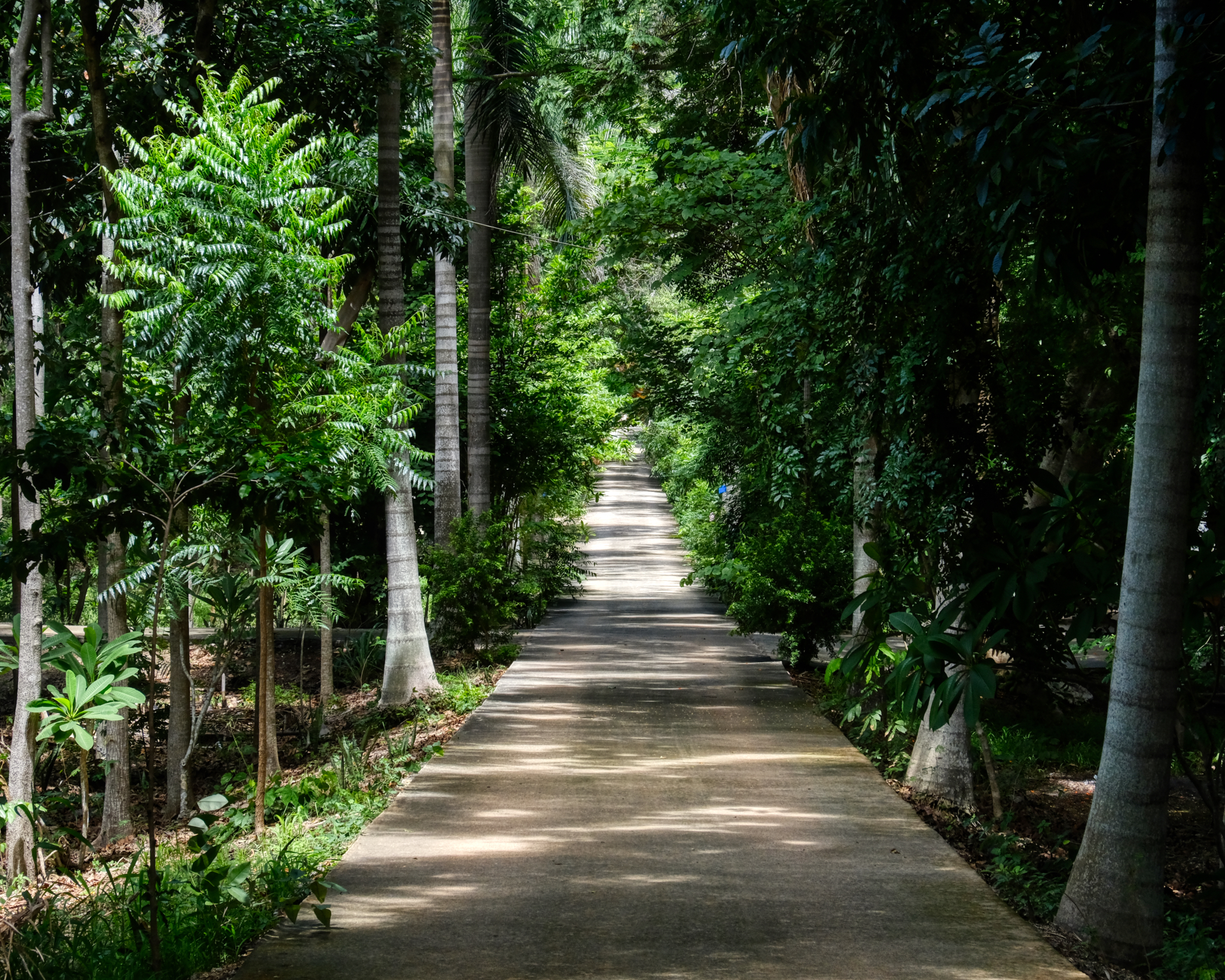
Khao Yai (literally, "large mountain" in the Thai language) is a region of Thailand about a three hour drive northeast of Bangkok. It is thought of as an area with a national park, mountains, and nature, although the mountains are really just tall hills. There is a lot to see in this part of rural Thailand . . . and one very special temple: Wat PA Phrom Prathan (last half of this entry).
 While my wife played golf with her golfing gang, I escaped to the small back roads. There are always Buddhist temples (wats) every 4-5 kilometers along almost every road in Thailand.
While my wife played golf with her golfing gang, I escaped to the small back roads. There are always Buddhist temples (wats) every 4-5 kilometers along almost every road in Thailand.
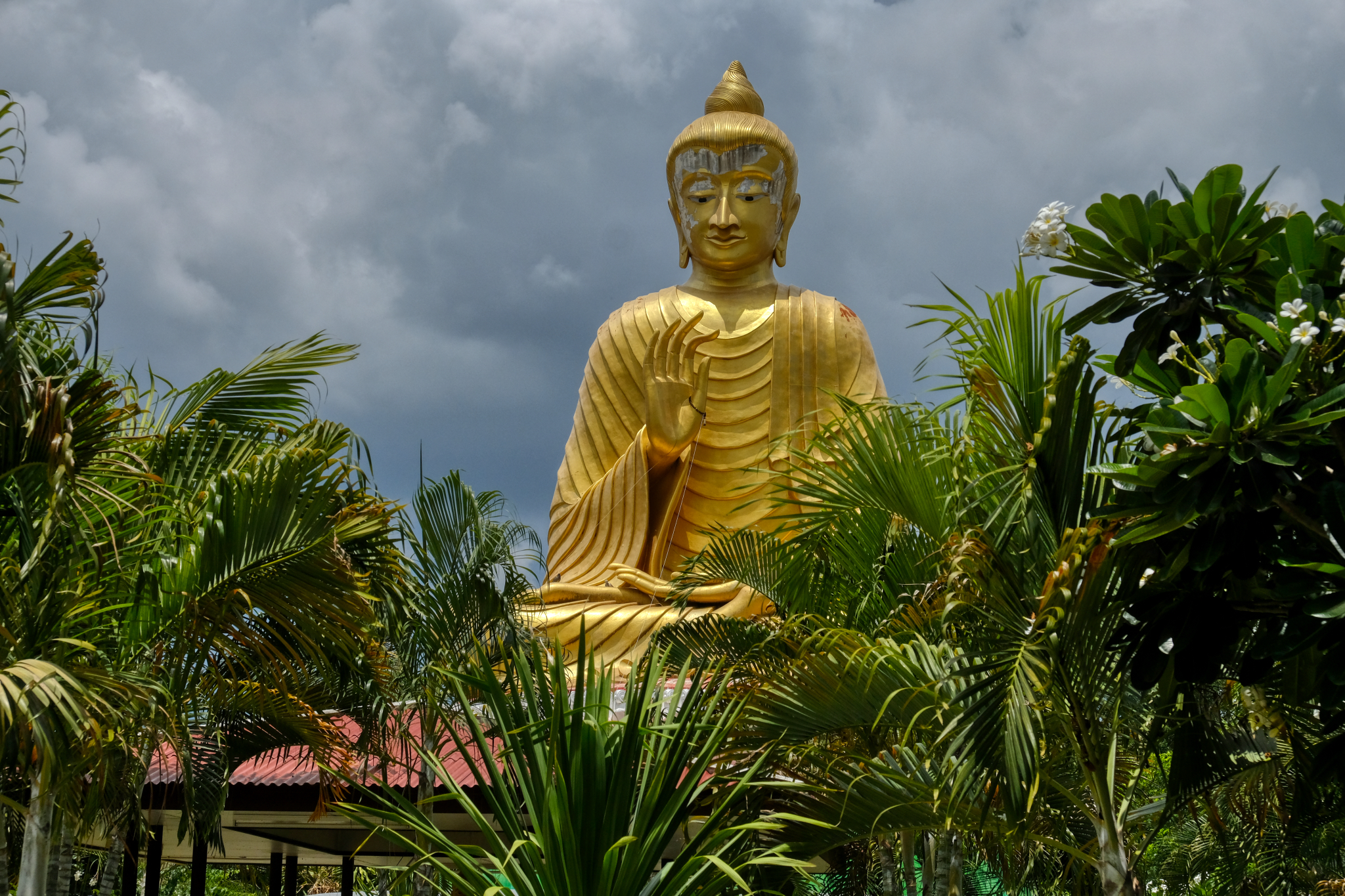 I stopped in at many of these roadside wats and walked around and took a few photos. I have lived in Thailand for a very long time and have been in literally many hundreds of these Thai wats.
I stopped in at many of these roadside wats and walked around and took a few photos. I have lived in Thailand for a very long time and have been in literally many hundreds of these Thai wats.
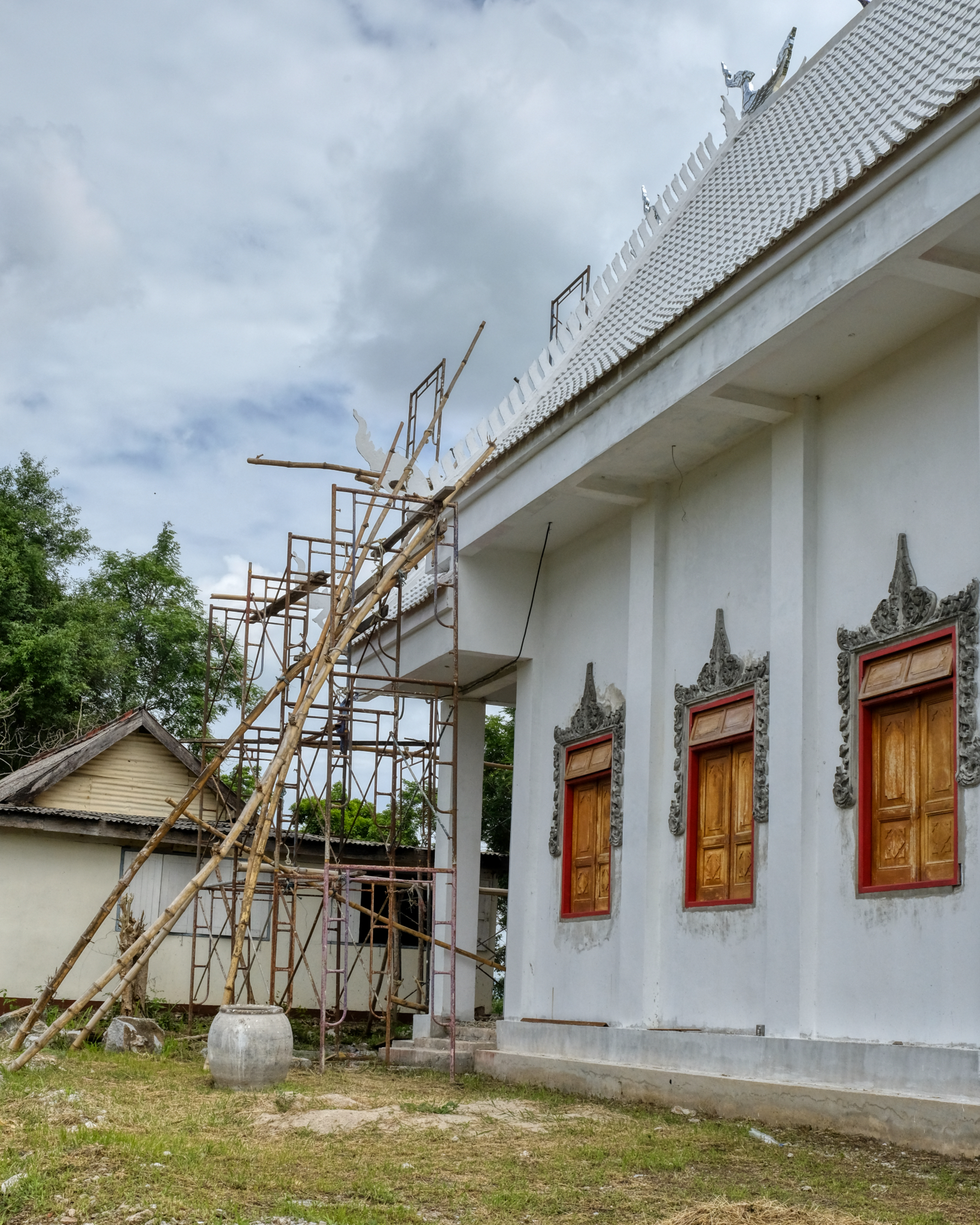 Rural Thai wats can be very similar, but there are always surprises and idiosyncrasies. This wat was in the process of building a new temple building.
Rural Thai wats can be very similar, but there are always surprises and idiosyncrasies. This wat was in the process of building a new temple building.
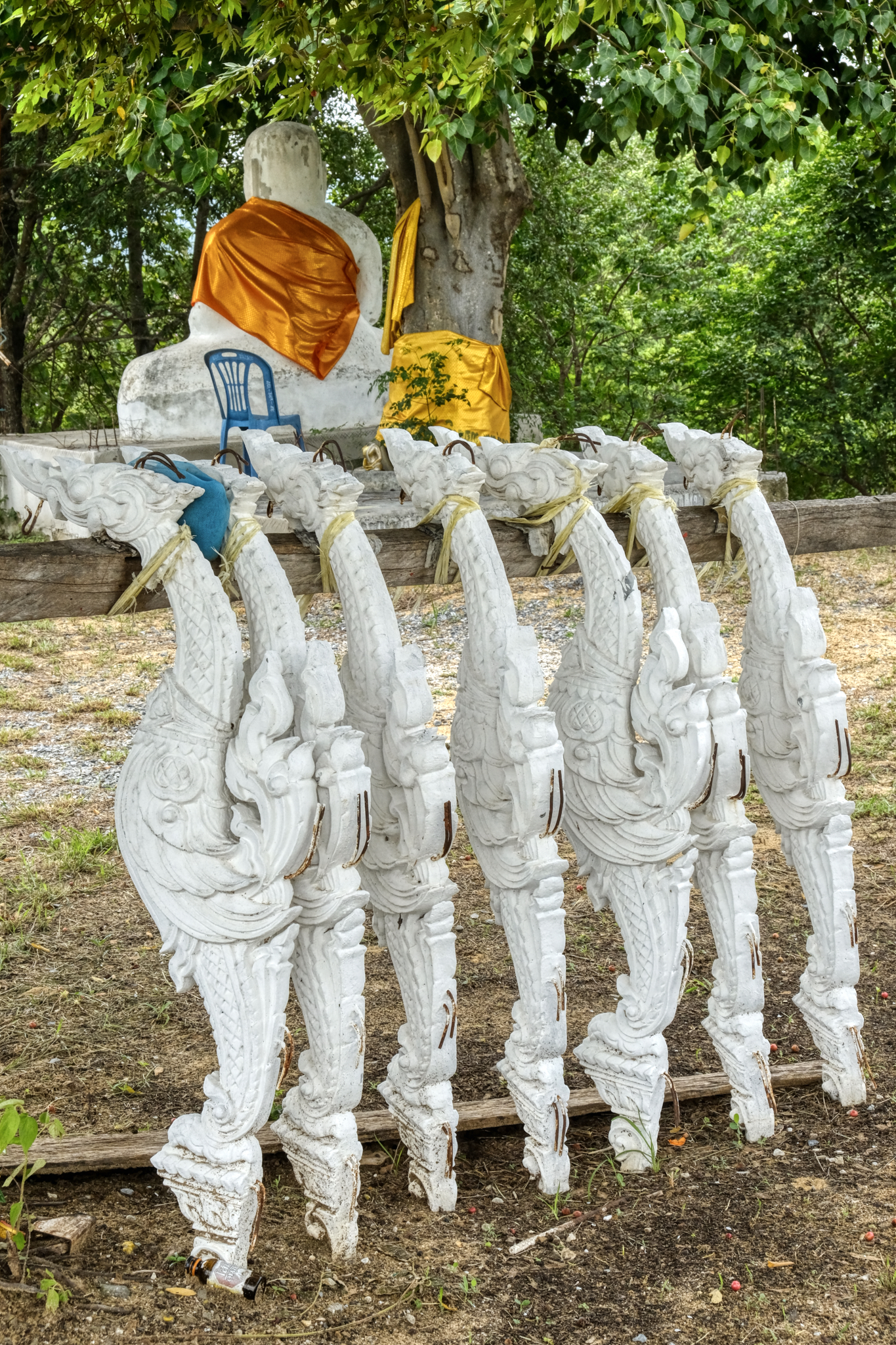 Pre cast decor waiting too be added to the exterior of the new wat structure.
Pre cast decor waiting too be added to the exterior of the new wat structure.
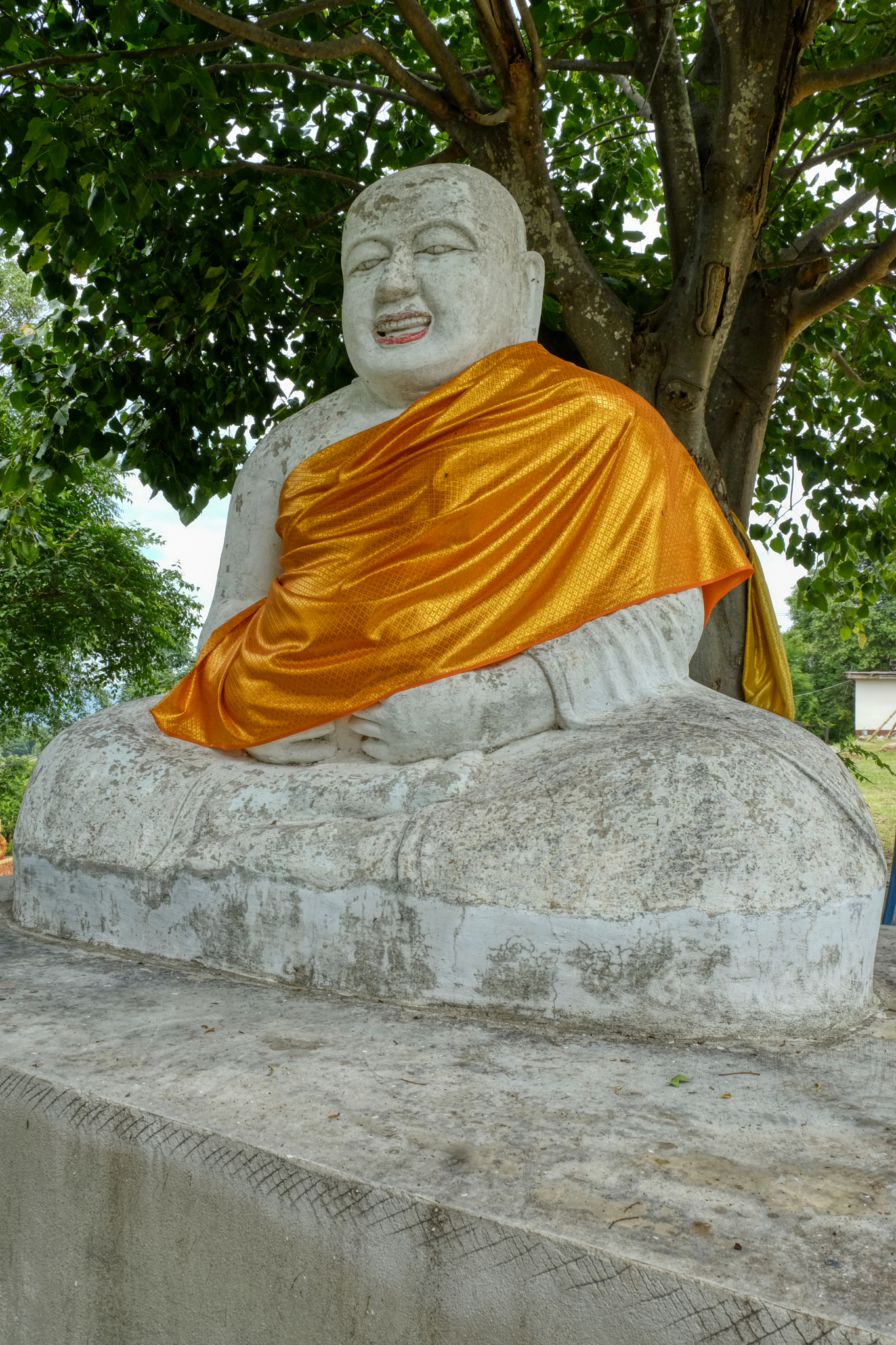 This Buddha image was very unusual for Thailand! It seems more Japanese . . .
This Buddha image was very unusual for Thailand! It seems more Japanese . . .
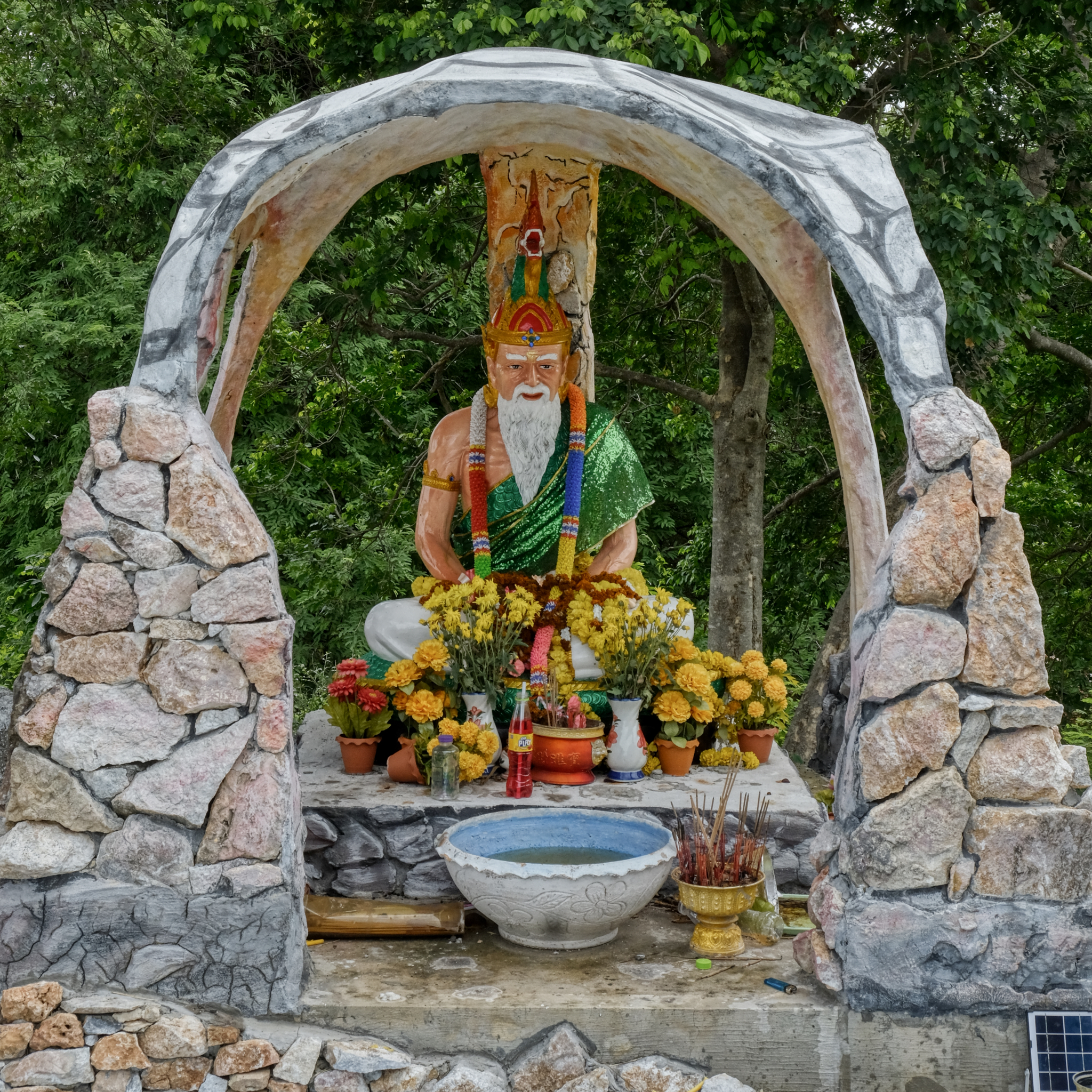 You have to remember that what is found inside a Buddhist temple was put there by the donors, not necessarily by monks who live there. This is a grotto dedicated to a Hindu guru. It is not uncommon to see Hindu gods and iconography in Thai wats.
You have to remember that what is found inside a Buddhist temple was put there by the donors, not necessarily by monks who live there. This is a grotto dedicated to a Hindu guru. It is not uncommon to see Hindu gods and iconography in Thai wats.
 Having been a sponsor of the construction of a wat myself, I am always excited to see a new wat being built . . . I especially enjoy the interiors . . . . a wonderfully naive Buddha statue awaiting a gold leaf covering, I assume.
Having been a sponsor of the construction of a wat myself, I am always excited to see a new wat being built . . . I especially enjoy the interiors . . . . a wonderfully naive Buddha statue awaiting a gold leaf covering, I assume.
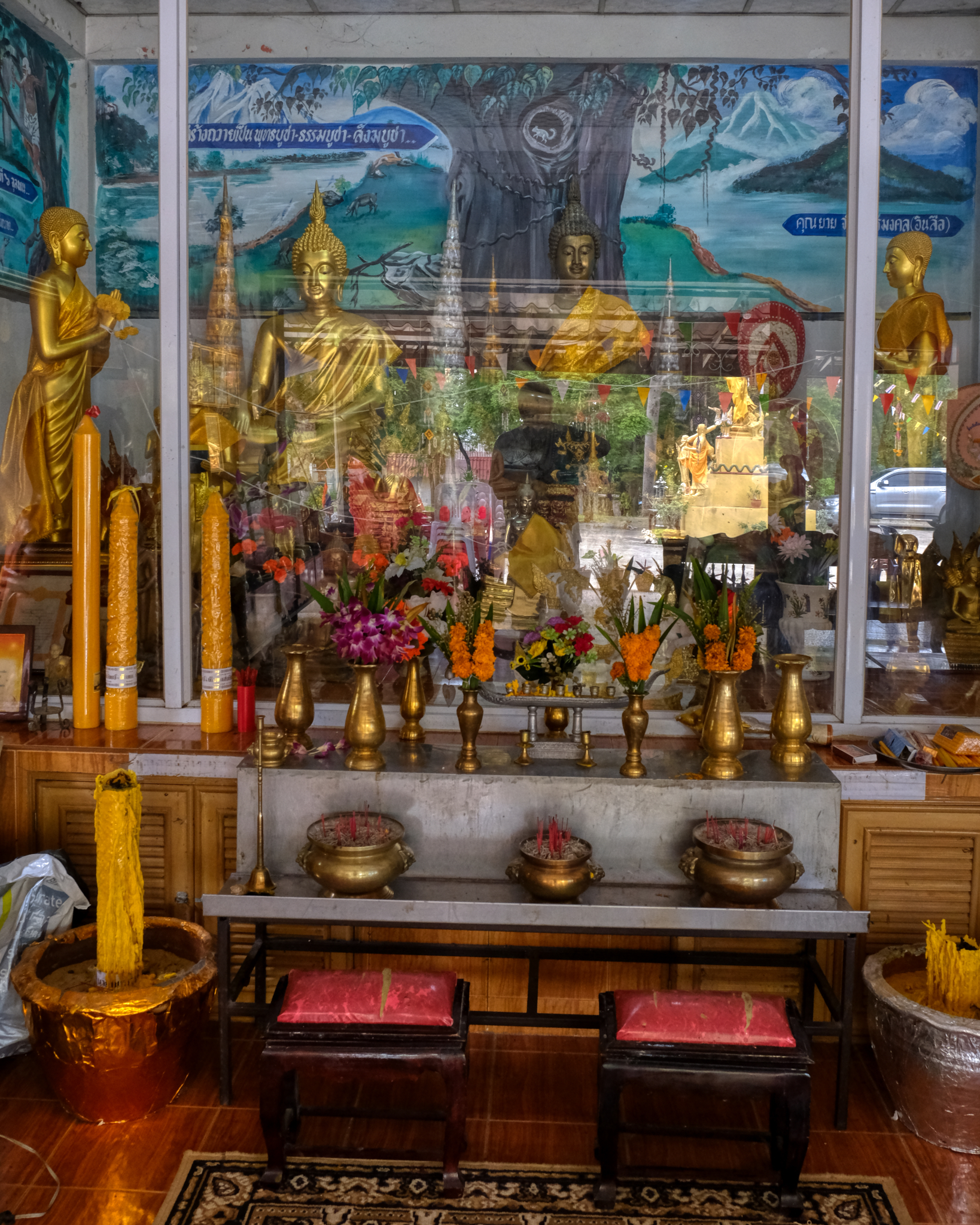 The wat did not have a proper temple building. This is the altar the new building will replace . . . just a covered portico.
The wat did not have a proper temple building. This is the altar the new building will replace . . . just a covered portico.
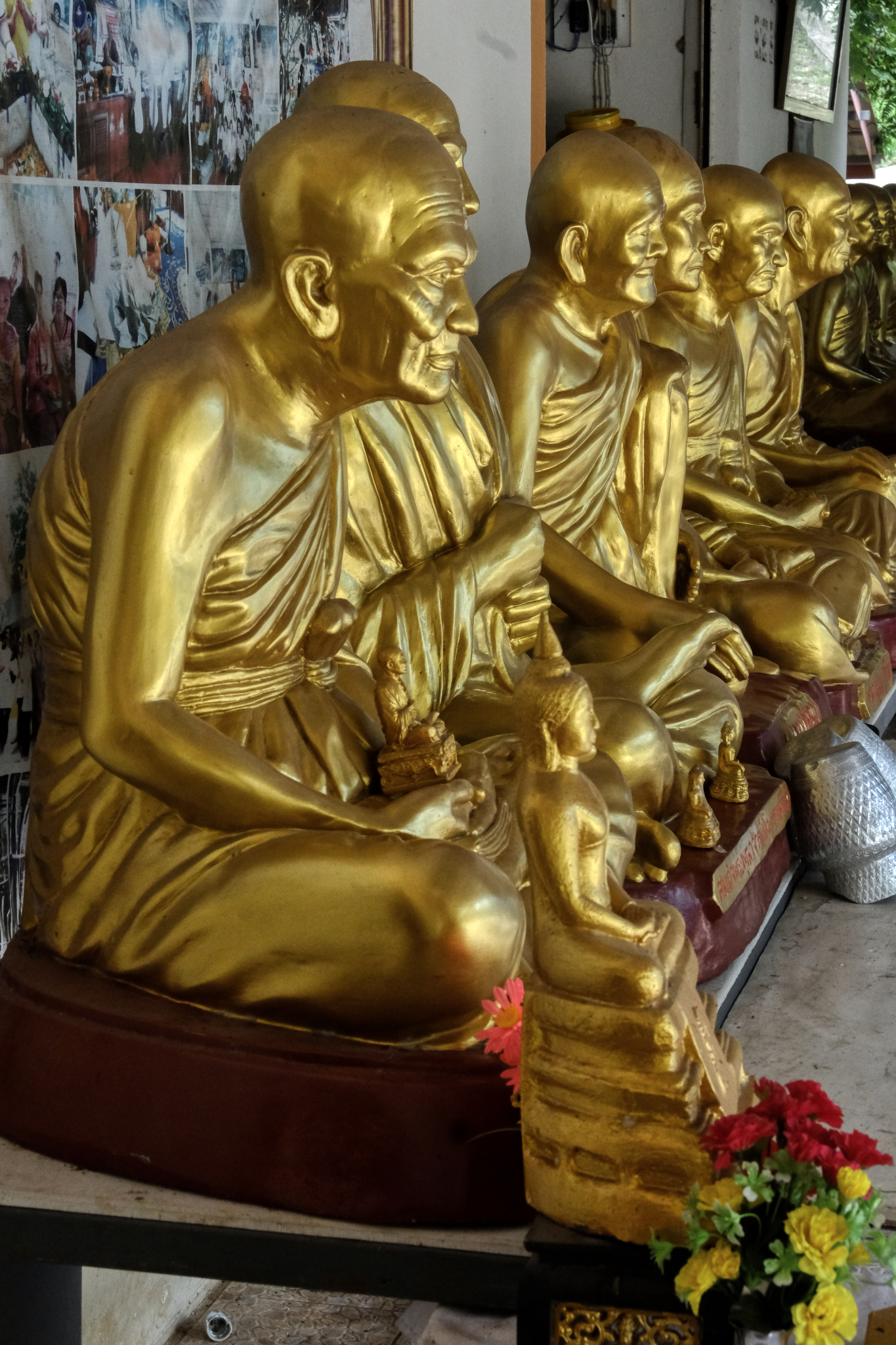 This wat had a line of gilded revered monk statues. Very powerful: These Guys Made It All The Way And You Can Too!
This wat had a line of gilded revered monk statues. Very powerful: These Guys Made It All The Way And You Can Too!
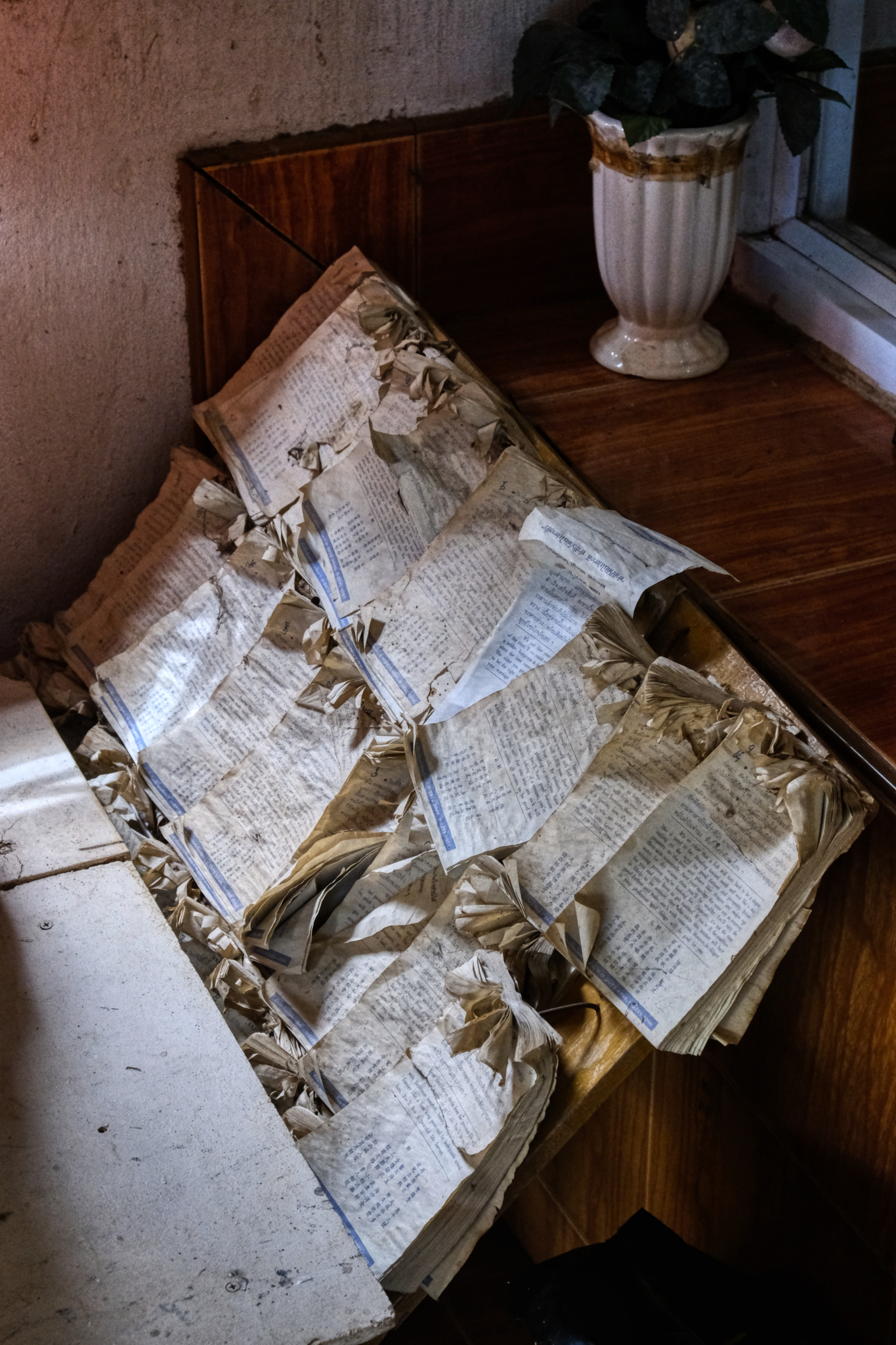 There are non-Buddhist, but old spiritual practices to be found in Thai Buddhist temples. These are for use in a numerological system for fortune telling. Beautifully weathered.
There are non-Buddhist, but old spiritual practices to be found in Thai Buddhist temples. These are for use in a numerological system for fortune telling. Beautifully weathered.
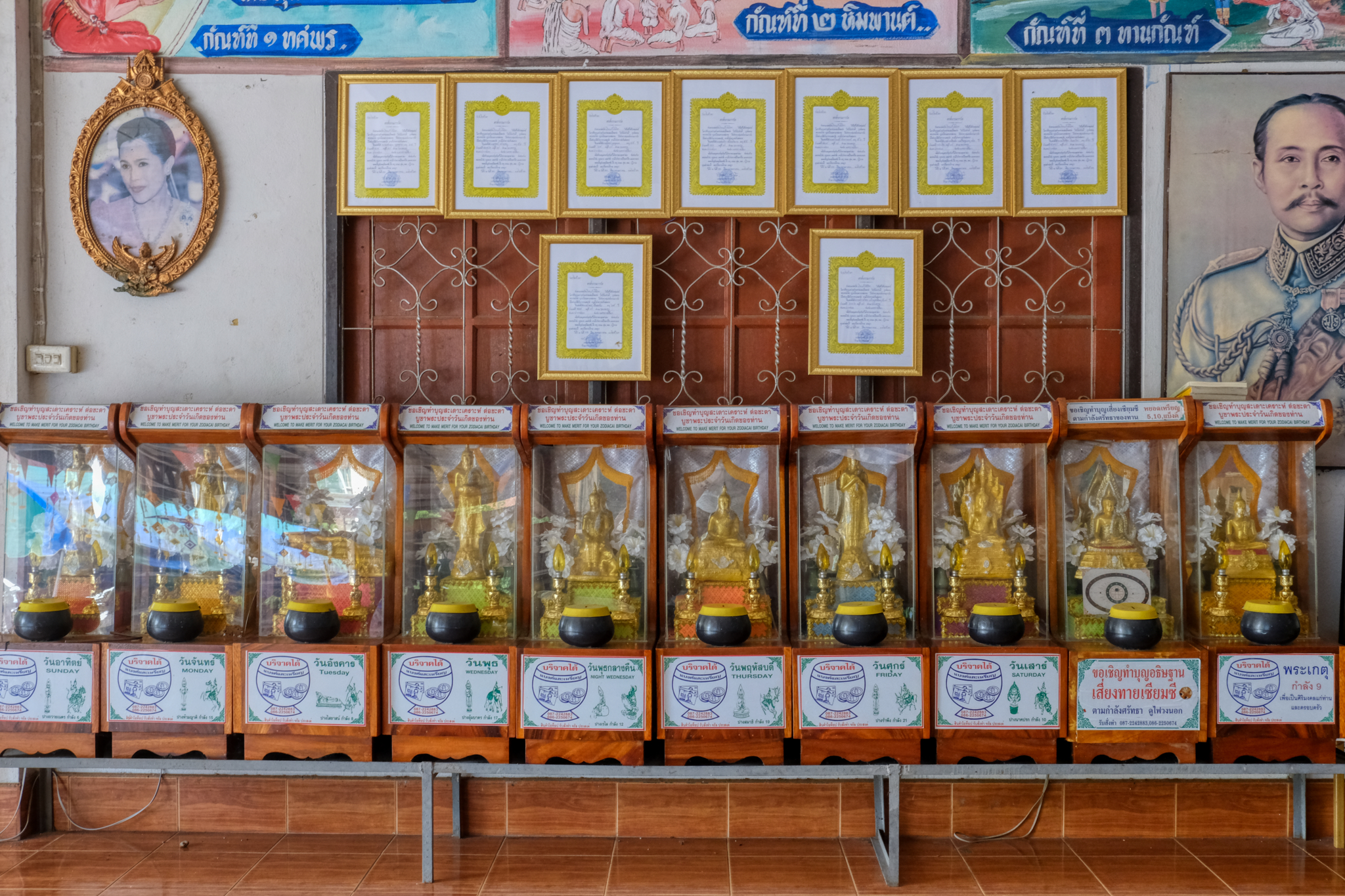 "Welcome to make merit for your Zodiacal Birthday" . . . . and a little something for the days of the week too!
"Welcome to make merit for your Zodiacal Birthday" . . . . and a little something for the days of the week too!
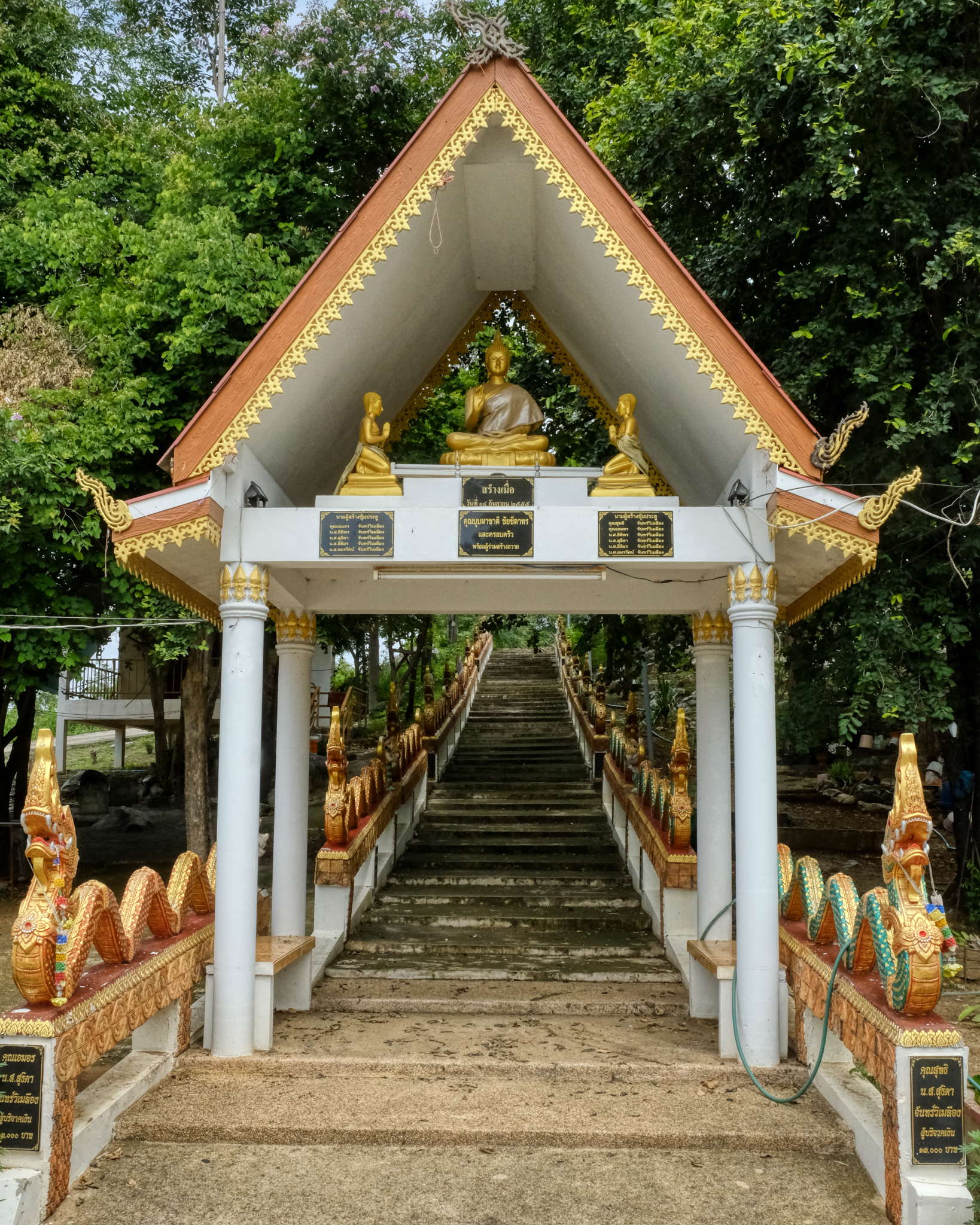 The hillside wat had a beautiful staircase up to the new wat location.
The hillside wat had a beautiful staircase up to the new wat location.
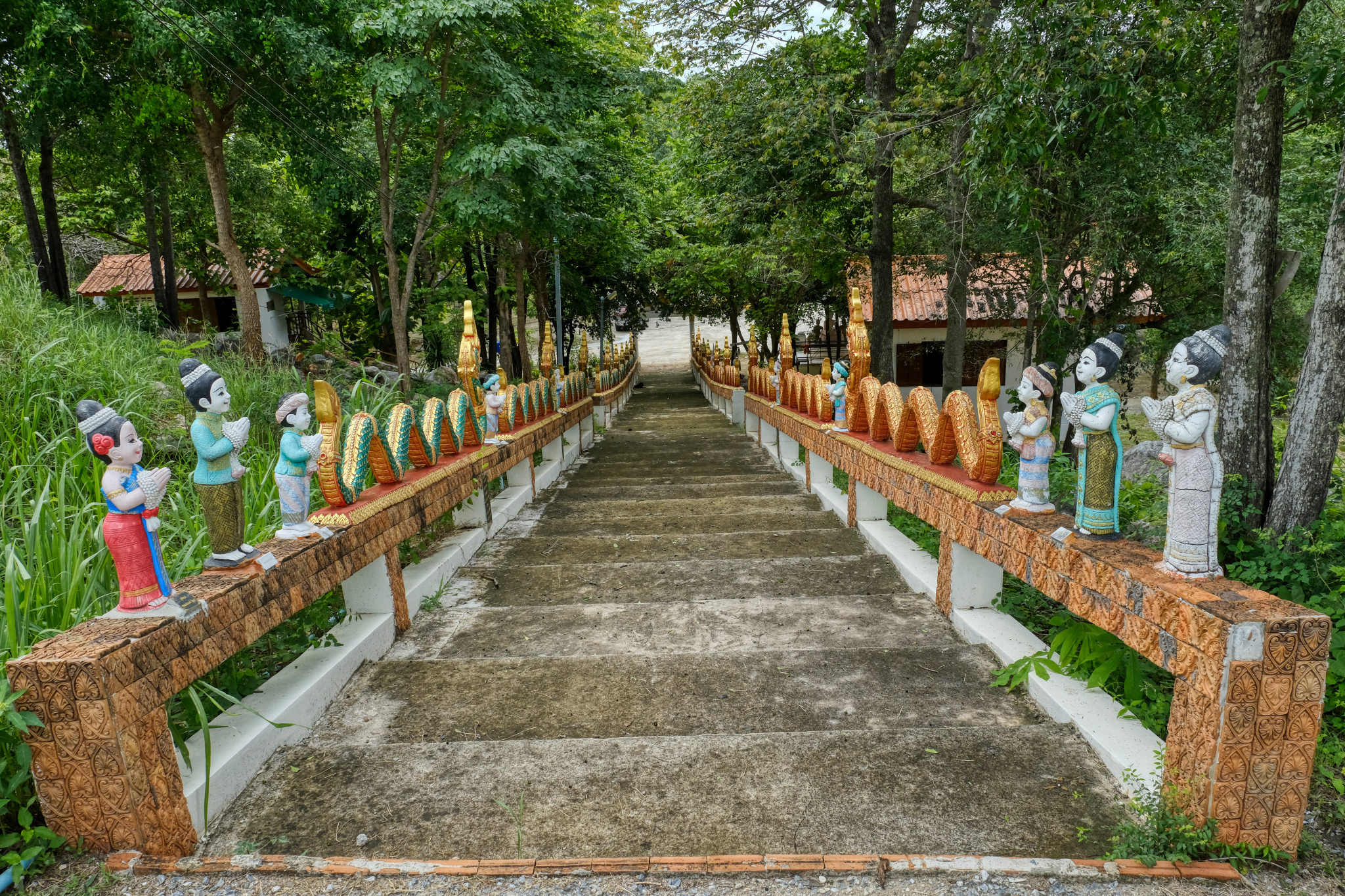 The same staircase looking down.
The same staircase looking down.
 The monks live in a variety of accommodation: sometimes they have their own 'hut' or cabin, like this one. Sometimes these can be very nice, and sometimes very austere dormitories.
The monks live in a variety of accommodation: sometimes they have their own 'hut' or cabin, like this one. Sometimes these can be very nice, and sometimes very austere dormitories.
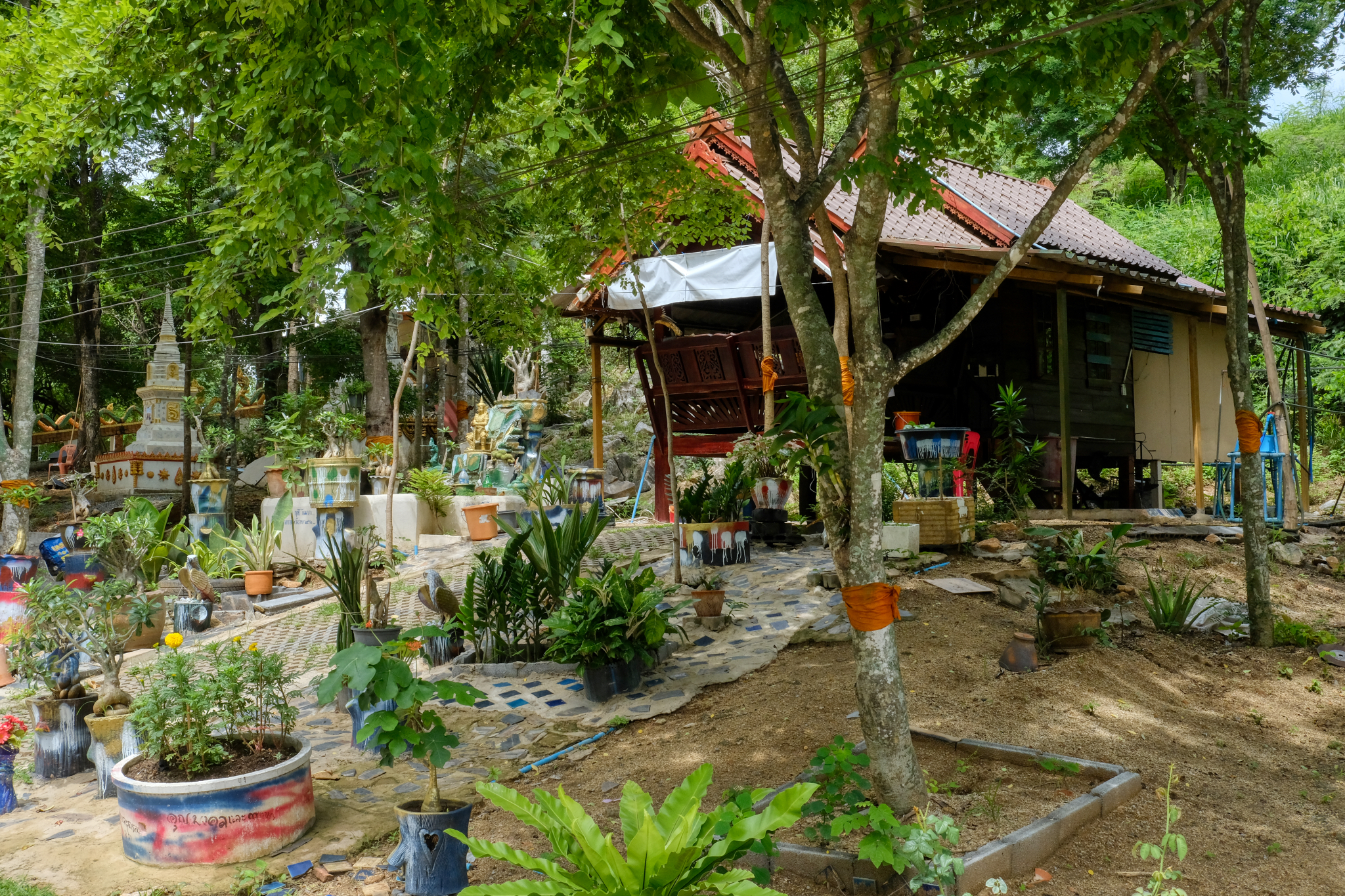 This monk keeps an interesting and cluttered front yard!
This monk keeps an interesting and cluttered front yard!
 I found this wonderful altar in a sala out in a wooded area of the wat.
I found this wonderful altar in a sala out in a wooded area of the wat.
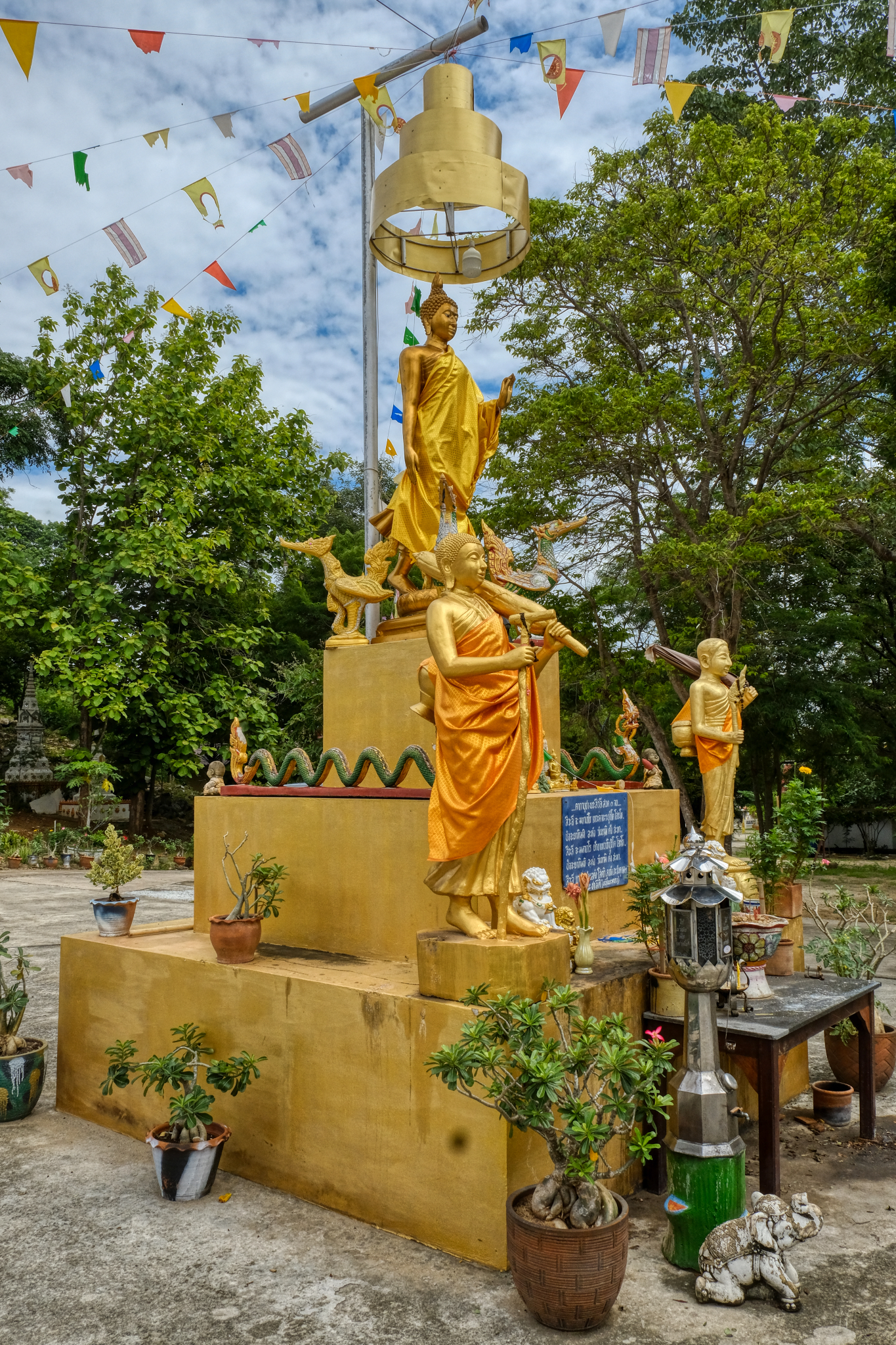 There always some amazing things to see on the grounds of Thai Buddhist wats!
There always some amazing things to see on the grounds of Thai Buddhist wats!
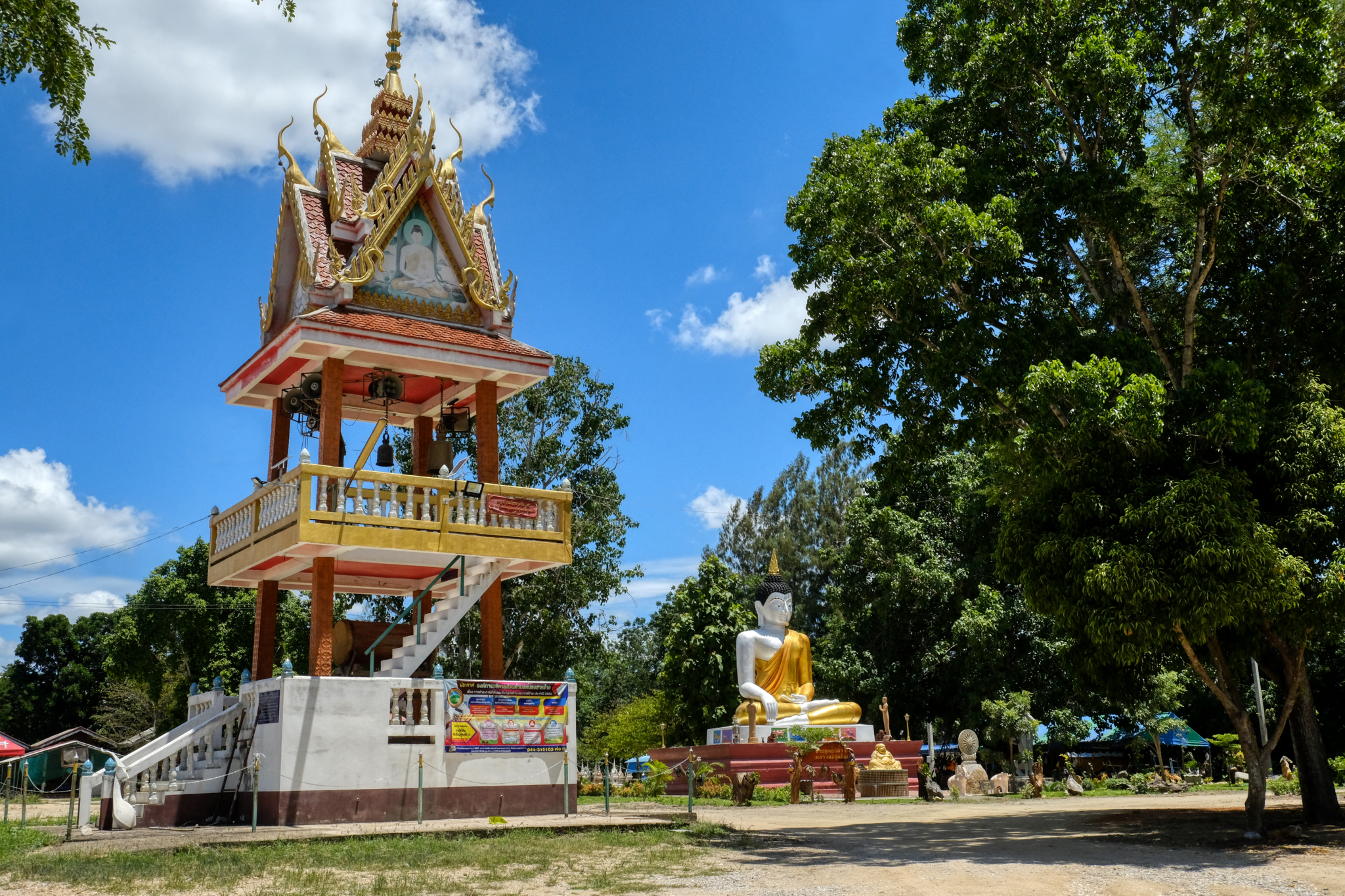 At another wat along a country lane . . . a bell and drum tower and very large outdoor Buddha.
At another wat along a country lane . . . a bell and drum tower and very large outdoor Buddha.
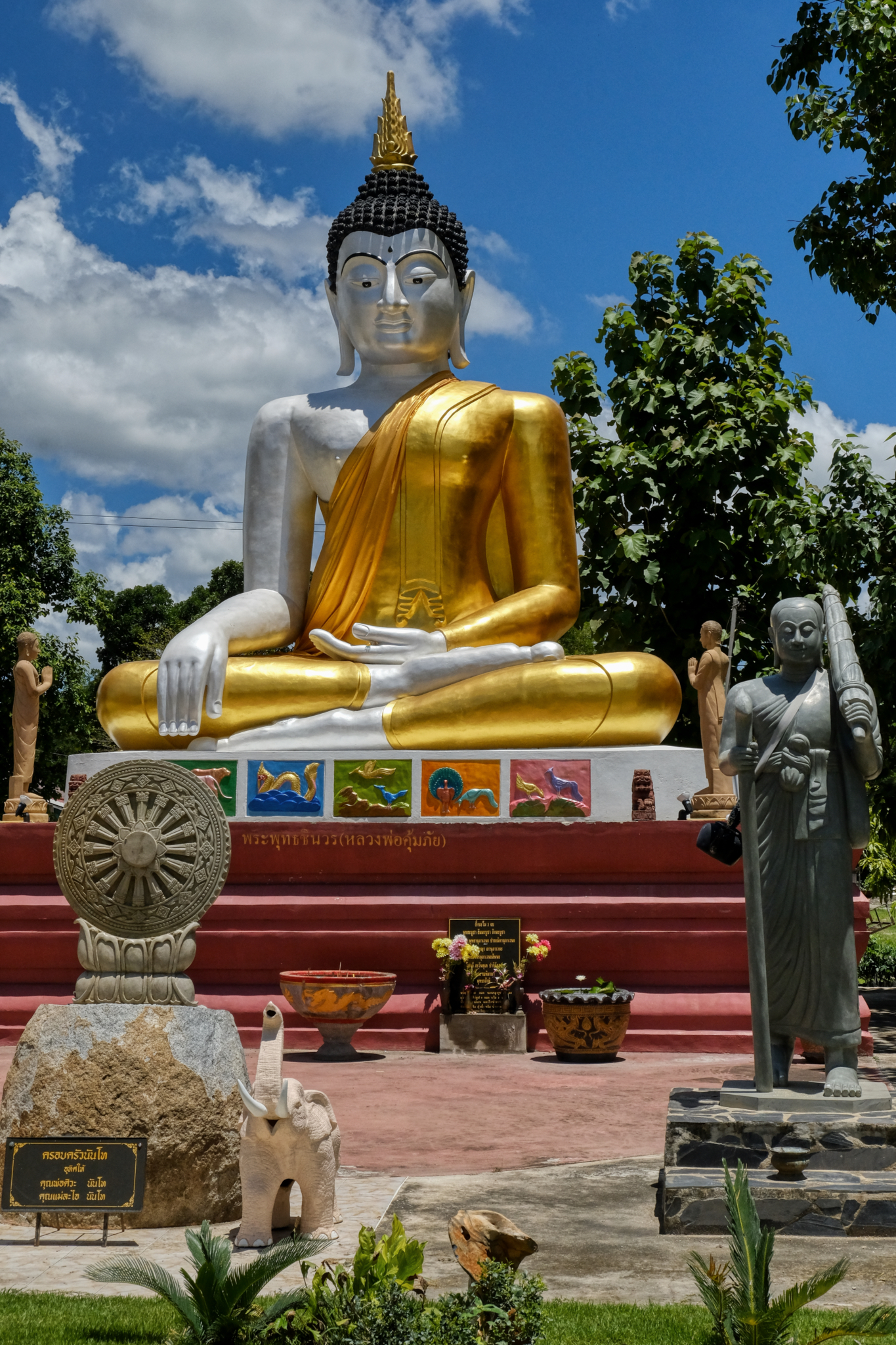 Such a serious-looking Buddha . . .
Such a serious-looking Buddha . . .
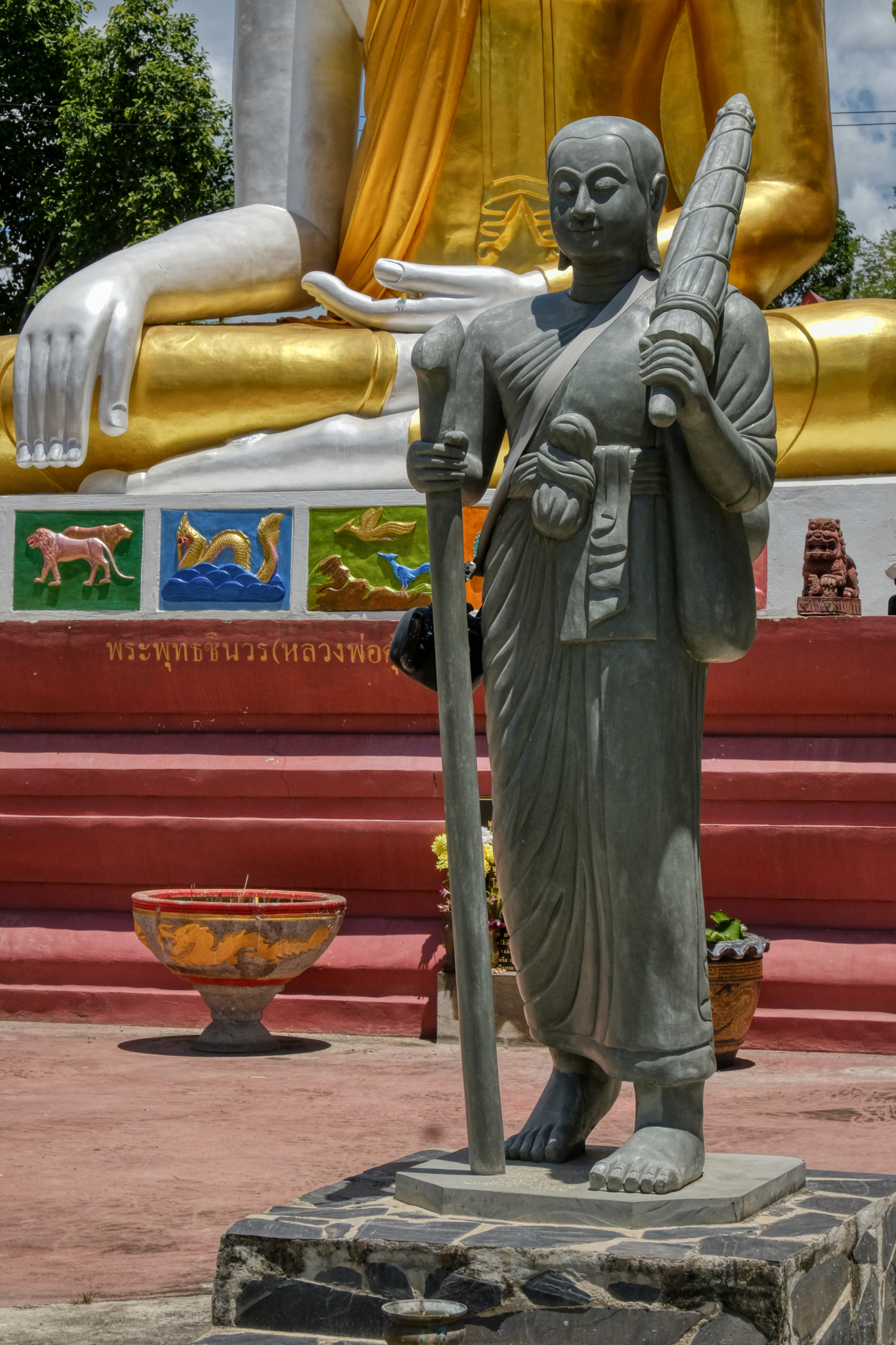 I loved this statue of the Buddha as a wondering monk . . . which he was.
I loved this statue of the Buddha as a wondering monk . . . which he was.
 Sometimes my small rural lanes would come to a dead-end . . . as it did here in a farmers field.
Sometimes my small rural lanes would come to a dead-end . . . as it did here in a farmers field.
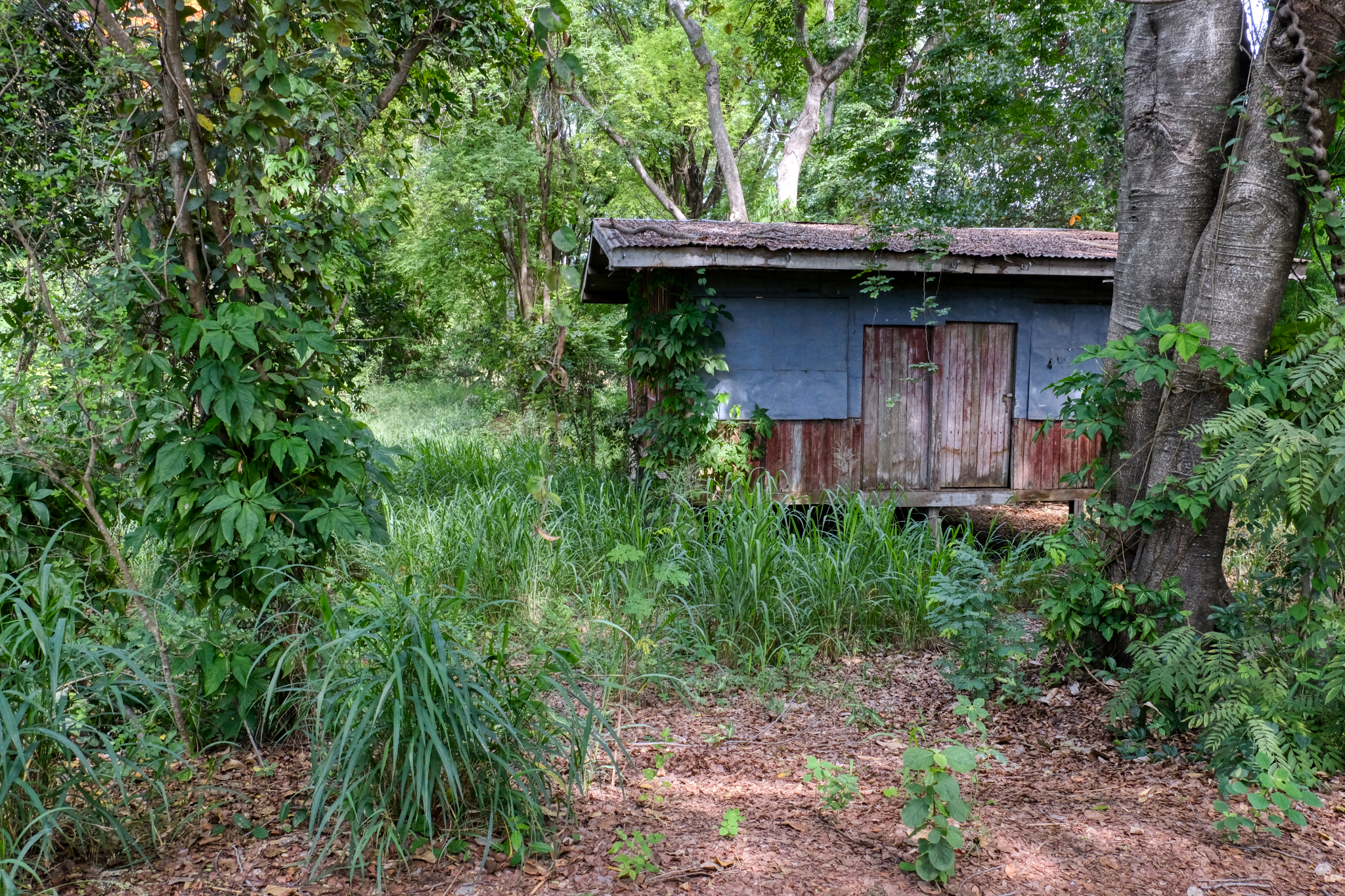 Many small work sheds dot the agricultural landscape in this part of Thailand.
Many small work sheds dot the agricultural landscape in this part of Thailand.
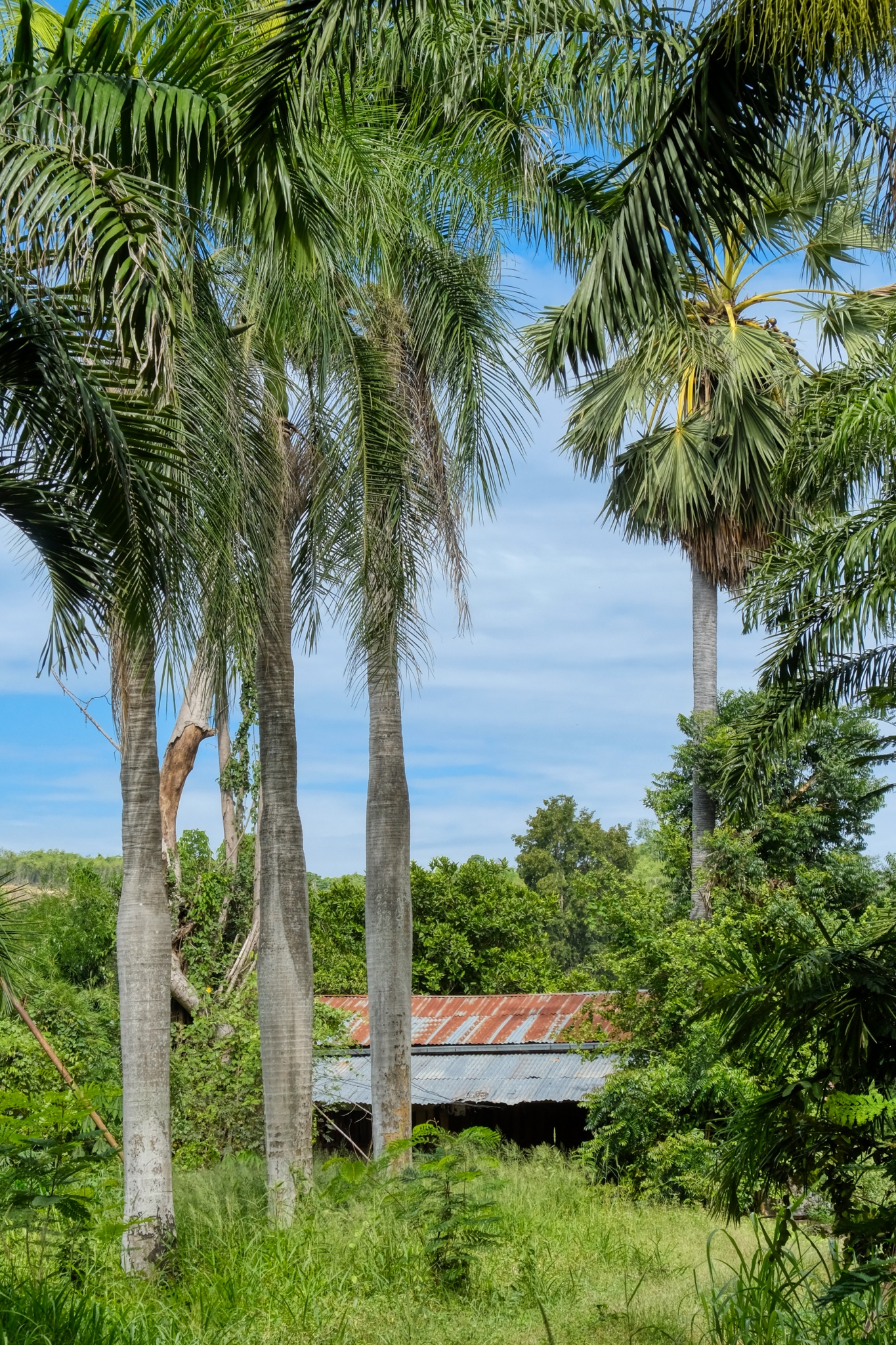 It was a beautiful day to be out rambling in the Thai countryside.
It was a beautiful day to be out rambling in the Thai countryside.
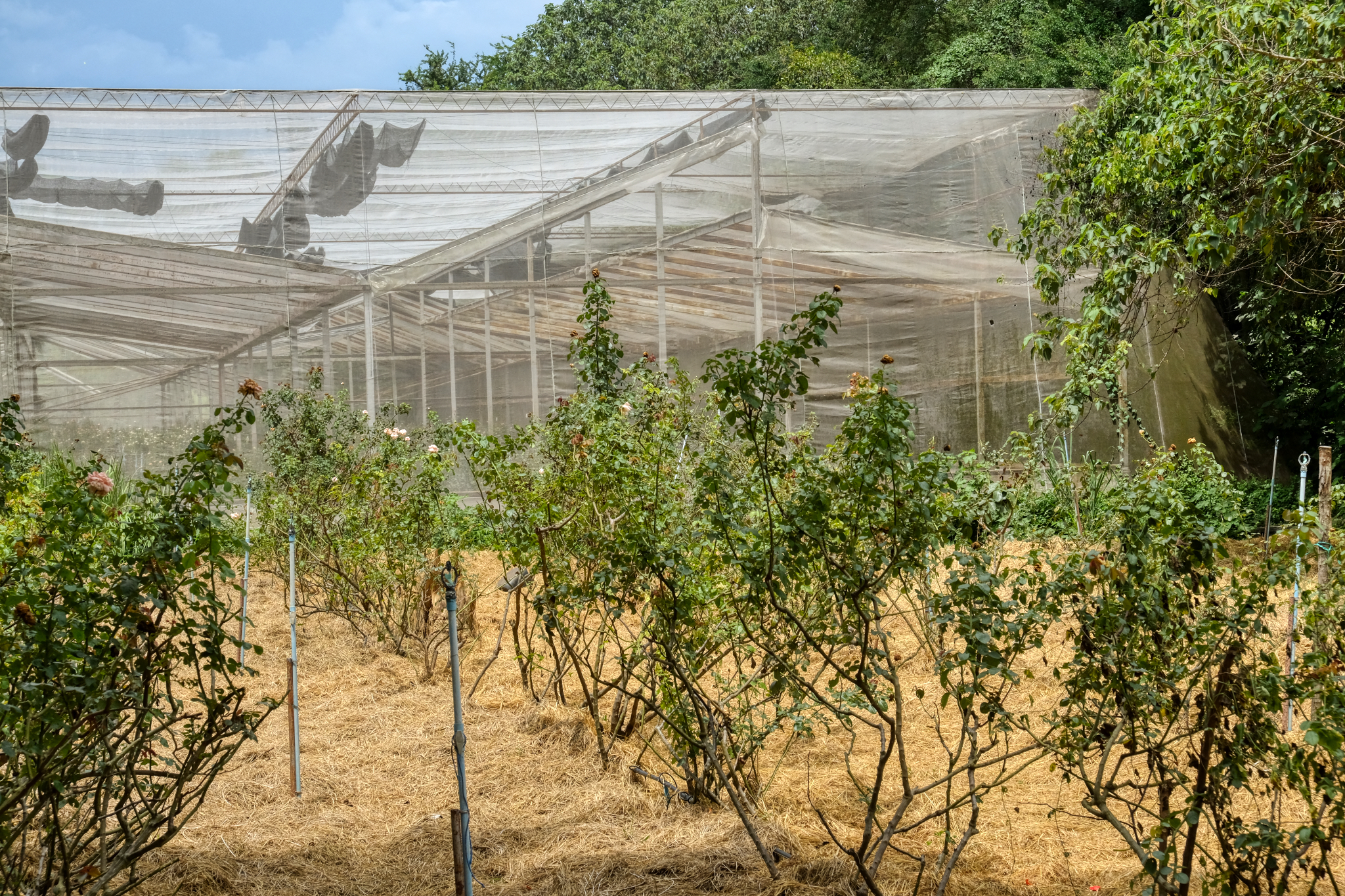 I stumbled upon this big greenhouse operation raising roses. Big agribusiness out in the deep forest.
I stumbled upon this big greenhouse operation raising roses. Big agribusiness out in the deep forest.
 A bamboo pump house.
A bamboo pump house.
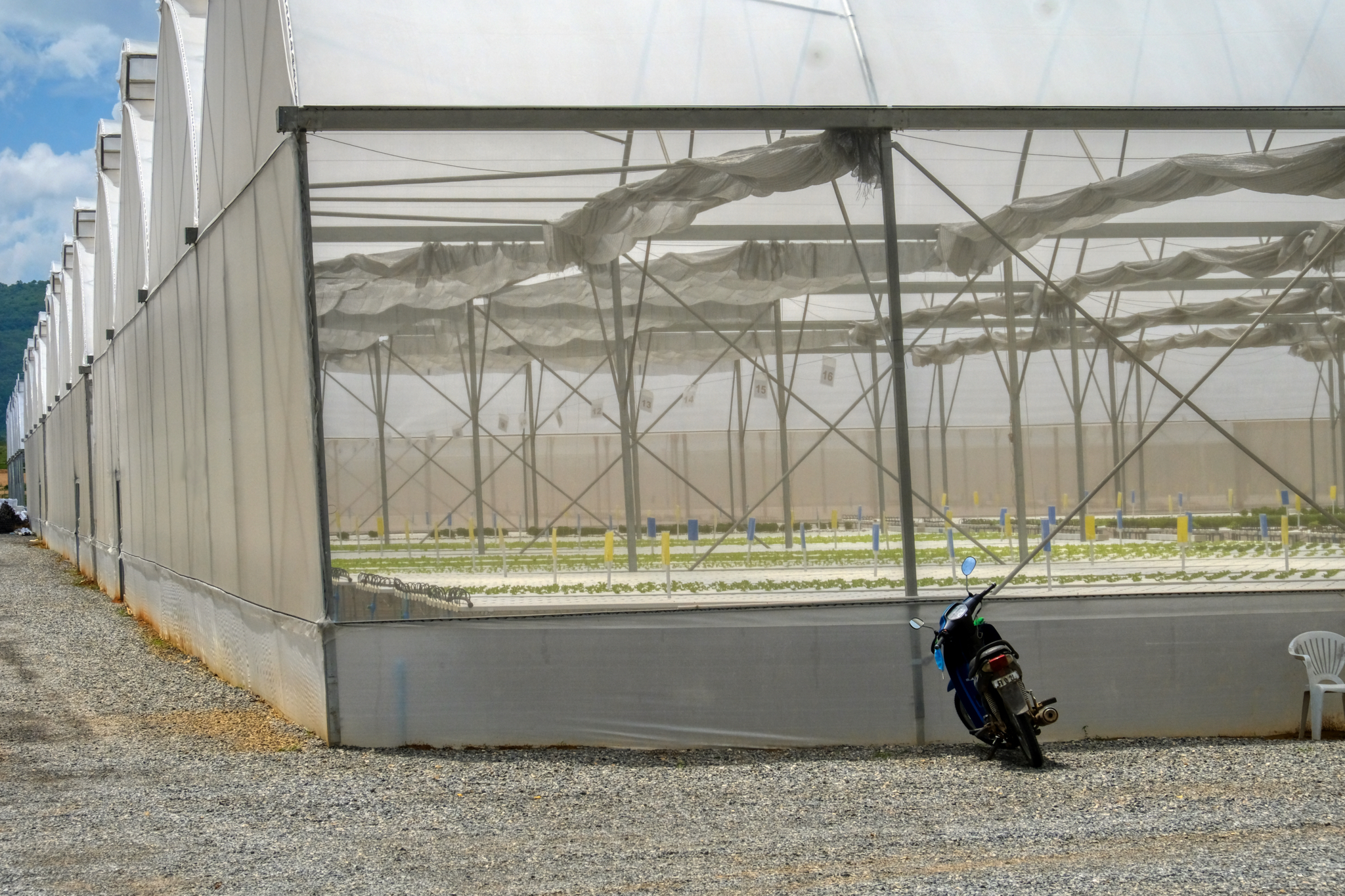 More rural agribusiness . . . lettuce.
More rural agribusiness . . . lettuce.
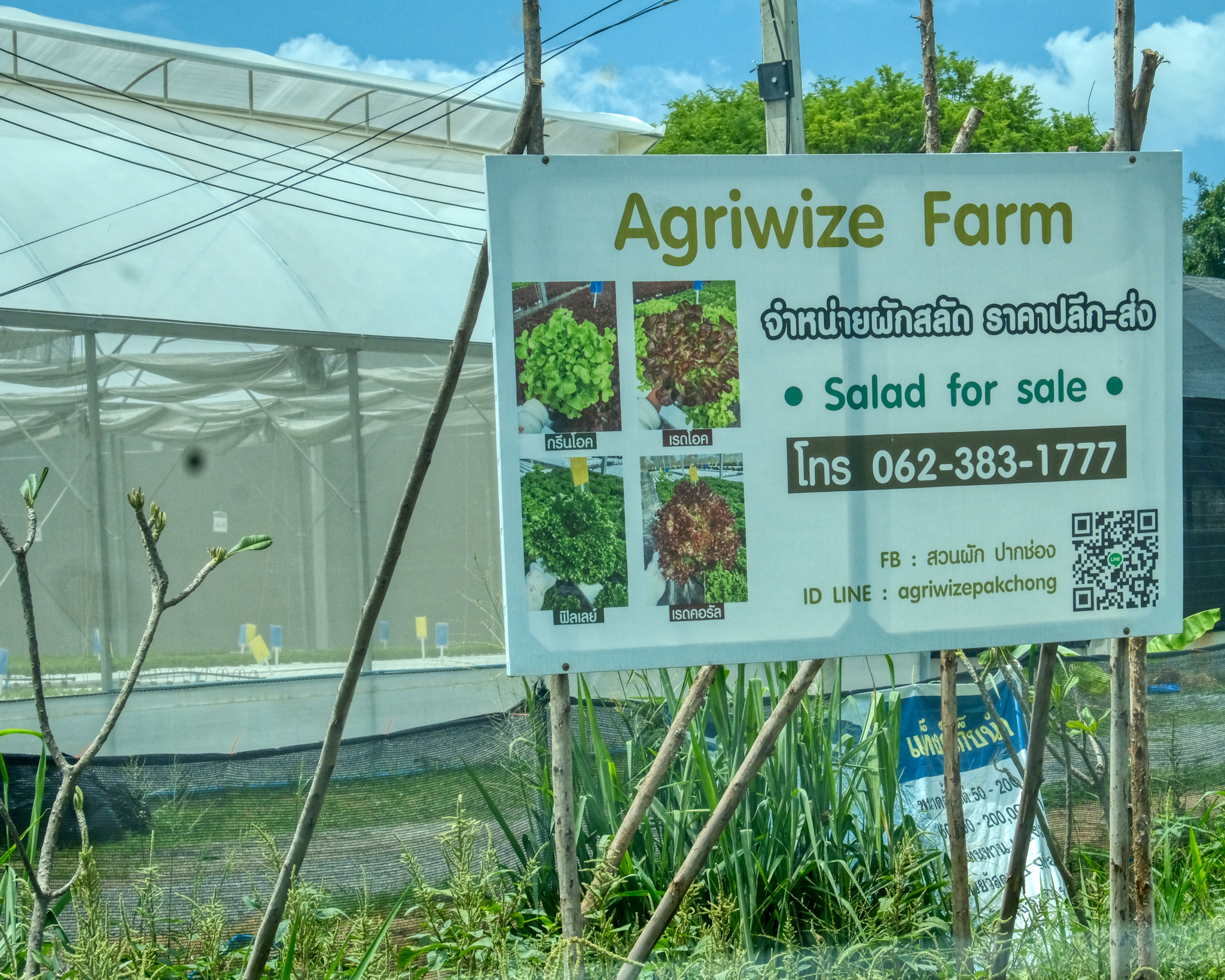 Being only 3 hours to a city of 13 million people, this kind of big agribusiness was to be expected.
Being only 3 hours to a city of 13 million people, this kind of big agribusiness was to be expected.
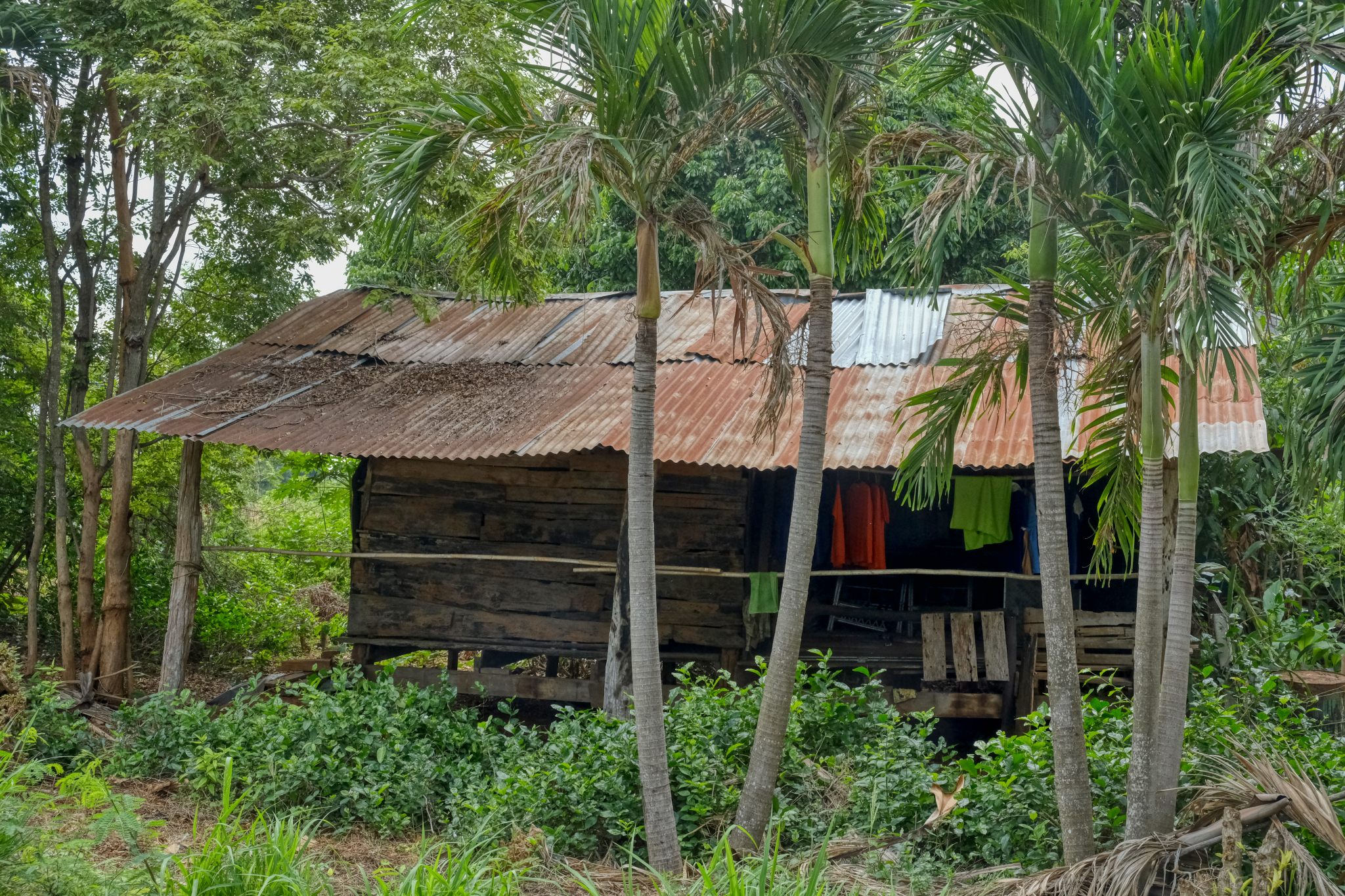 This old teakwood shack was occupied . . . rural splendor?
This old teakwood shack was occupied . . . rural splendor?
-----------------------------------------------------------------------------------------------------------------
WAT PA PHROM PRATHAN
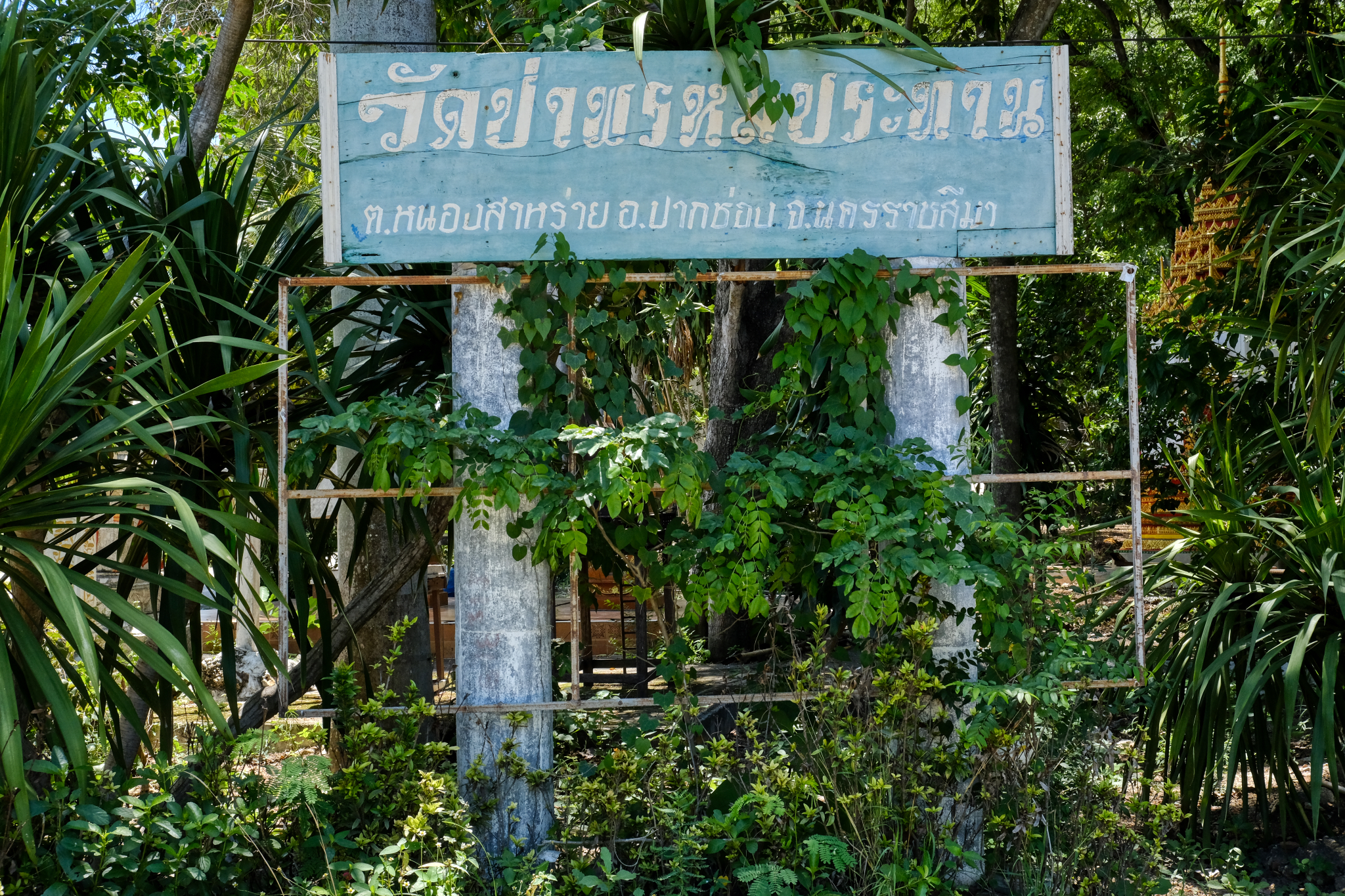 This small sign caught my eye . . . It must be a wat . . .
This small sign caught my eye . . . It must be a wat . . .
 While driving into the wat grounds I did not notice anything unusual at first.
While driving into the wat grounds I did not notice anything unusual at first.
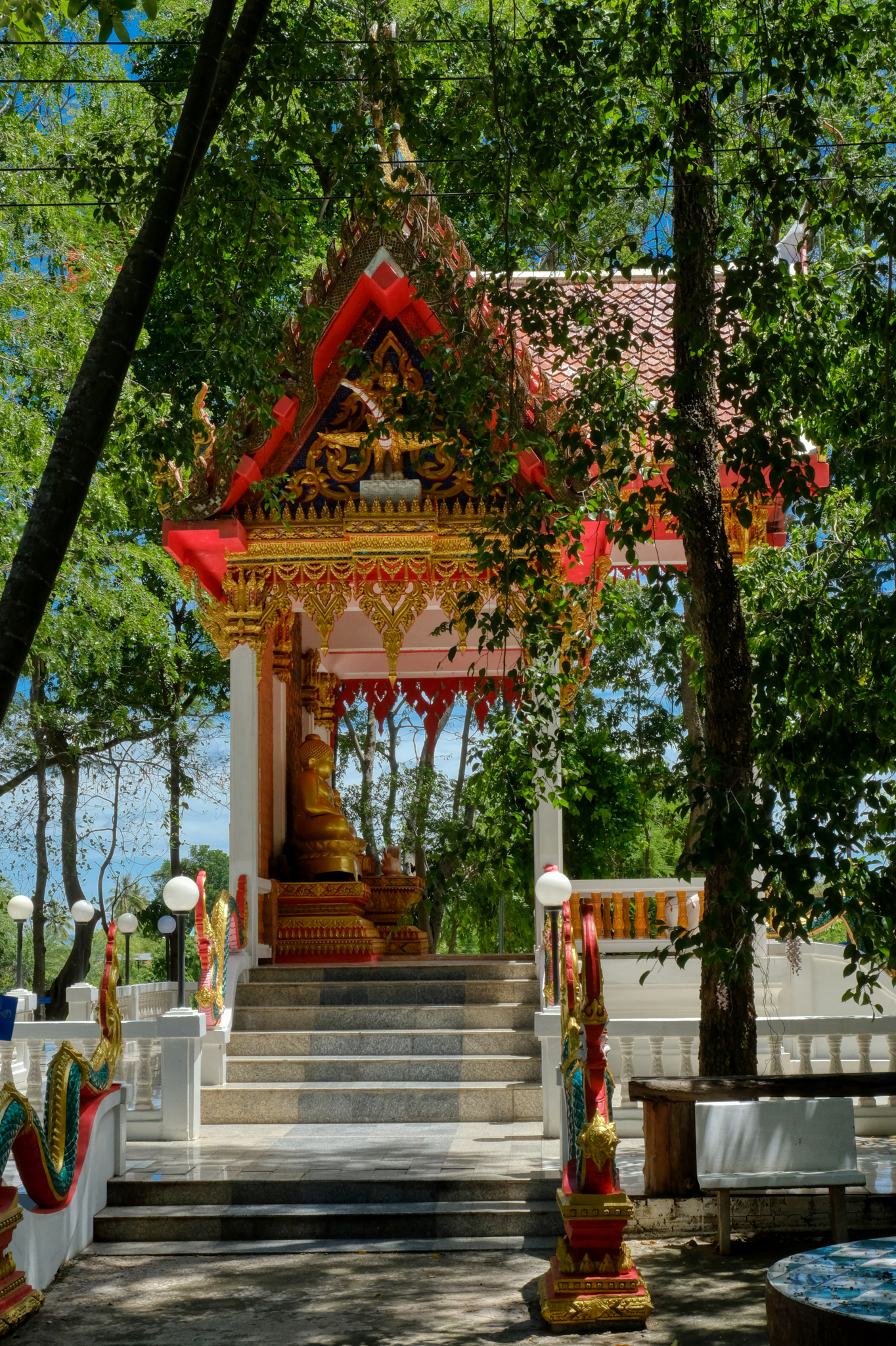 For such a deeply rural wat in a forested area, the salas and monuments seemed especially wonderful.
For such a deeply rural wat in a forested area, the salas and monuments seemed especially wonderful.
 Such a wonderful Buddha sala . . .
Such a wonderful Buddha sala . . .
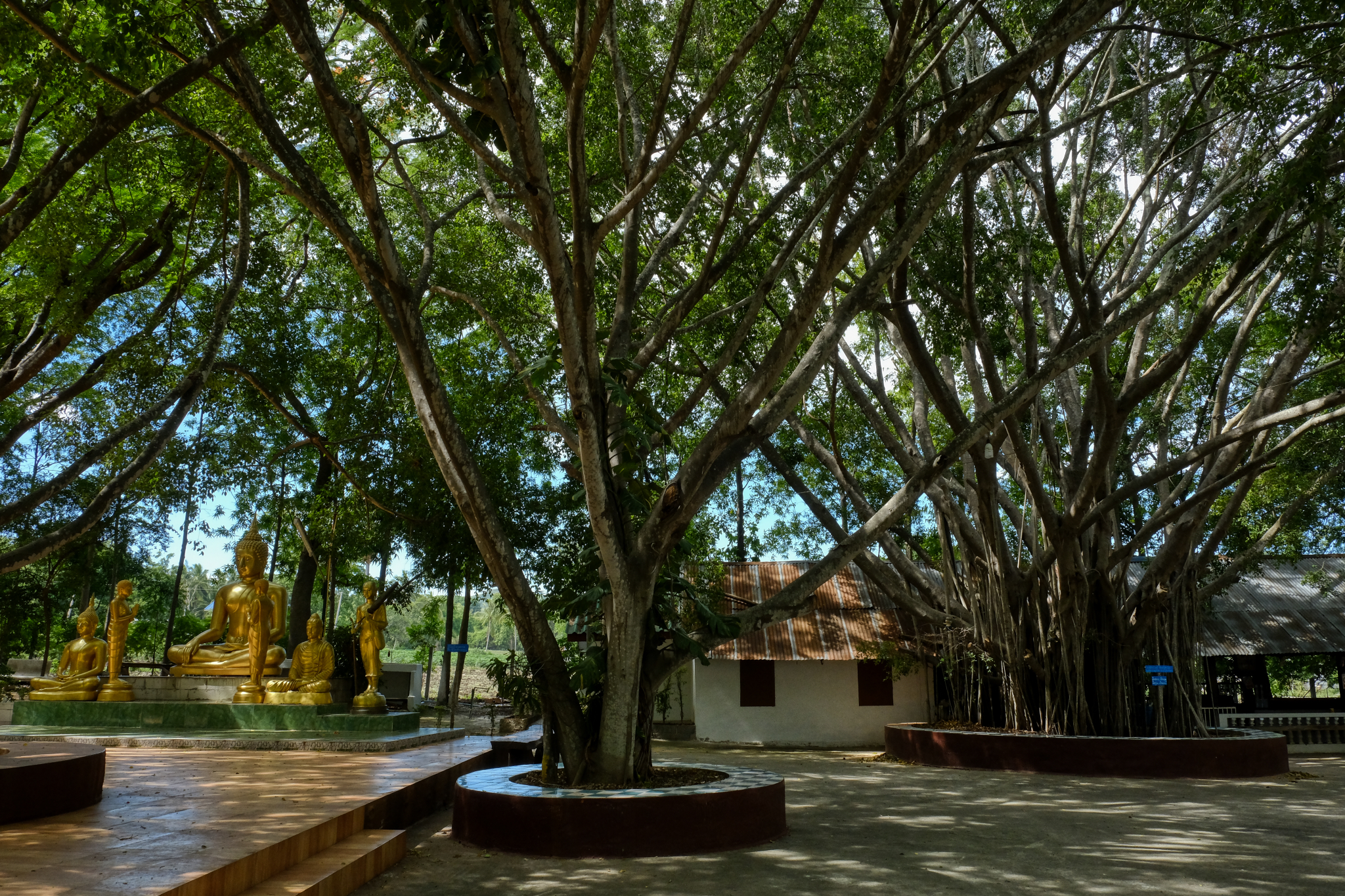 I found a place to park and as I stepped out of the car this is what I saw! Remarkable!
I found a place to park and as I stepped out of the car this is what I saw! Remarkable!
 There was a powerful spiritual presence in this place.
There was a powerful spiritual presence in this place.
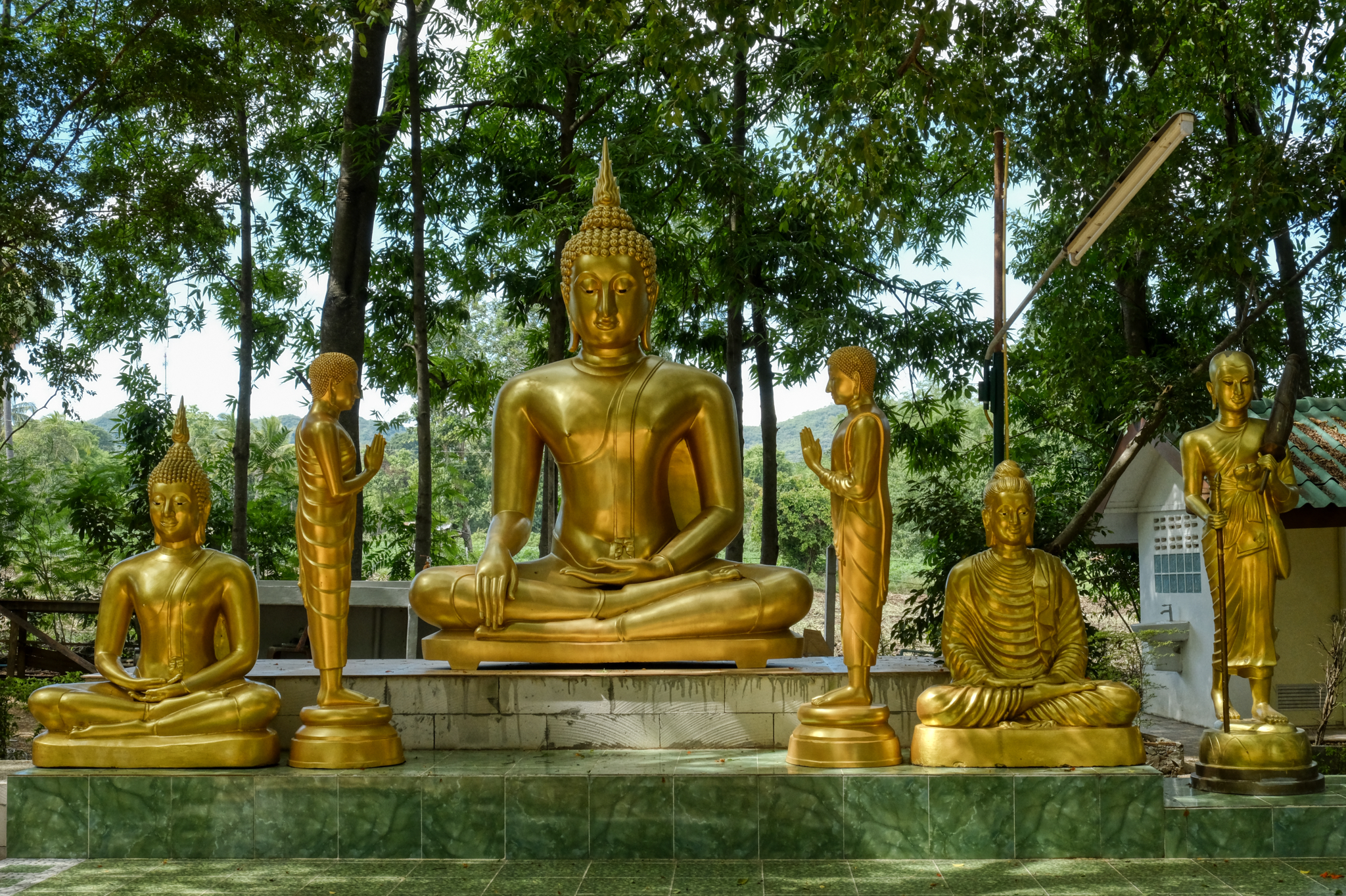 I sat here for quite awhile . . . and lost myself . . .
I sat here for quite awhile . . . and lost myself . . .
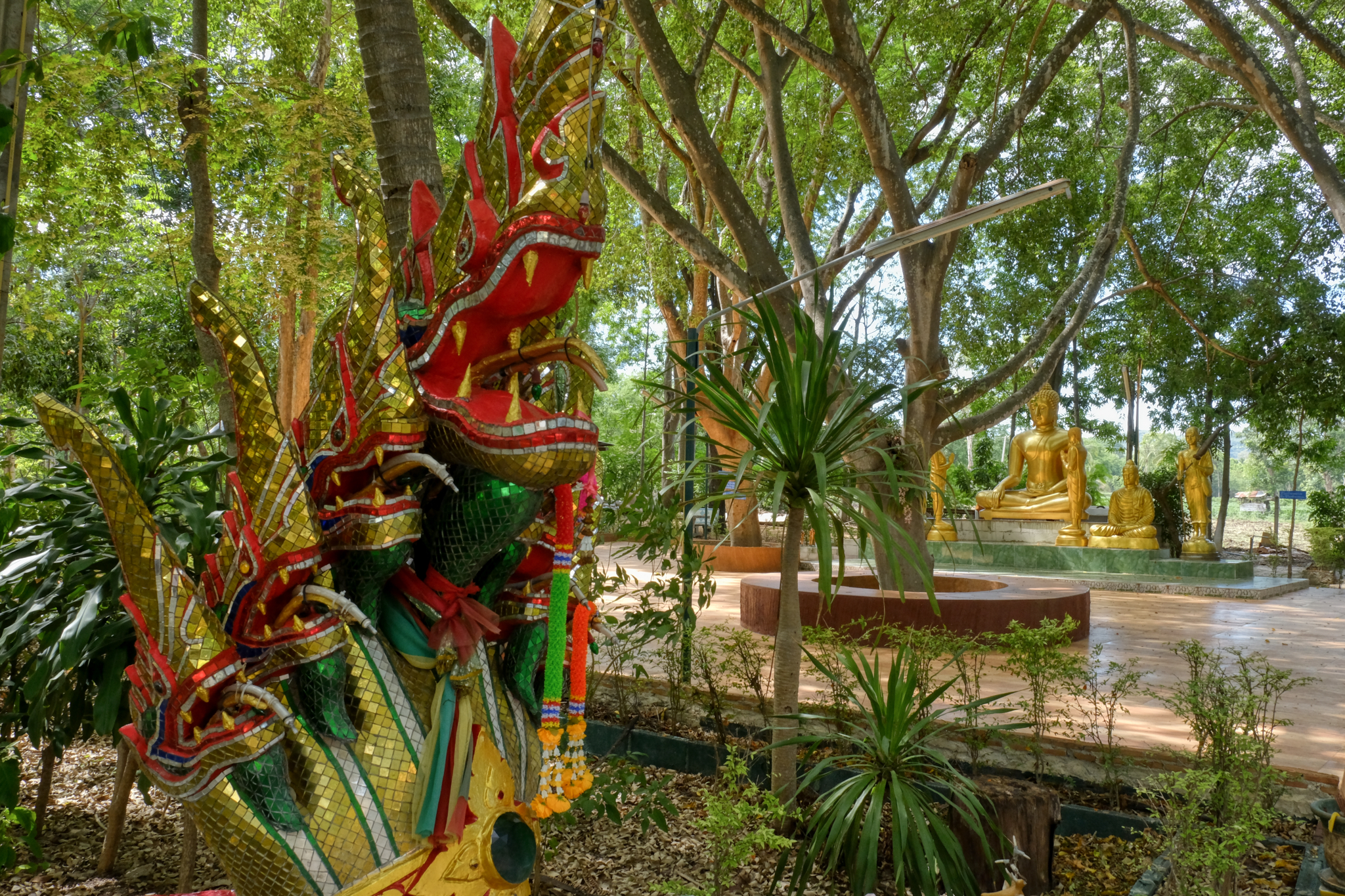 After sitting . . . I went for a walk to appreciate the spiritual environment I had fortunately found.
After sitting . . . I went for a walk to appreciate the spiritual environment I had fortunately found.
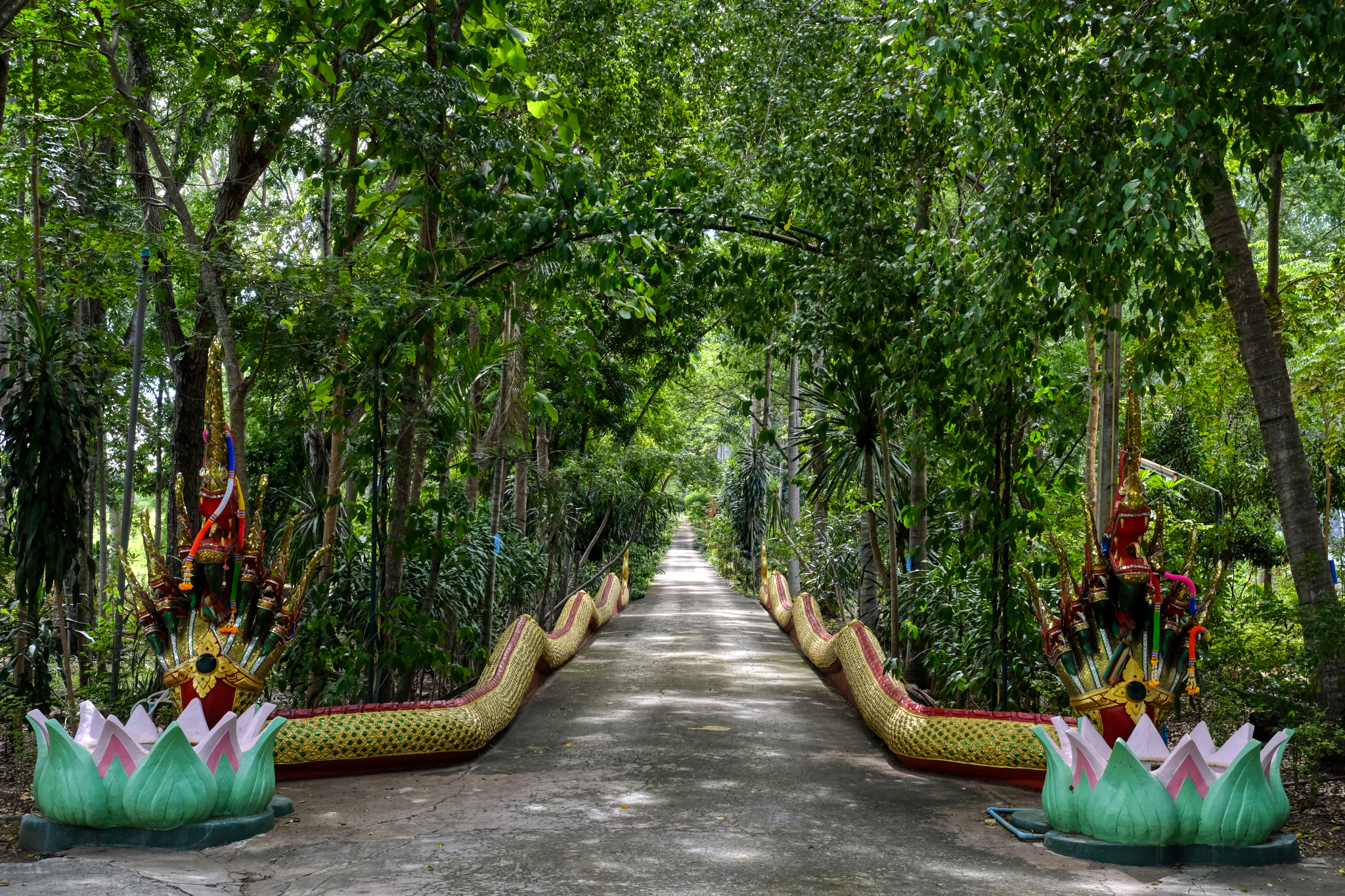 When I spotted this inviting road, I had to find out what was up there . . .
When I spotted this inviting road, I had to find out what was up there . . .
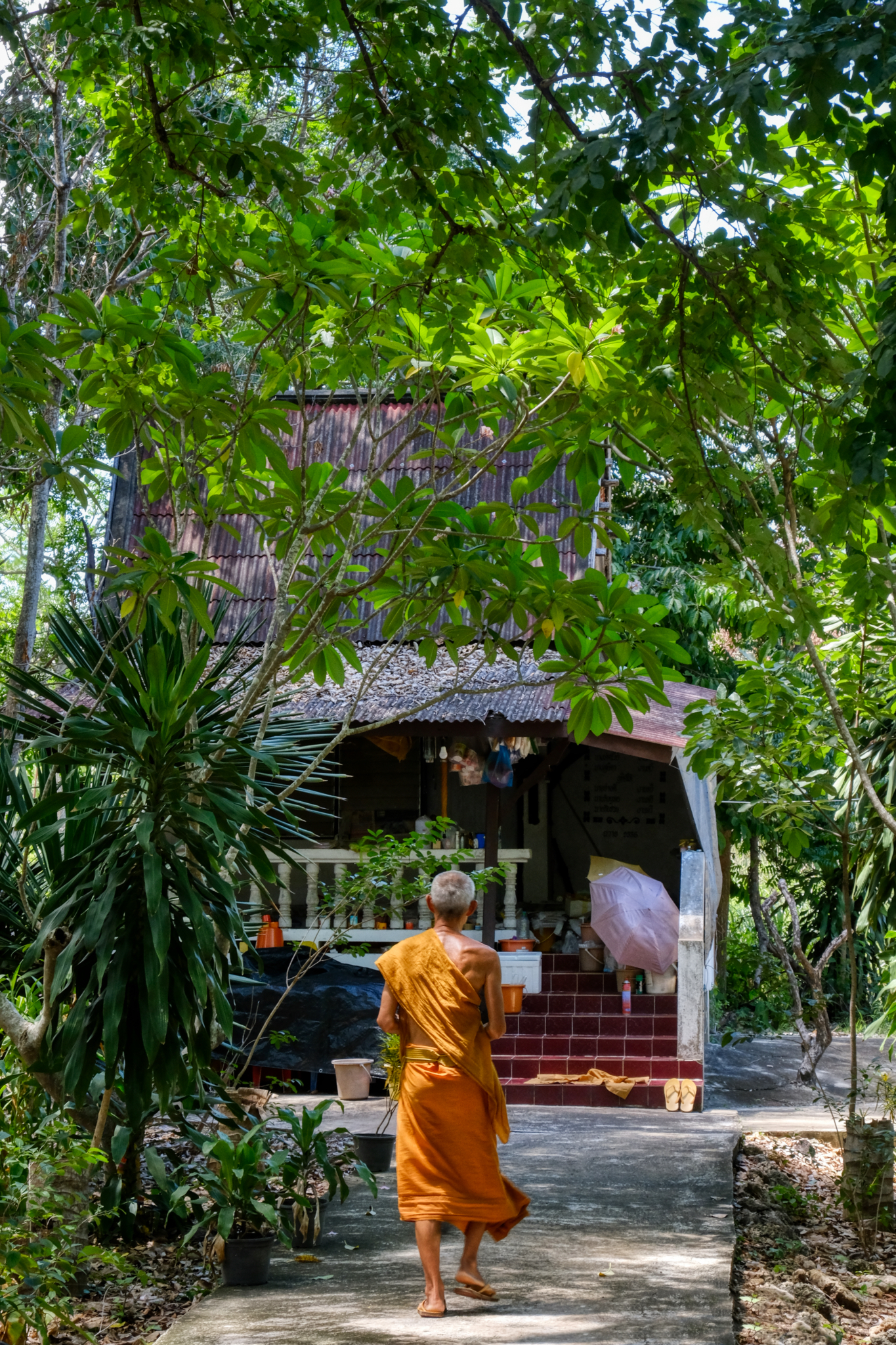 What I found at first were several very sweet monks' houses set in the trees.
What I found at first were several very sweet monks' houses set in the trees.
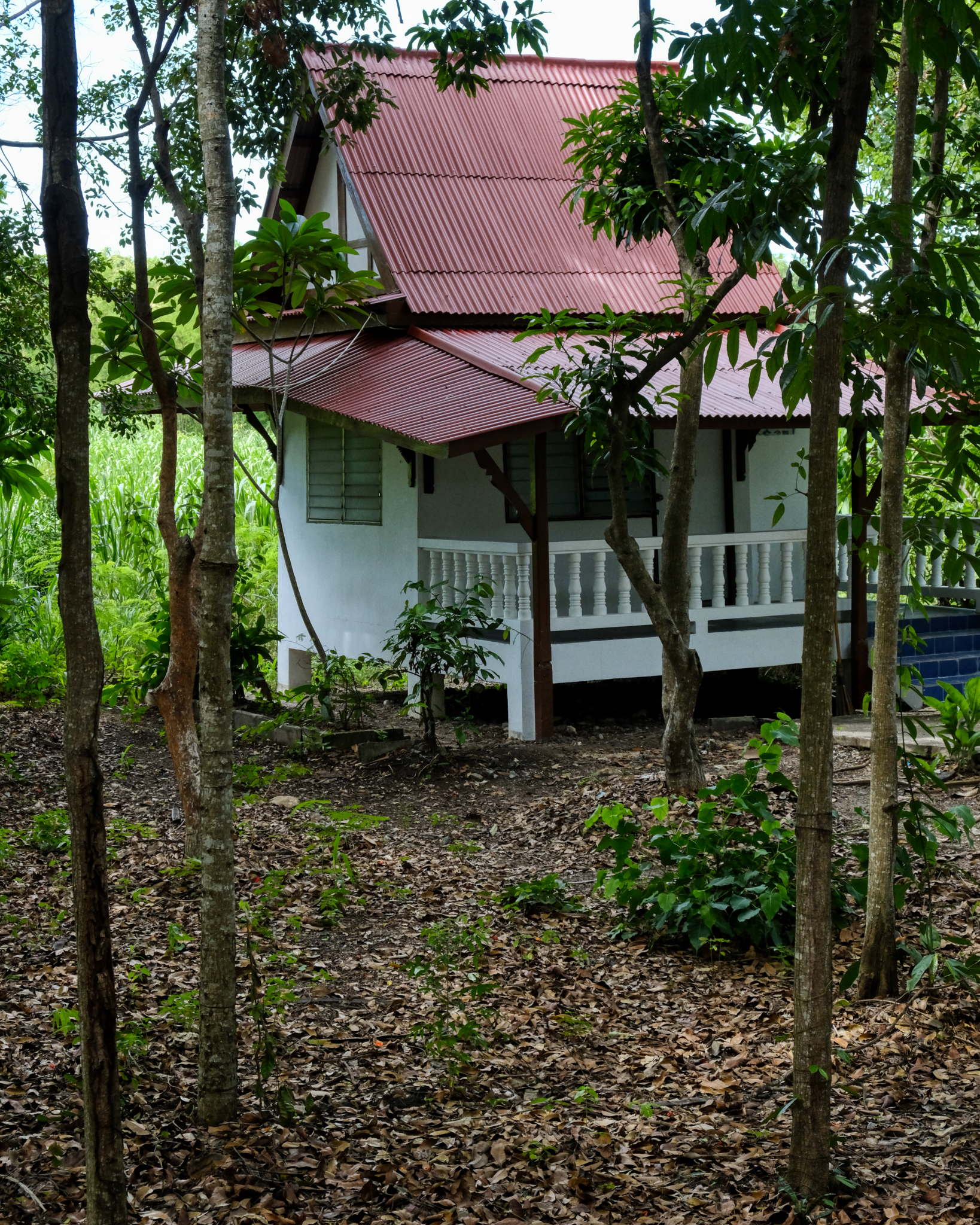 A simple, but attractive, monks quarters.
A simple, but attractive, monks quarters.
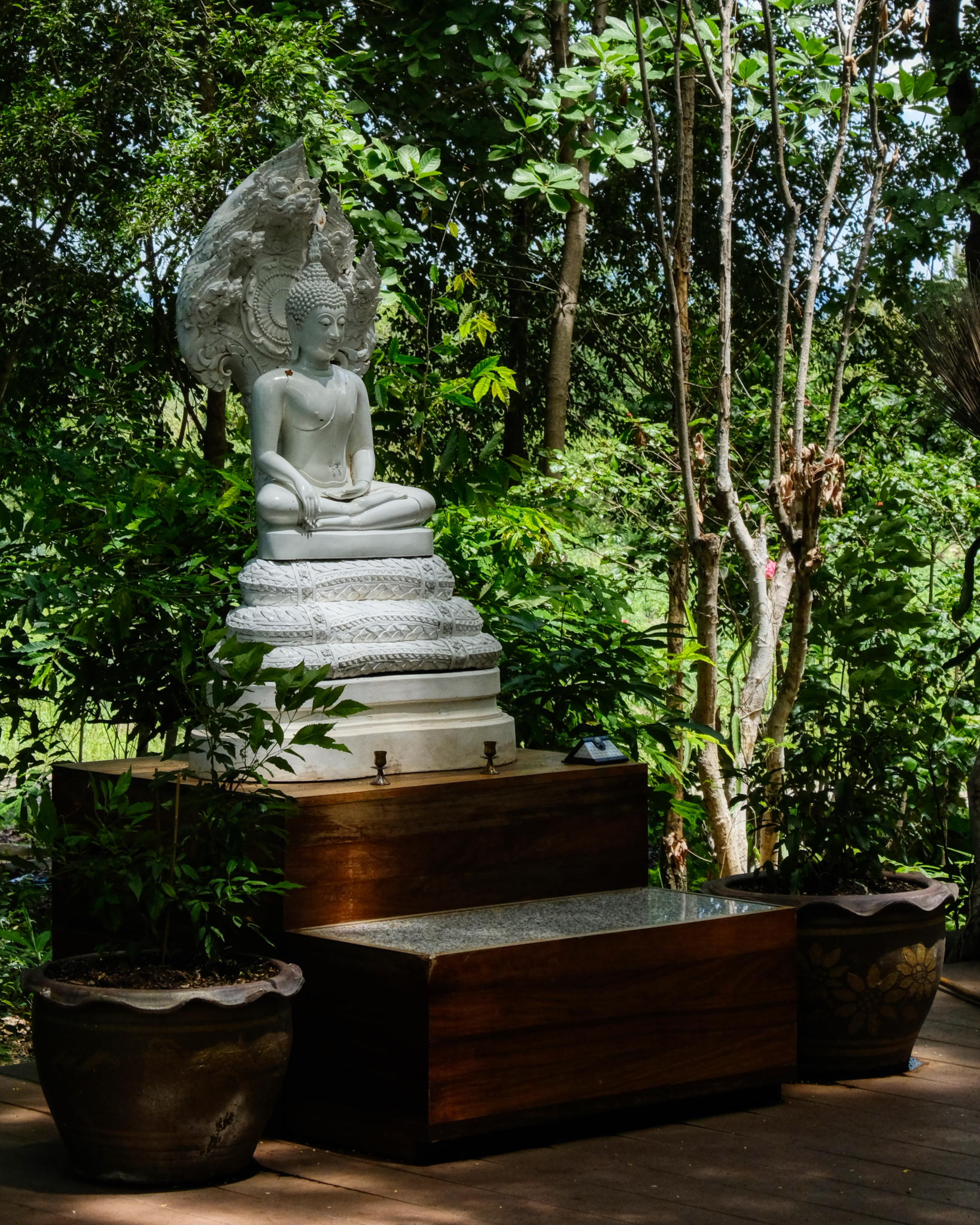 This remarkable Buddha was outside one of the modest monk's quarters.
This remarkable Buddha was outside one of the modest monk's quarters.
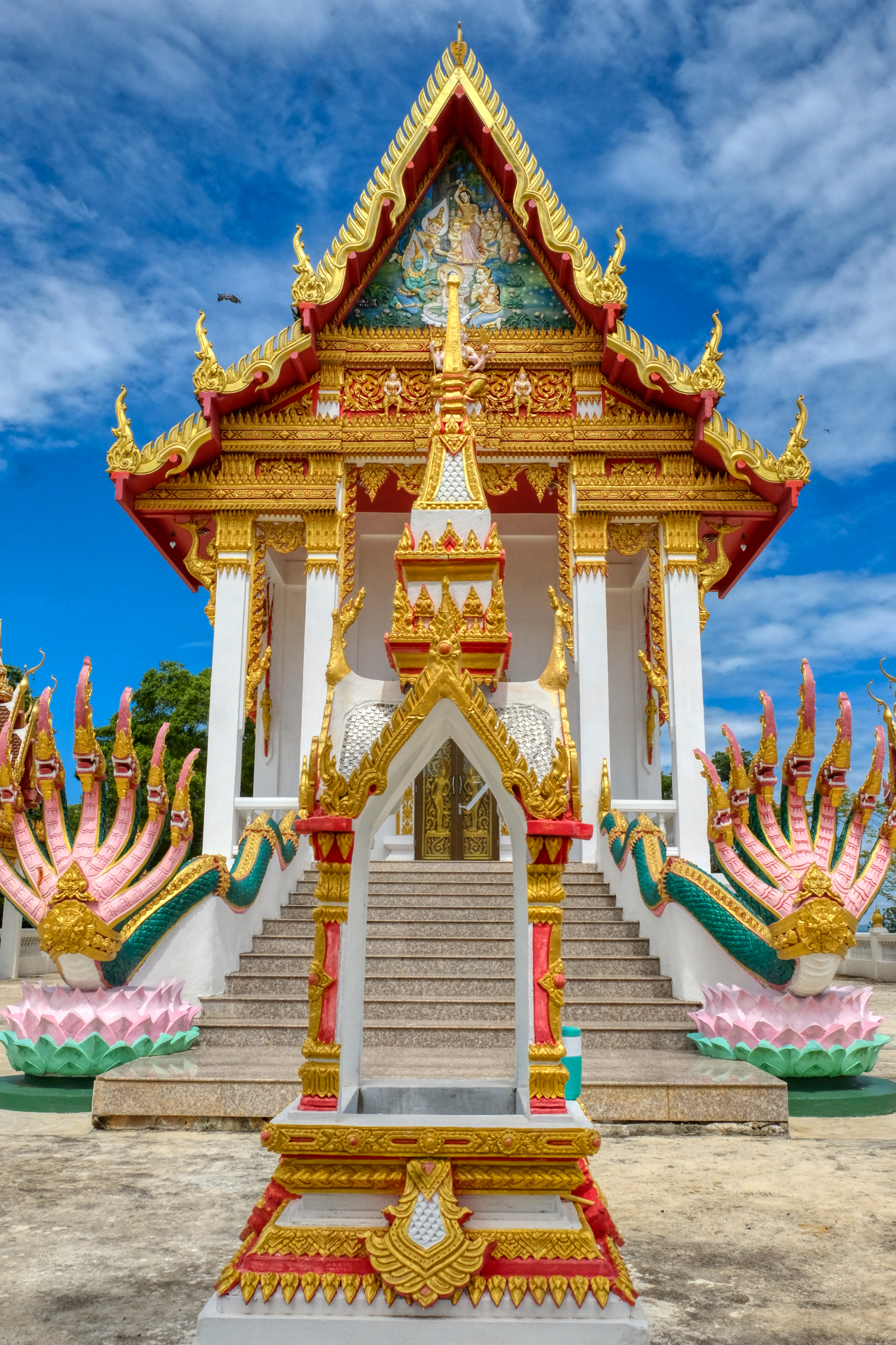 My long walk up the hill was rewarded with this view of a new wat building nearing completion. A brand new Thai Buddhist Temple, Wat PA Phrom Prathan.
My long walk up the hill was rewarded with this view of a new wat building nearing completion. A brand new Thai Buddhist Temple, Wat PA Phrom Prathan.
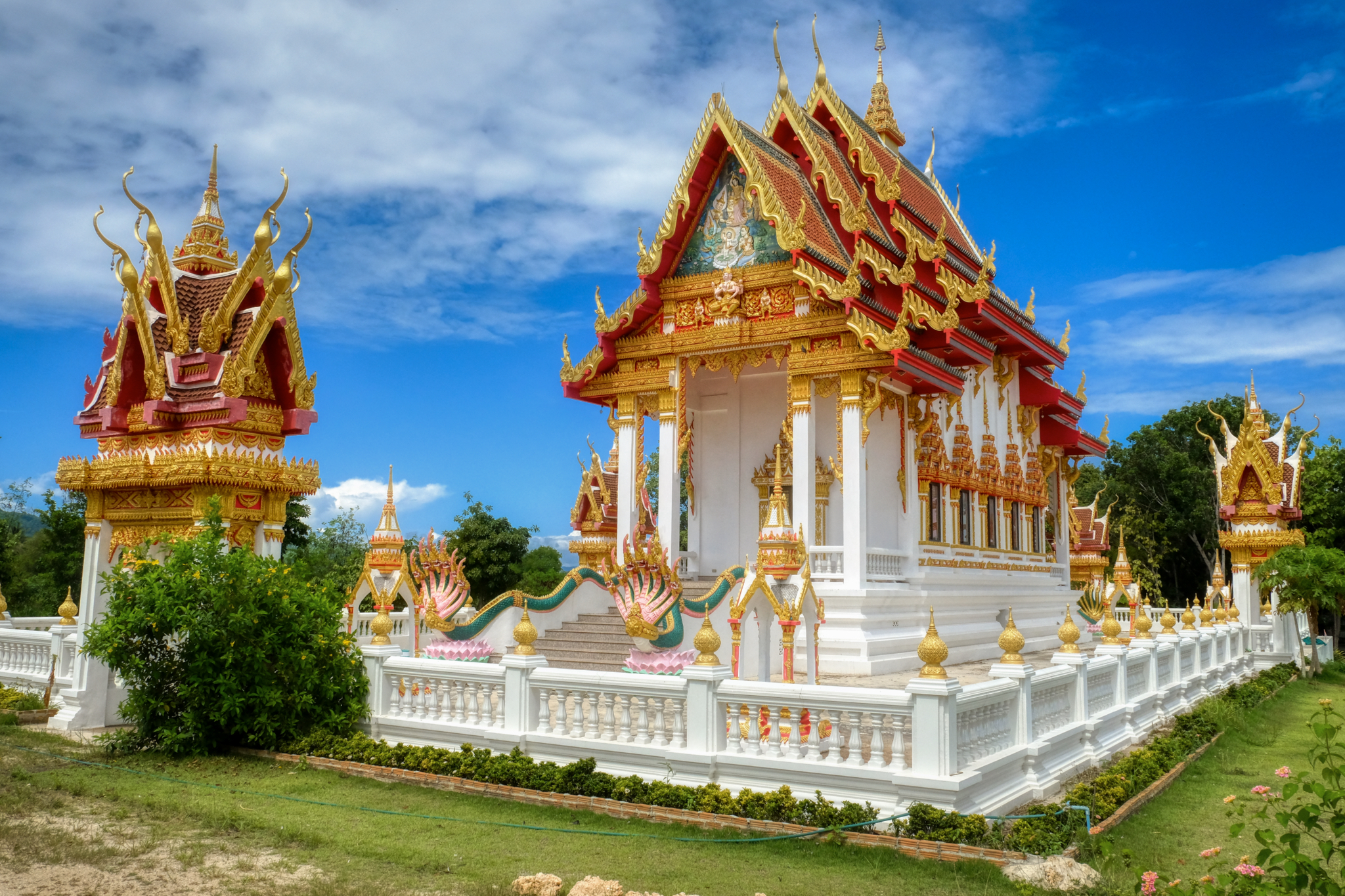 The new wat sat high on a hill over the valley. I walked around the site several times marveling at its fresh, pristine beauty.
The new wat sat high on a hill over the valley. I walked around the site several times marveling at its fresh, pristine beauty.
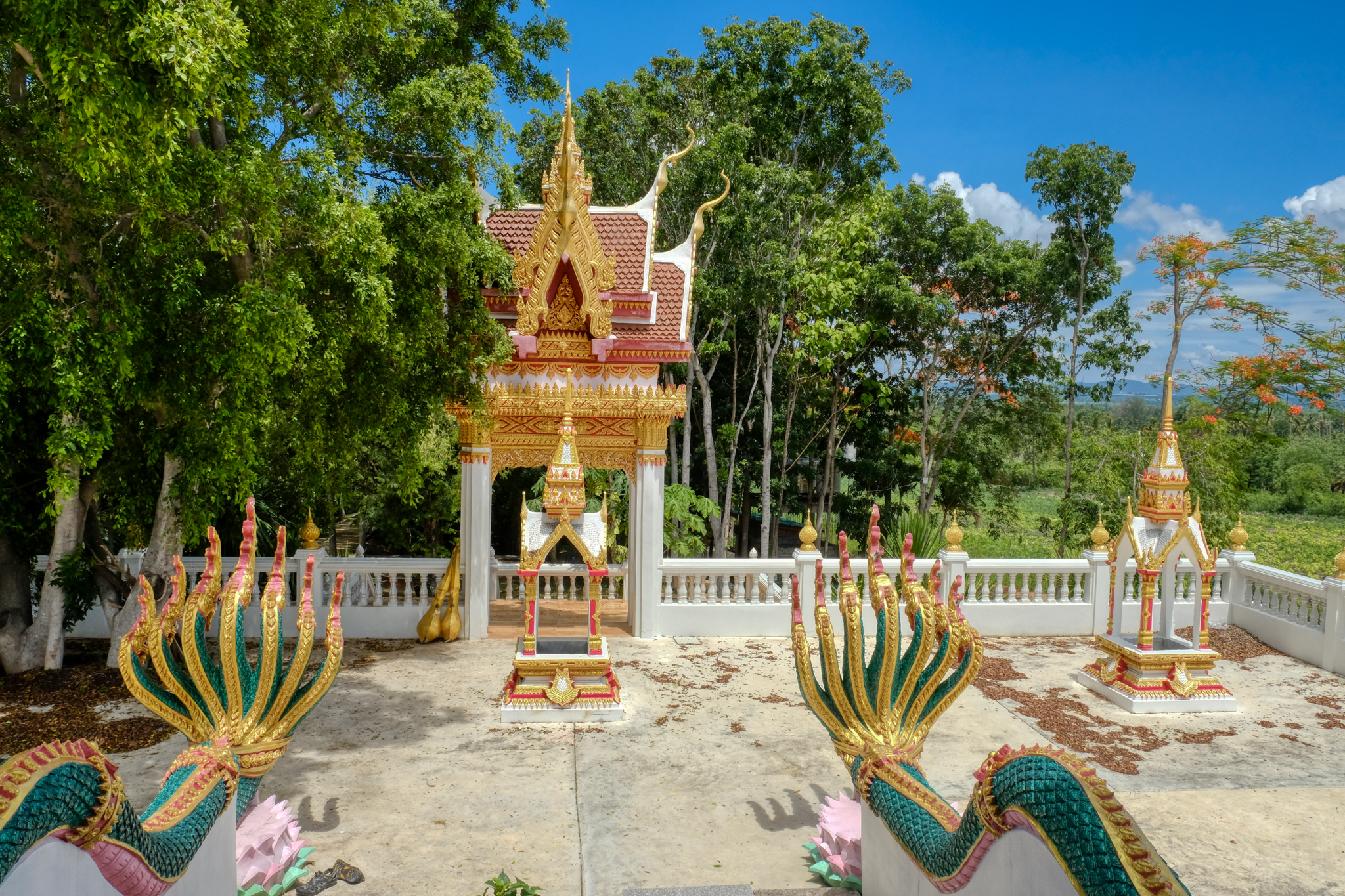 I noticed that the inner spaces of the wat were not swept or tiled . . . I knew this meant that they had not officially moved in . . . they were still working on it. The door was ajar, so I peaked in . . .
I noticed that the inner spaces of the wat were not swept or tiled . . . I knew this meant that they had not officially moved in . . . they were still working on it. The door was ajar, so I peaked in . . .
 And this is what I saw when I opened the door . . . an artist on scaffolding painting an amazing mural on the far wall. WOW!
And this is what I saw when I opened the door . . . an artist on scaffolding painting an amazing mural on the far wall. WOW!
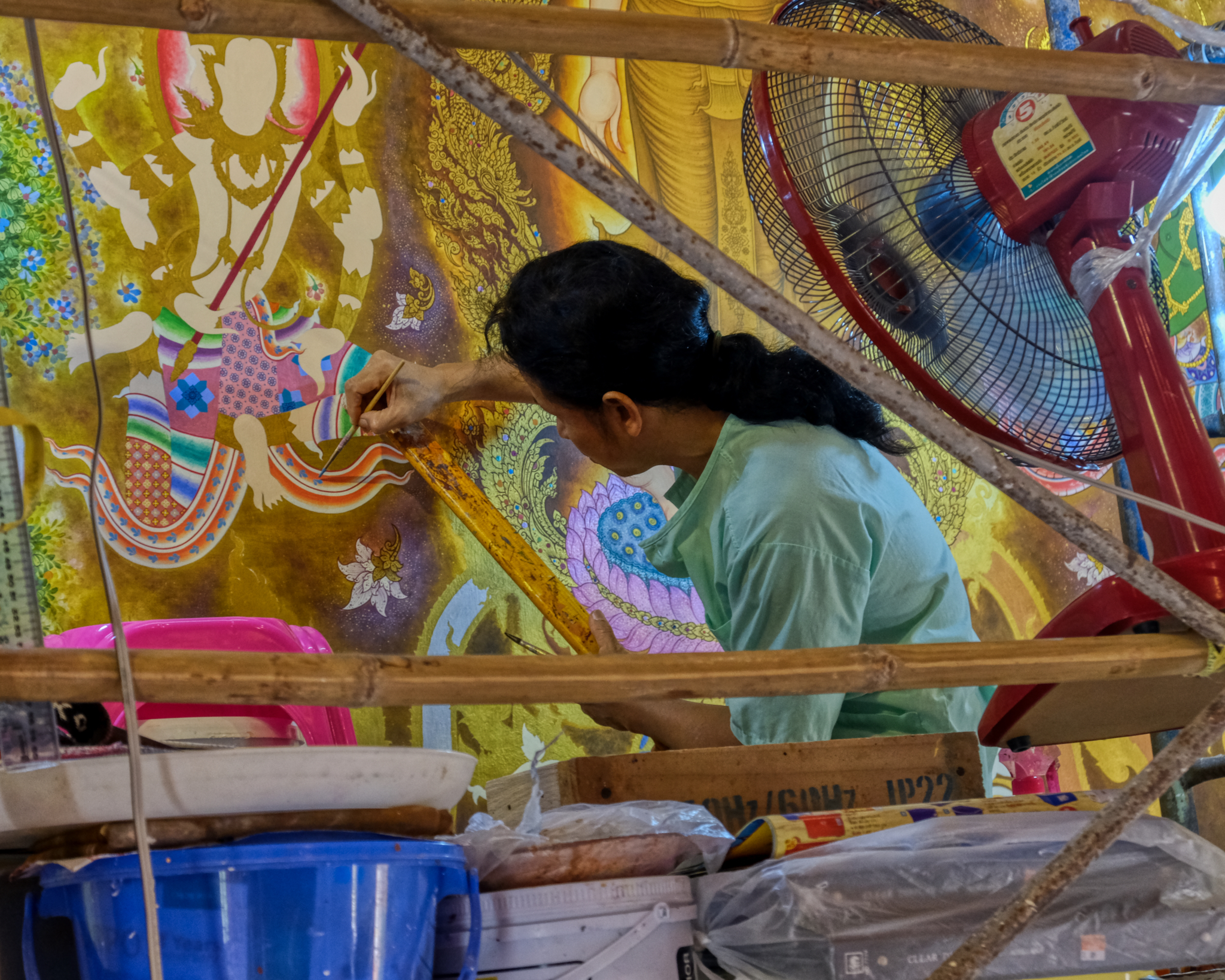 The artist at work.
The artist at work.
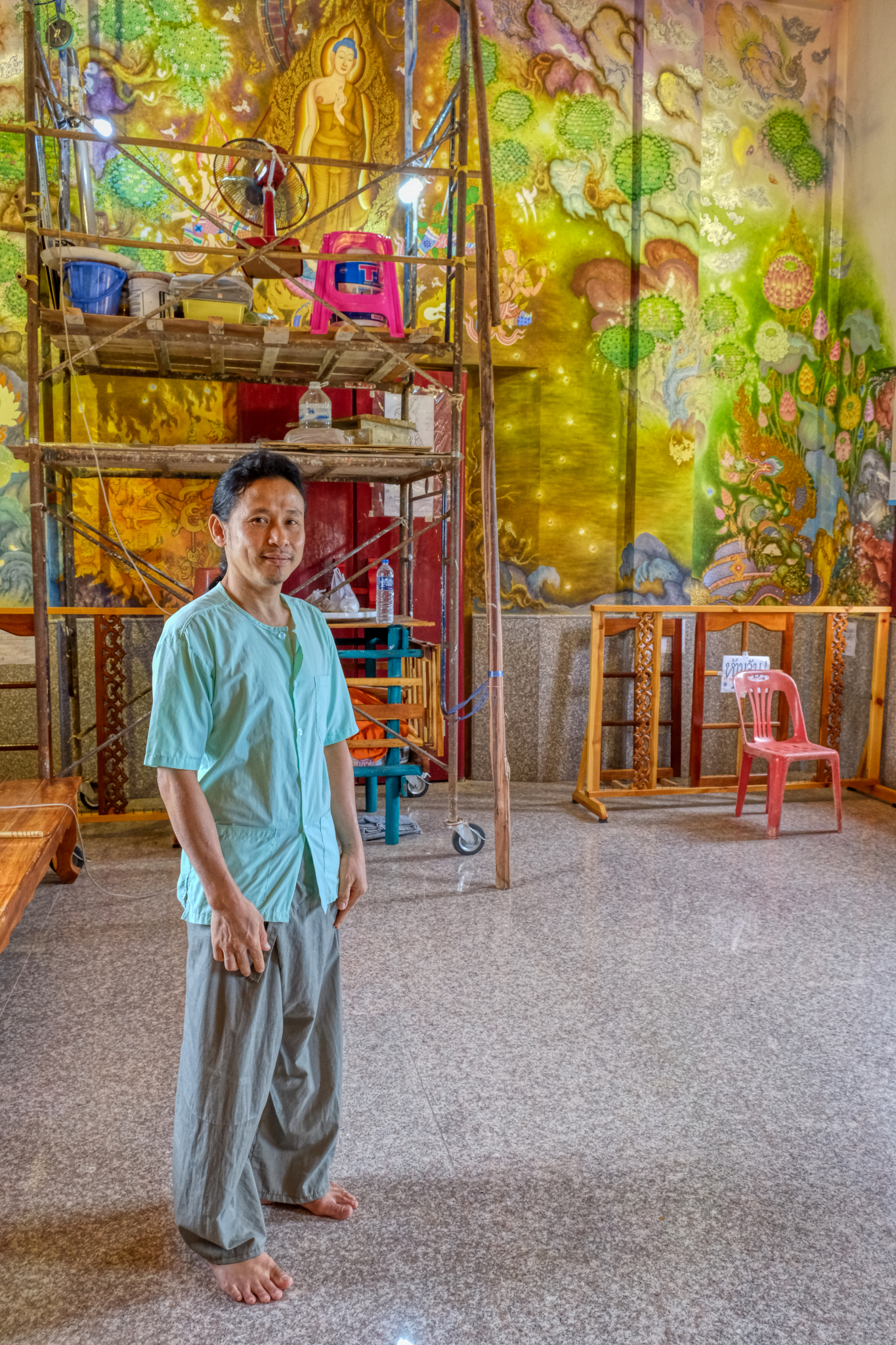 The artist came down off the scaffolding to offer me some water. I declined as I had my own. We chatted for a while. He said he had been working on that wall for three years already and that there were two or three more years left to finish the rest of the interior.
The artist came down off the scaffolding to offer me some water. I declined as I had my own. We chatted for a while. He said he had been working on that wall for three years already and that there were two or three more years left to finish the rest of the interior.
 This altar faced the wall he was currently painting. He said that this wall only took six months to paint.
This altar faced the wall he was currently painting. He said that this wall only took six months to paint.
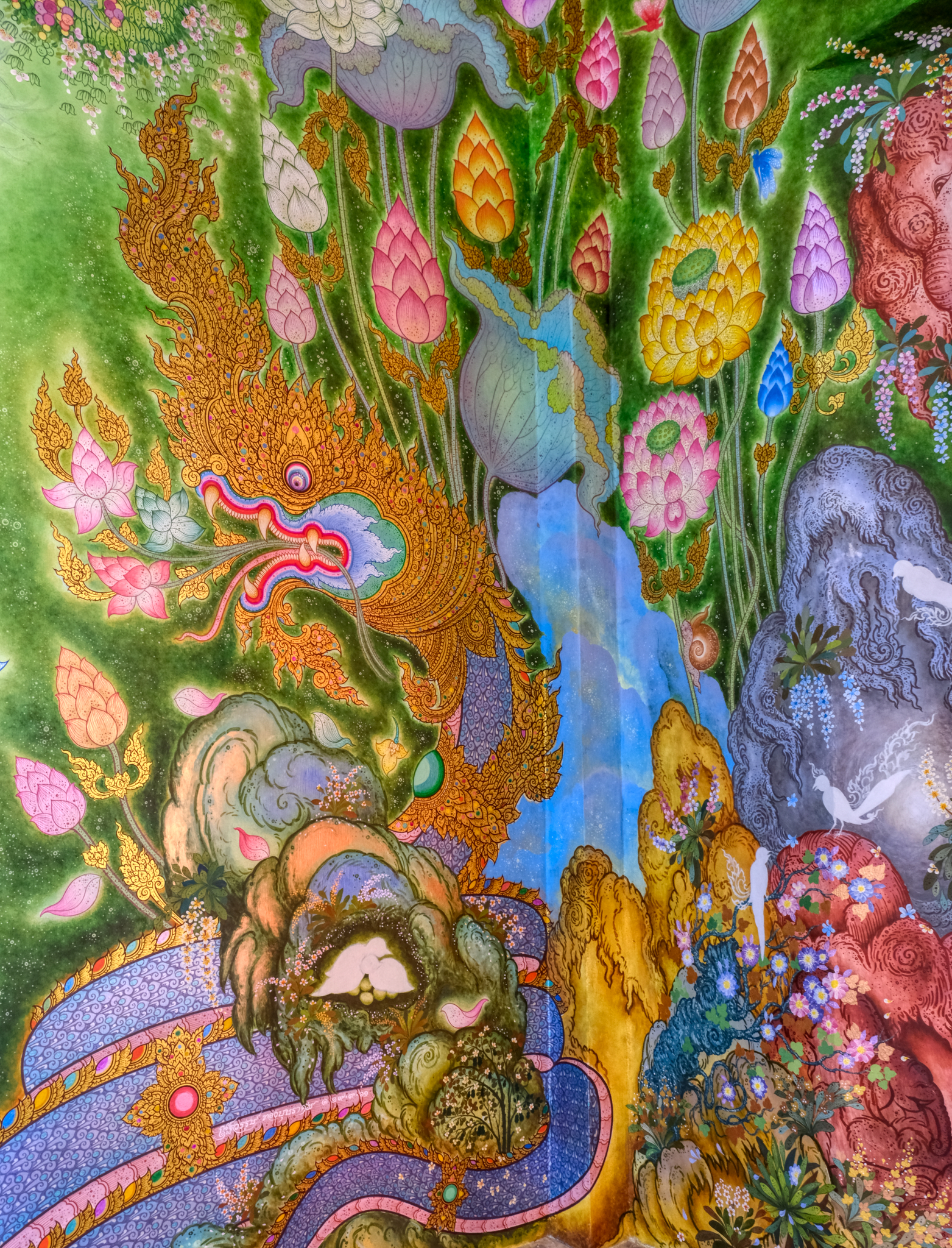 The artist's work and workmanship were masterful.
The artist's work and workmanship were masterful.
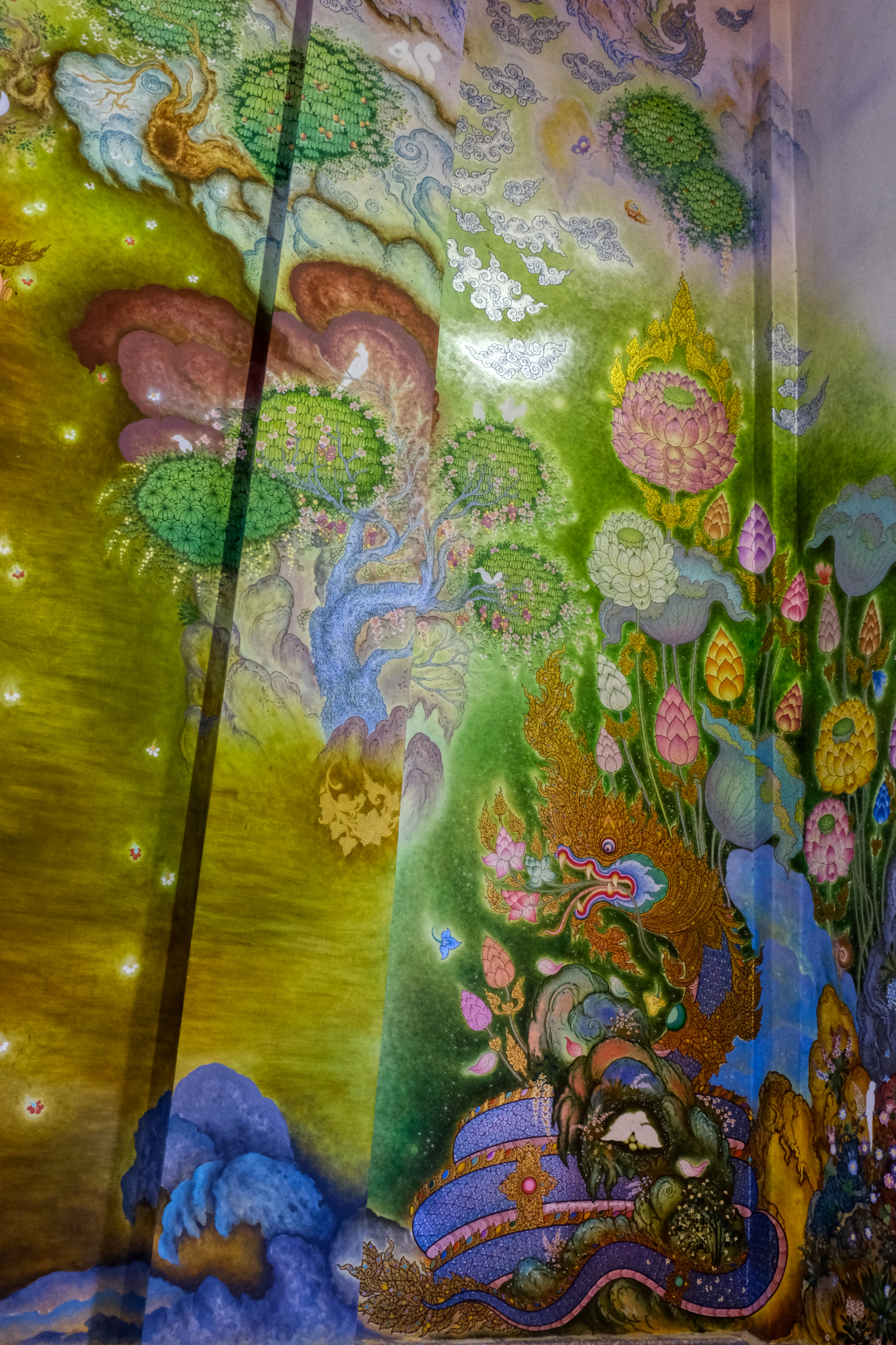 The huge mural depicted Buddhist and Thai iconography, as well as scenes from the life of the Buddha Gotama.
The huge mural depicted Buddhist and Thai iconography, as well as scenes from the life of the Buddha Gotama.
 After we spoke he climbed back up to his platform and resumed painting. I sat watching him paint for quite awhile.
After we spoke he climbed back up to his platform and resumed painting. I sat watching him paint for quite awhile.
 Standing outside the new wat enjoying the hilltop view out over the agricultural landscape of Khao Yai.
Standing outside the new wat enjoying the hilltop view out over the agricultural landscape of Khao Yai.
 I walked back down the wooded land past the many monks cabins.
I walked back down the wooded land past the many monks cabins.
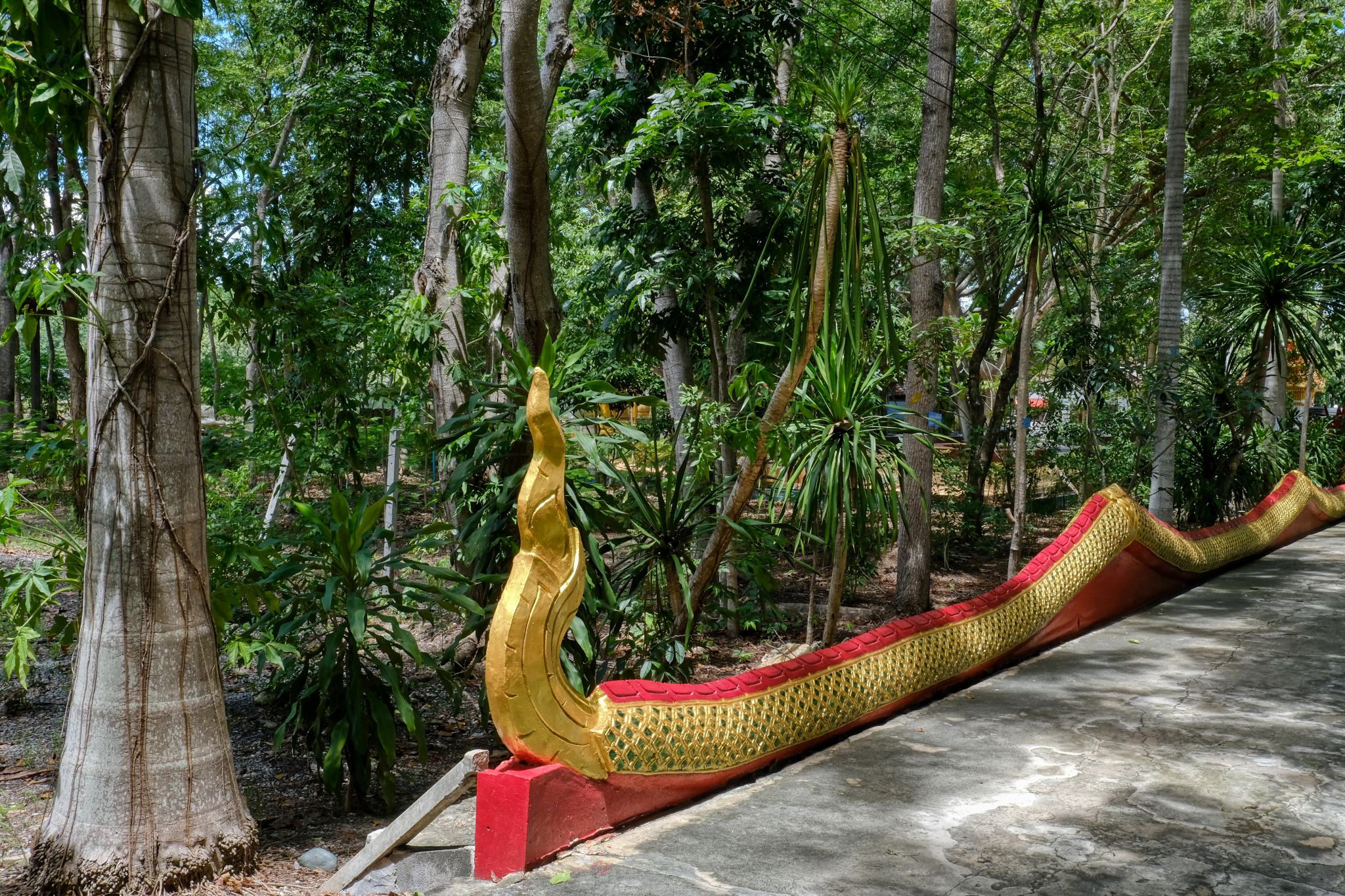 On the way back down I stopped at the tail of the many-headed dragon-snake that had welcomed me when I started up the hill.
On the way back down I stopped at the tail of the many-headed dragon-snake that had welcomed me when I started up the hill.
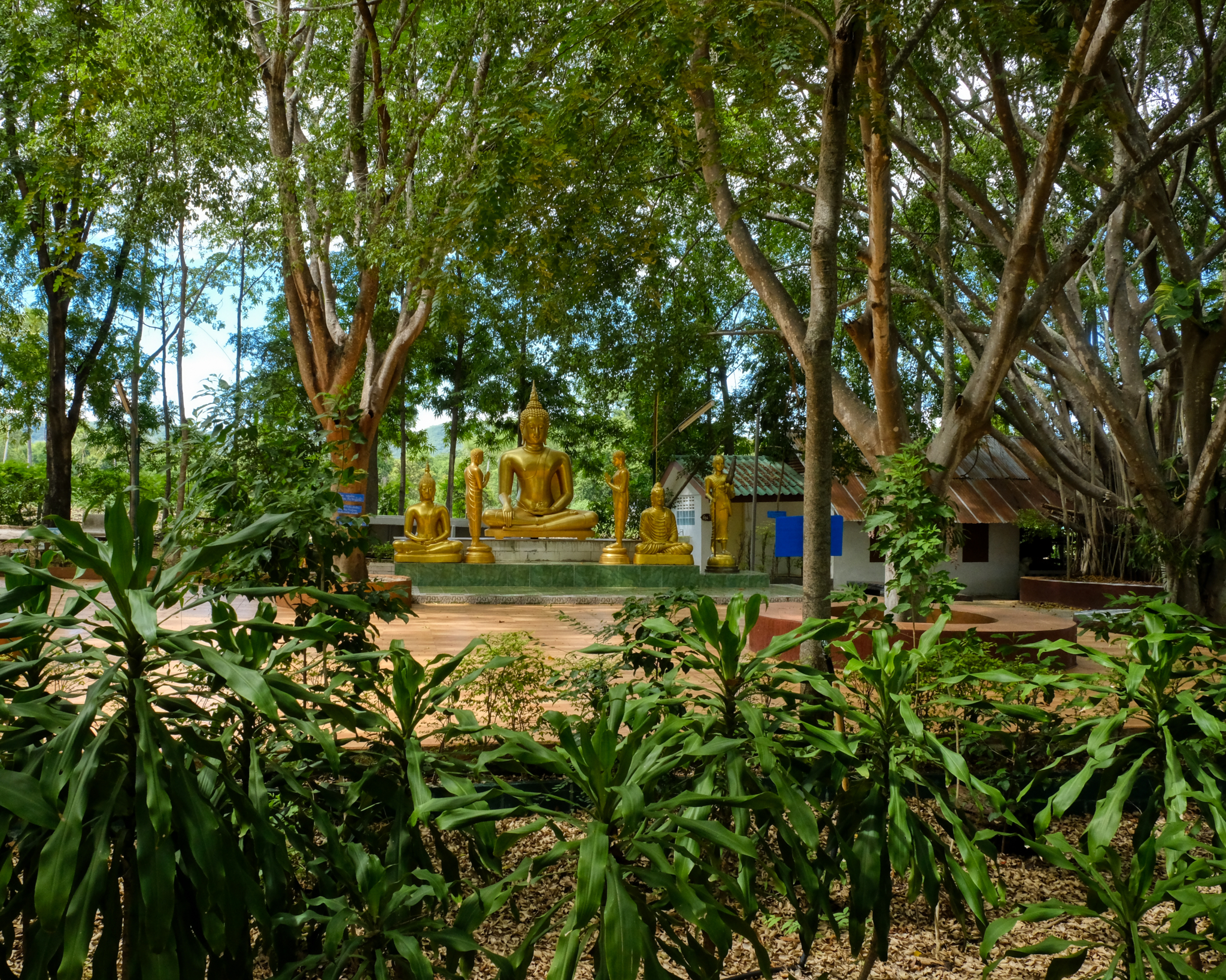 Back where I started, at the tree sheltered Buddha altar.
Back where I started, at the tree sheltered Buddha altar.
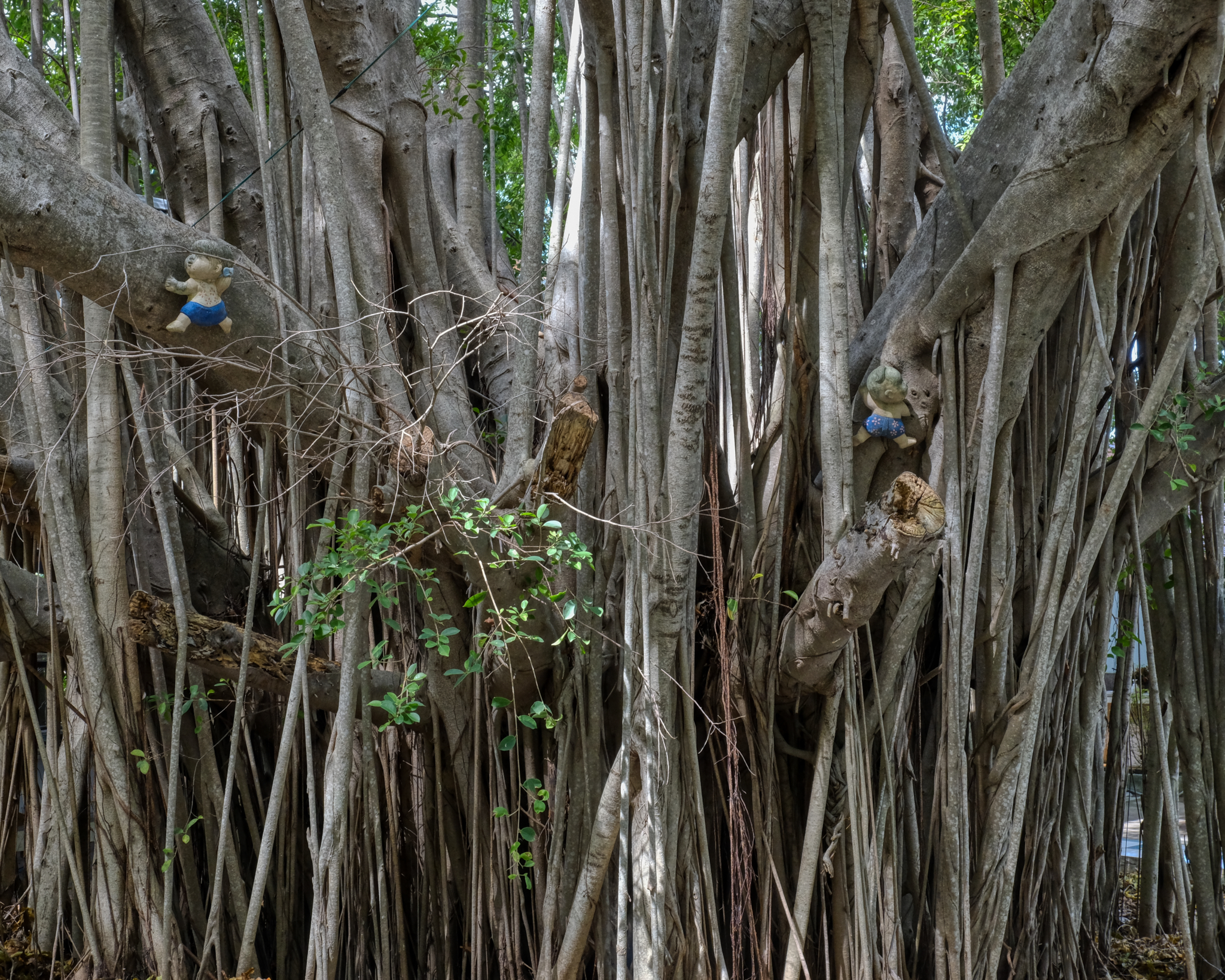 Extraordinary 'bodi' trees at this wat.
Extraordinary 'bodi' trees at this wat.
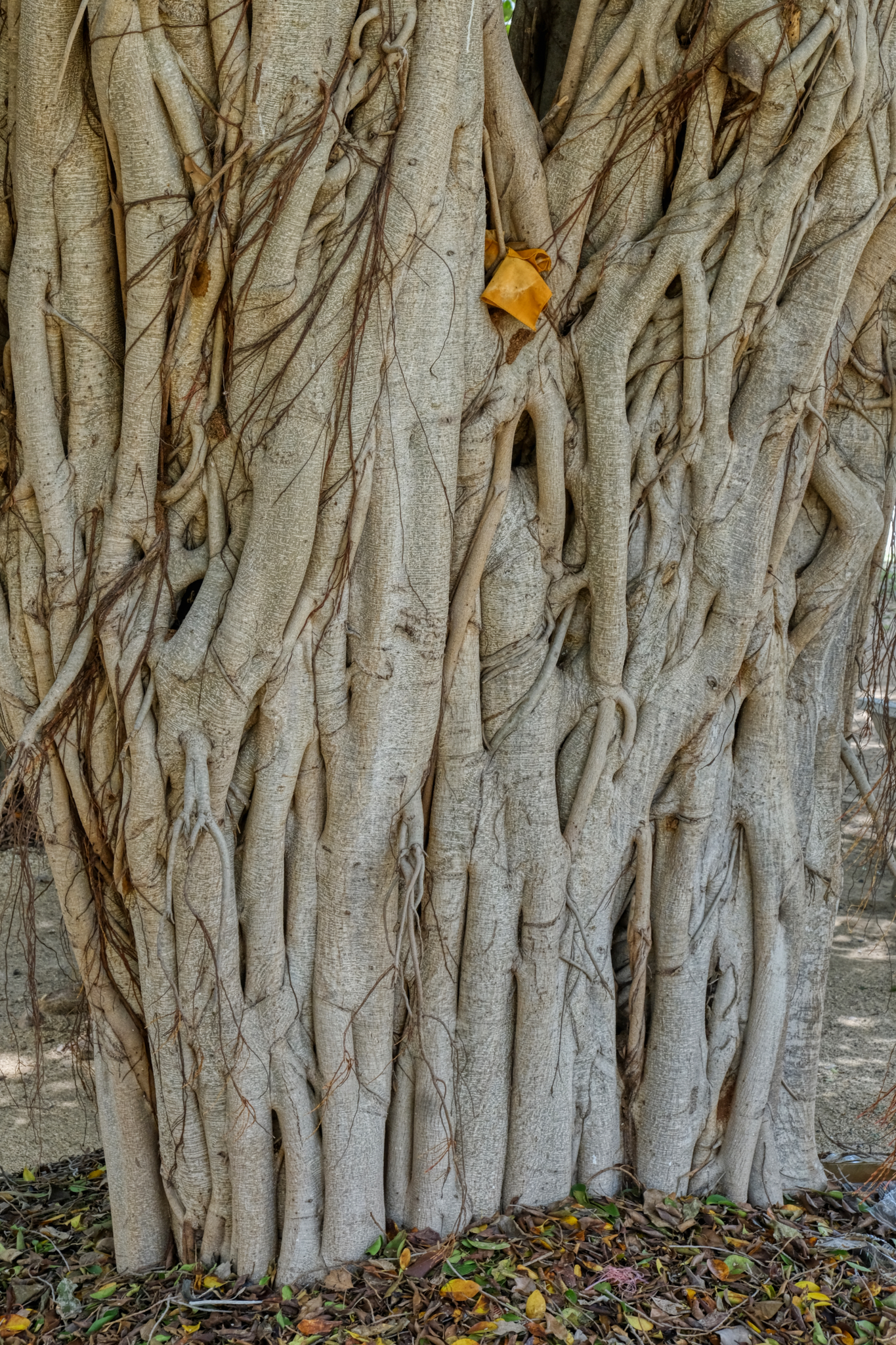 These trees!!!
These trees!!!
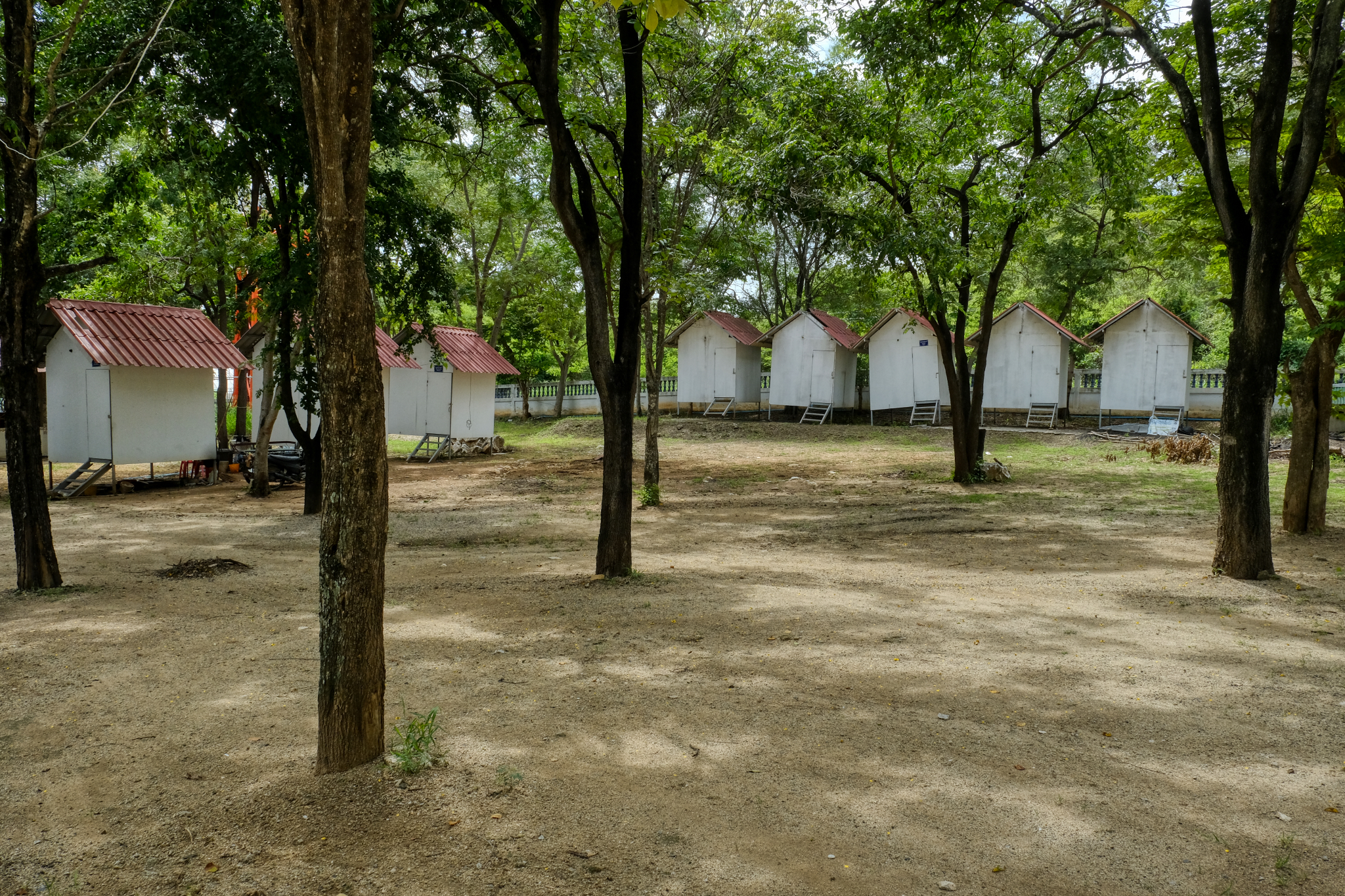 I strolled around the rest of the temple grounds and came upon these monks' cells. I assume this was a wat that took in novice/new monks and trained them here. Very austere . . .
I strolled around the rest of the temple grounds and came upon these monks' cells. I assume this was a wat that took in novice/new monks and trained them here. Very austere . . .
 Someone had built a very nice sala with statues of three ancient Thai Kings. Sweet.
Someone had built a very nice sala with statues of three ancient Thai Kings. Sweet.
 What I assumed to be the head Abbot's house getting the finishing touches on a new roof.
What I assumed to be the head Abbot's house getting the finishing touches on a new roof.
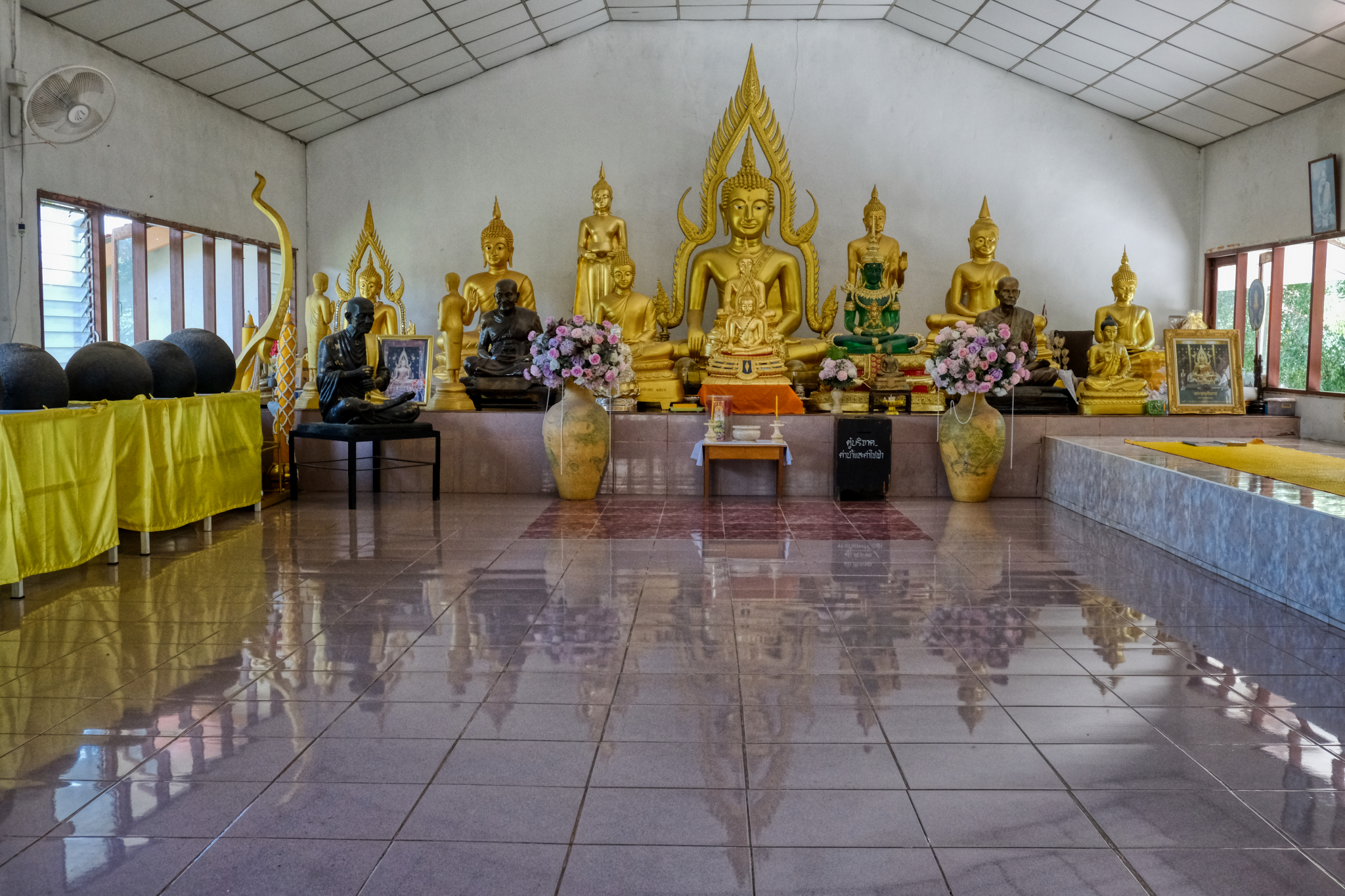 The current main hall where the monks daily meet to meditate and chant. The door was open and I went in. I had been looking for the donation box and I found it here. I left a substantial donation toward the construction and maintenance of this wonderful place.
The current main hall where the monks daily meet to meditate and chant. The door was open and I went in. I had been looking for the donation box and I found it here. I left a substantial donation toward the construction and maintenance of this wonderful place.
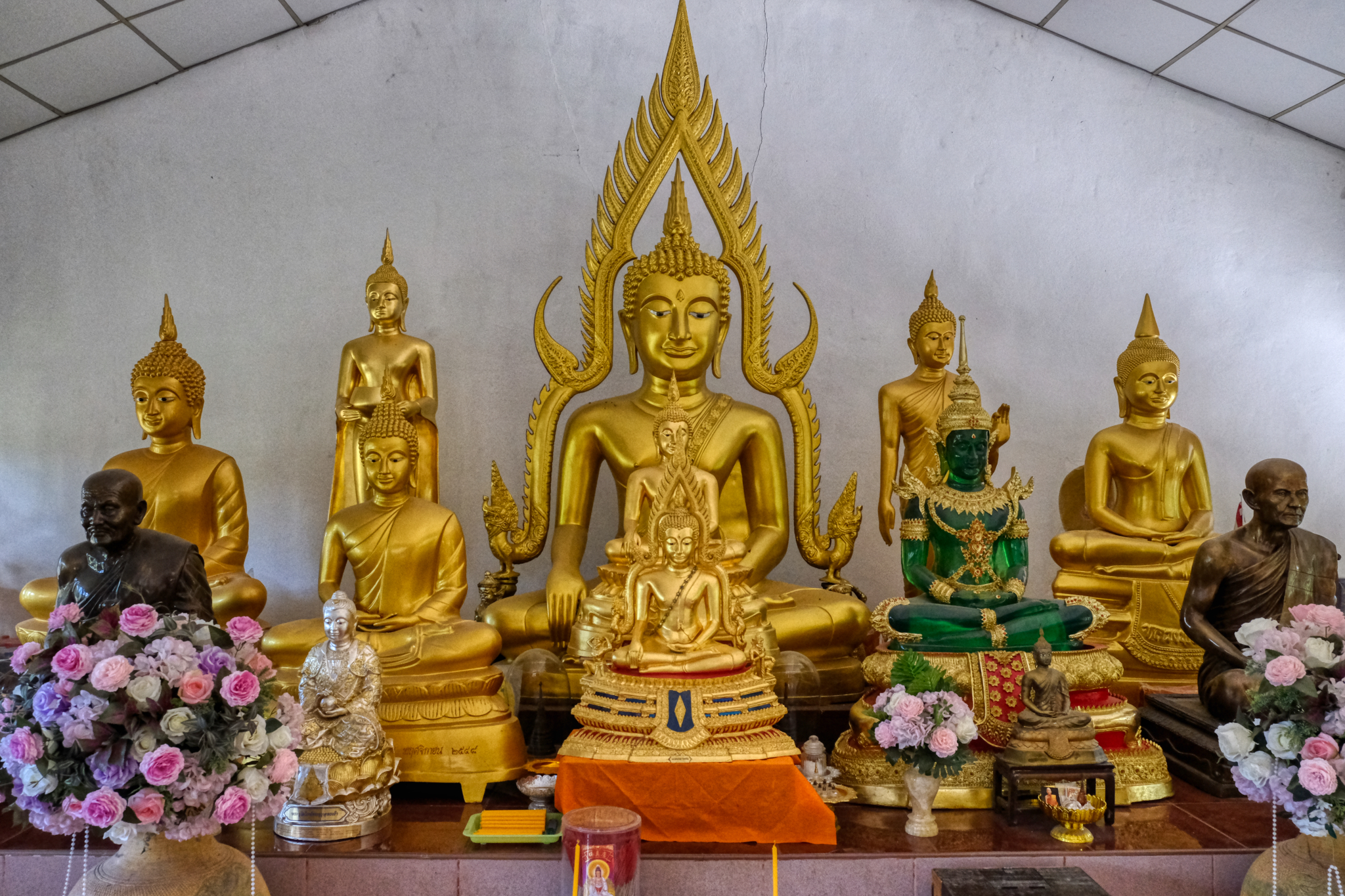 I left this wat after many hours exploring its beauty and spirituality.
I left this wat after many hours exploring its beauty and spirituality.
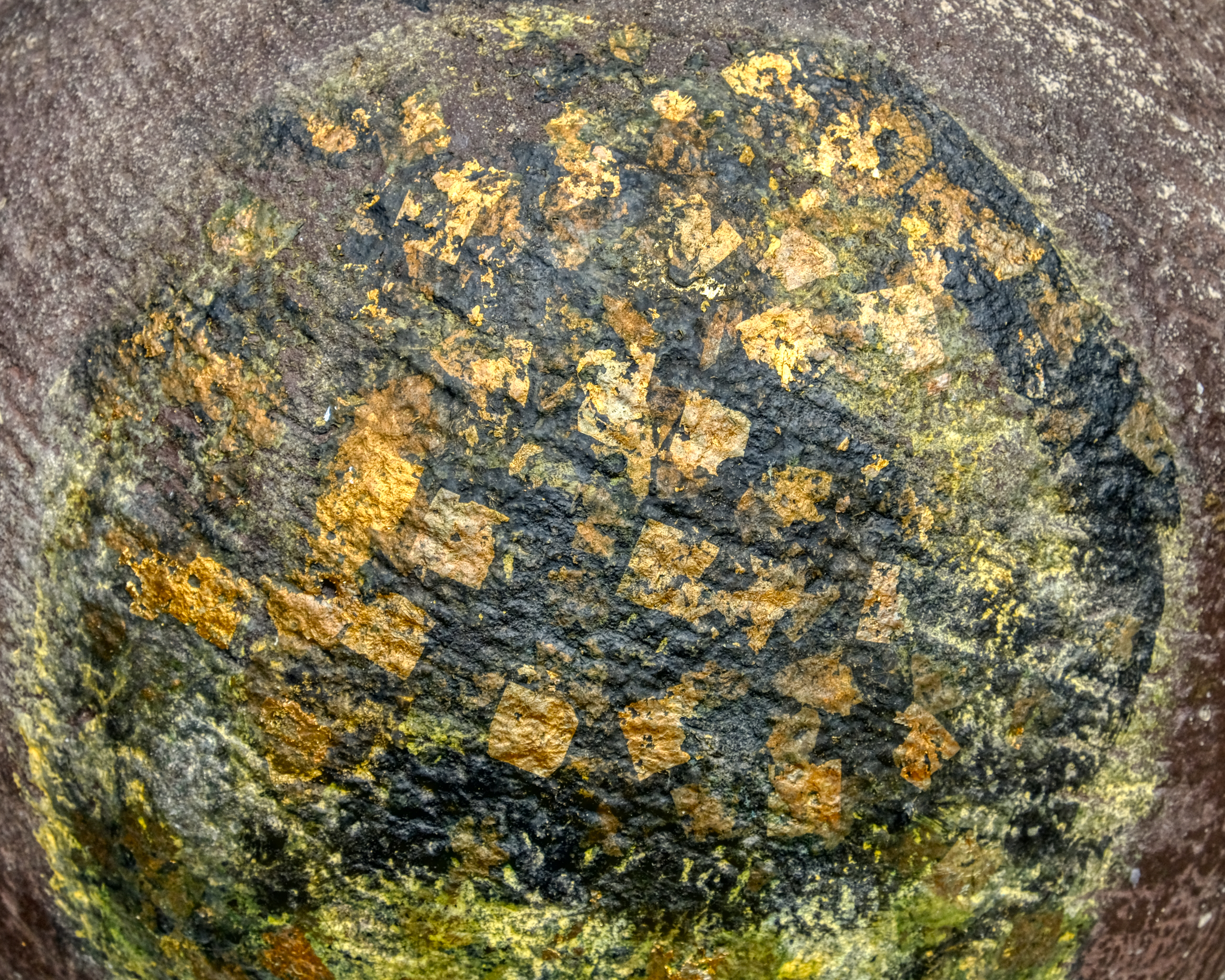
Poland: Gdansk is a beautiful vacation destination!
 Friday, April 24, 2020 at 5:40PM
Friday, April 24, 2020 at 5:40PM My wife and I visited Poland (Kraków and Gdańsk) in the summer of 2014. This entry is of the three days we spent in Gdańsk, while there is another entry for Kraków HERE.
 Gdańsk is one of the most beautiful cities I have ever visited . . . and as good luck would have it, we visited during a street festival!
Gdańsk is one of the most beautiful cities I have ever visited . . . and as good luck would have it, we visited during a street festival!
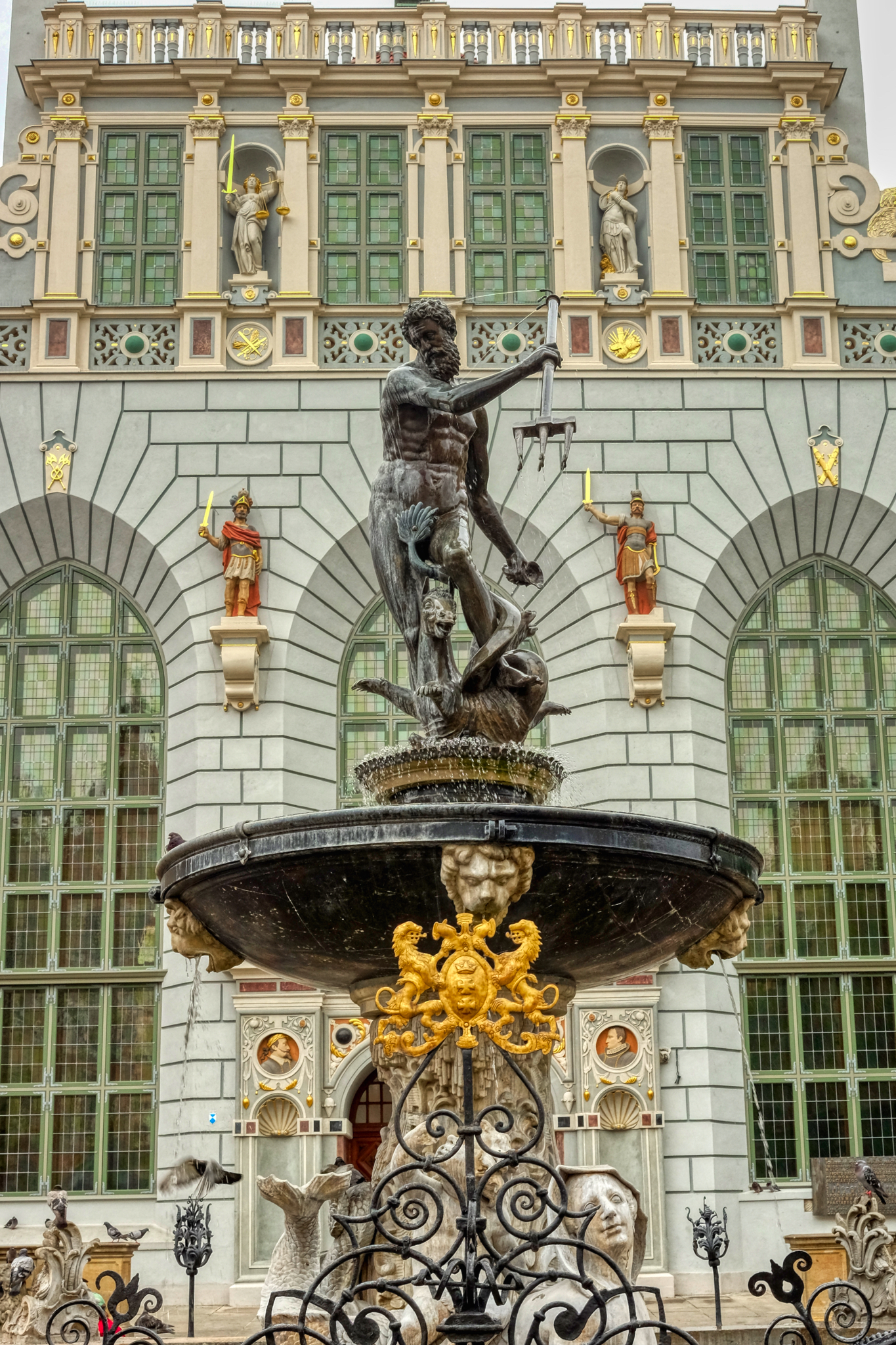 The statue to Neptune.
The statue to Neptune.
 One of many small squares in the city center. The architectural style was surprisingly . . . . Dutch.
One of many small squares in the city center. The architectural style was surprisingly . . . . Dutch.
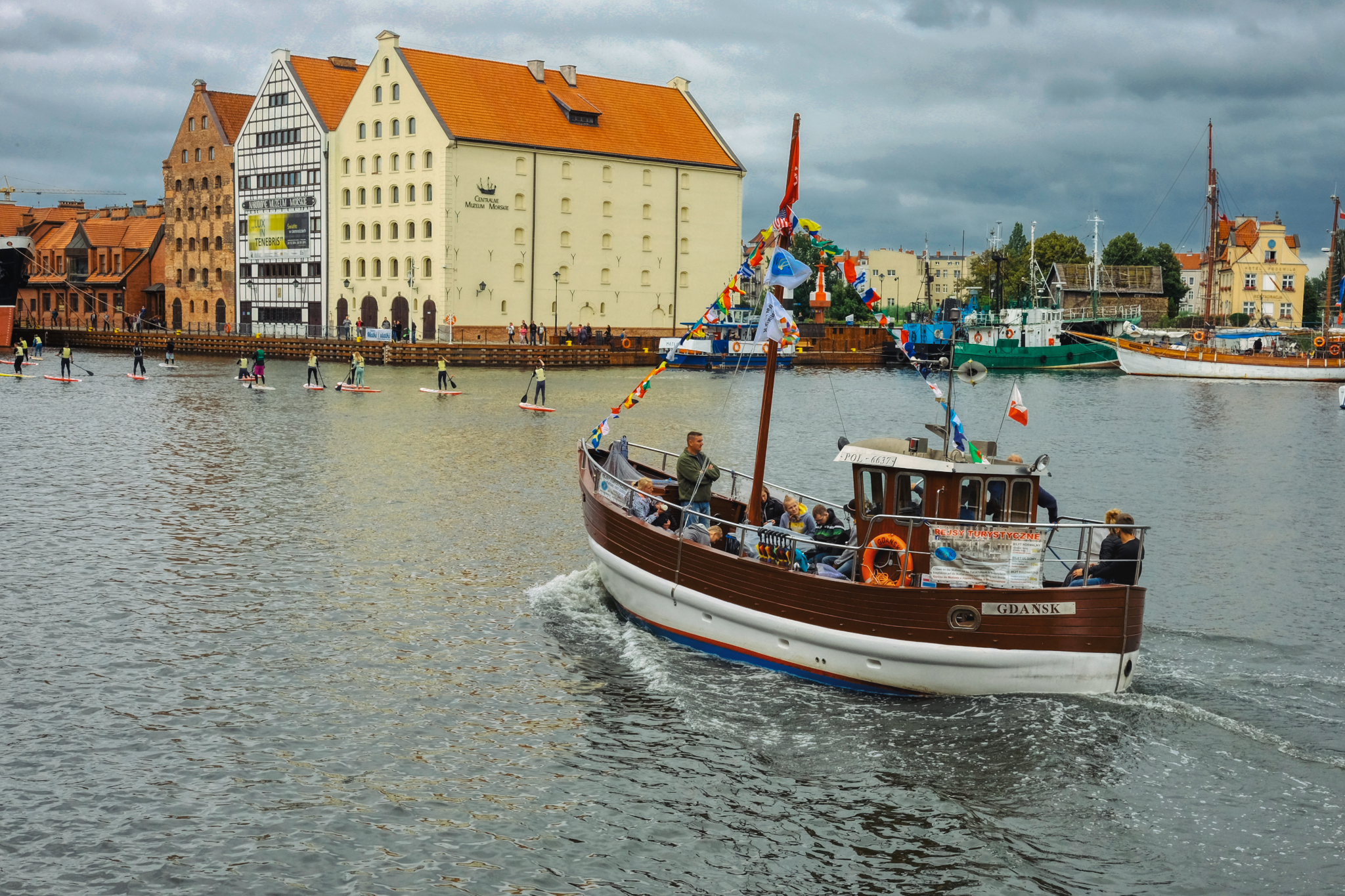 Gdańsk is on the Motlawa River estuary.
Gdańsk is on the Motlawa River estuary.
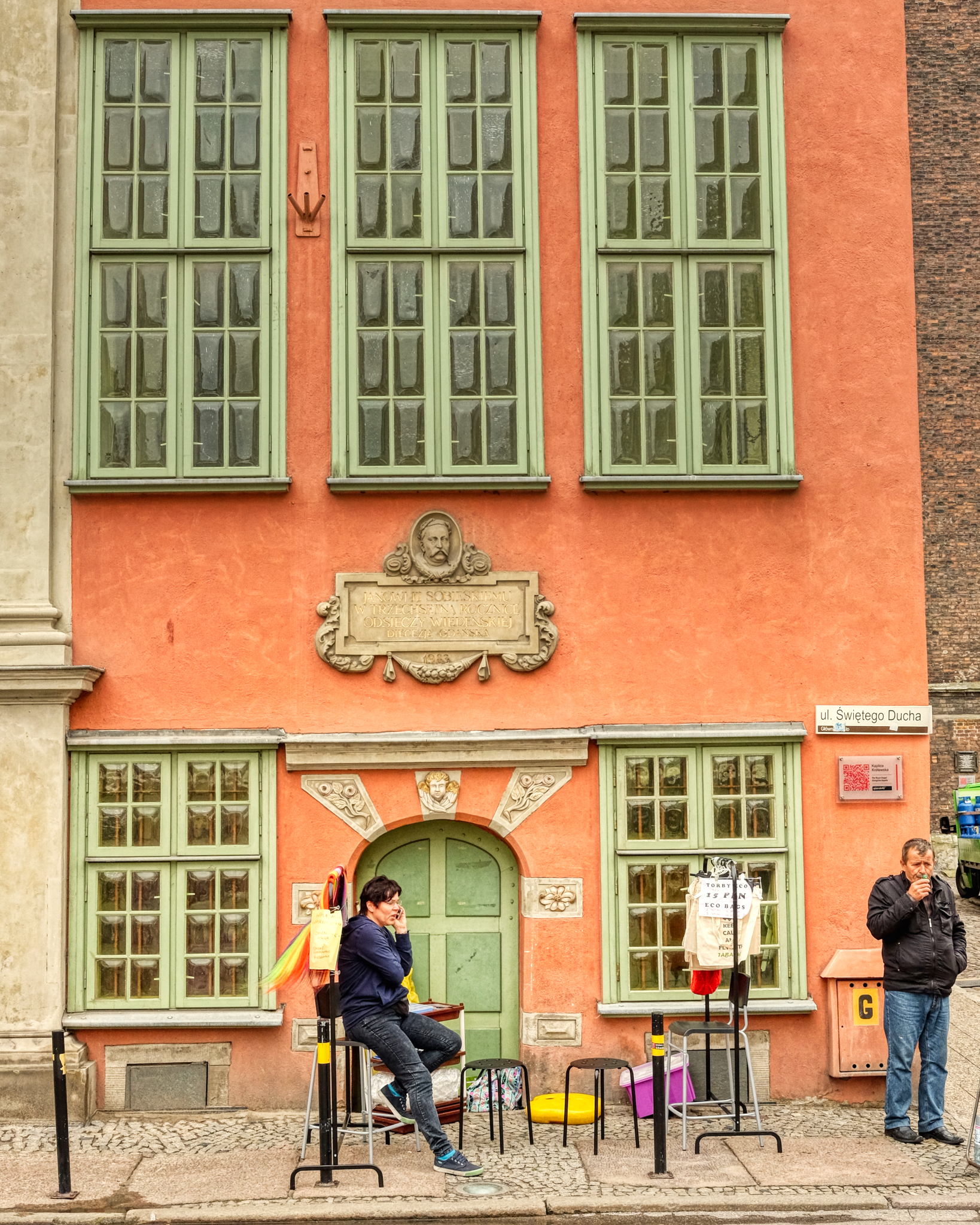 An old city filled with wonderful architecture.
An old city filled with wonderful architecture.
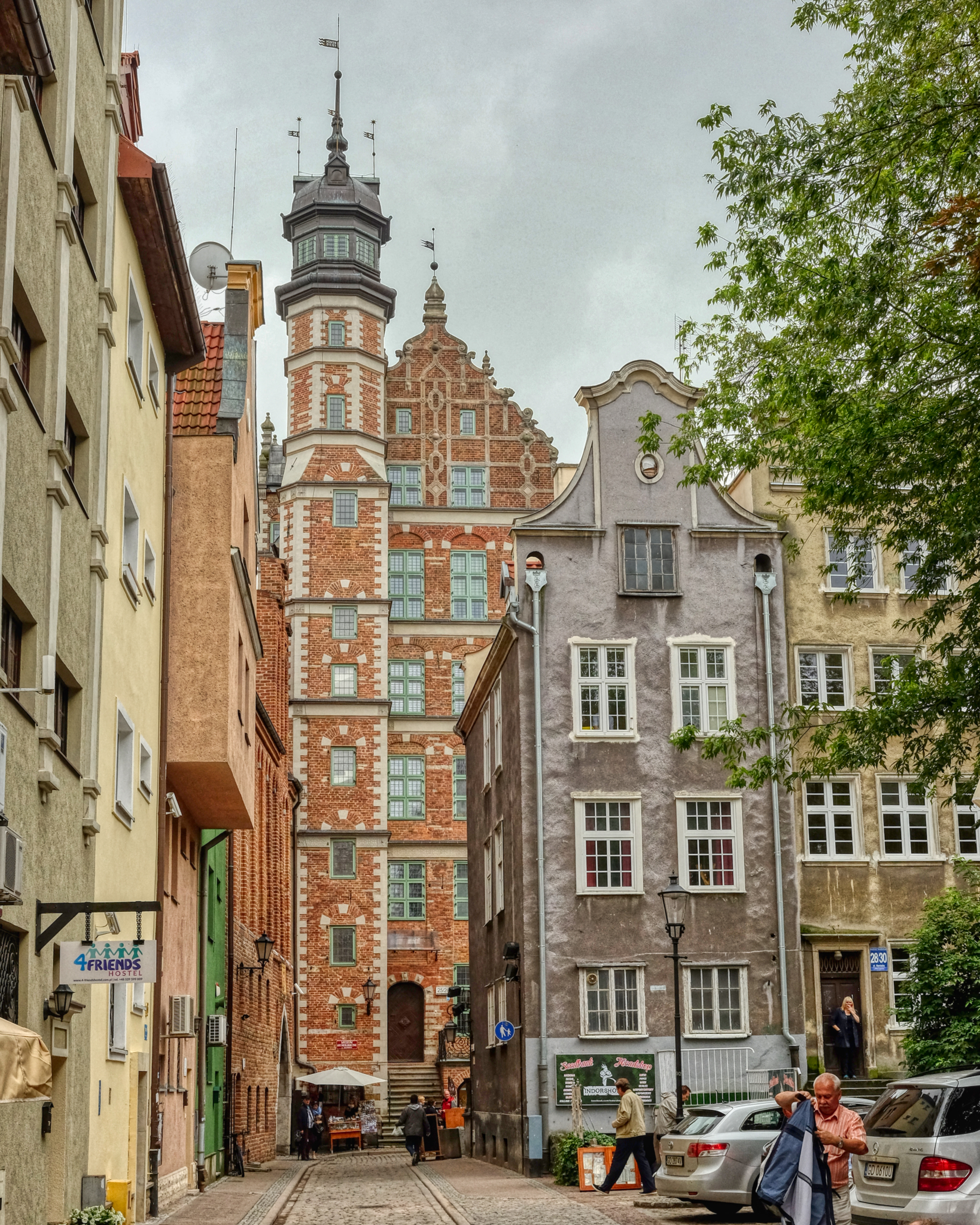 The architecture of Gdańsk tells a story: "Parts of the historic old city of Gdańsk, which had suffered large-scale destruction during the war, were rebuilt during the 1950s and 1960s. The reconstruction was not tied to the city's pre-war appearance, but instead was politically motivated as a means of culturally cleansing and destroying all traces of German influence from the city. Any traces of German tradition were ignored by the communists, suppressed, or regarded as Prussian barbarism only worthy of demolition, while communist and Flemish/Dutch, Italian and French influences were used to replace the historically accurate Germanic architecture which the city was built upon since the 14th century. [Citation]
The architecture of Gdańsk tells a story: "Parts of the historic old city of Gdańsk, which had suffered large-scale destruction during the war, were rebuilt during the 1950s and 1960s. The reconstruction was not tied to the city's pre-war appearance, but instead was politically motivated as a means of culturally cleansing and destroying all traces of German influence from the city. Any traces of German tradition were ignored by the communists, suppressed, or regarded as Prussian barbarism only worthy of demolition, while communist and Flemish/Dutch, Italian and French influences were used to replace the historically accurate Germanic architecture which the city was built upon since the 14th century. [Citation]
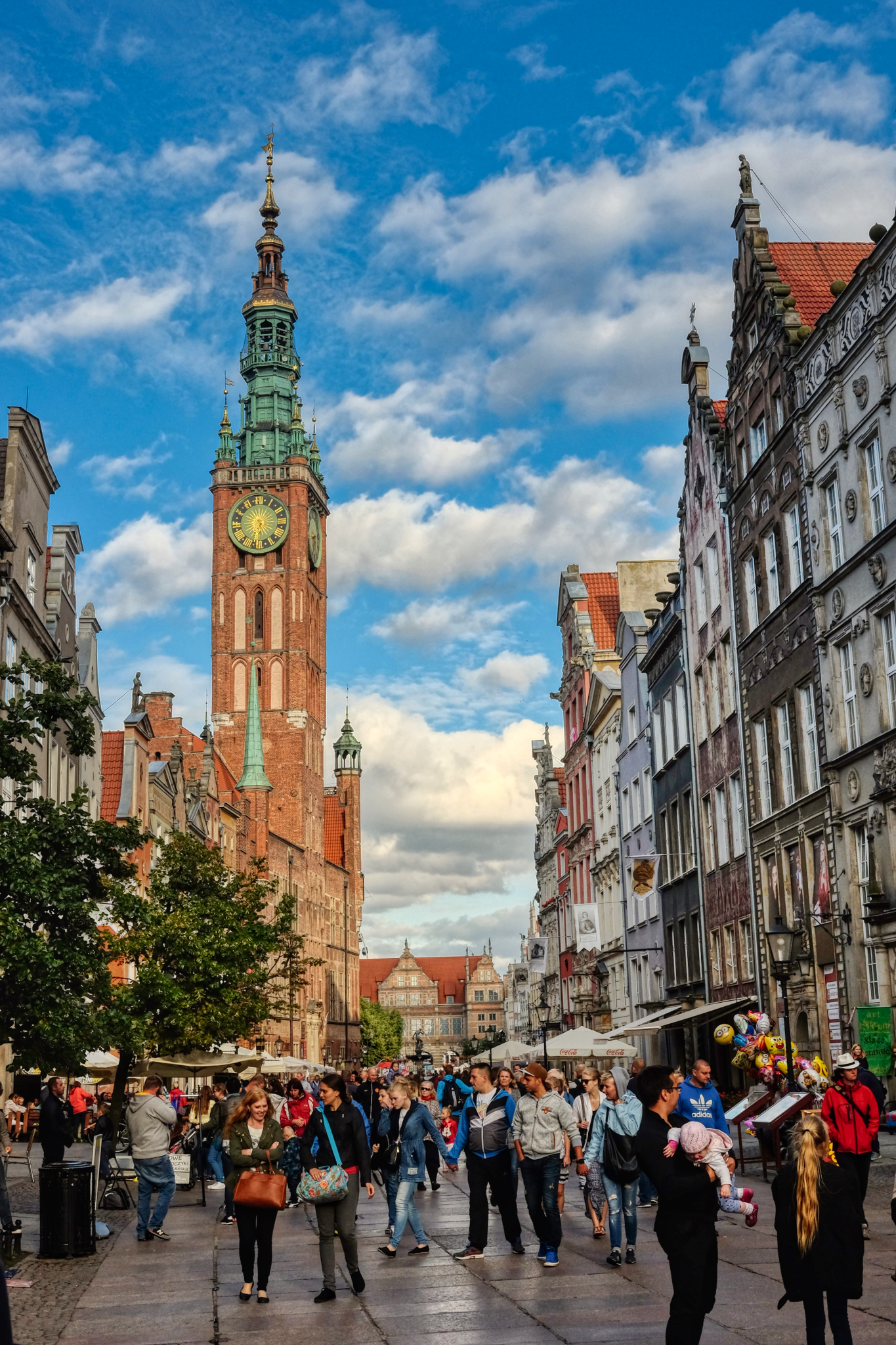 The Long Street with the old (circa 1327) City Hall towering over it.
The Long Street with the old (circa 1327) City Hall towering over it.
 Although I would have preferred to stay at an old 'boutique hotel,' we instead stayed at a modern 25 story hotel. The plus side of the modern hotel were the views over the city.
Although I would have preferred to stay at an old 'boutique hotel,' we instead stayed at a modern 25 story hotel. The plus side of the modern hotel were the views over the city.

Gdańsk was reduced to piles of stone and brick during WWII by Allied and Soviet bombers. Almost all of what you see here was reconstructed during the 1950s and 1960s.
 As luck would have it, we arrived in Gdańsk right in the middle of the annual St. Dominic's Fair. With 750 years of successful tradition, the history of the Fair goes back to the year 1260, when it was established by the decree of Pope Alexander IV.
As luck would have it, we arrived in Gdańsk right in the middle of the annual St. Dominic's Fair. With 750 years of successful tradition, the history of the Fair goes back to the year 1260, when it was established by the decree of Pope Alexander IV.
 St. Dominic's Fair brought tourists from all over Poland, Europe, and the Far East.
St. Dominic's Fair brought tourists from all over Poland, Europe, and the Far East.
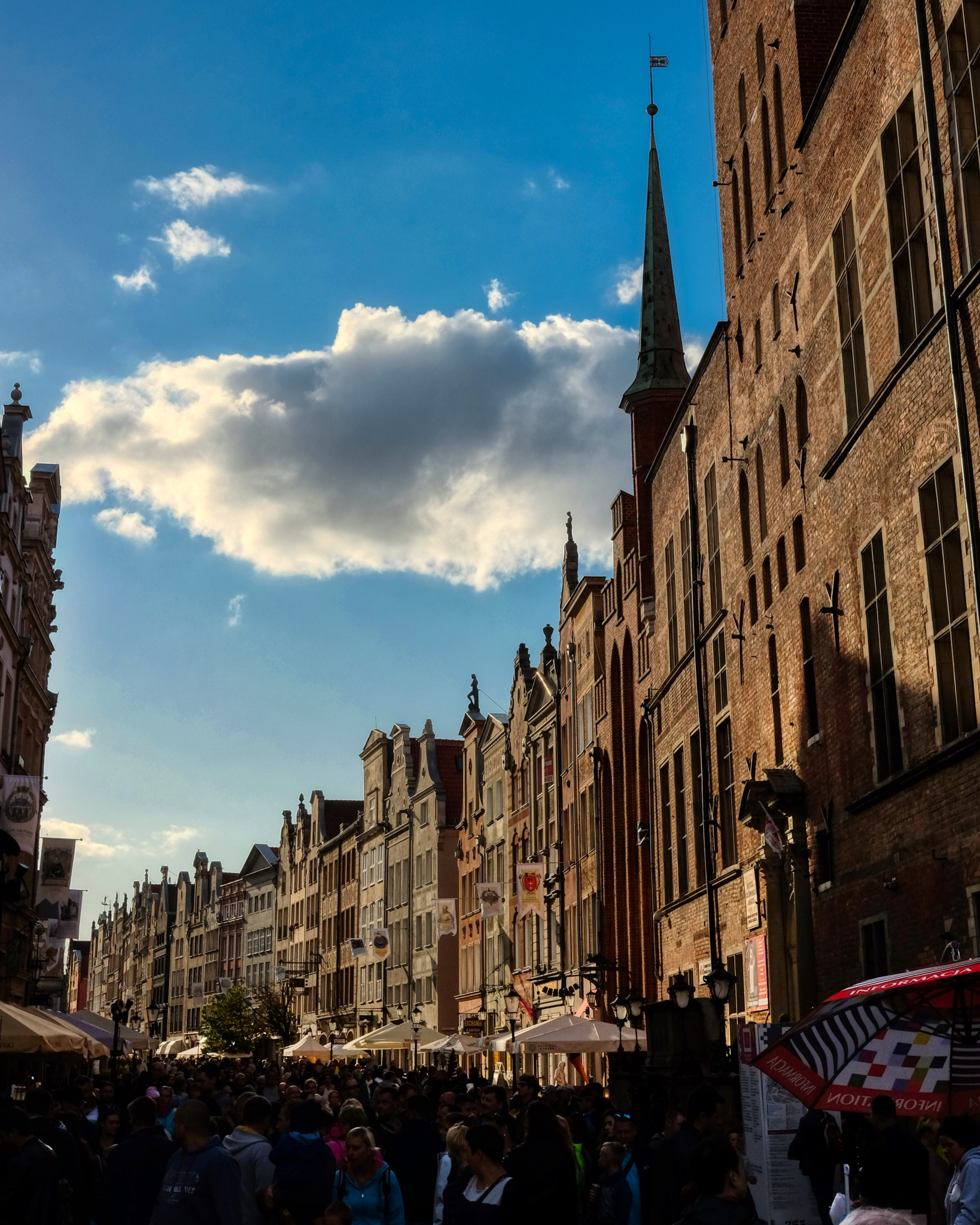 Every street in the city was set up with stalls selling food and crafts. It was the biggest street food and crafts fair I have ever seen!
Every street in the city was set up with stalls selling food and crafts. It was the biggest street food and crafts fair I have ever seen!
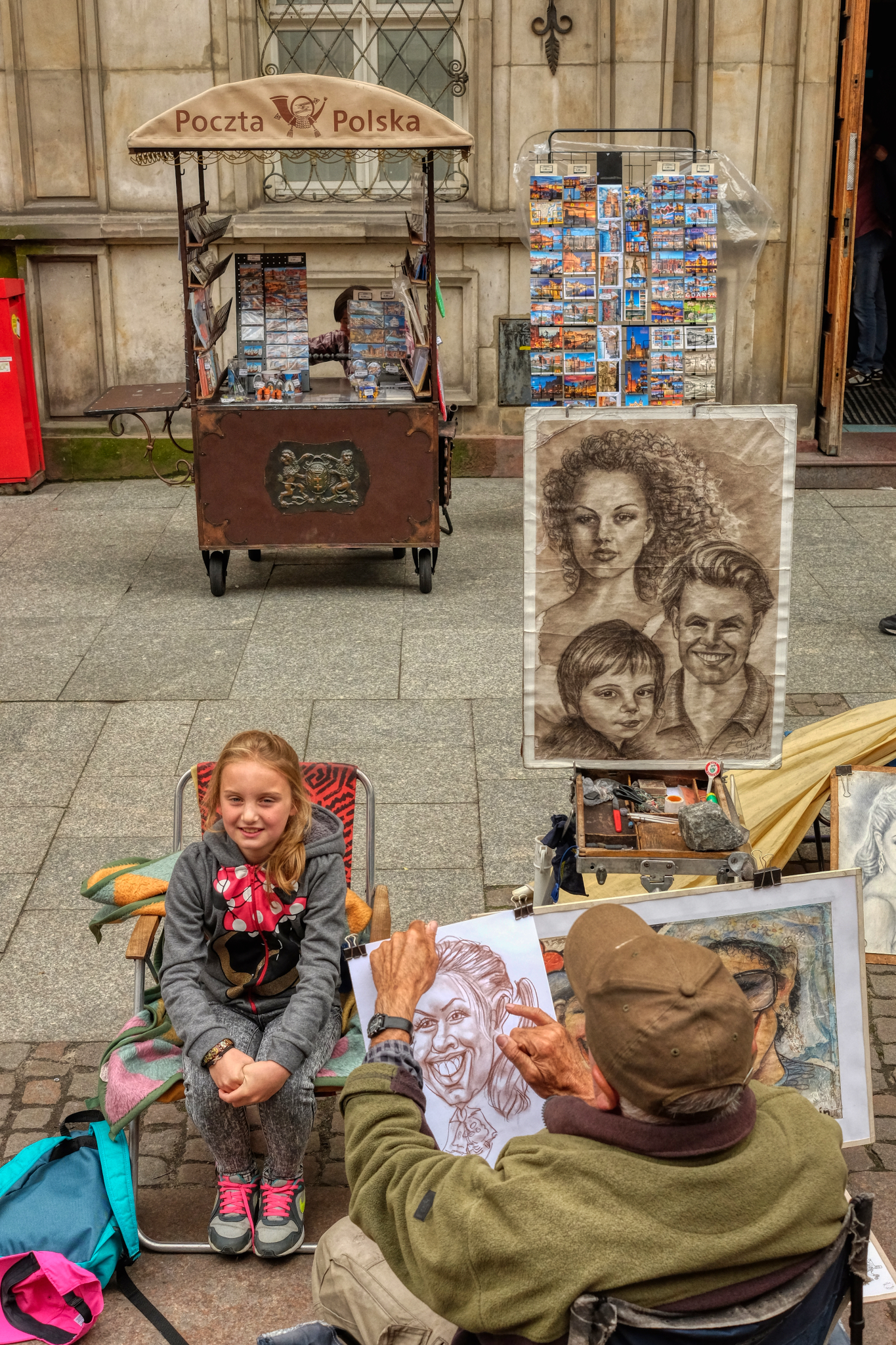
In addition to the street stalls, the fair attracted artists . . .
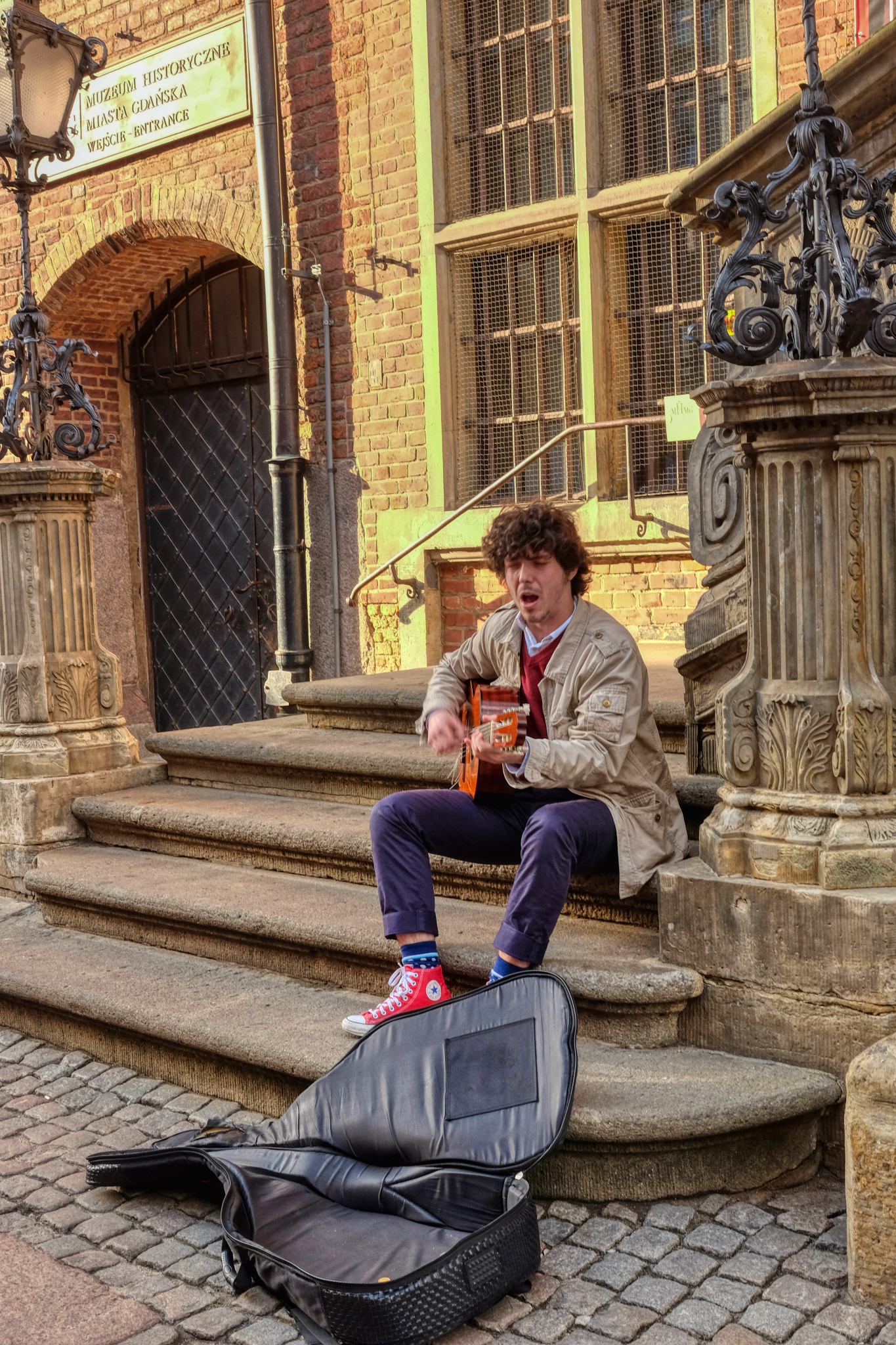
. . . buskers . . .
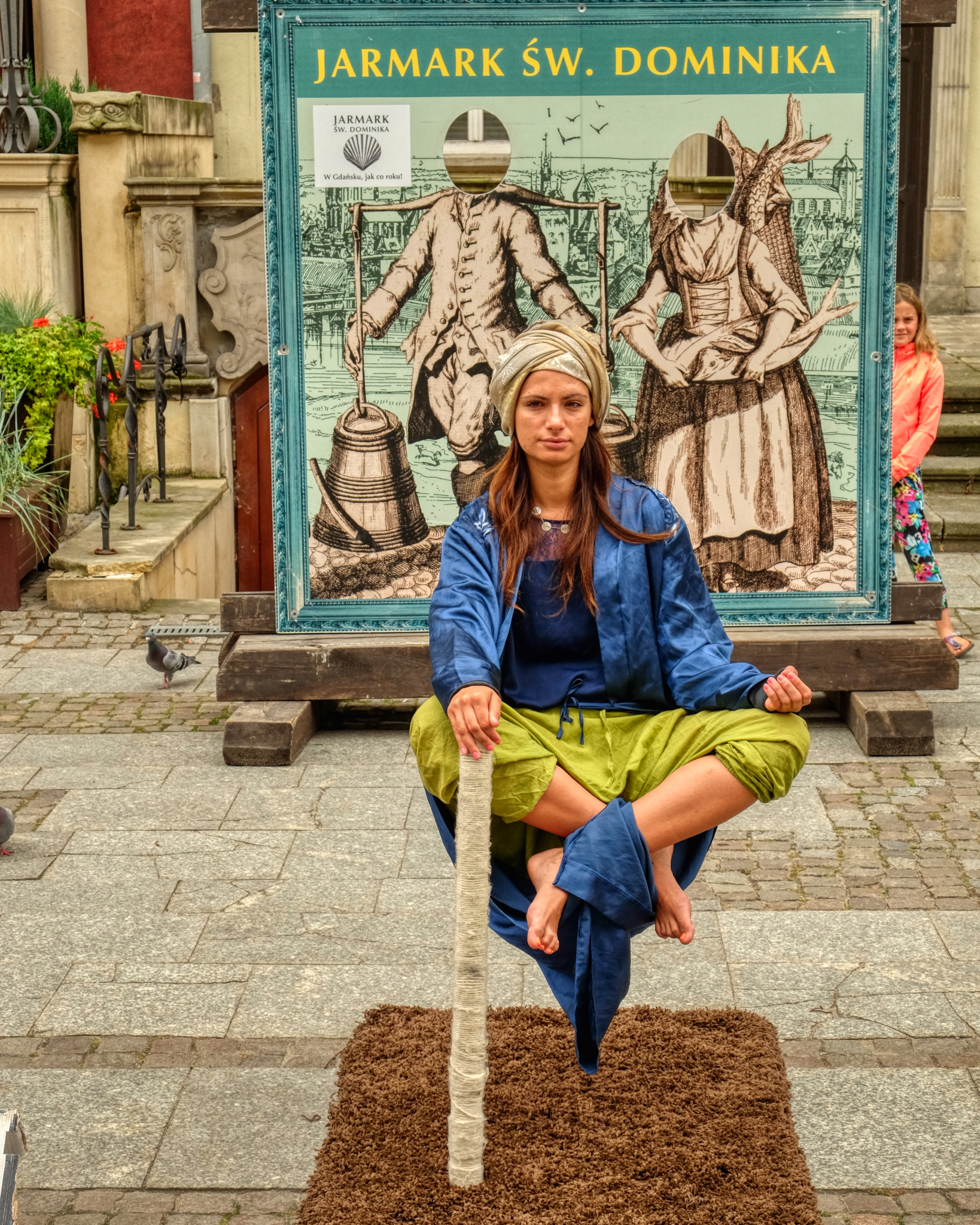 . . . street performers . . .
. . . street performers . . .
 . . . morose balloon salesperson . . .
. . . morose balloon salesperson . . .
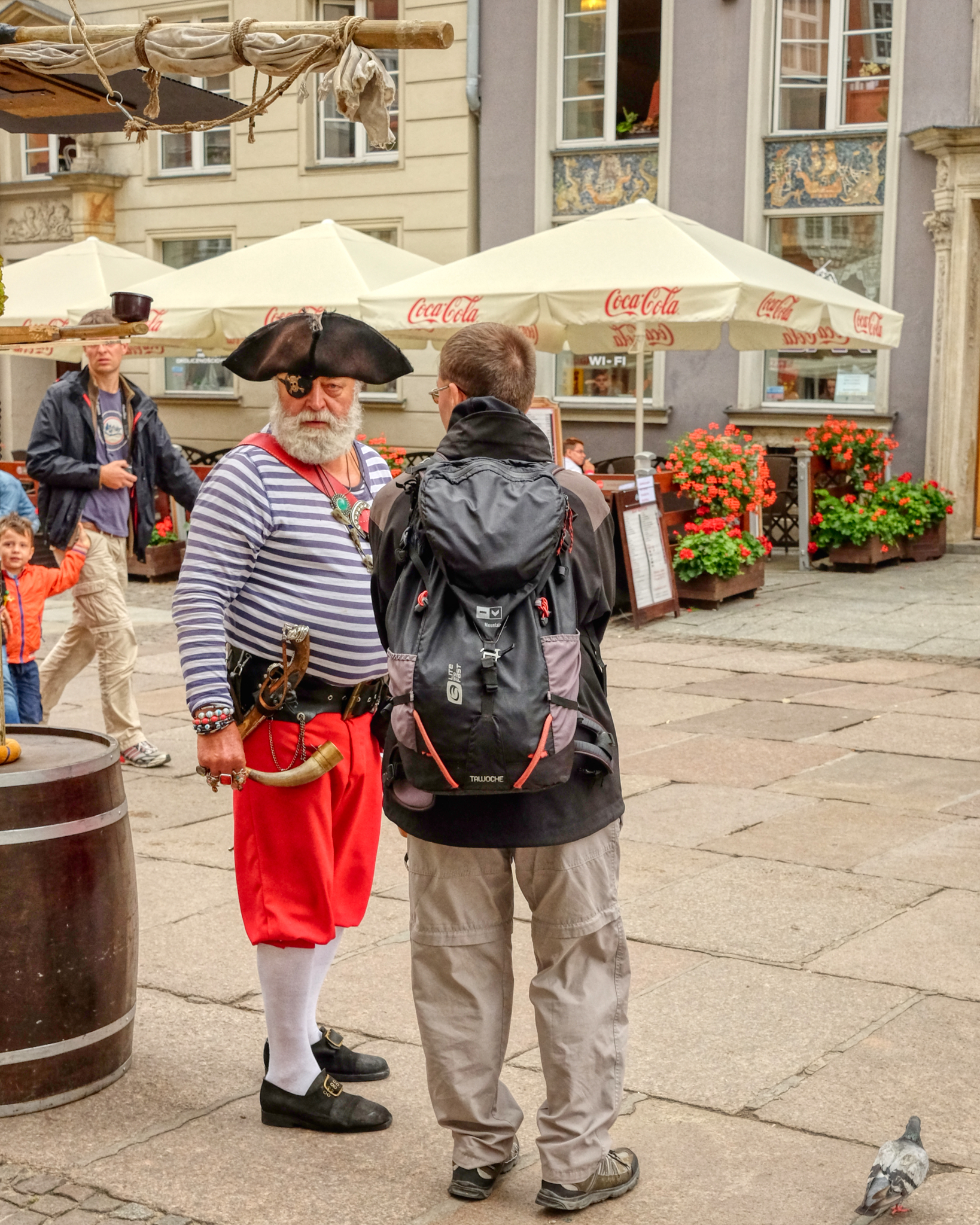 . . . historically costumed information givers . . . giving me the Evil Eye! YAR!
. . . historically costumed information givers . . . giving me the Evil Eye! YAR!
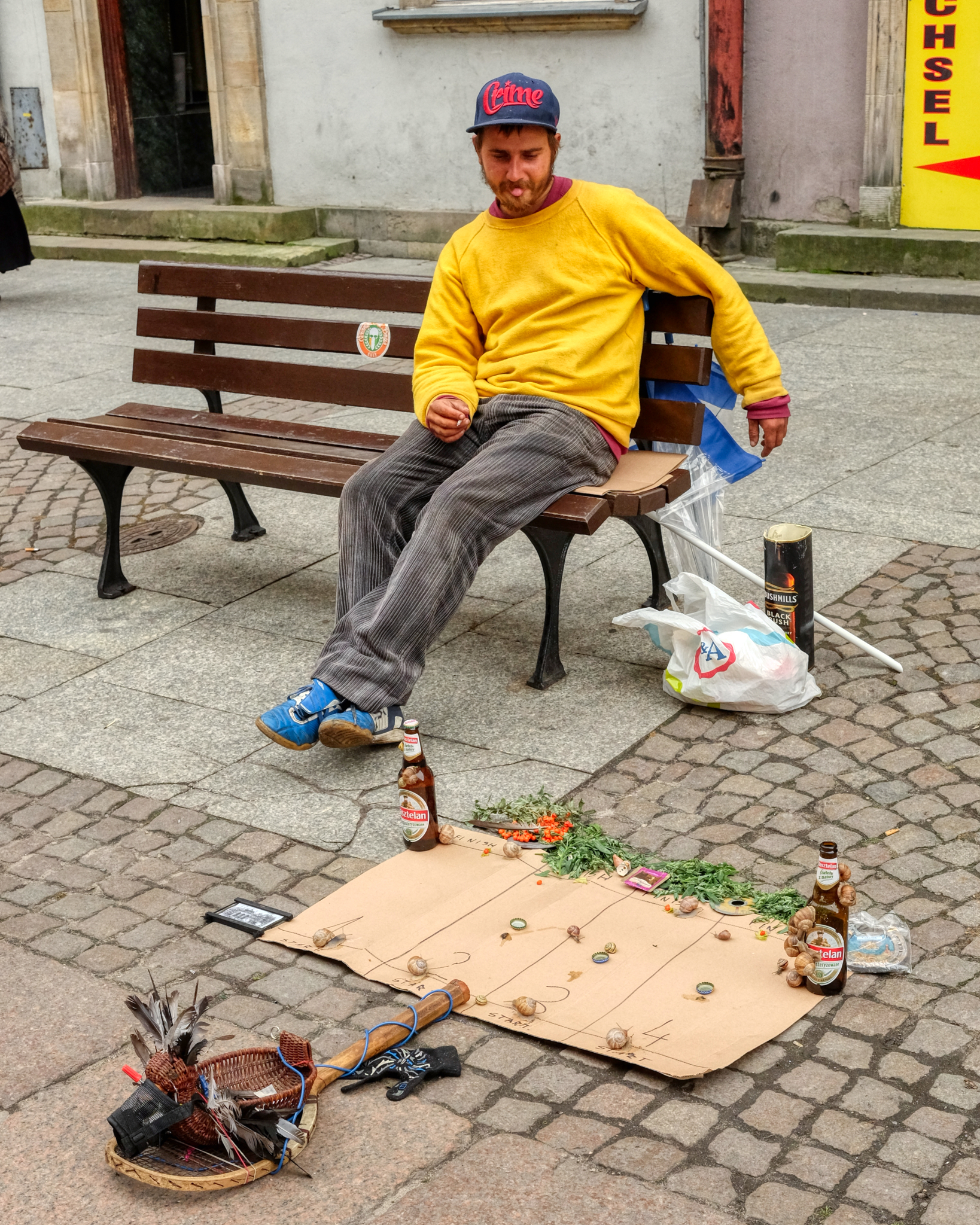 . . . and this guy (wearing a hat that said Crime!) who tried to entice the tourists to wager on his 'snail races.' The street fair was, in many ways, still like its medieval origins.
. . . and this guy (wearing a hat that said Crime!) who tried to entice the tourists to wager on his 'snail races.' The street fair was, in many ways, still like its medieval origins.
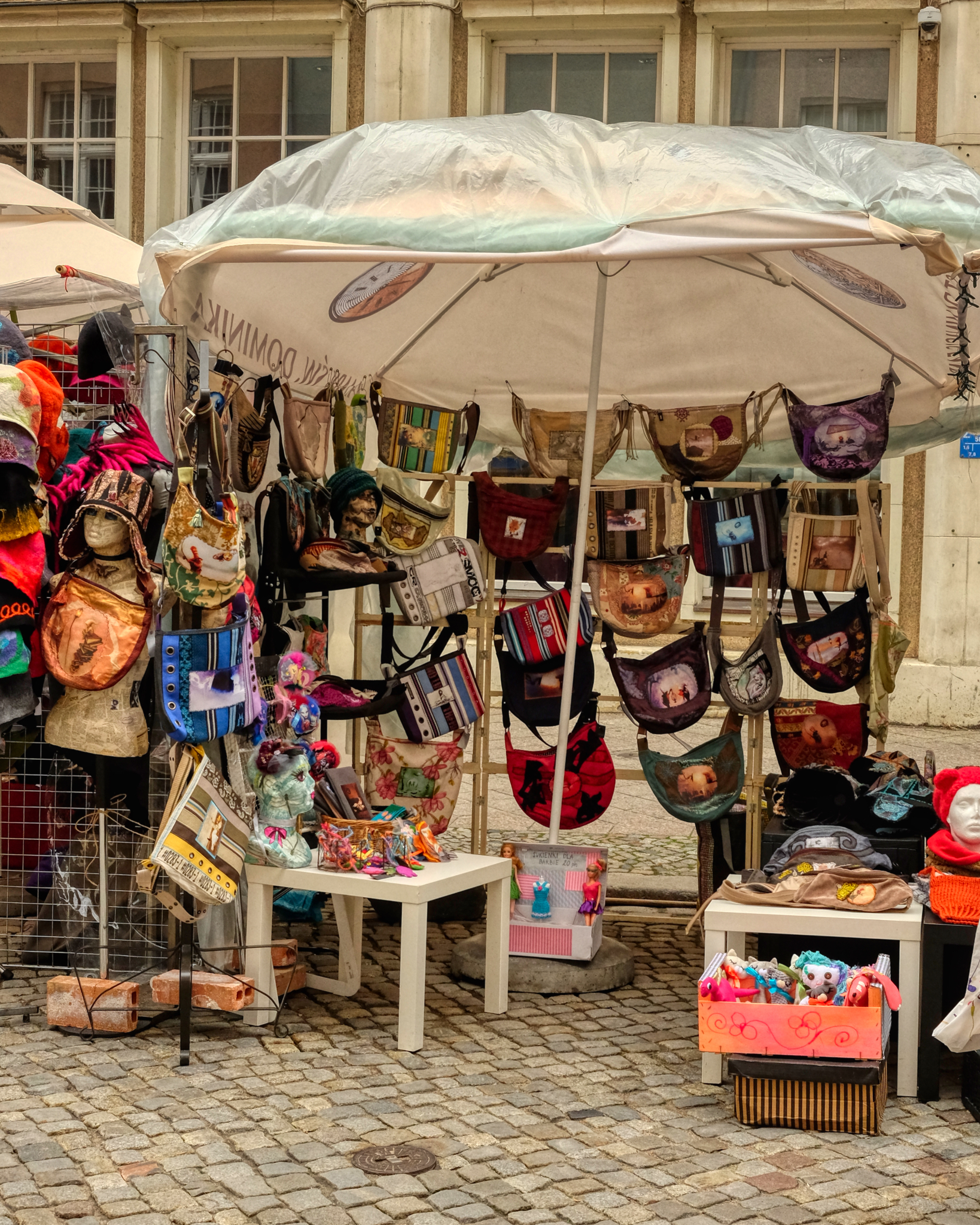 We enjoyed shopping at the many interesting crafts stalls.
We enjoyed shopping at the many interesting crafts stalls.
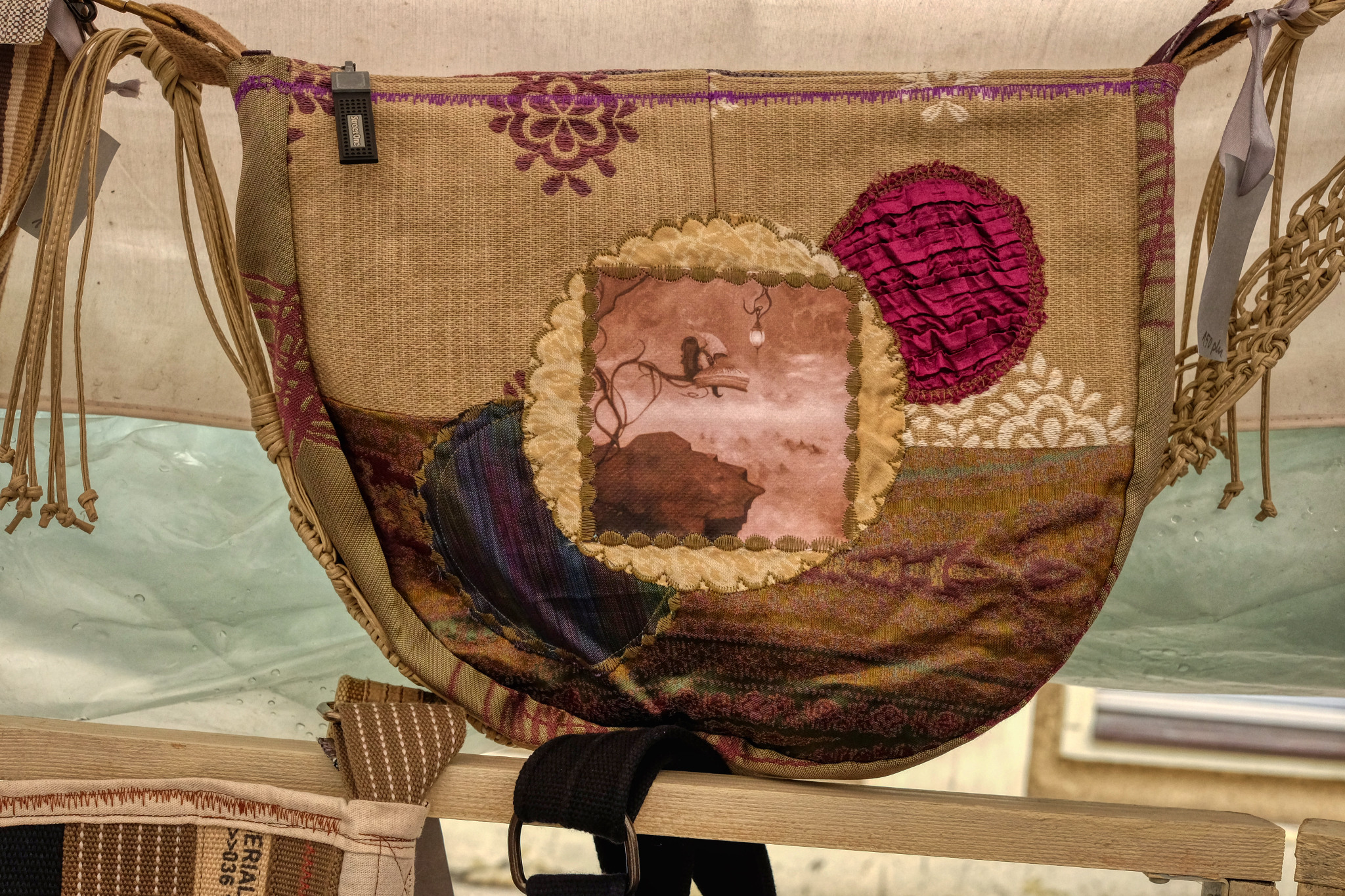 Interesting bags . . .
Interesting bags . . .
 . . . very cool hats . . .
. . . very cool hats . . .
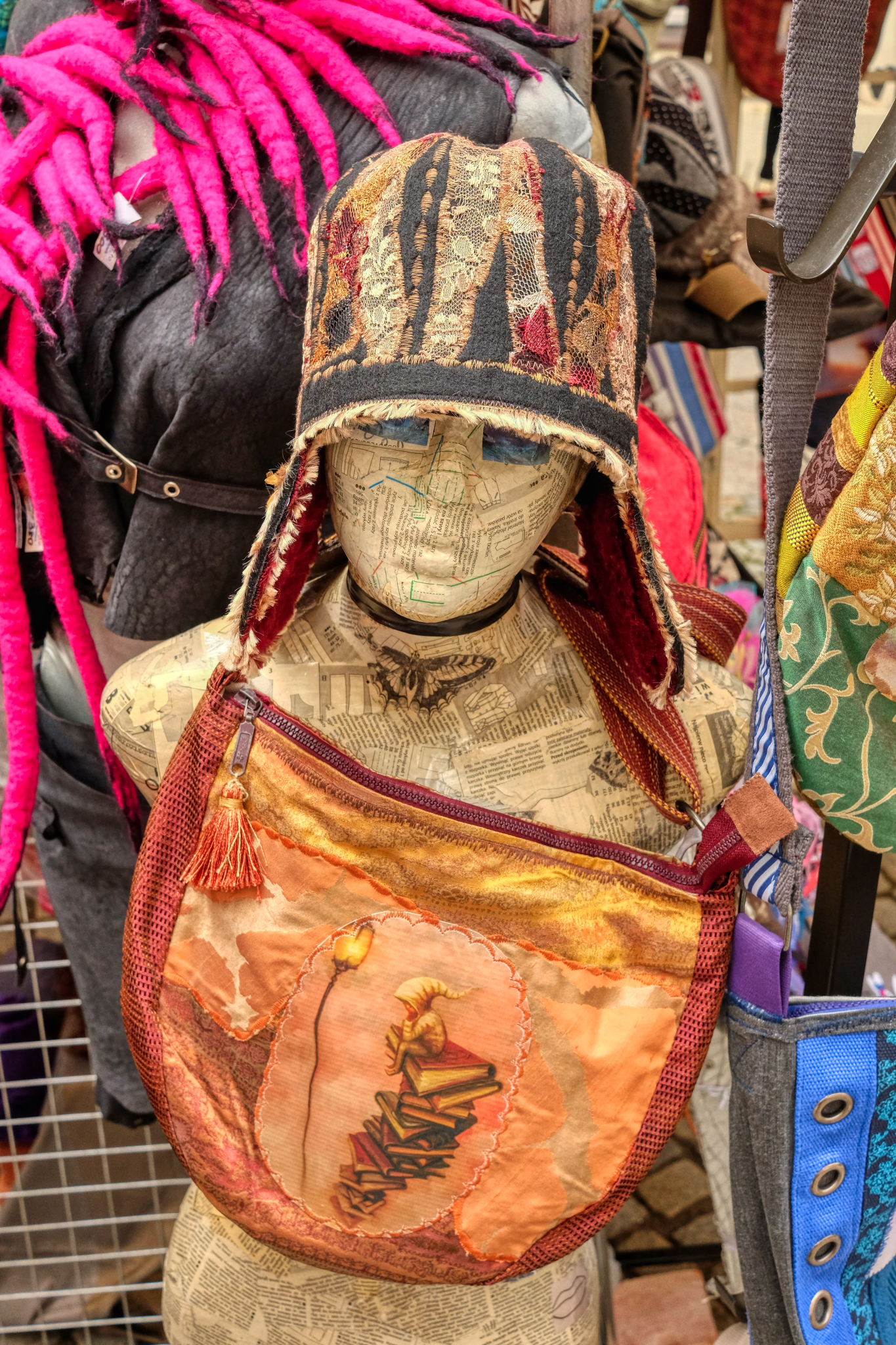 . . . very cool hat and bag! There were some very unusual arts at the fair.
. . . very cool hat and bag! There were some very unusual arts at the fair.
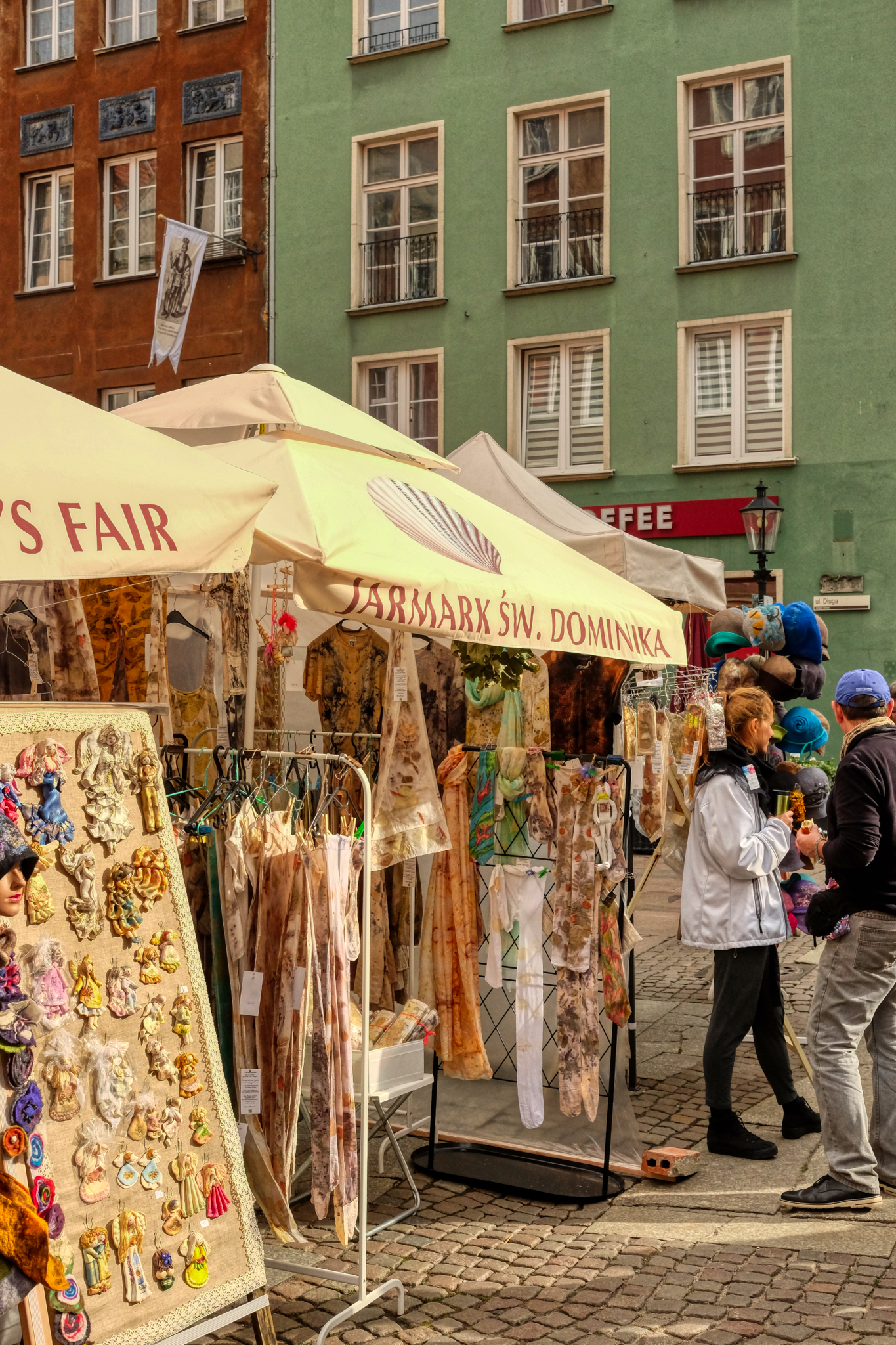 Many beautiful textiles on sale. We bought many things at the these stalls to take back home to Scotland with us. I bought a hat!
Many beautiful textiles on sale. We bought many things at the these stalls to take back home to Scotland with us. I bought a hat!
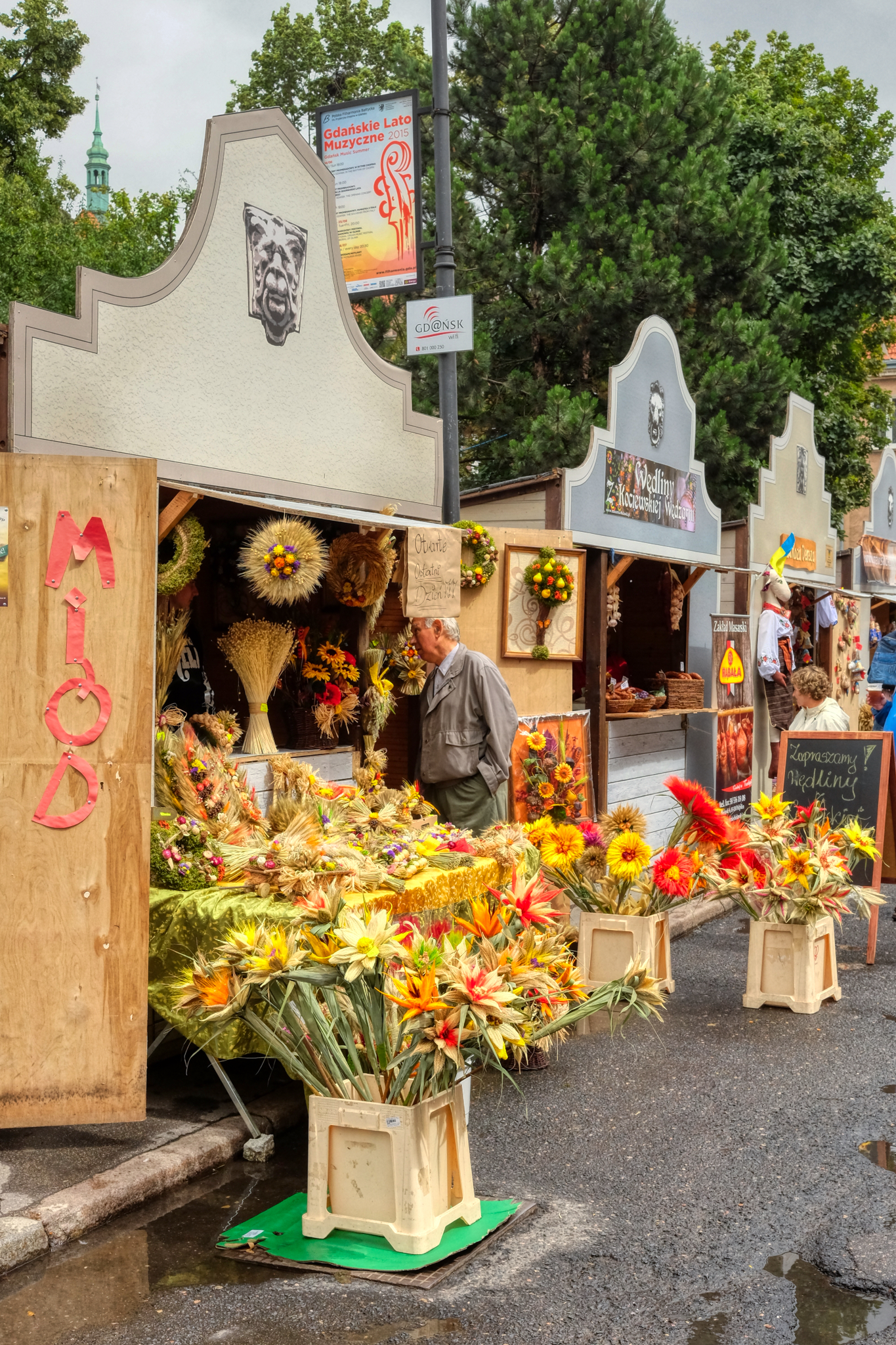 These street stalls were so cute: they mimicked the style of the Gdańsk buildings.
These street stalls were so cute: they mimicked the style of the Gdańsk buildings.
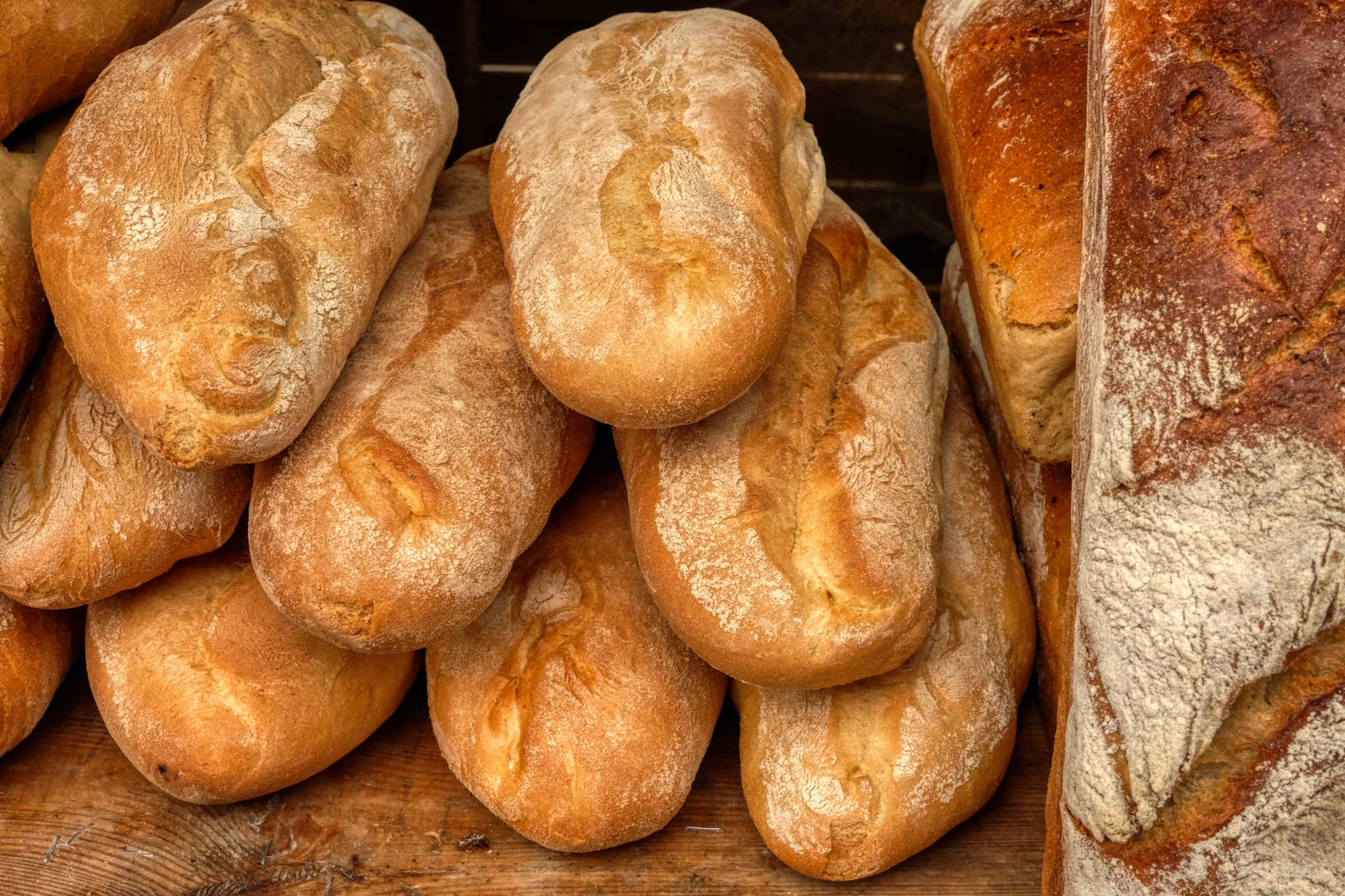 The textiles, hats, and bags were nice . . . but the variety of FOOD at the festival was incredible!!!
The textiles, hats, and bags were nice . . . but the variety of FOOD at the festival was incredible!!!
The breads were fantastic!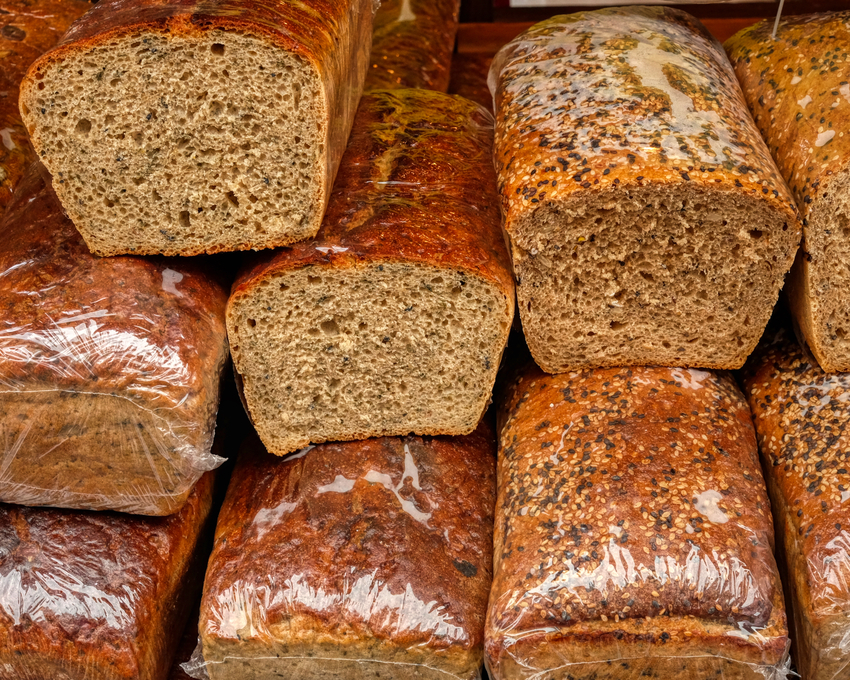
The breads were fantastic!
 I was in pig heaven for sausage lovers like me!
I was in pig heaven for sausage lovers like me!
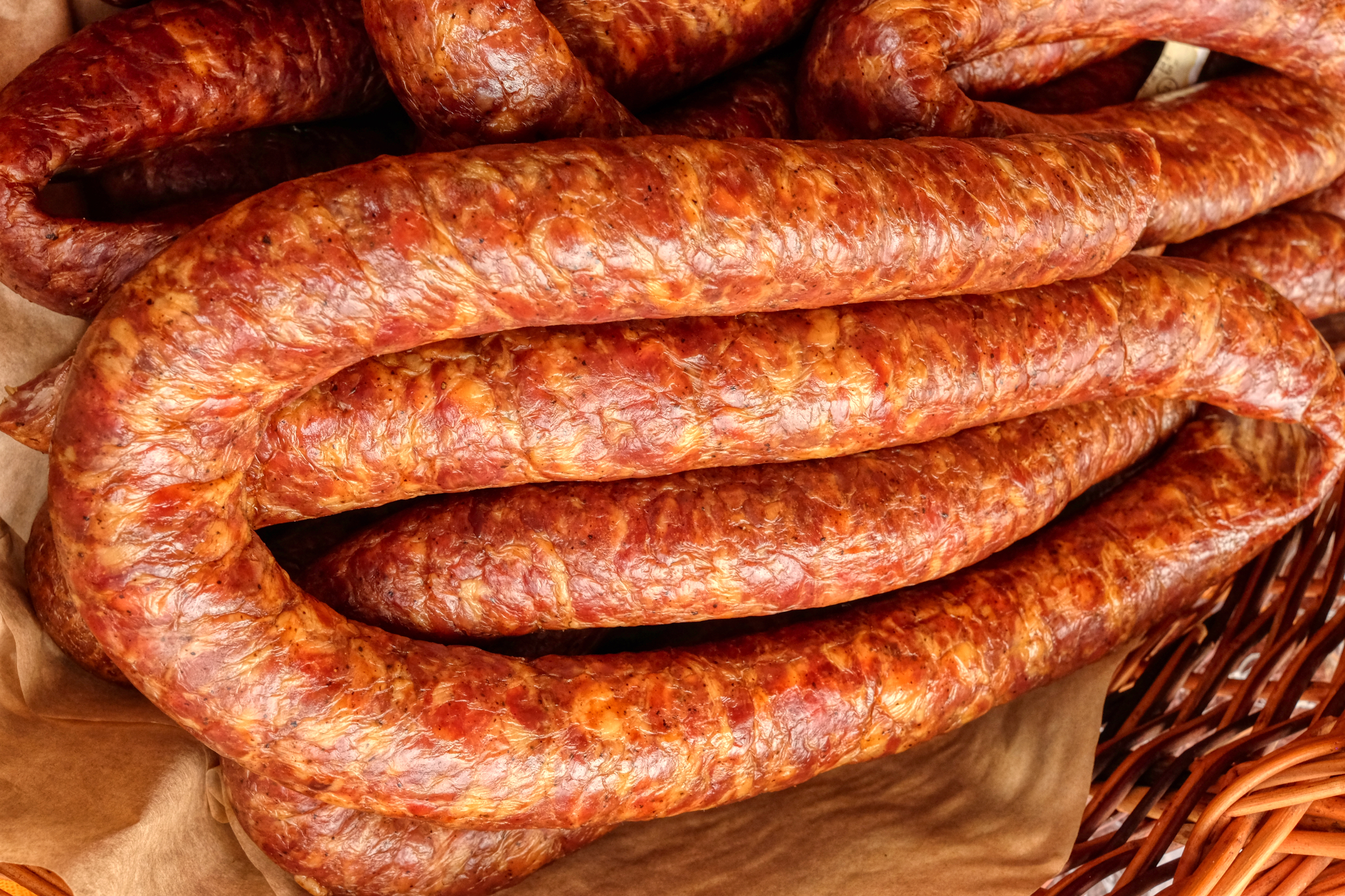 SAUSAGE!!!!
SAUSAGE!!!!
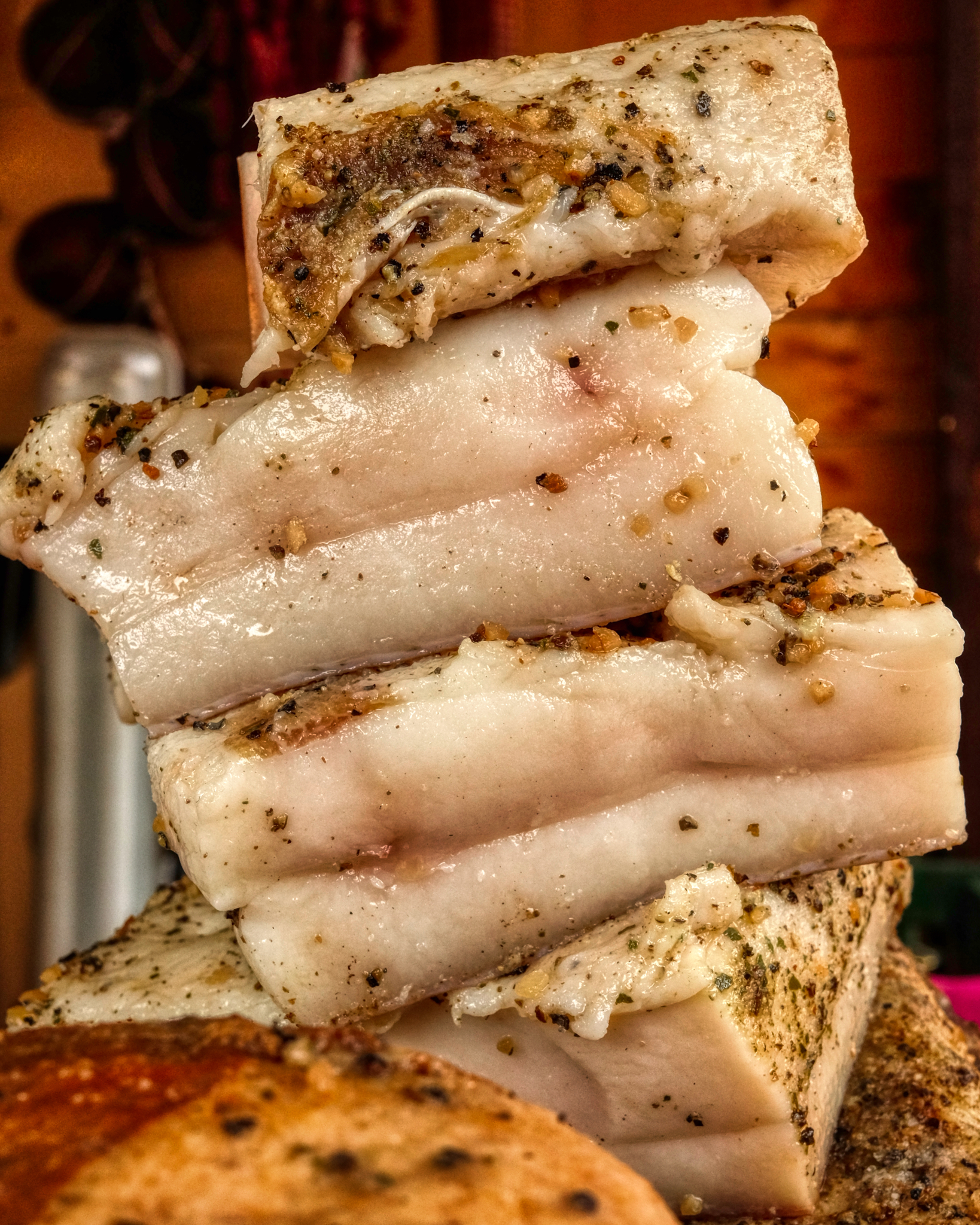 I loved cured and smoked pork fat as a child . . . a few thin slabs on a piece of peasant bread . . . mmmmmm! But I resisted!
I loved cured and smoked pork fat as a child . . . a few thin slabs on a piece of peasant bread . . . mmmmmm! But I resisted!
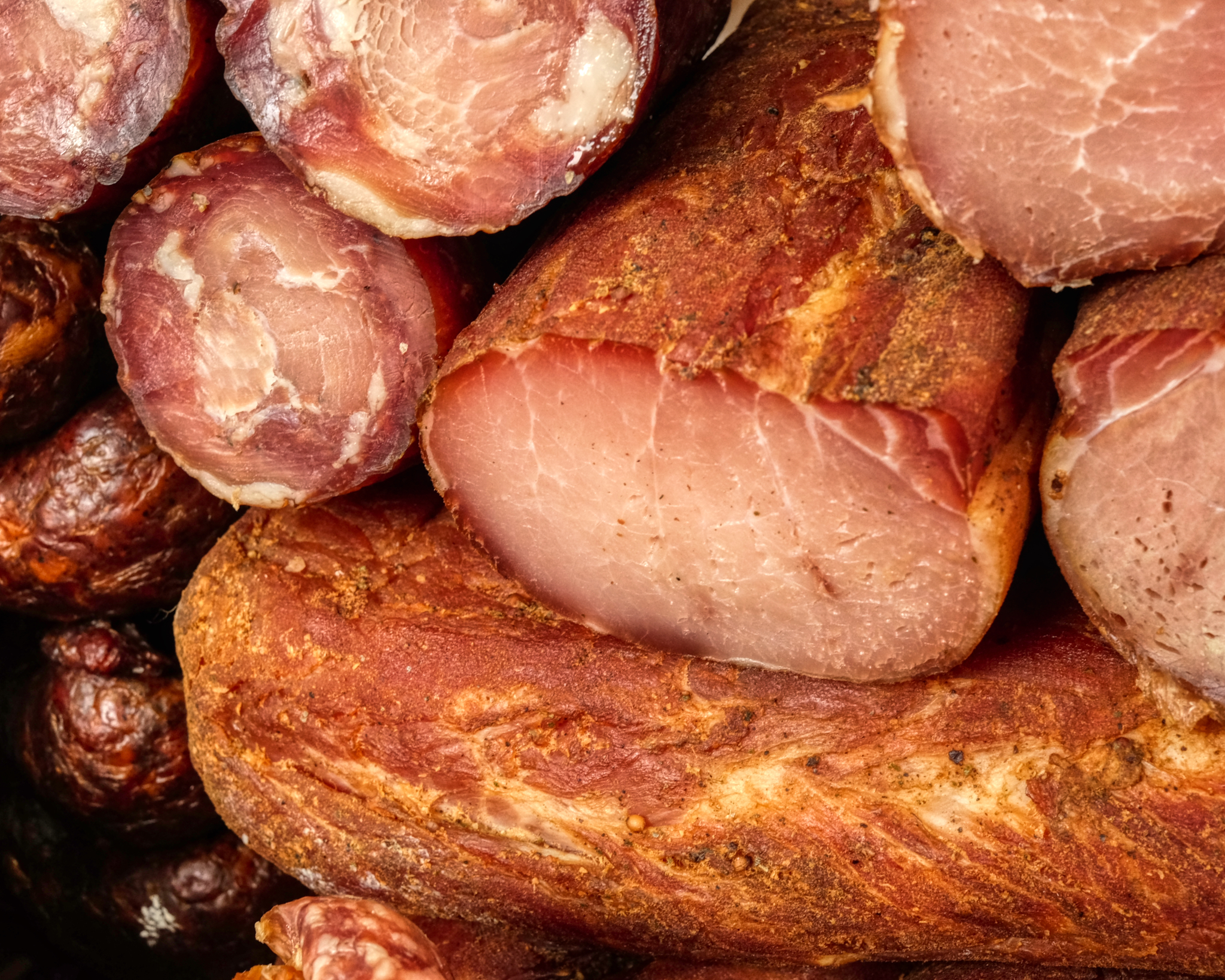 Cures and smoked meats . . . a very Eastern European way of eating . . . and so very tasty!
Cures and smoked meats . . . a very Eastern European way of eating . . . and so very tasty!
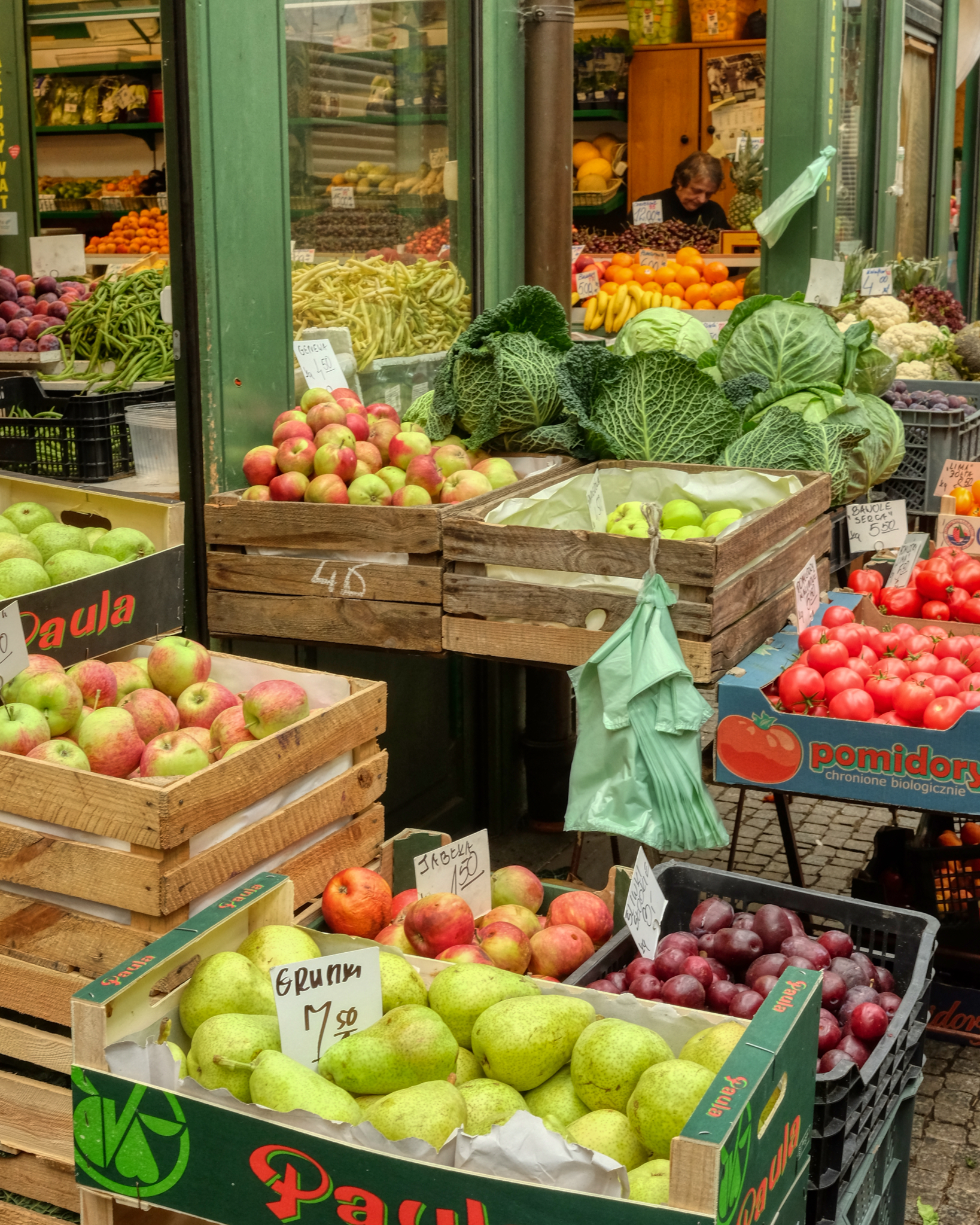 Many of the shops put their fruits and vegetables out on the street.
Many of the shops put their fruits and vegetables out on the street.
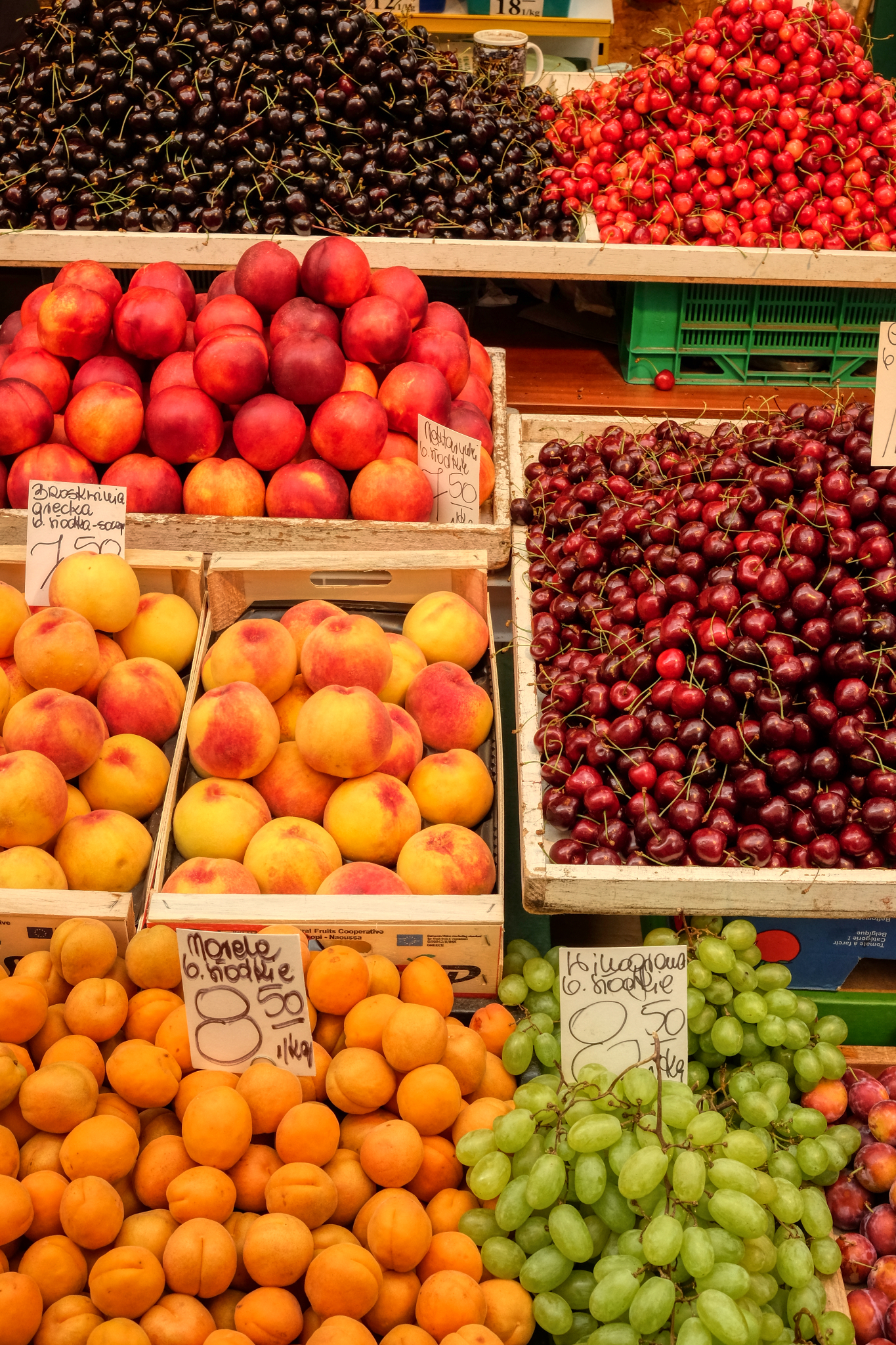 Temperate climate fruits are a real treat for us. These kinds of fruit in Bangkok cost a small fortune, so we went crazy living in Europe for a few years.
Temperate climate fruits are a real treat for us. These kinds of fruit in Bangkok cost a small fortune, so we went crazy living in Europe for a few years.
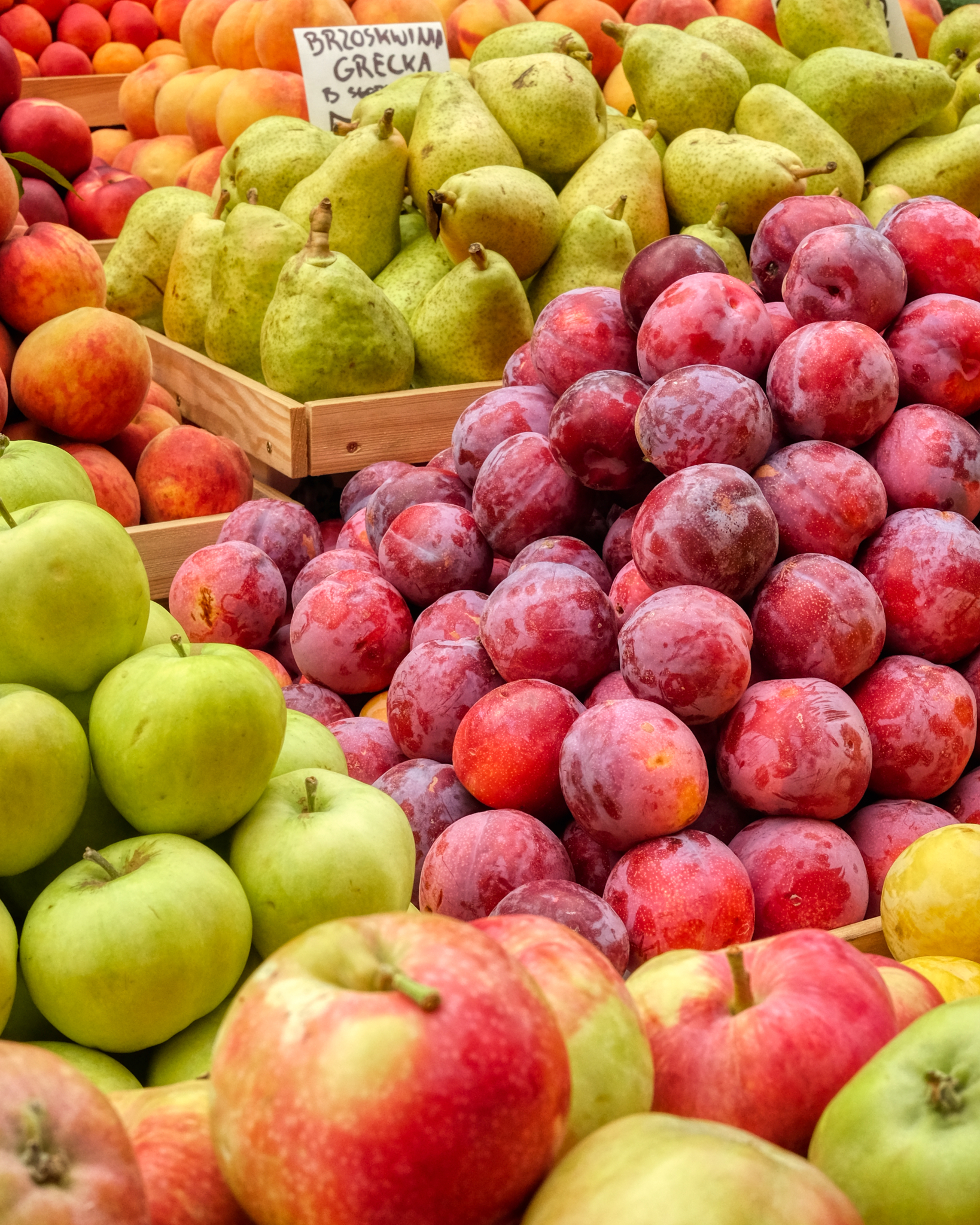 Lovely fruit.
Lovely fruit.
 Whole heads of sunflowers . . . that's the way to sell sunflower seeds!
Whole heads of sunflowers . . . that's the way to sell sunflower seeds!
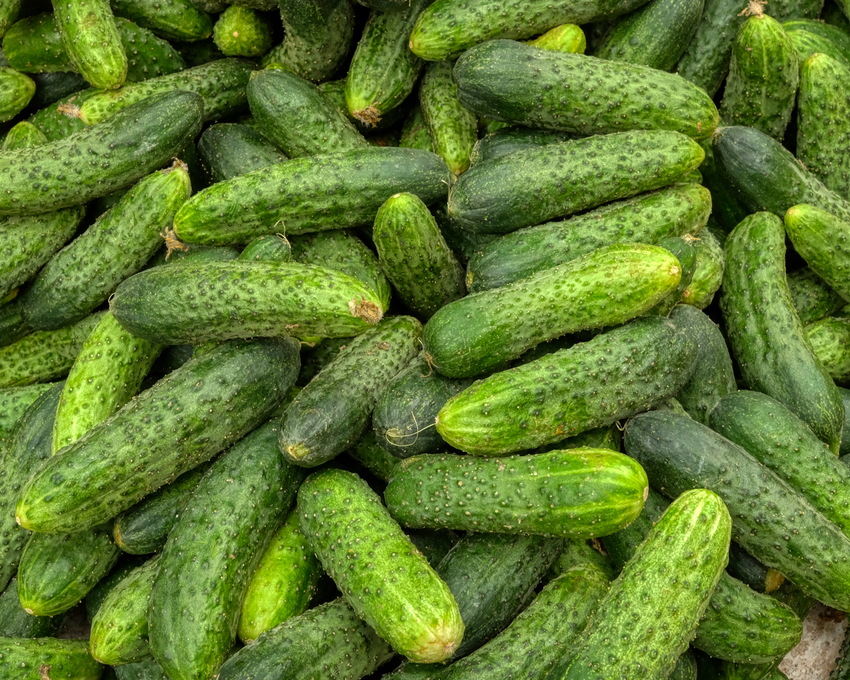 Fresh, crispy cucumbers!
Fresh, crispy cucumbers!
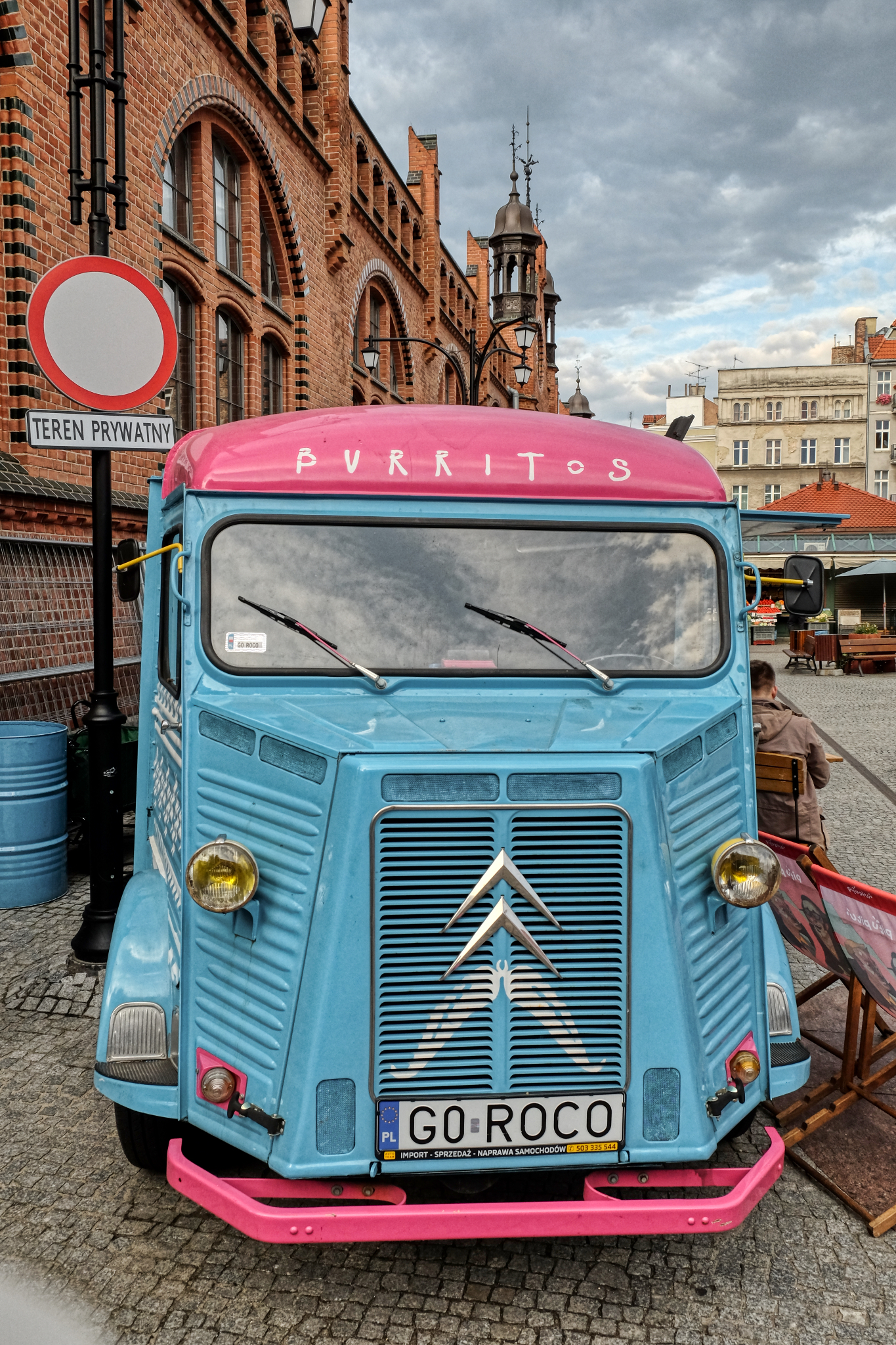 They had every kind of street food at the fair, including this actual Burrito Truck! Amazing! (I didn't buy one, and immediately regreted it!)
They had every kind of street food at the fair, including this actual Burrito Truck! Amazing! (I didn't buy one, and immediately regreted it!)
 We bought a lot at the wooden spoon stand to take back home to our cottage in Scotland.
We bought a lot at the wooden spoon stand to take back home to our cottage in Scotland.
 A dealer of art and socks . . .
A dealer of art and socks . . .
 A woman set up her stool and sold her own crocheted items. Sweet.
A woman set up her stool and sold her own crocheted items. Sweet.
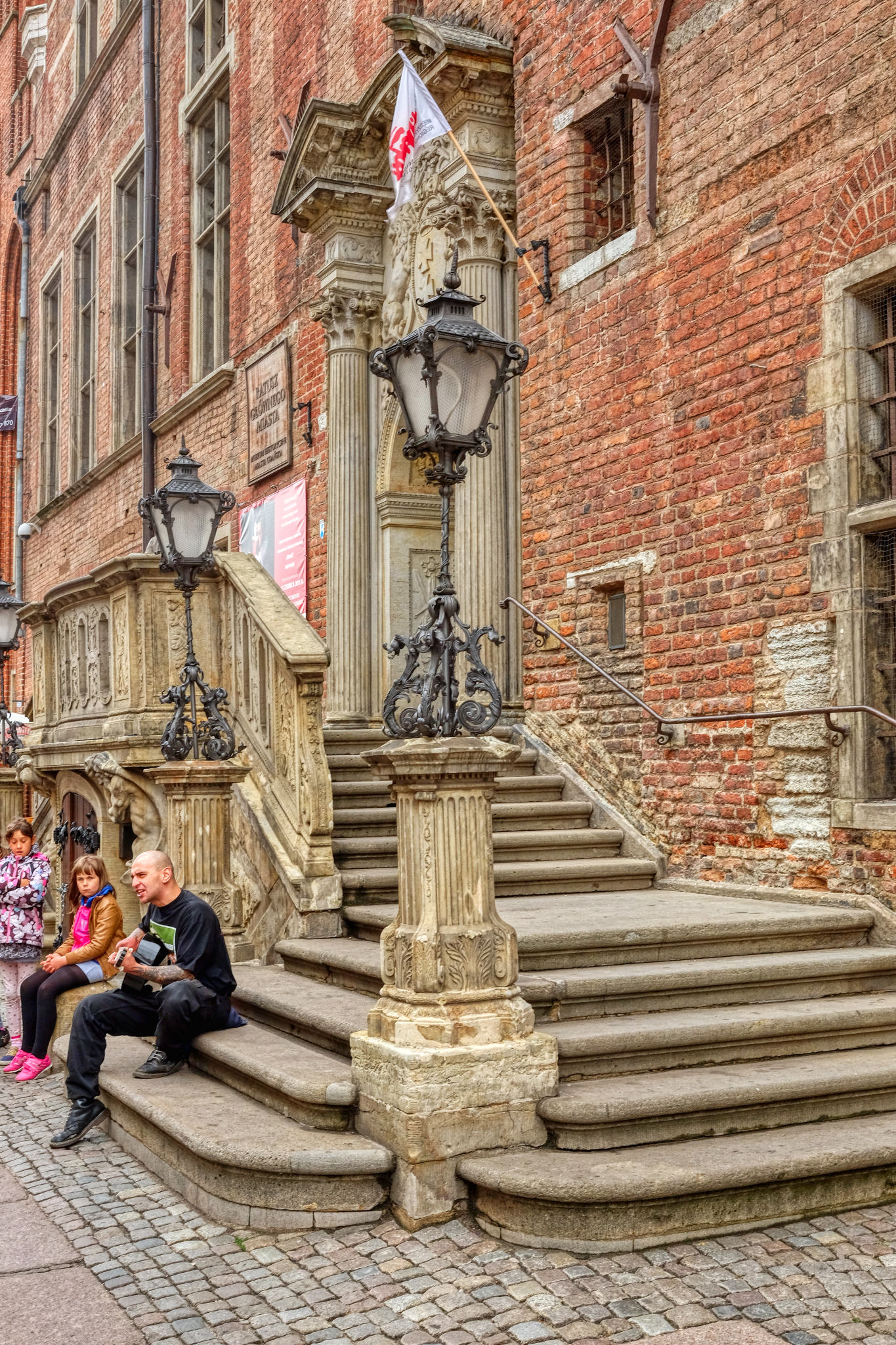 There were many buskers, but this guy was exceptionally good.
There were many buskers, but this guy was exceptionally good.
 The weather varied from bright sunshine to dark clouds and sudden bursts of rain.
The weather varied from bright sunshine to dark clouds and sudden bursts of rain.
 We found thee perfect Old Europe restaurant . . .
We found thee perfect Old Europe restaurant . . .
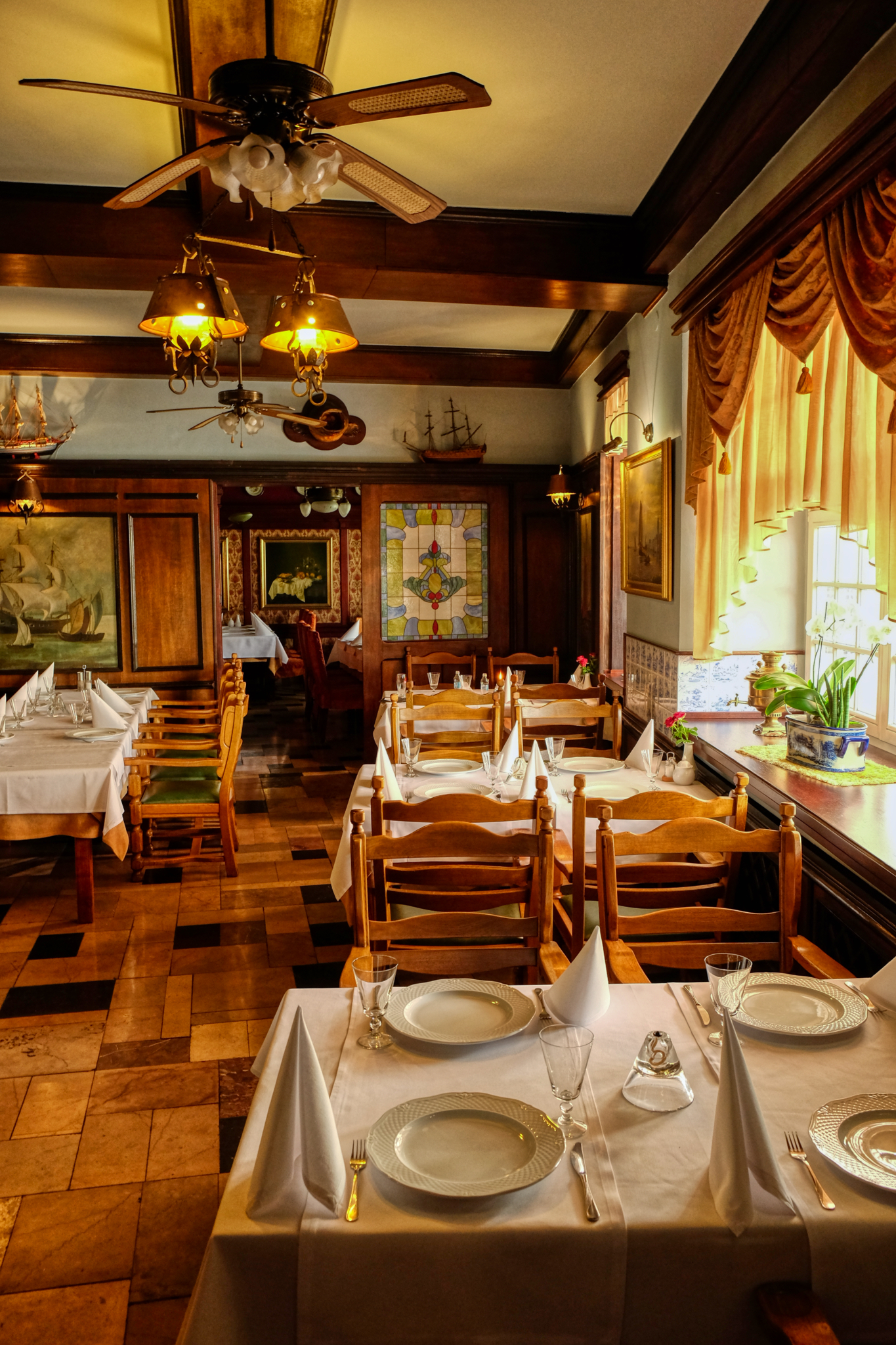 We were hungry for lunch and found this charming old restaurant.
We were hungry for lunch and found this charming old restaurant.
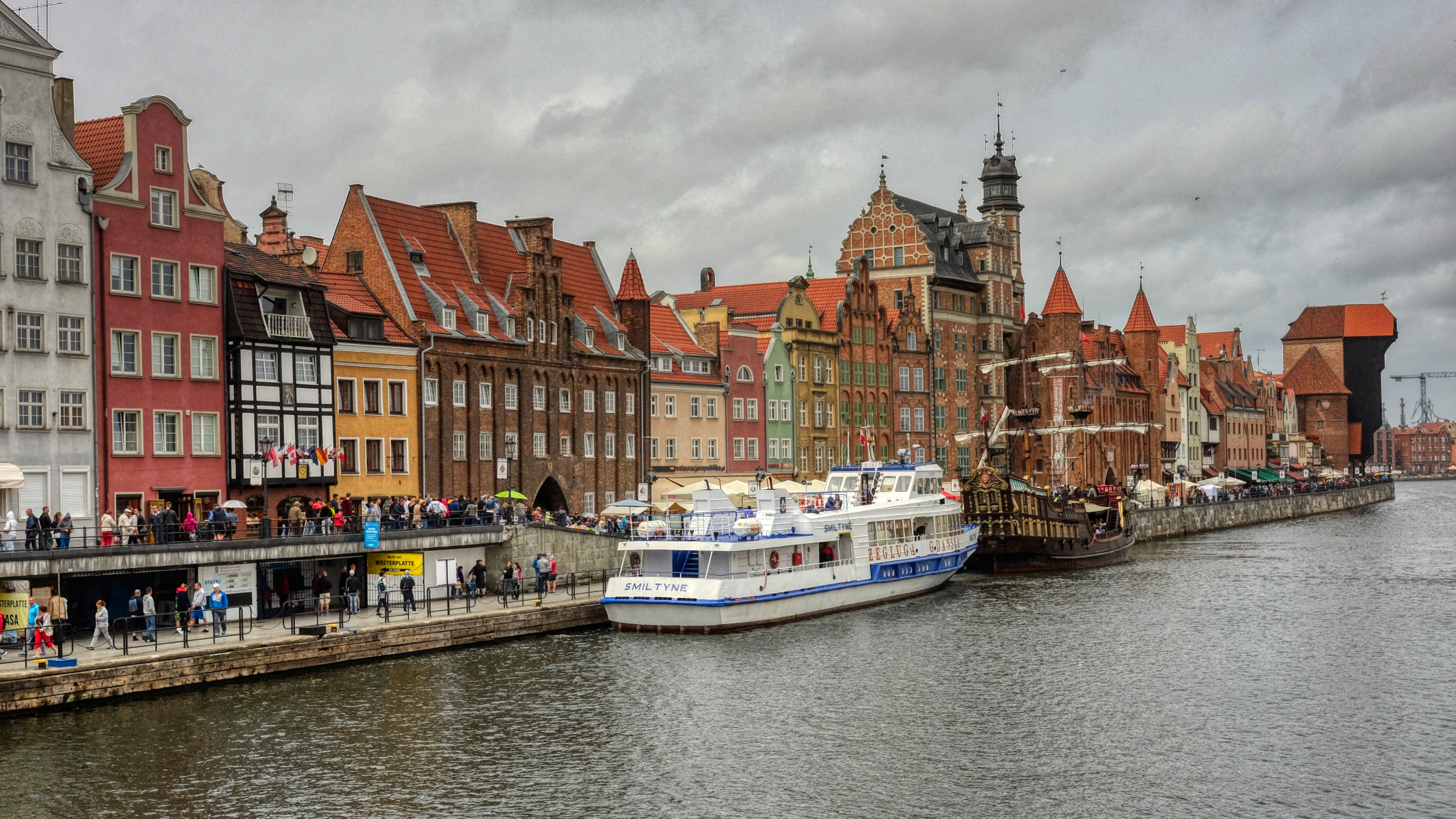 Down along the river quay. A fine medieval dock crane on the far left.
Down along the river quay. A fine medieval dock crane on the far left.
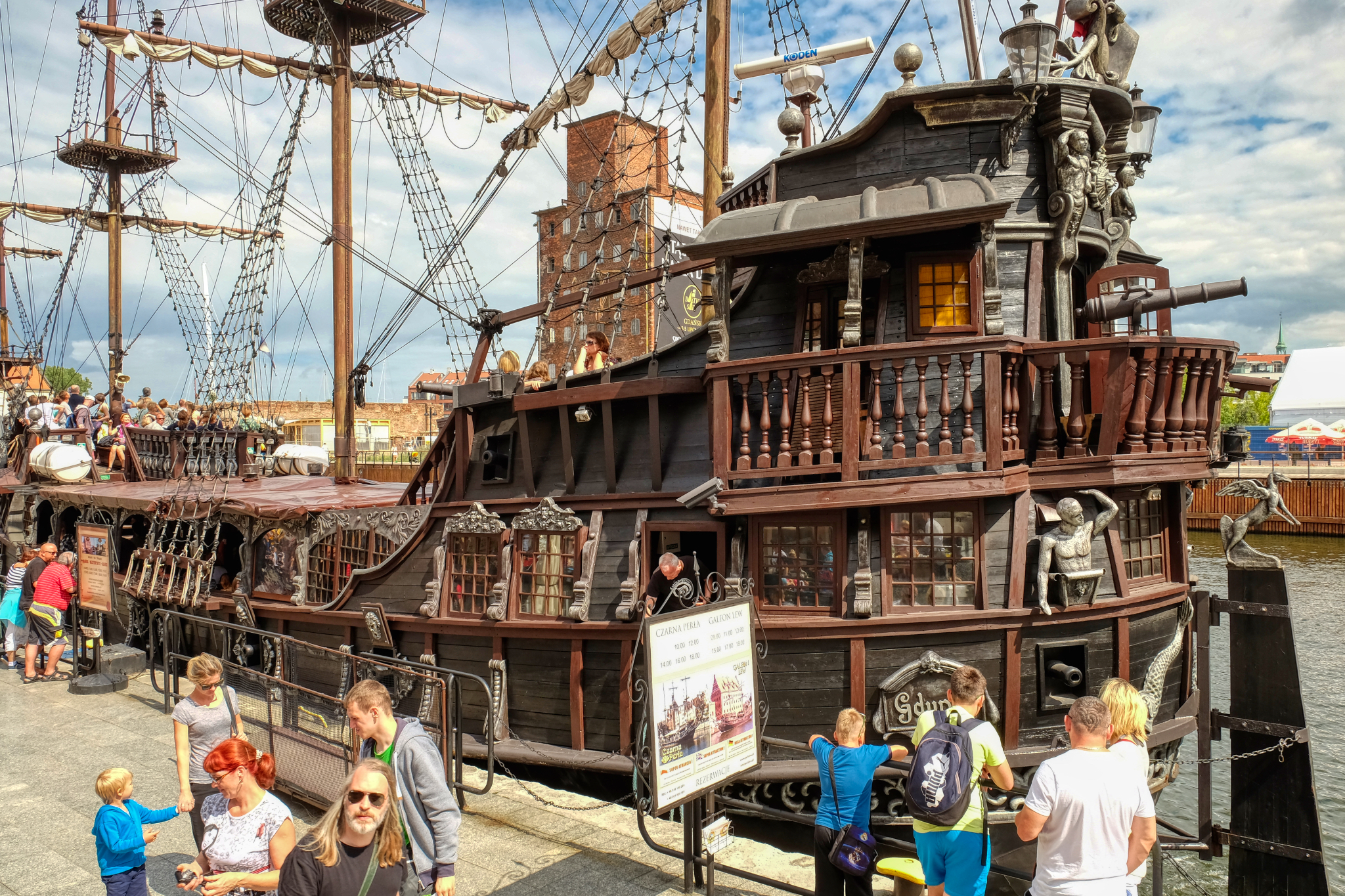 River cruise ship for the tourists . . .
River cruise ship for the tourists . . .
 For me, the lure of Gdańsk was the marvelous array of fascinating architecture.
For me, the lure of Gdańsk was the marvelous array of fascinating architecture.
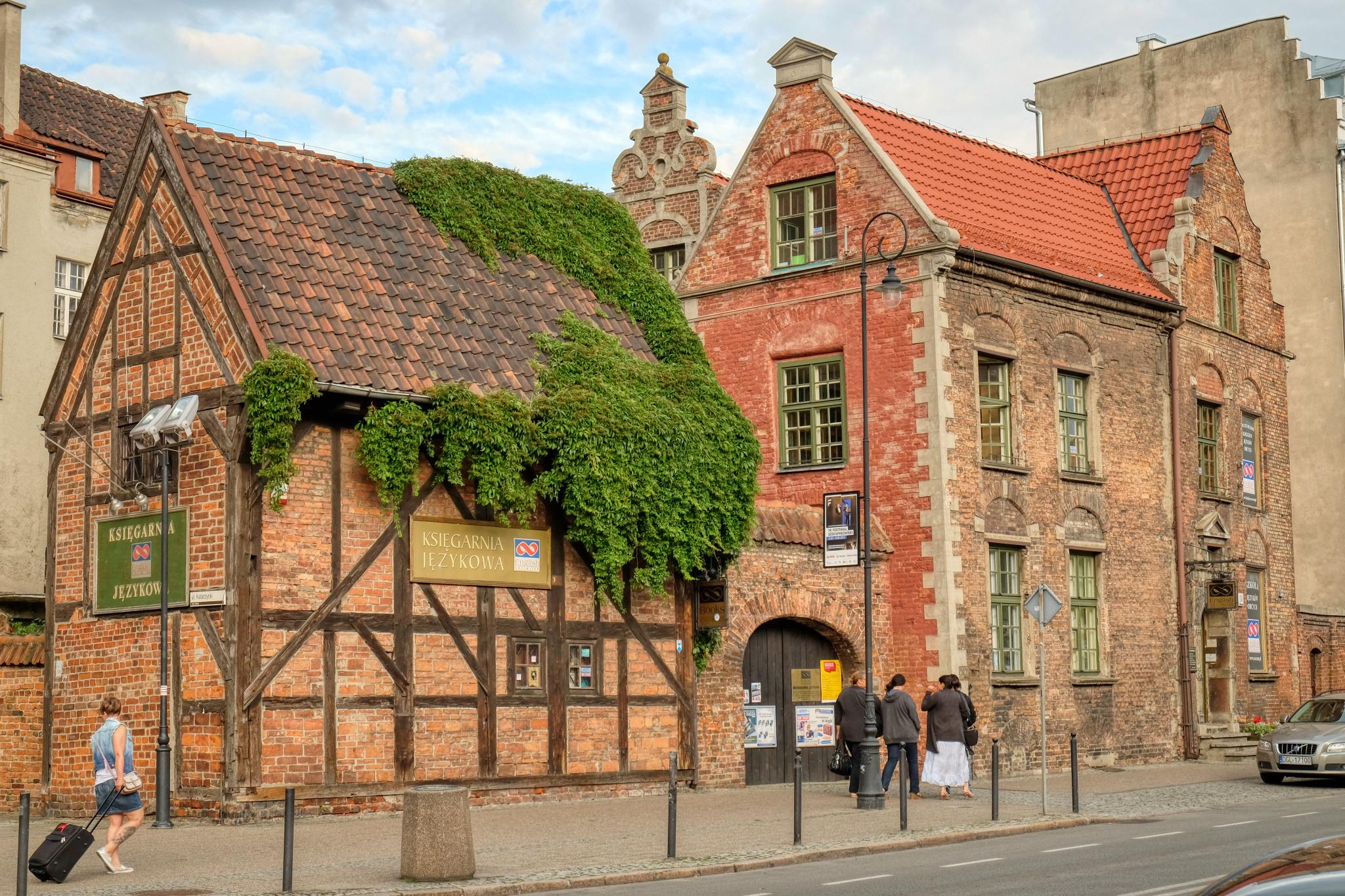 A few of the old buildings survived the carpet bombing.
A few of the old buildings survived the carpet bombing.
 Such an odd building . . . all roof and dormers . . .
Such an odd building . . . all roof and dormers . . .
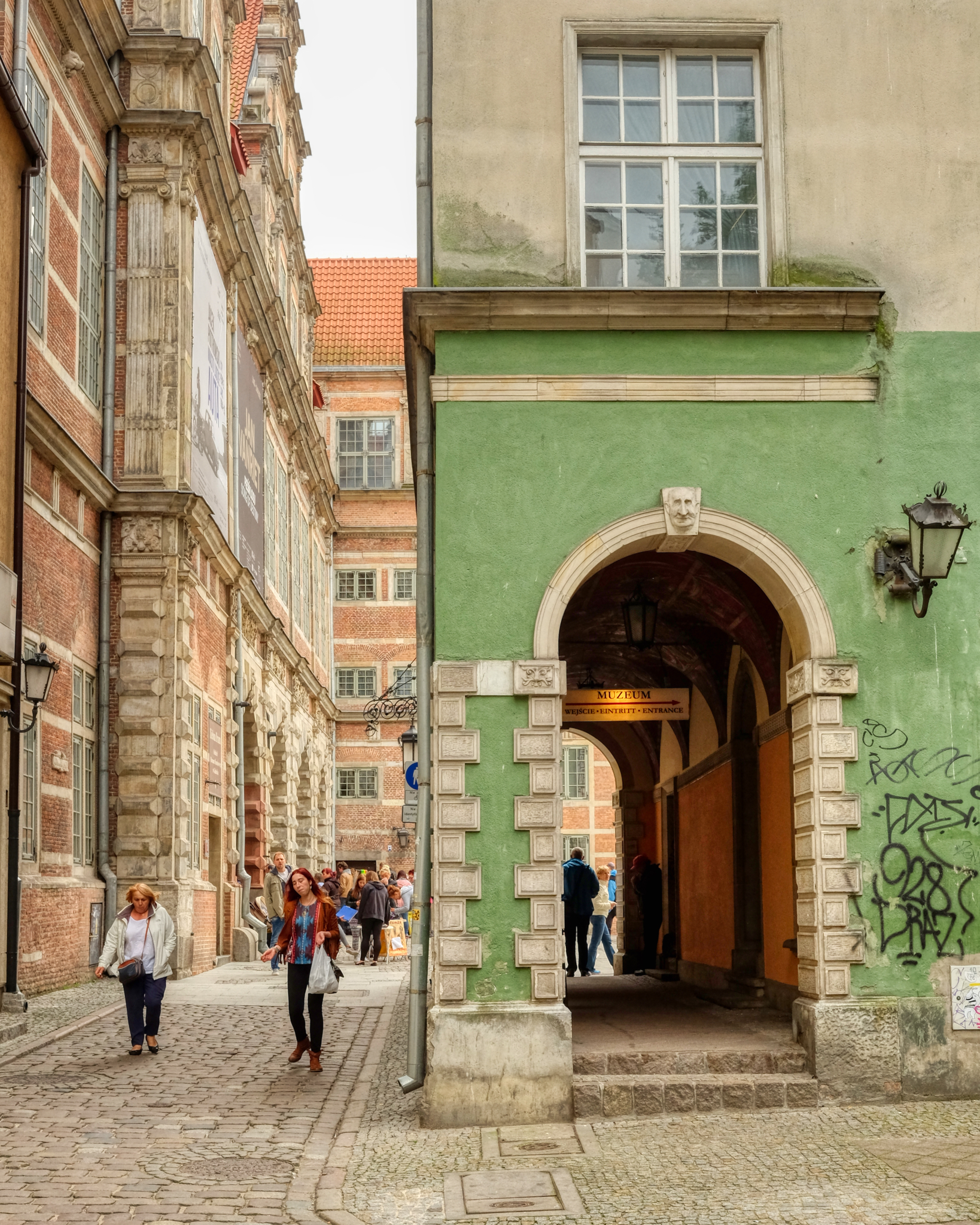 Narrow alleys, cobbles streets, ancient buildings . . . the charms of old Europe.
Narrow alleys, cobbles streets, ancient buildings . . . the charms of old Europe.
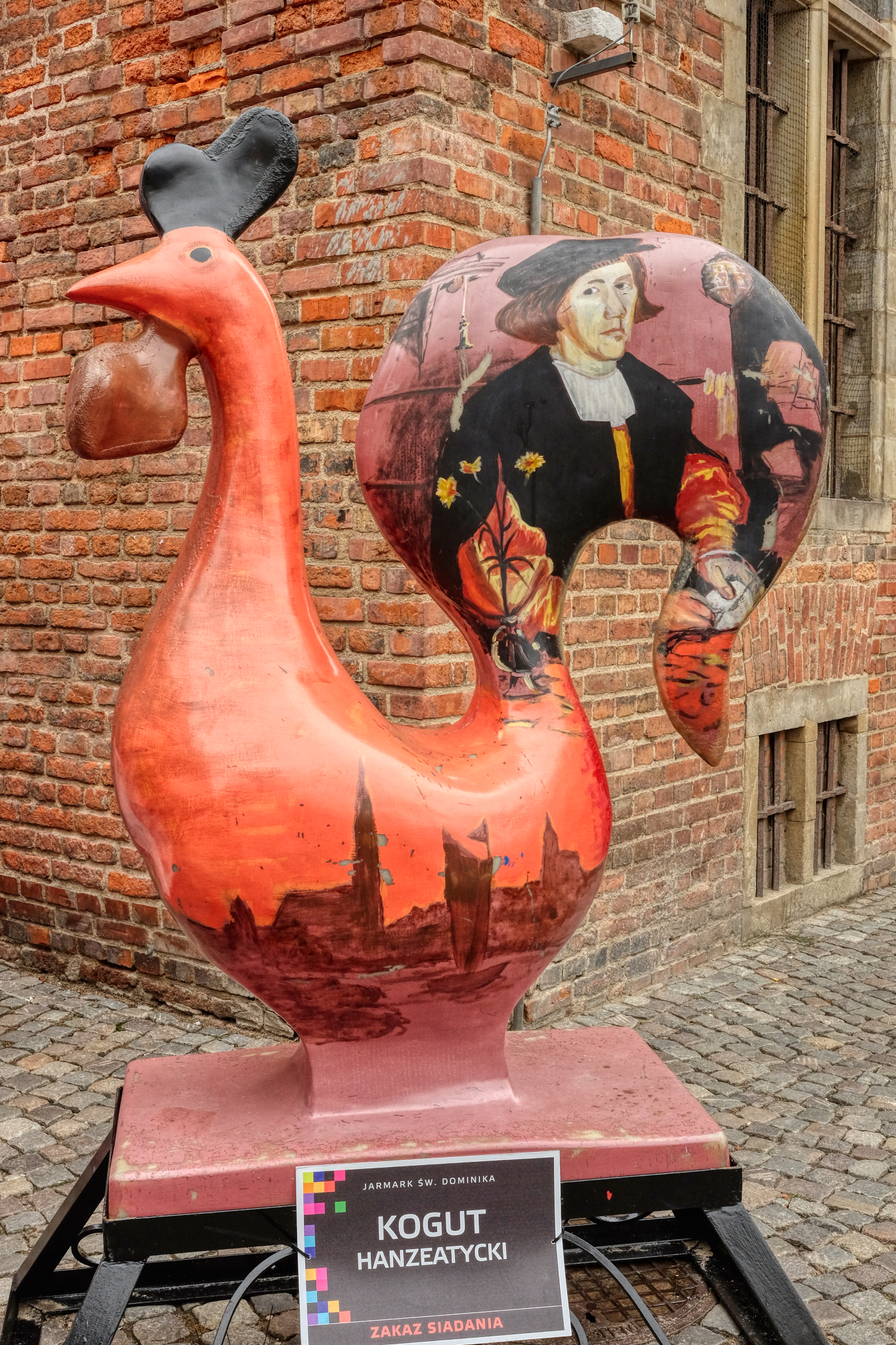 Here and there . . . public art . . .
Here and there . . . public art . . .
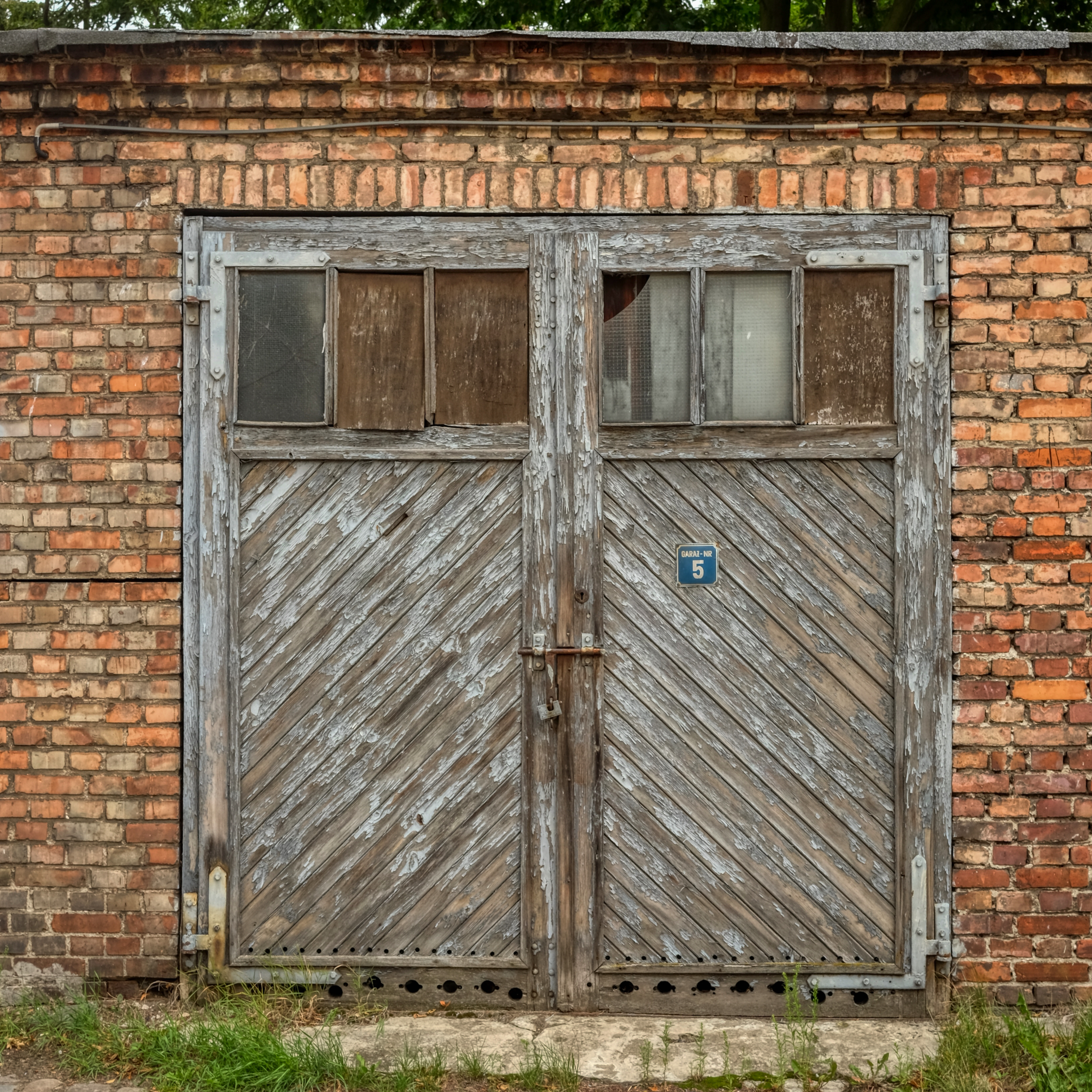 My love of old doors, walls and windows was satisfied in a big way in Gdańsk!
My love of old doors, walls and windows was satisfied in a big way in Gdańsk!
 I was told by a shopkeeper that some of these grand old doors and their stone casings were pulled from the rubble after the bombings and restored and reused. Marvelous.
I was told by a shopkeeper that some of these grand old doors and their stone casings were pulled from the rubble after the bombings and restored and reused. Marvelous.
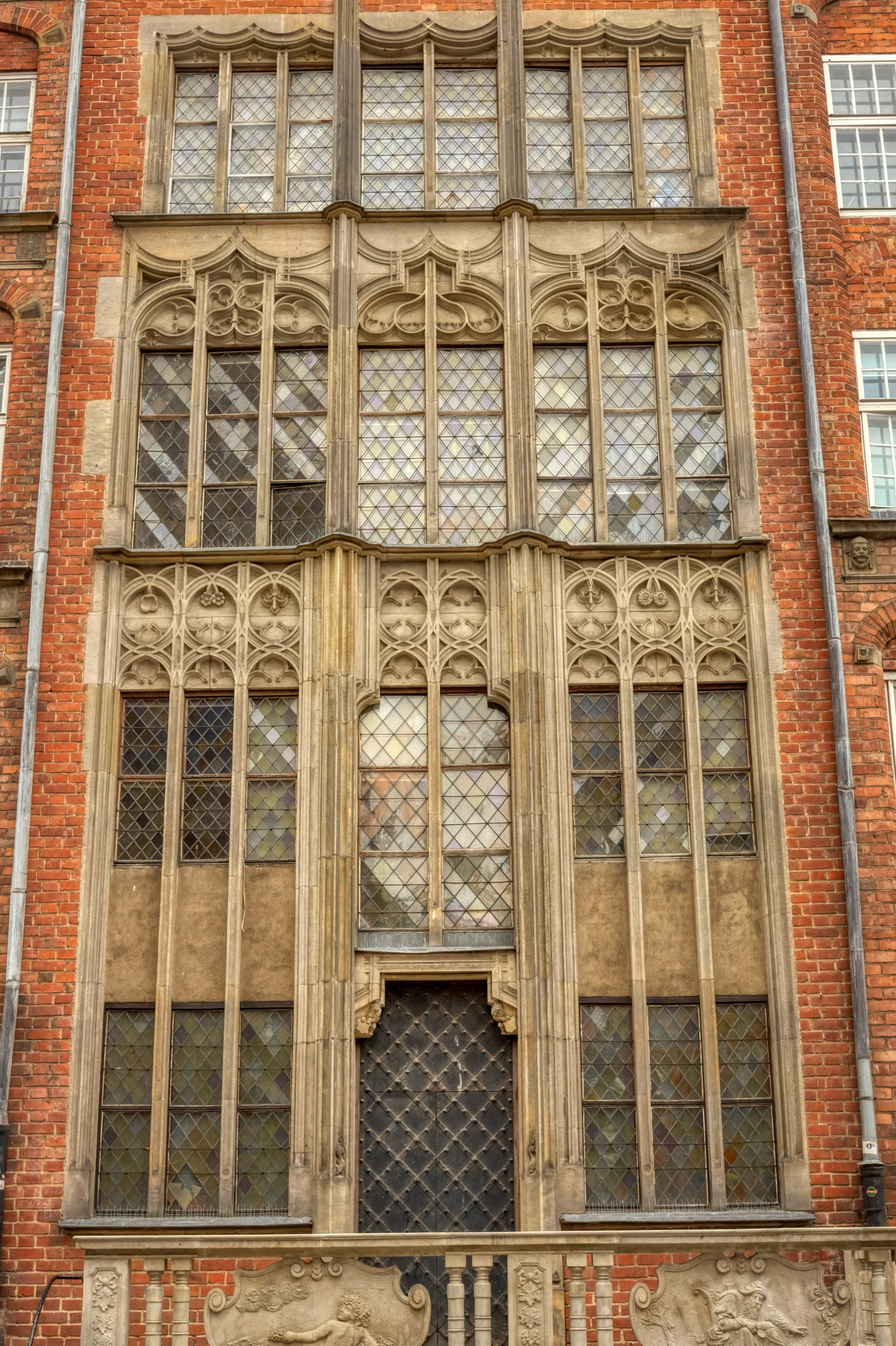 I marveled at these windows . . . exquisite!
I marveled at these windows . . . exquisite!
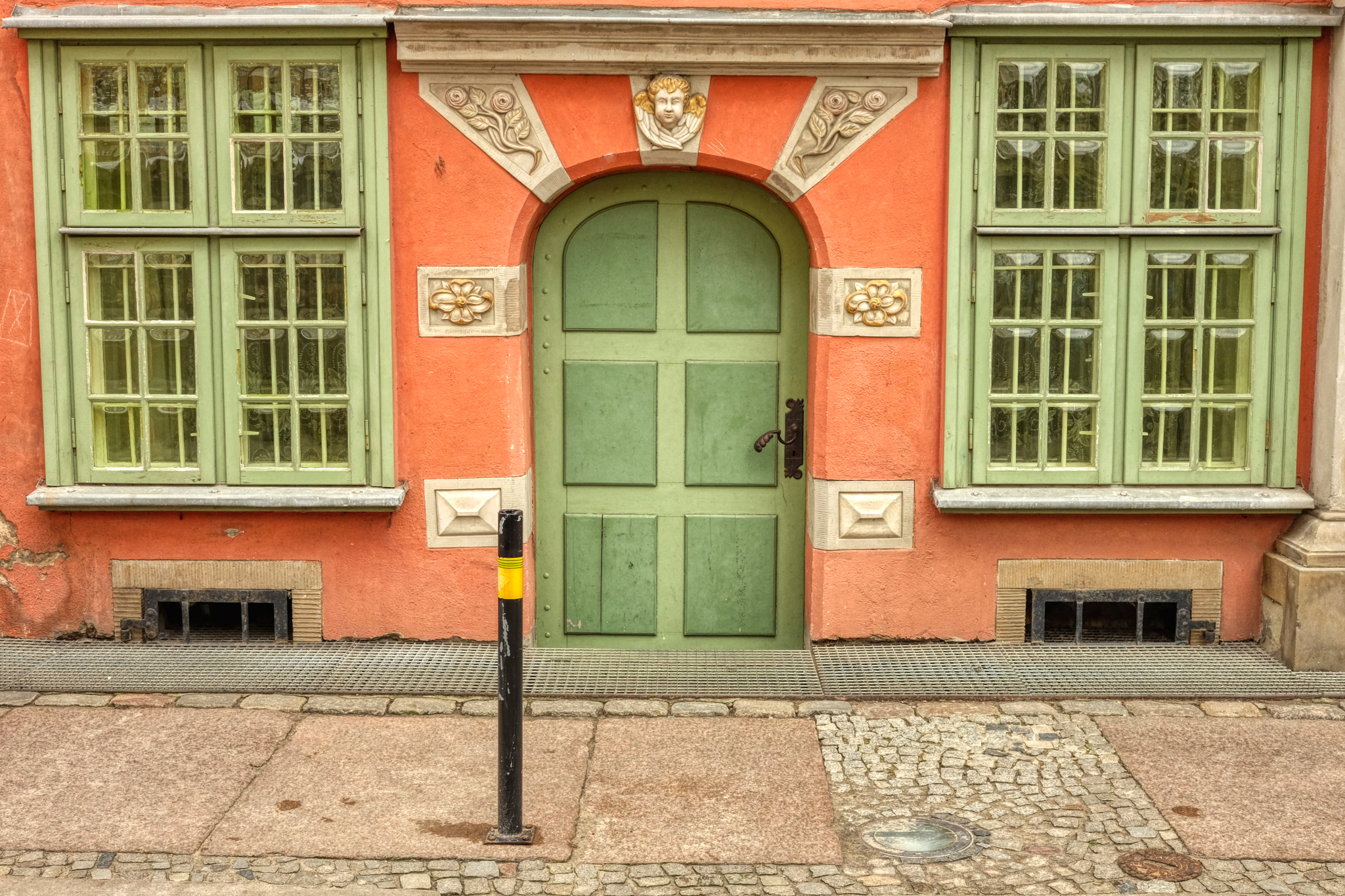 Such lovely symmetry, color, shape . . .
Such lovely symmetry, color, shape . . .
 A gate from the time of horse drawn carriages . . .
A gate from the time of horse drawn carriages . . .
 I loved the whimsical display.
I loved the whimsical display.
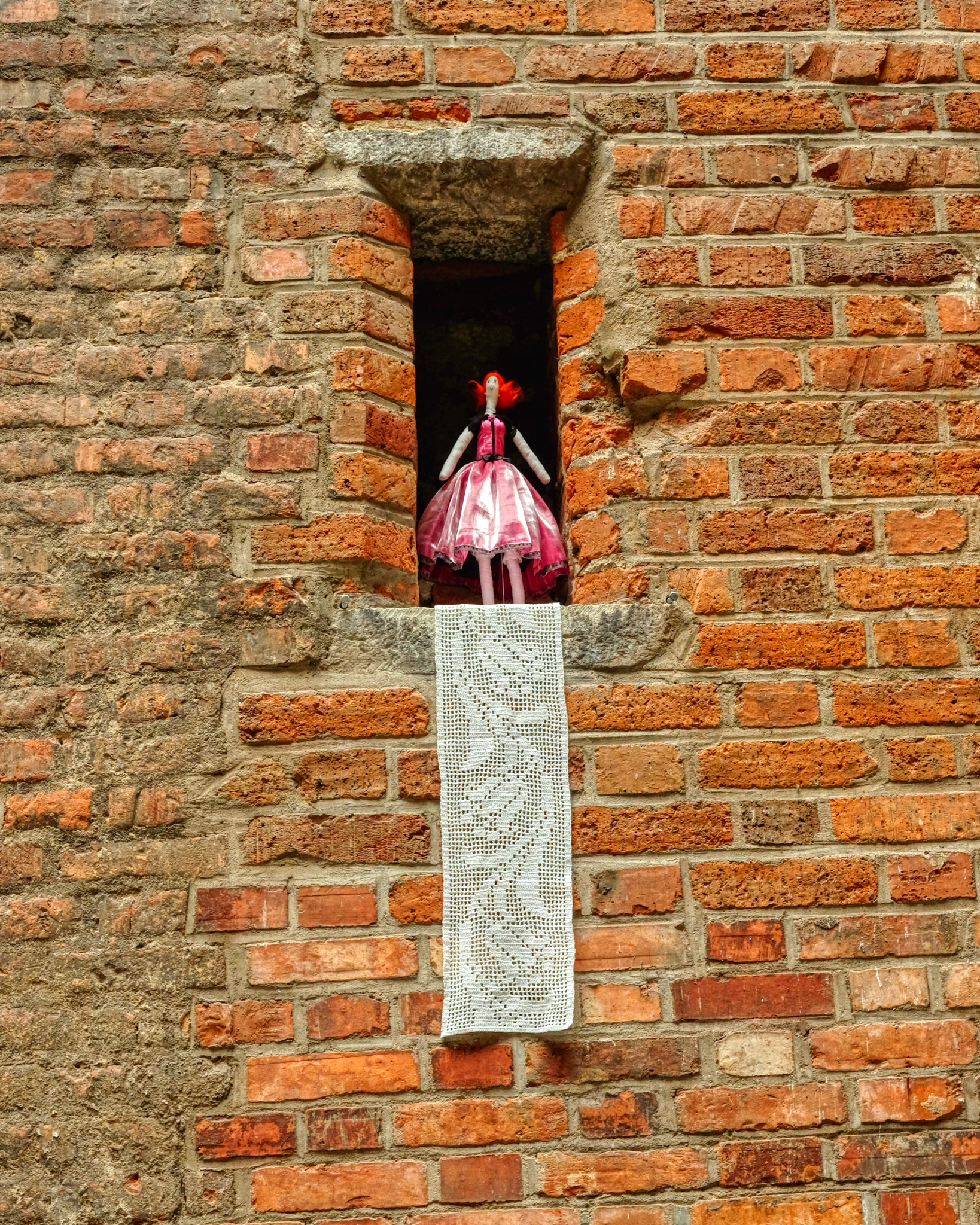 So sweet.
So sweet.
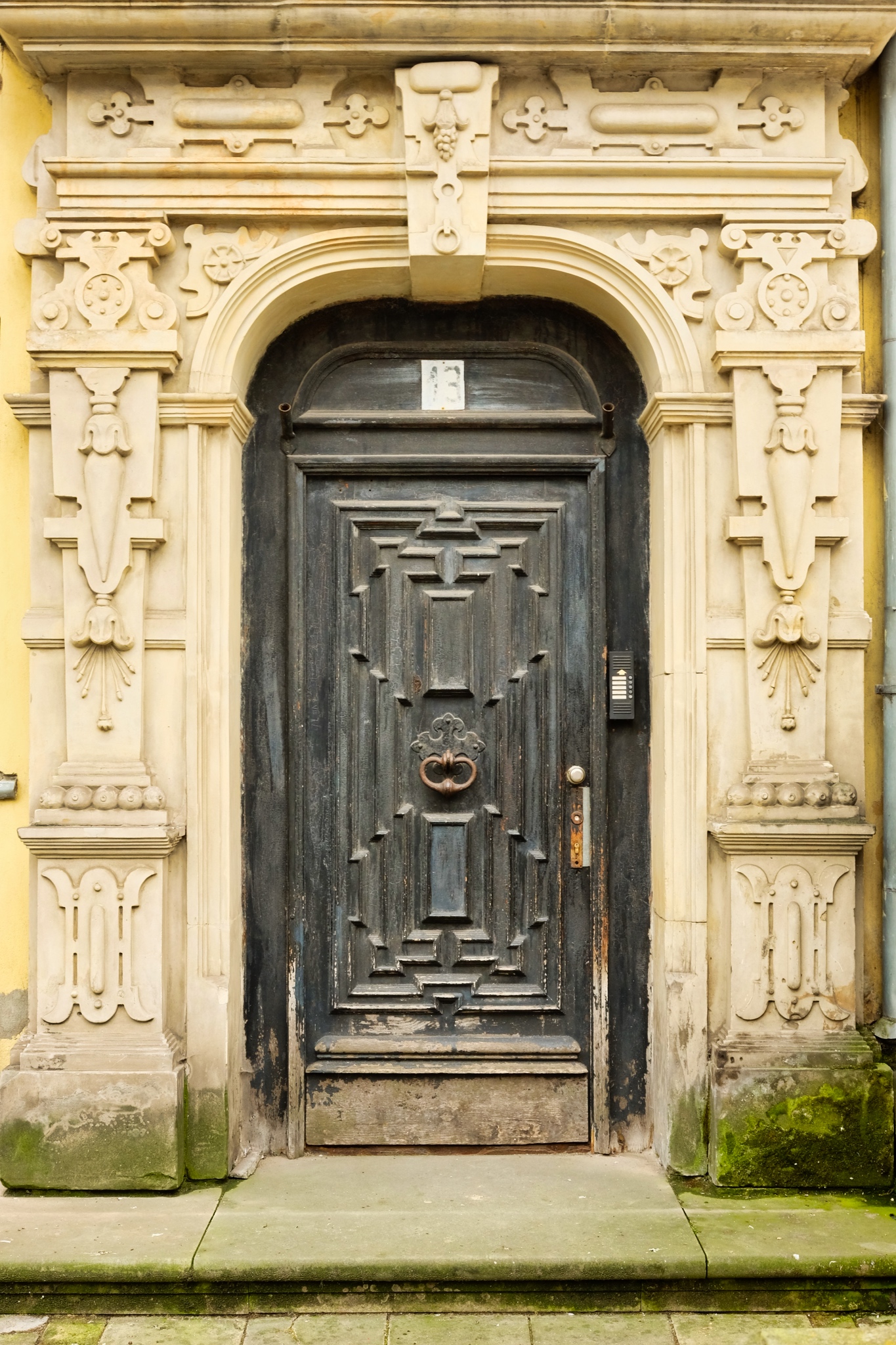 A weathered door . . . and . . .
A weathered door . . . and . . .
 . . . and its context.
. . . and its context.
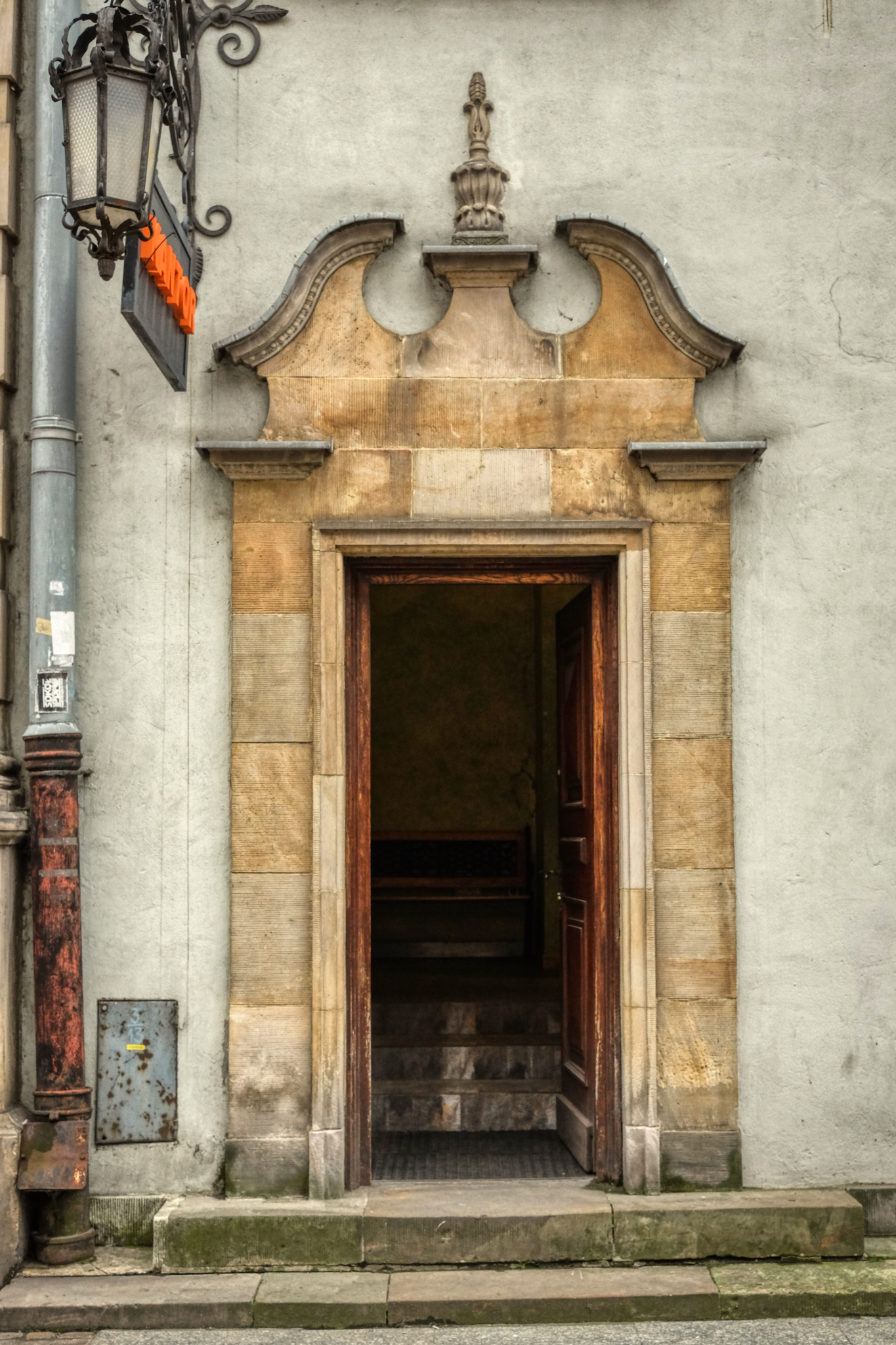 A fine, formal marble doorway.
A fine, formal marble doorway.
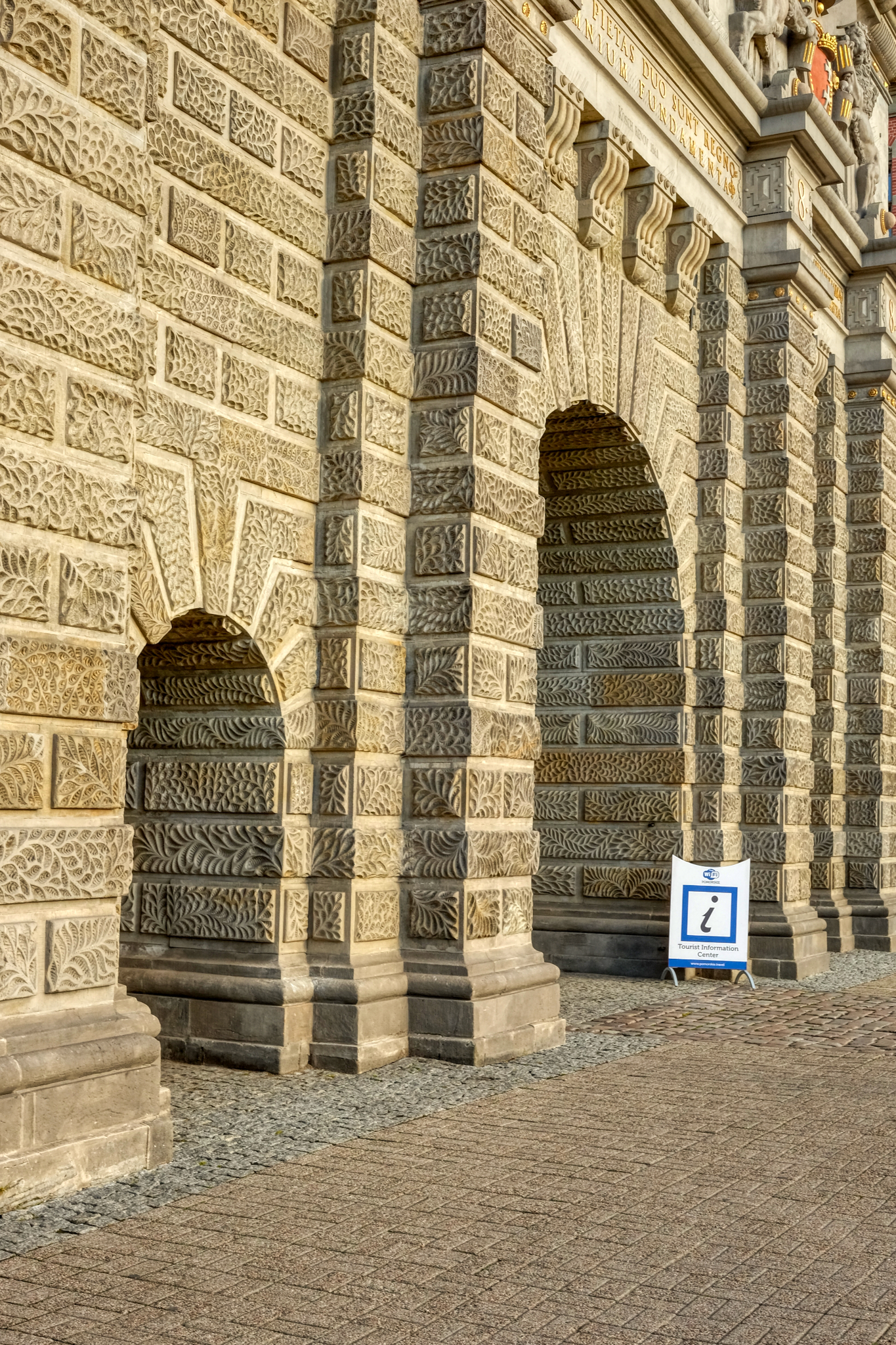 High relief stonework. Nice.
High relief stonework. Nice.
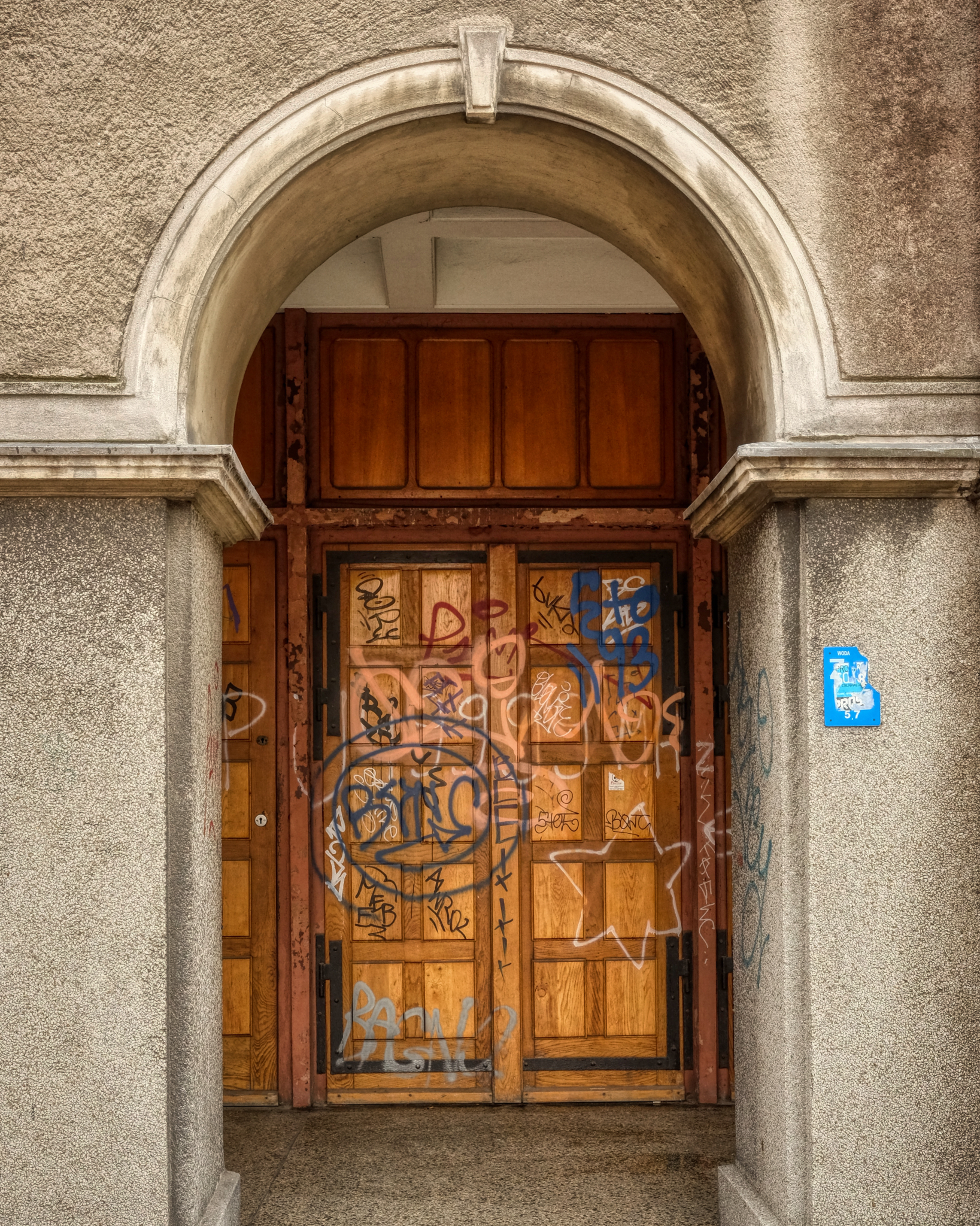 Not all of Gdańsk's doors were as appreciated as I would like to have seen.
Not all of Gdańsk's doors were as appreciated as I would like to have seen.
 The views out over Gdańsk at night from our high rise hotel room were wonderful.
The views out over Gdańsk at night from our high rise hotel room were wonderful.
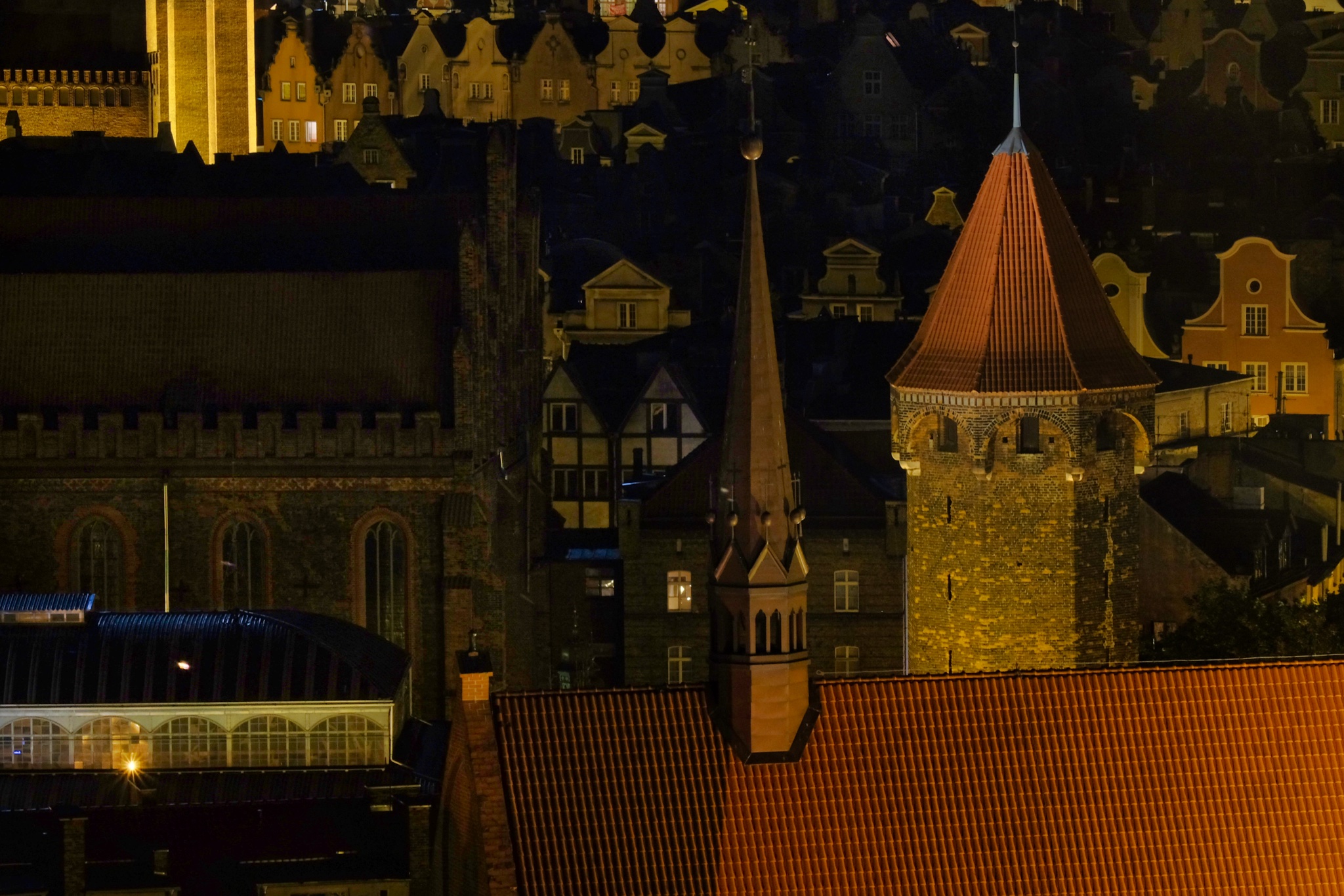 Making this photo blog about this wonderful city has made me very homesick for living in Europe . . .
Making this photo blog about this wonderful city has made me very homesick for living in Europe . . .
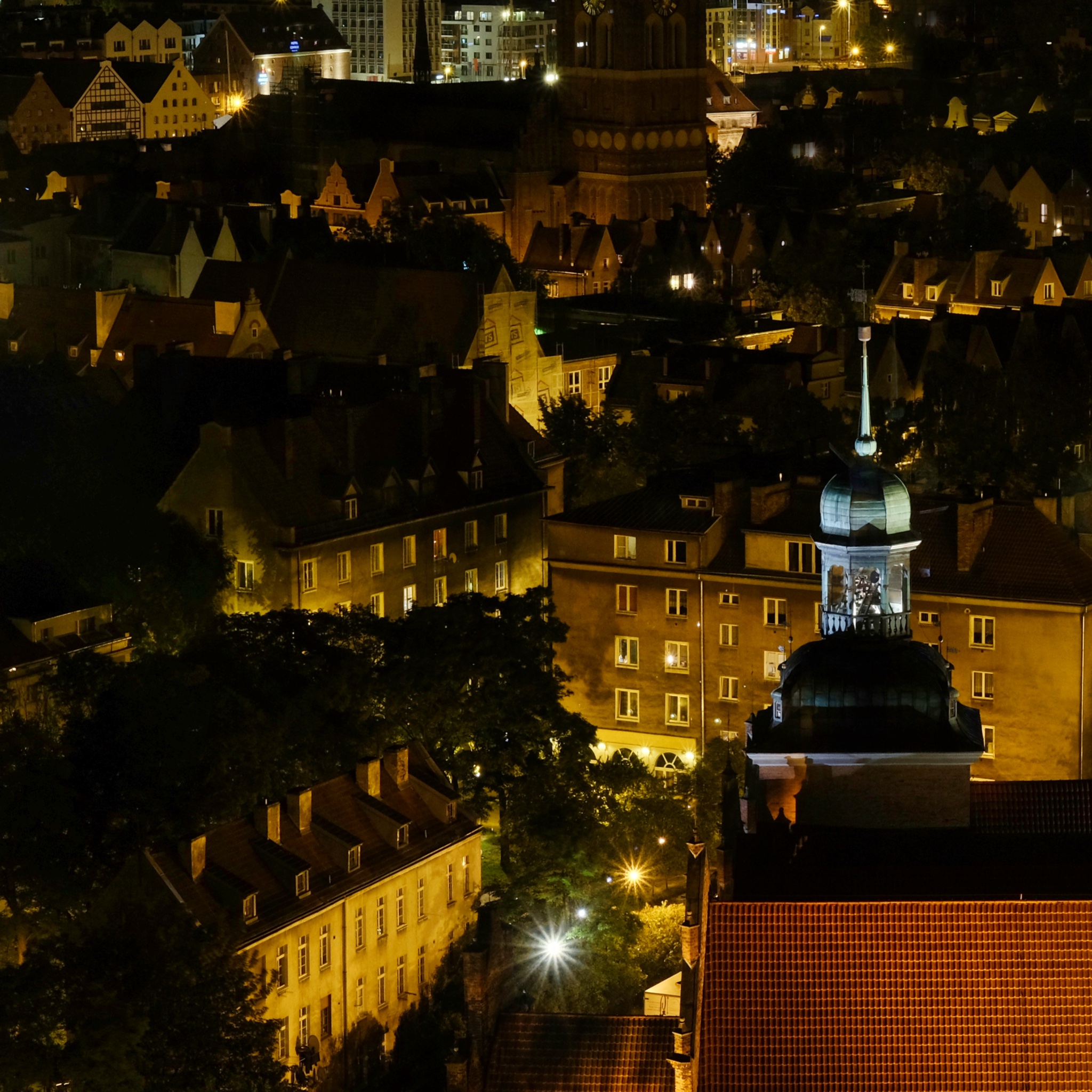 I don't know if I will ever return to Gdańsk, but I know I will always have fond memories of it.
I don't know if I will ever return to Gdańsk, but I know I will always have fond memories of it.
Poland: Kraków is a beautiful vacation destination!
 Friday, April 17, 2020 at 9:03AM
Friday, April 17, 2020 at 9:03AM We visited Poland (Kraków and Gdańsk) in the summer of 2014. The entry for Gdańsk can be found HERE.
KRAKÓW:
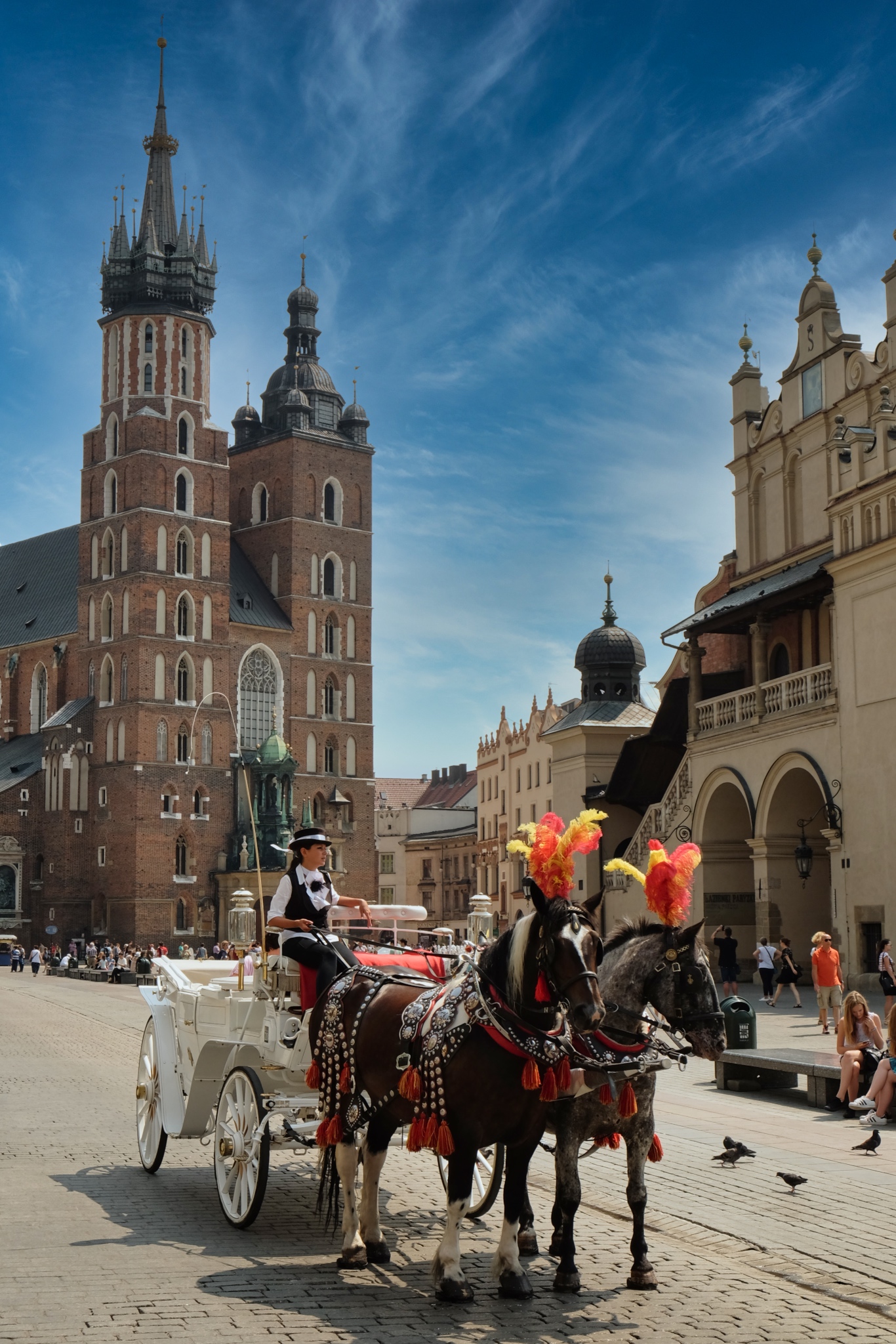 Central city Kraków in early summer is such a wonderful place to visit. The marvelous 14th century St. Mary's Basilica on the square.
Central city Kraków in early summer is such a wonderful place to visit. The marvelous 14th century St. Mary's Basilica on the square.
 The Main Square in Kraków dates from the 13th century and is the largest town square in all of Europe (@ 9.2 acres, or 3.79 ha).
The Main Square in Kraków dates from the 13th century and is the largest town square in all of Europe (@ 9.2 acres, or 3.79 ha).
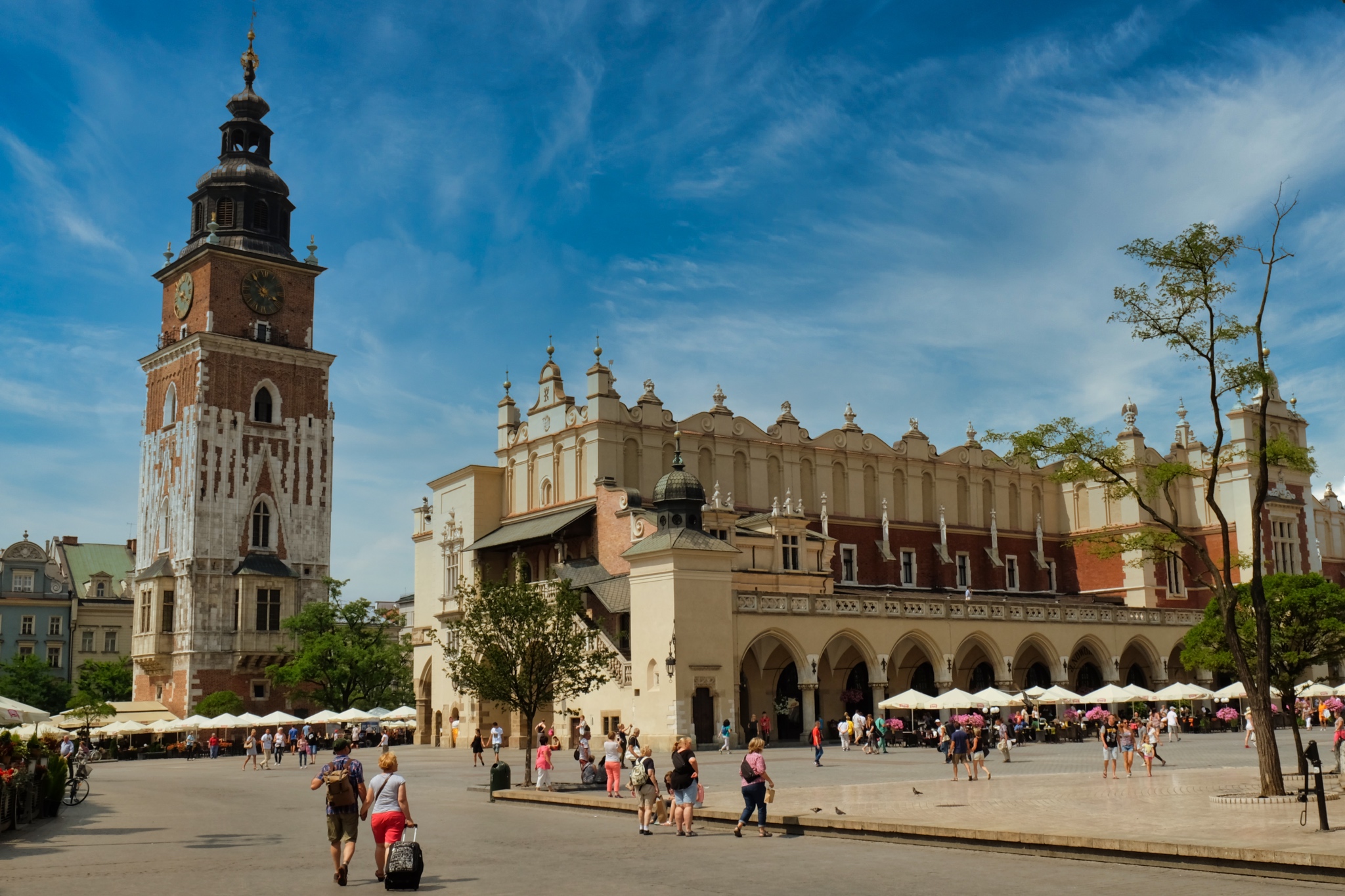 Kraków Main Square with the Cloth Hall (right, now a tourist galleria) built in the 15th century, and the City Hall Tower (left) built in the 14th Century. The original town hall, which was attached to the tower, was demolished in the mid-1800s.
Kraków Main Square with the Cloth Hall (right, now a tourist galleria) built in the 15th century, and the City Hall Tower (left) built in the 14th Century. The original town hall, which was attached to the tower, was demolished in the mid-1800s.
 A wonderful medieval tower.
A wonderful medieval tower.
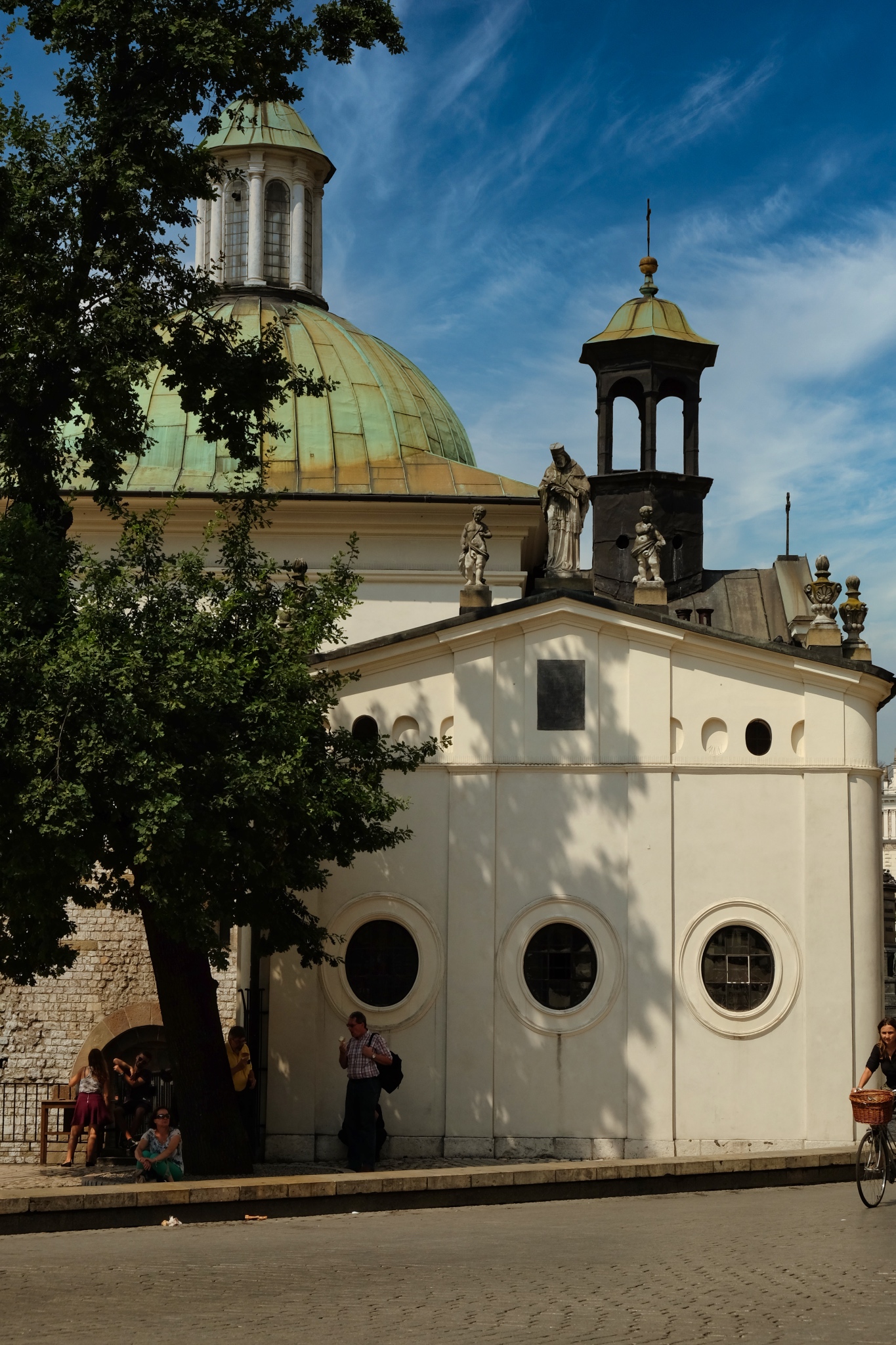 Also on the Kraków Main Market Square is the 11th century Church of Saint Adalbert.
Also on the Kraków Main Market Square is the 11th century Church of Saint Adalbert.
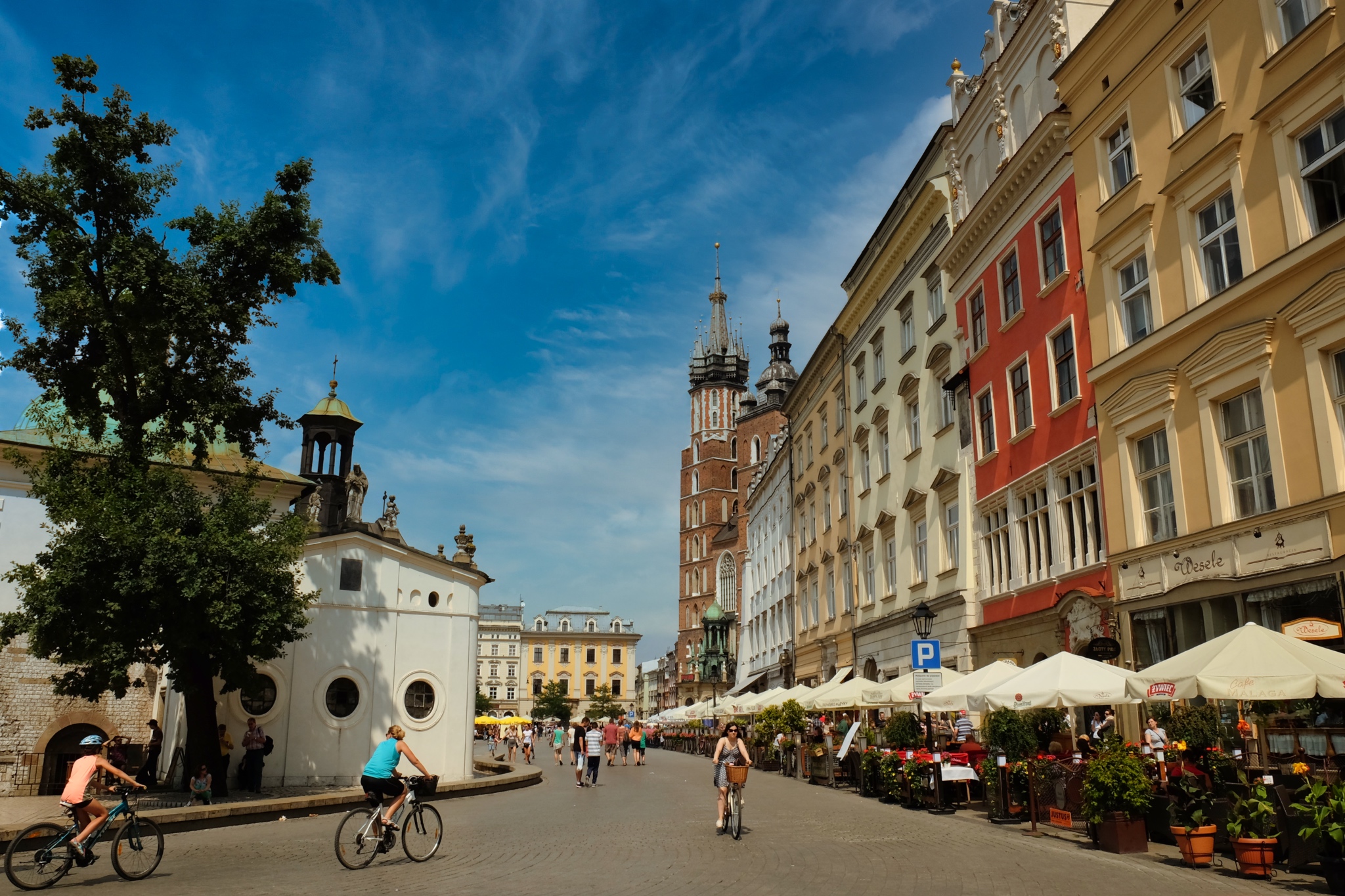 The Main Square is lined by small shops and boutiques . . . and a solid line of sidewalk cafés all around.
The Main Square is lined by small shops and boutiques . . . and a solid line of sidewalk cafés all around.
 The Main Square attracts lots of tourists and, presumably, local children as well. Her they climb on the memorial statue to Adam Mickiewicz, a 19th century Polish poet.
The Main Square attracts lots of tourists and, presumably, local children as well. Her they climb on the memorial statue to Adam Mickiewicz, a 19th century Polish poet.
 Making money on the square . . . Monster Photo Ops $5.oo.
Making money on the square . . . Monster Photo Ops $5.oo.
 Inside the Cloth Hall, now a curios galleria.
Inside the Cloth Hall, now a curios galleria.
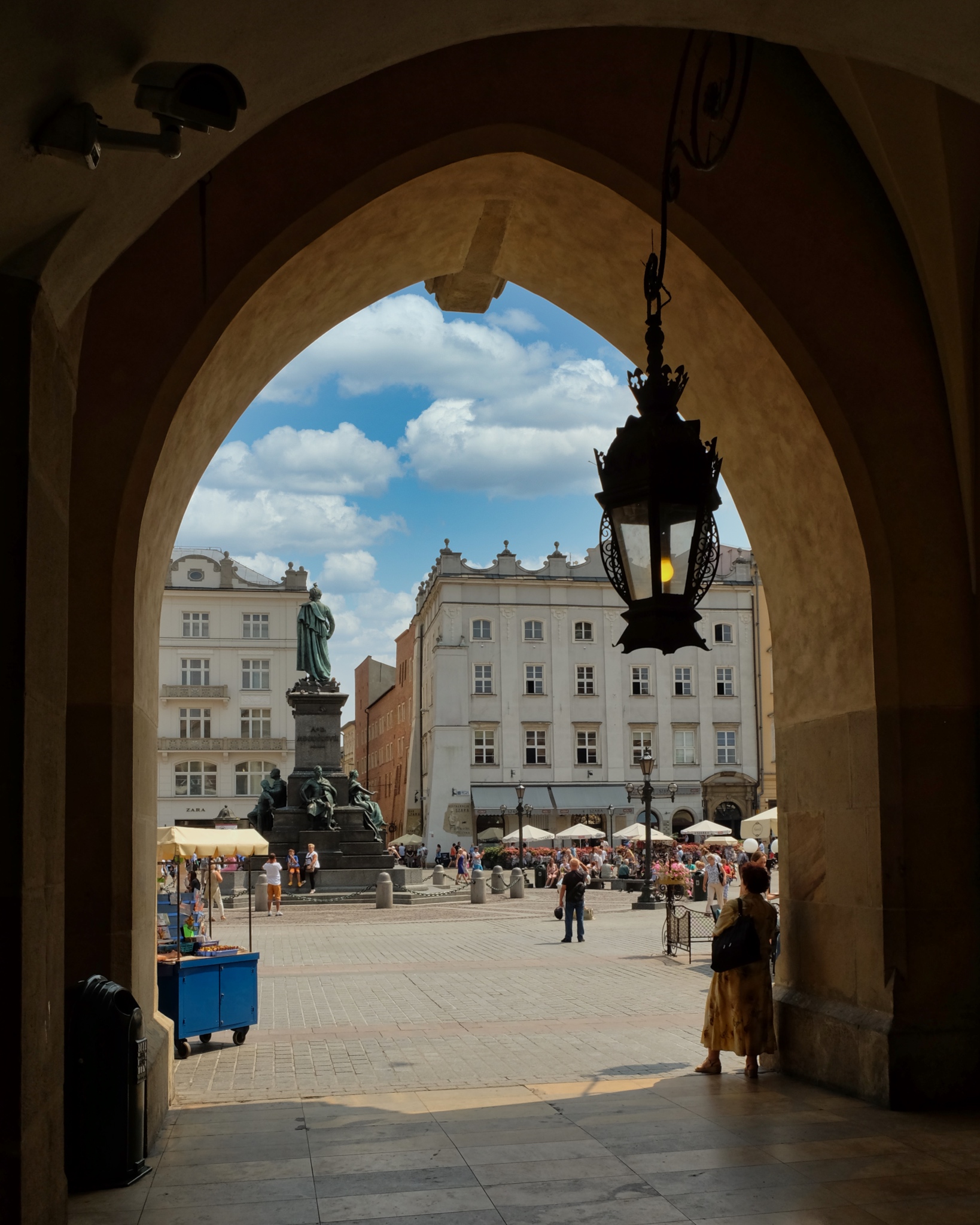 Looking out onto the square from the Cloth Hall.
Looking out onto the square from the Cloth Hall.
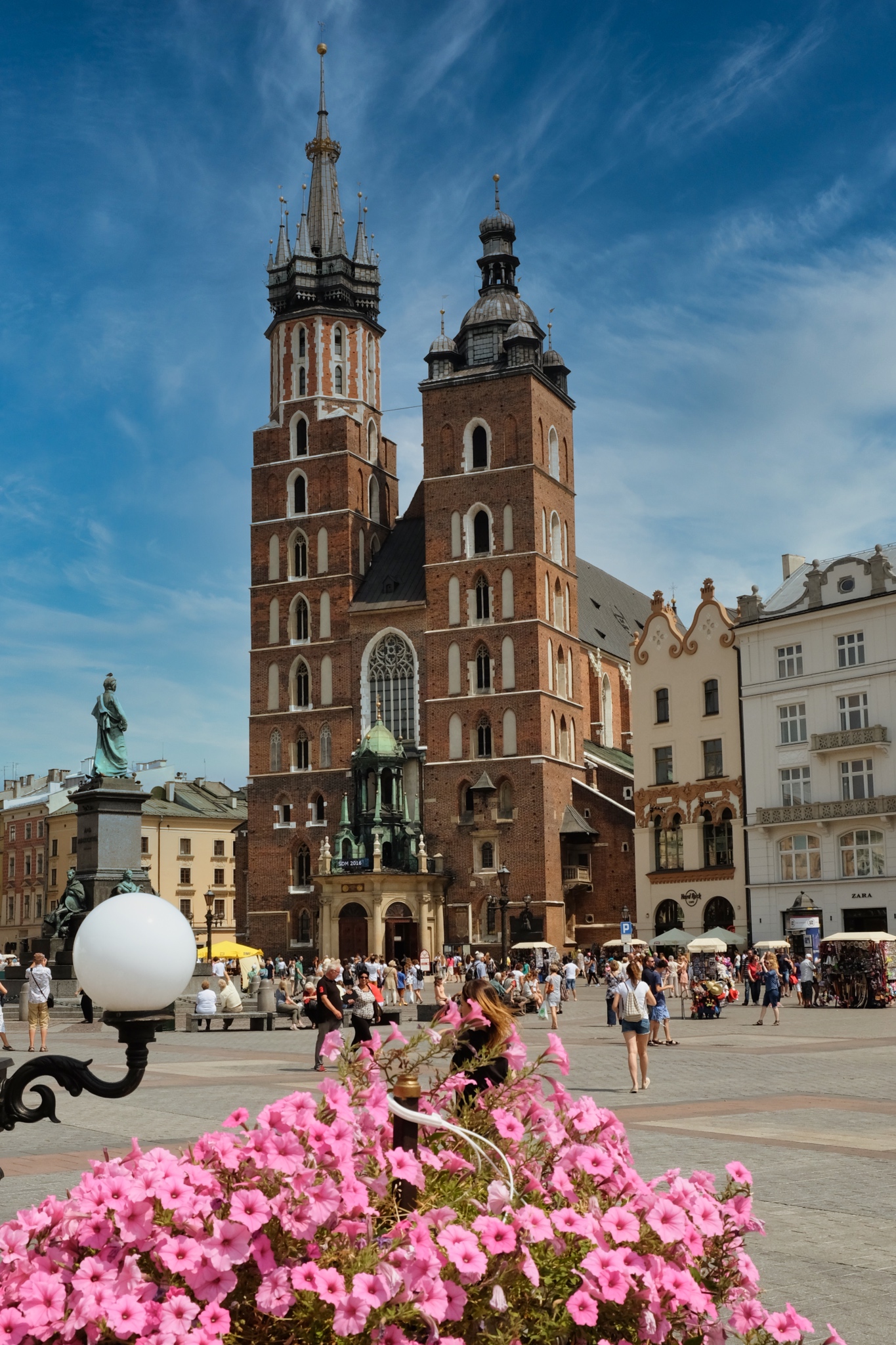 Saint Mary's Basilica looked inviting. There are not too many 13th century basilicas left in their original state in Europe. I wanted to see the interior of this Polish Gothic structure.
Saint Mary's Basilica looked inviting. There are not too many 13th century basilicas left in their original state in Europe. I wanted to see the interior of this Polish Gothic structure.
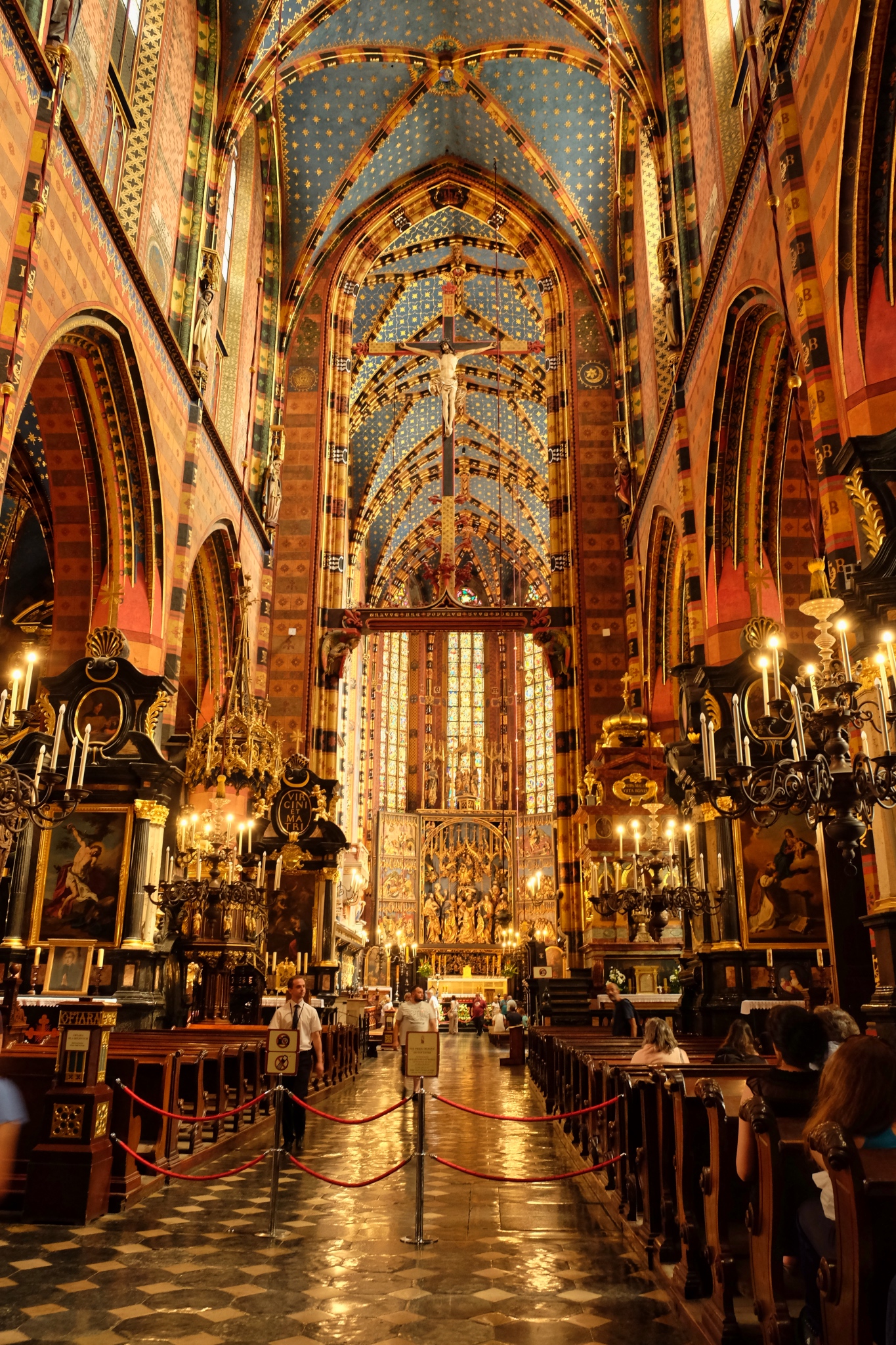 I was not disappointed. Magnificent . . . which is the idea, one assumes.
I was not disappointed. Magnificent . . . which is the idea, one assumes.
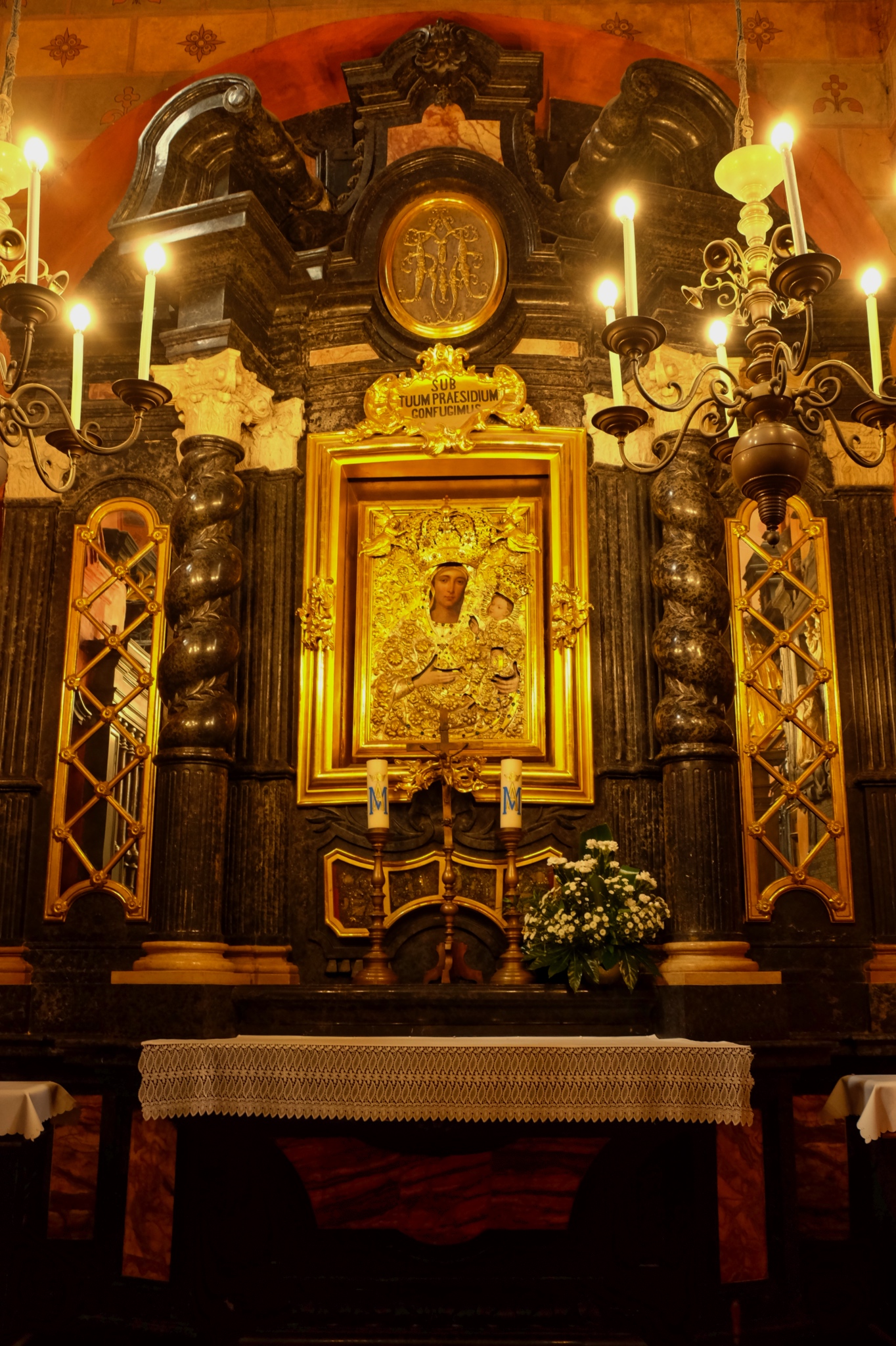 Beautiful Christian iconography everywhere.
Beautiful Christian iconography everywhere.
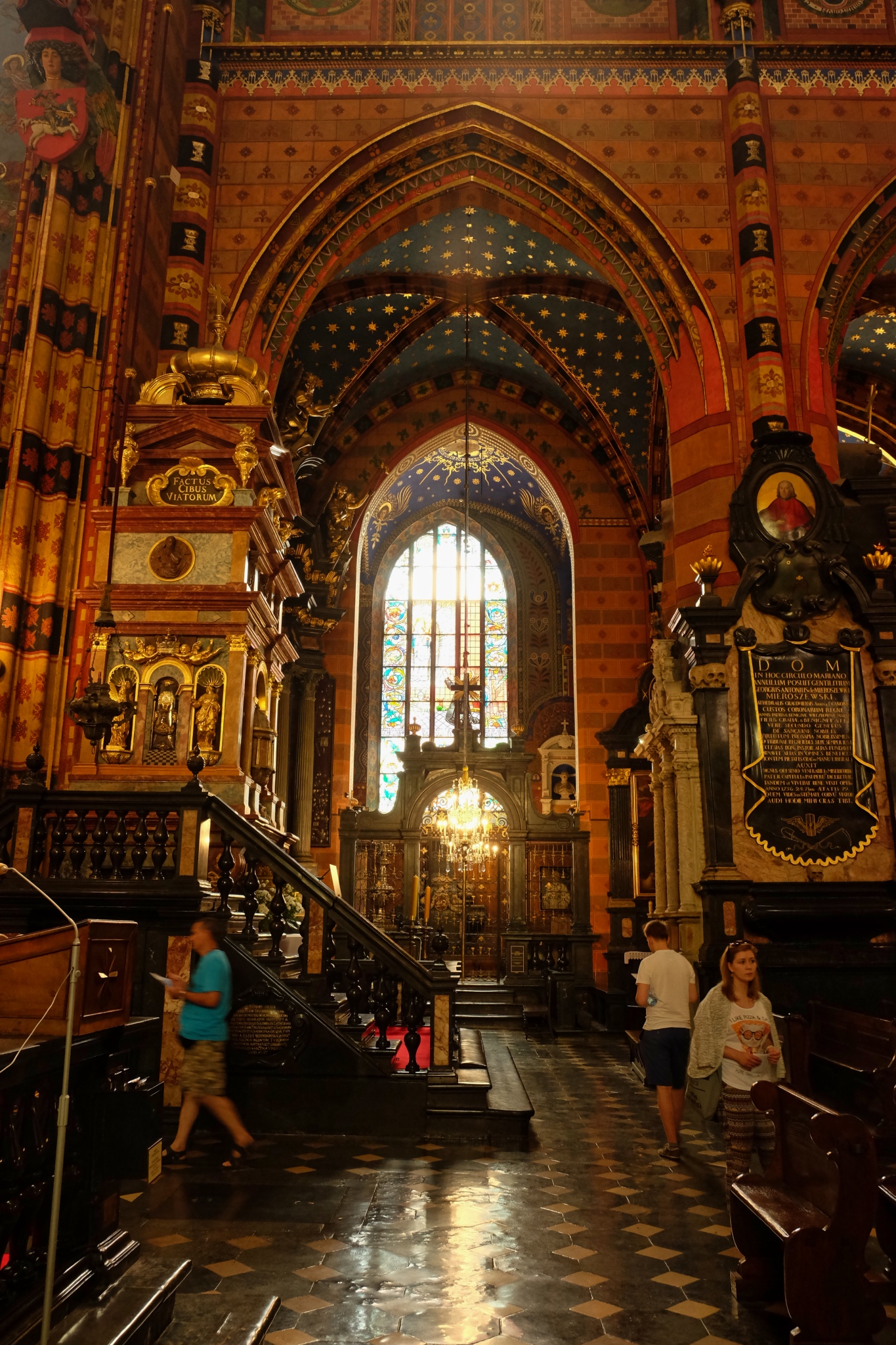 Beautiful and ornate vestibules lined the main hall.
Beautiful and ornate vestibules lined the main hall.
 I loved the colorfully painted ceiling details. So many churches in Europe seem to think that bare stone is a better look . . . I prefer the color.
I loved the colorfully painted ceiling details. So many churches in Europe seem to think that bare stone is a better look . . . I prefer the color.
 A Kraków Christian devotee on a bad day, one would assume.
A Kraków Christian devotee on a bad day, one would assume.
 My wife and I admired the interior of the St. Mary's Basilica for quite a while, but it was a beautiful day outside, and there was so much more to explore.
My wife and I admired the interior of the St. Mary's Basilica for quite a while, but it was a beautiful day outside, and there was so much more to explore.
 We left the main Karców city center square to walk around in the narrow streets of Kraków's historic center (on the original UNESCO World Heritage list).
We left the main Karców city center square to walk around in the narrow streets of Kraków's historic center (on the original UNESCO World Heritage list).
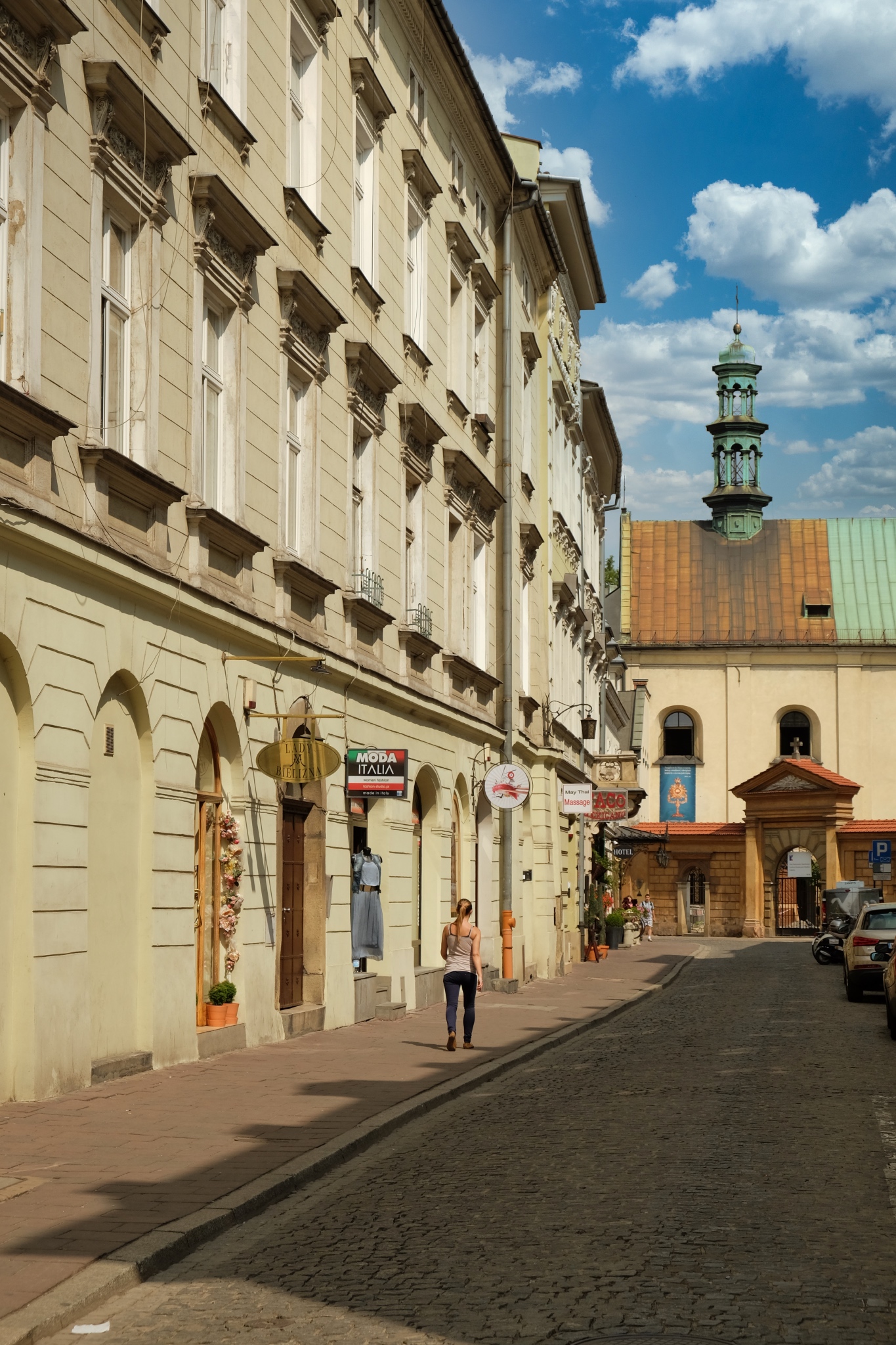 As we walked around in the back streets of the city center, we became aware of the significance that this is a city that had never been bombed in a war and had never had a major fire, as so many of the other major medieval European cities had. There were no new buildings: it was an intact ancient city . . . and living today.
As we walked around in the back streets of the city center, we became aware of the significance that this is a city that had never been bombed in a war and had never had a major fire, as so many of the other major medieval European cities had. There were no new buildings: it was an intact ancient city . . . and living today.
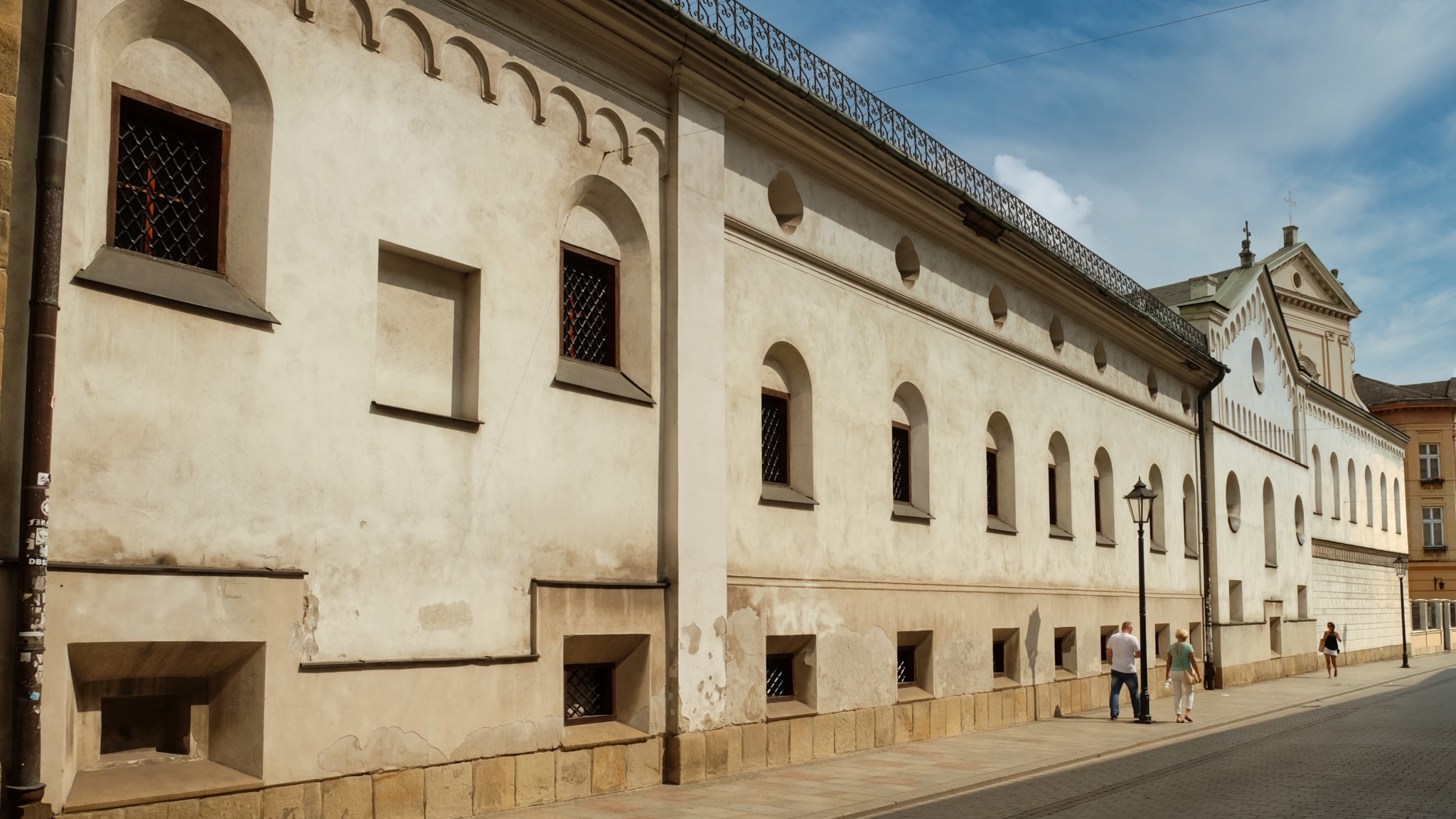 Interesting and varied architecture all around.
Interesting and varied architecture all around.
 Such a charming city.
Such a charming city.
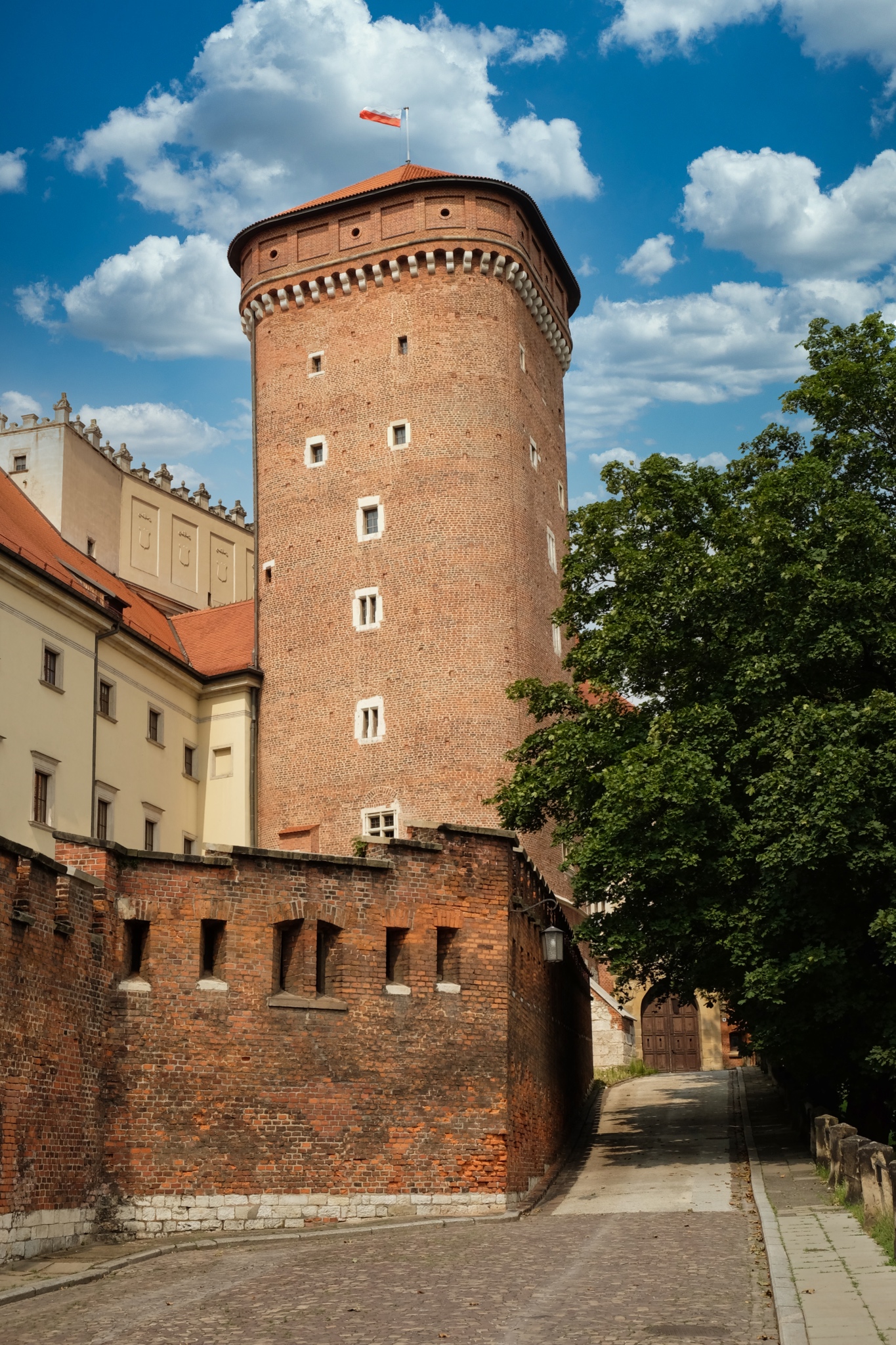 I found this tower fascinating. Towers were very popular throughout Europe in medieval times
I found this tower fascinating. Towers were very popular throughout Europe in medieval times
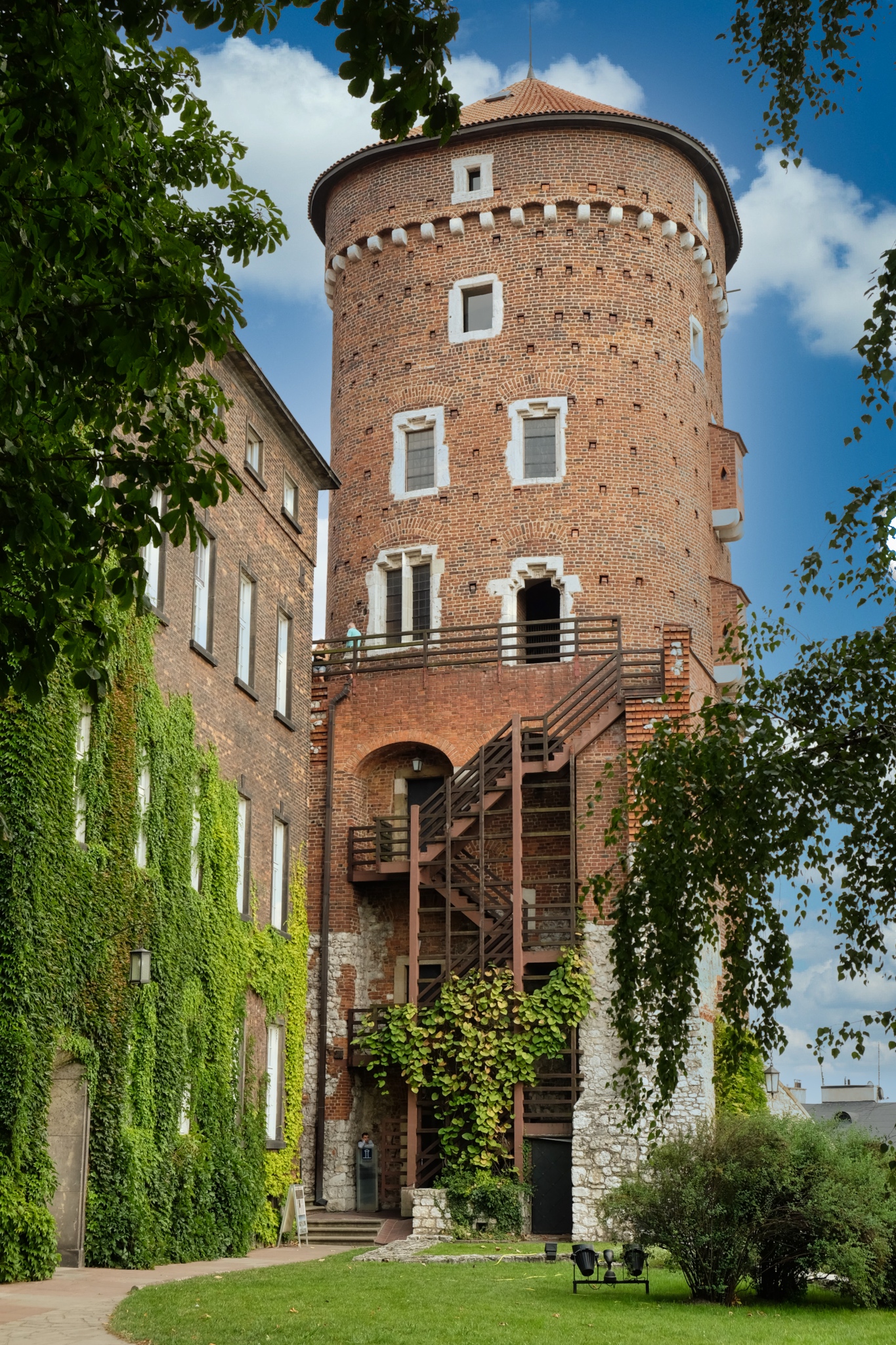 The back of the tower was also very interesting. I enjoy looking at and figuring out these old architectural gems.
The back of the tower was also very interesting. I enjoy looking at and figuring out these old architectural gems.
 One city space leads to another . . . and always interesting and fascinating.
One city space leads to another . . . and always interesting and fascinating.
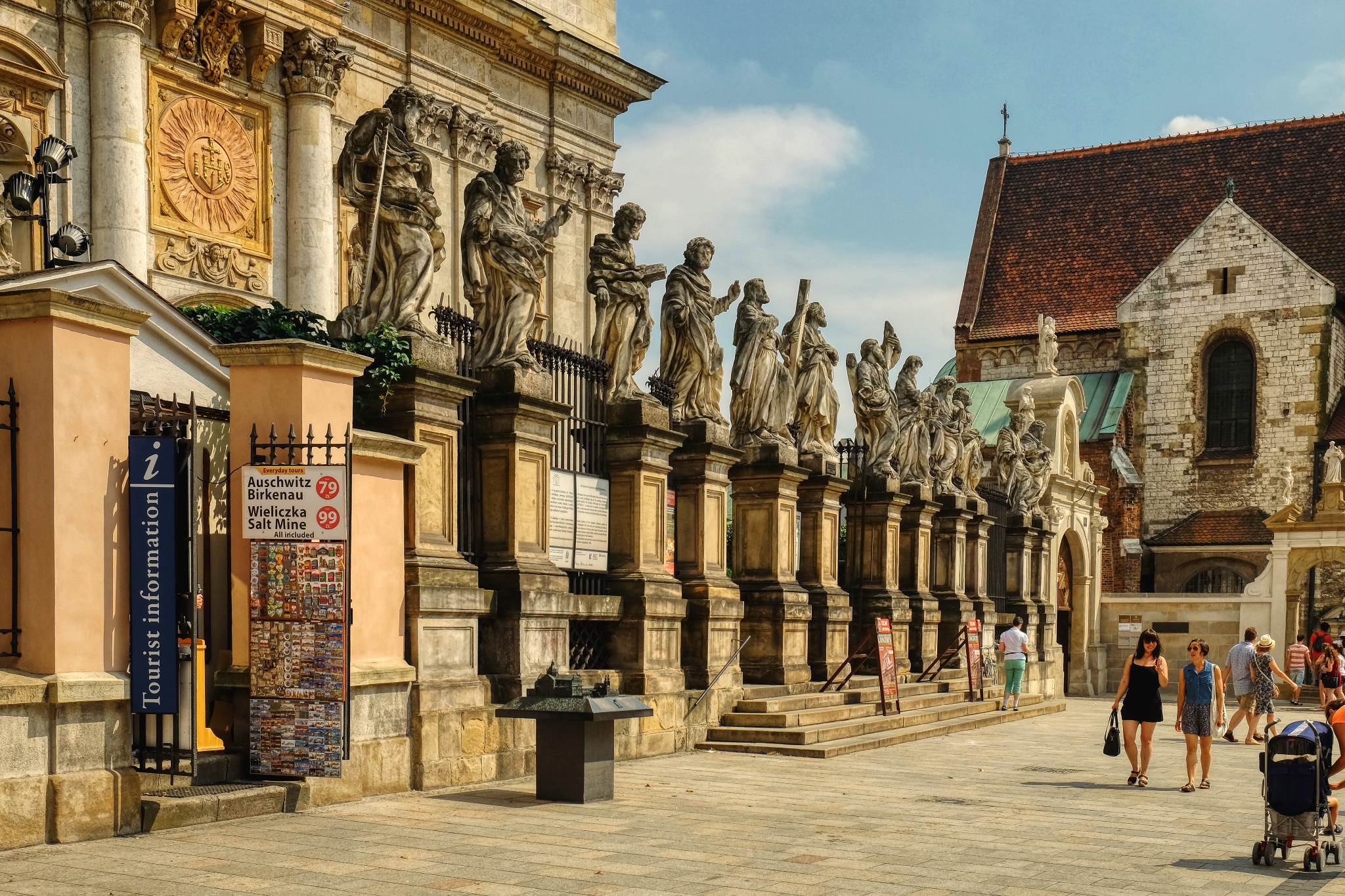 A row of Christian saints. Notice the advertisement for tours of the Nazi death camps near Kraków . . . we did not go.
A row of Christian saints. Notice the advertisement for tours of the Nazi death camps near Kraków . . . we did not go.
 Such a charming old church.
Such a charming old church.
 Saints Peter and Paul Church, built 1597 in the Polish Baroque style.
Saints Peter and Paul Church, built 1597 in the Polish Baroque style.
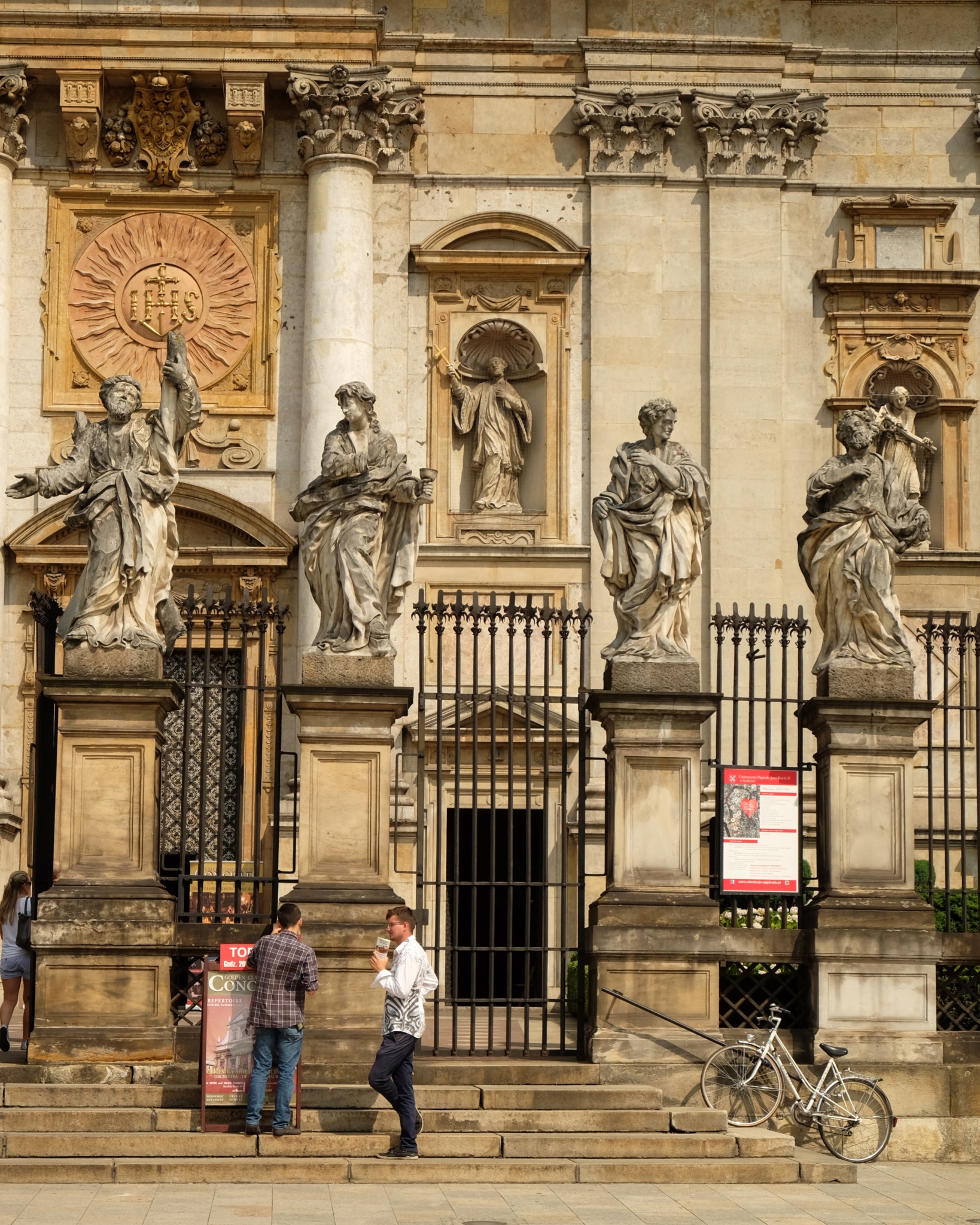 A detail of the Saints Peter and Paul Church . . . looking more like a library than a church somehow.
A detail of the Saints Peter and Paul Church . . . looking more like a library than a church somehow.
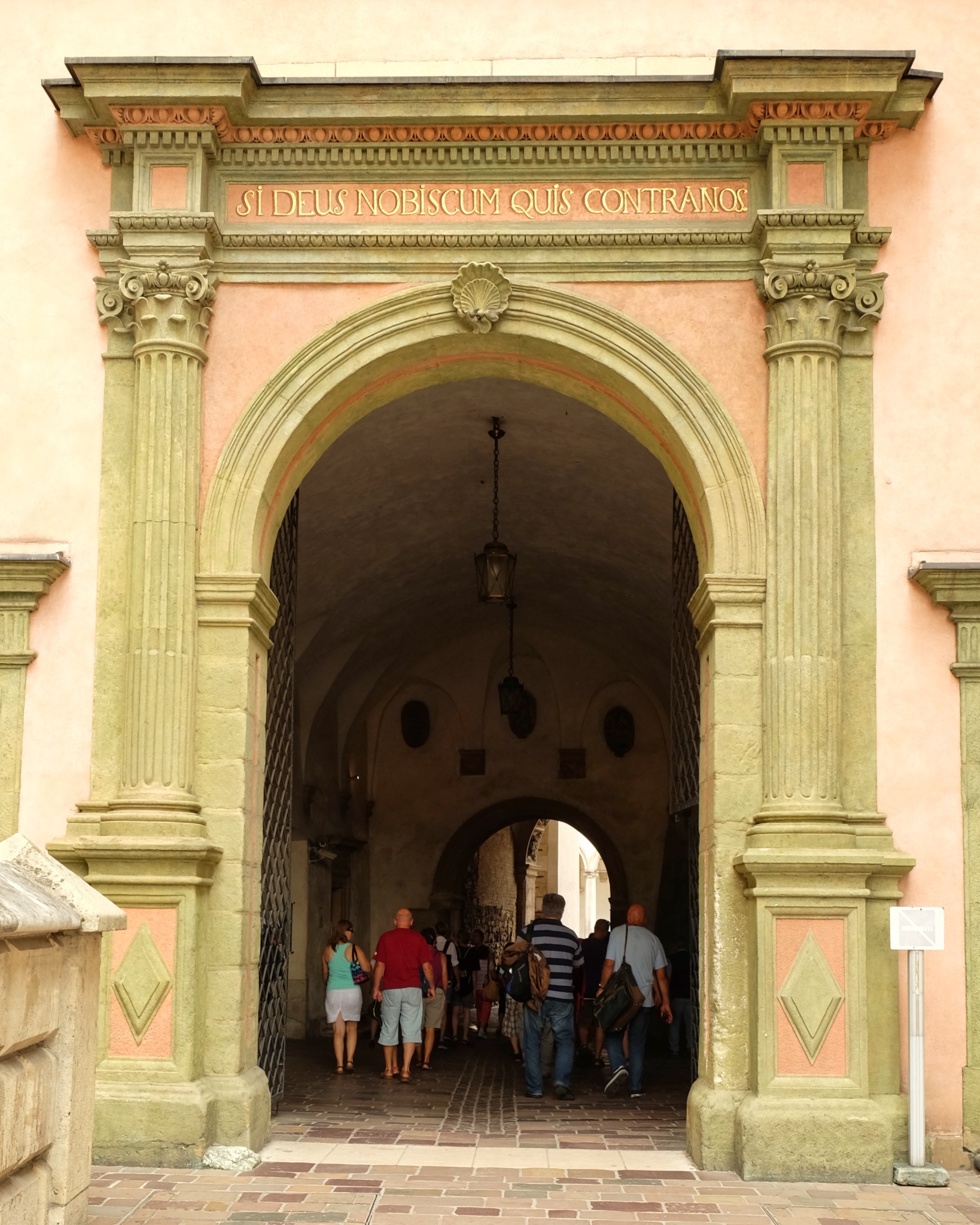 One of the interesting features of Kraków are the many arched passageway through buildings.
One of the interesting features of Kraków are the many arched passageway through buildings.
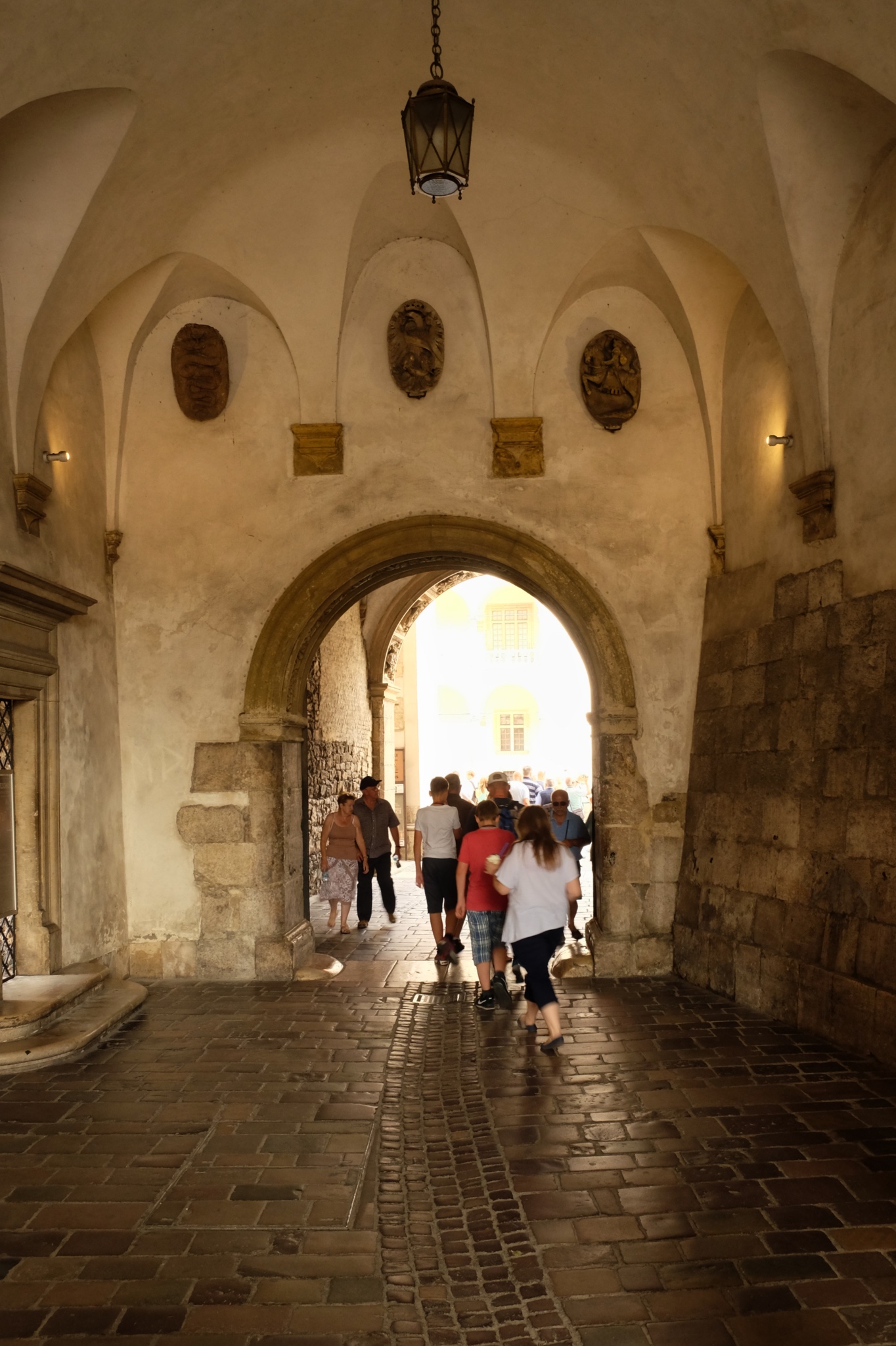 When the street you are walking on takes a turn through an arched passage you never know what you will see on the other side. Wonderful surprises all over town.
When the street you are walking on takes a turn through an arched passage you never know what you will see on the other side. Wonderful surprises all over town.
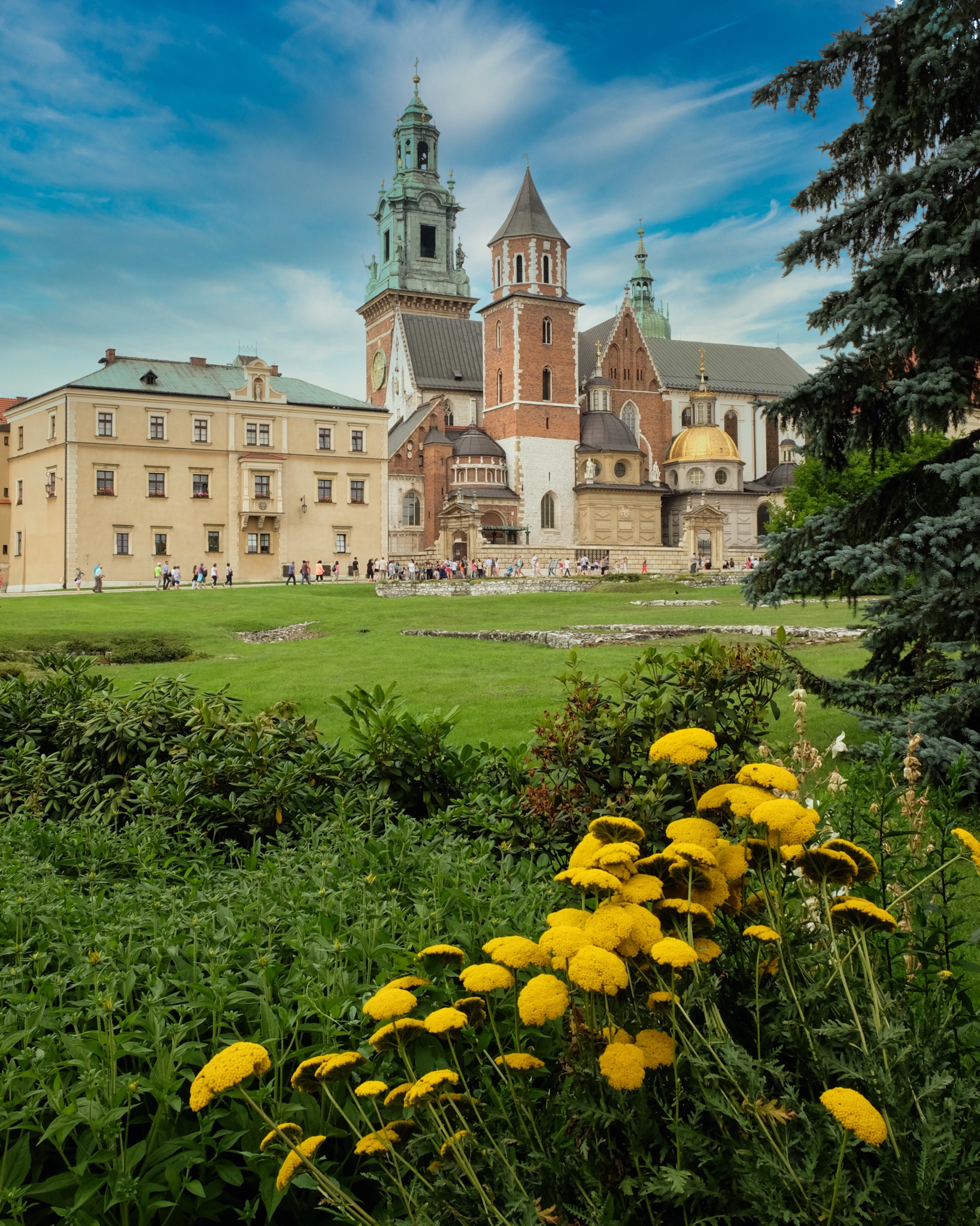 Sometimes you pop put of a street passage onto a beautiful park with. . . .
Sometimes you pop put of a street passage onto a beautiful park with. . . .
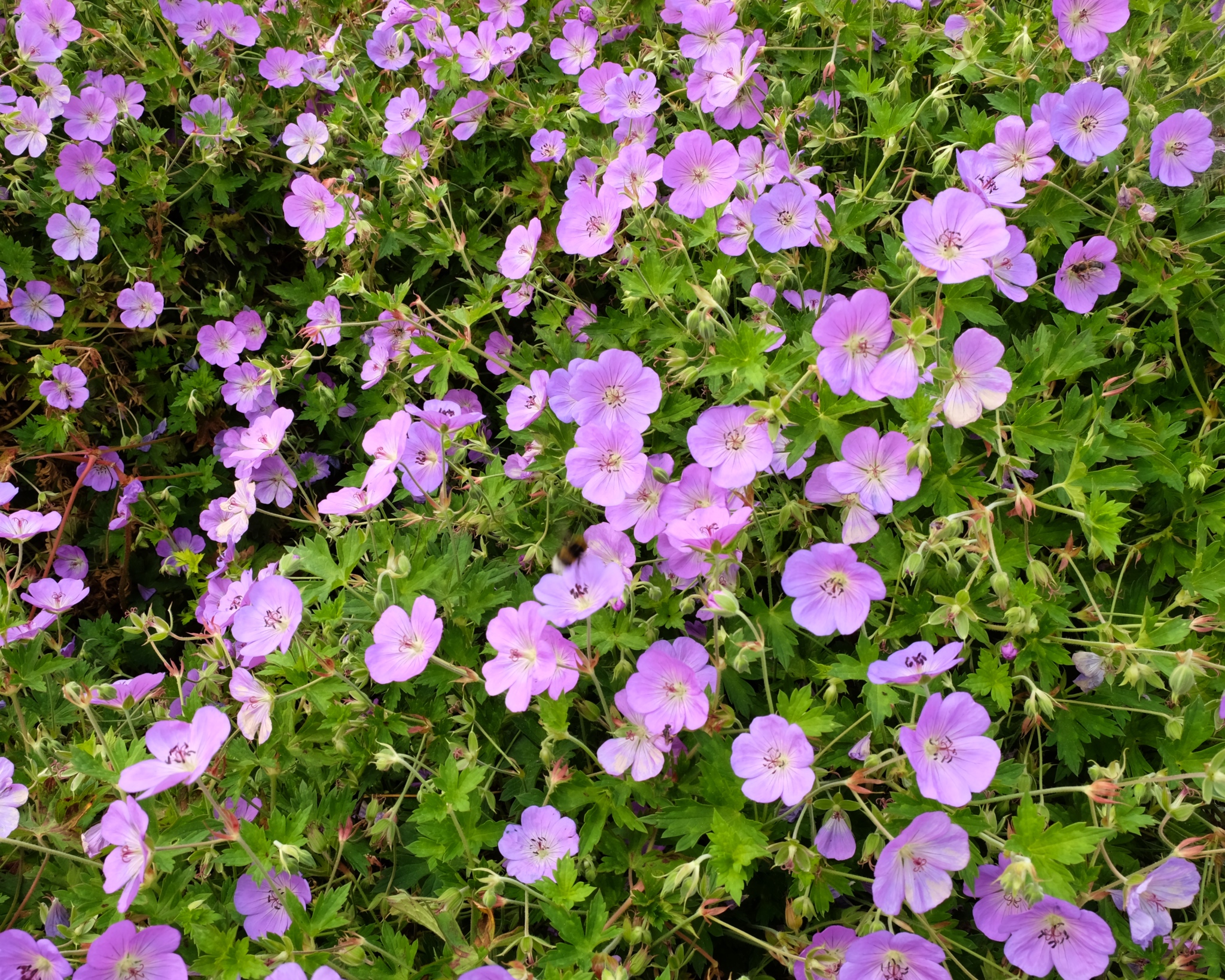 . . . beautiful flower beds.
. . . beautiful flower beds.
 Beautiful summer flowers.
Beautiful summer flowers.
 What a wonderful hairy moth flitting from flower to flower.
What a wonderful hairy moth flitting from flower to flower.
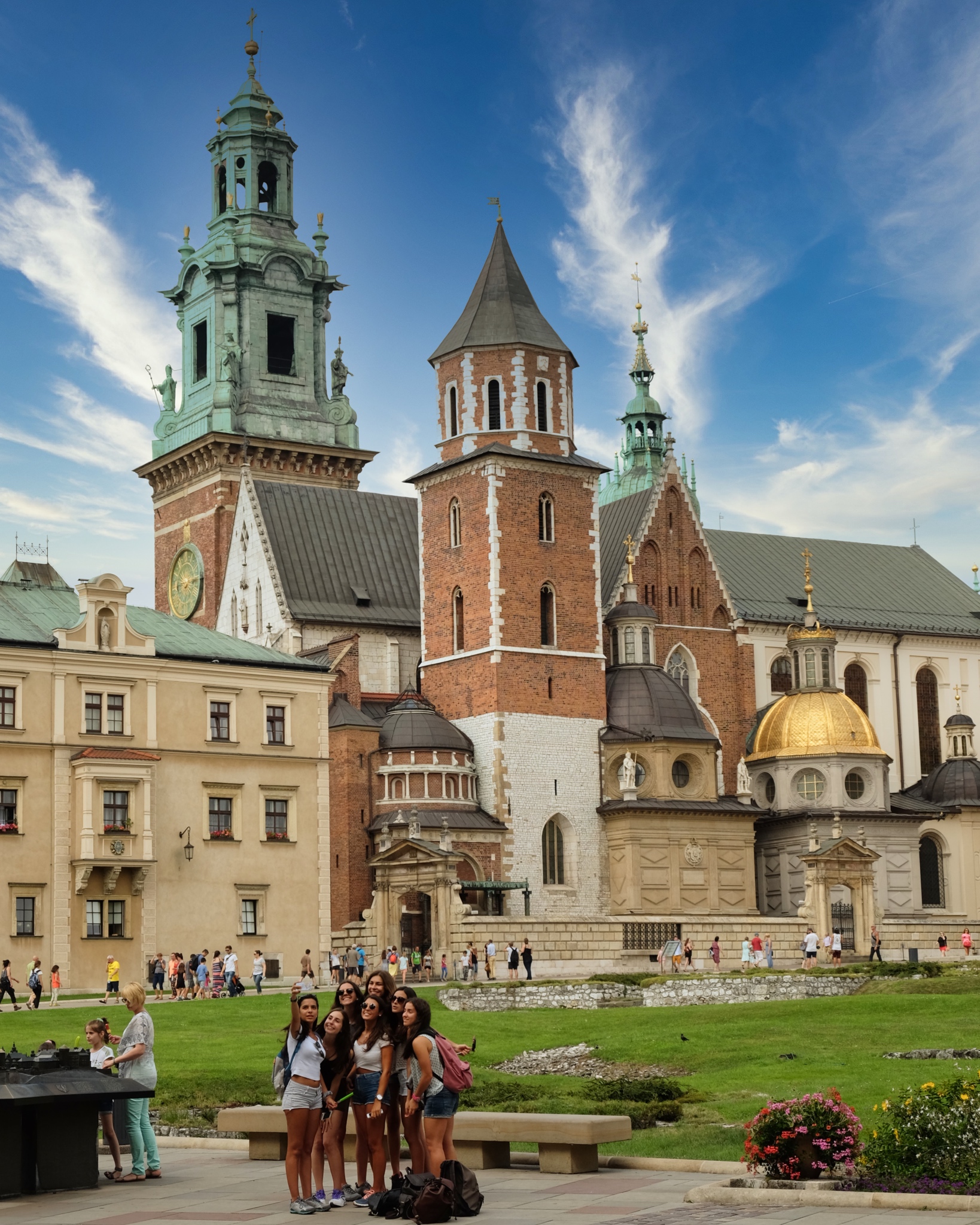 Tourists taking a group selfie in front of the historic Wawel Cathedral, first built in the 11th century, burned in 1302, and rebuilt in the 14th century.
Tourists taking a group selfie in front of the historic Wawel Cathedral, first built in the 11th century, burned in 1302, and rebuilt in the 14th century.
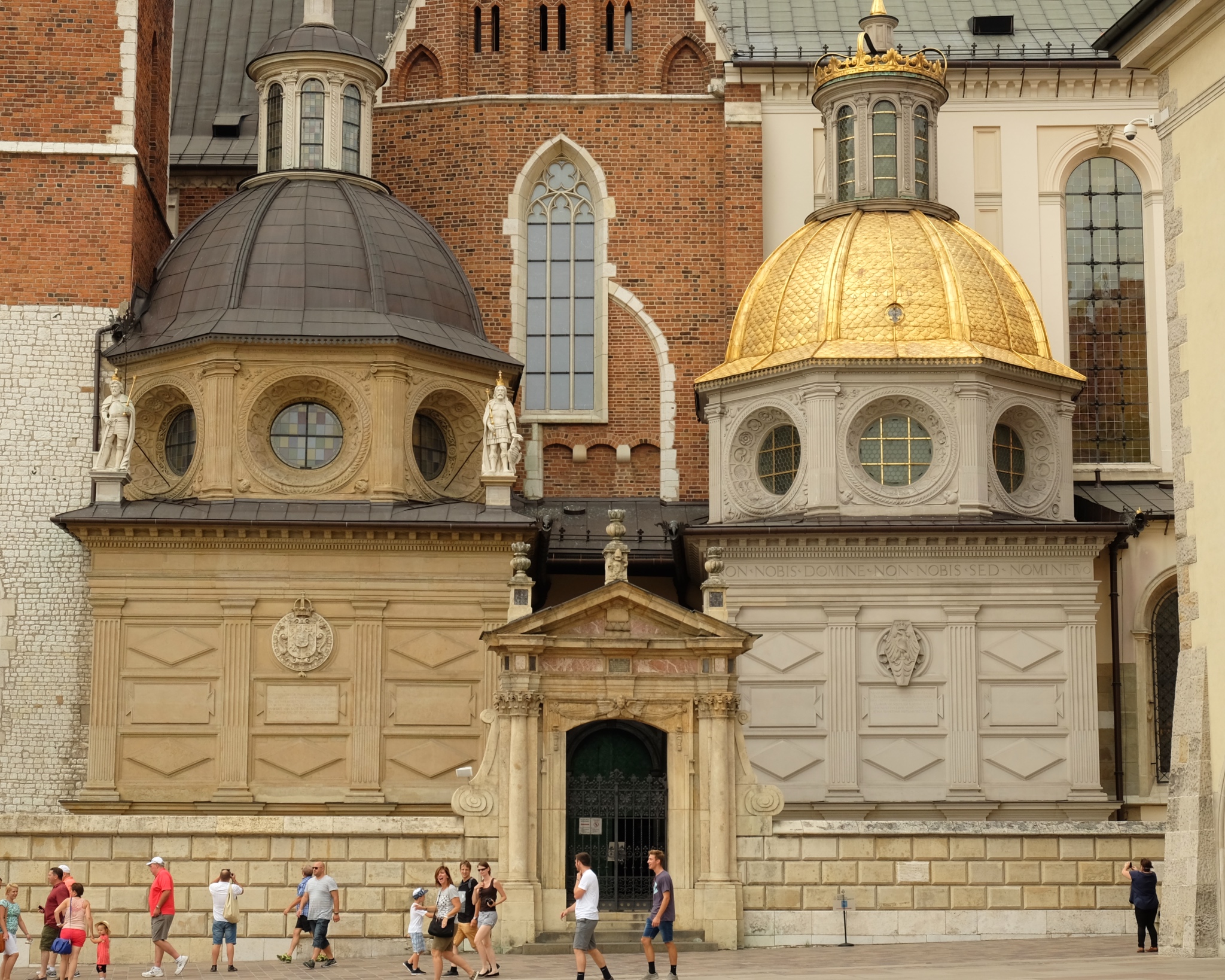 The domed facade of Wawel Cathedral.
The domed facade of Wawel Cathedral.
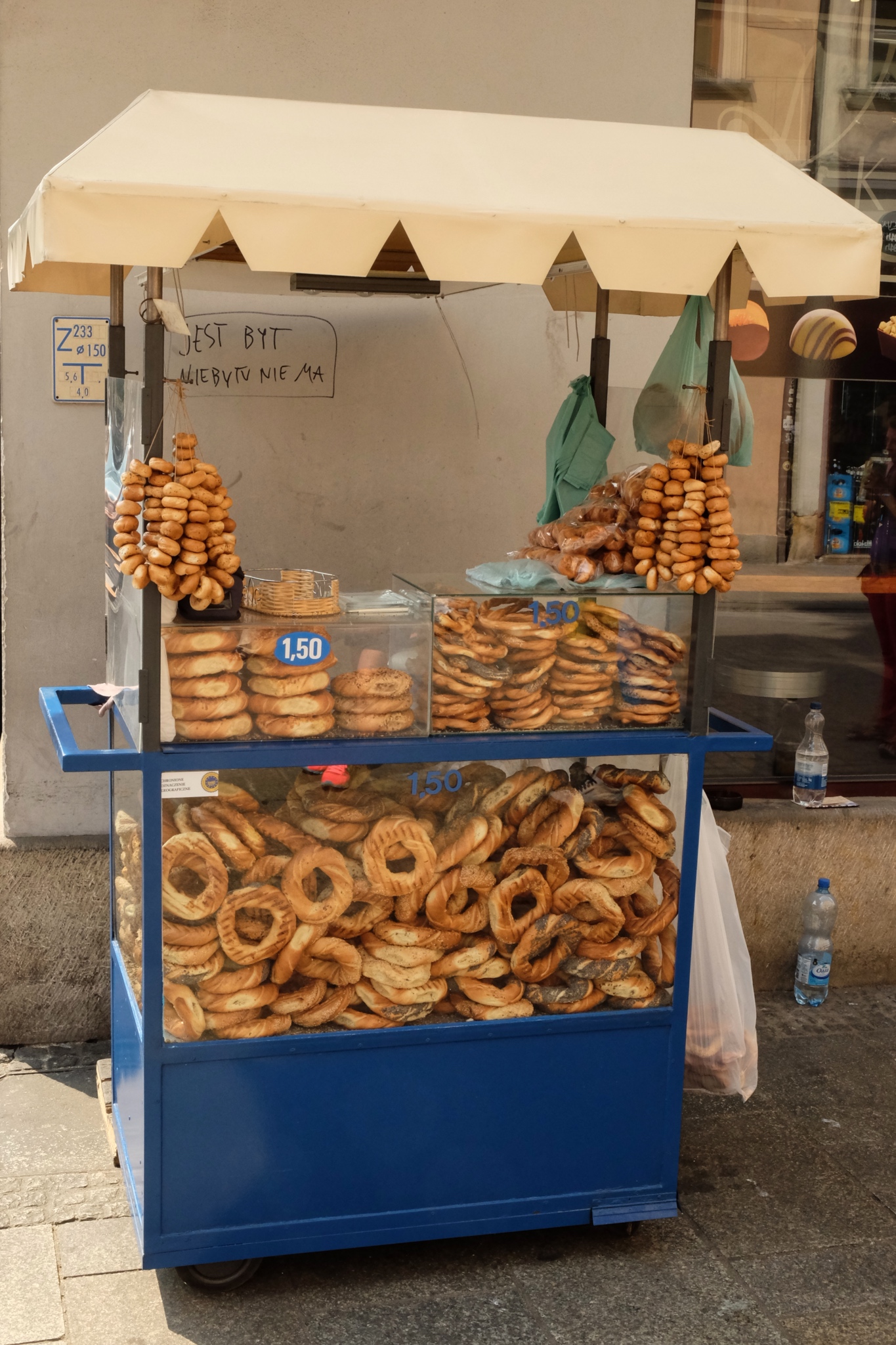 Beautiful bread snackage.
Beautiful bread snackage.
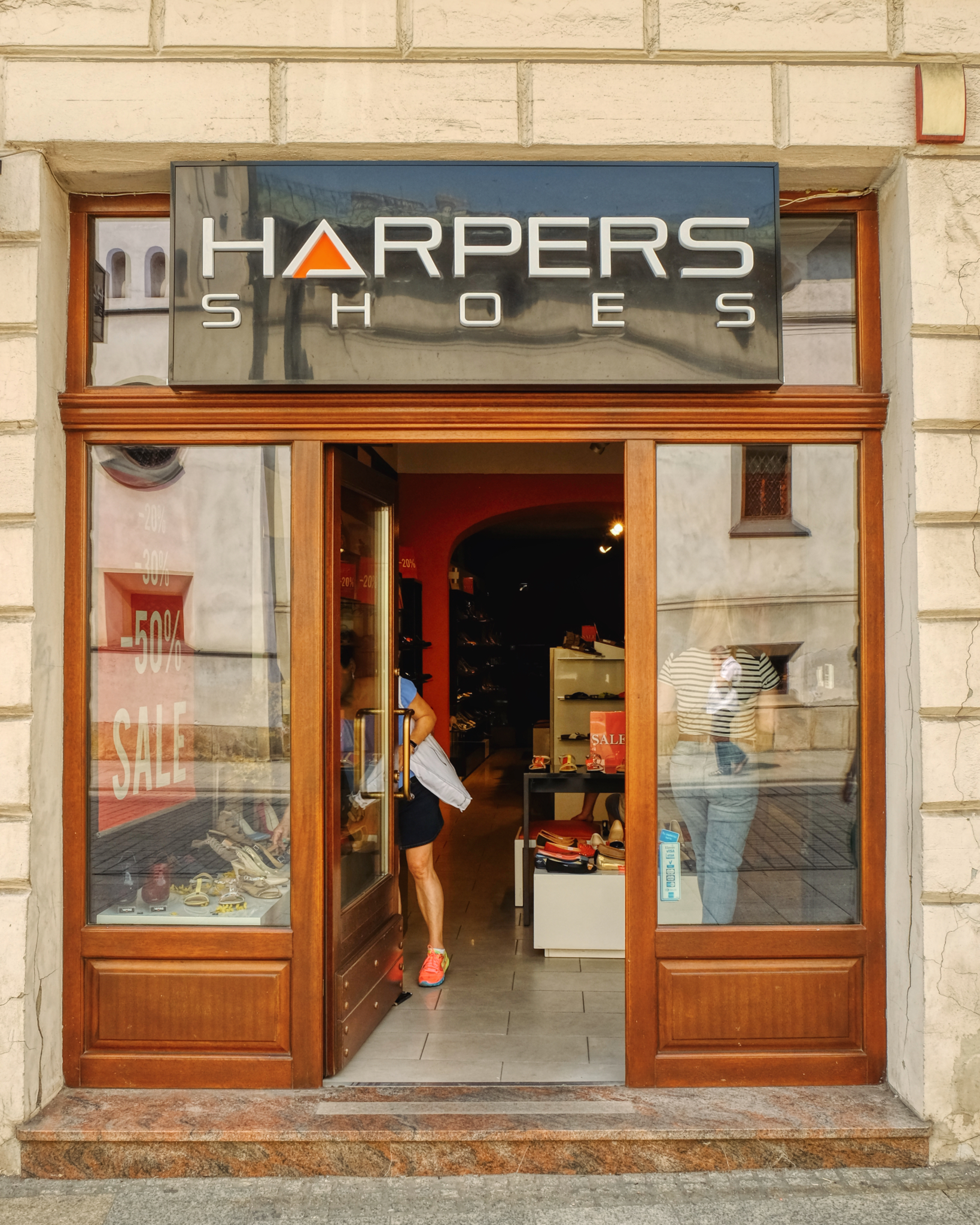 I couldn't resist!!!
I couldn't resist!!!
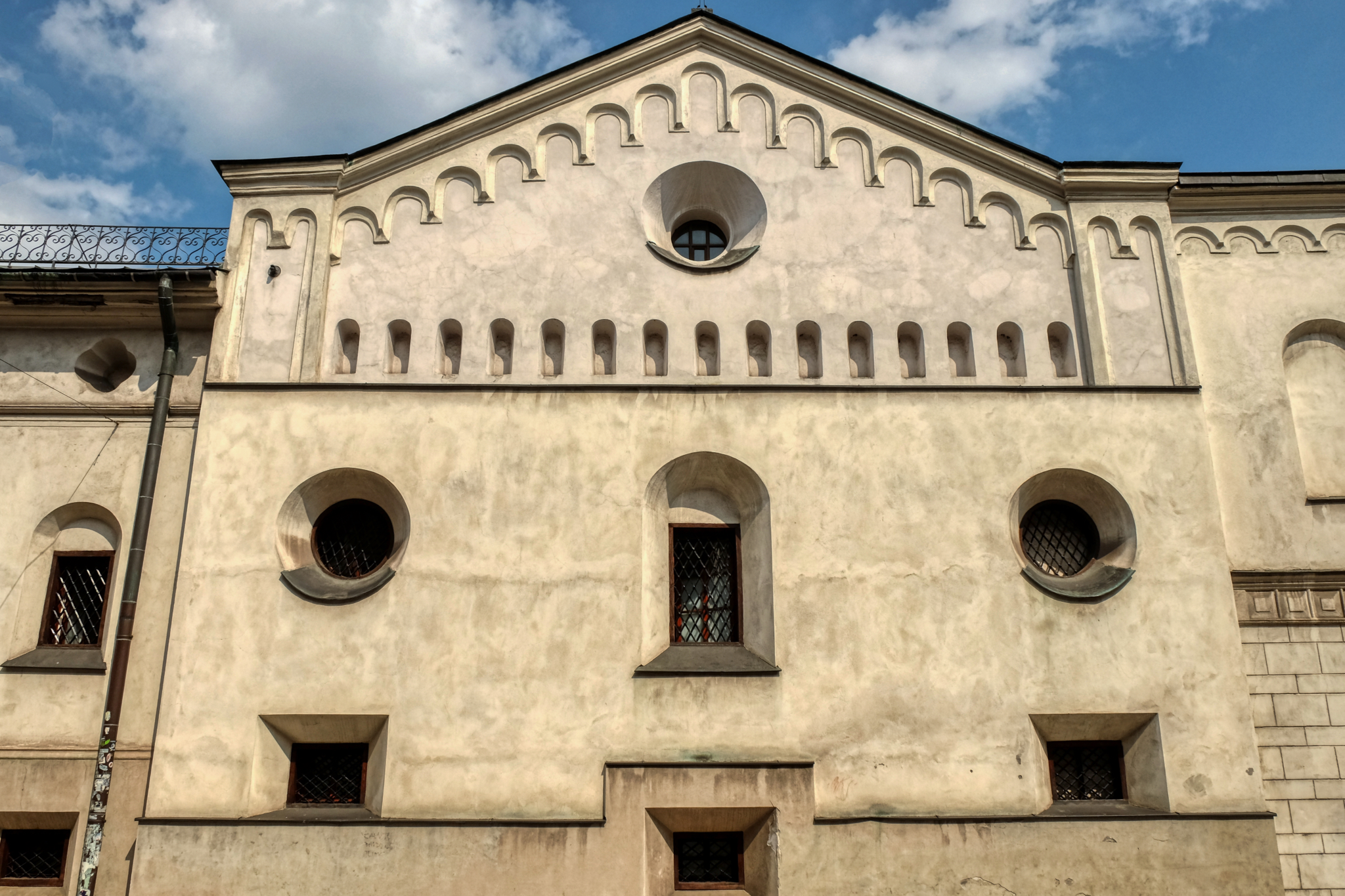 I absolutely love the architectural style of this city center monastery.
I absolutely love the architectural style of this city center monastery.
 A wonderful city for just ambling around.
A wonderful city for just ambling around.
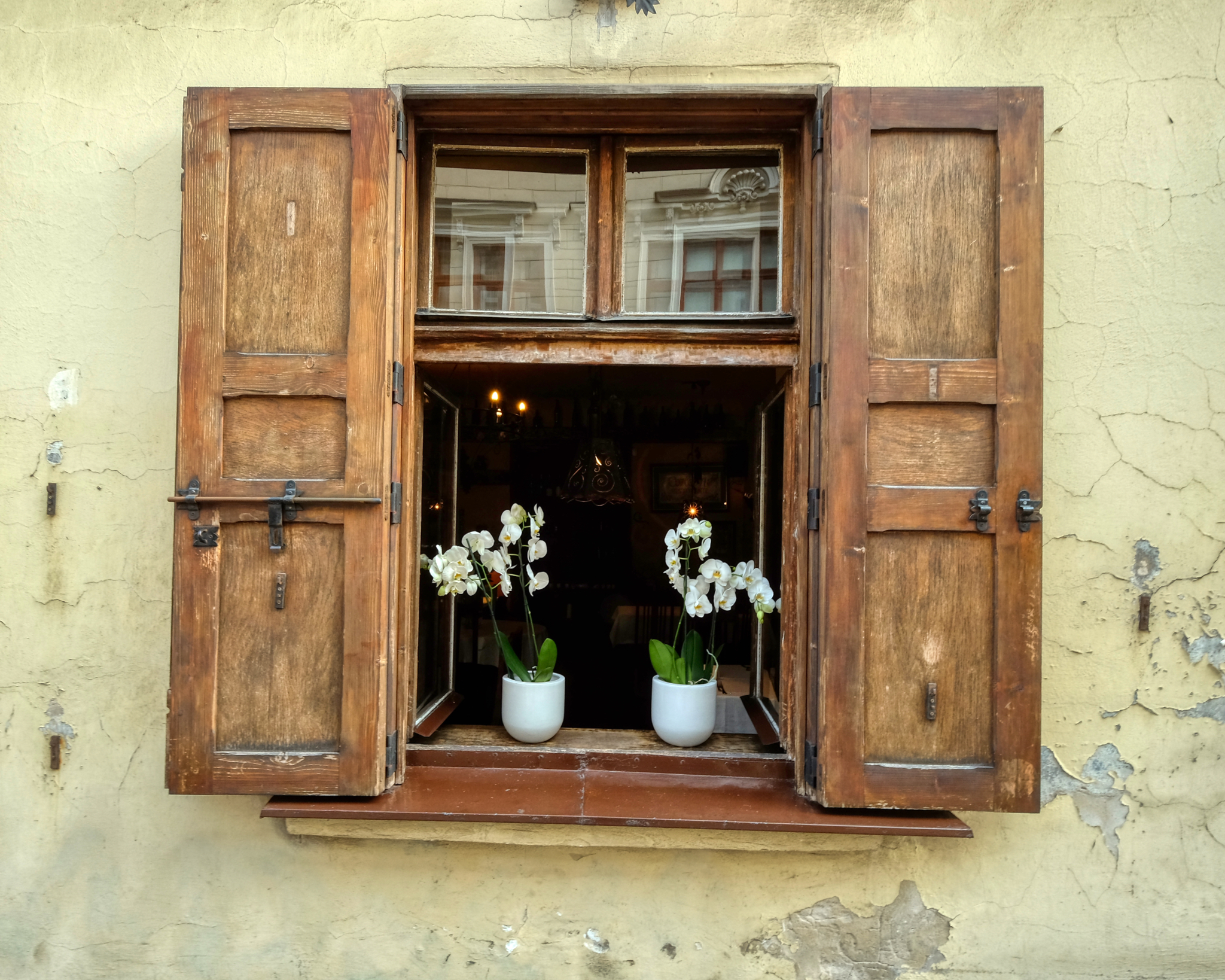 Ah! Orchids! Reminded us of our home in Thailand.
Ah! Orchids! Reminded us of our home in Thailand.
 We stopped in at a cafe on a small side street only to discover it was on the route of the central square horse carriage route. They came by every two minutes!
We stopped in at a cafe on a small side street only to discover it was on the route of the central square horse carriage route. They came by every two minutes!
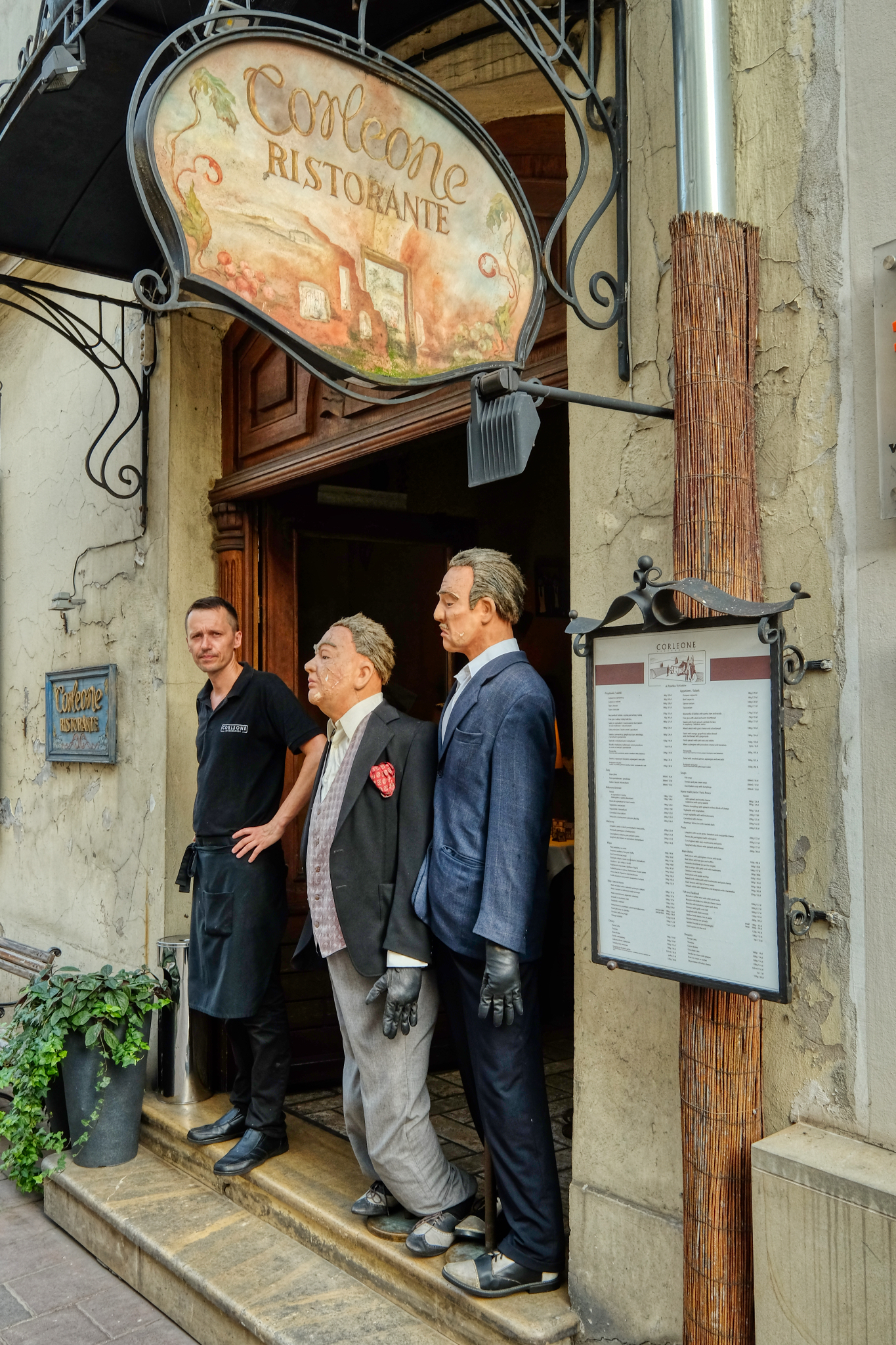 A restaurateur with a sense of humor.
A restaurateur with a sense of humor.
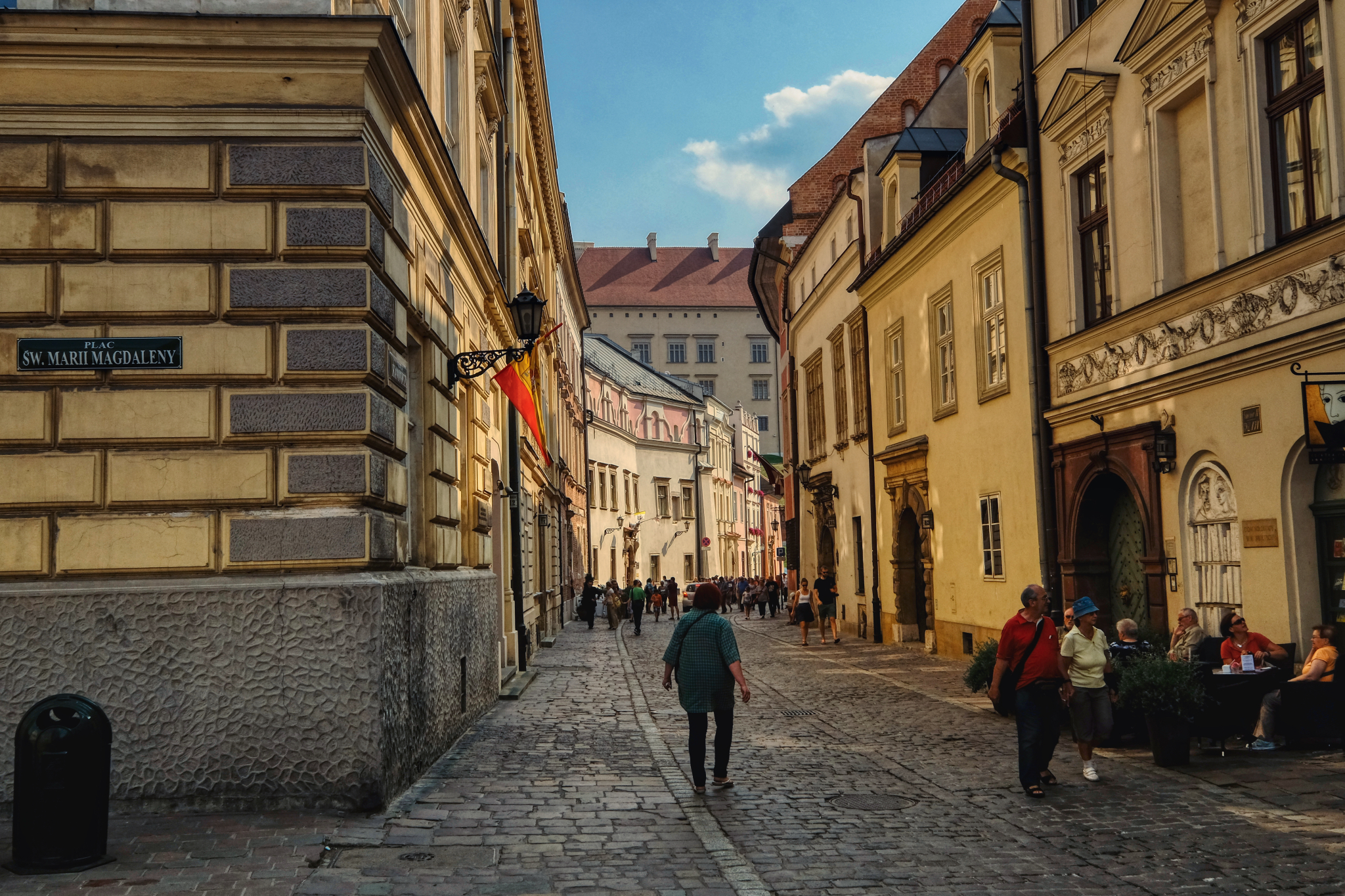 Lovely medieval cobbled lanes.
Lovely medieval cobbled lanes.
 The old medieval city center as it was 500 years ago . . .
The old medieval city center as it was 500 years ago . . .
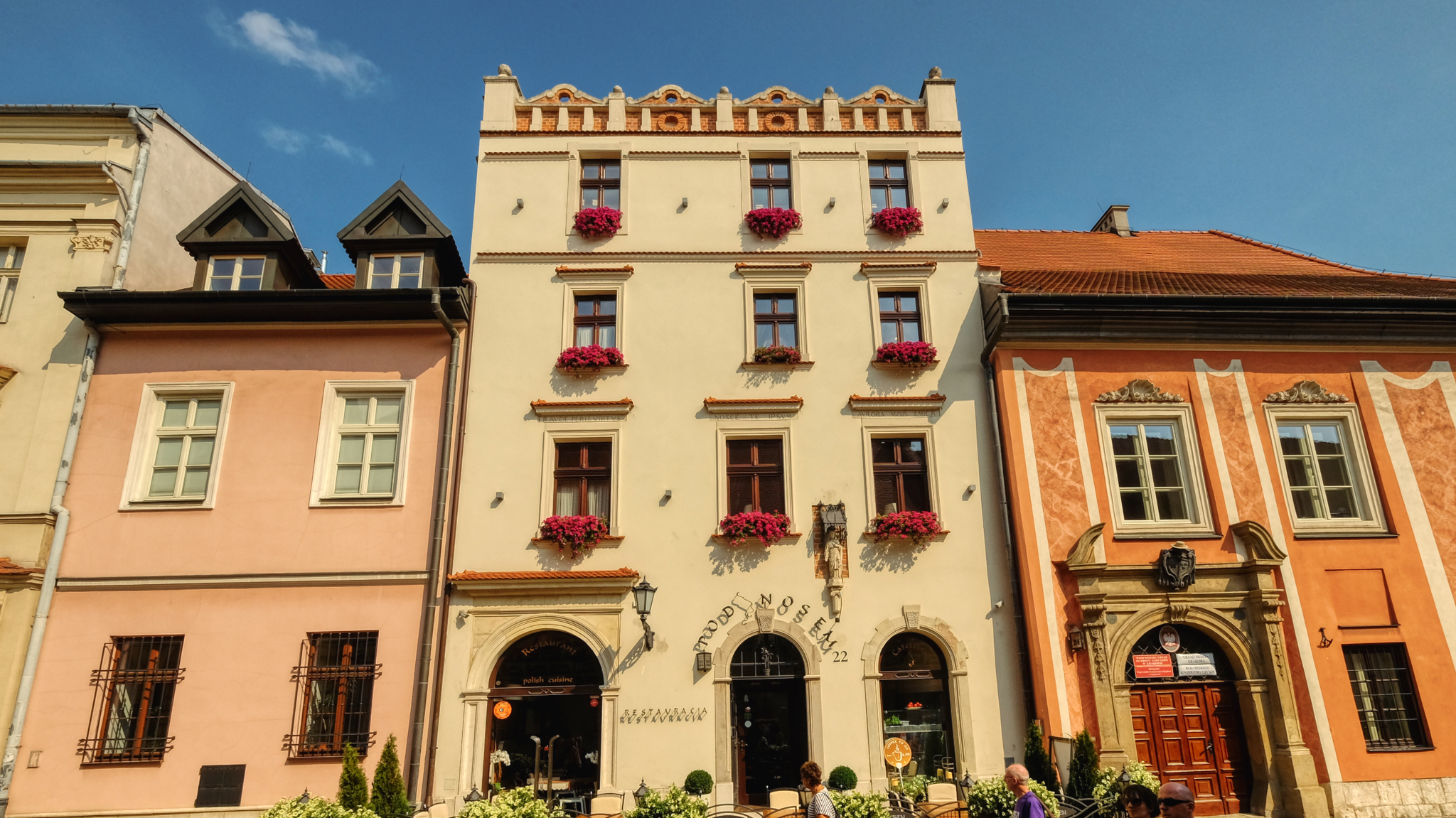 Beautifully decorated and adorned cityscape.
Beautifully decorated and adorned cityscape.
 Monumental architecture along a cobbled alley.
Monumental architecture along a cobbled alley.
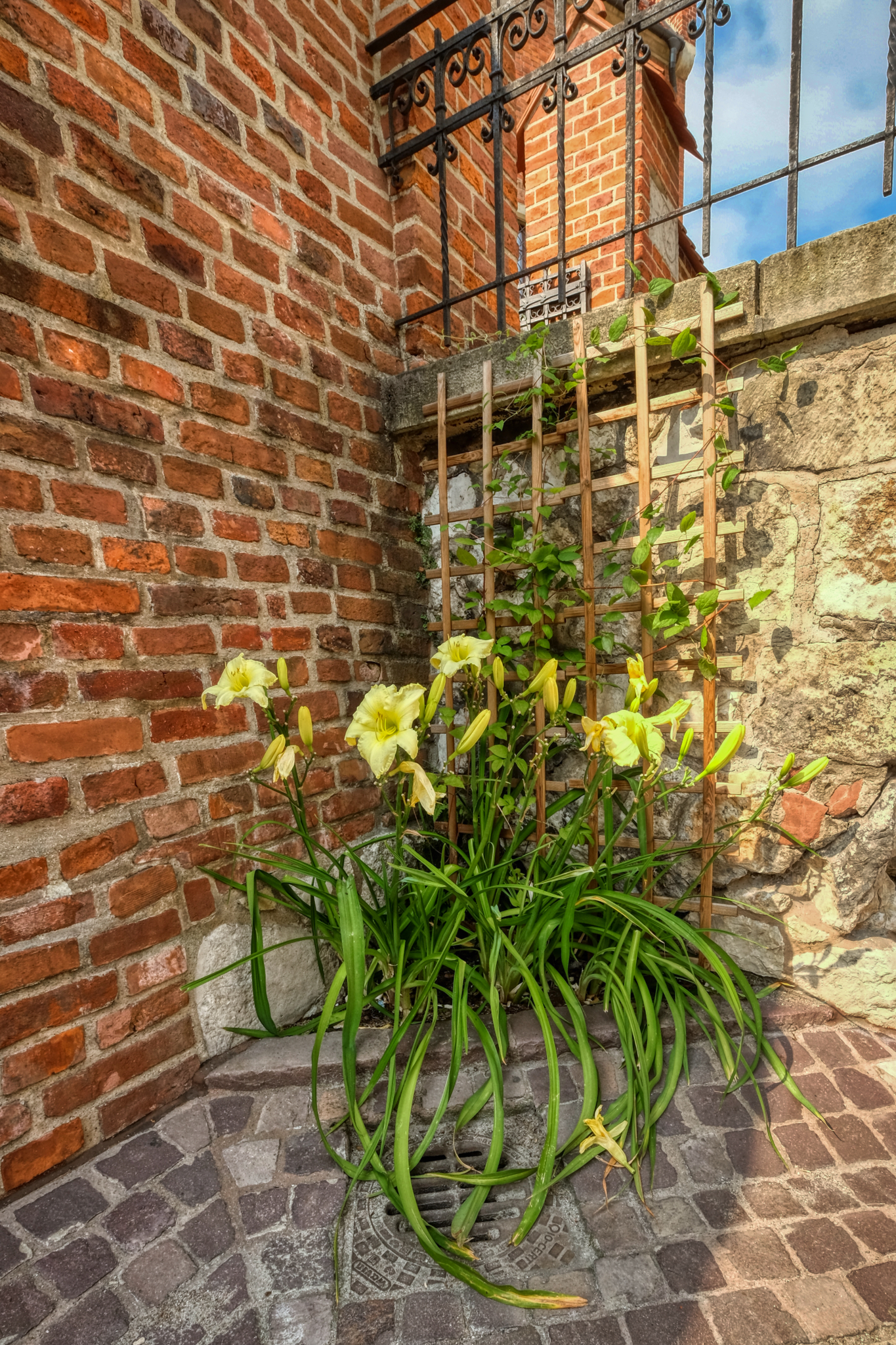 Little beauty arrangements here and there throughout this charming old city.
Little beauty arrangements here and there throughout this charming old city.
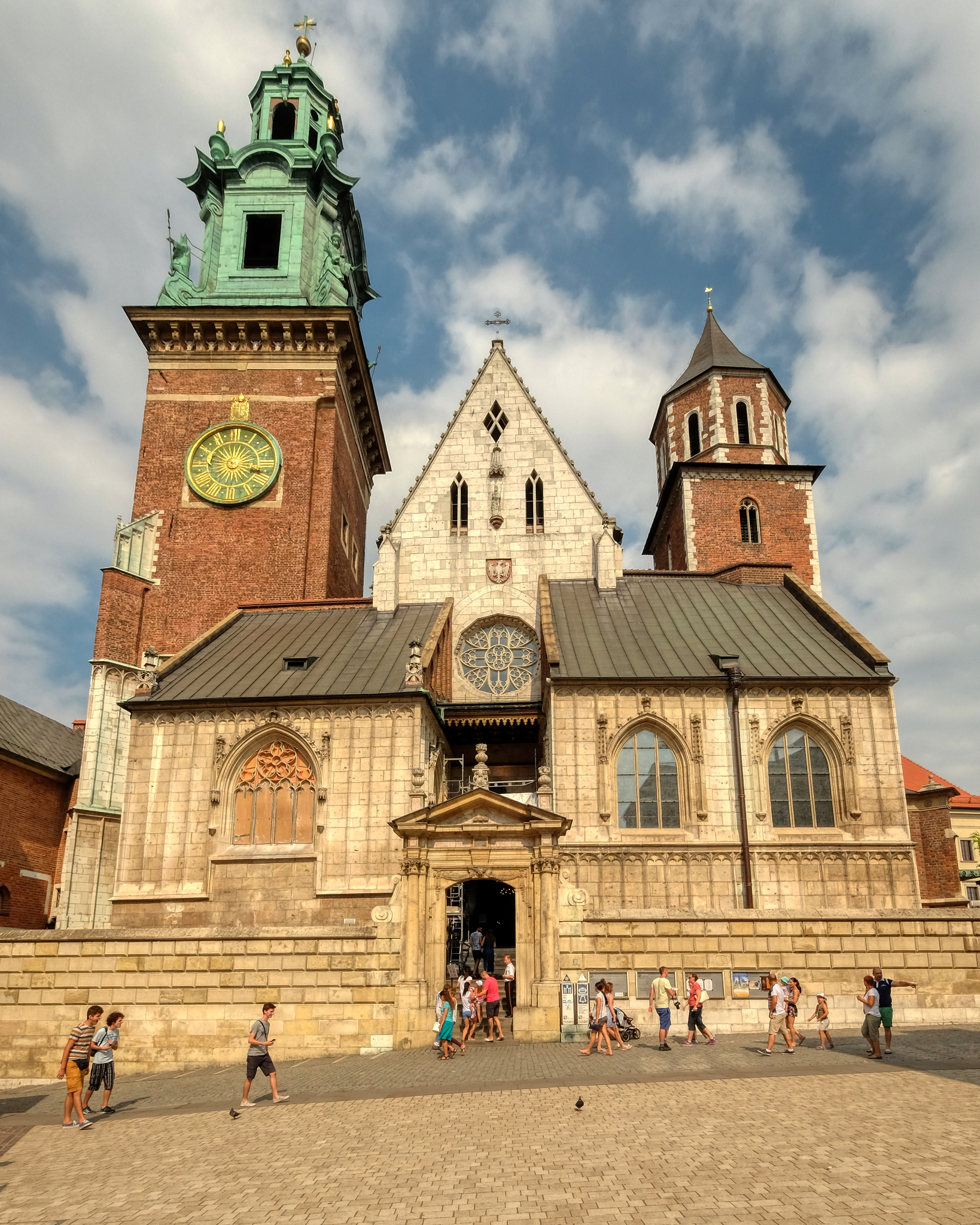 The castle chapel square.
The castle chapel square.
 A passage to . . . ?
A passage to . . . ?
 The courtyard of Kraców's Wawel Castle.
The courtyard of Kraców's Wawel Castle.
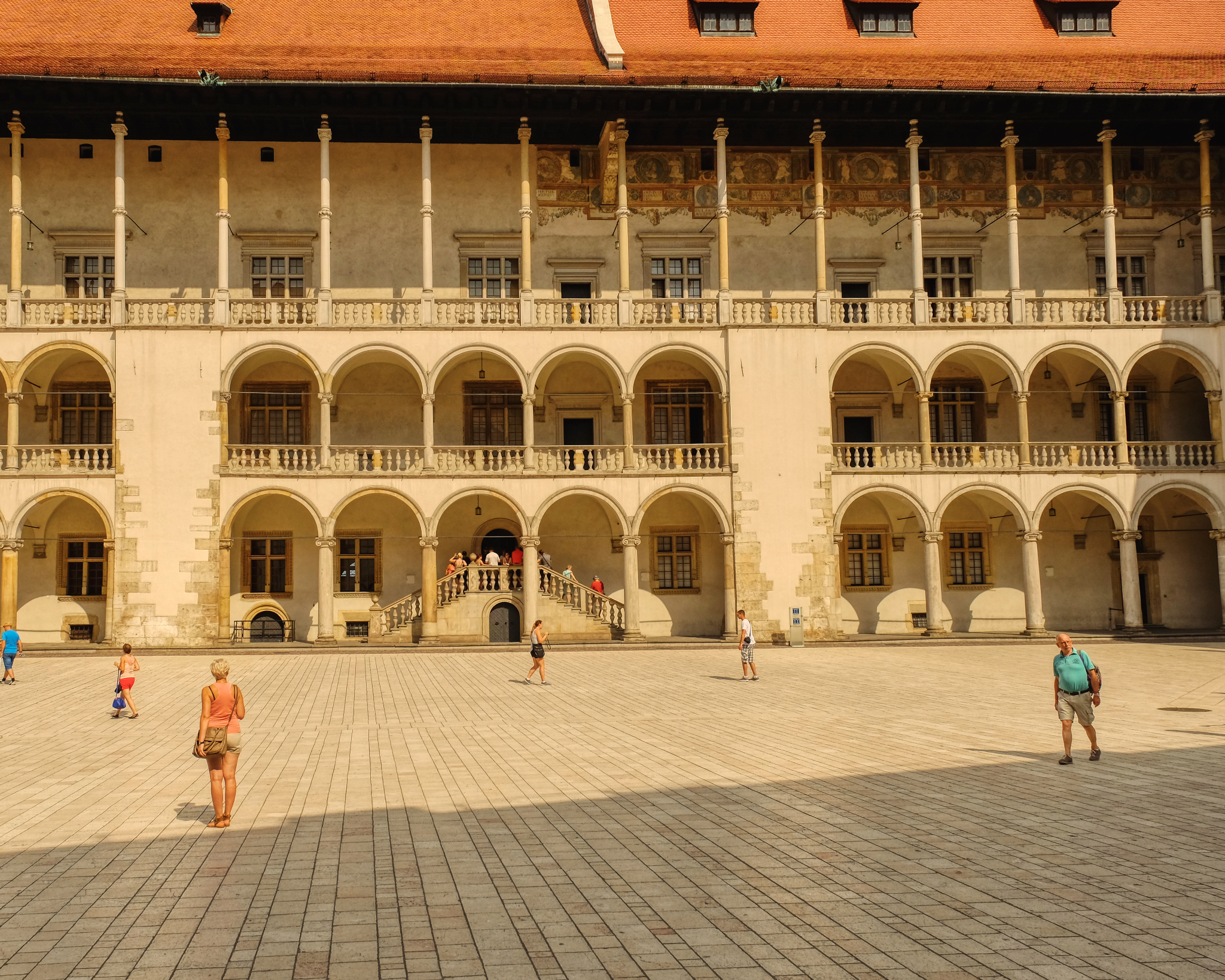 The castle courtyard . . . layers of balconies and doors . . . what mysteries have taken place here?
The castle courtyard . . . layers of balconies and doors . . . what mysteries have taken place here?
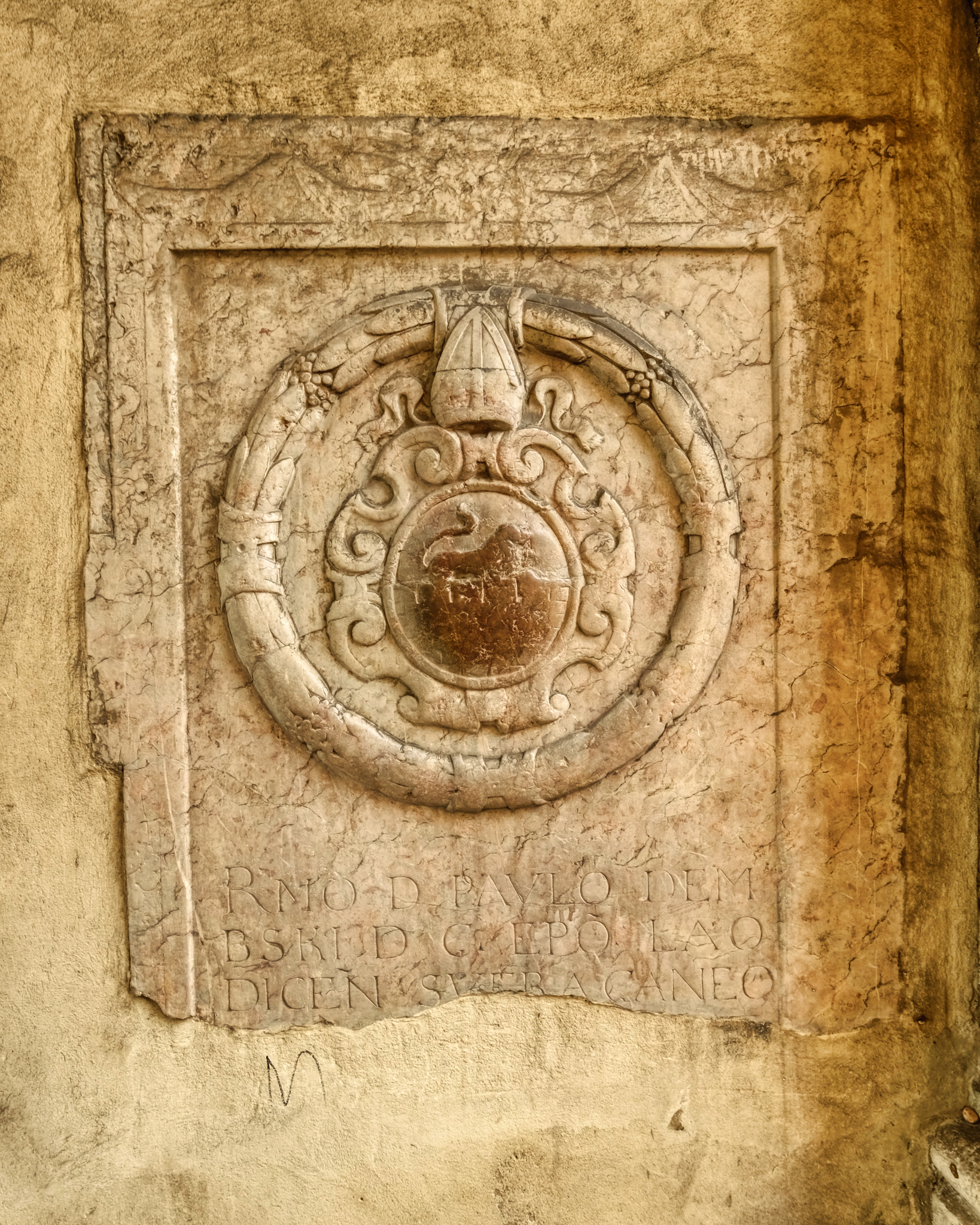 Turn your head one way and you see a royal insignia . . . turn it the other way . . .
Turn your head one way and you see a royal insignia . . . turn it the other way . . .
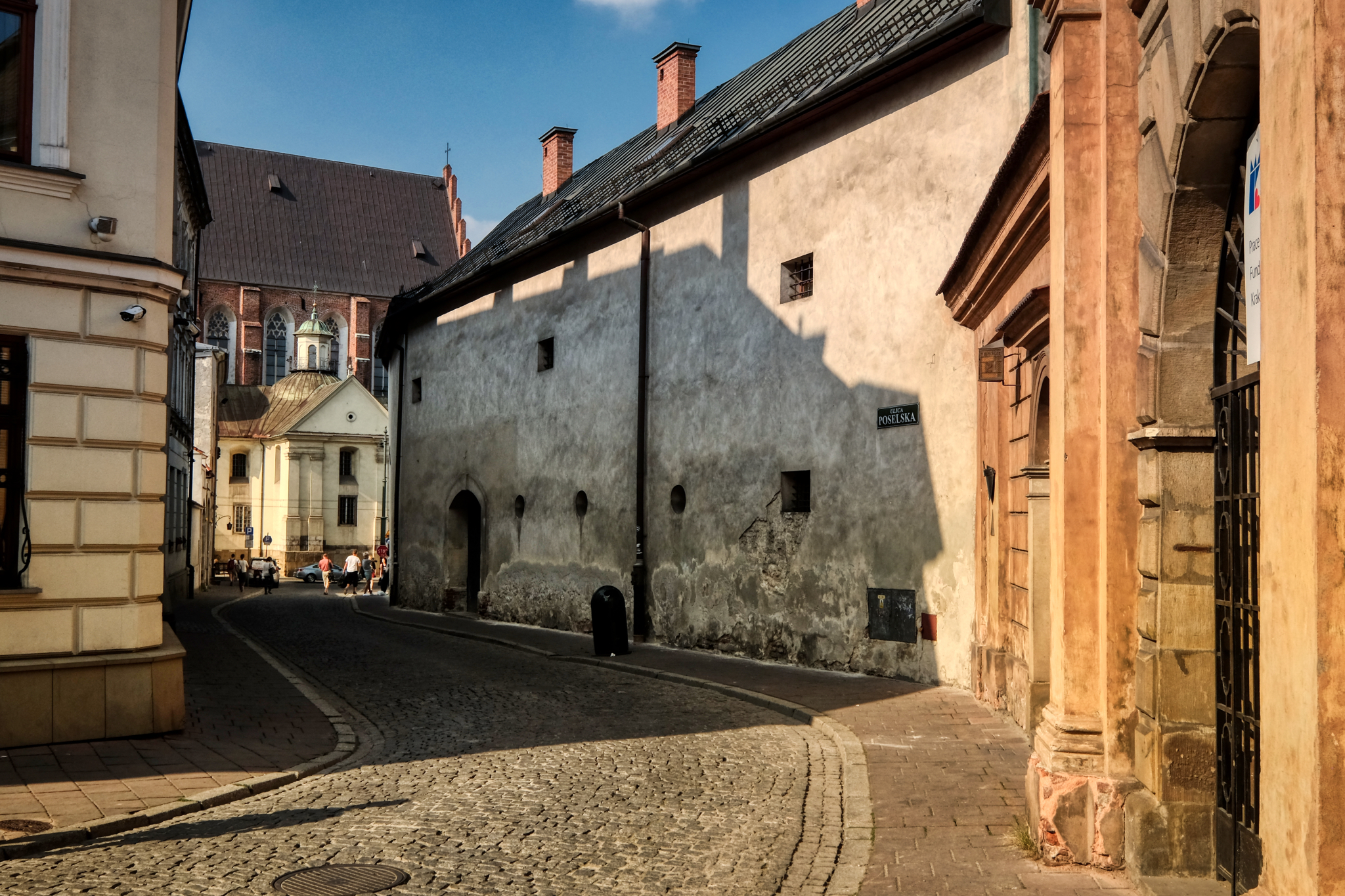 Strolling along the narrow side streets next to the castle.
Strolling along the narrow side streets next to the castle.
 . . . the entrance to a calm peaceful old chapel . . .
. . . the entrance to a calm peaceful old chapel . . .
 . . . and the quiet garden within.
. . . and the quiet garden within.
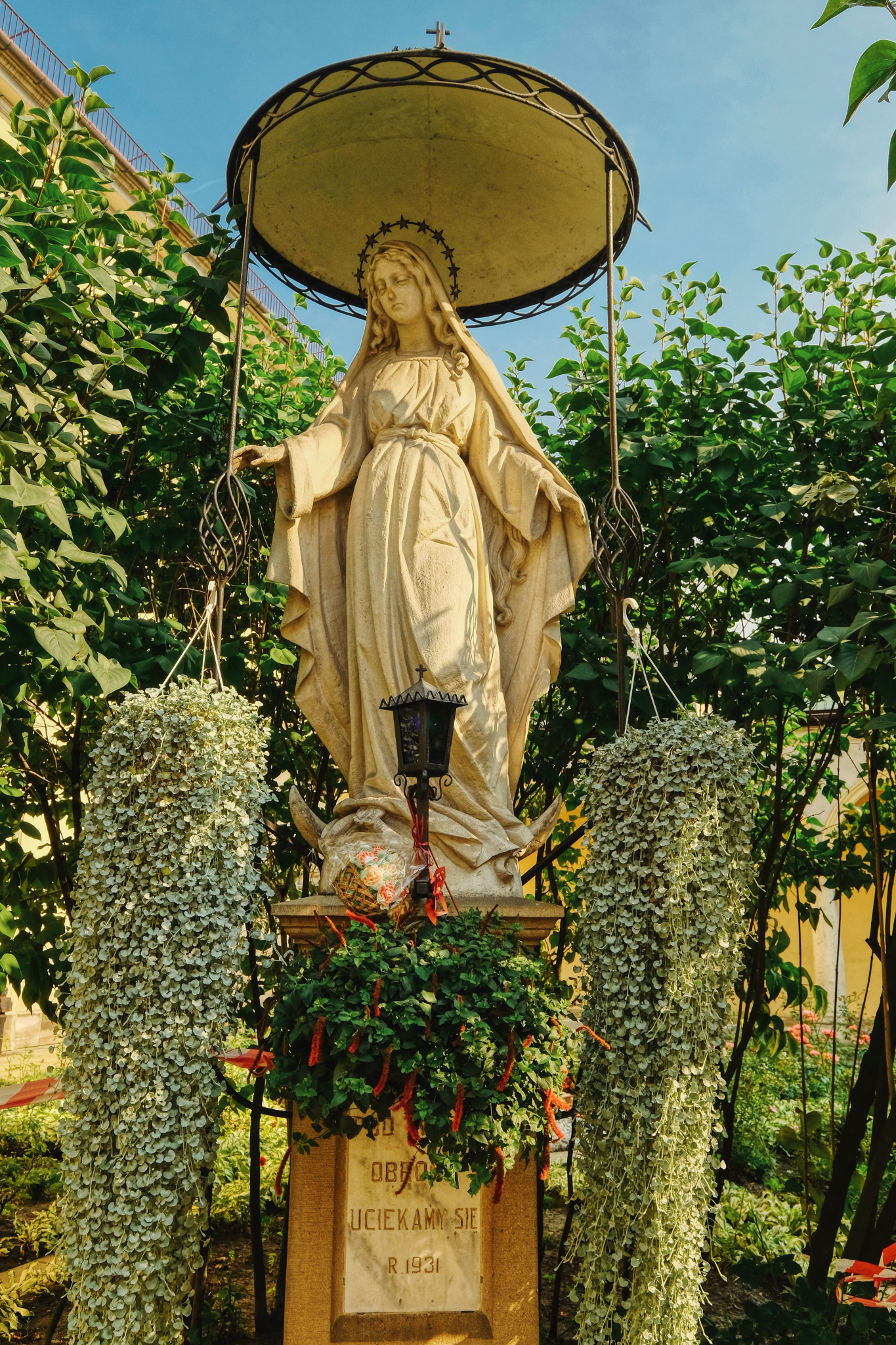 One of thousands of statues of Mary throughout the city. Poland is still a heavily Catholic country.
One of thousands of statues of Mary throughout the city. Poland is still a heavily Catholic country.
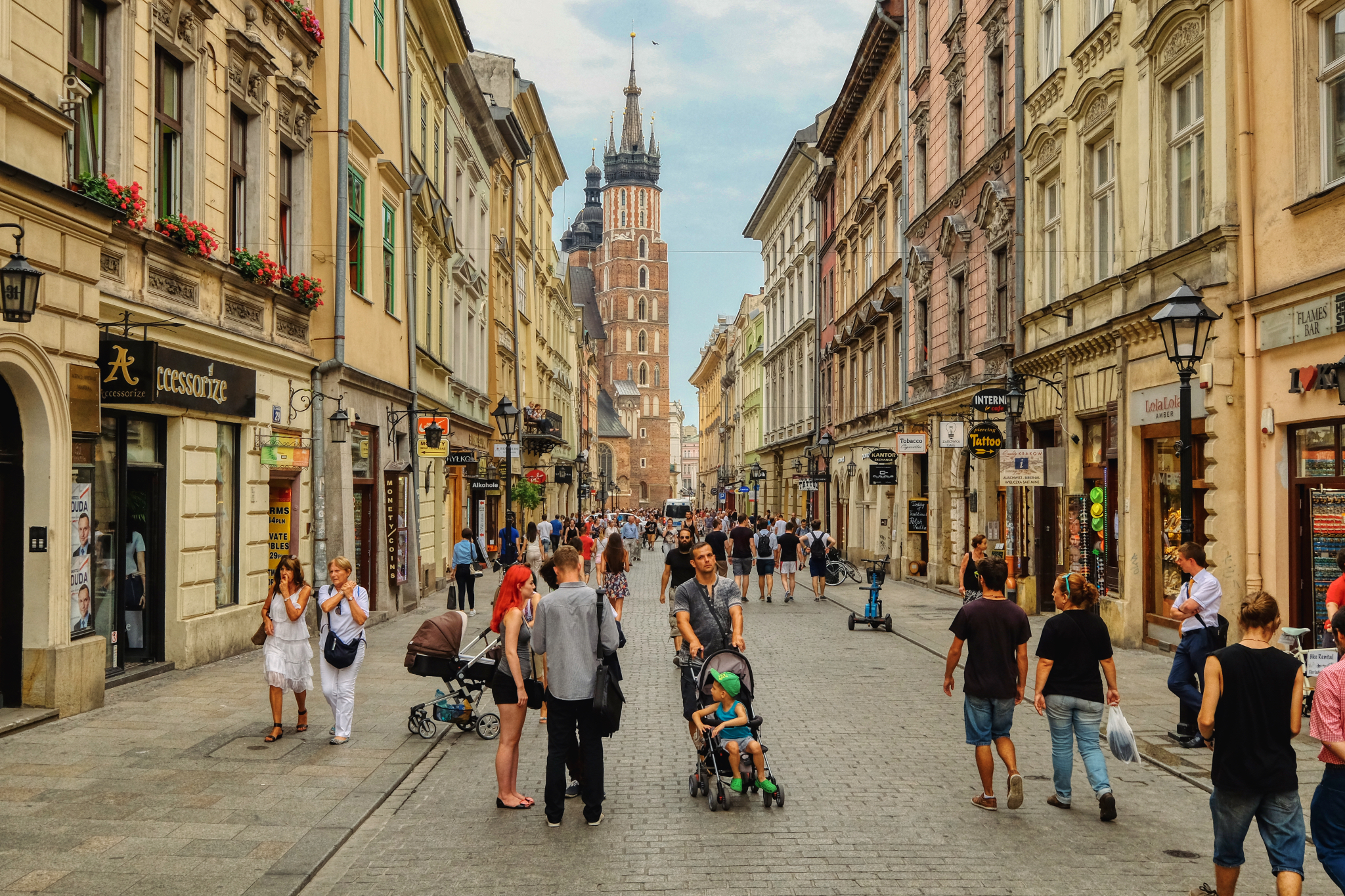 The attractive main shopping area, Floriańsk Street.
The attractive main shopping area, Floriańsk Street.
 Thai massage! We were tempted!!! Some of the very old buildings held modern shopping malls in their interiors.
Thai massage! We were tempted!!! Some of the very old buildings held modern shopping malls in their interiors.
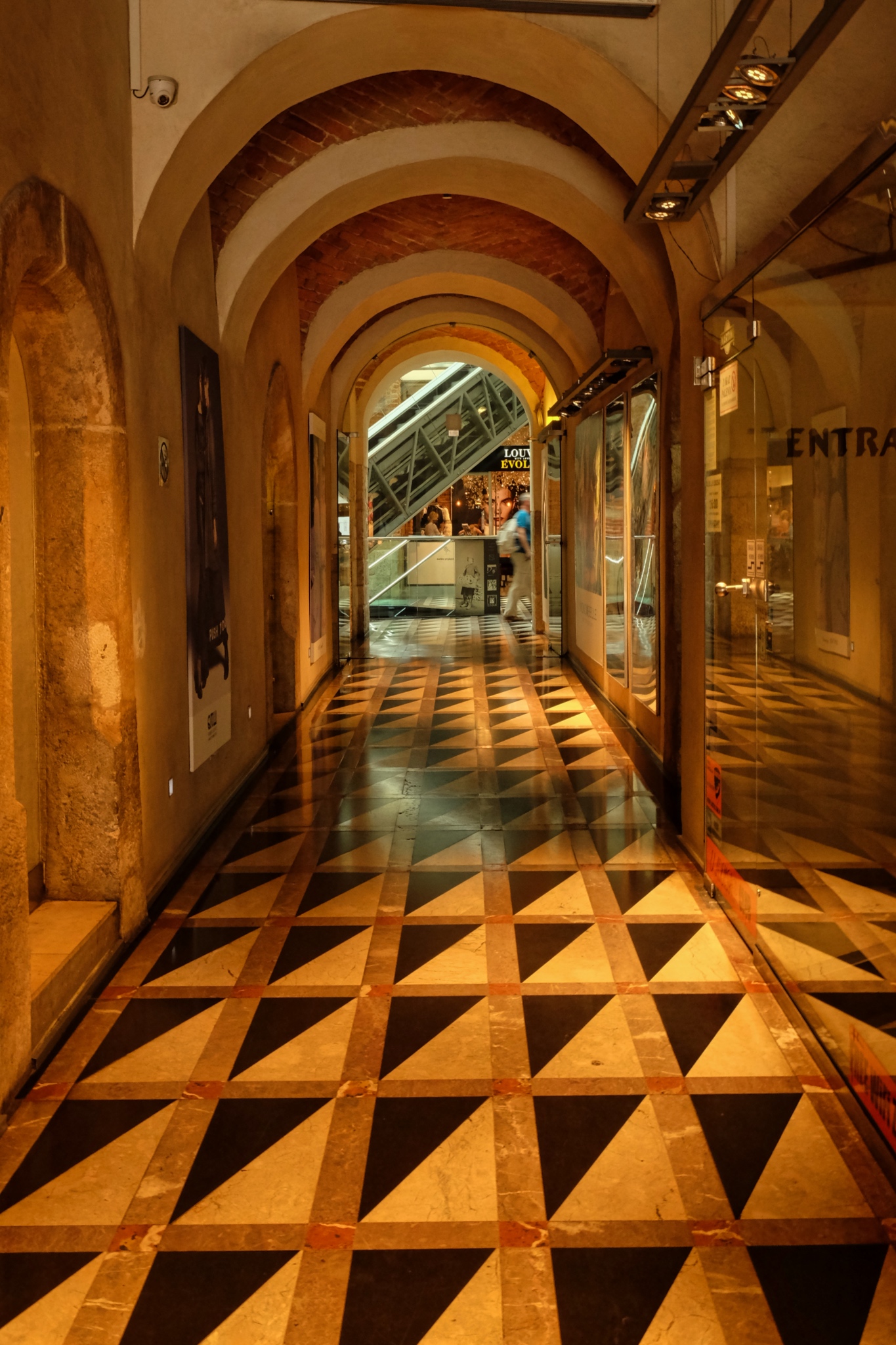 Interesting floor in the passage to a high-end shopping galleria.
Interesting floor in the passage to a high-end shopping galleria.
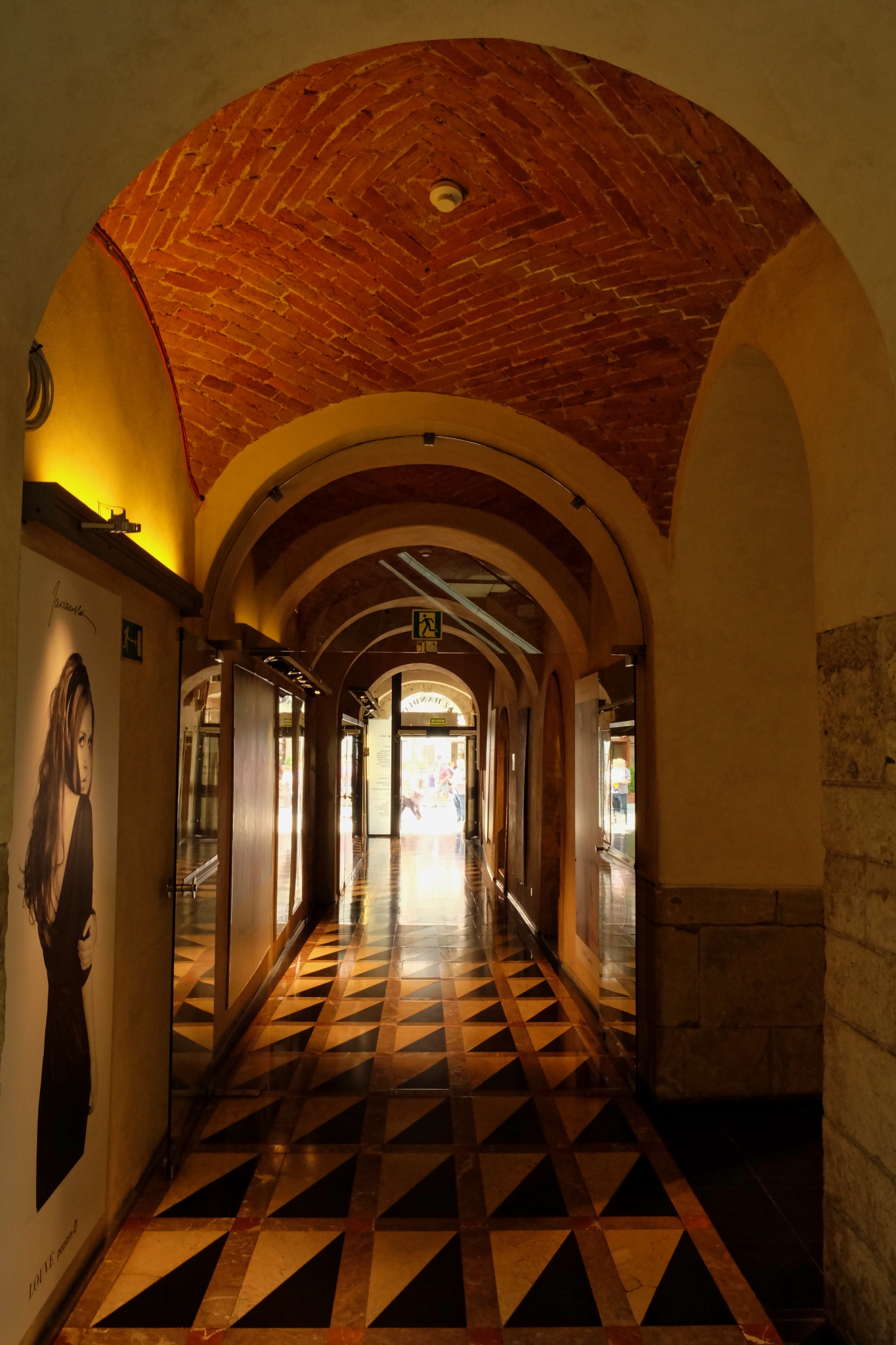 Nice the way the old features have been integrated into the modern shopping area.
Nice the way the old features have been integrated into the modern shopping area.
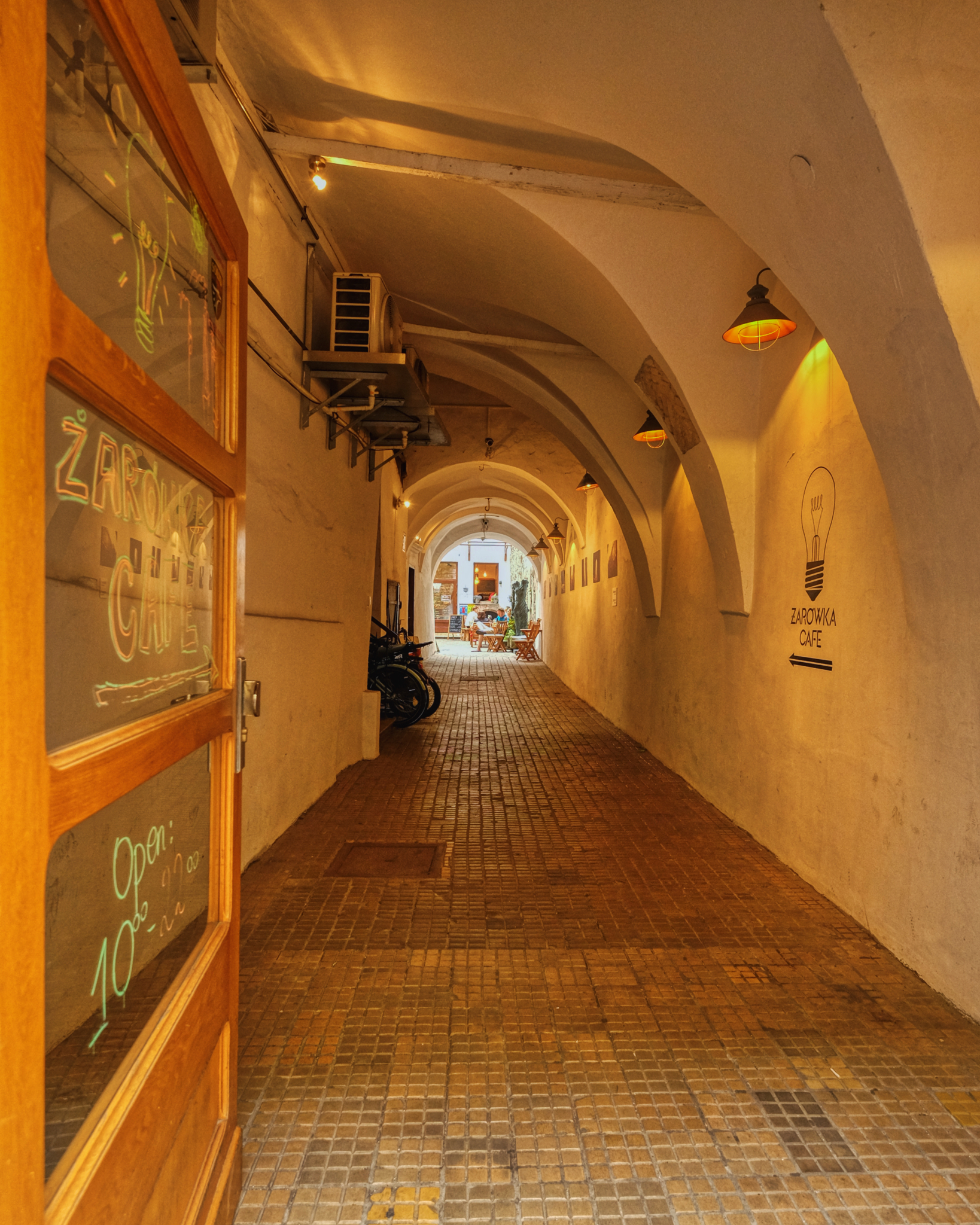 It was so interesting how many little passages lead back into courtyards filled with shops and restaurants. I would love to live in this city!
It was so interesting how many little passages lead back into courtyards filled with shops and restaurants. I would love to live in this city!
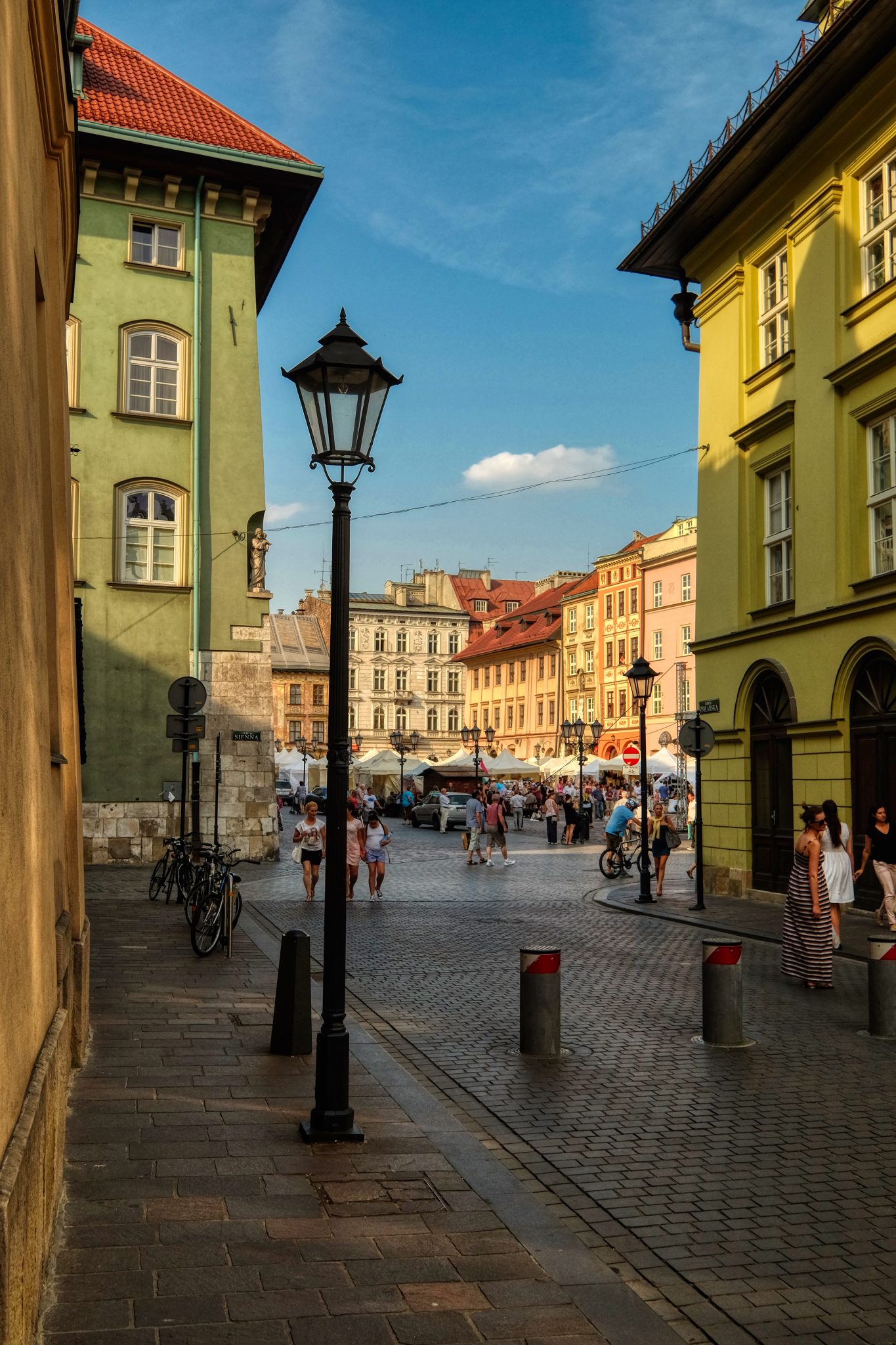 Exploring the little streets, arched passages, and small alleys always lead to big surprises.
Exploring the little streets, arched passages, and small alleys always lead to big surprises.
 A discovery! A market square! We spent quite a long time here pawing everything!
A discovery! A market square! We spent quite a long time here pawing everything!
 Kraków is an excellent 'walking city' to spend several days wandering around enjoying yourself.
Kraków is an excellent 'walking city' to spend several days wandering around enjoying yourself.
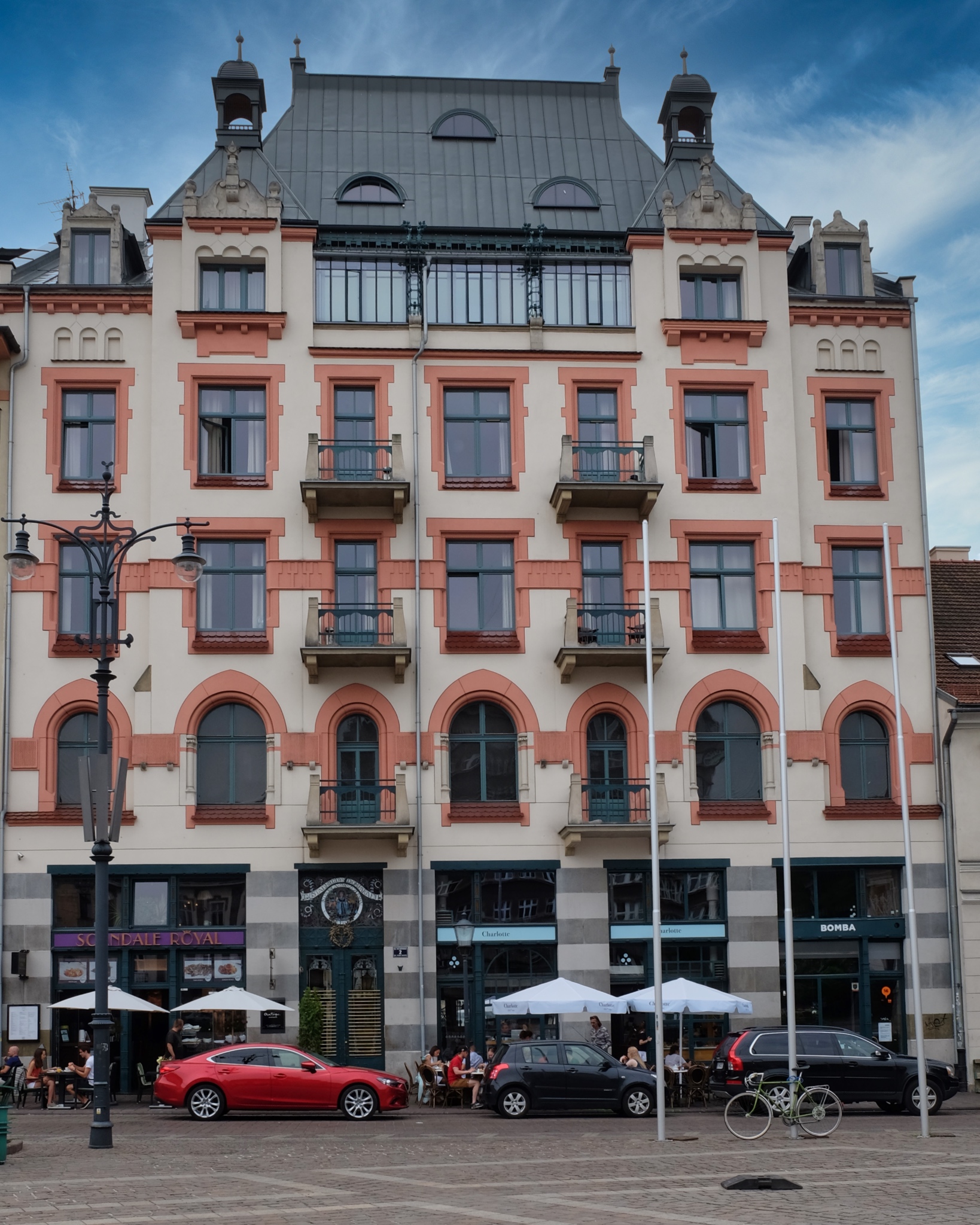 Our hotel was in this old building just off of the main square, and across from an art museum.
Our hotel was in this old building just off of the main square, and across from an art museum.
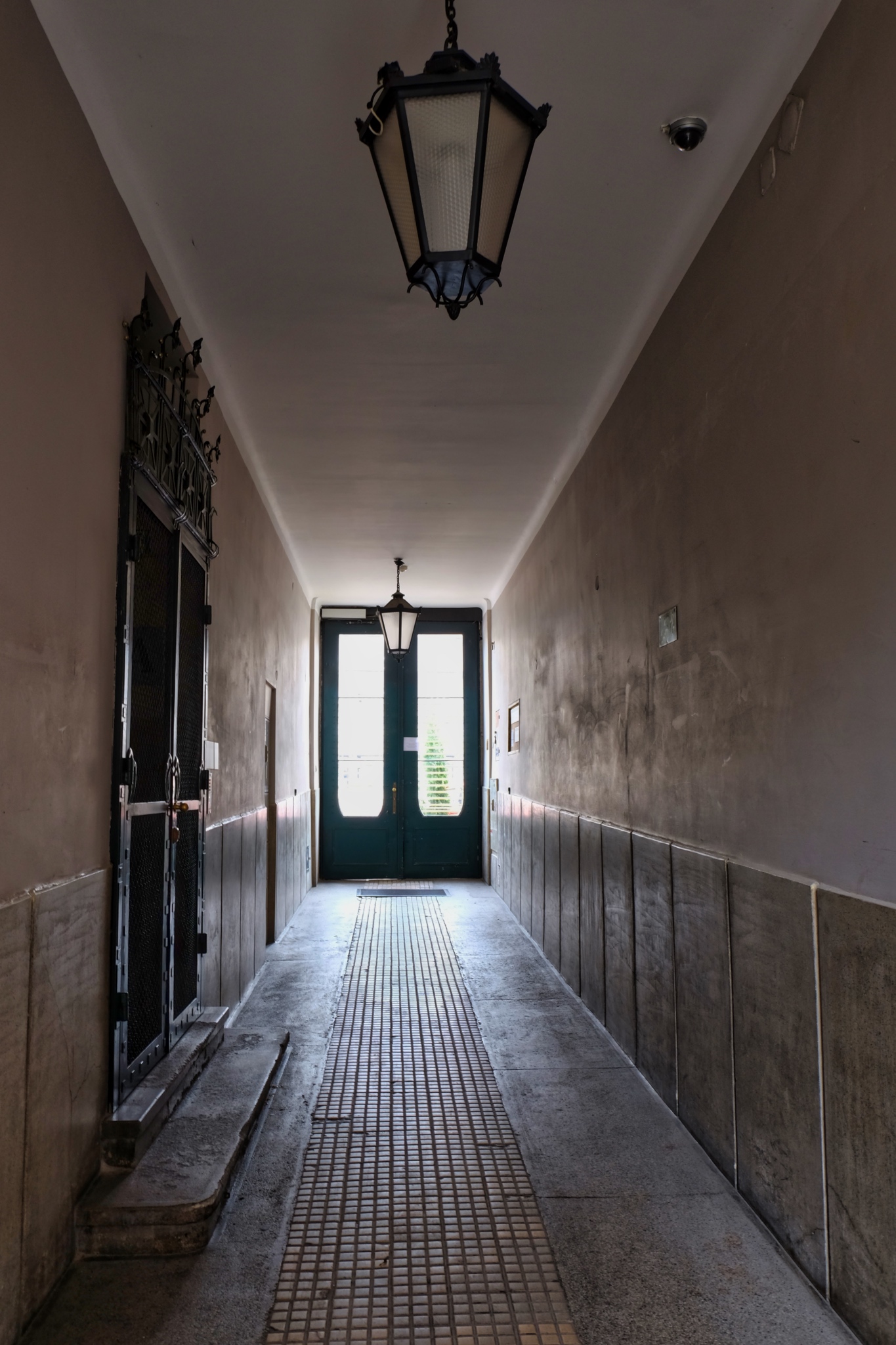 The interior can only be described as "Soviet Era Minimalism." I loved it.
The interior can only be described as "Soviet Era Minimalism." I loved it.
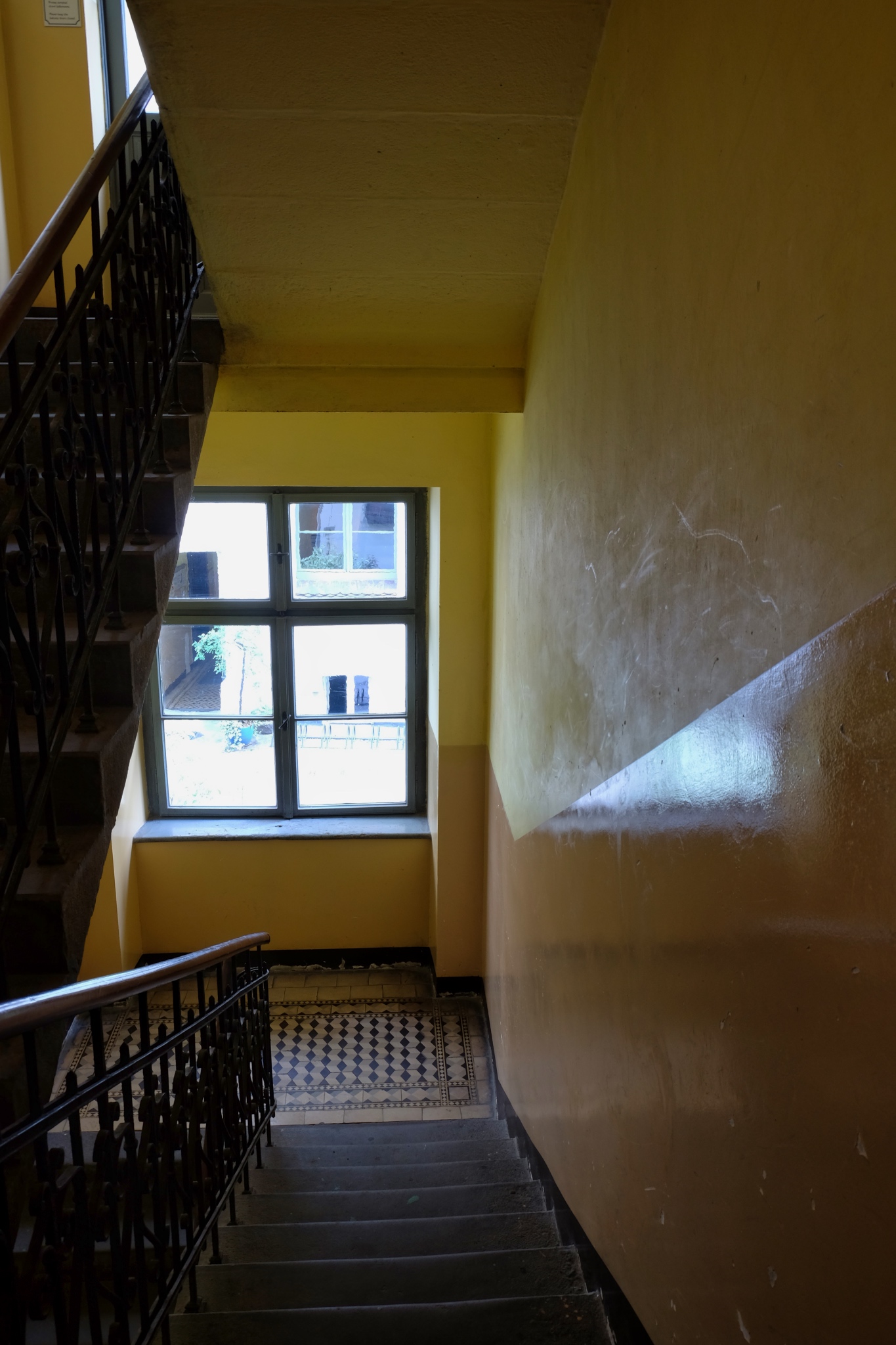 No expense was spared to create the perfect Soviet-workers-on-vacation guest quarters effect.
No expense was spared to create the perfect Soviet-workers-on-vacation guest quarters effect.
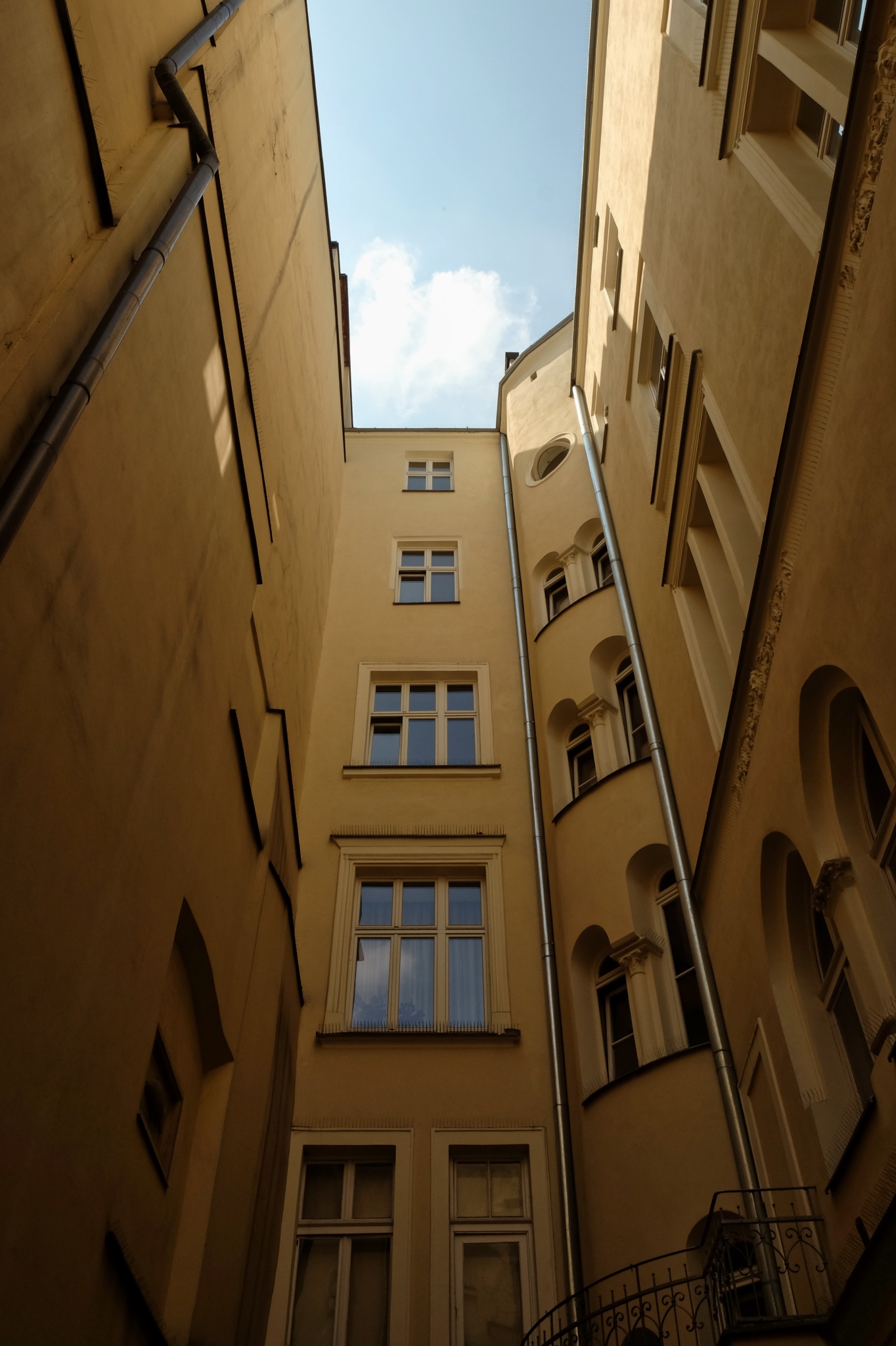 After entering the hotel from the street, you arrived in this austere courtyard to check in. Yes, I was correct, the manager said the old hotel had indeed been remodeled during the Soviet era as a workers lodge. Our room had a panoramic view onto this courtyard. We loved it: it was one block off the main city square and it was cheap!
After entering the hotel from the street, you arrived in this austere courtyard to check in. Yes, I was correct, the manager said the old hotel had indeed been remodeled during the Soviet era as a workers lodge. Our room had a panoramic view onto this courtyard. We loved it: it was one block off the main city square and it was cheap!
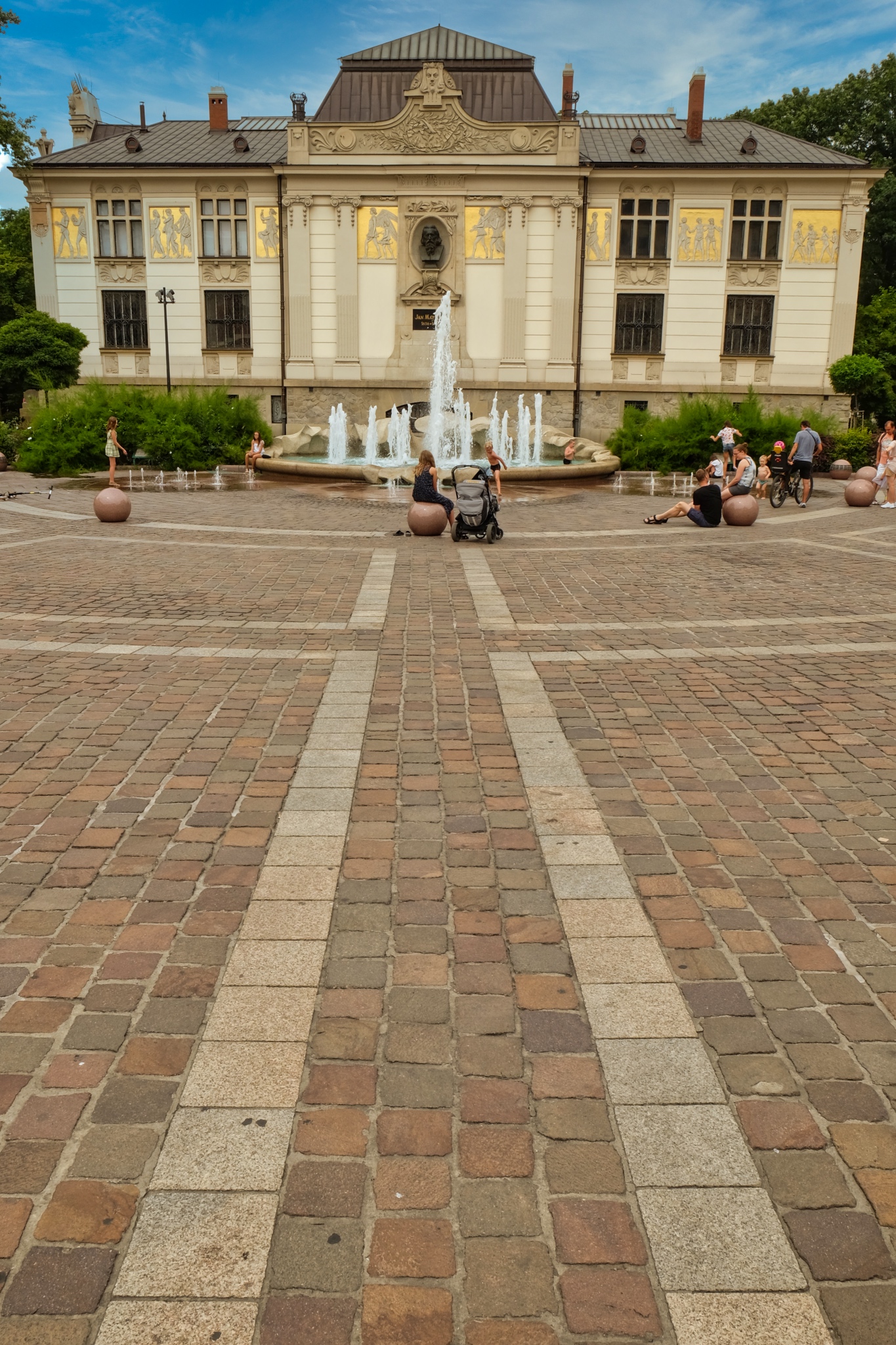 The Palace of Art (circa. 1901) was just outside our hotel.
The Palace of Art (circa. 1901) was just outside our hotel.
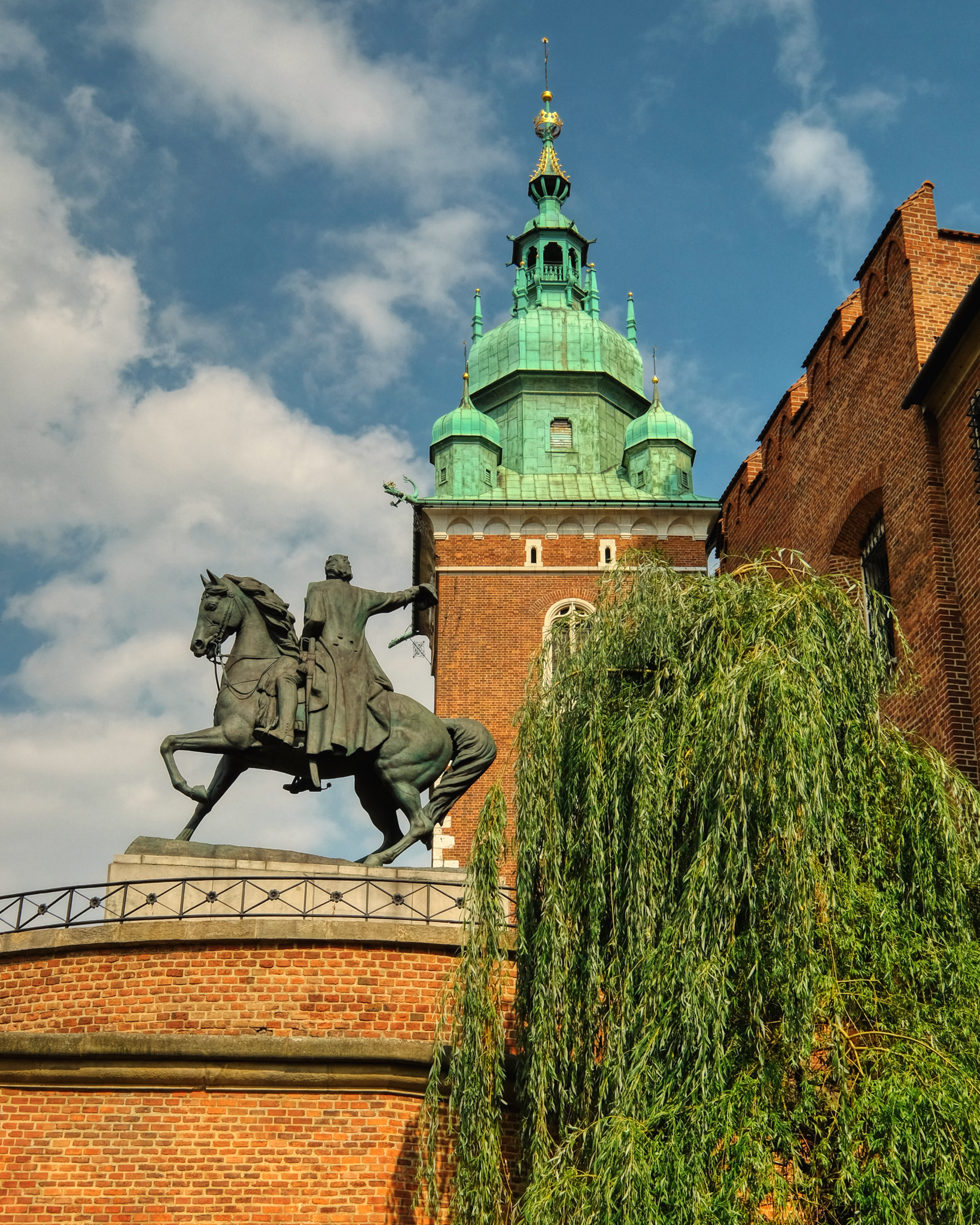 We spent three days just wandering around this marvelous city.
We spent three days just wandering around this marvelous city.
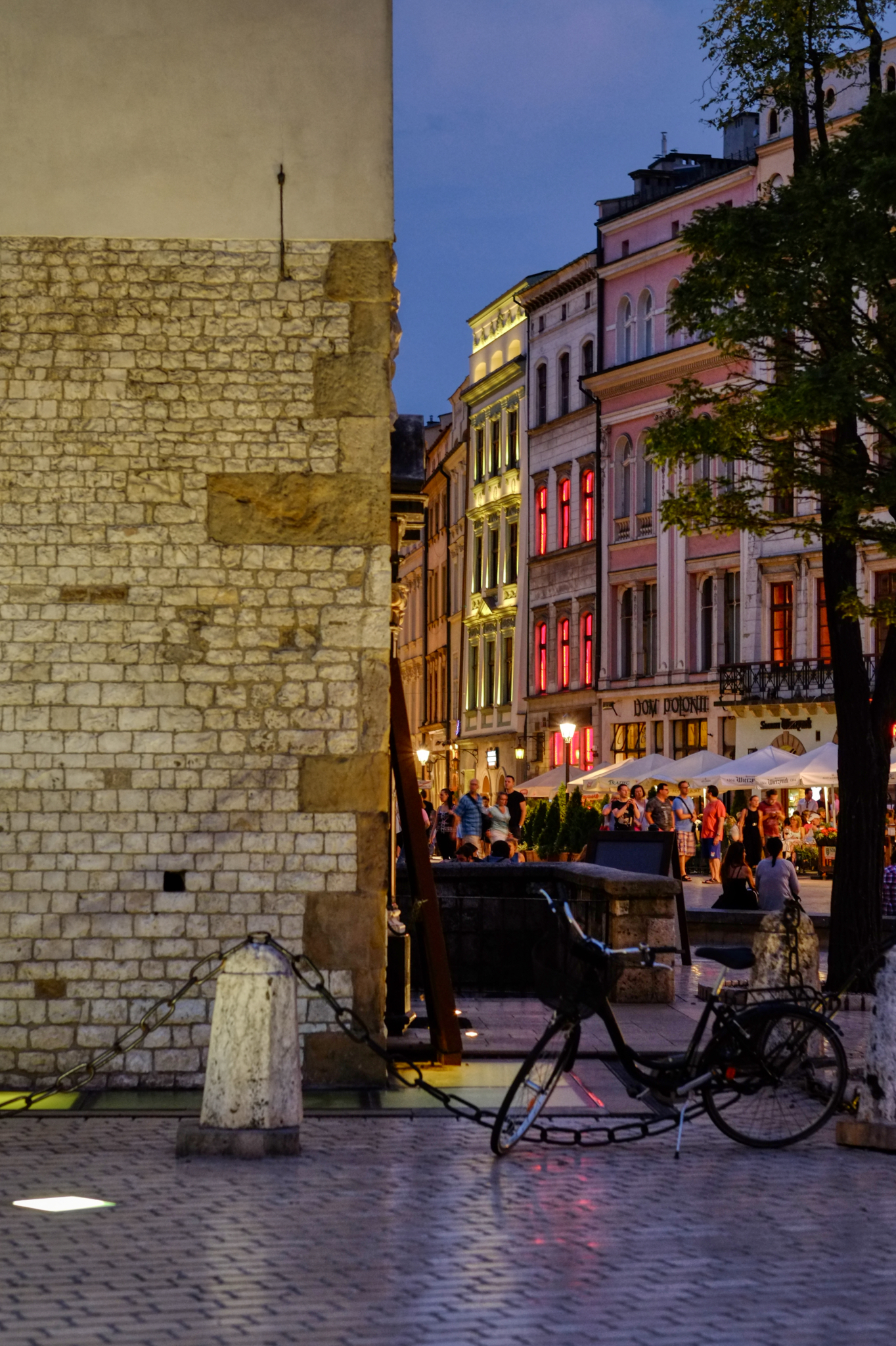 We loved Kraków by day . . . but at night it became a colorful dreamscape!
We loved Kraków by day . . . but at night it became a colorful dreamscape!
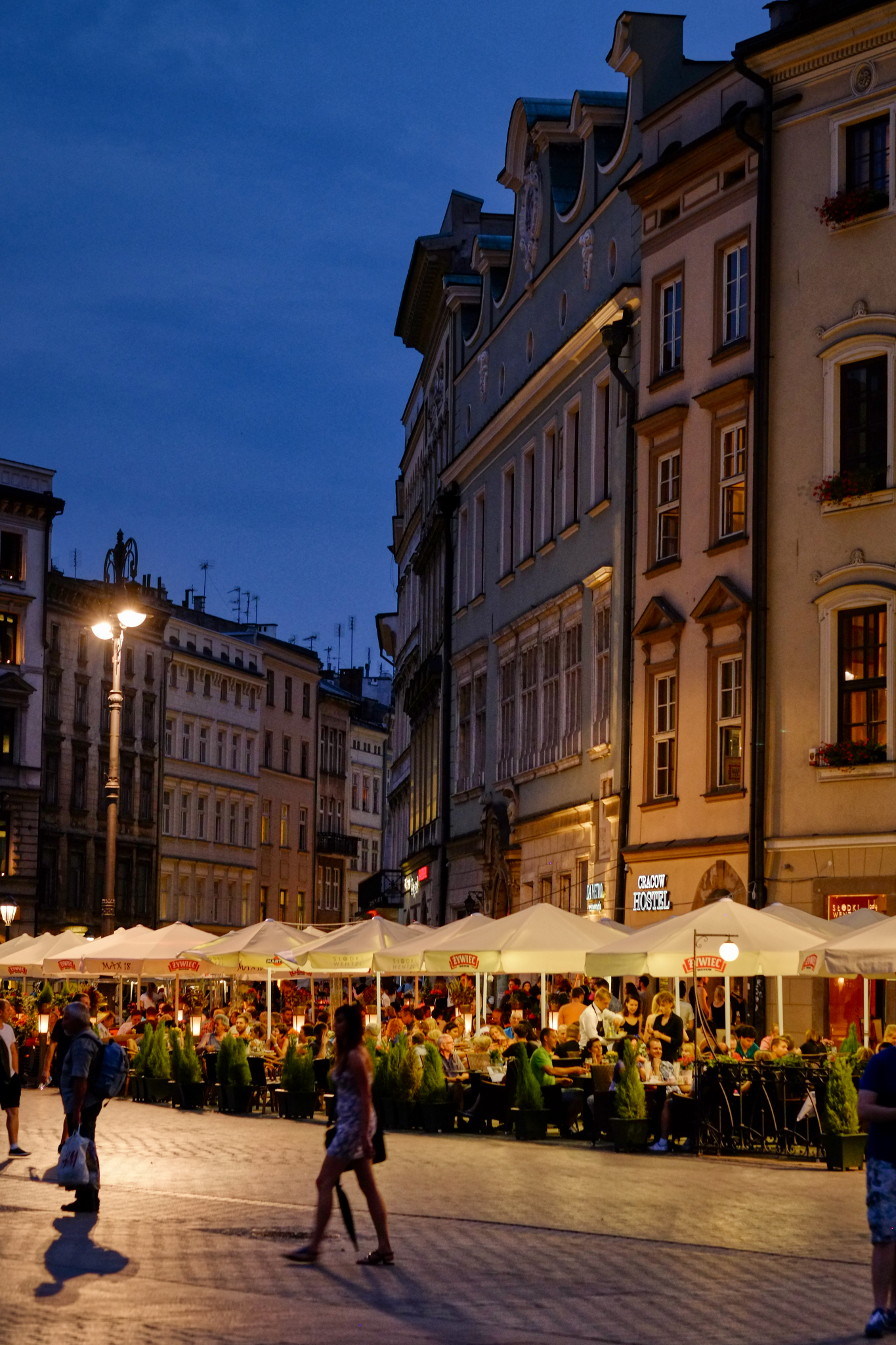 The crowds came out on a fine summer evening for a meal and a drink.
The crowds came out on a fine summer evening for a meal and a drink.
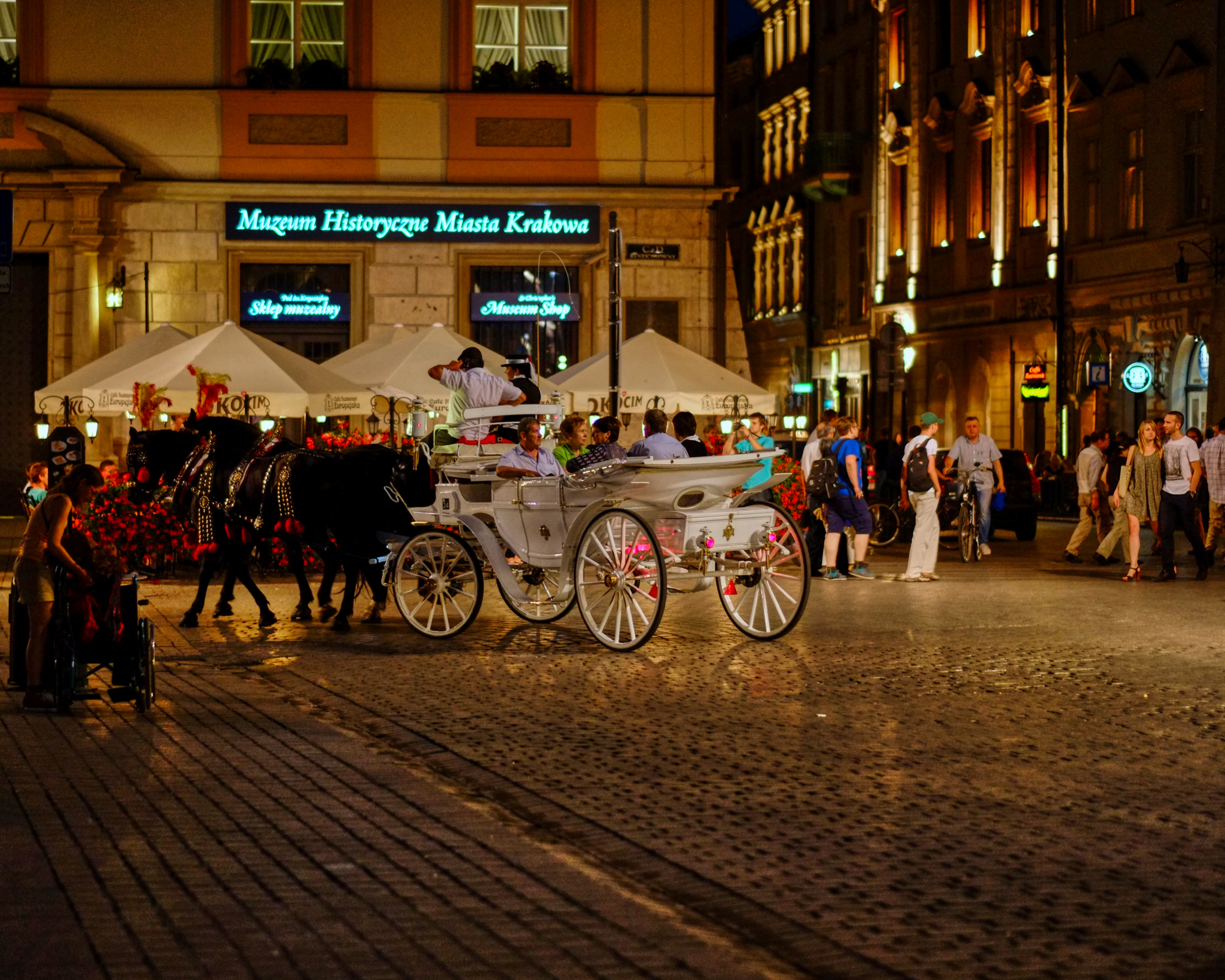 All day and evening, the tourist carriage rides never stopped. I assumed they changed the horses periodically, though I never saw it happen.
All day and evening, the tourist carriage rides never stopped. I assumed they changed the horses periodically, though I never saw it happen.
 The pleasant evenings brought everyone out to the cafés on the central square.
The pleasant evenings brought everyone out to the cafés on the central square.
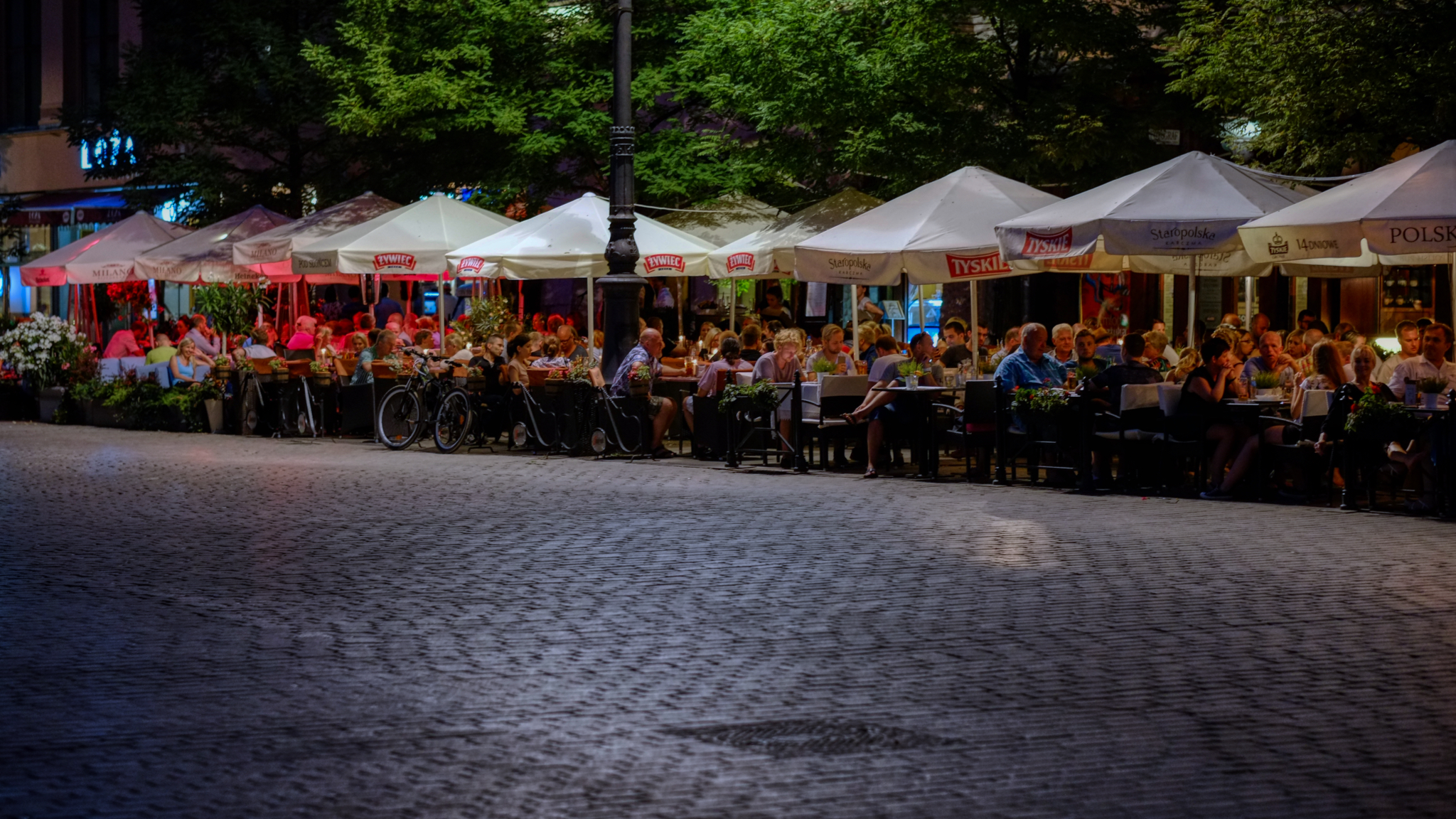 Everyone seemed to be enjoying themselves eating, drinking, and chatting.
Everyone seemed to be enjoying themselves eating, drinking, and chatting.
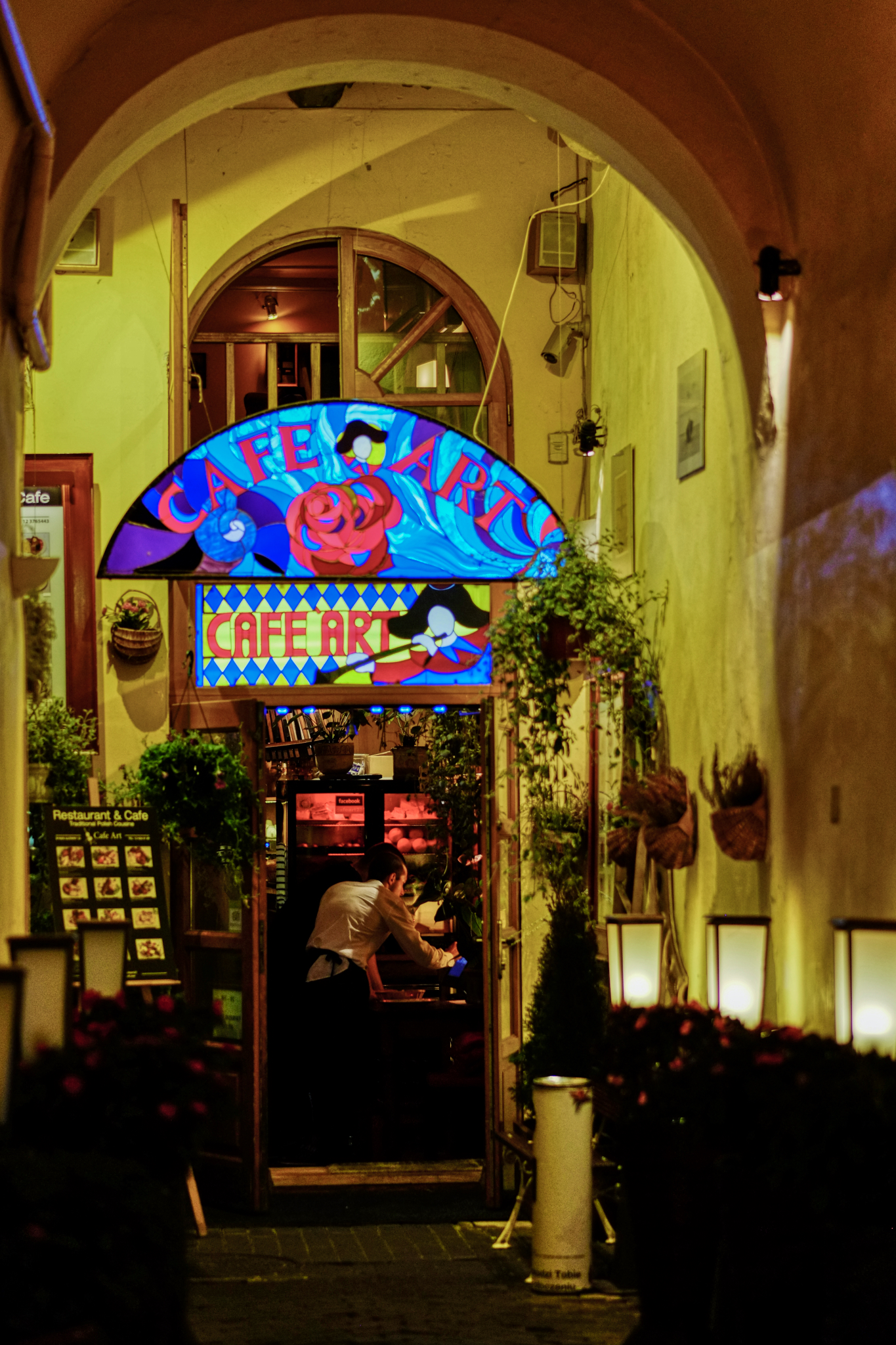 This one looks inviting . . . lets go in.
This one looks inviting . . . lets go in.
 St. Mary's Basilica by night. We loved our short stay in Kraków and would be more than happy to go back again.
St. Mary's Basilica by night. We loved our short stay in Kraków and would be more than happy to go back again.
 Dr. Jeff Harper
Dr. Jeff Harper
 One of my favorite photographic subjects are very old doors, windows, and walls. I was in heaven in Kraków!
One of my favorite photographic subjects are very old doors, windows, and walls. I was in heaven in Kraków!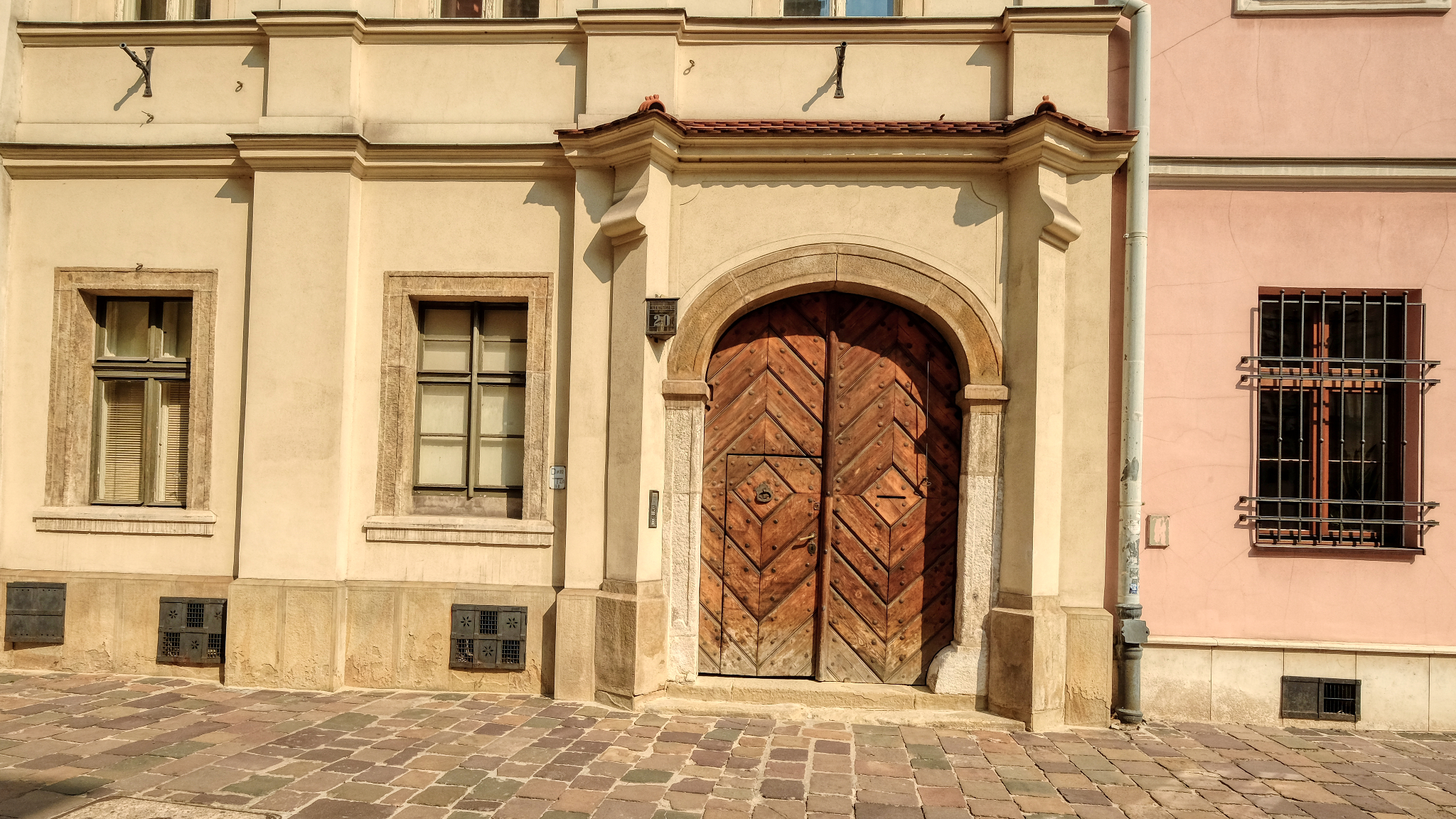 Everywhere, on every street, there was another amazing door . . . or window . . . or wall. They all speak to me somehow. They are all telling me their story.
Everywhere, on every street, there was another amazing door . . . or window . . . or wall. They all speak to me somehow. They are all telling me their story. The door is the mouth on the face of a house or building. As such, it speaks, it expresses something about the character of what is inside.
The door is the mouth on the face of a house or building. As such, it speaks, it expresses something about the character of what is inside.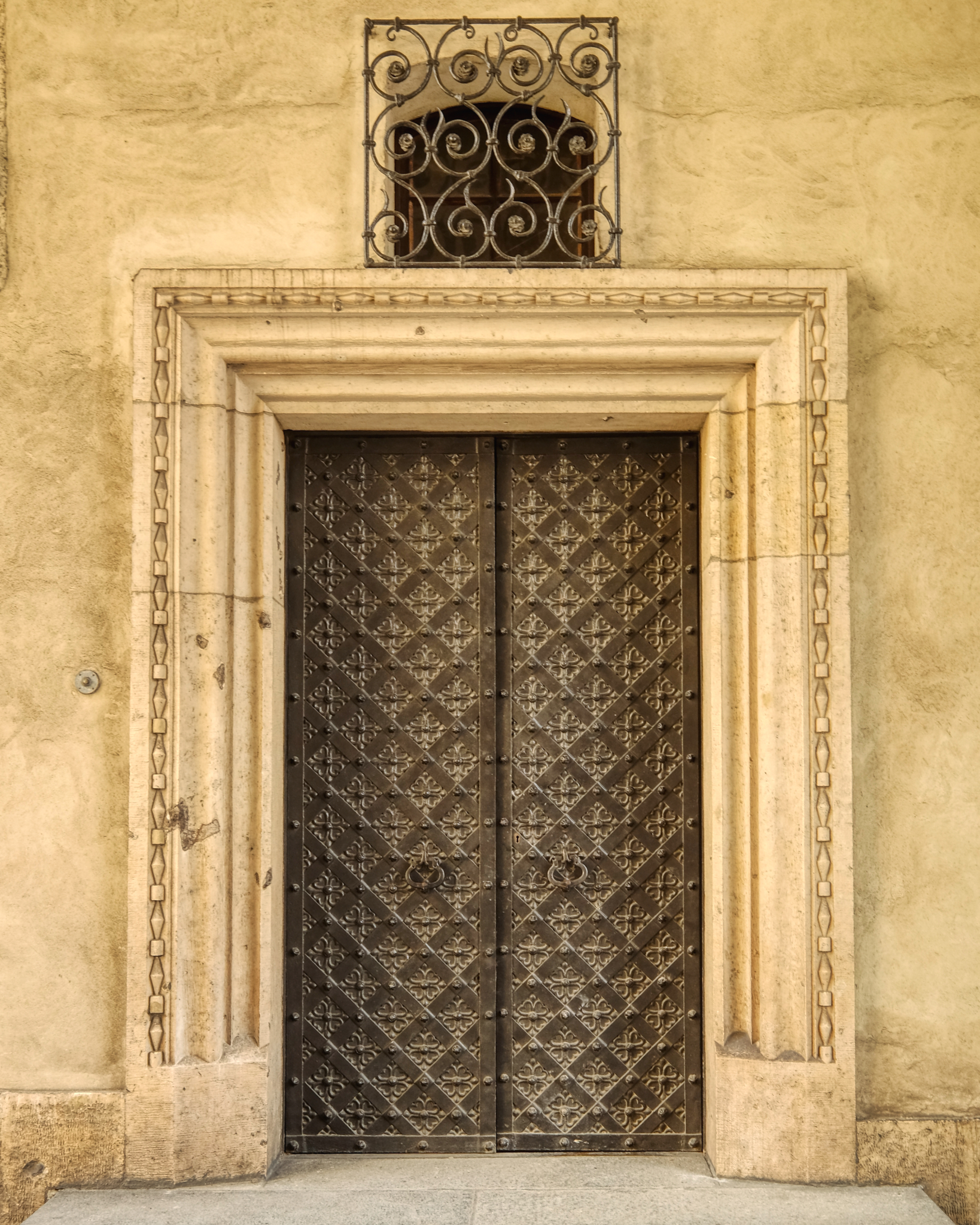 An interior door of Wawel Castle.
An interior door of Wawel Castle. Doors are often restored, but it seems almost never replaced in the life of a building.
Doors are often restored, but it seems almost never replaced in the life of a building.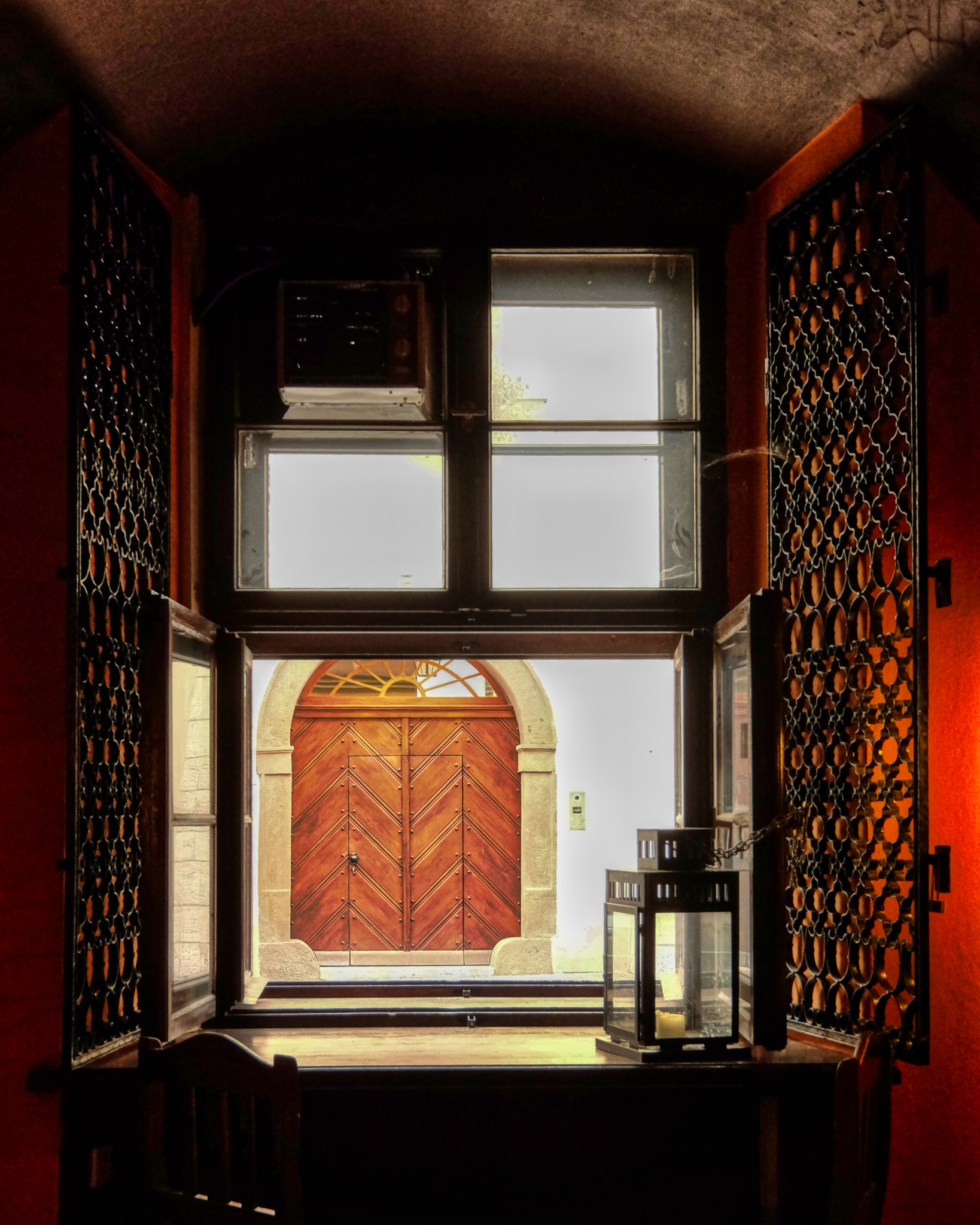 Looking out the window of a restaurant I saw this door. Stunning.
Looking out the window of a restaurant I saw this door. Stunning. Some doors seem to have a power to draw you in.
Some doors seem to have a power to draw you in.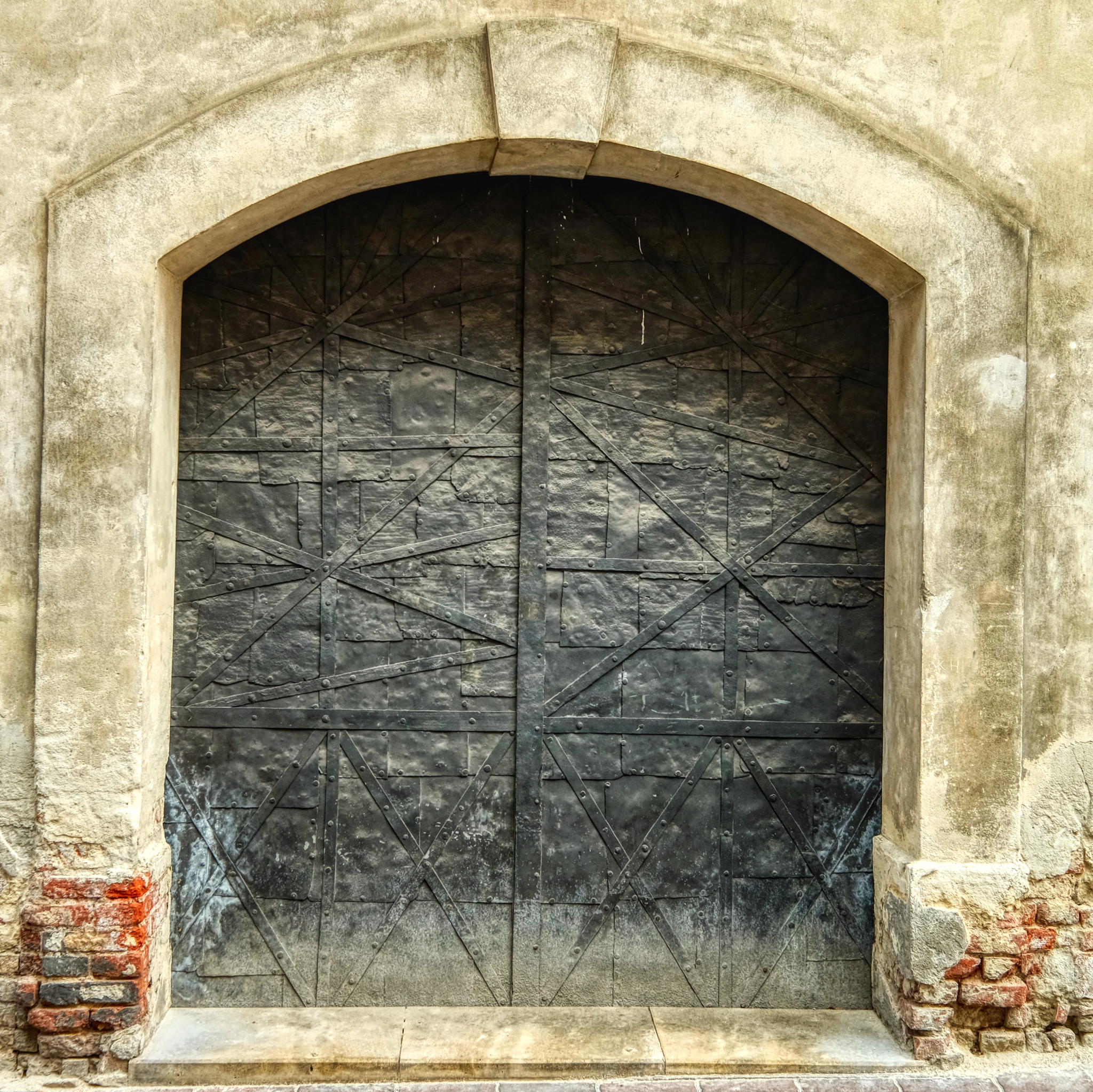 The strength of a steel door . . . with a story of repair.
The strength of a steel door . . . with a story of repair.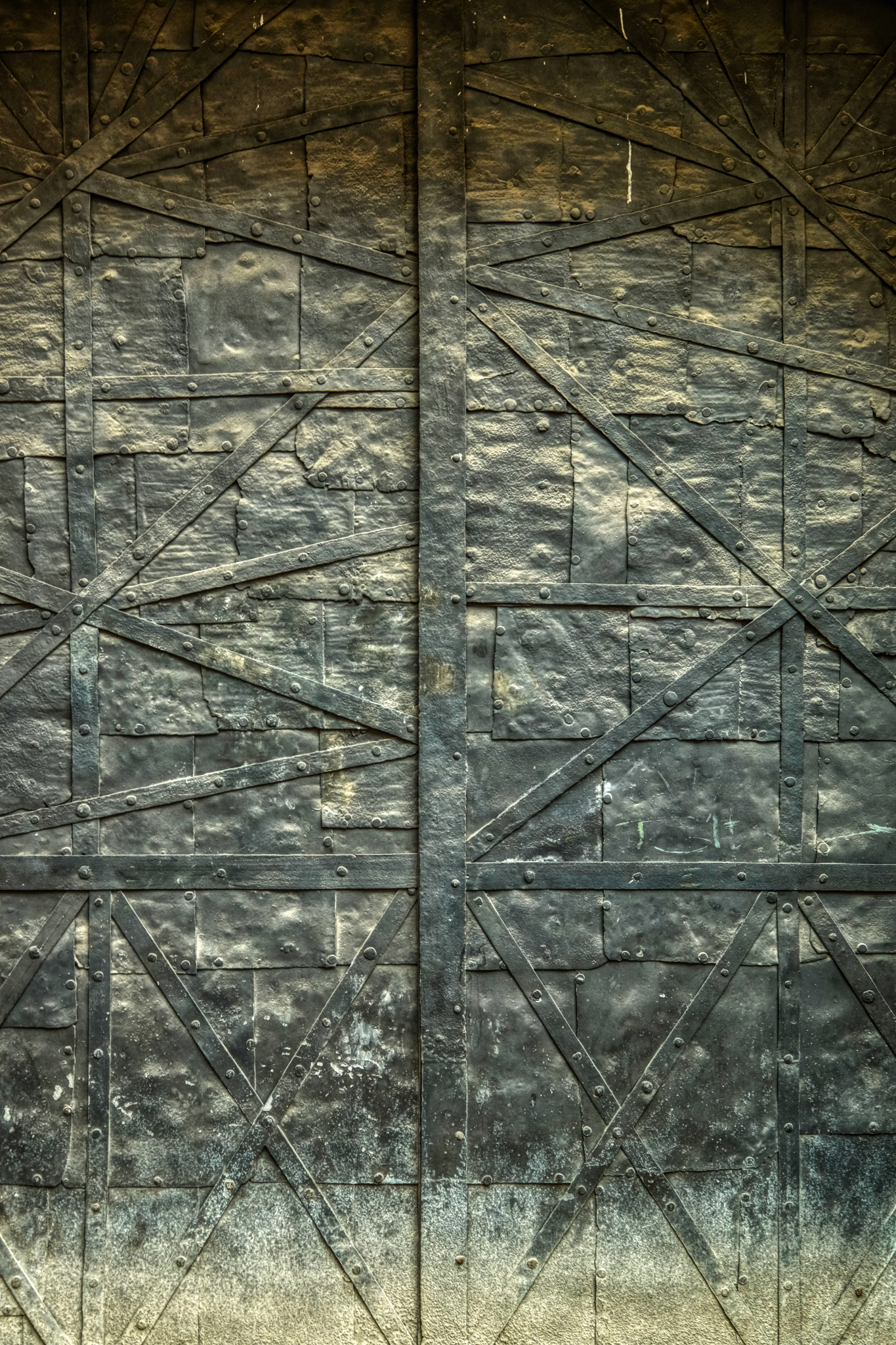 The textures! The patterns! The reflections!
The textures! The patterns! The reflections!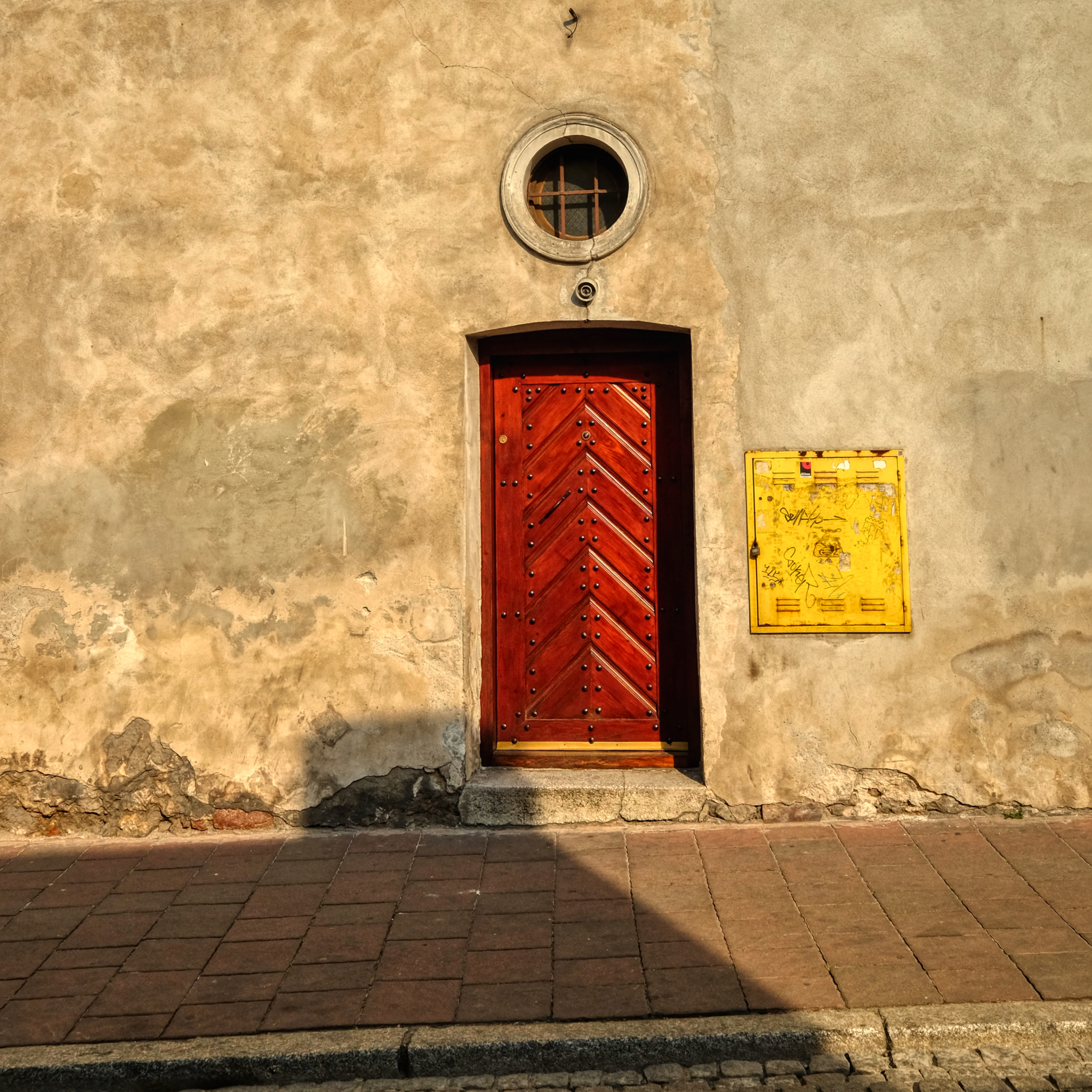 That wall! That Red door! That yellow service box! Astonishing.
That wall! That Red door! That yellow service box! Astonishing.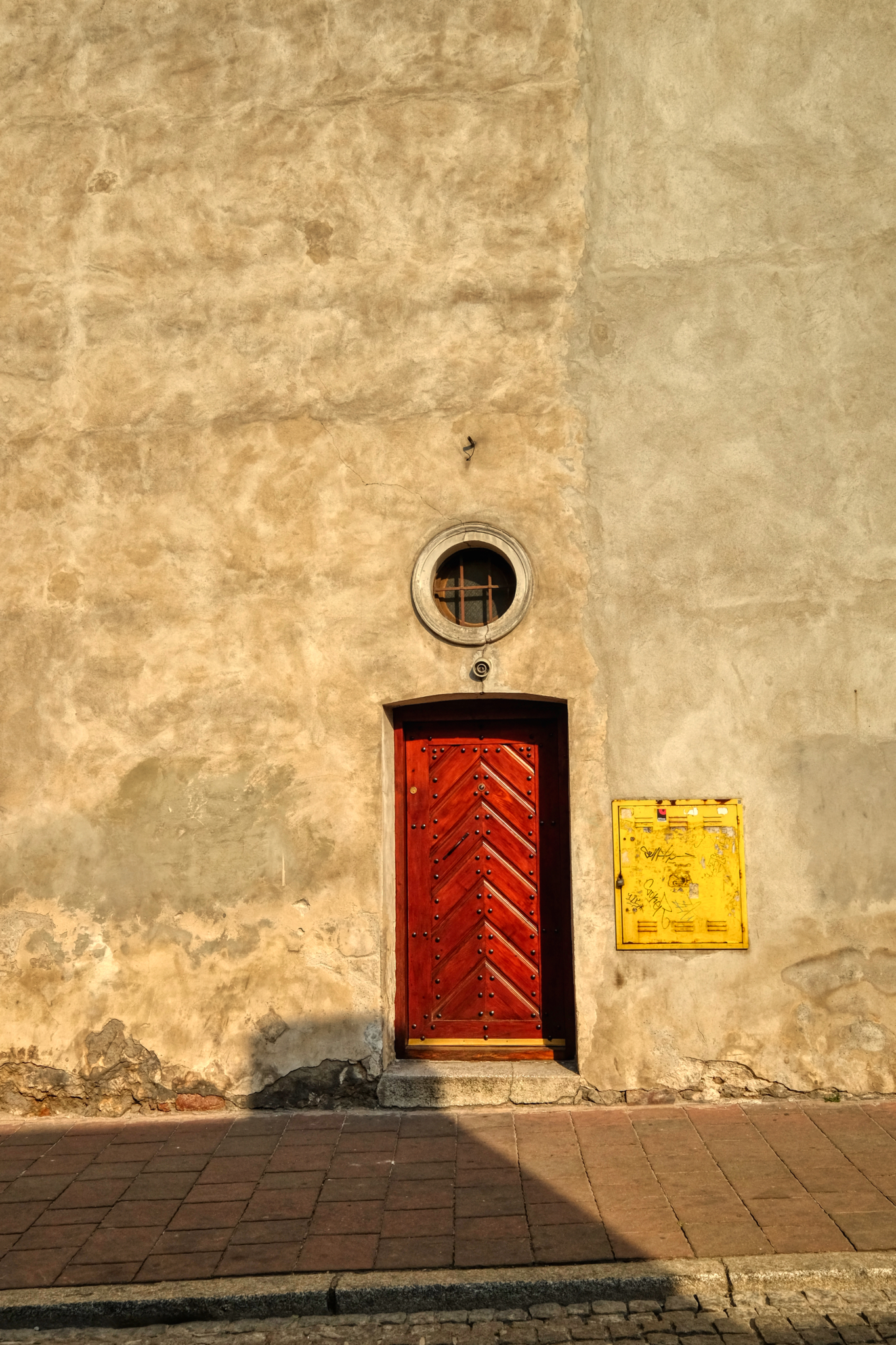 Same wall with different framing to emphasize the height of the wall . . . to make the wall powerful in the photograph.
Same wall with different framing to emphasize the height of the wall . . . to make the wall powerful in the photograph. This family (?) walked in front while I was shooting these wall photos. I do not normally use aftereffects in my photography, but this one seemed to want this sepia tone. I like it.
This family (?) walked in front while I was shooting these wall photos. I do not normally use aftereffects in my photography, but this one seemed to want this sepia tone. I like it.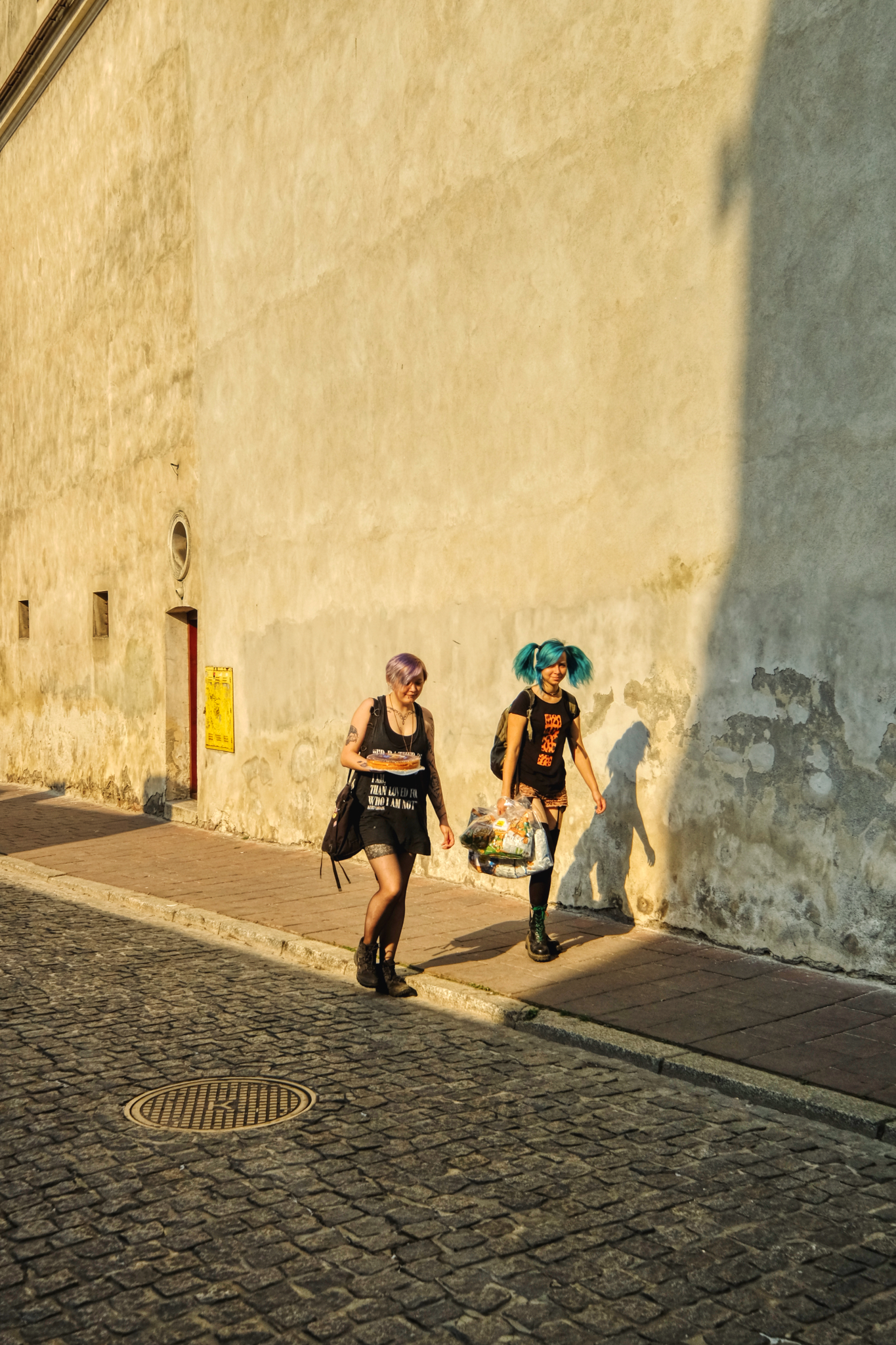 Same wall, door, service panel but different feeling. Punks bringing home lunch.
Same wall, door, service panel but different feeling. Punks bringing home lunch.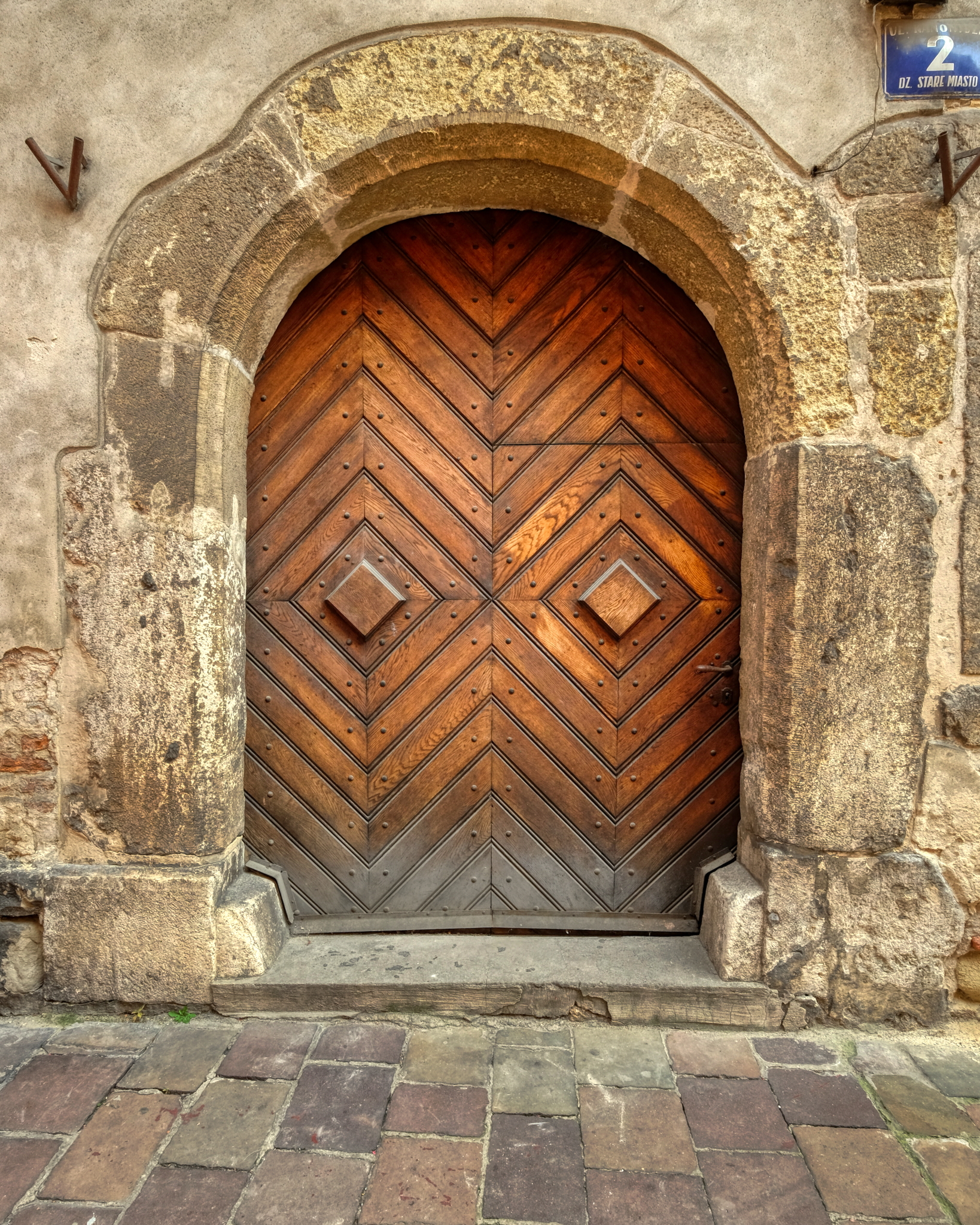 So many anncient doors . . .
So many anncient doors . . . Lovely crawling ivy surrounding this artistic door.
Lovely crawling ivy surrounding this artistic door. The windows are the eyes of a building . . . they can reveal so much.
The windows are the eyes of a building . . . they can reveal so much.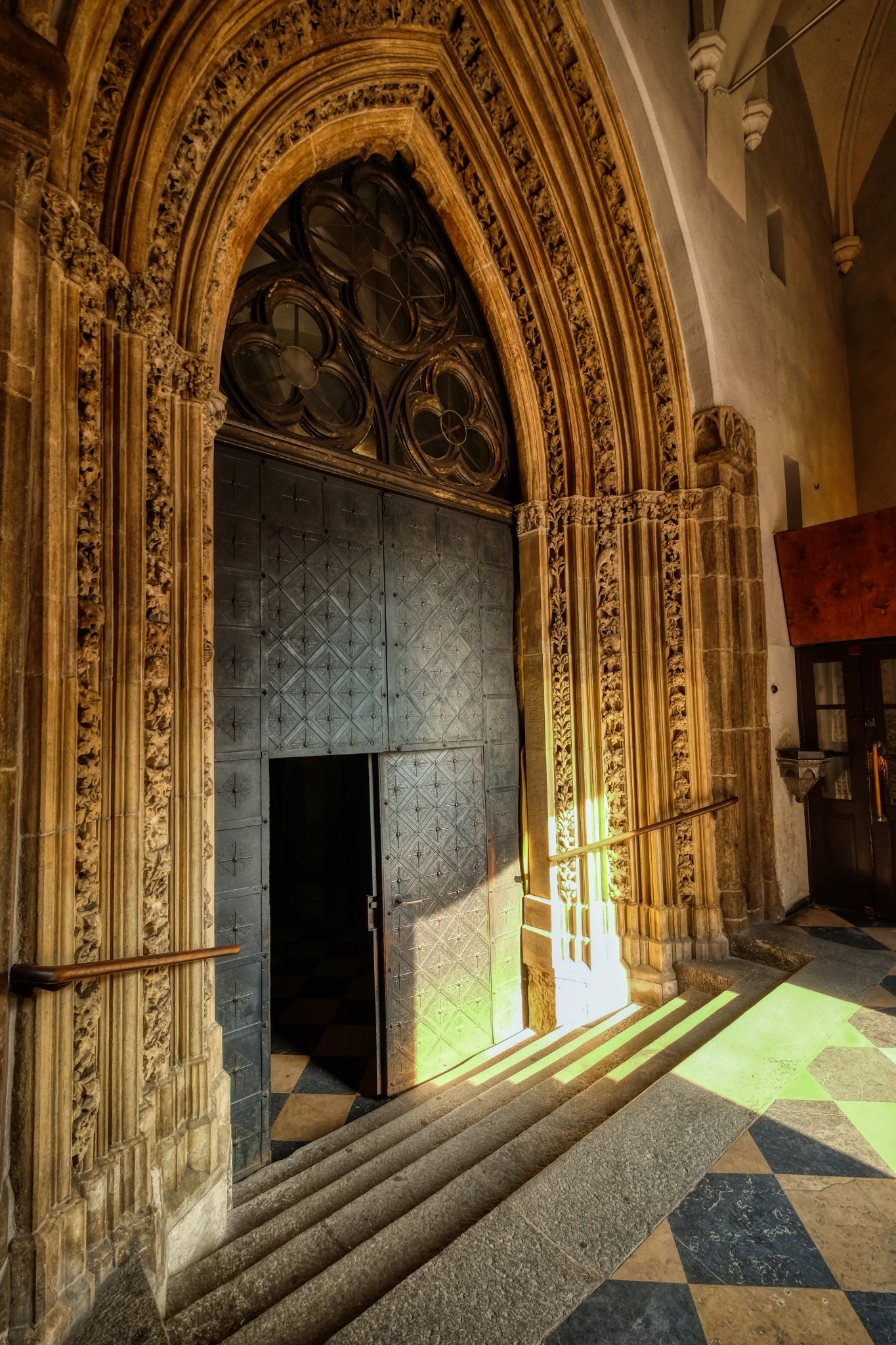 A church/cathedral door, and all it promises, and all of its history, and all of its sorrow.
A church/cathedral door, and all it promises, and all of its history, and all of its sorrow.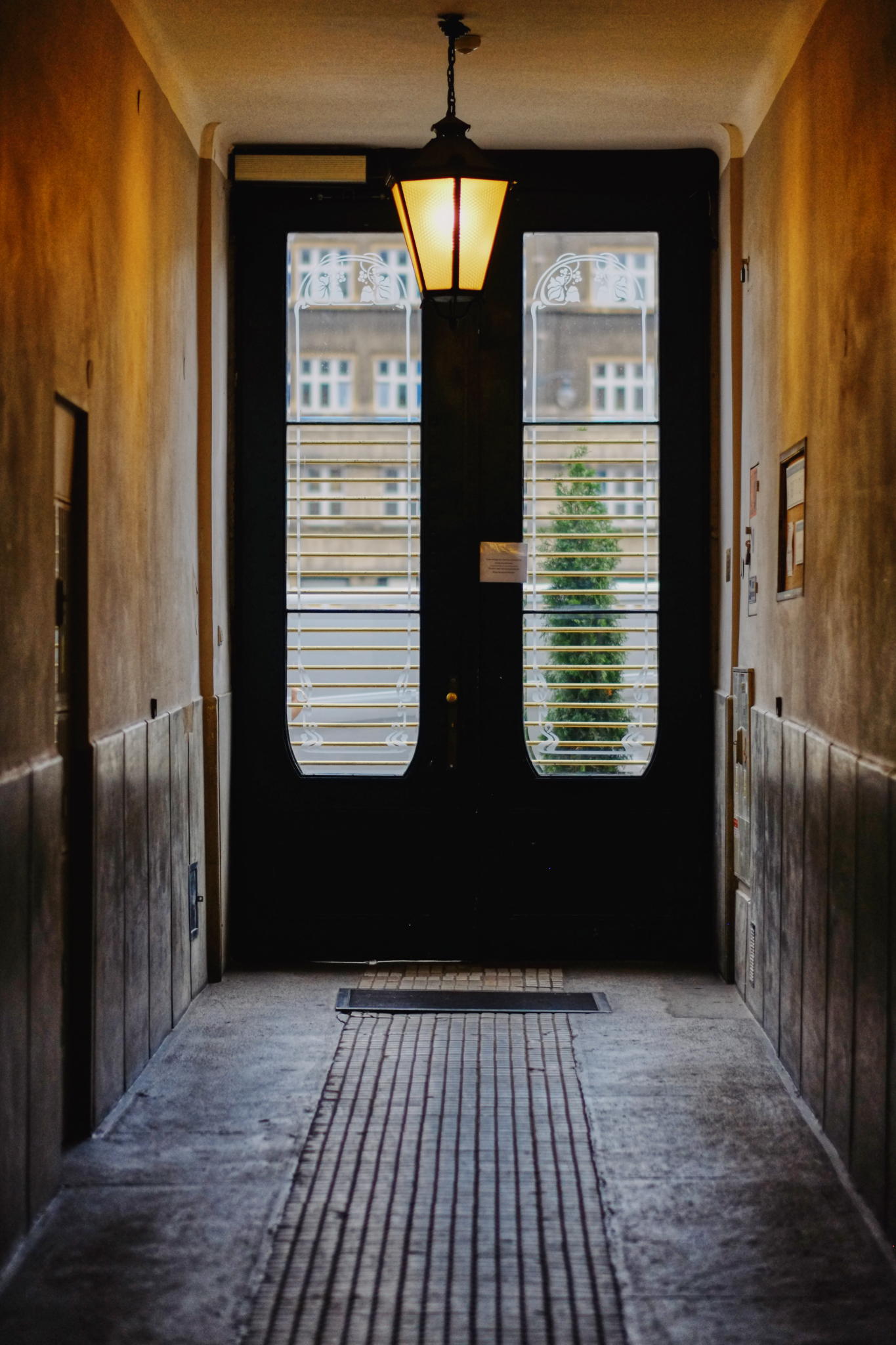 My last door photo . . . our Soviet-era hotel. Simple, honest . . . opening to the marvelous city of Kraków.
My last door photo . . . our Soviet-era hotel. Simple, honest . . . opening to the marvelous city of Kraków. I saw this guy in the mirror of an elevator in Kraków, Poland and wondered who he was.
I saw this guy in the mirror of an elevator in Kraków, Poland and wondered who he was.Hot Rods In Bangkok? You Bet There Are!
 Sunday, April 5, 2020 at 9:24PM
Sunday, April 5, 2020 at 9:24PM 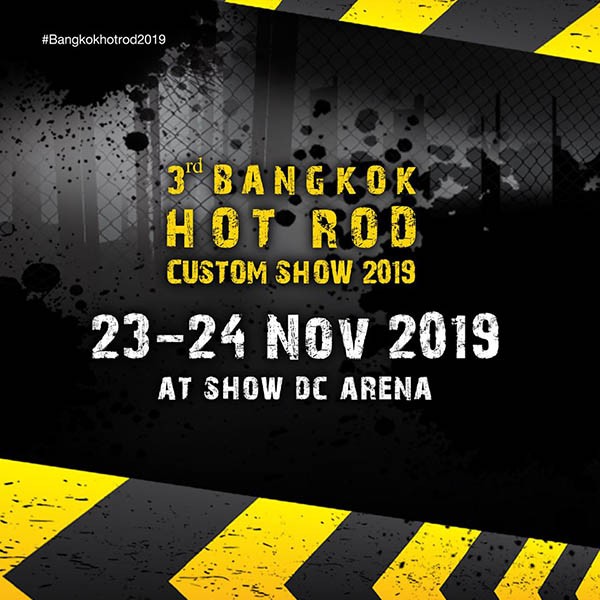
Yes! Hot Rods in Bangkok Thailand! The Bangkok Hot Rod Show proves it!
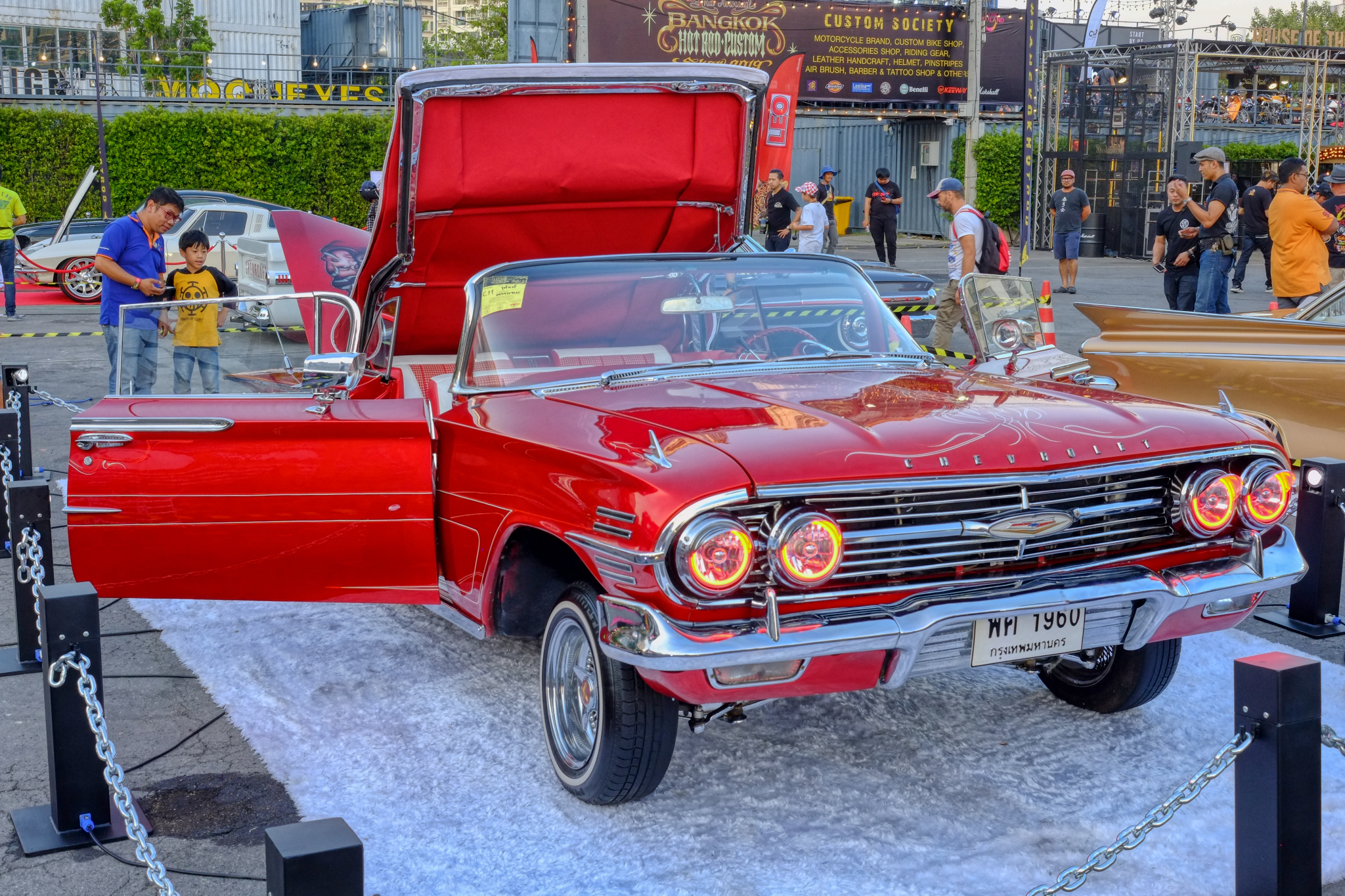 If you know me, you know I am a "car guy" . . . a "Gear Head." You have no idea how happy I am as a long-term Thailand resident to have discovered (years ago) that there is a thriving Thai hot rod scene. A very tasty '60 Chevy convertible well presented.
If you know me, you know I am a "car guy" . . . a "Gear Head." You have no idea how happy I am as a long-term Thailand resident to have discovered (years ago) that there is a thriving Thai hot rod scene. A very tasty '60 Chevy convertible well presented.
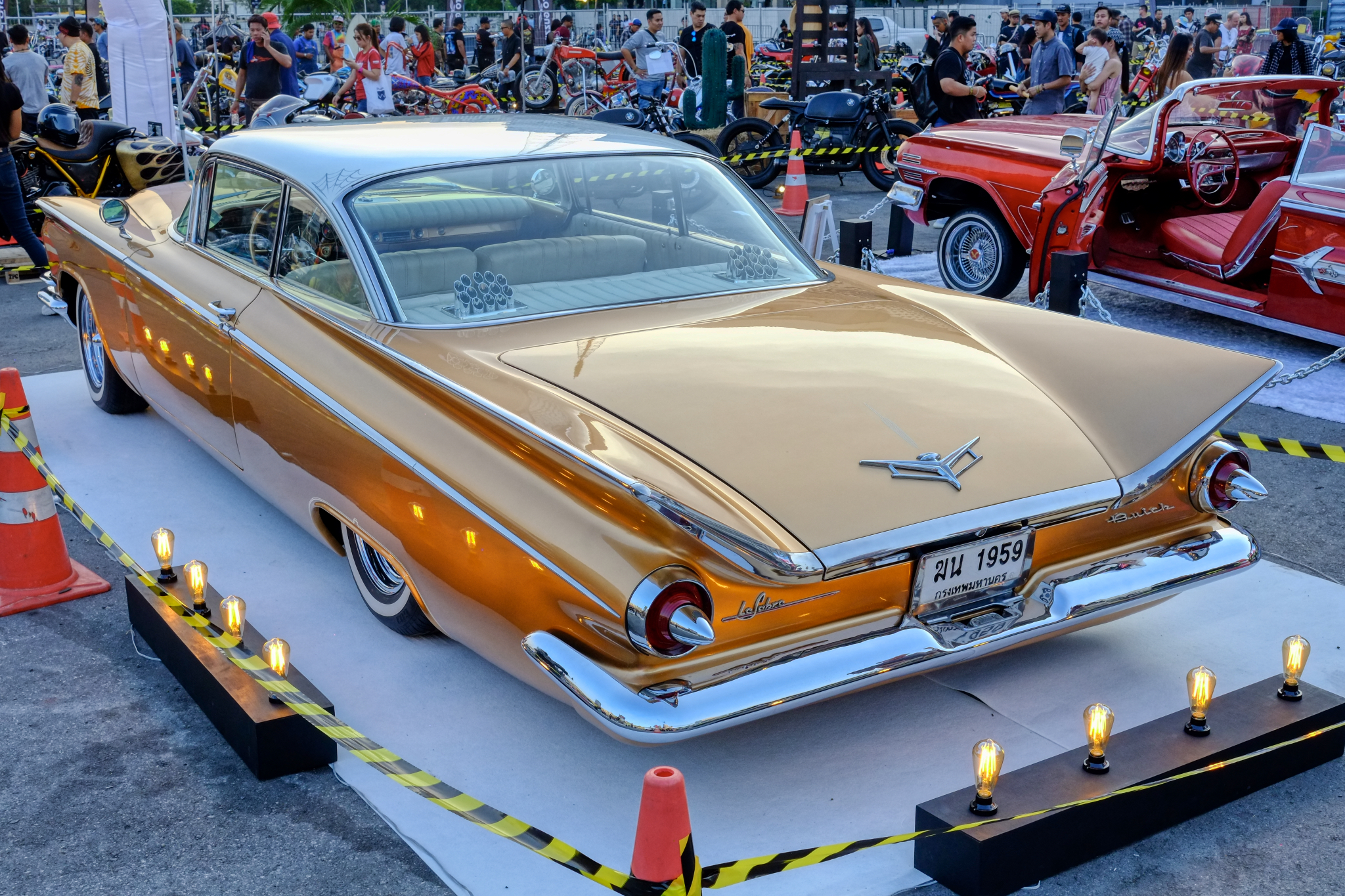 A pristine 1959 Buick La Sabre Coupé . . . as good a show car as can be seen anywhere in the world.
A pristine 1959 Buick La Sabre Coupé . . . as good a show car as can be seen anywhere in the world.
 Very clean and tastefully done semi-custom Ford Galaxy 500.
Very clean and tastefully done semi-custom Ford Galaxy 500.
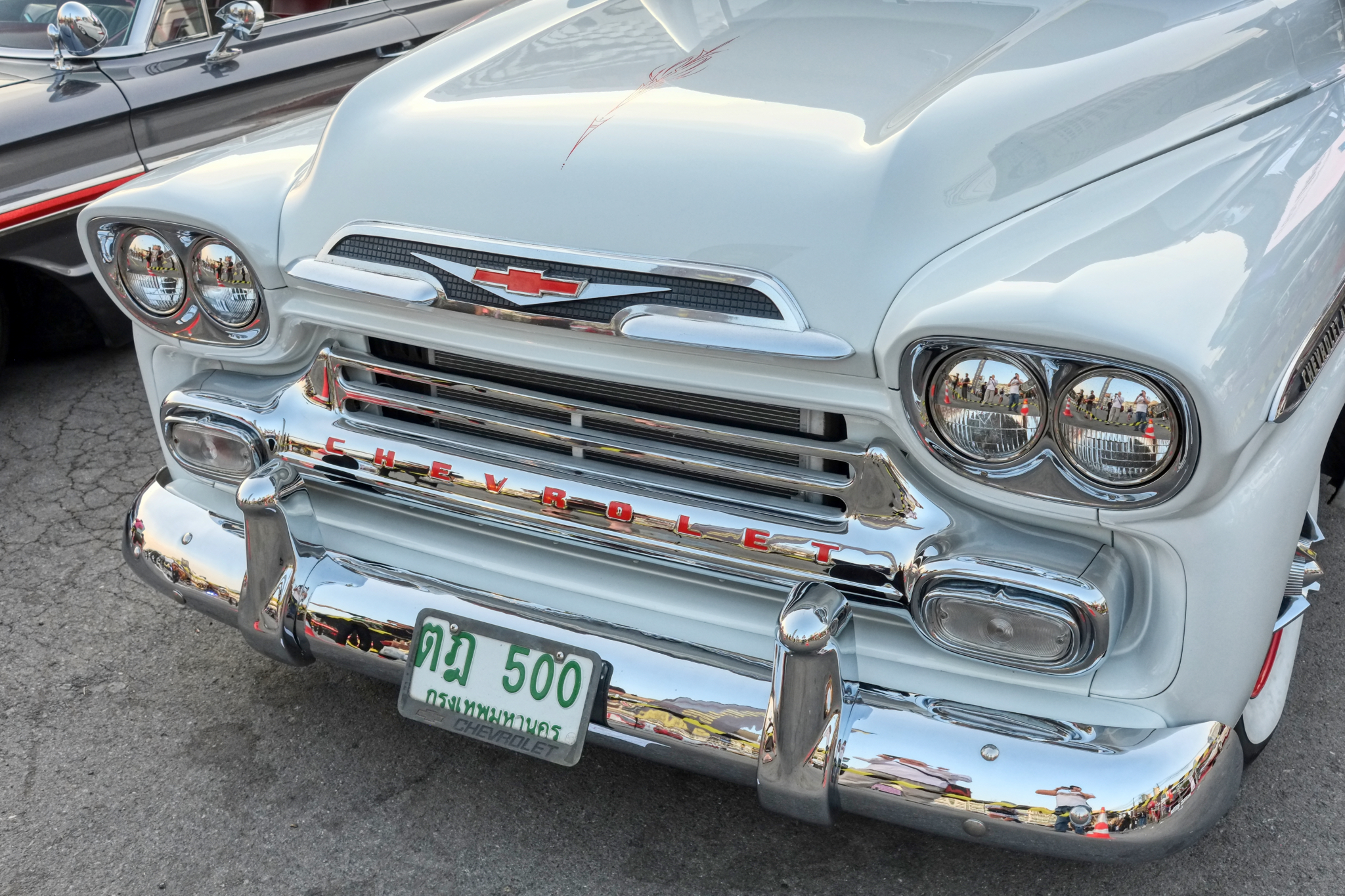 There are many fine craftsmen in Thailand. The restoration work on this 1959 Chevy pick-up was flawless. Excellent understated pin stripping as well.
There are many fine craftsmen in Thailand. The restoration work on this 1959 Chevy pick-up was flawless. Excellent understated pin stripping as well.
 Every kind and classification of "hot rod" was represented at the show. A nice 1959 Chevy panel in the rat rod motif. I came across this very Chevy panel about 15 years ago in a 'wrecking yard' in Bangkok and had the opportunity to buy it . . . but passed because I had a race car at the time that kept me busy. Nice rodded old Ford COE in the background.
Every kind and classification of "hot rod" was represented at the show. A nice 1959 Chevy panel in the rat rod motif. I came across this very Chevy panel about 15 years ago in a 'wrecking yard' in Bangkok and had the opportunity to buy it . . . but passed because I had a race car at the time that kept me busy. Nice rodded old Ford COE in the background.
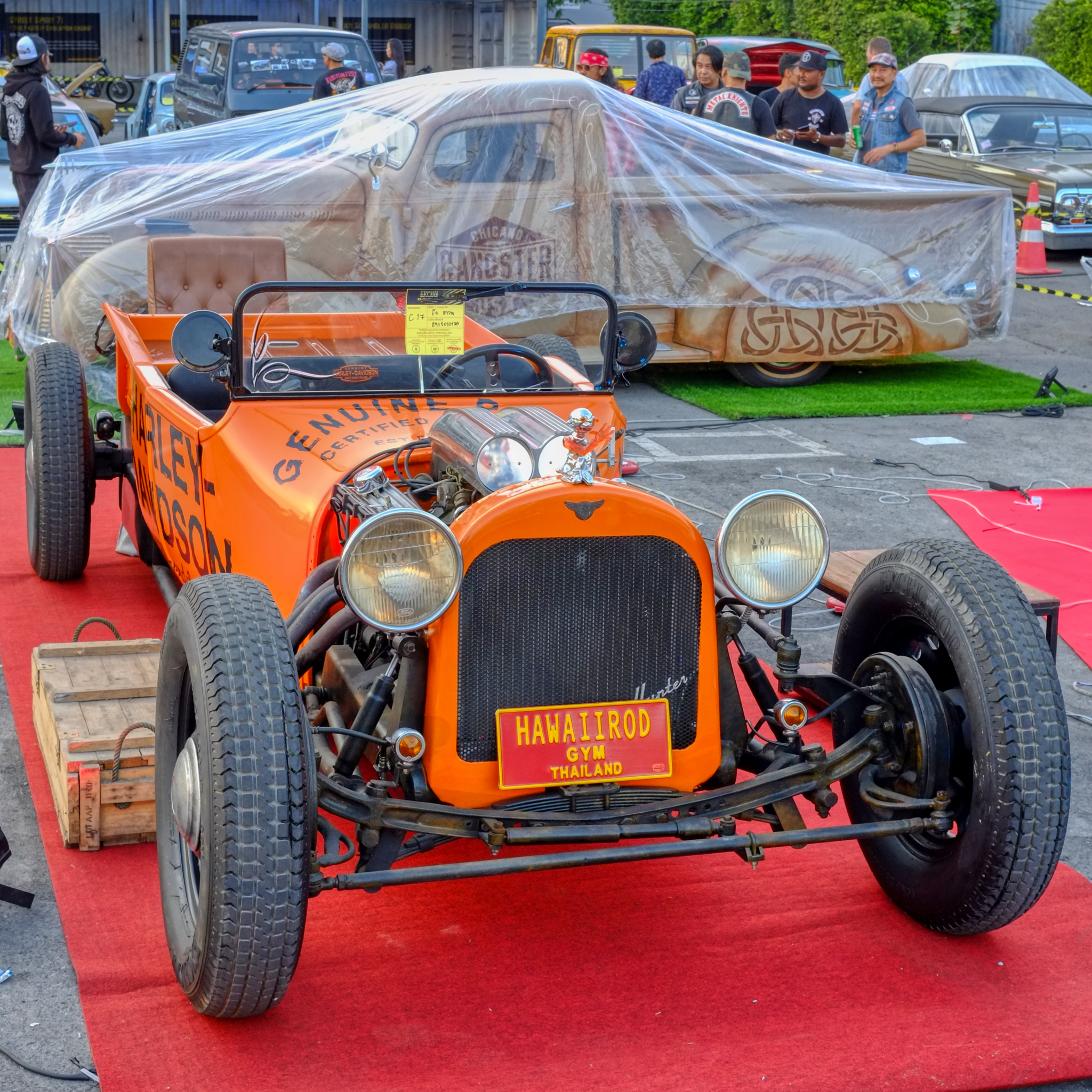 The classic, traditional mid '20s Dodge hot rod. Very nice. Also a very cool fat fender pick up in the background (A Hudson pickup?).
The classic, traditional mid '20s Dodge hot rod. Very nice. Also a very cool fat fender pick up in the background (A Hudson pickup?).
 There were a number of home-built-from-scratch hot rods. A local re-interpretation within the hot rod style idiom. Fun.
There were a number of home-built-from-scratch hot rods. A local re-interpretation within the hot rod style idiom. Fun.
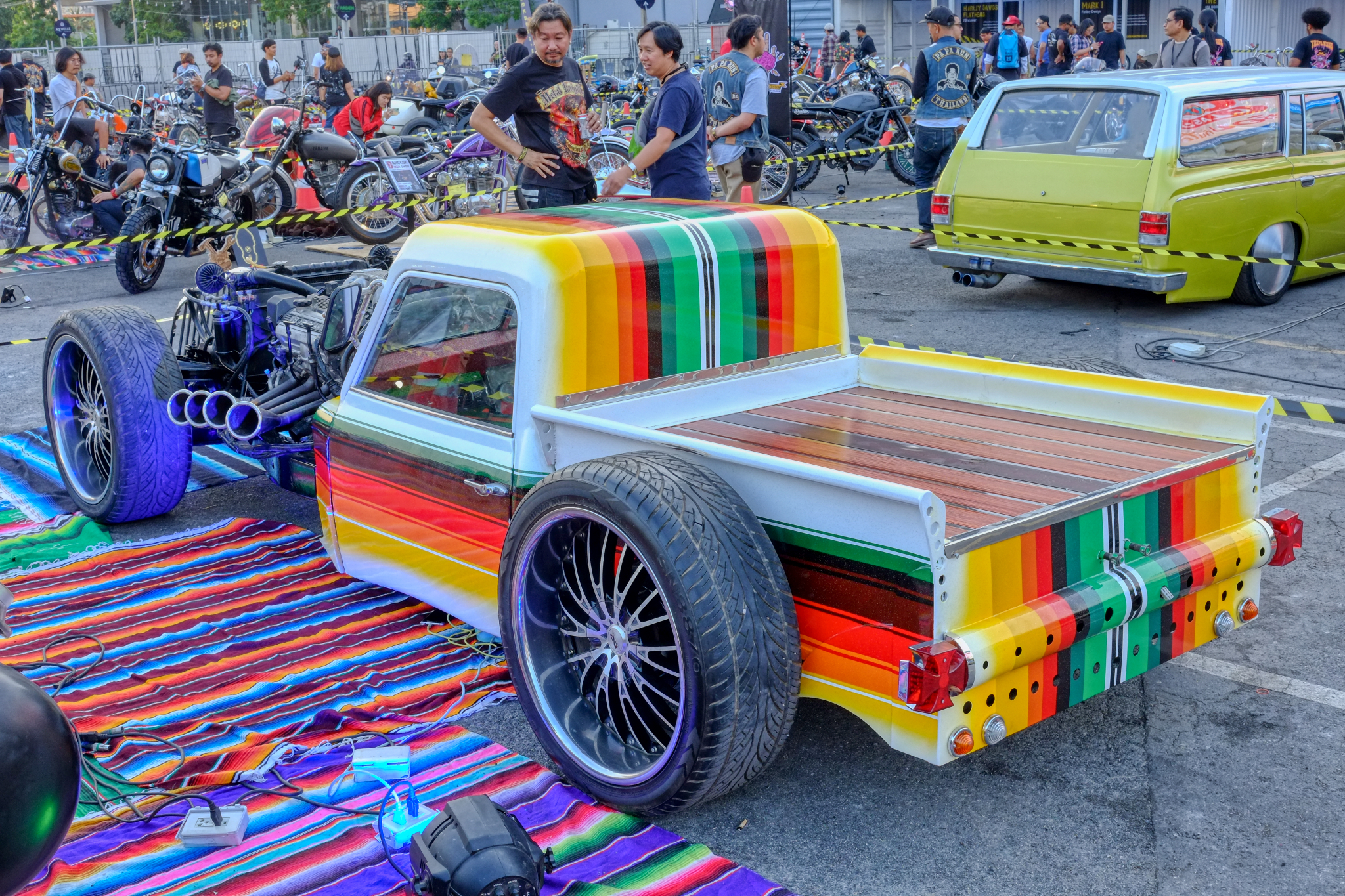 This one may have started off as a late '60s Nissan pick-up. I love all the cues and nods to hot rod heritage throughout this rod. The Navajo blanket themed paint taken from the '50s custom of covering your hot rod seats with Navajo blankets until you could afford the Tijuana tuck-and-roll upholstery.
This one may have started off as a late '60s Nissan pick-up. I love all the cues and nods to hot rod heritage throughout this rod. The Navajo blanket themed paint taken from the '50s custom of covering your hot rod seats with Navajo blankets until you could afford the Tijuana tuck-and-roll upholstery.
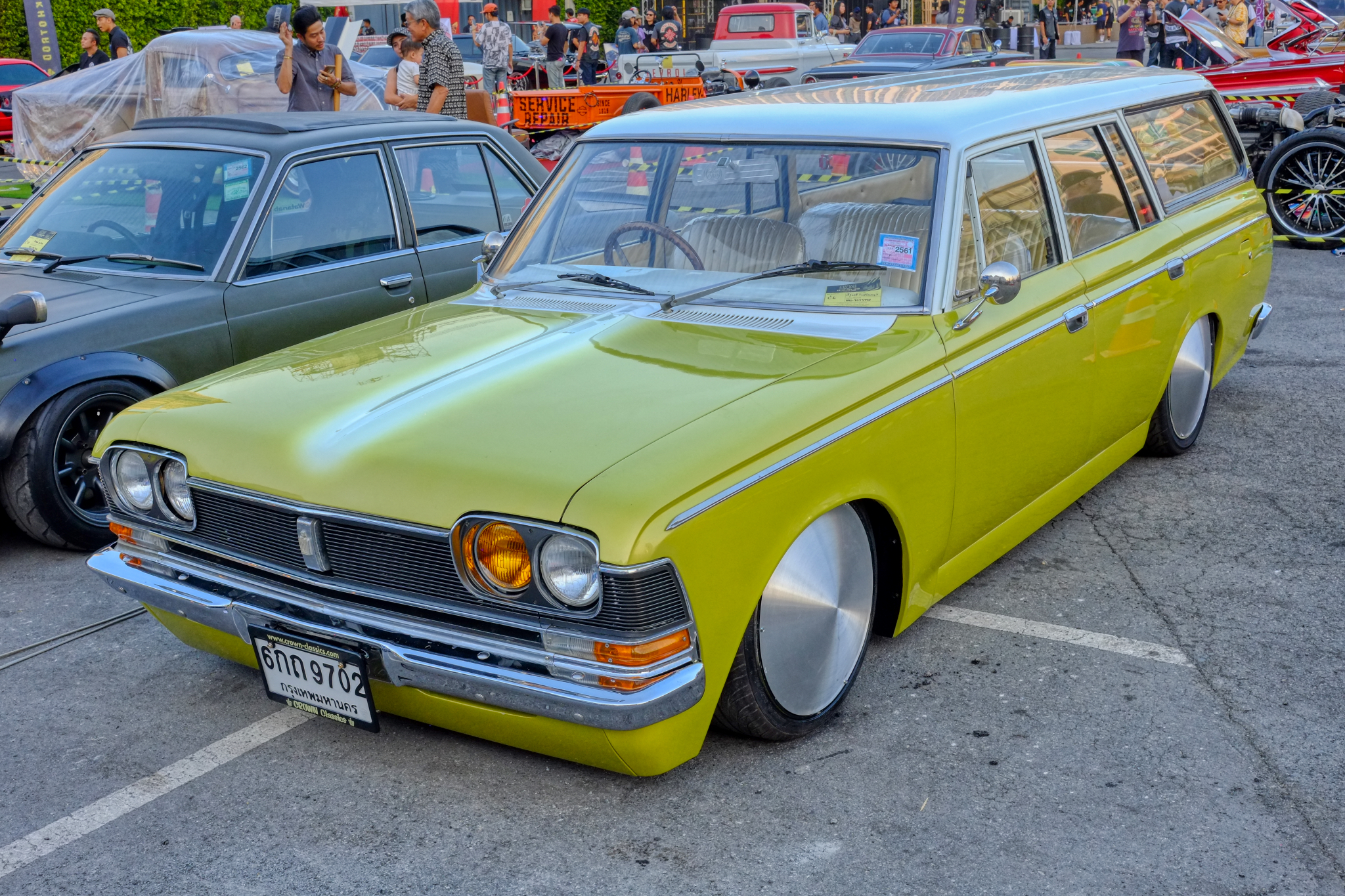 A 'lakes' themed Crown Toyota wagon. Nicely done with full Moon discs, beautiful paint, tuck-and-roll, and the right stance. A real hot rod.
A 'lakes' themed Crown Toyota wagon. Nicely done with full Moon discs, beautiful paint, tuck-and-roll, and the right stance. A real hot rod.
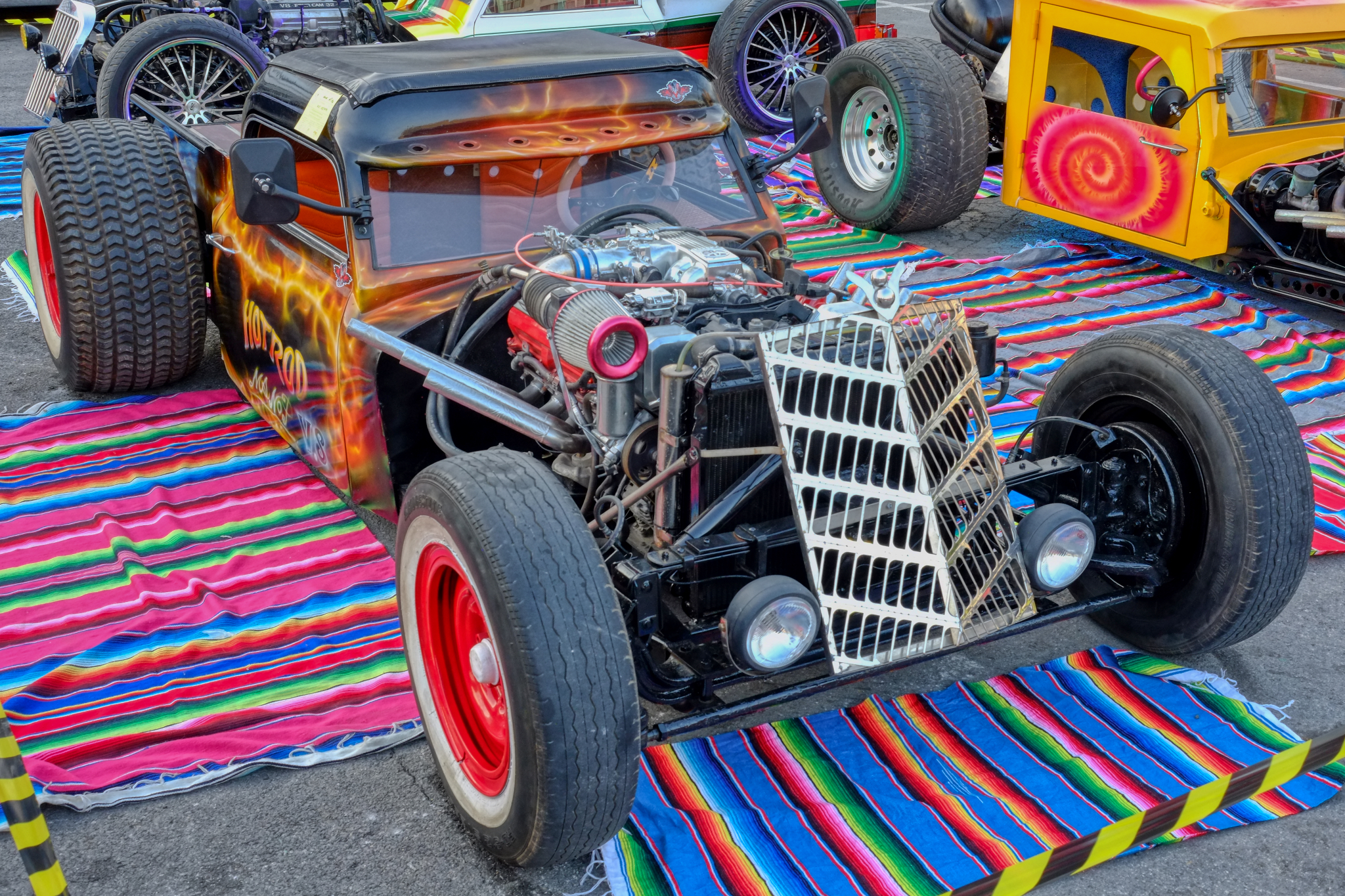 Individual. Idiosyncratic. A true hot rod. I bet this guy has a lots of fun with this Toyota (1UZ) V8-powered homebuild.
Individual. Idiosyncratic. A true hot rod. I bet this guy has a lots of fun with this Toyota (1UZ) V8-powered homebuild.
 One of my favorite cars at the show. This Bad Boy Fiat 500 was modified as a street racer. The workmanship on this car was world-class, creative and extremely clever.
One of my favorite cars at the show. This Bad Boy Fiat 500 was modified as a street racer. The workmanship on this car was world-class, creative and extremely clever.
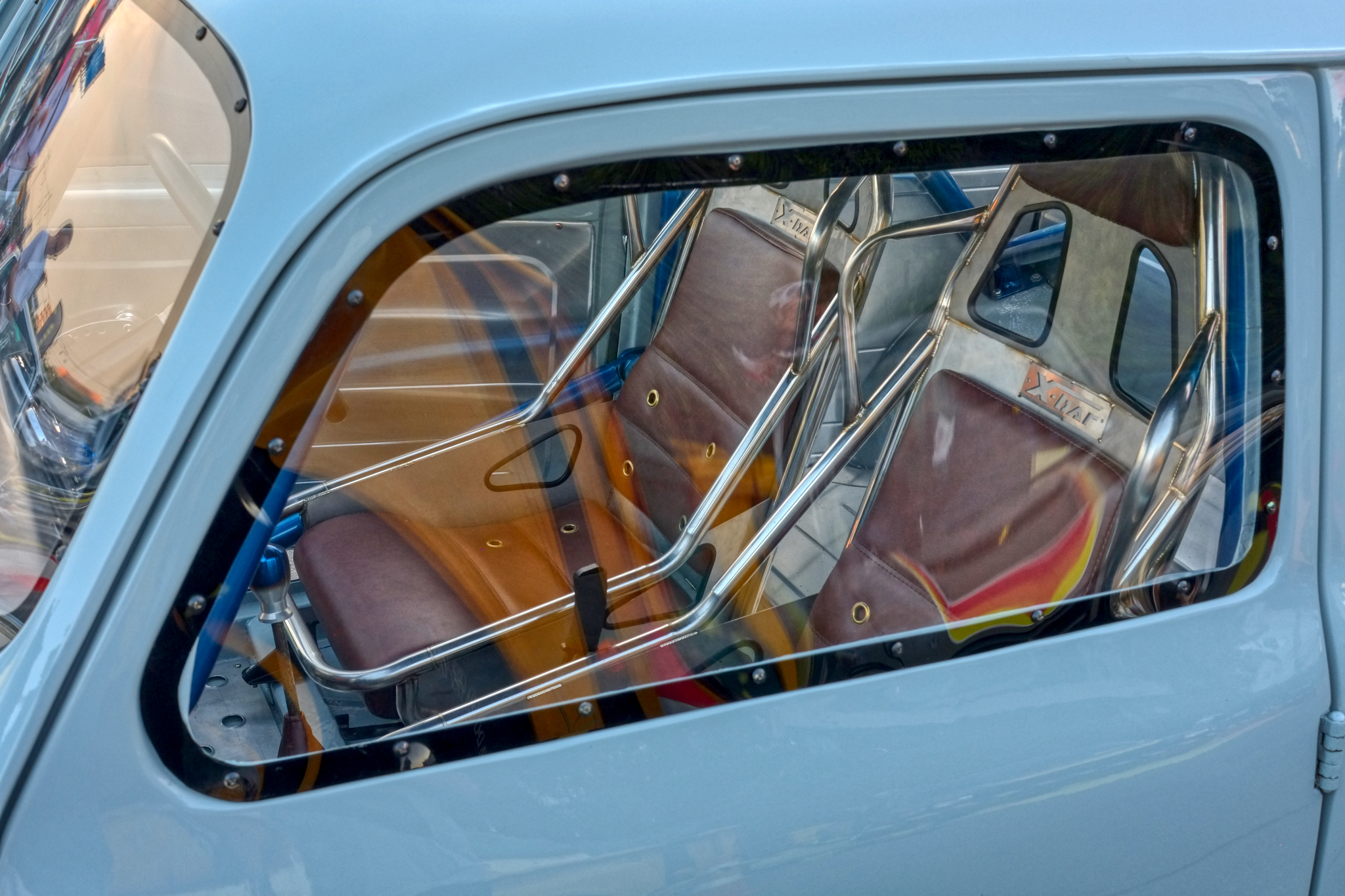 The interior of the Bad Boy Fiat 500. Incredible design of these seats. WOW!
The interior of the Bad Boy Fiat 500. Incredible design of these seats. WOW!
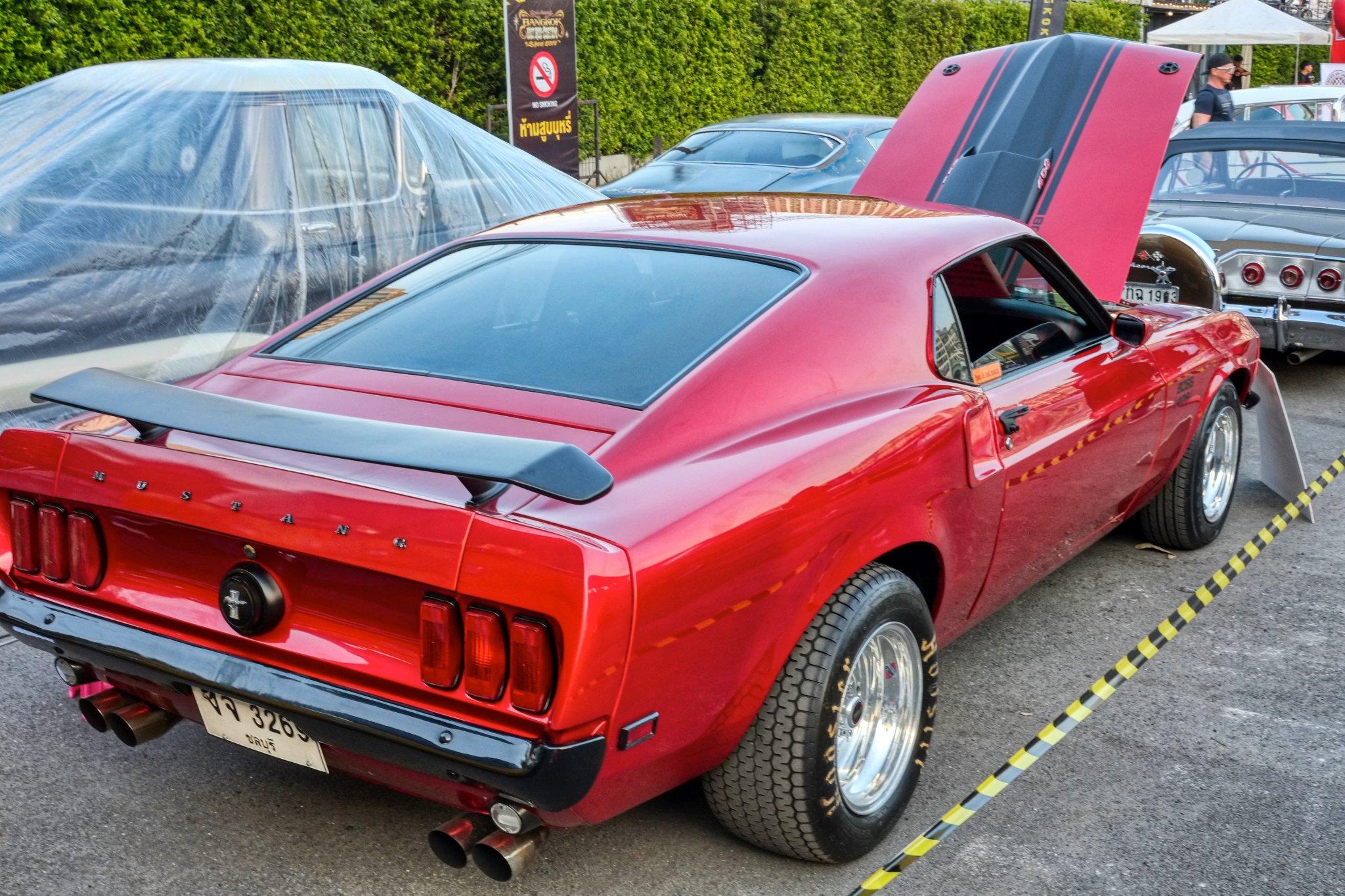 A beautifully prepared 1969 Ford Mustang "Mach I" in candy apple red.
A beautifully prepared 1969 Ford Mustang "Mach I" in candy apple red.
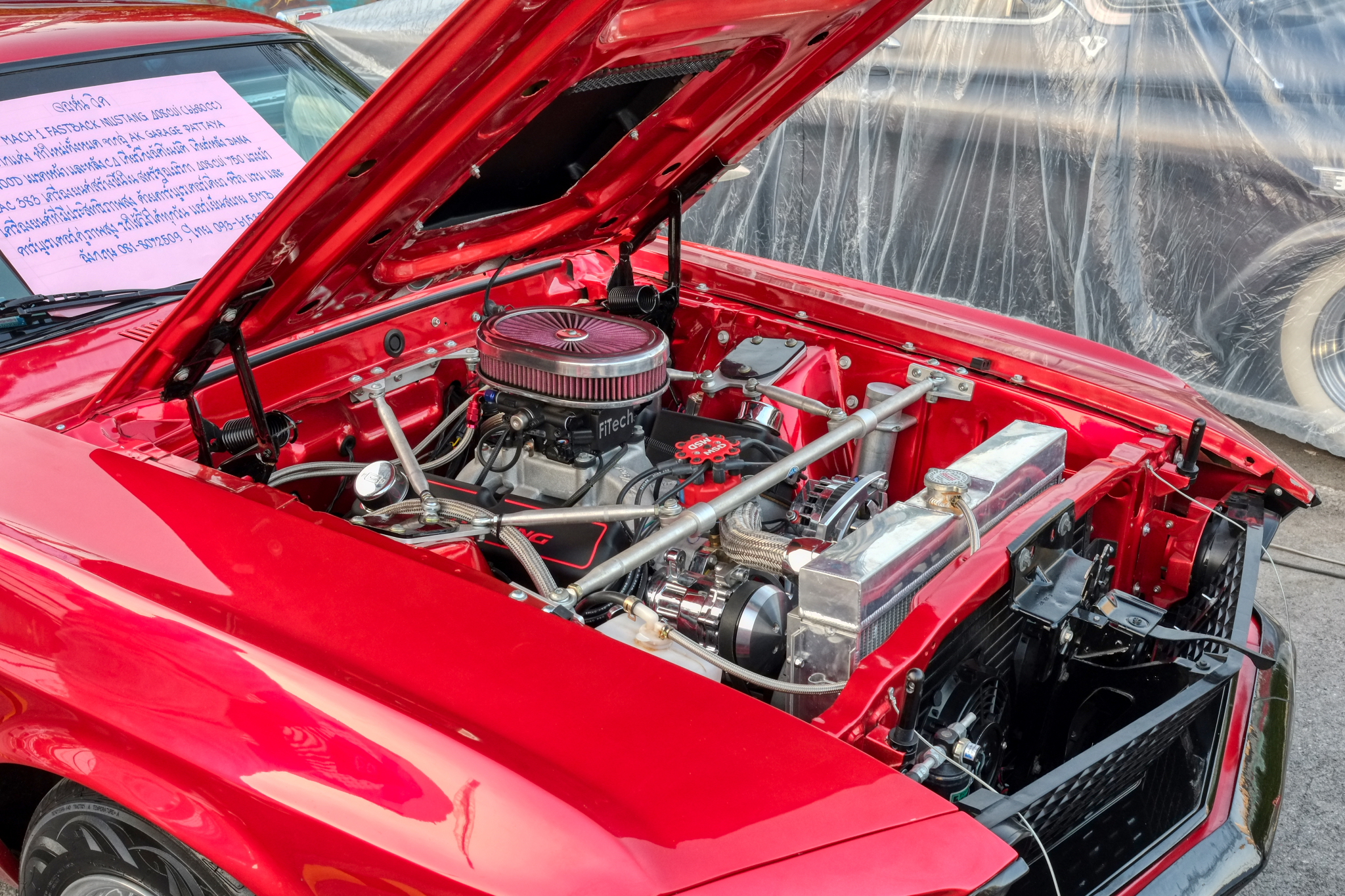 The Mustang Mach I had a 406ci Windsor with EFI. Beautiful engine detailing.
The Mustang Mach I had a 406ci Windsor with EFI. Beautiful engine detailing.
 My friends at Volcano Customs entered this pristine 1957 Chevy . . . and walked away with the show's Grand Prize. Well done. [Notice the 'American Car Club of Thailand' plaque in the background]
My friends at Volcano Customs entered this pristine 1957 Chevy . . . and walked away with the show's Grand Prize. Well done. [Notice the 'American Car Club of Thailand' plaque in the background]
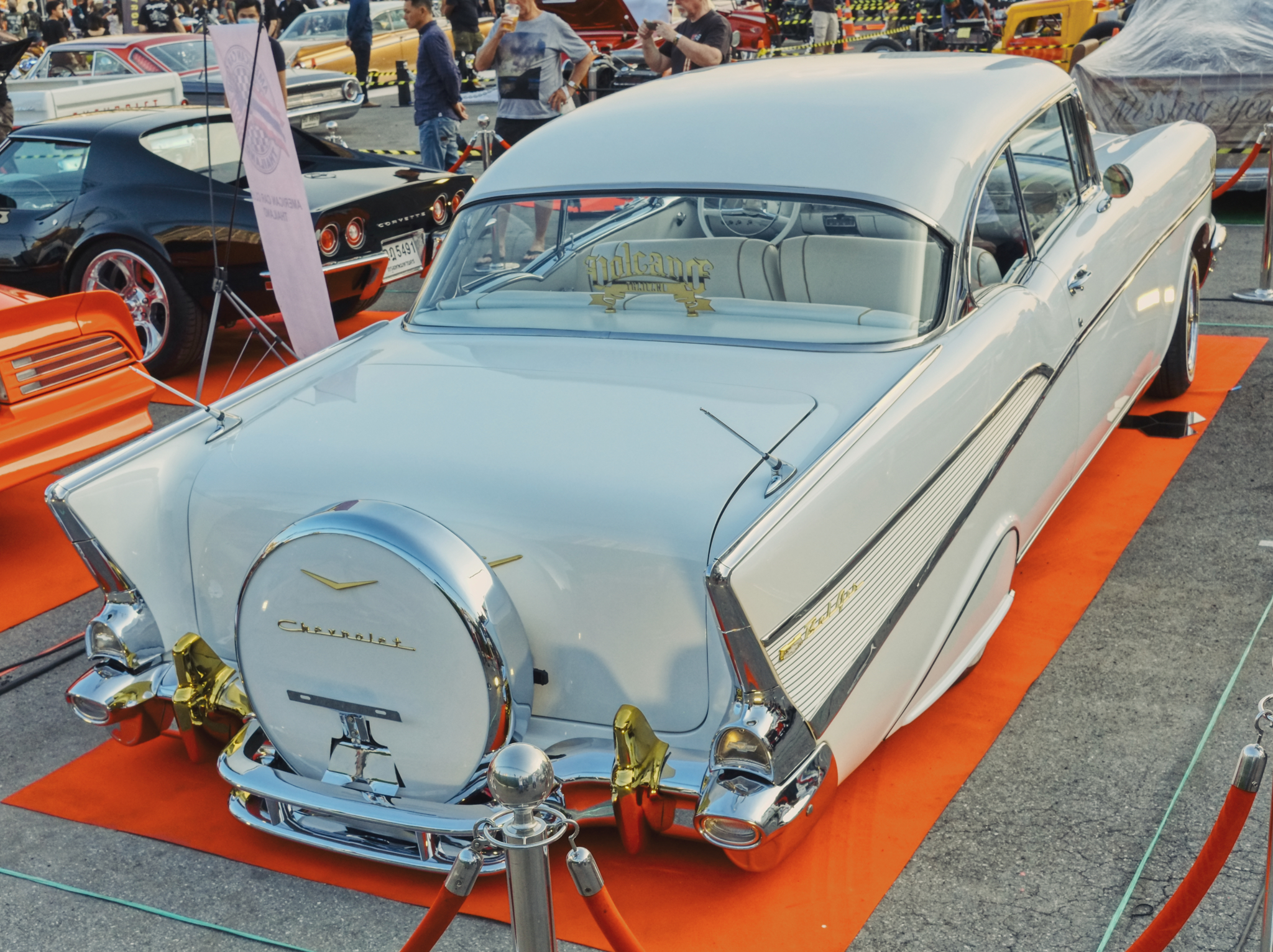 This car is perfect in every way. Remember . . . this is in Bangkok, Thailand. Fantastic.
This car is perfect in every way. Remember . . . this is in Bangkok, Thailand. Fantastic.
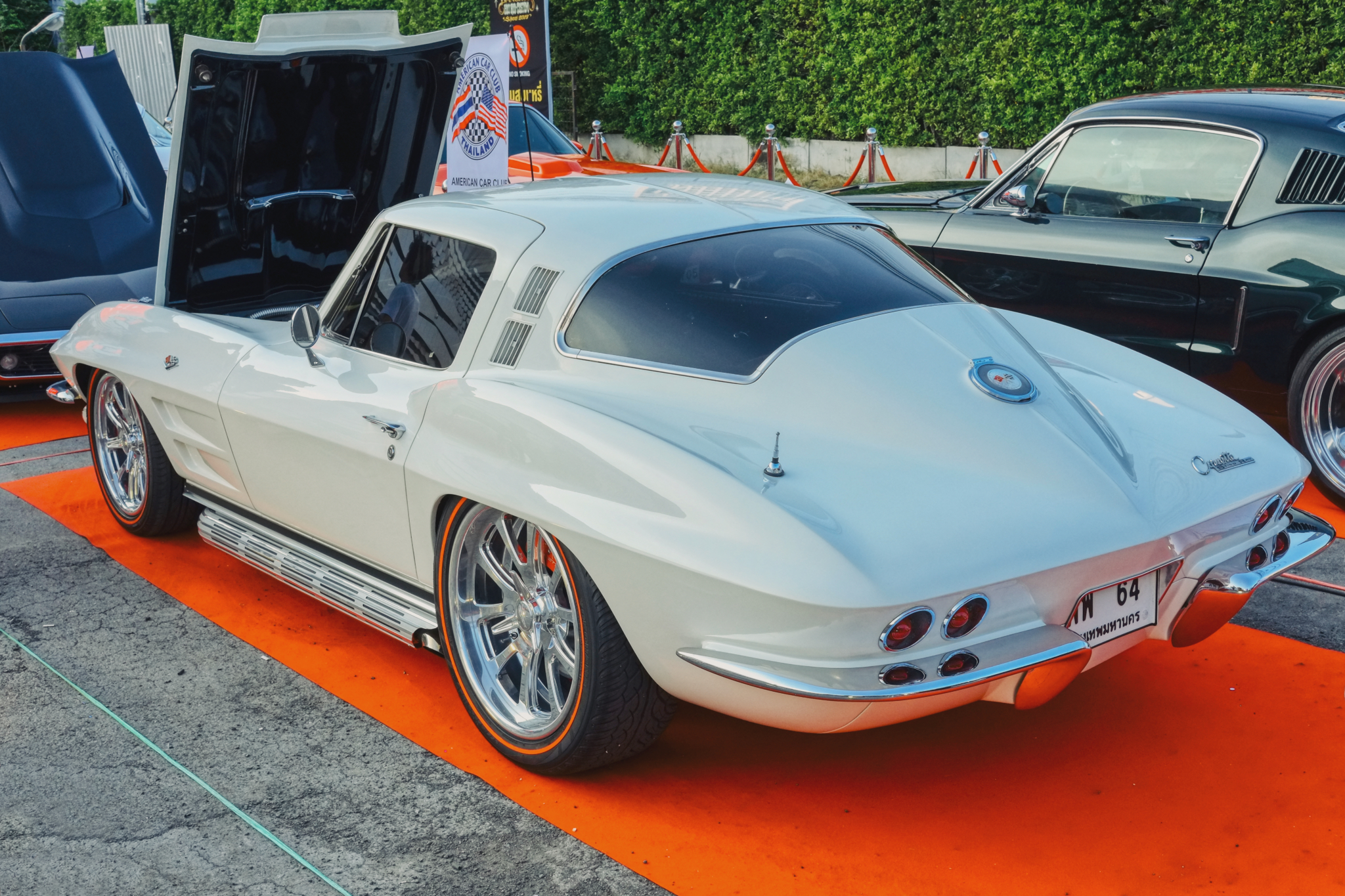 What would any car show be without a C2 Corvette? This white one was beautifully done.
What would any car show be without a C2 Corvette? This white one was beautifully done.
 The engine compartment on the white 'Vette was nicely done with individual throttle body EFI.
The engine compartment on the white 'Vette was nicely done with individual throttle body EFI.
 A near perfect C3 Corvette.
A near perfect C3 Corvette.
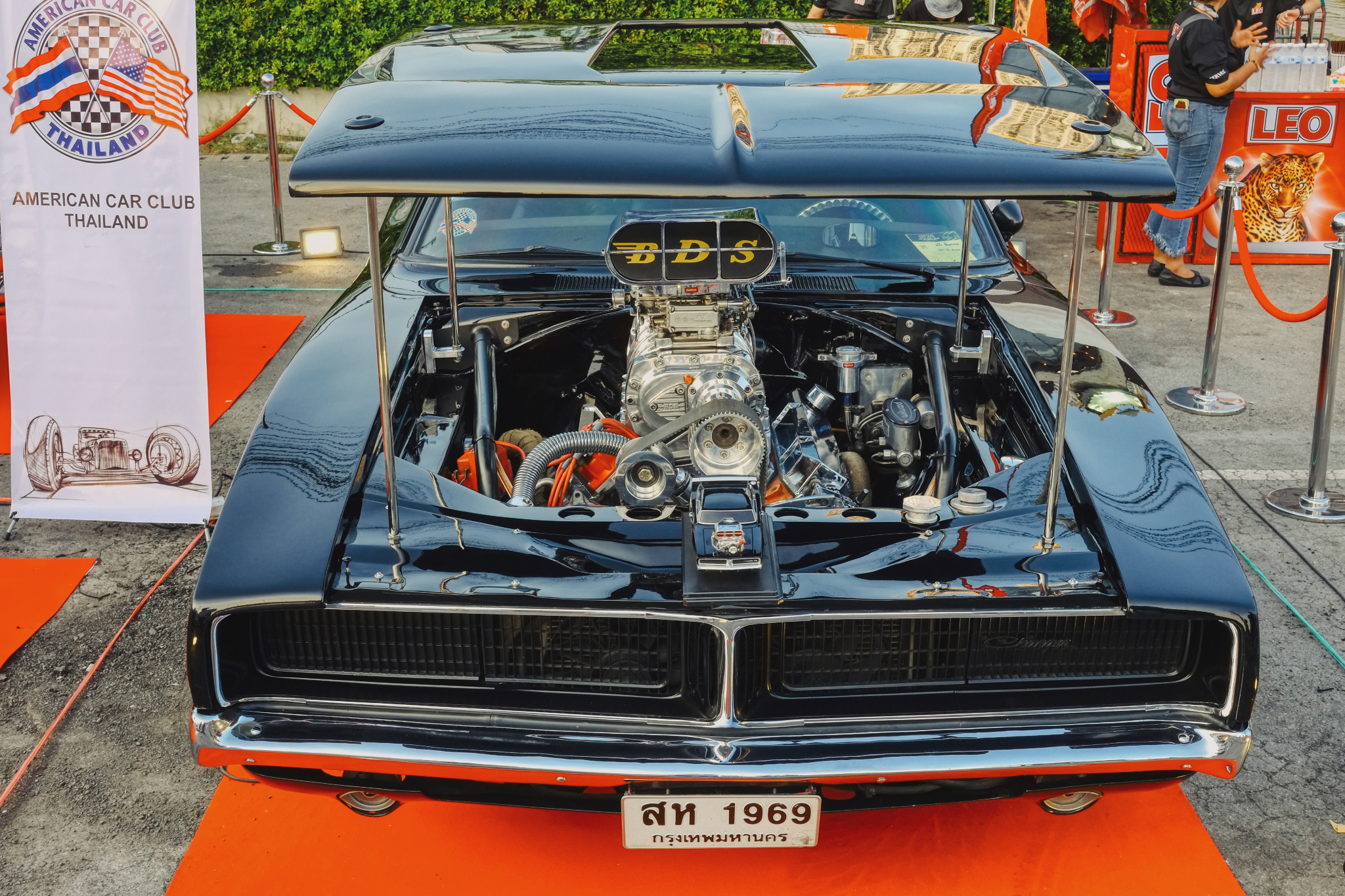 A blown big block wedge (540ci) 1969 Dodge Charger, what else? A street rod that would draw a crowd in L.A.
A blown big block wedge (540ci) 1969 Dodge Charger, what else? A street rod that would draw a crowd in L.A.
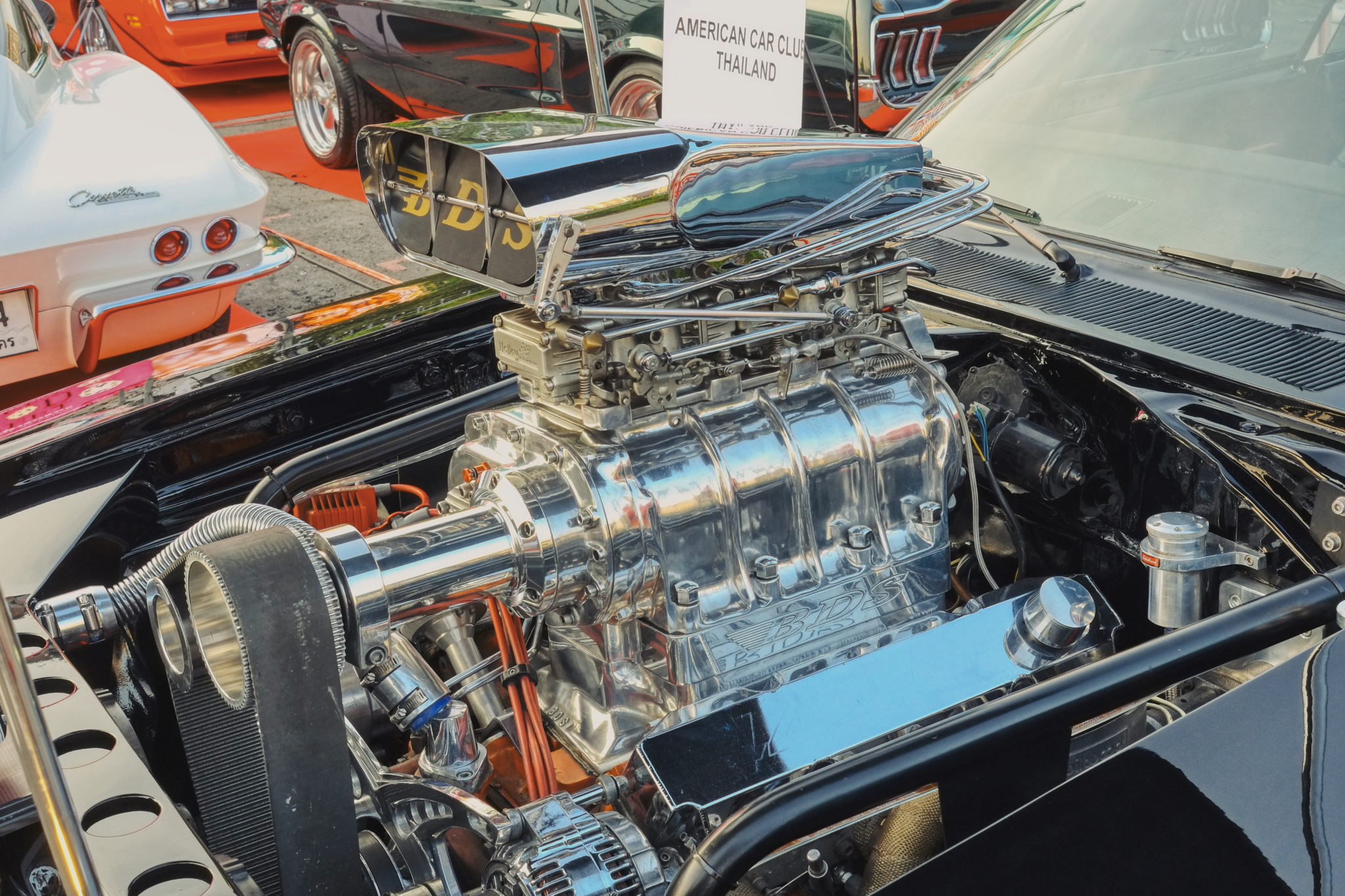 Yes . . . he drives it on the street. There is some monkey-bidness going on here!
Yes . . . he drives it on the street. There is some monkey-bidness going on here!
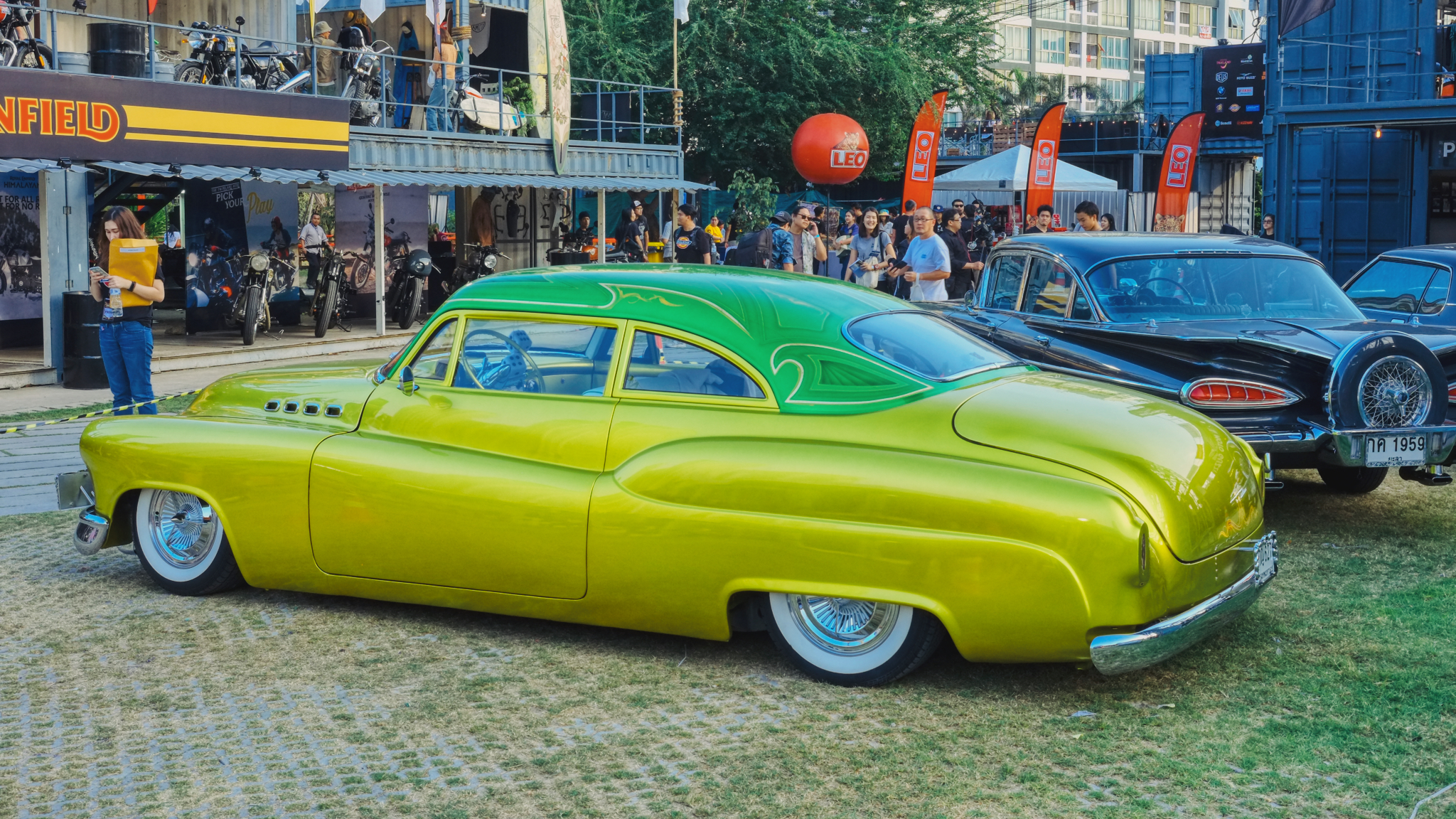 An early '50s mild custom Buick with outrageous paint . . . and an LS Chevy motor.
An early '50s mild custom Buick with outrageous paint . . . and an LS Chevy motor.
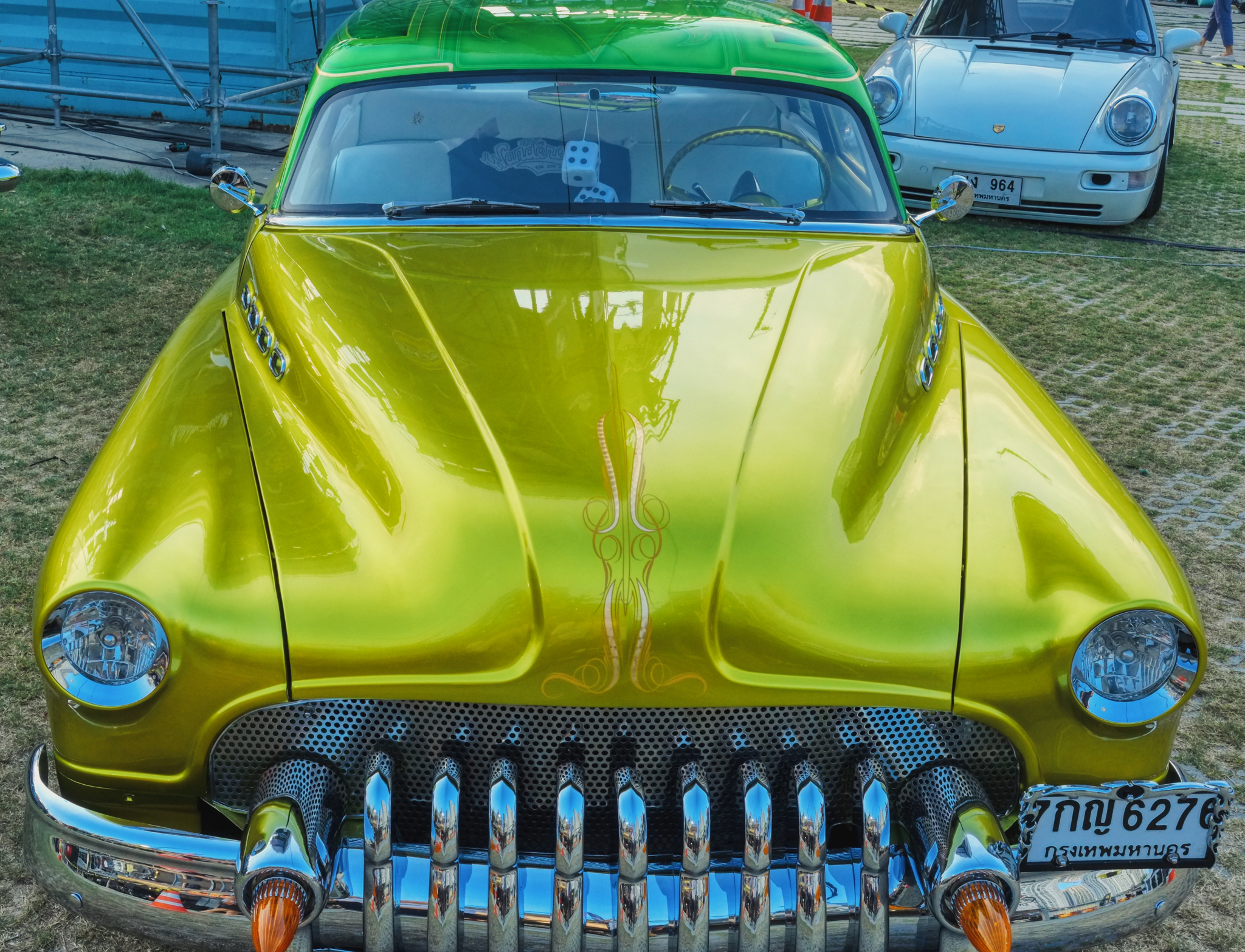 Loved the paint, pin striping, and the laced roof. Super cool!
Loved the paint, pin striping, and the laced roof. Super cool!
 A rare 1959 Chevrolet El Camino. Too cool as a rat rod custom. Where in the world did they find this in Thailand?
A rare 1959 Chevrolet El Camino. Too cool as a rat rod custom. Where in the world did they find this in Thailand?
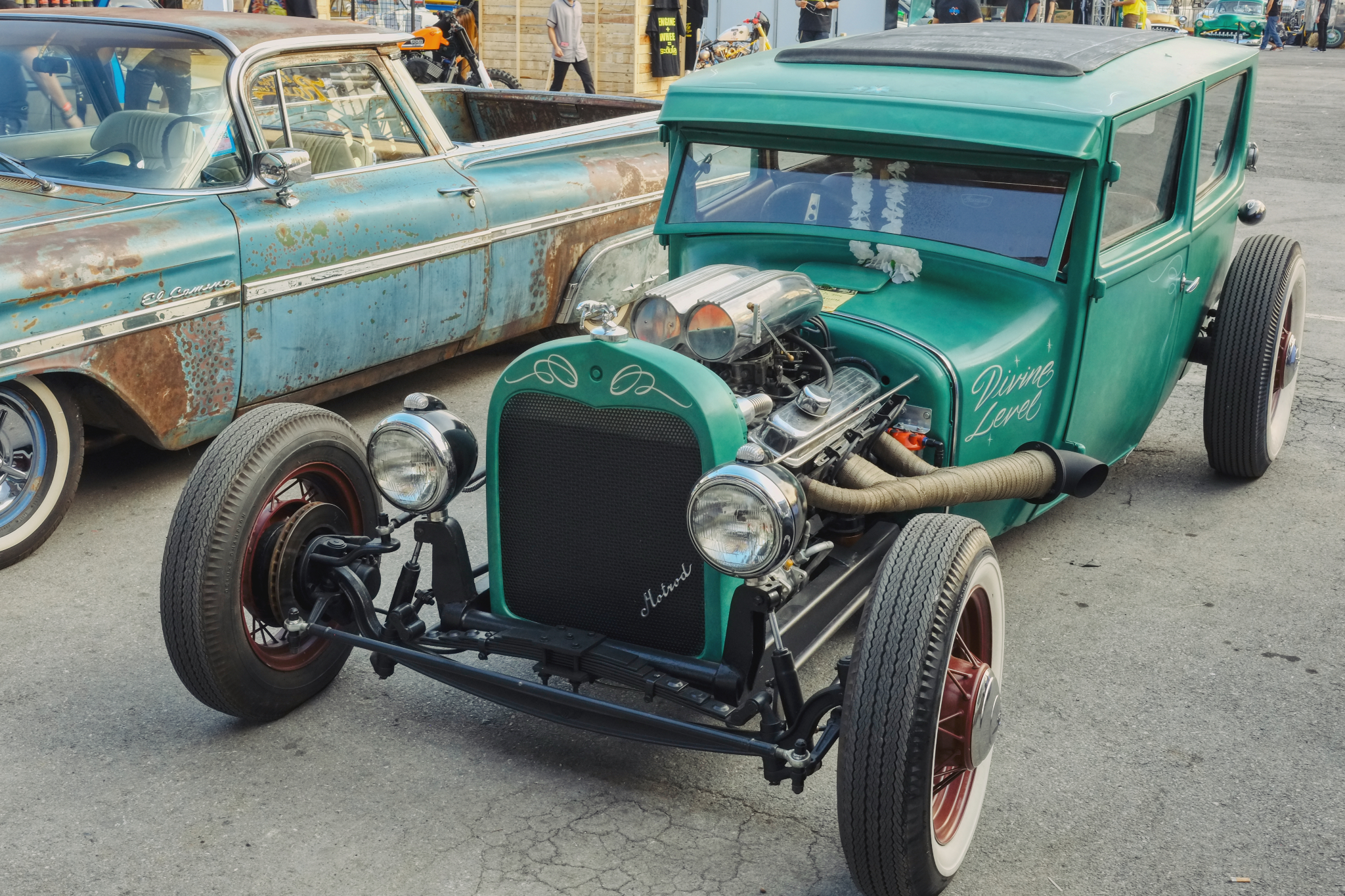 An interesting small block Chevy powered channeled 1926-1927 Model T Sedan with a Model A radiator.
An interesting small block Chevy powered channeled 1926-1927 Model T Sedan with a Model A radiator.
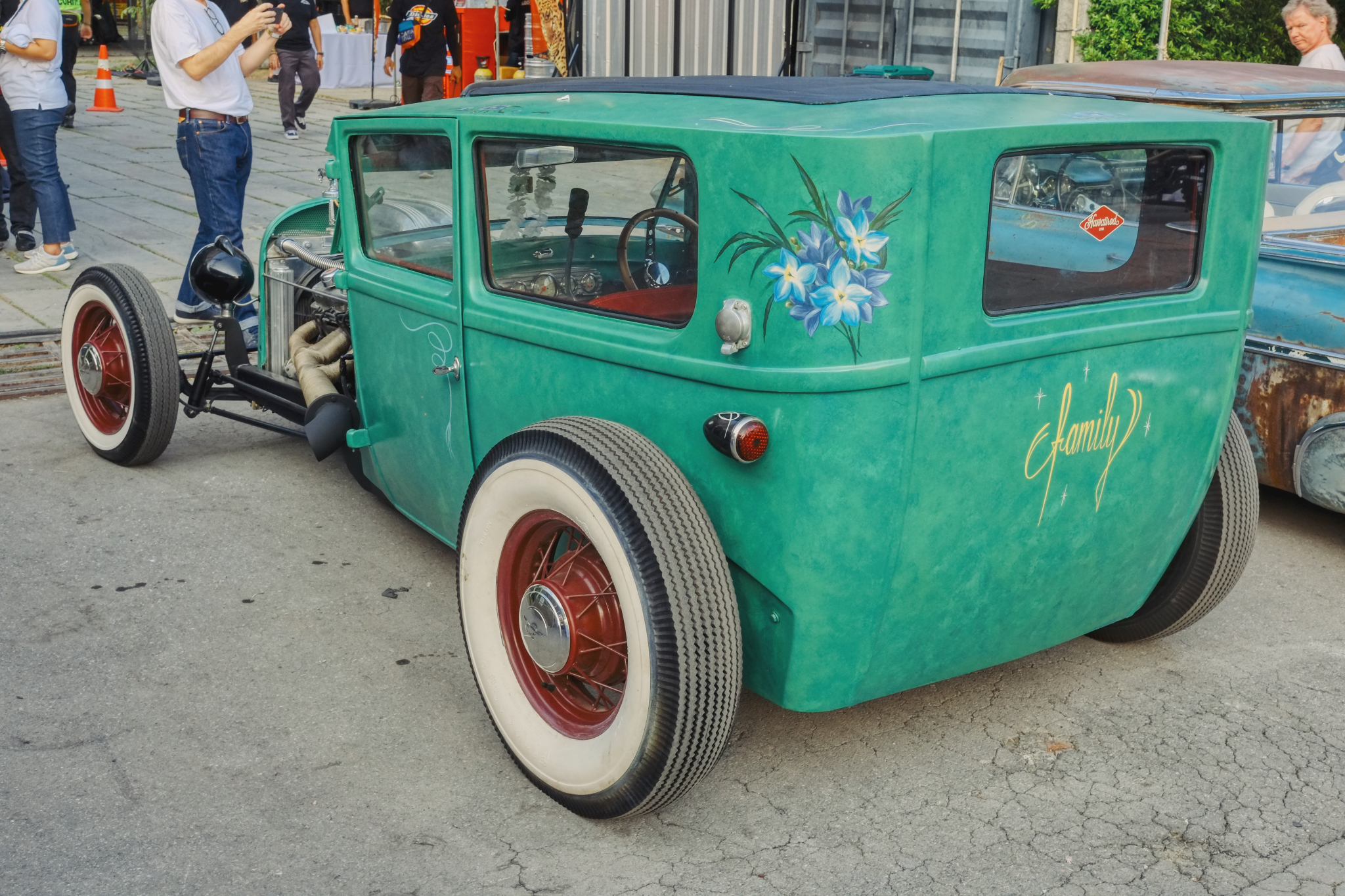 I have to say . . . I like this sponge daubed paint! It's got the right look.
I have to say . . . I like this sponge daubed paint! It's got the right look.
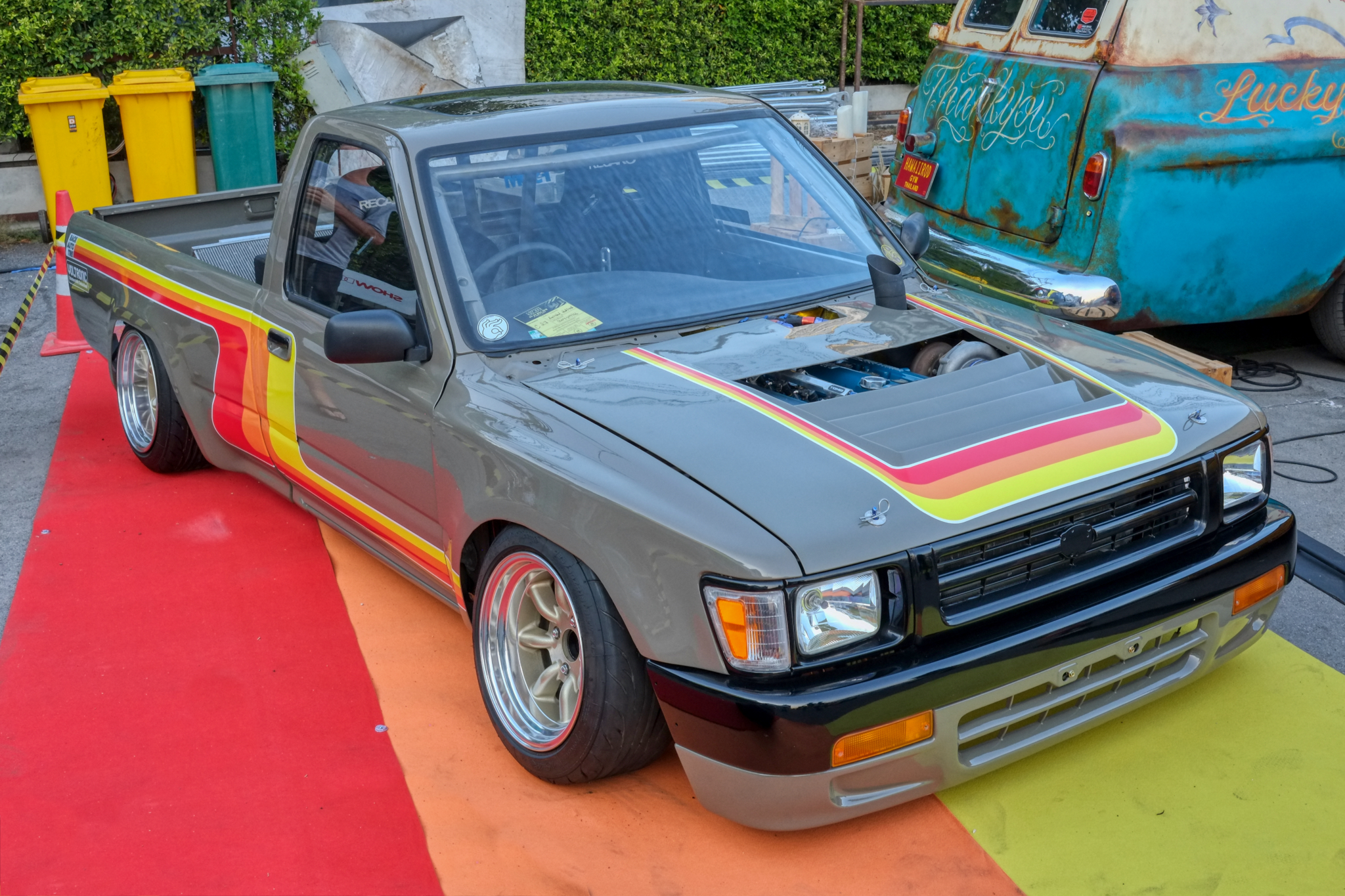 A nicely prepared Toyota pick-up with a turbocharged engine. I liked the 'throw back' graphics. Maybe I will enter my V8 Hilux Tiger next year.
A nicely prepared Toyota pick-up with a turbocharged engine. I liked the 'throw back' graphics. Maybe I will enter my V8 Hilux Tiger next year.
 As fantastic as the cars were . . . the cycles may have been the stars of the show. The ingenuity, creativity, and craftsmanship of the motorcycles at the show was truly fantastic.
As fantastic as the cars were . . . the cycles may have been the stars of the show. The ingenuity, creativity, and craftsmanship of the motorcycles at the show was truly fantastic.
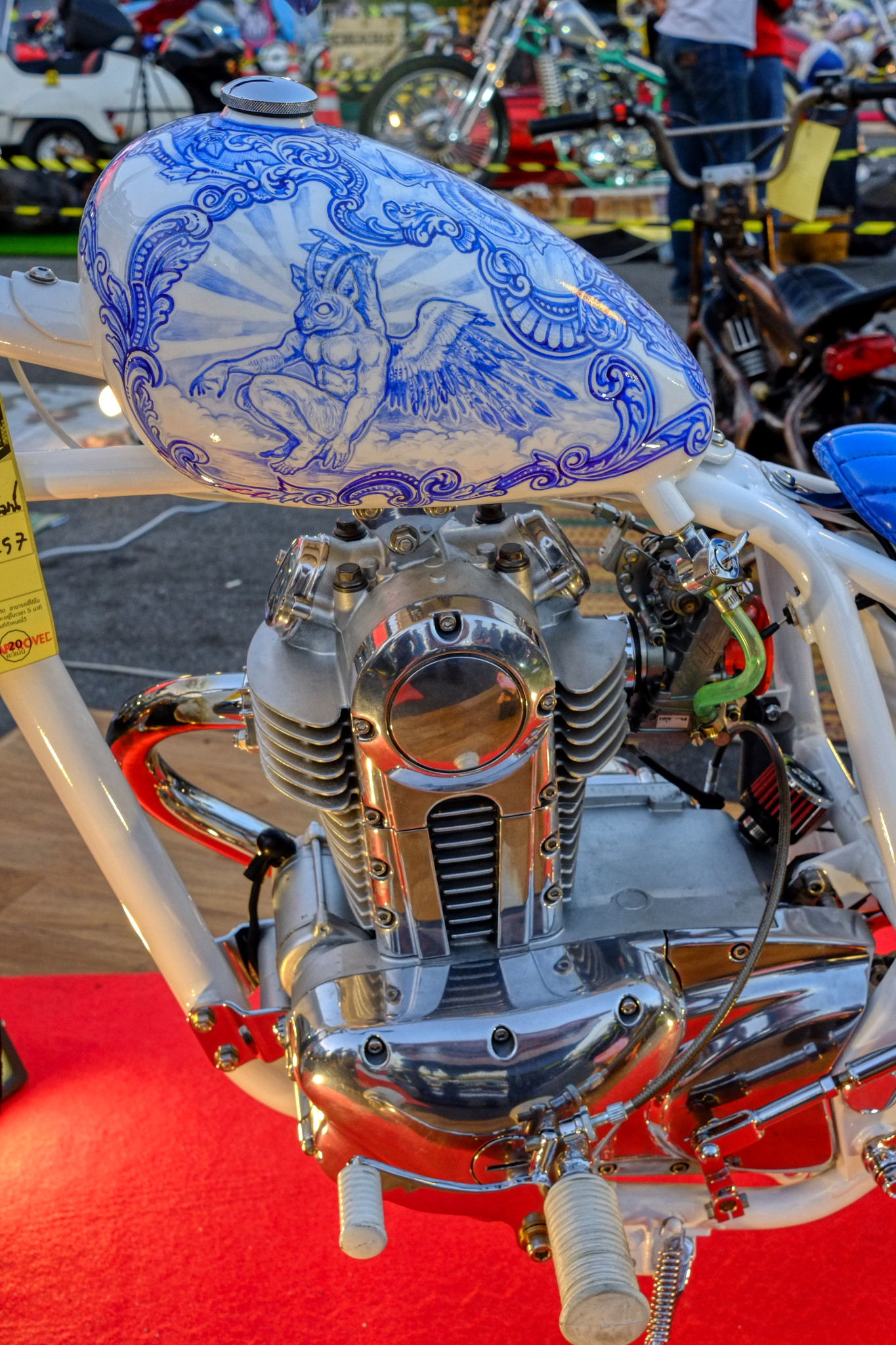 Fine artistry and detail everywhere.
Fine artistry and detail everywhere.
 From fast street bikes . . . .
From fast street bikes . . . .
 . . . to famous drag bikes . . . .
. . . to famous drag bikes . . . .
 . . . to outrageously stylized choppers, the show had a huge variety of two-wheeled art.
. . . to outrageously stylized choppers, the show had a huge variety of two-wheeled art.
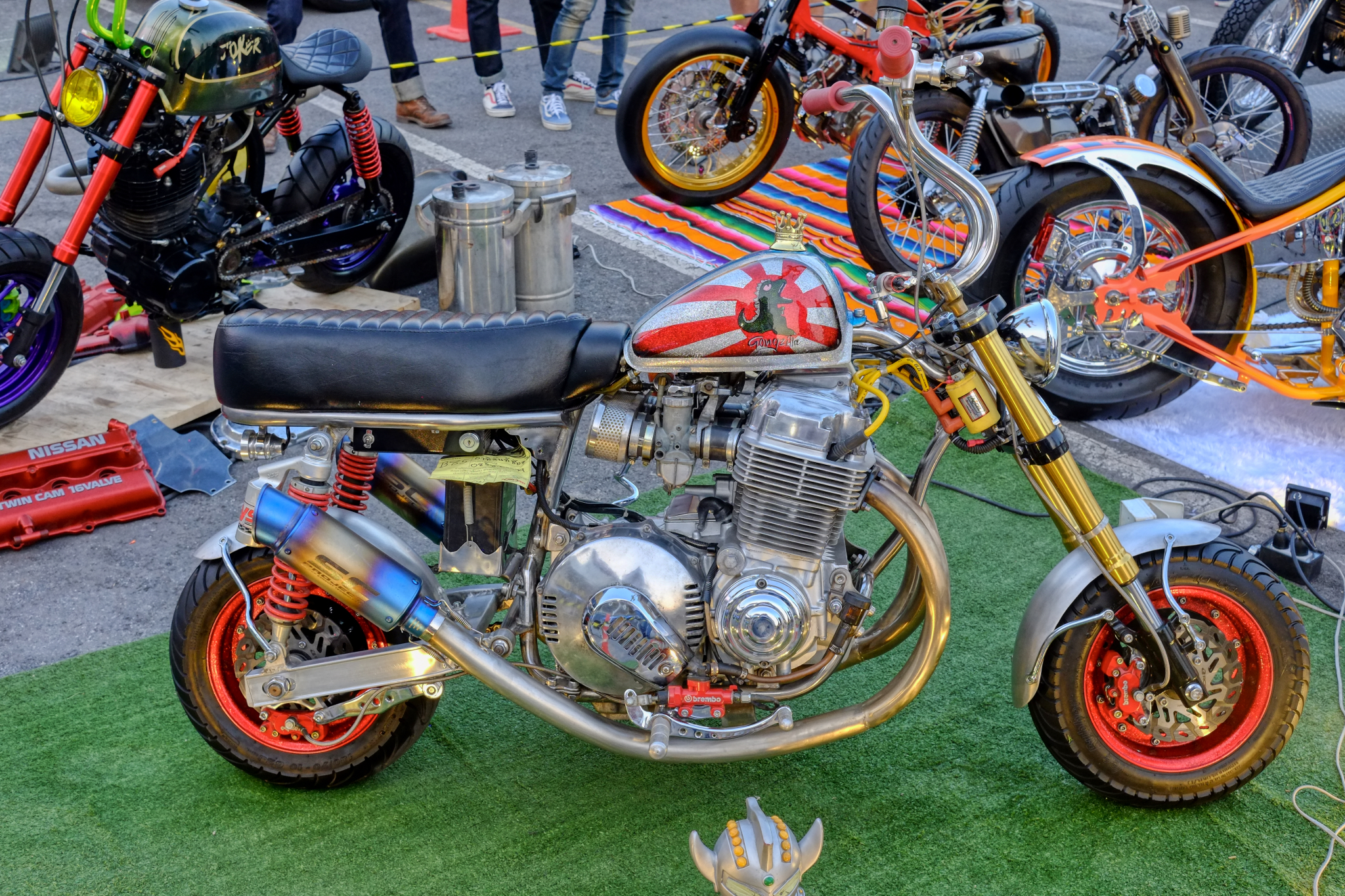 How does a 500cc twin powered "Gongzilla" minibike tickle your fancy?
How does a 500cc twin powered "Gongzilla" minibike tickle your fancy?
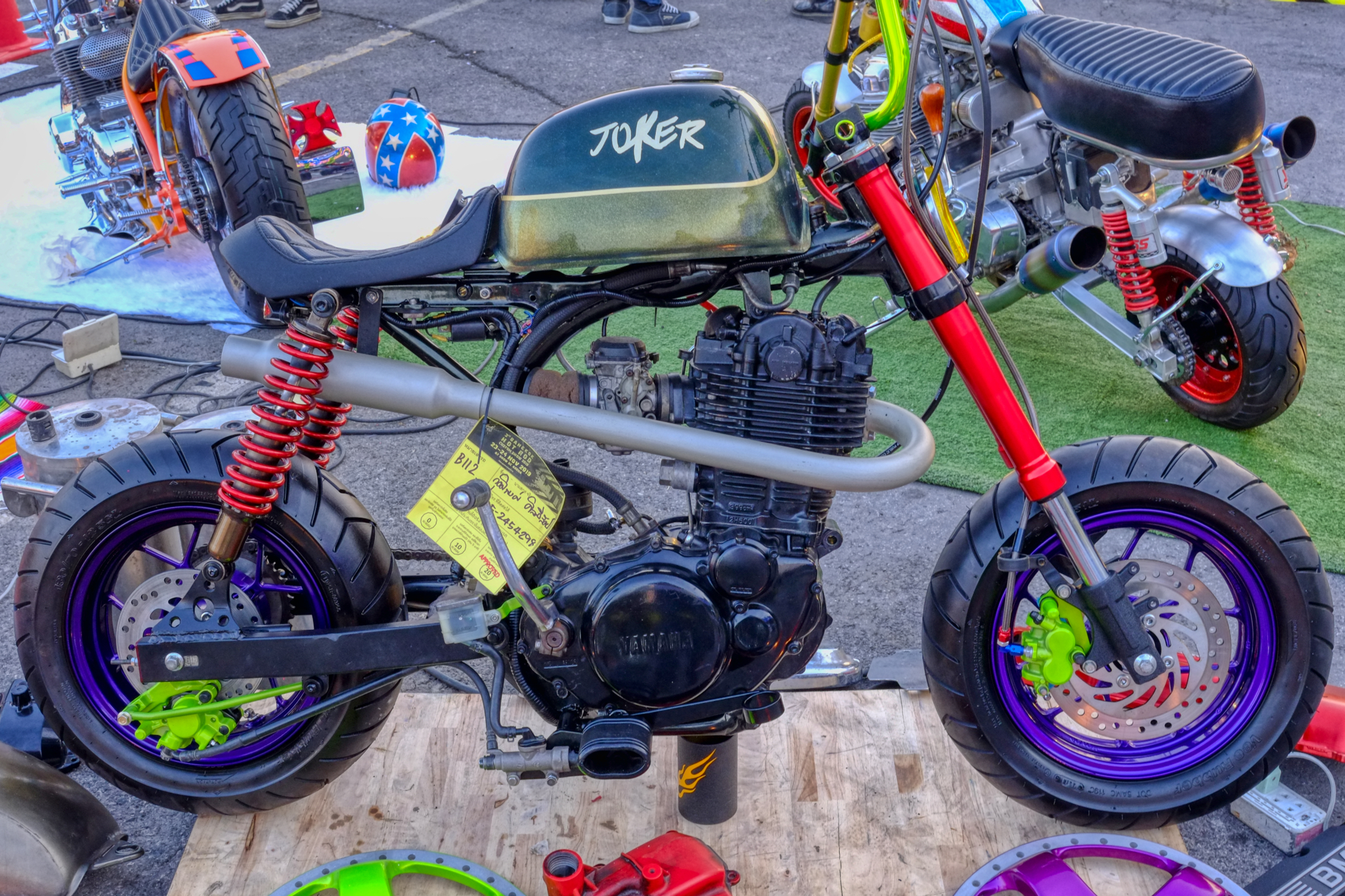 Maybe a 400cc single minibike is more your thing?
Maybe a 400cc single minibike is more your thing?
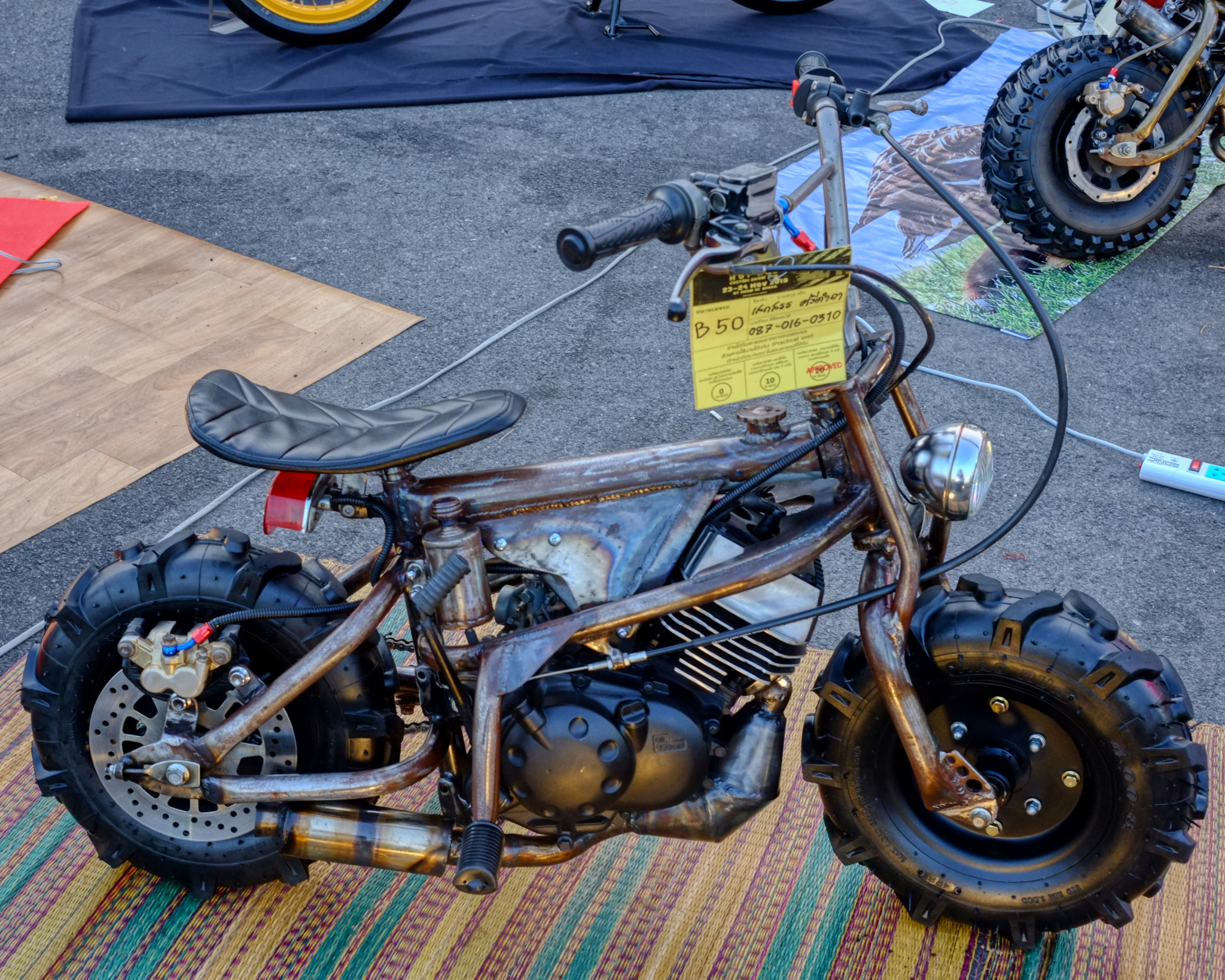 A 250cc 2-stroke motocross engine in an "off road scooter" could be hours of fun!
A 250cc 2-stroke motocross engine in an "off road scooter" could be hours of fun!
 A cool scooter with wonderful paint.
A cool scooter with wonderful paint.
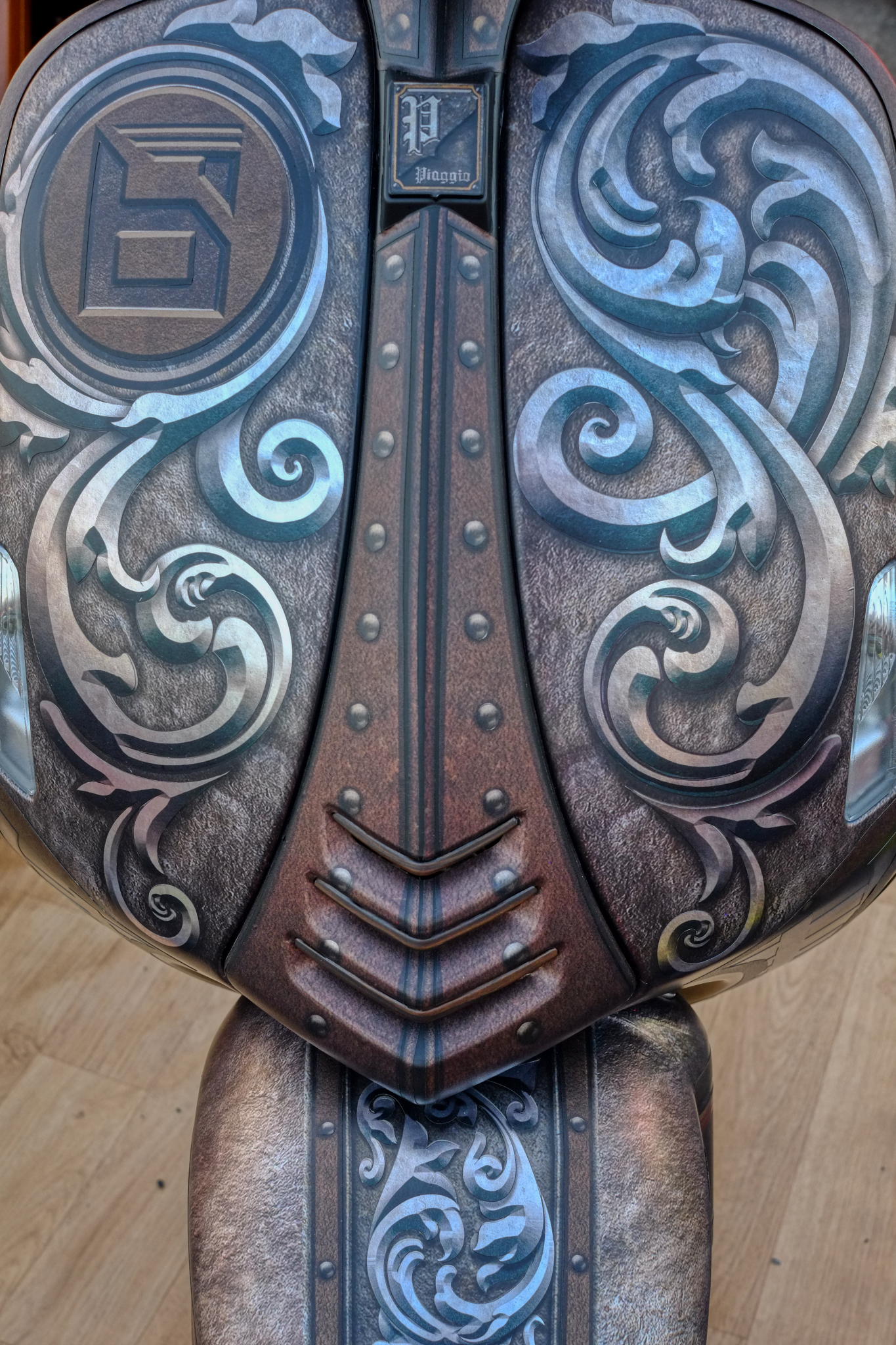 The paint was flawless and incredibly creative on this scooter.
The paint was flawless and incredibly creative on this scooter.
 This "rat rod Vespa" was highly modified and displayed in an "under construction" state. Is that an early BSA 500cc twin in there? Radical, to say the least.
This "rat rod Vespa" was highly modified and displayed in an "under construction" state. Is that an early BSA 500cc twin in there? Radical, to say the least.
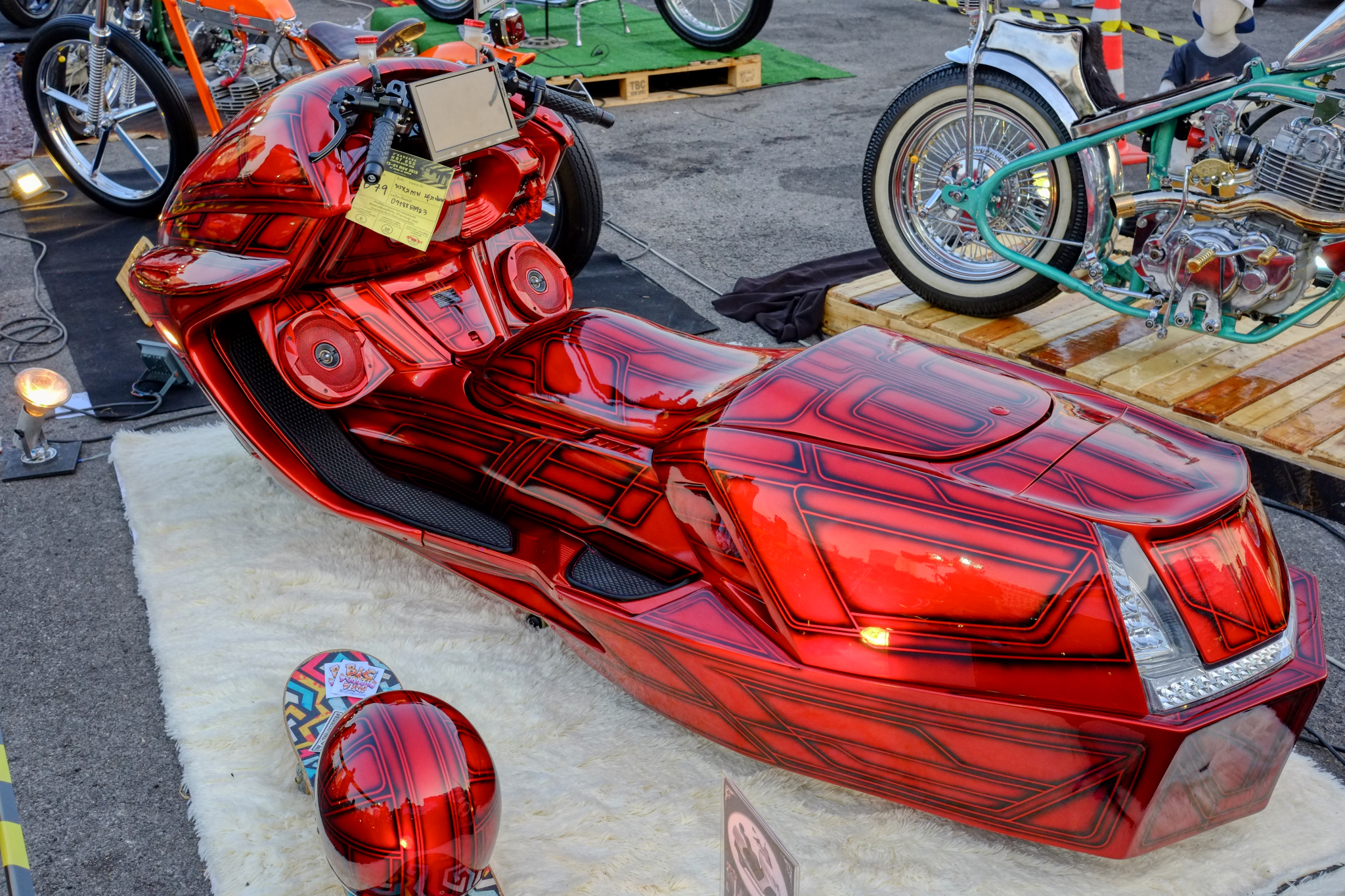 The ultimate scooter . . . now THAT IS STYLE! As you can see, I liked the scooters. There were so many of these . . . they are small, cheap, and offer a canvass for creativity.
The ultimate scooter . . . now THAT IS STYLE! As you can see, I liked the scooters. There were so many of these . . . they are small, cheap, and offer a canvass for creativity.
 A totally outrageous Harley. Just fantastic!
A totally outrageous Harley. Just fantastic!
 The Harley motor is fantastic!
The Harley motor is fantastic!
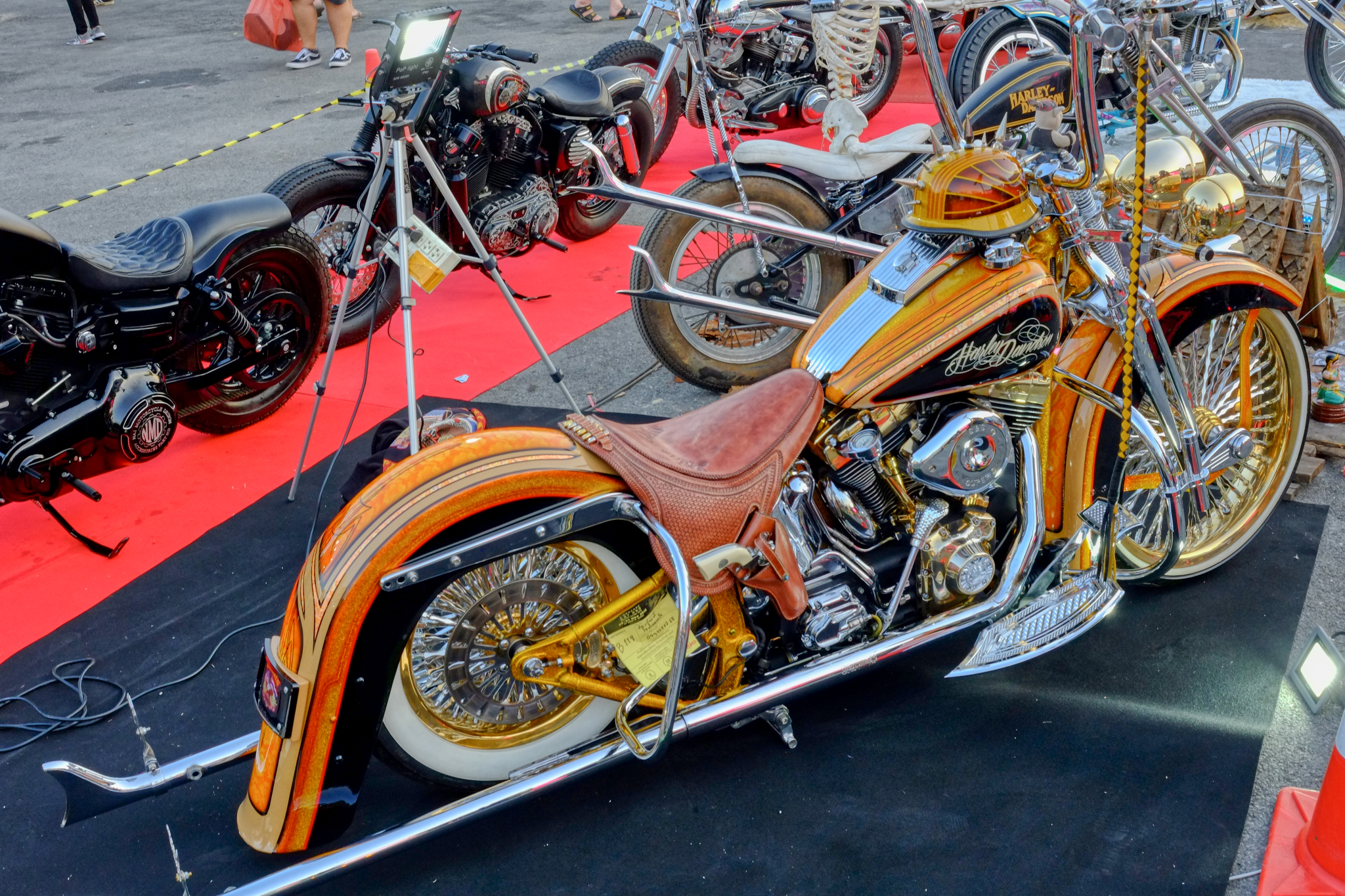 Another beautiful Harley with real gold accents.
Another beautiful Harley with real gold accents.
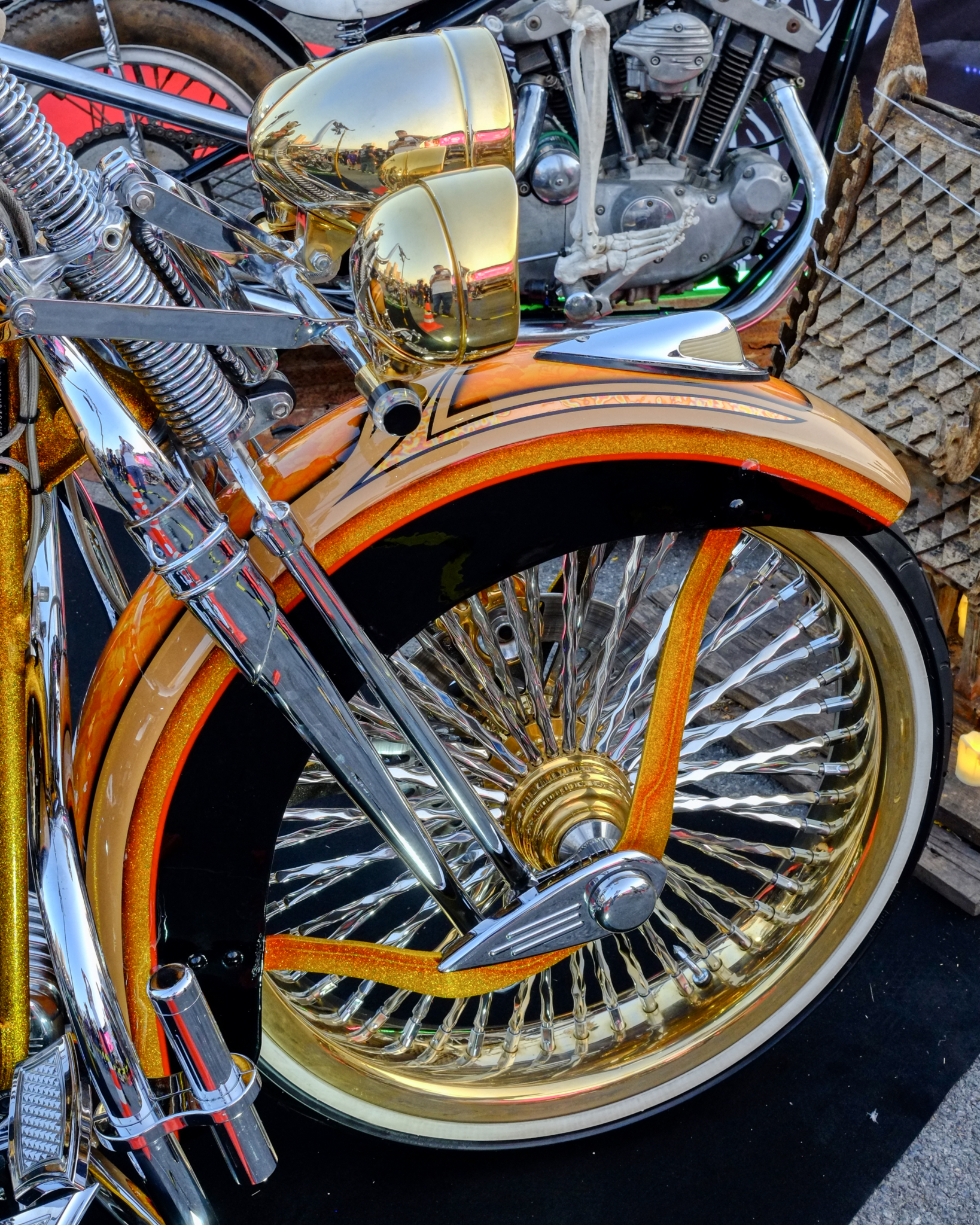 Gold details and twirled billet spokes. WOW!
Gold details and twirled billet spokes. WOW!
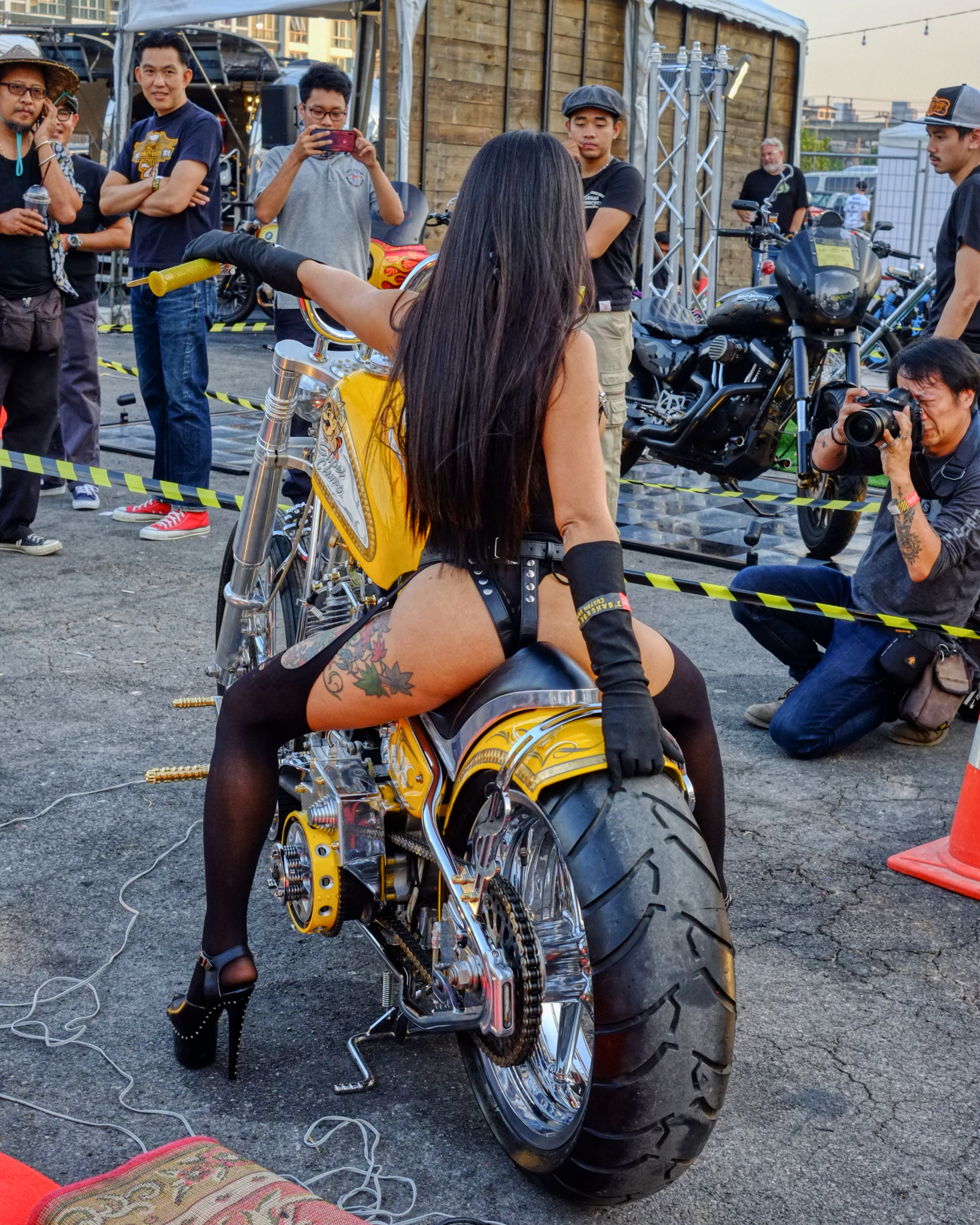 I believe that is a 20" wheel right there. Big tire too.
I believe that is a 20" wheel right there. Big tire too.
 I went to this show with a couple of buddies of mine who were real motorcycle nuts. They pointed out this bike as a famous MotoGP Ducati 900 from the early 70s. Looks great to me.
I went to this show with a couple of buddies of mine who were real motorcycle nuts. They pointed out this bike as a famous MotoGP Ducati 900 from the early 70s. Looks great to me.
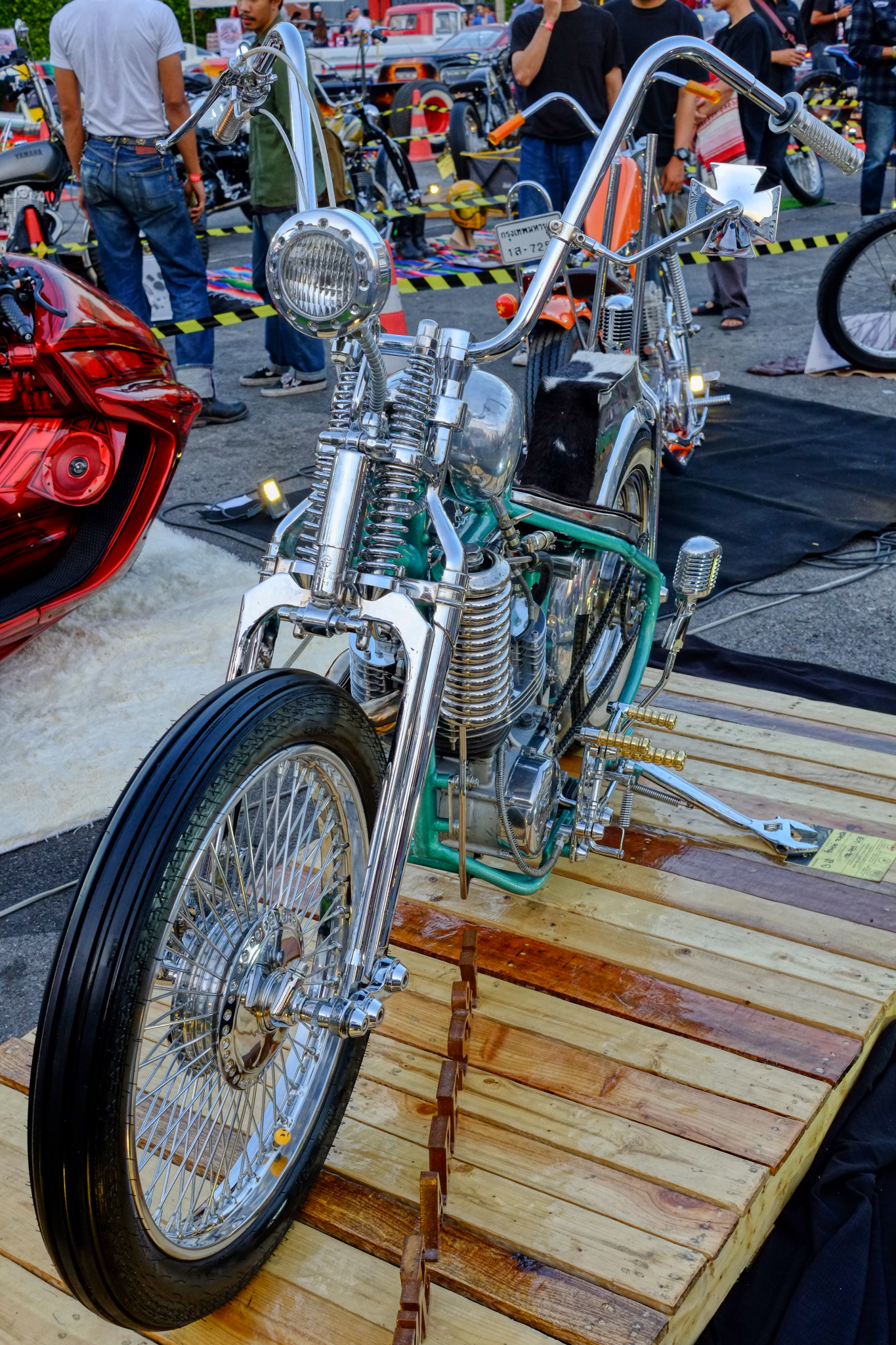 A big single chopper with lots of springs.
A big single chopper with lots of springs.
 I love all the mechanical bits & pieces on this bike.
I love all the mechanical bits & pieces on this bike.
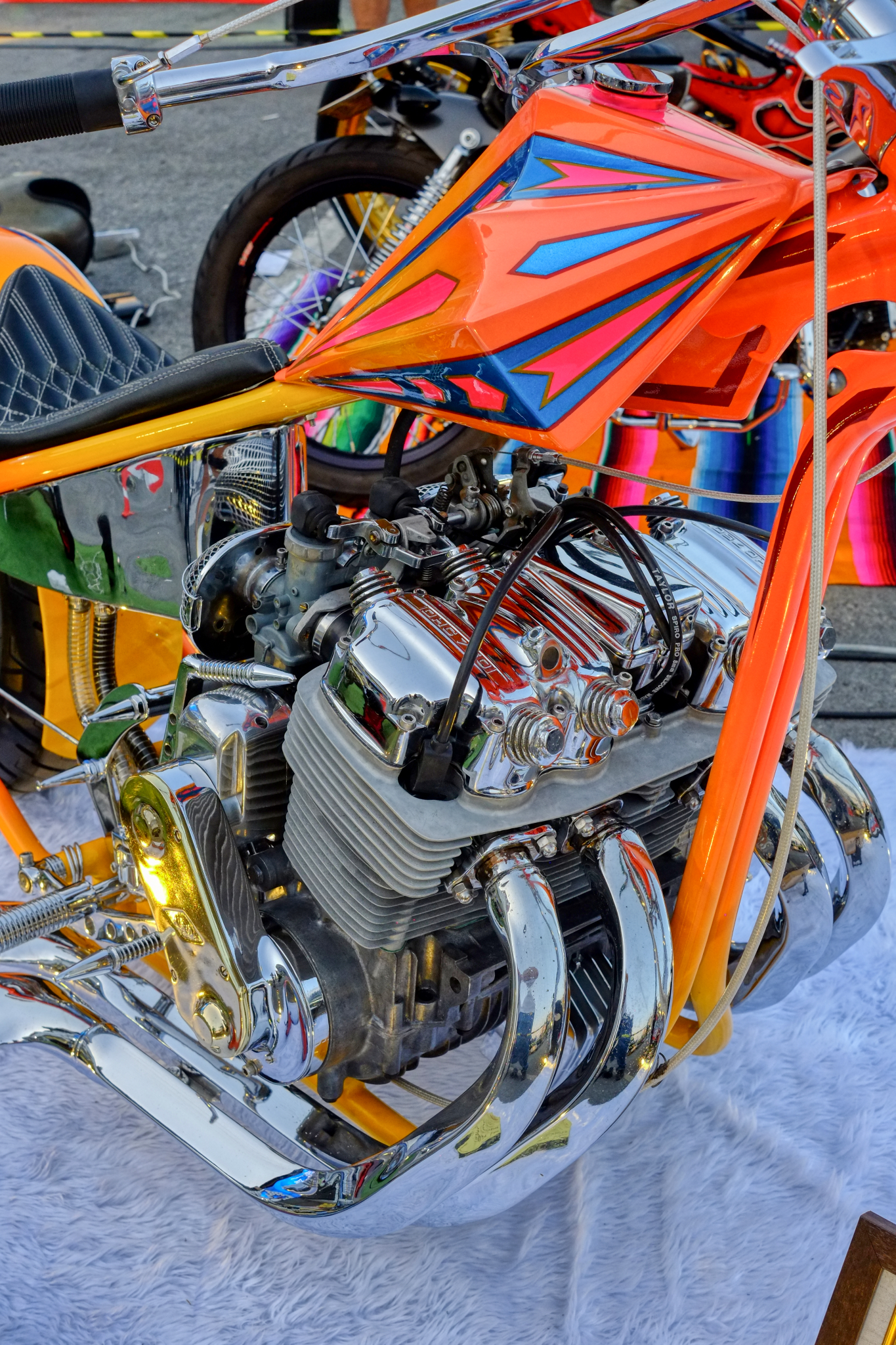 Nicely presented four cylinder chopper.
Nicely presented four cylinder chopper.
 I liked the pipes and the brass bits on this bike.
I liked the pipes and the brass bits on this bike.
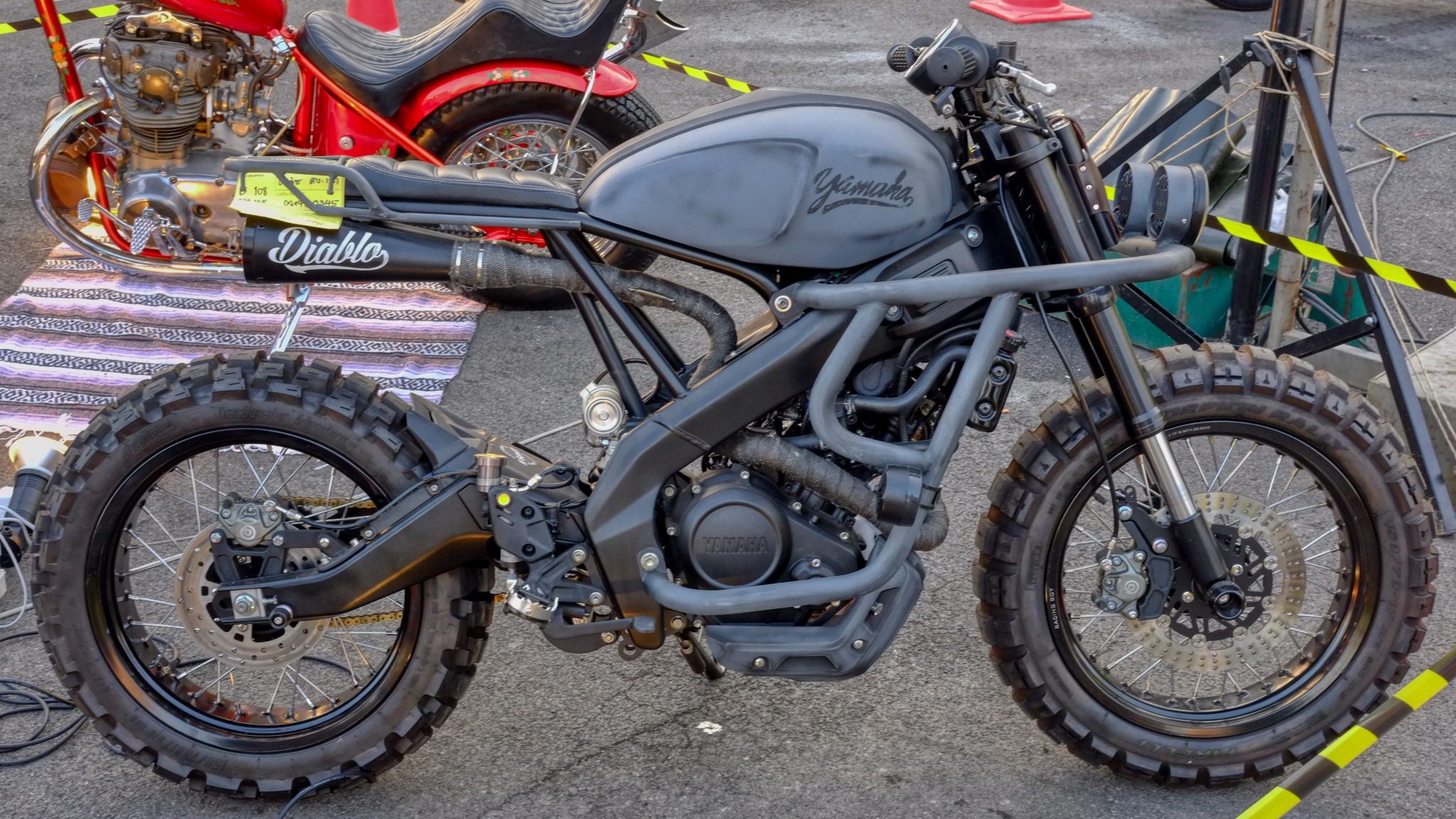 A scrambler bike with roll bars. Nice.
A scrambler bike with roll bars. Nice.
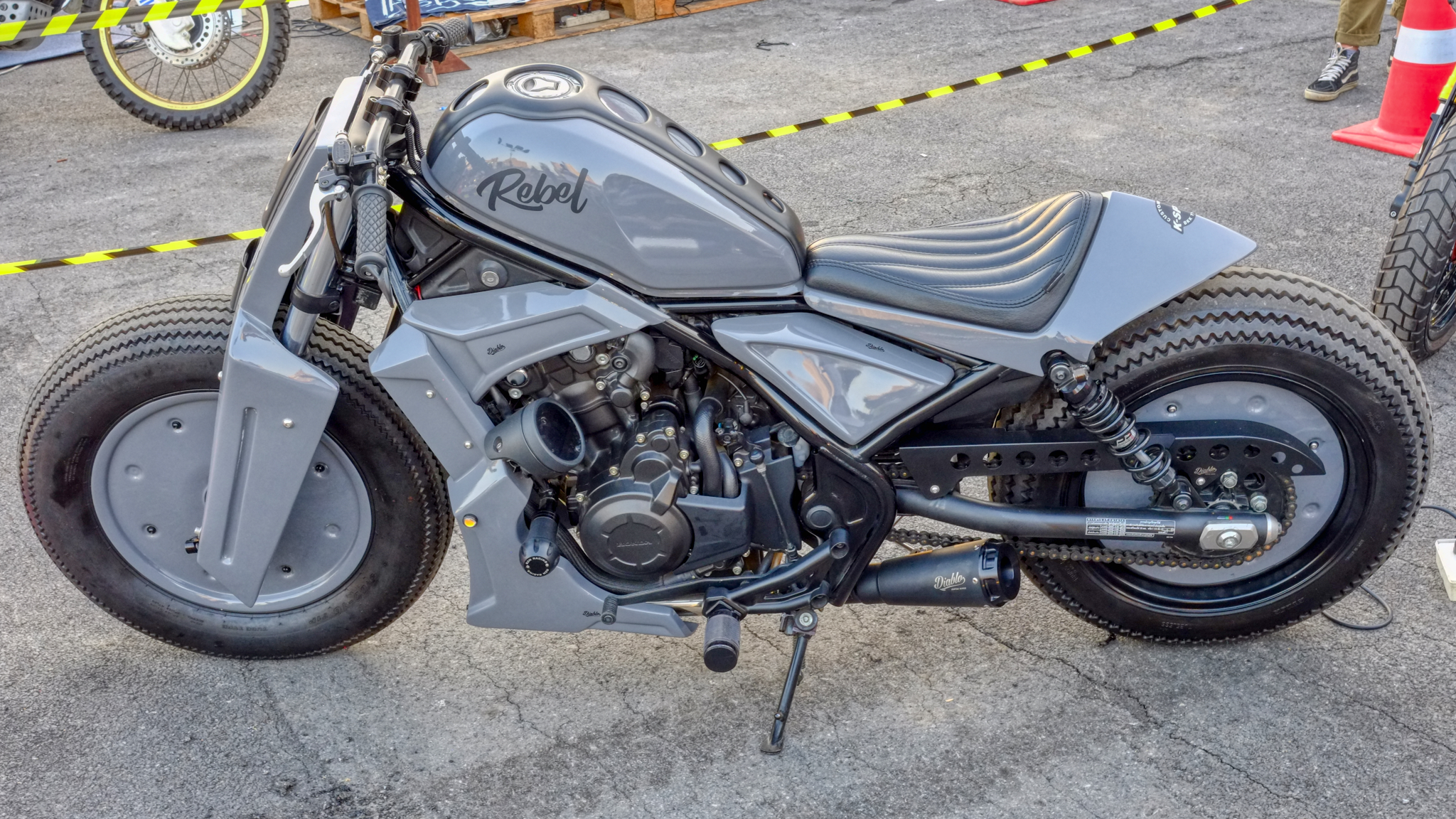 Rebel Indeed! One of my favorites in the show. I don't know what it is about this bike I find so attractive. Clean, modern, machinelike.
Rebel Indeed! One of my favorites in the show. I don't know what it is about this bike I find so attractive. Clean, modern, machinelike.
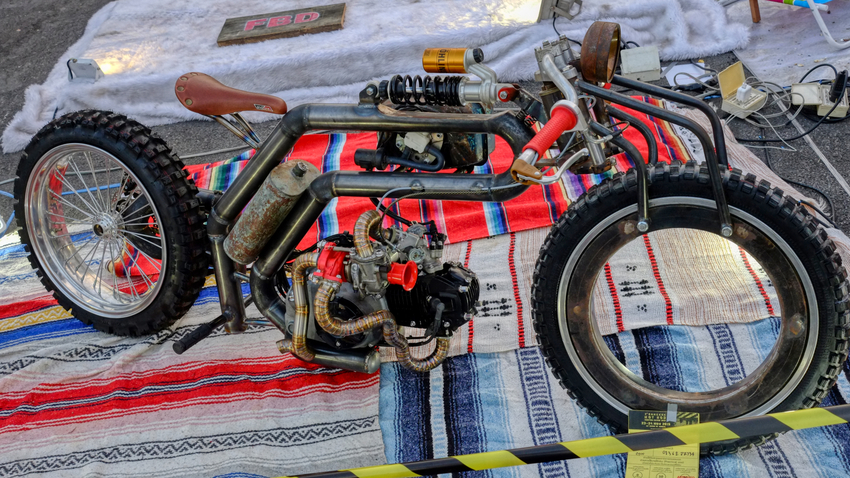 Another small 75cc bike demonstrating that you do not need a big Harley to express your ingenuity and creativity. This one is 'under construction' . . . but look at the innovative solutions and engineering magic . . . and just plain FUN in this one!
Another small 75cc bike demonstrating that you do not need a big Harley to express your ingenuity and creativity. This one is 'under construction' . . . but look at the innovative solutions and engineering magic . . . and just plain FUN in this one!
 The event started just before sunset on a warm, but not too hot late afternoon in Bangkok. As night fell, more people came, and the lights were turned on creating a very different mood. This is the last bike for now . . . .
The event started just before sunset on a warm, but not too hot late afternoon in Bangkok. As night fell, more people came, and the lights were turned on creating a very different mood. This is the last bike for now . . . .
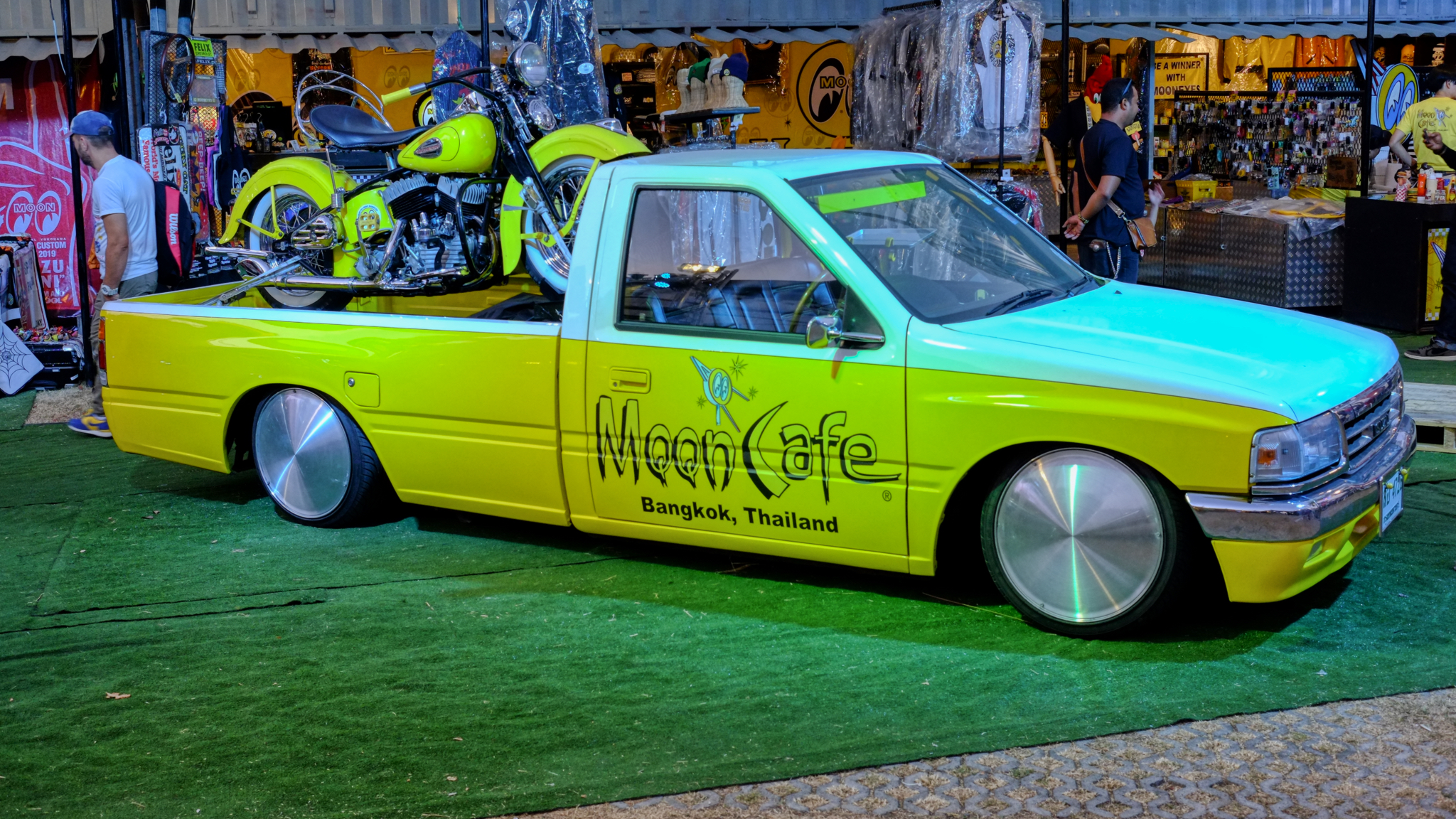 Part of a Moon Racing Equipment pop-up shop at the show.
Part of a Moon Racing Equipment pop-up shop at the show.
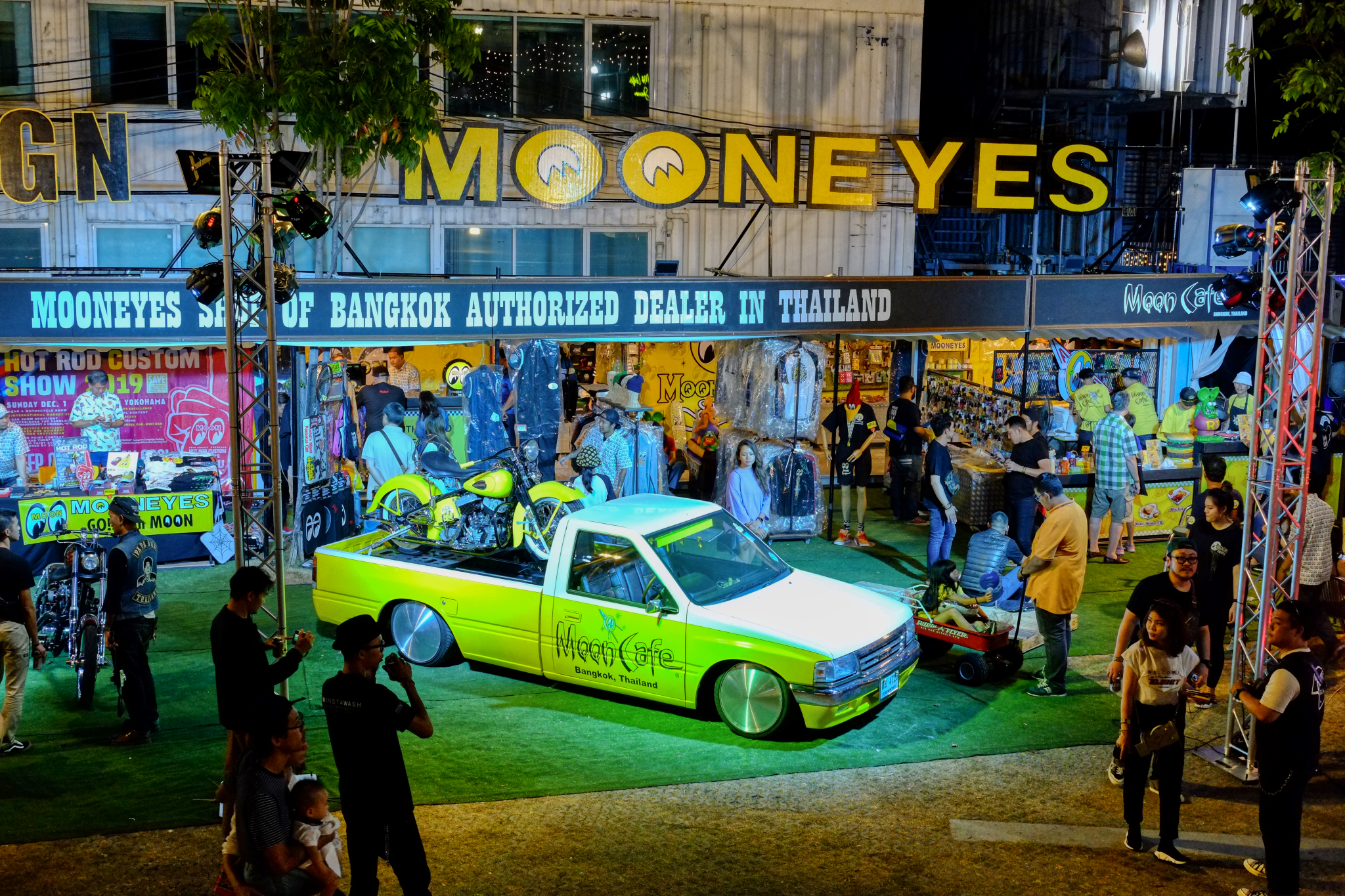 Odd as it may seem, there is a Moon Racing Equipment dealer in Bangkok. This was a very nice display . . . I bought a couple of decals here.
Odd as it may seem, there is a Moon Racing Equipment dealer in Bangkok. This was a very nice display . . . I bought a couple of decals here.
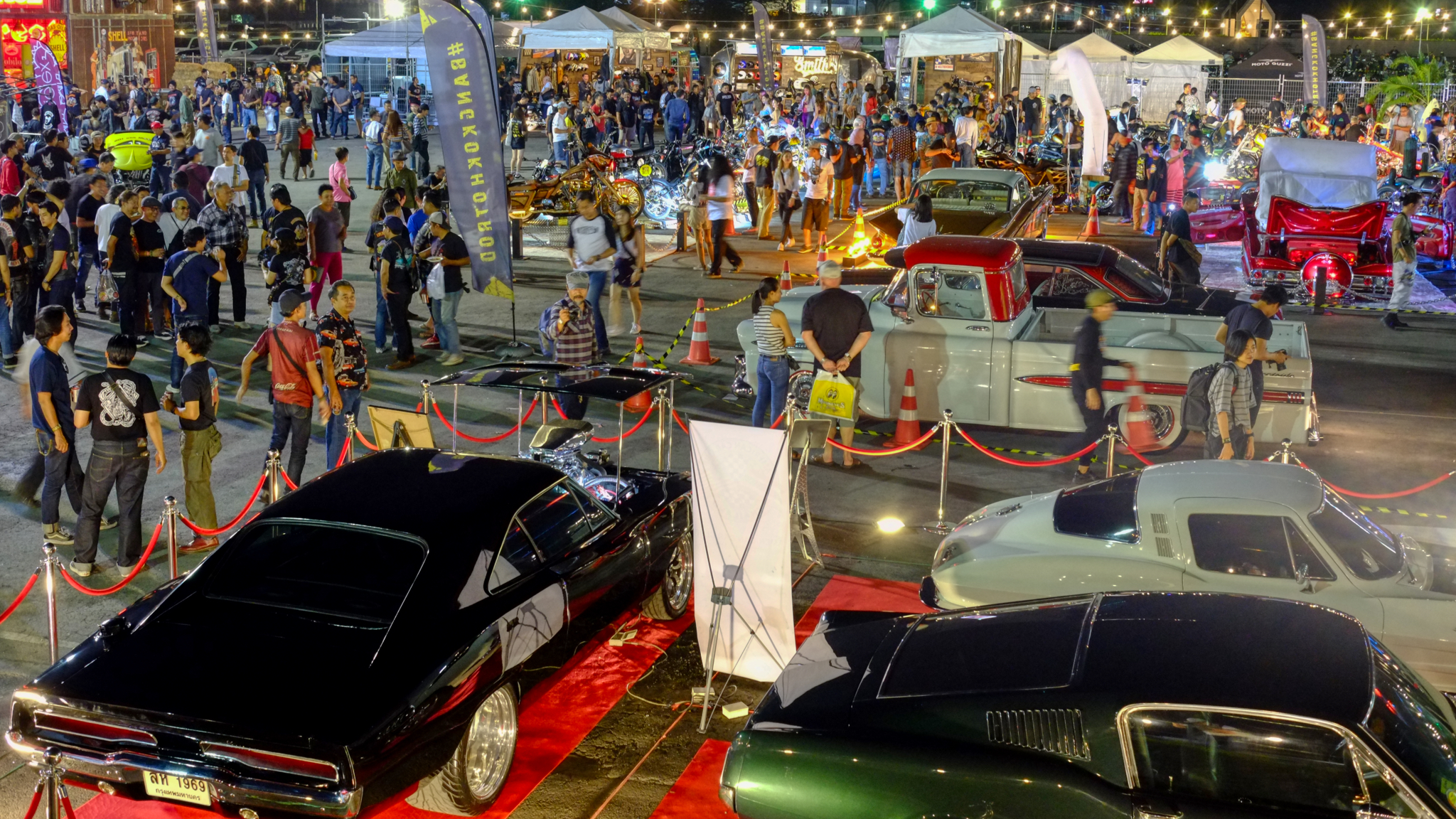 When night fell my friends and I climbed up on some containers for some wide shots of the show. Lots of people attended after the sun set. Nice old '58 Chevy pick-up.
When night fell my friends and I climbed up on some containers for some wide shots of the show. Lots of people attended after the sun set. Nice old '58 Chevy pick-up.
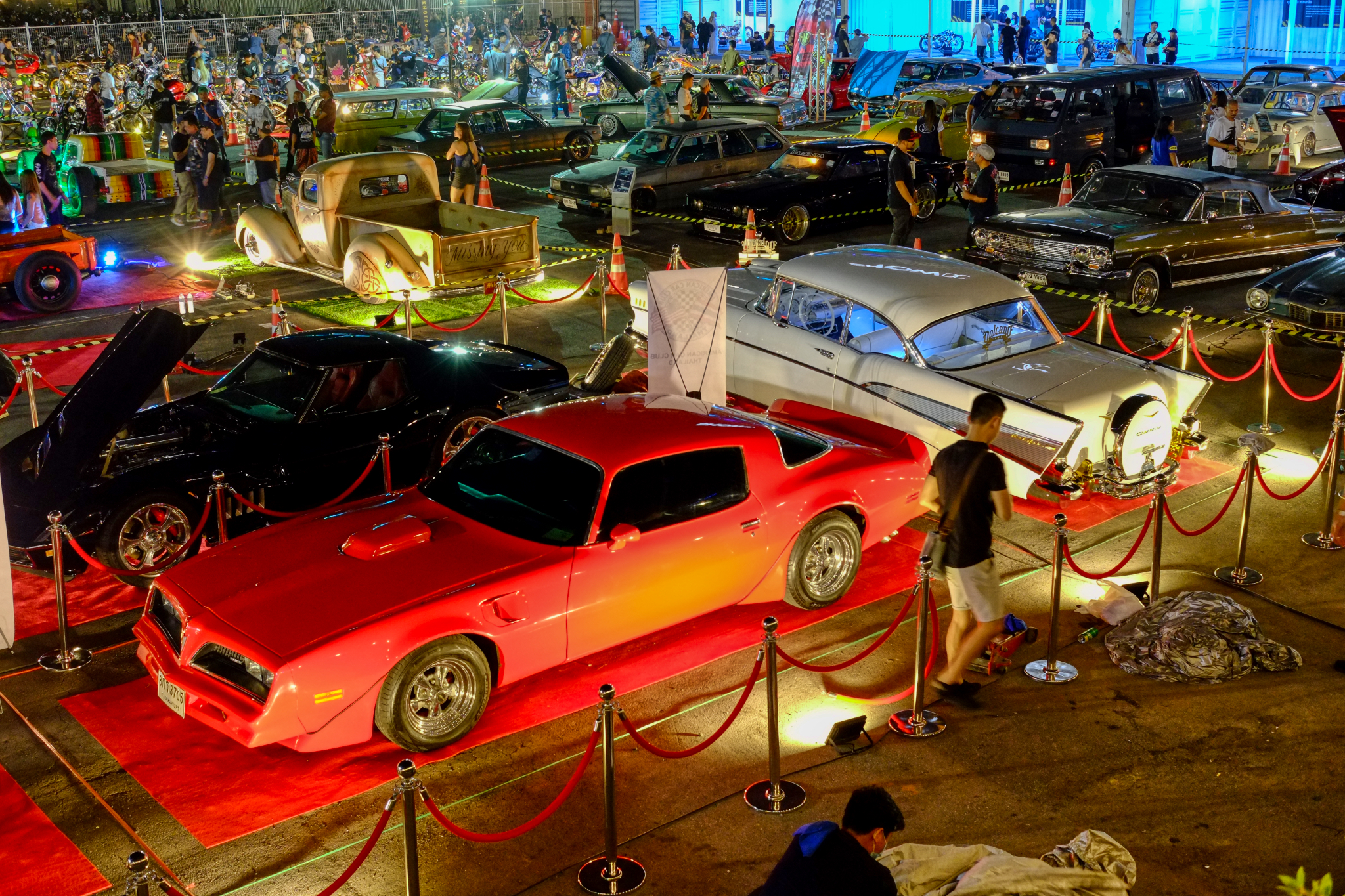 It's hard to believe your own eyes! Bangkok, Thailand! Very cool red Trans Am.
It's hard to believe your own eyes! Bangkok, Thailand! Very cool red Trans Am.
 So many fantastic hot rods in one place. The show was a big success, according to the promoters.
So many fantastic hot rods in one place. The show was a big success, according to the promoters.
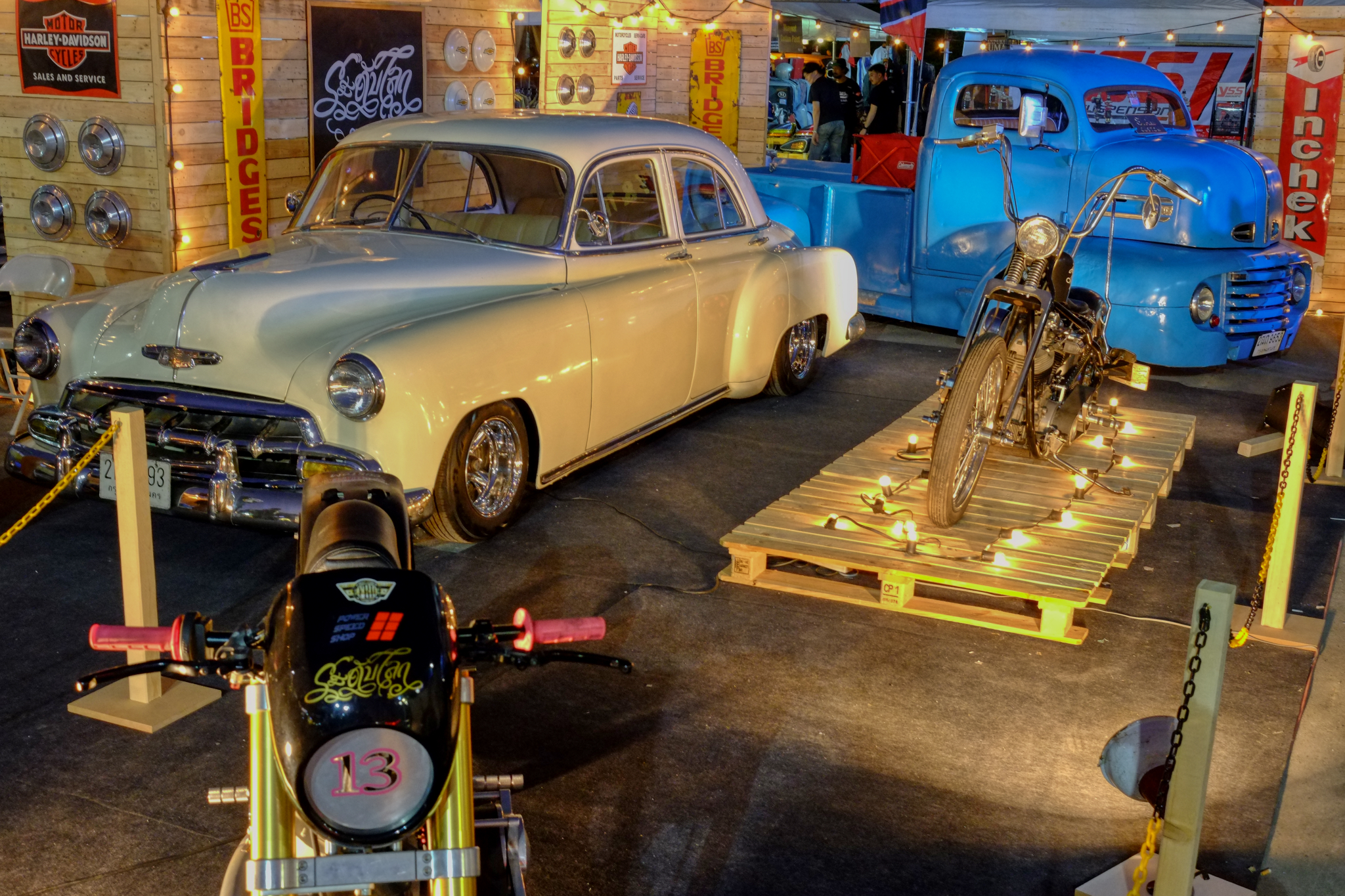 There were many nice displays, like this one, all round the show grounds. Nice early 50s Chevy and an even older CEO truck.
There were many nice displays, like this one, all round the show grounds. Nice early 50s Chevy and an even older CEO truck.
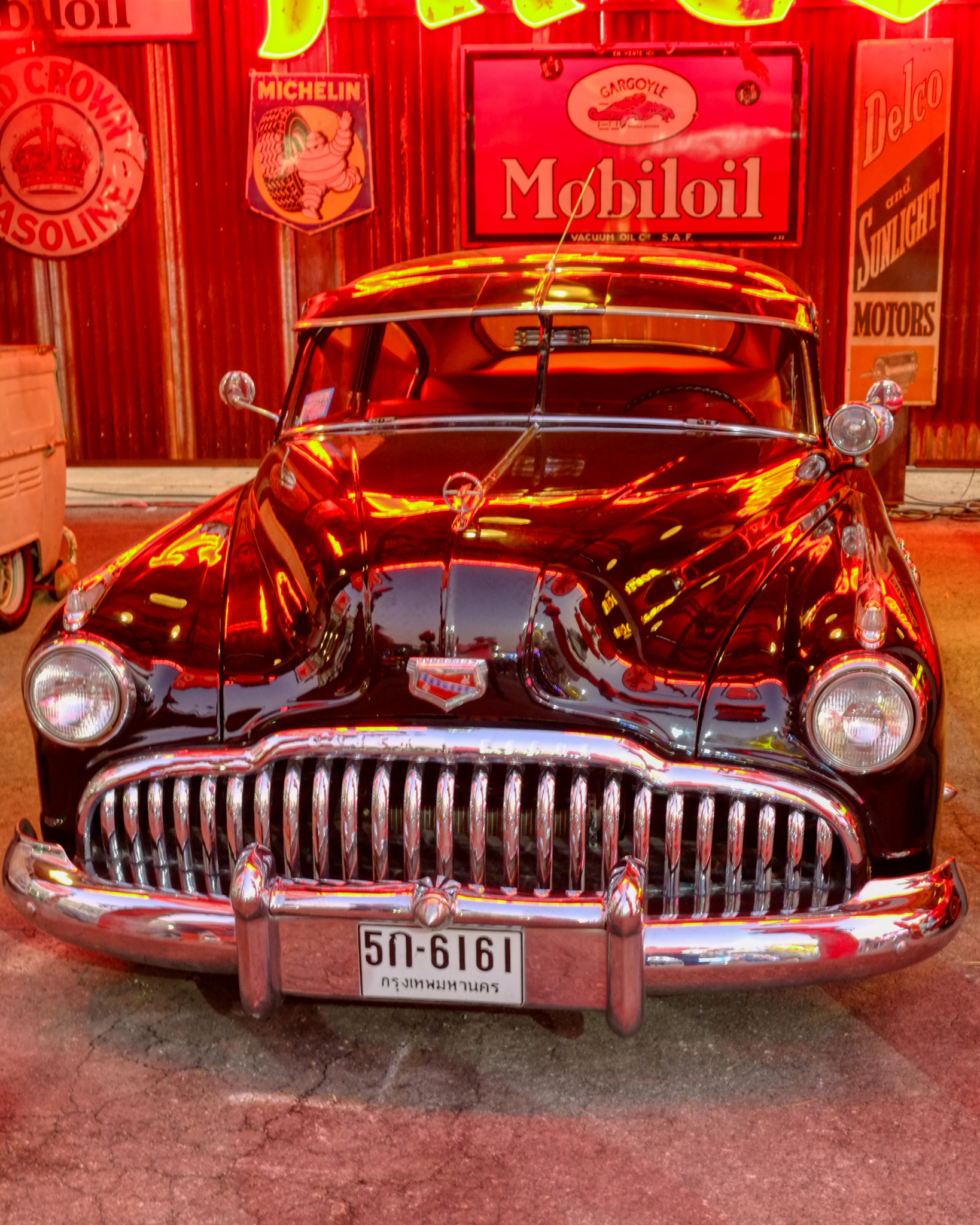 The promoters even built a 50s-style garage to display some of the hot rods, like this 50s Buick. Beautiful. I had a great time at the Bangkok Hot Rod Show and am looking forward to going again next year . . . to see the Thai artistry and creativity.
The promoters even built a 50s-style garage to display some of the hot rods, like this 50s Buick. Beautiful. I had a great time at the Bangkok Hot Rod Show and am looking forward to going again next year . . . to see the Thai artistry and creativity.
Visitors From Abroad Day Trip: Pak Khlong Flower Market
 Tuesday, March 31, 2020 at 5:45PM
Tuesday, March 31, 2020 at 5:45PM 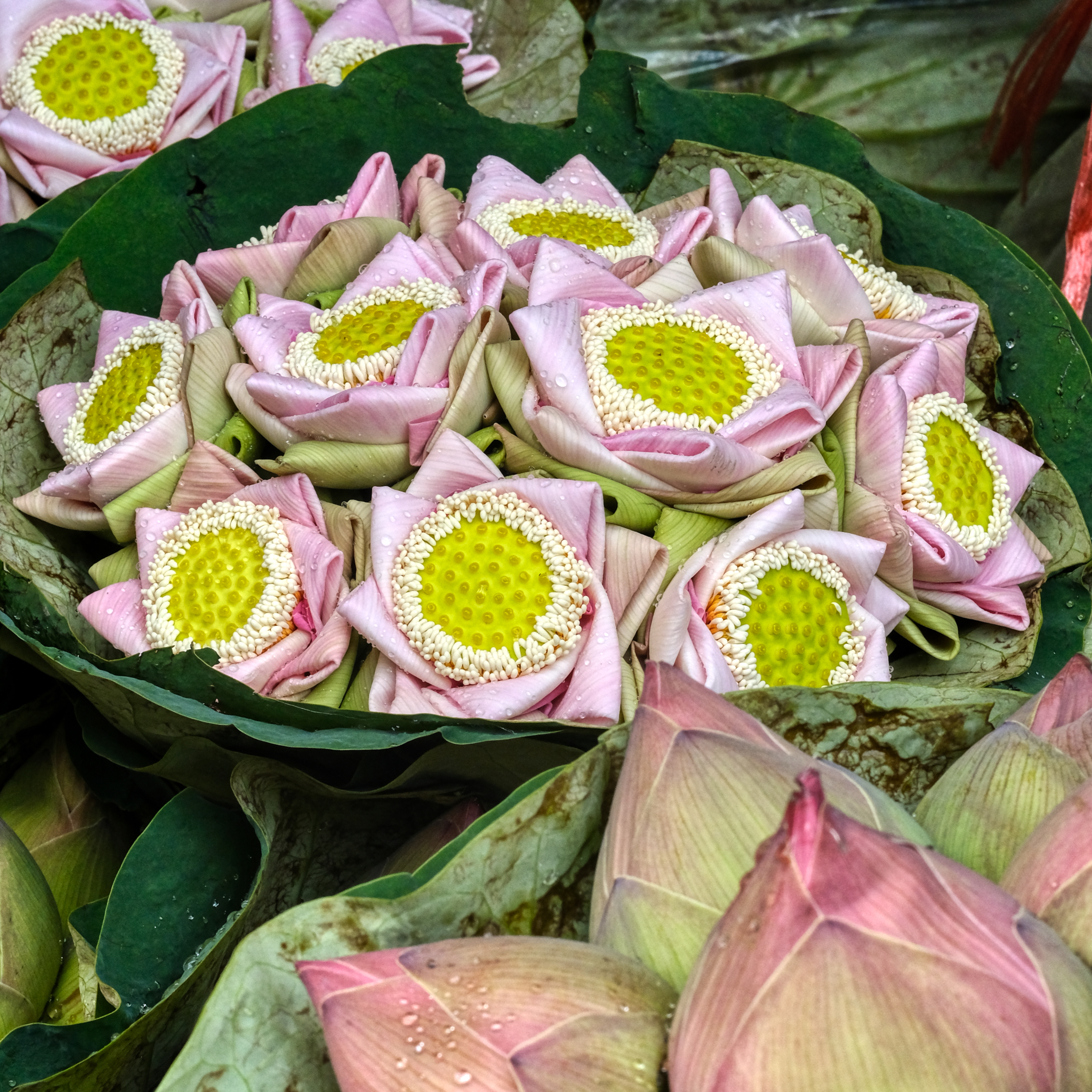 Pak Khlong Talat is Bangkok's great flower market . . . and one of the largest flower markets in the world.
Pak Khlong Talat is Bangkok's great flower market . . . and one of the largest flower markets in the world.
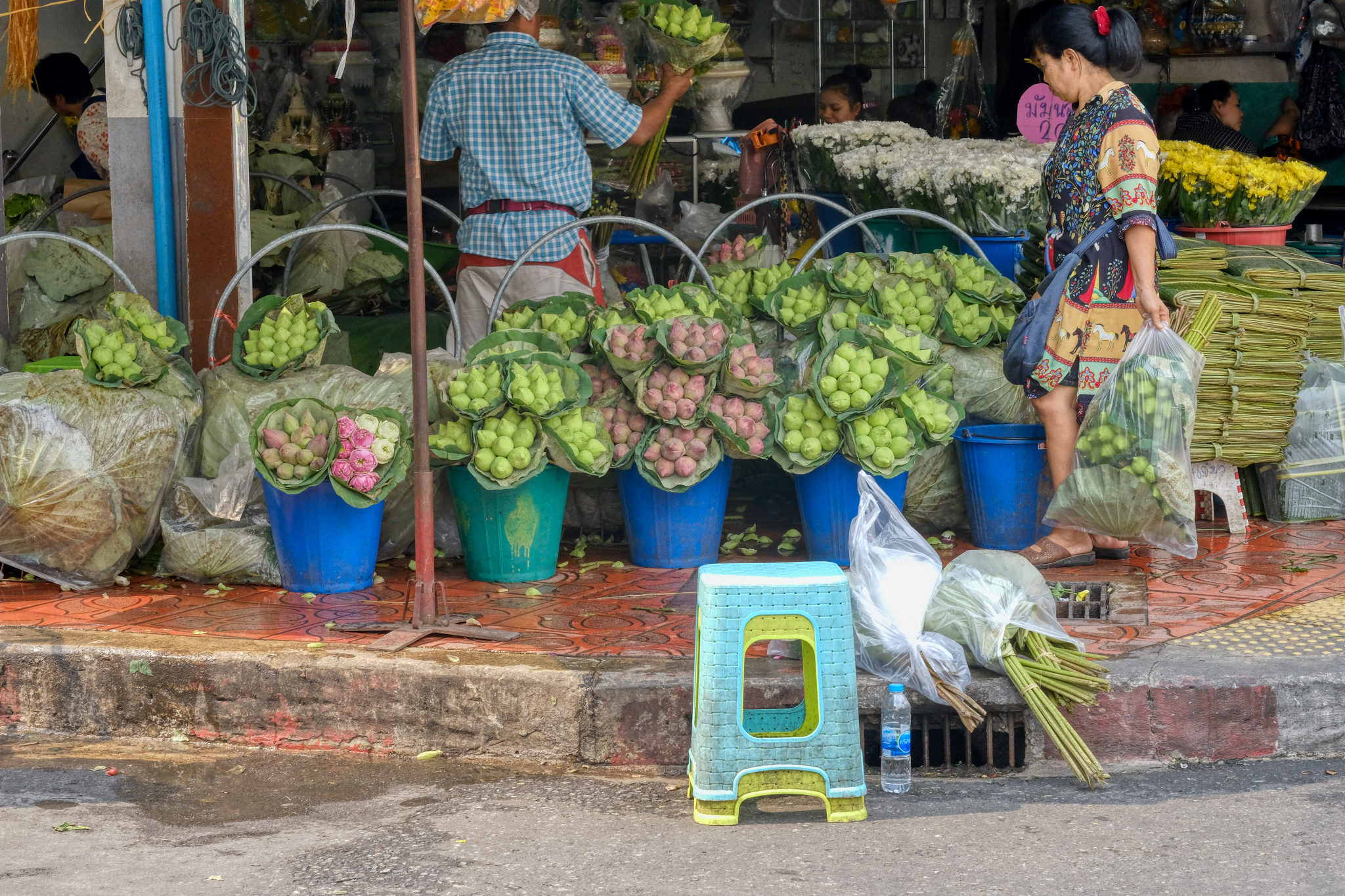 Literally millions of fresh lotus buds and flowers every day pass through this flower market.
Literally millions of fresh lotus buds and flowers every day pass through this flower market.
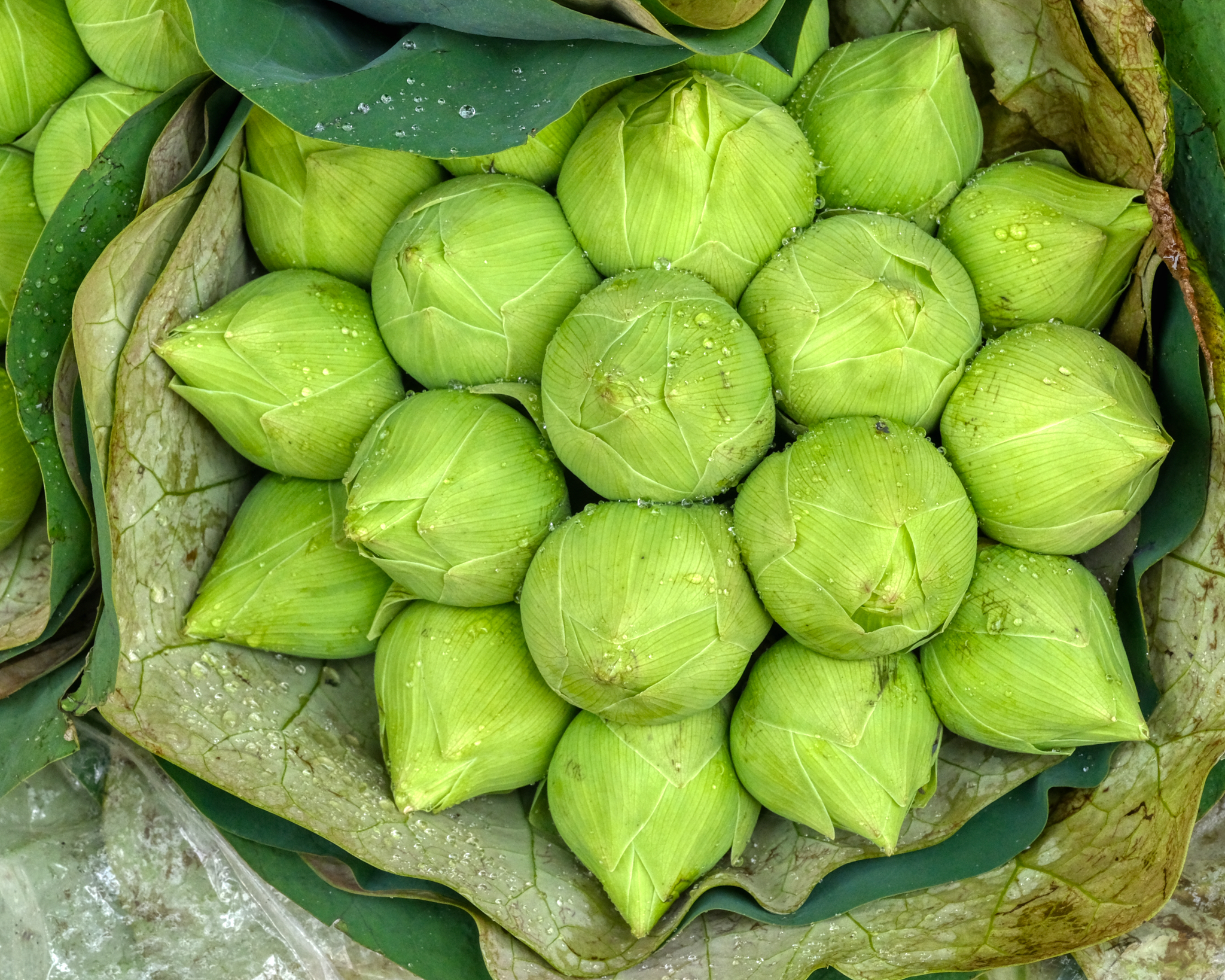 The lotus bud is a powerful symbol in Buddhist thought.
The lotus bud is a powerful symbol in Buddhist thought.
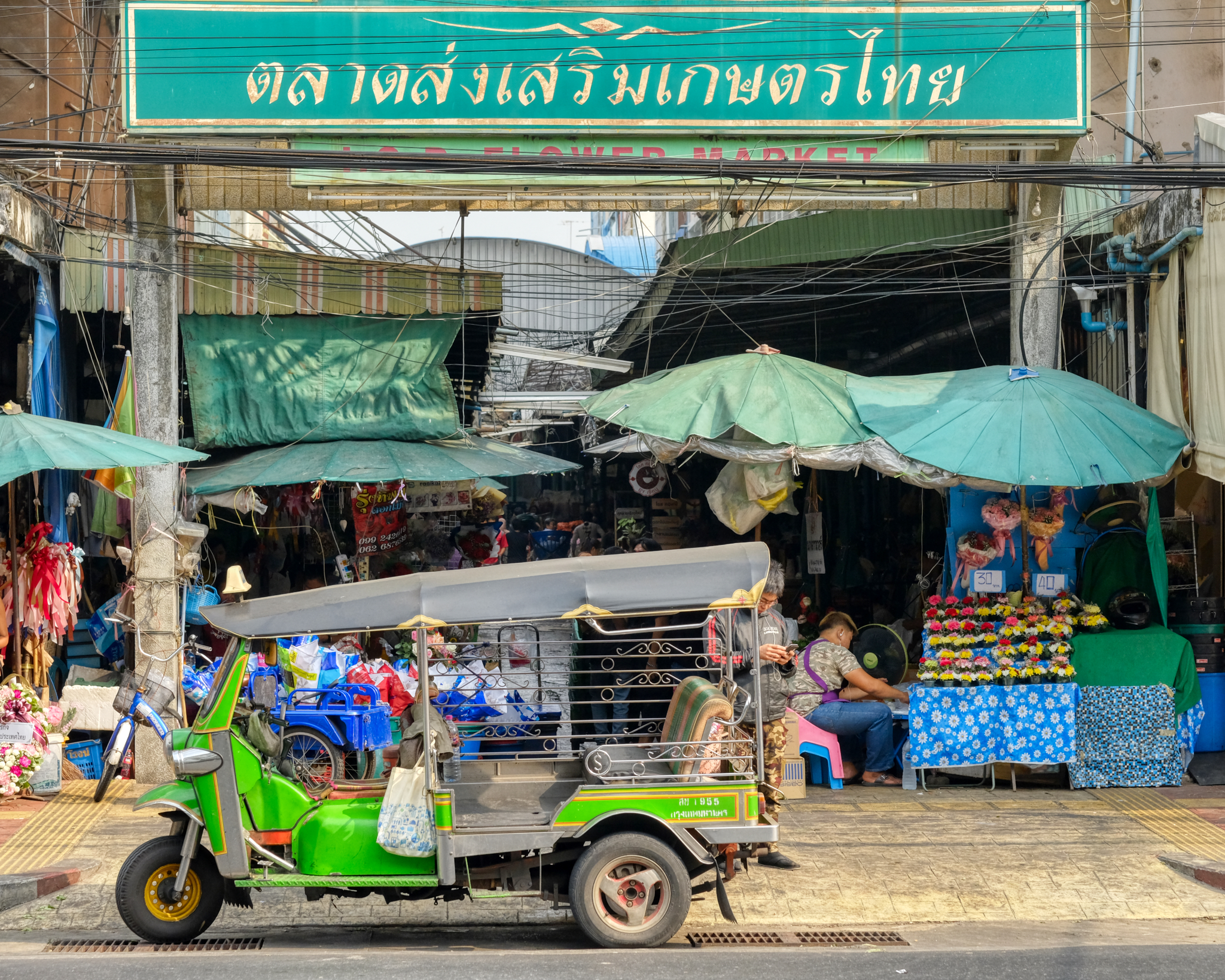 Pak Khlong Talat is a huge flower market with large indoor spaces and narrow alleys all full of flowers . . . it is a wholesale market, so many buyers come every morning and send their purchases back to their shops by tuk-tuk.
Pak Khlong Talat is a huge flower market with large indoor spaces and narrow alleys all full of flowers . . . it is a wholesale market, so many buyers come every morning and send their purchases back to their shops by tuk-tuk.
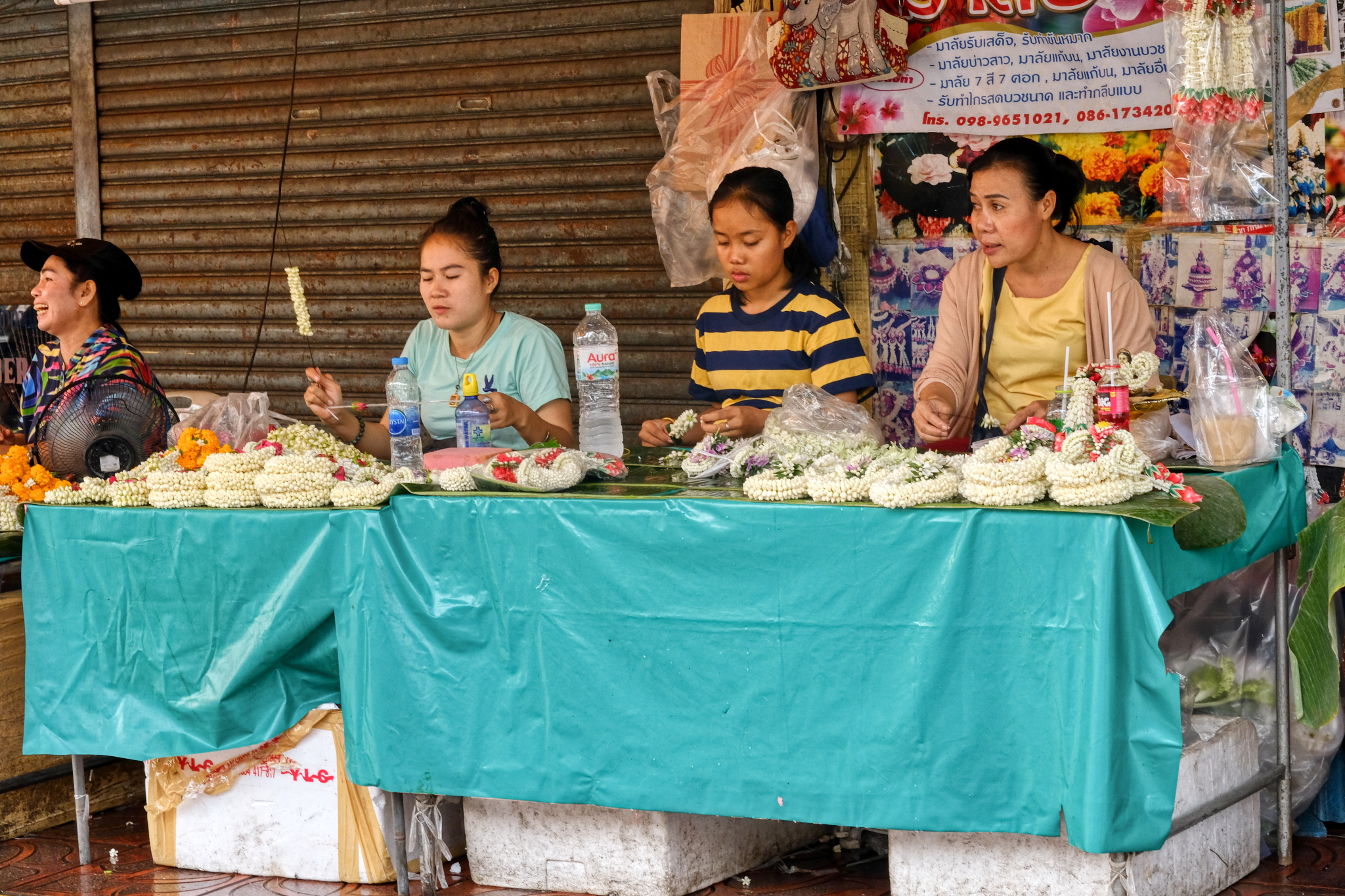 Some buyers come to buy 'raw' flowers for arrangement elsewhere, and some come to buy ready-made arrangements, like these aromatic jasmine bud garlands (used in Buddhist blessings). Imagine how wonderful these women smell after a days' work!!!
Some buyers come to buy 'raw' flowers for arrangement elsewhere, and some come to buy ready-made arrangements, like these aromatic jasmine bud garlands (used in Buddhist blessings). Imagine how wonderful these women smell after a days' work!!!
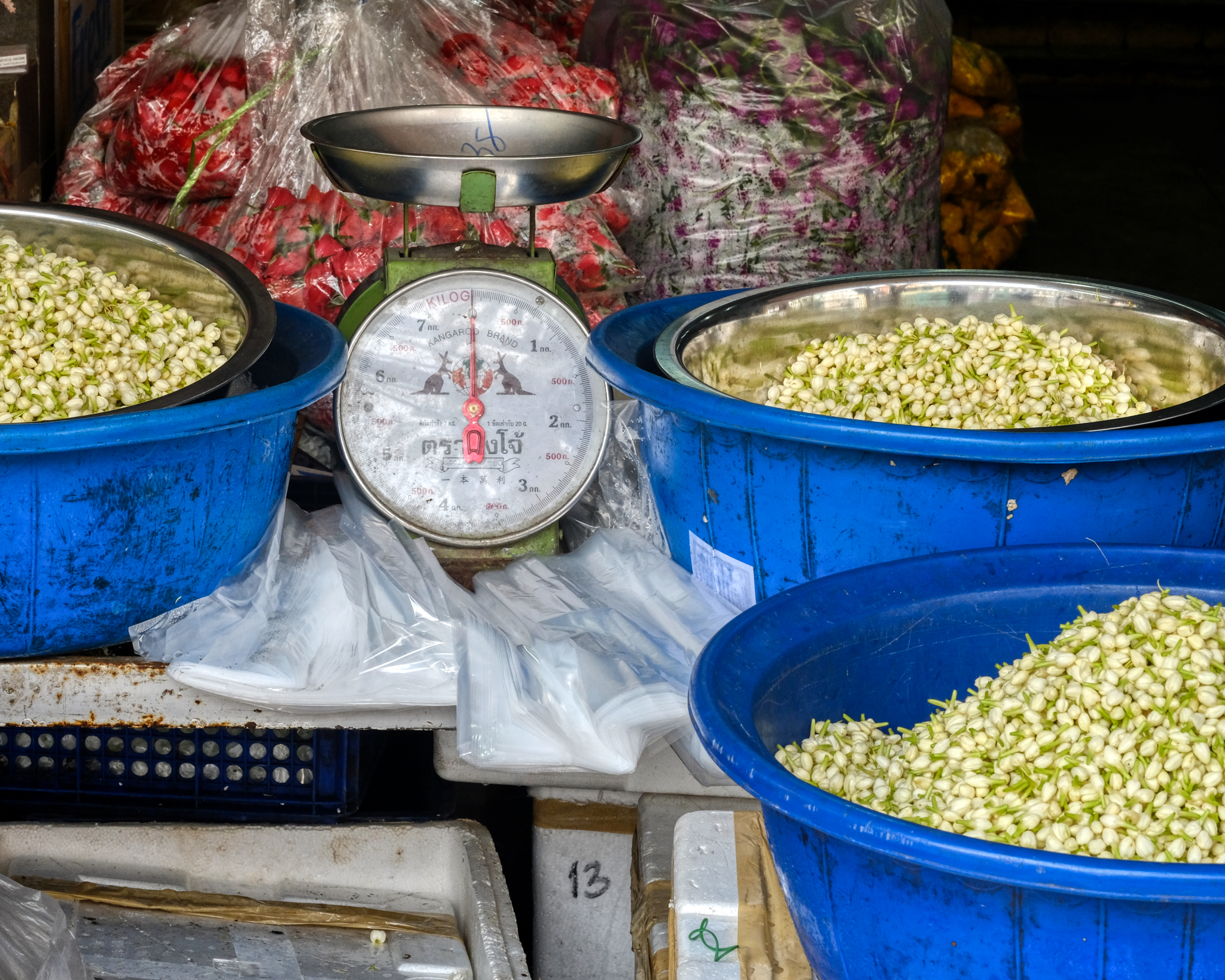 Fragrant jasmine buds being weighed.
Fragrant jasmine buds being weighed.
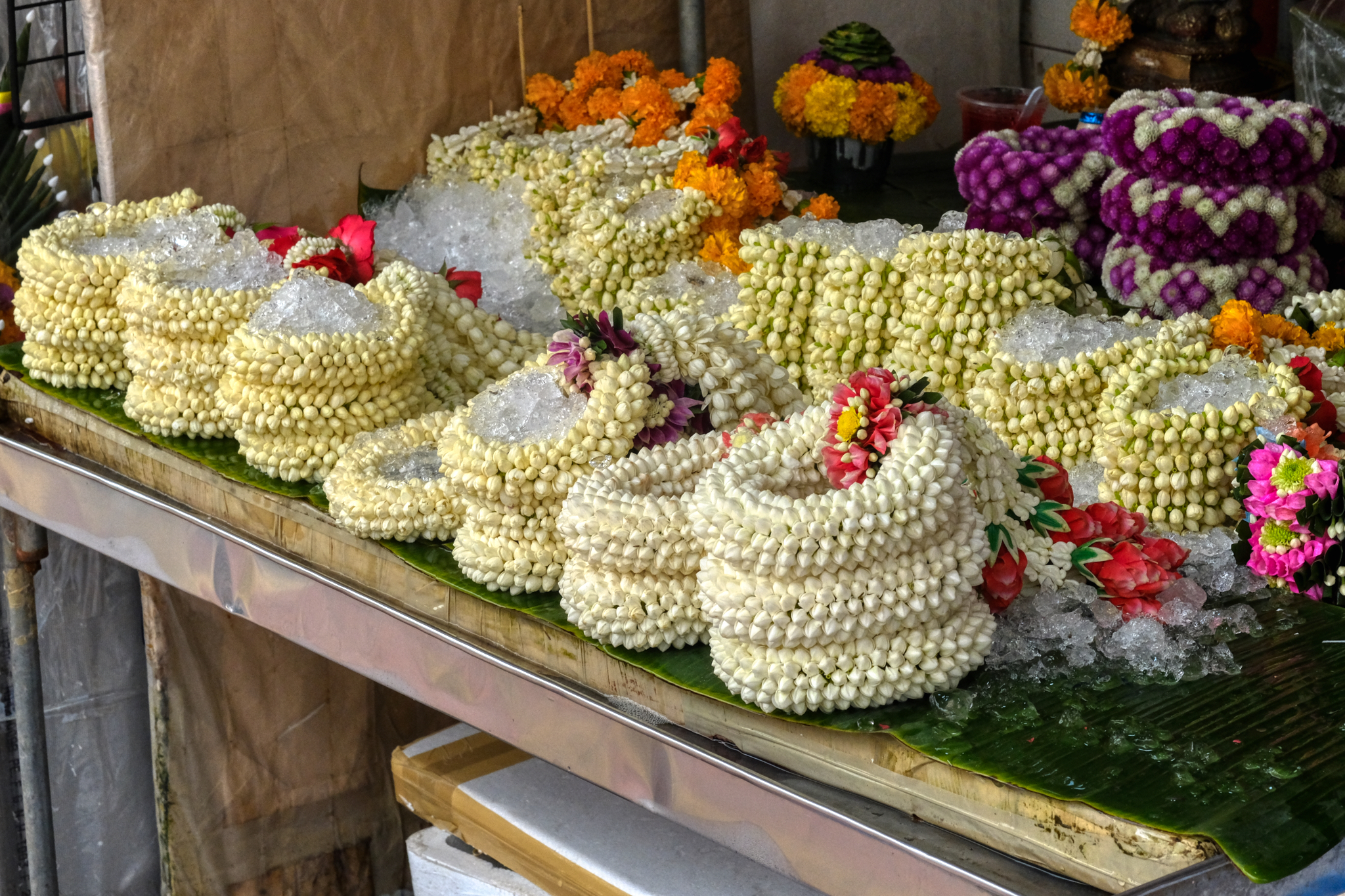 Beautifully made jasmine garlands on ice, ready for sales.
Beautifully made jasmine garlands on ice, ready for sales.
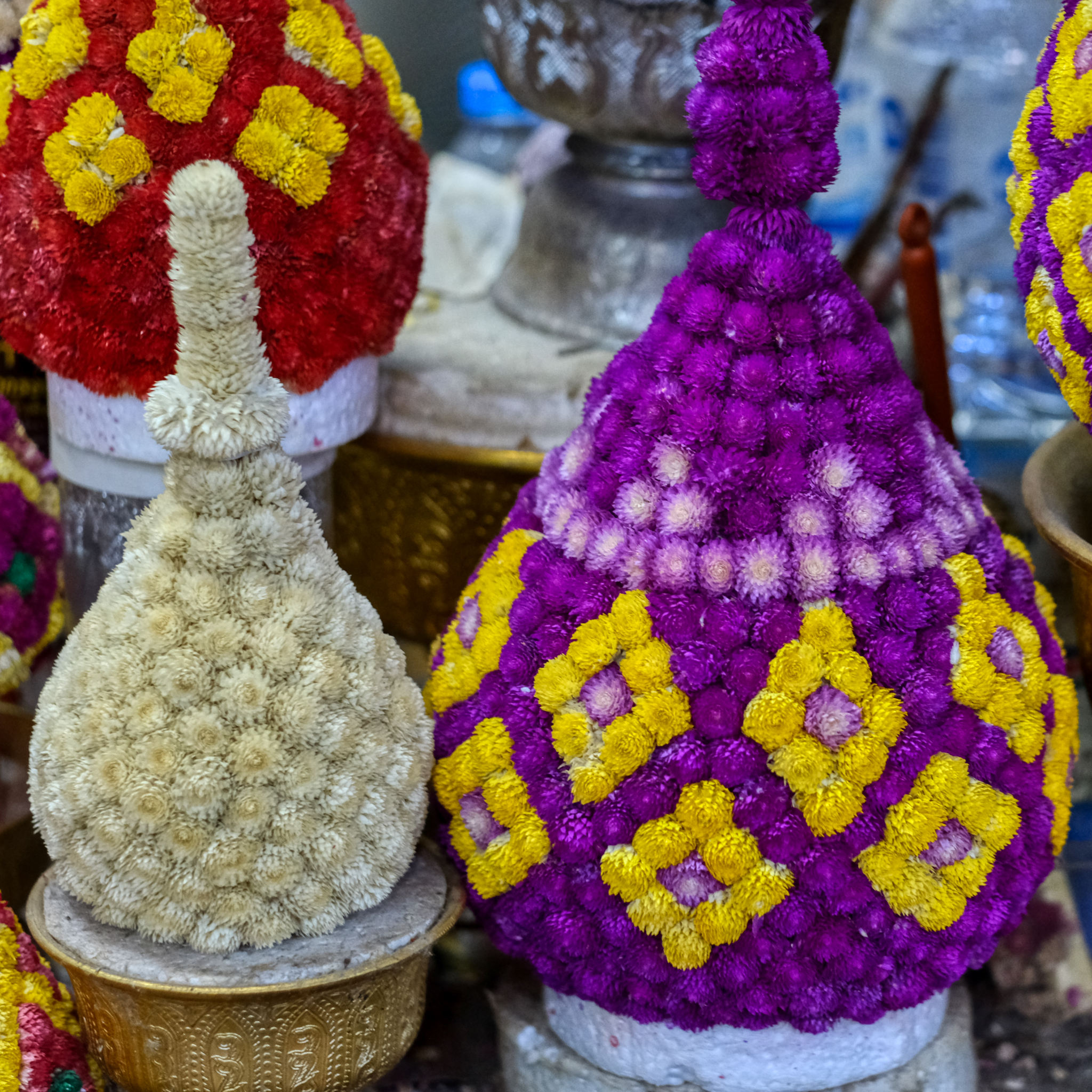 Many kinds and styles of Buddhist votive flower arrangements were being made everywhere.
Many kinds and styles of Buddhist votive flower arrangements were being made everywhere.
 The market has more than flowers for sale . . . fruit for the hundreds, if not thousands of flower market workers.
The market has more than flowers for sale . . . fruit for the hundreds, if not thousands of flower market workers.
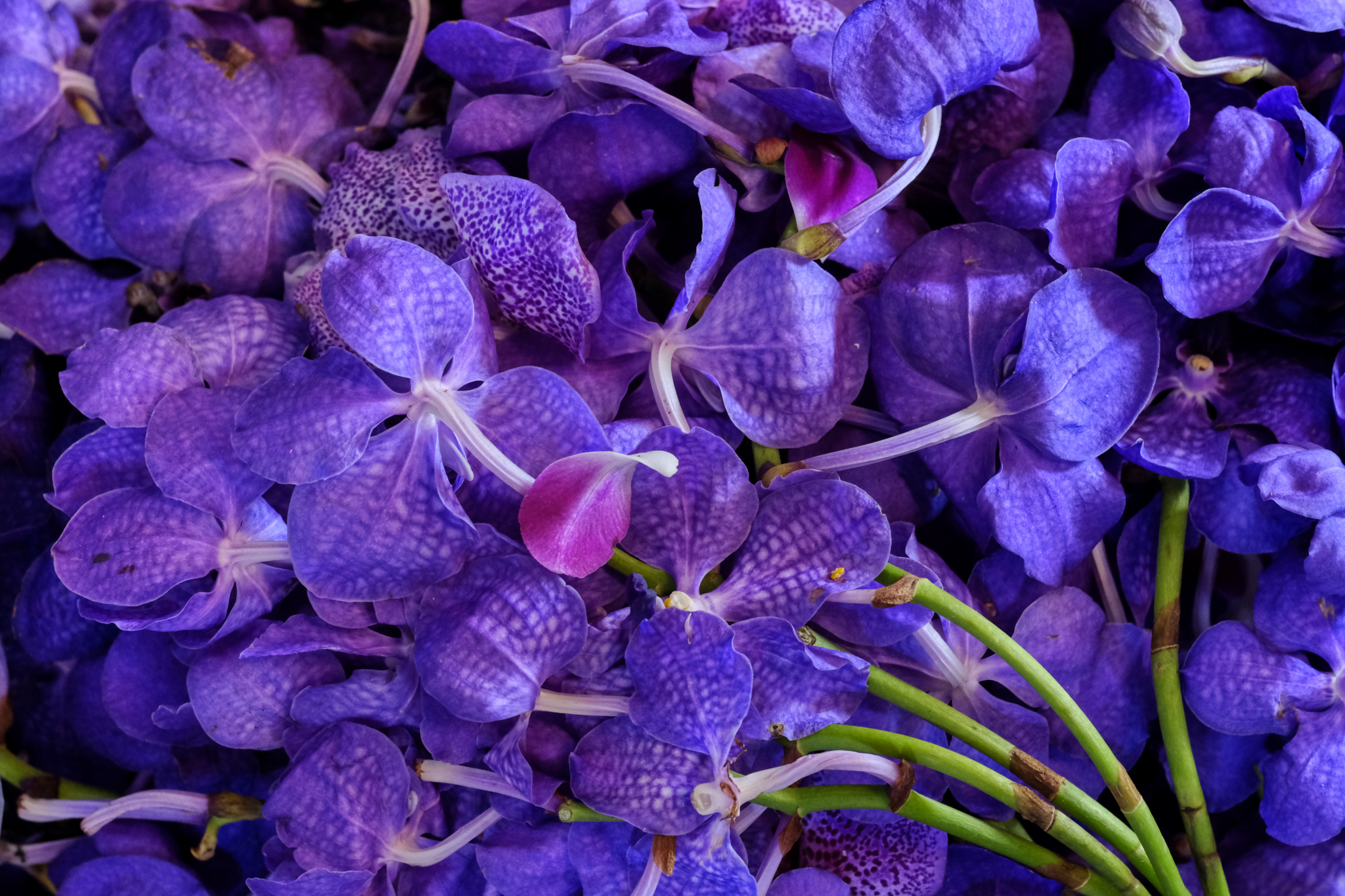 But, of course, it is the flowers that amaze a visitor to the flower market. Orchids everywhere!
But, of course, it is the flowers that amaze a visitor to the flower market. Orchids everywhere!
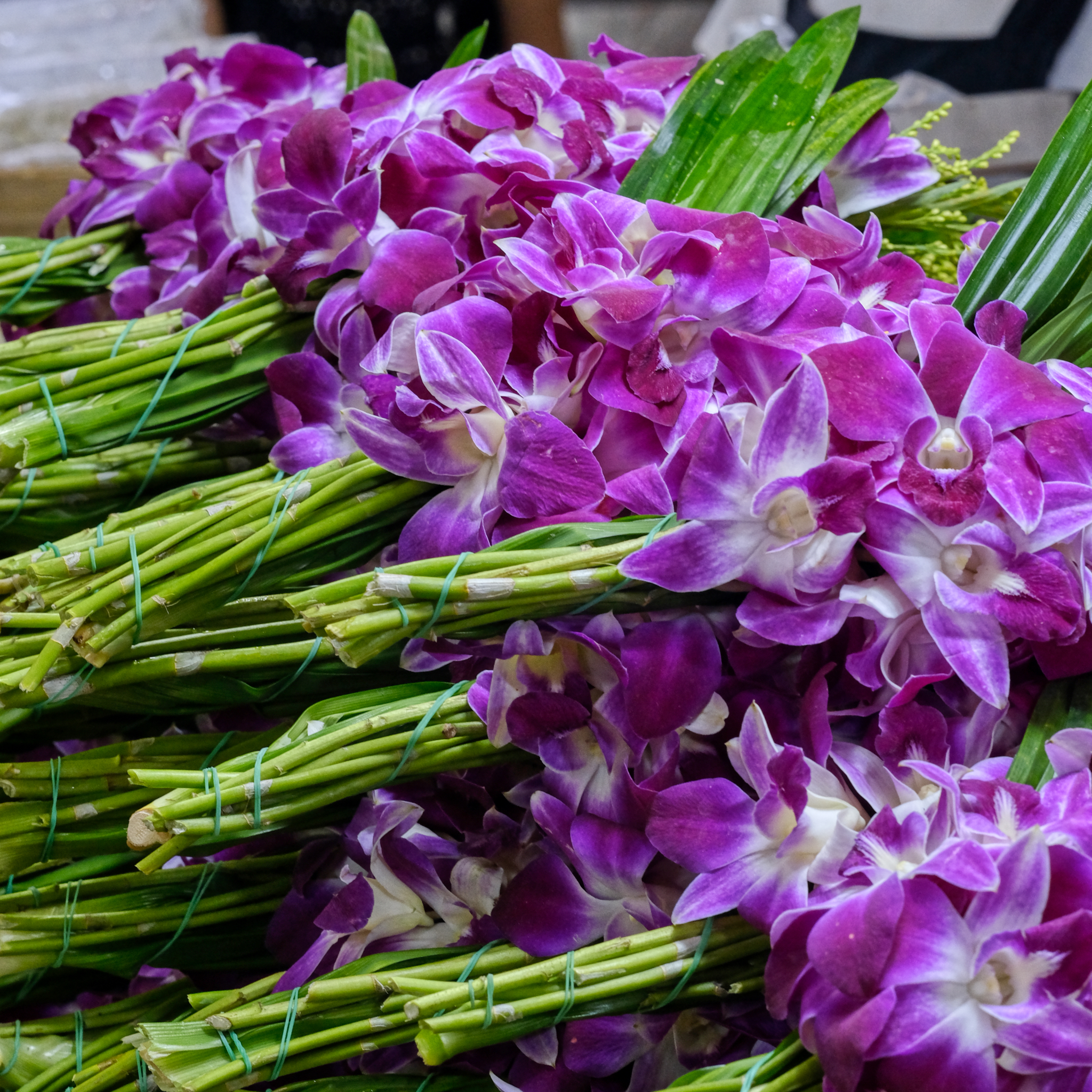 Thailand's hot and humid climate means that orchids grow outside all year long. Just nail one on a tree and it grows!
Thailand's hot and humid climate means that orchids grow outside all year long. Just nail one on a tree and it grows!
 Orchids come in every color of the rainbow . . .
Orchids come in every color of the rainbow . . .
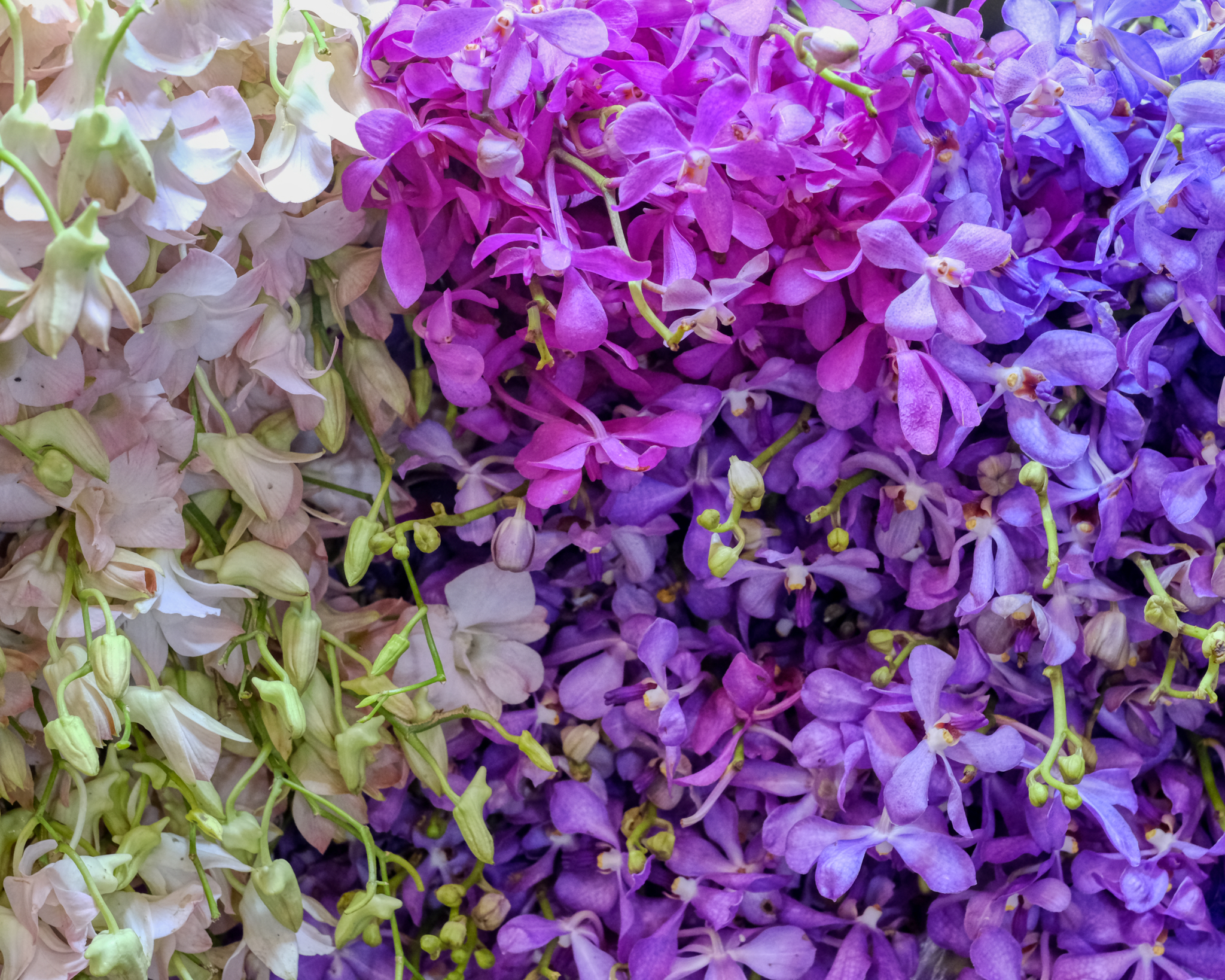 Exquisite orchids.
Exquisite orchids.
 . . . including white orchids.
. . . including white orchids.
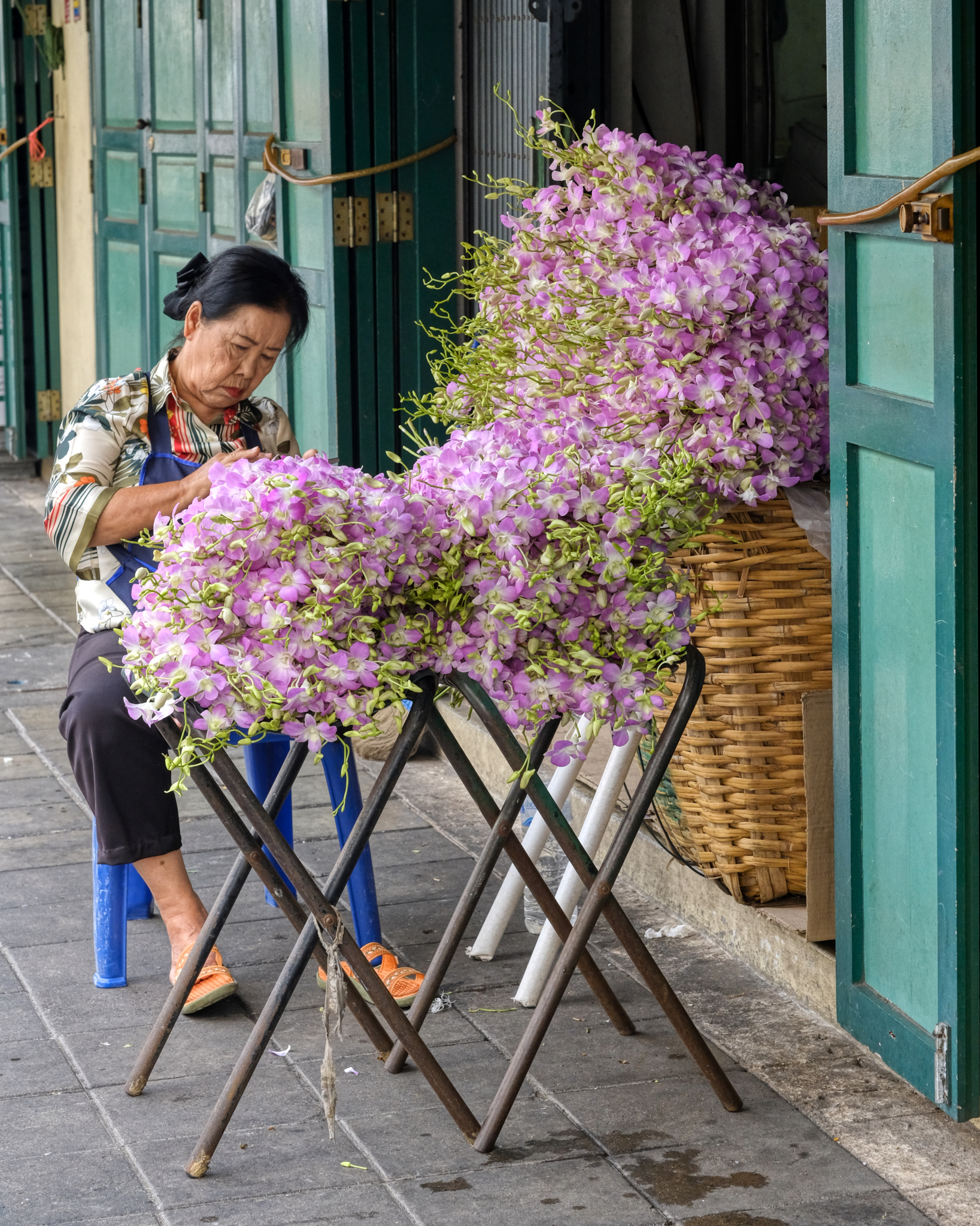 An orchid hawker tending her product.
An orchid hawker tending her product.
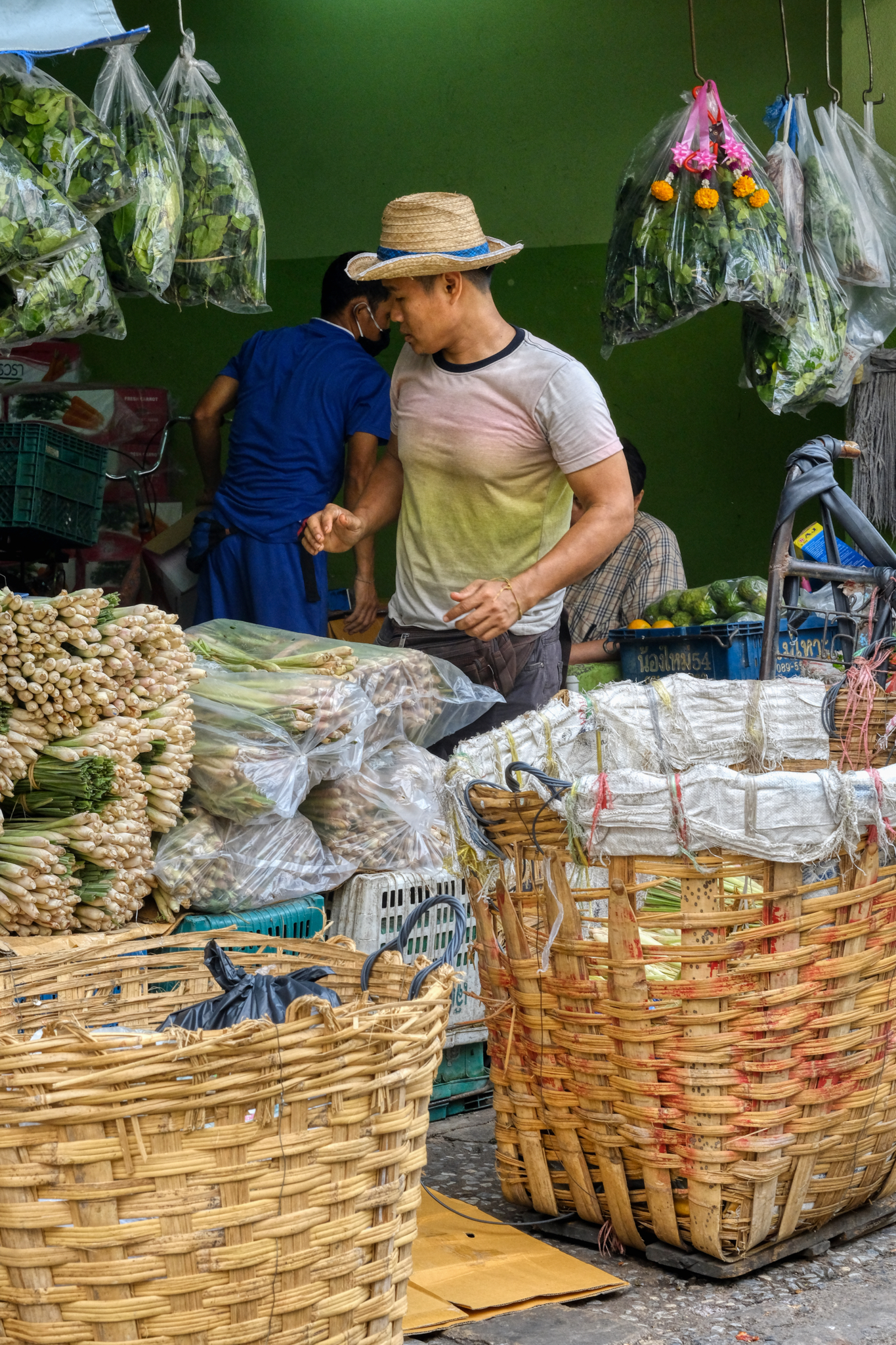 The flower market is also a good place to get people photos.
The flower market is also a good place to get people photos.
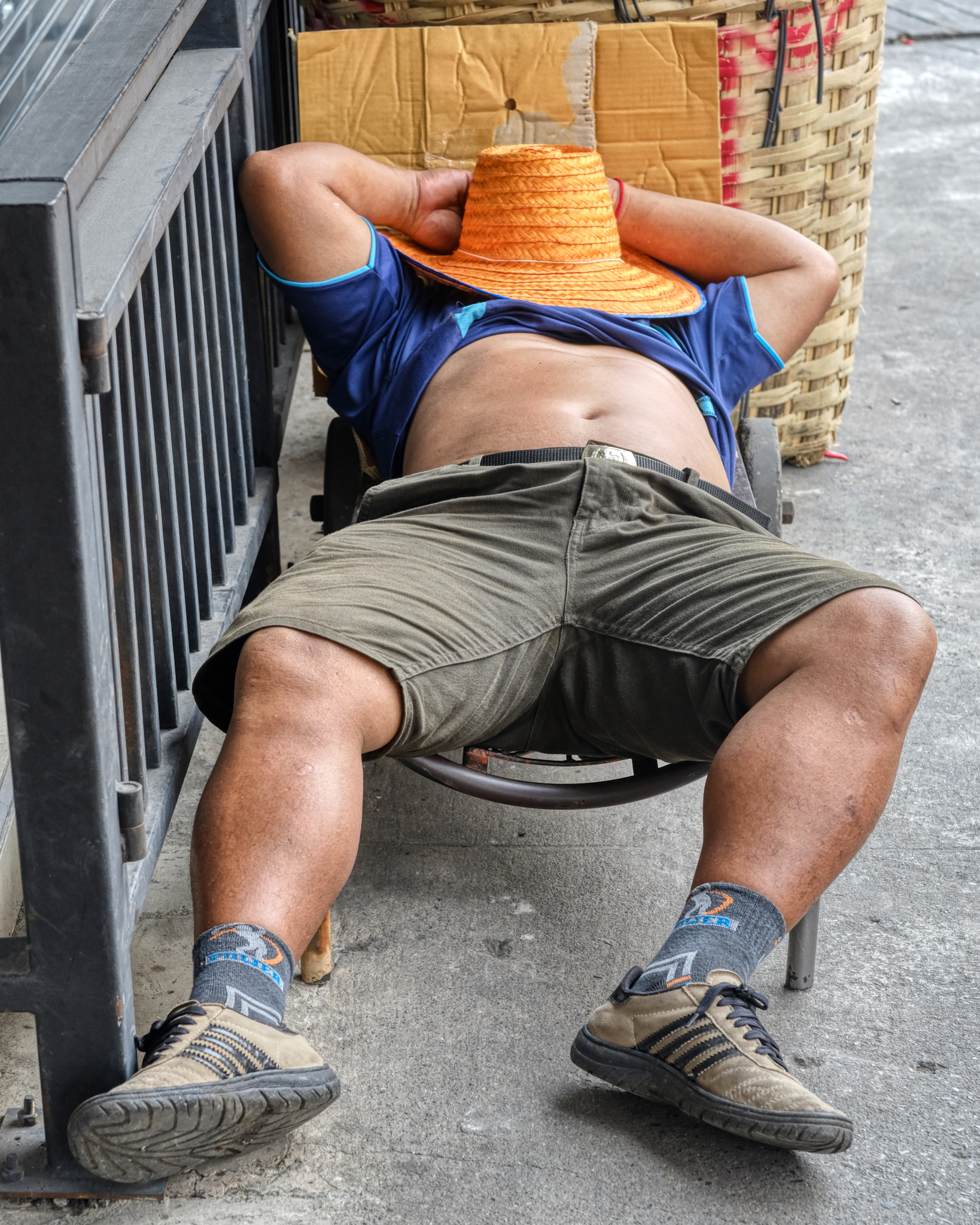 The market opens at 3:00am when the growers begin to bring in their flowers . . . and buyers begin to purchase and ship. This draymen looks tired!
The market opens at 3:00am when the growers begin to bring in their flowers . . . and buyers begin to purchase and ship. This draymen looks tired!
 Hoping for a big sale.
Hoping for a big sale.
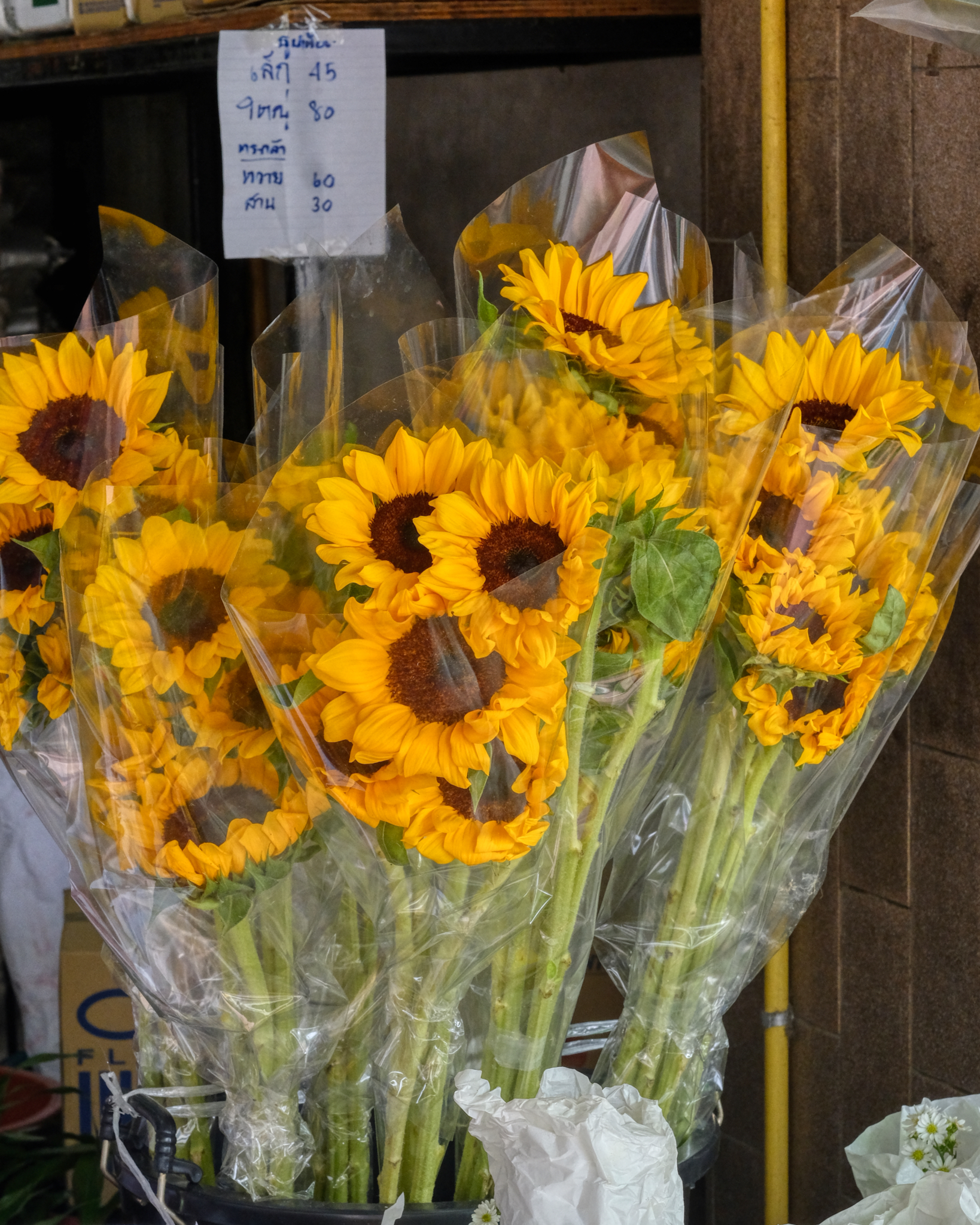 The kinds and varieties of flowers available for sale was staggering! These sunflowers are from Thailand.
The kinds and varieties of flowers available for sale was staggering! These sunflowers are from Thailand.
 Roses, roses, roses . . .
Roses, roses, roses . . .
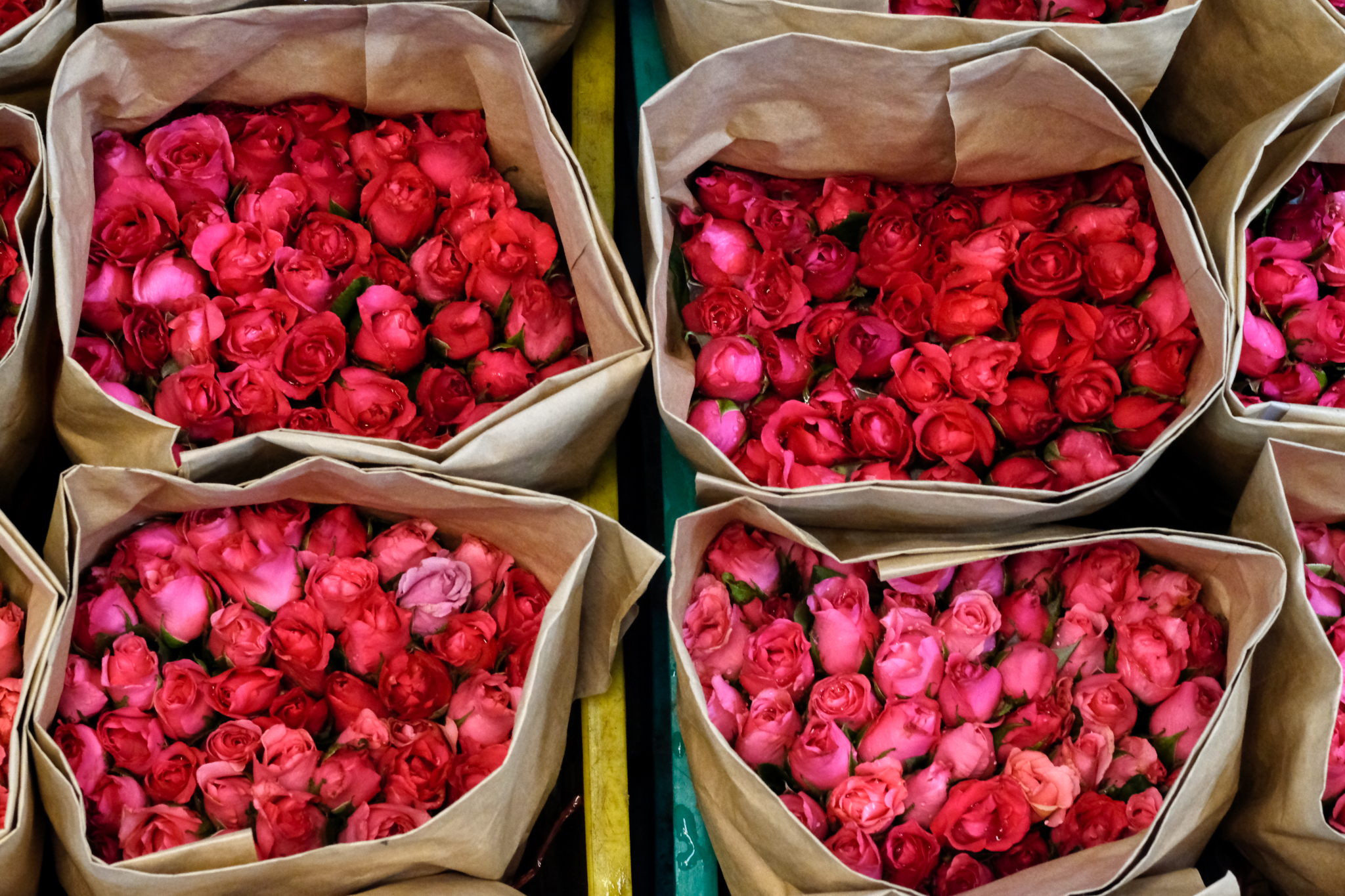 . . . roses, roses, roses . . .
. . . roses, roses, roses . . .
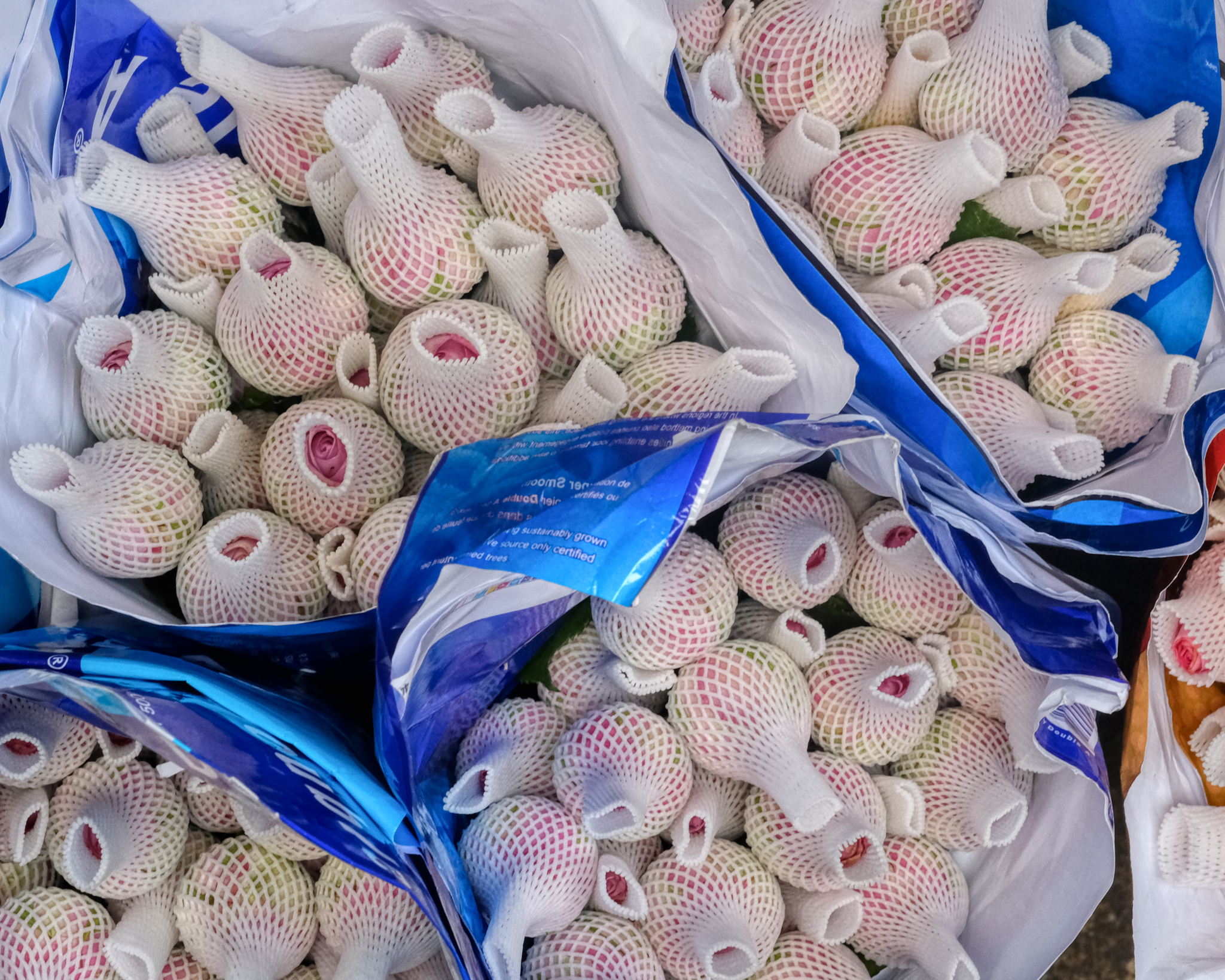 . . . and more roses. These wrapped roses were imported from Europe.
. . . and more roses. These wrapped roses were imported from Europe.
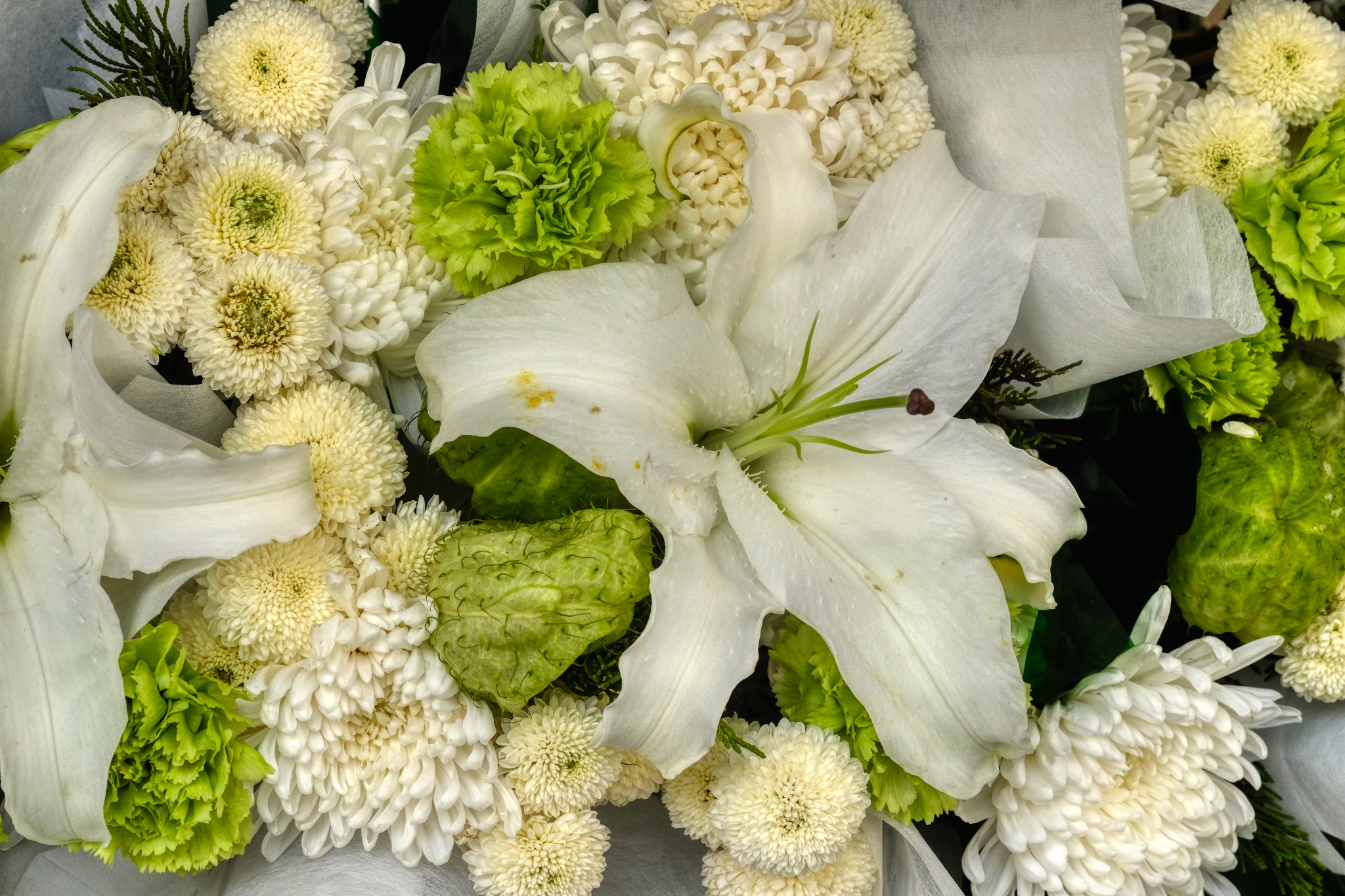 Some flowers were sold as already made arrangements, like this white lily ensemble.
Some flowers were sold as already made arrangements, like this white lily ensemble.
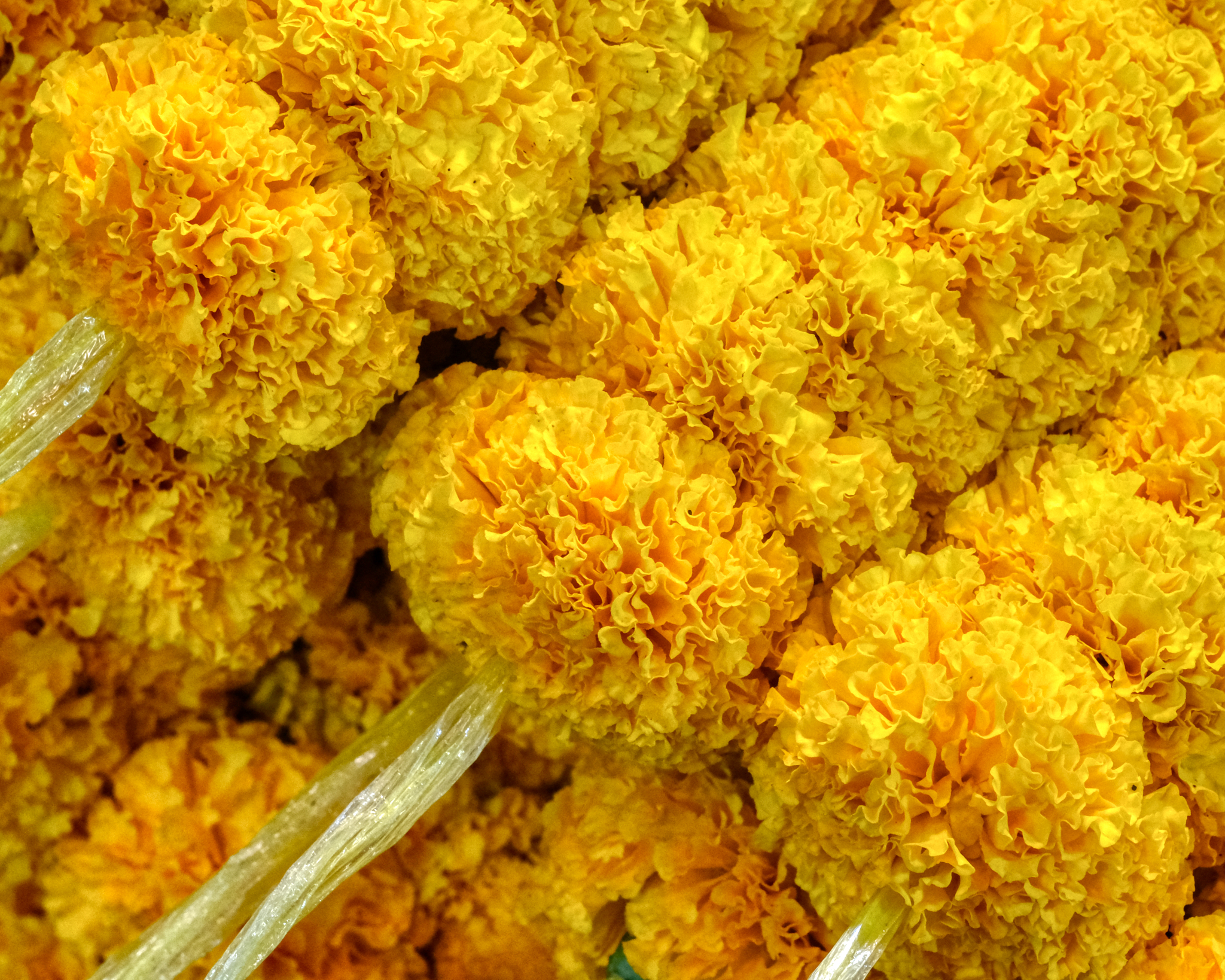 Marigold flowers sold on nylon strings.
Marigold flowers sold on nylon strings.
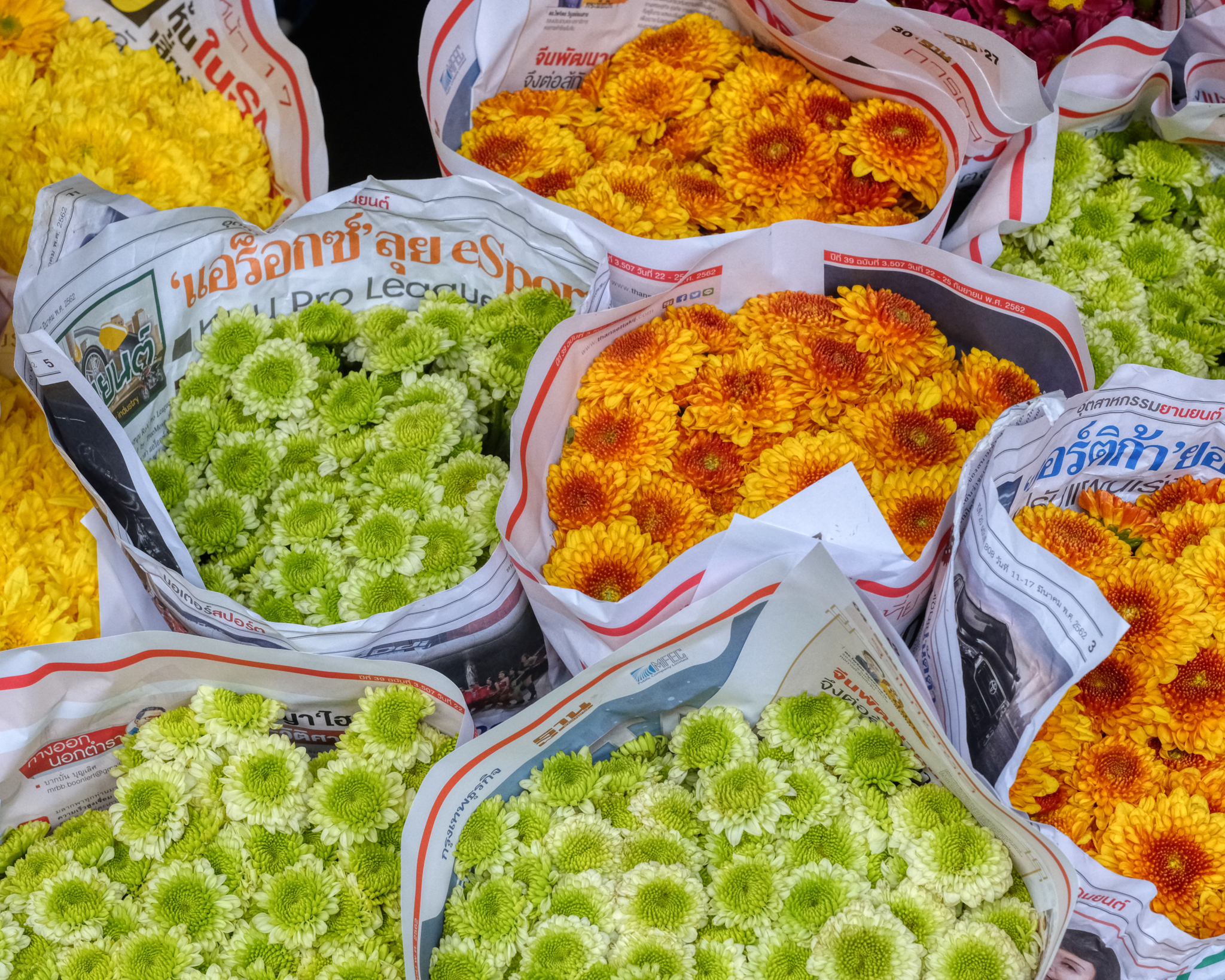 Such a beautiful and colorful array . . .
Such a beautiful and colorful array . . .
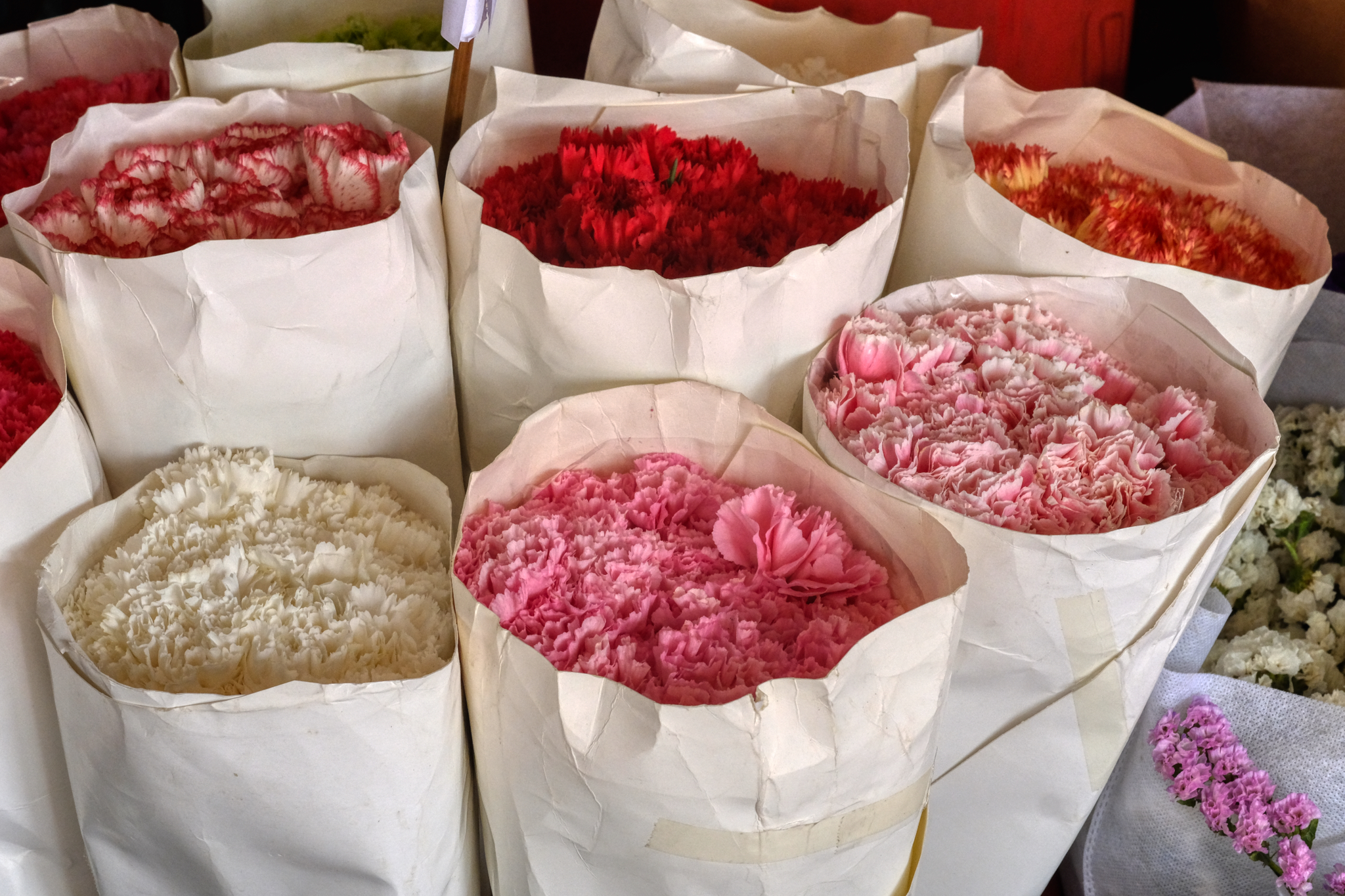 Although the light in the market was not ideal for flower photography, every once in a while there was magic light!
Although the light in the market was not ideal for flower photography, every once in a while there was magic light!
 Pretty little things!
Pretty little things!
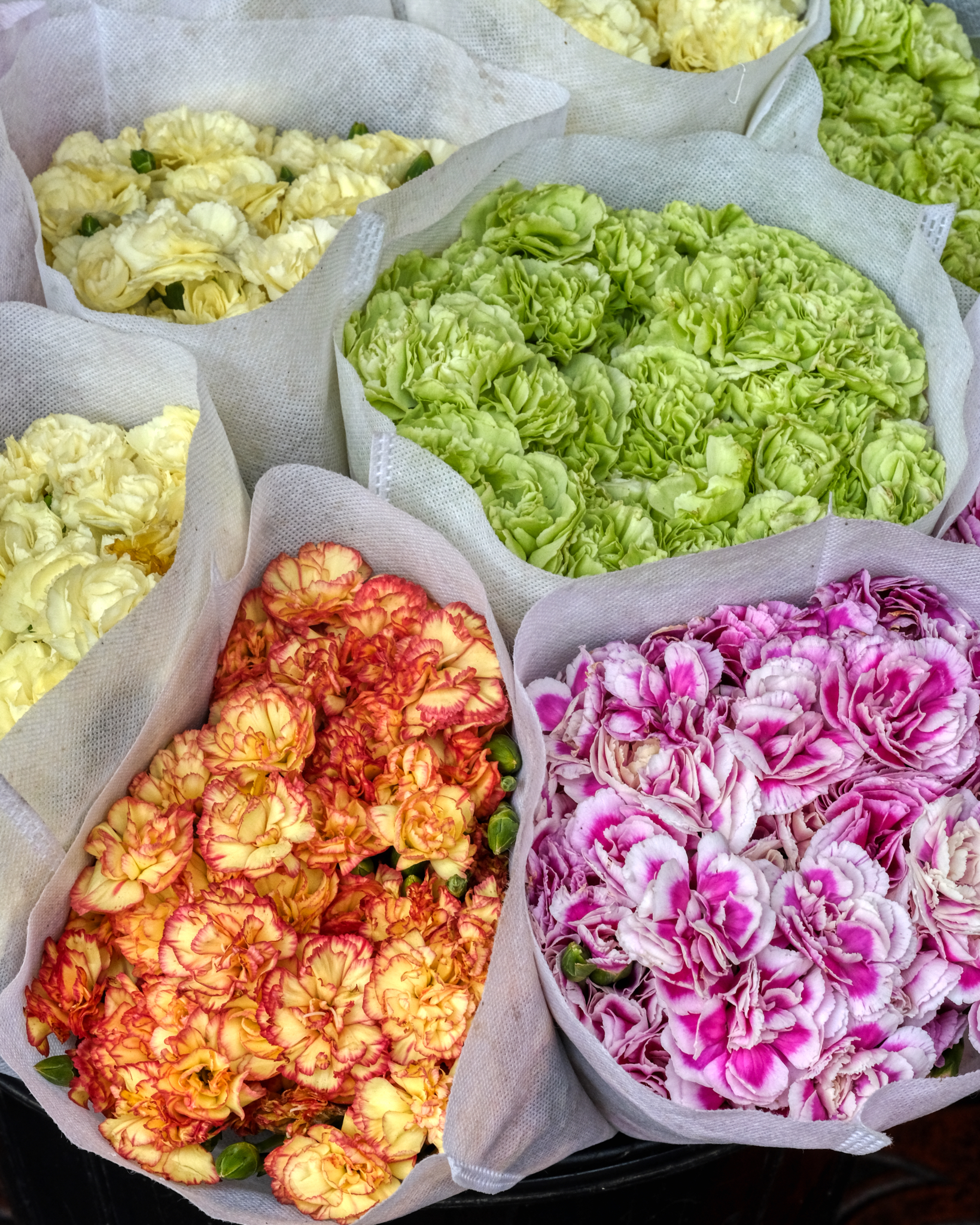 Bunches and bunches of flowers.
Bunches and bunches of flowers.
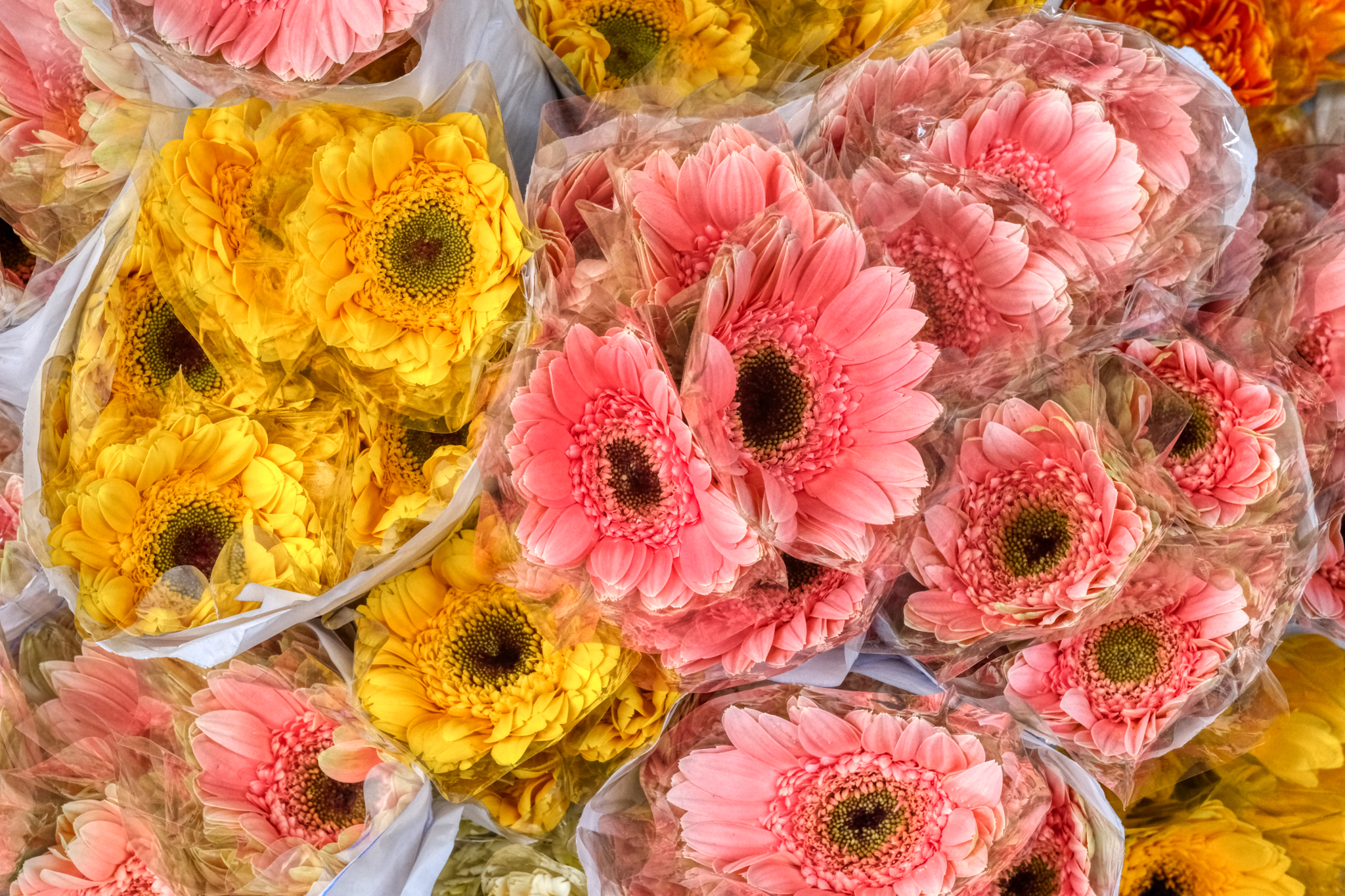 And bundles and bundles of beautiful flowers.
And bundles and bundles of beautiful flowers.
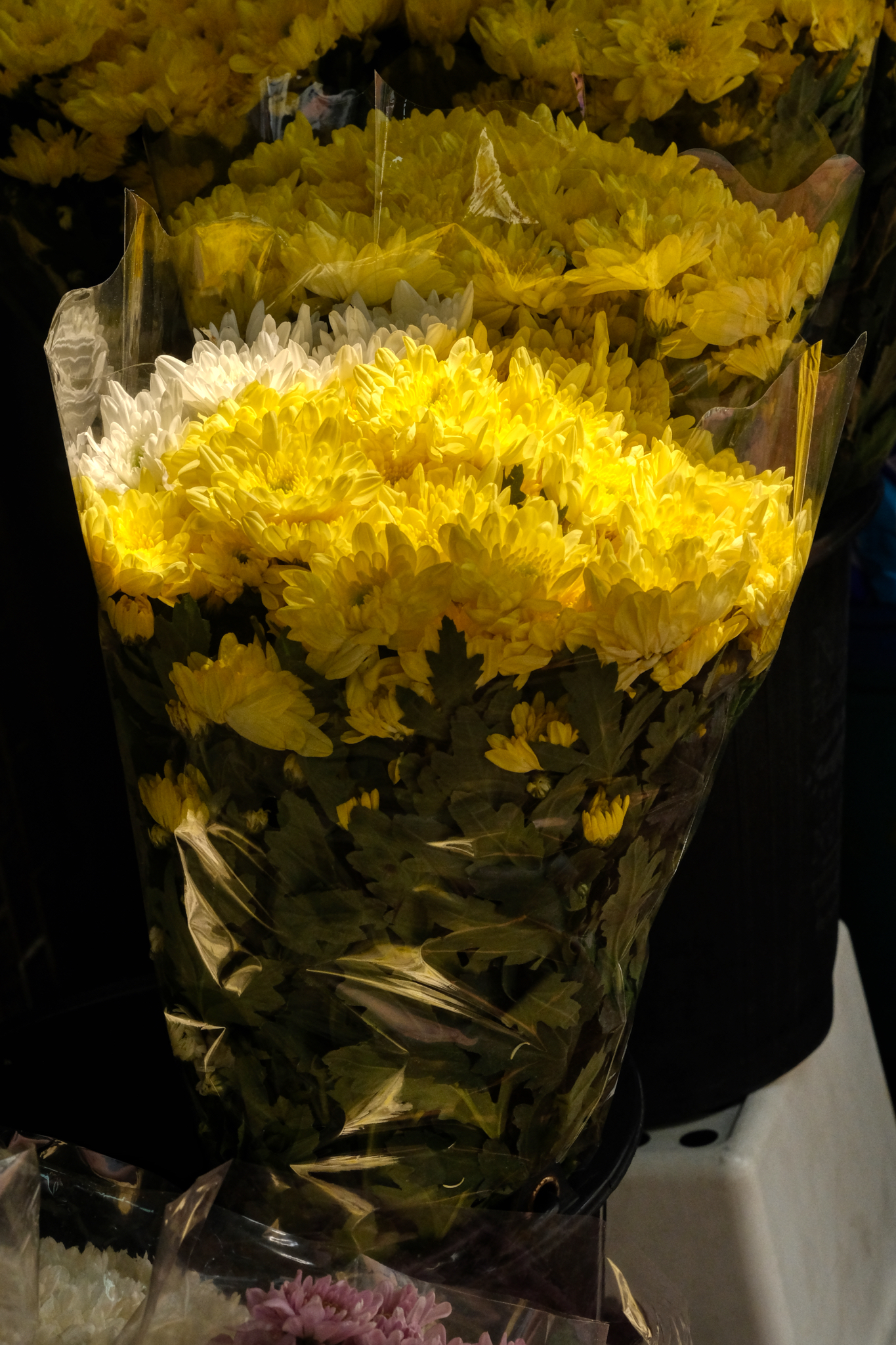 And this extraordinary bouquet!
And this extraordinary bouquet!
 Individually hand-wrapped chrysanthemums.
Individually hand-wrapped chrysanthemums.
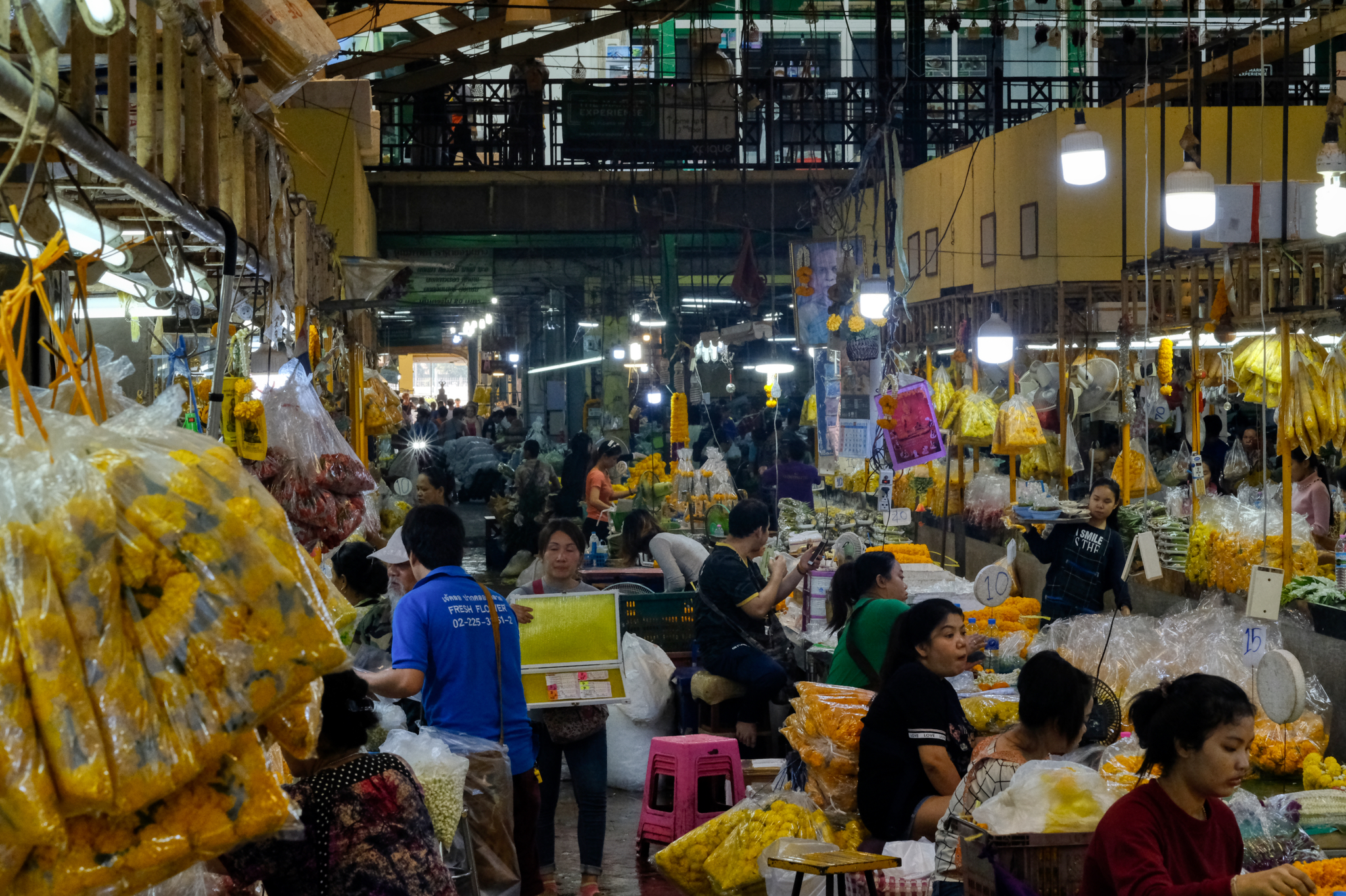 Inside the flower market. This was at around 9:30am and lots of the stalls were already closed . . . sold out.
Inside the flower market. This was at around 9:30am and lots of the stalls were already closed . . . sold out.
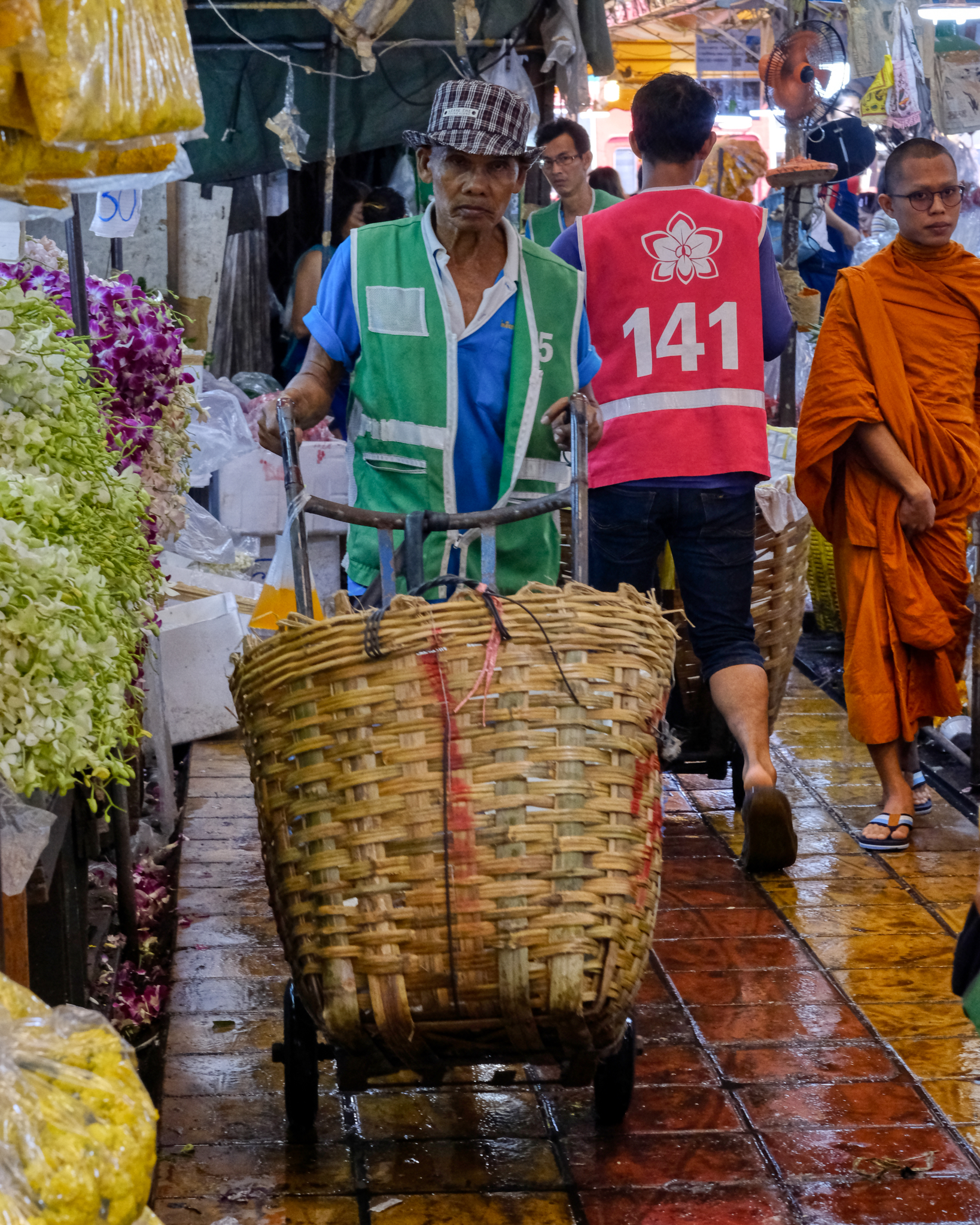 A market draymen moving purchases out of the market to waiting tuk-tuk delivery.
A market draymen moving purchases out of the market to waiting tuk-tuk delivery.
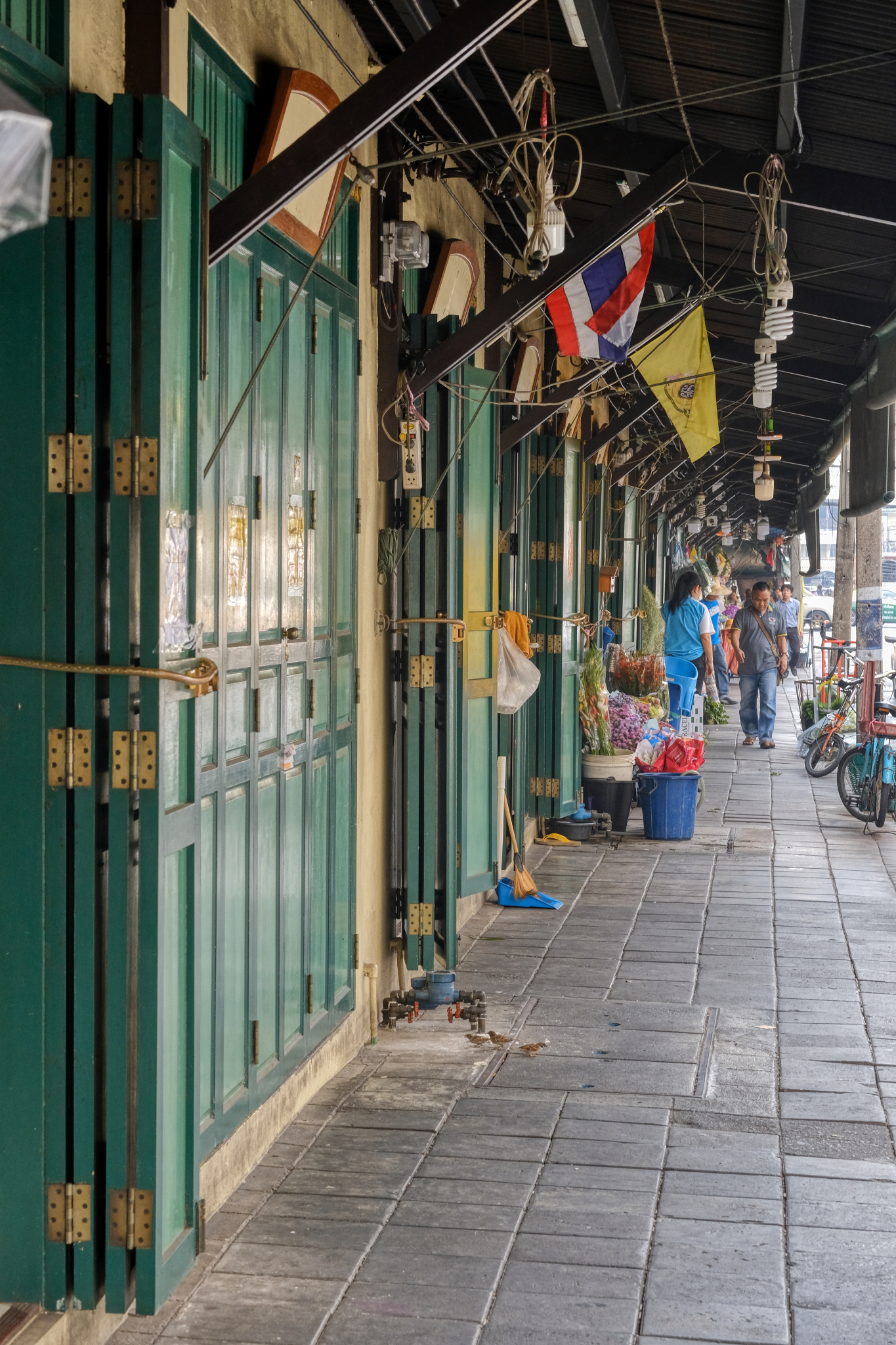 The area around the flower is made up of many rows of old shop houses.
The area around the flower is made up of many rows of old shop houses.
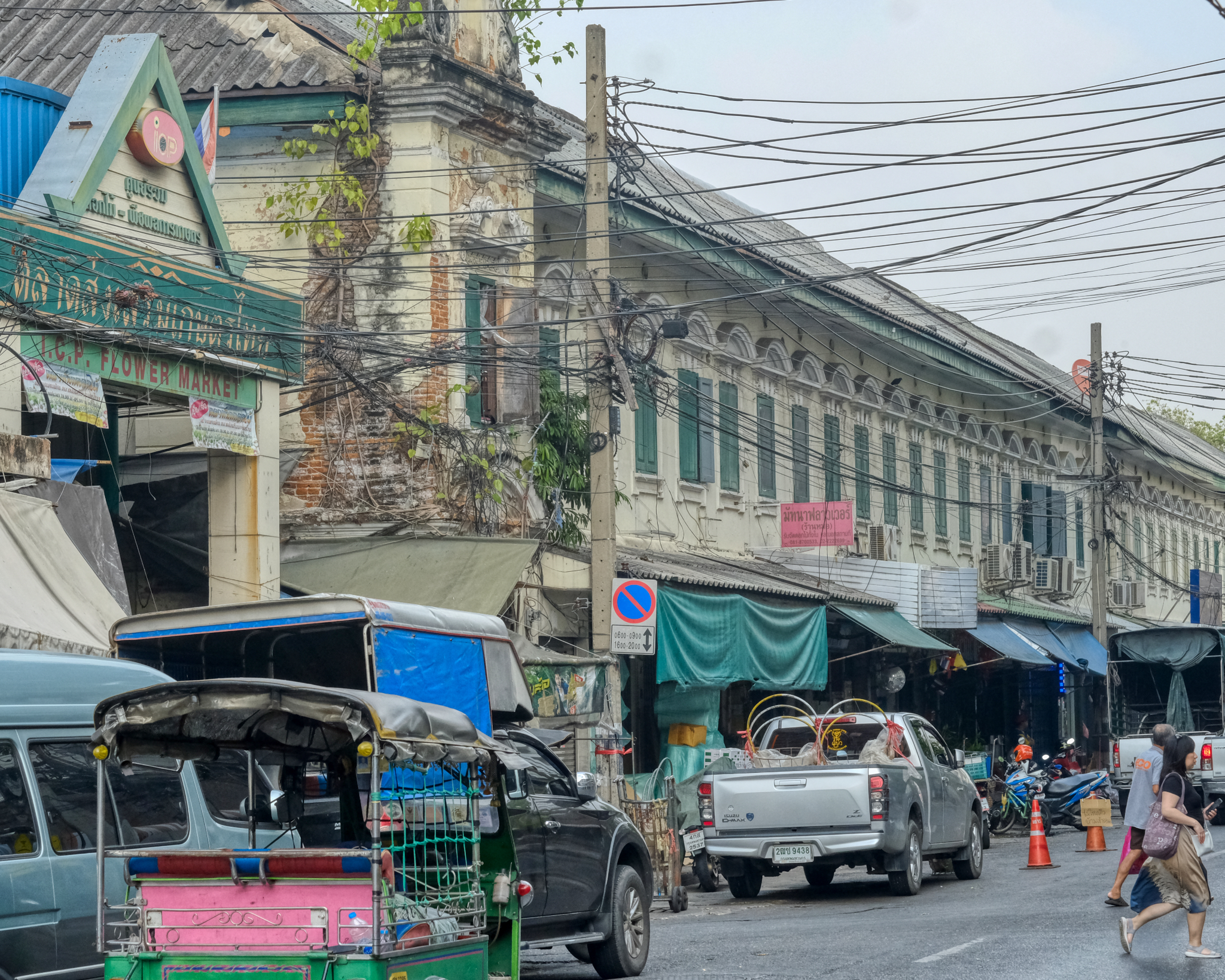 The flower market is in a very old part of Bangkok, not far from the Chao River and just north of the Chinatown district.
The flower market is in a very old part of Bangkok, not far from the Chao River and just north of the Chinatown district.
 Remnants of Old Bangkok can be seen in and among the complexity of the streets.
Remnants of Old Bangkok can be seen in and among the complexity of the streets.
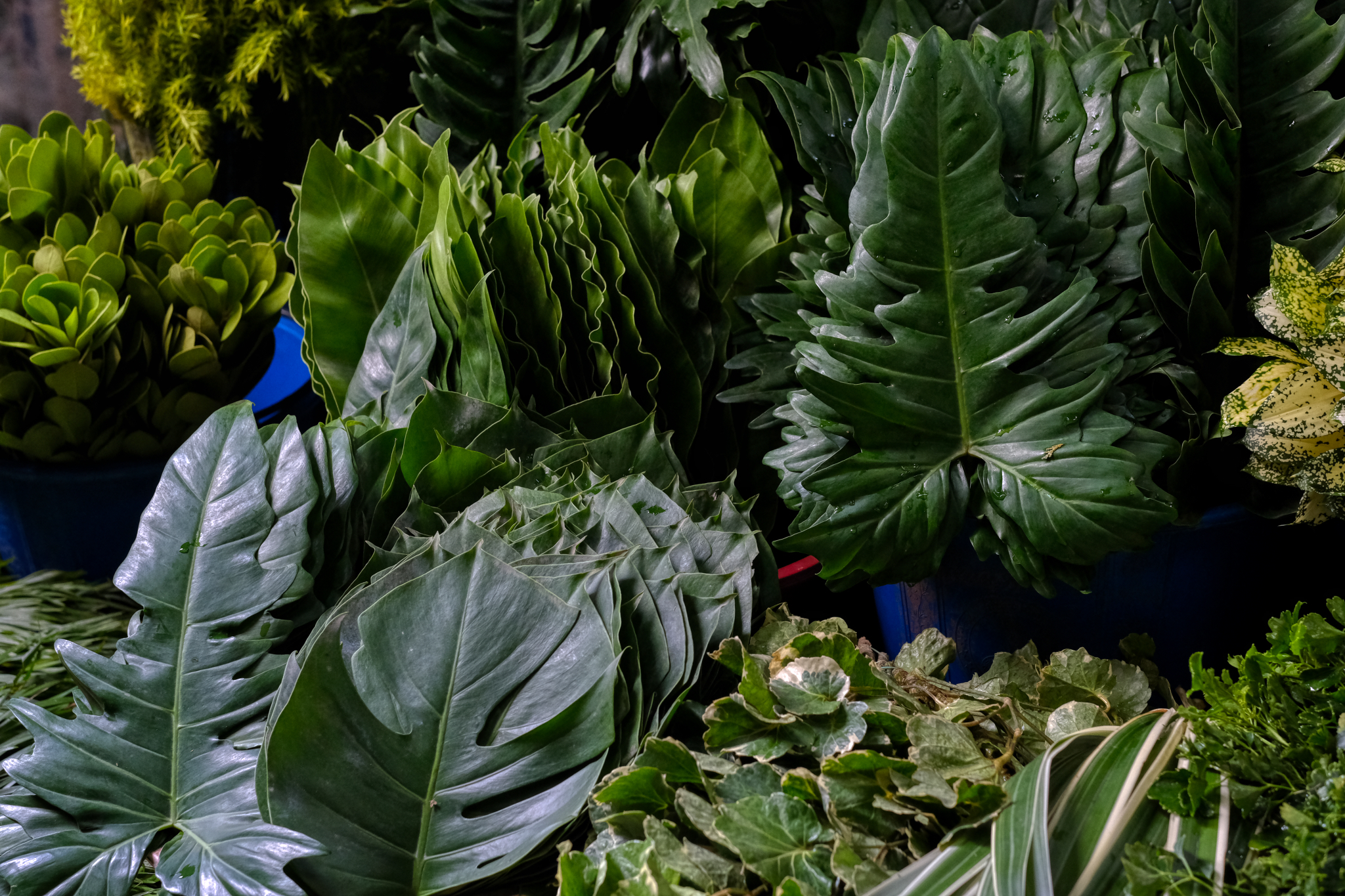 Not only flowers . . . but everything a creative flower arranger might want to employ in a tropical flower arrangement!
Not only flowers . . . but everything a creative flower arranger might want to employ in a tropical flower arrangement!
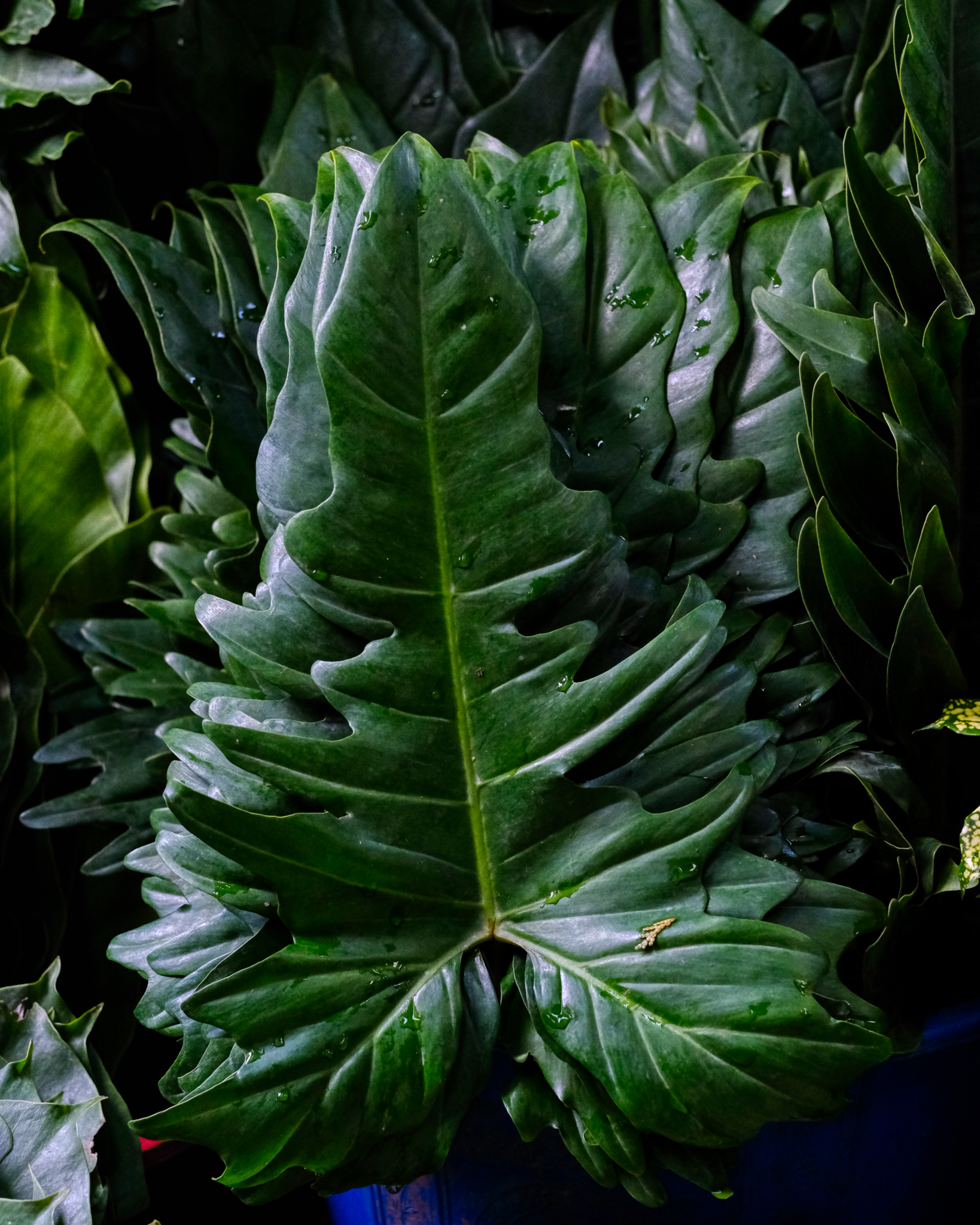 Existentially beautiful tropical leaf.
Existentially beautiful tropical leaf.
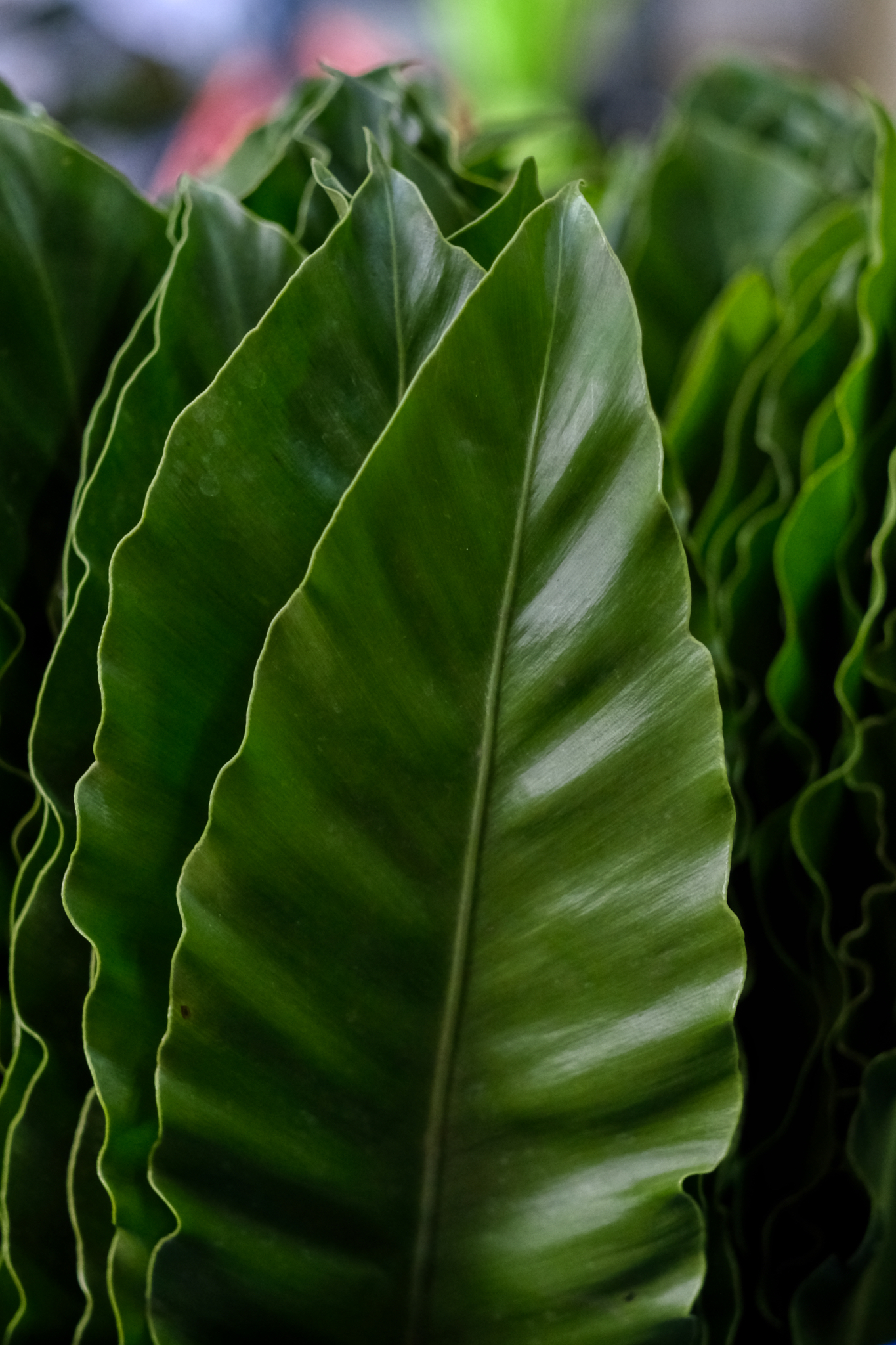 Gorgeous.
Gorgeous.
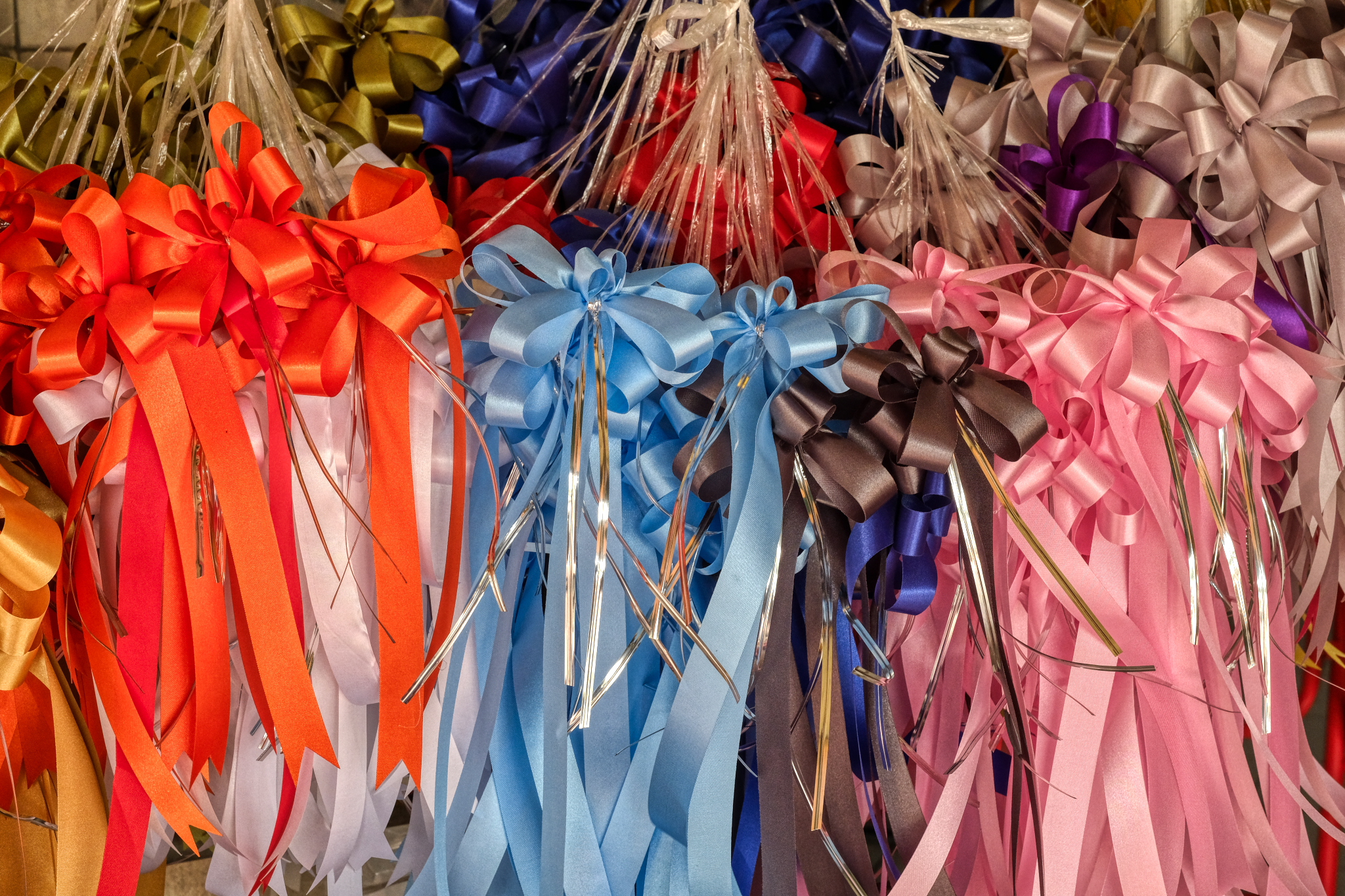 And ribbons and bows for that special wedding or graduation event.
And ribbons and bows for that special wedding or graduation event.
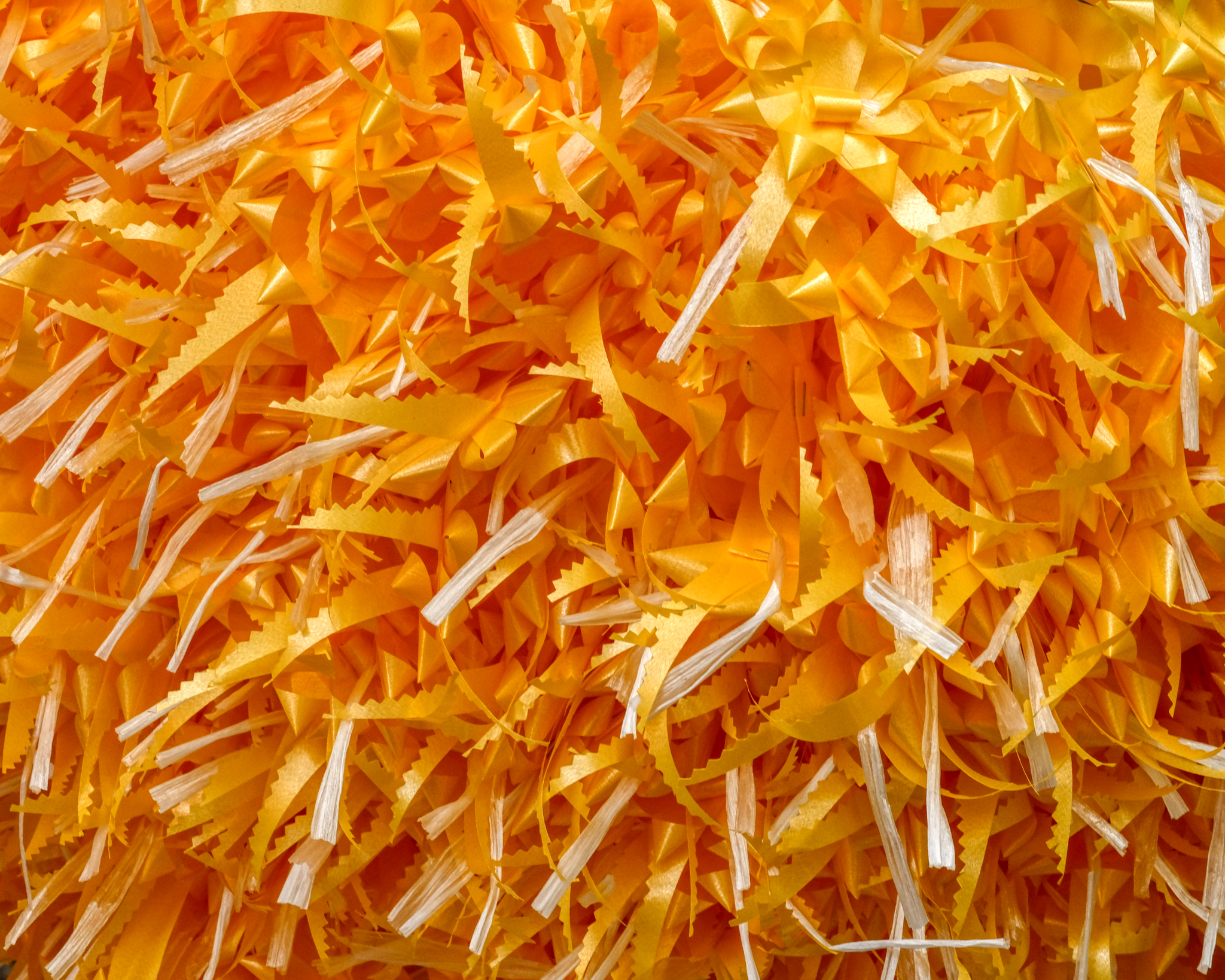 A complete flower arranger super store!
A complete flower arranger super store!
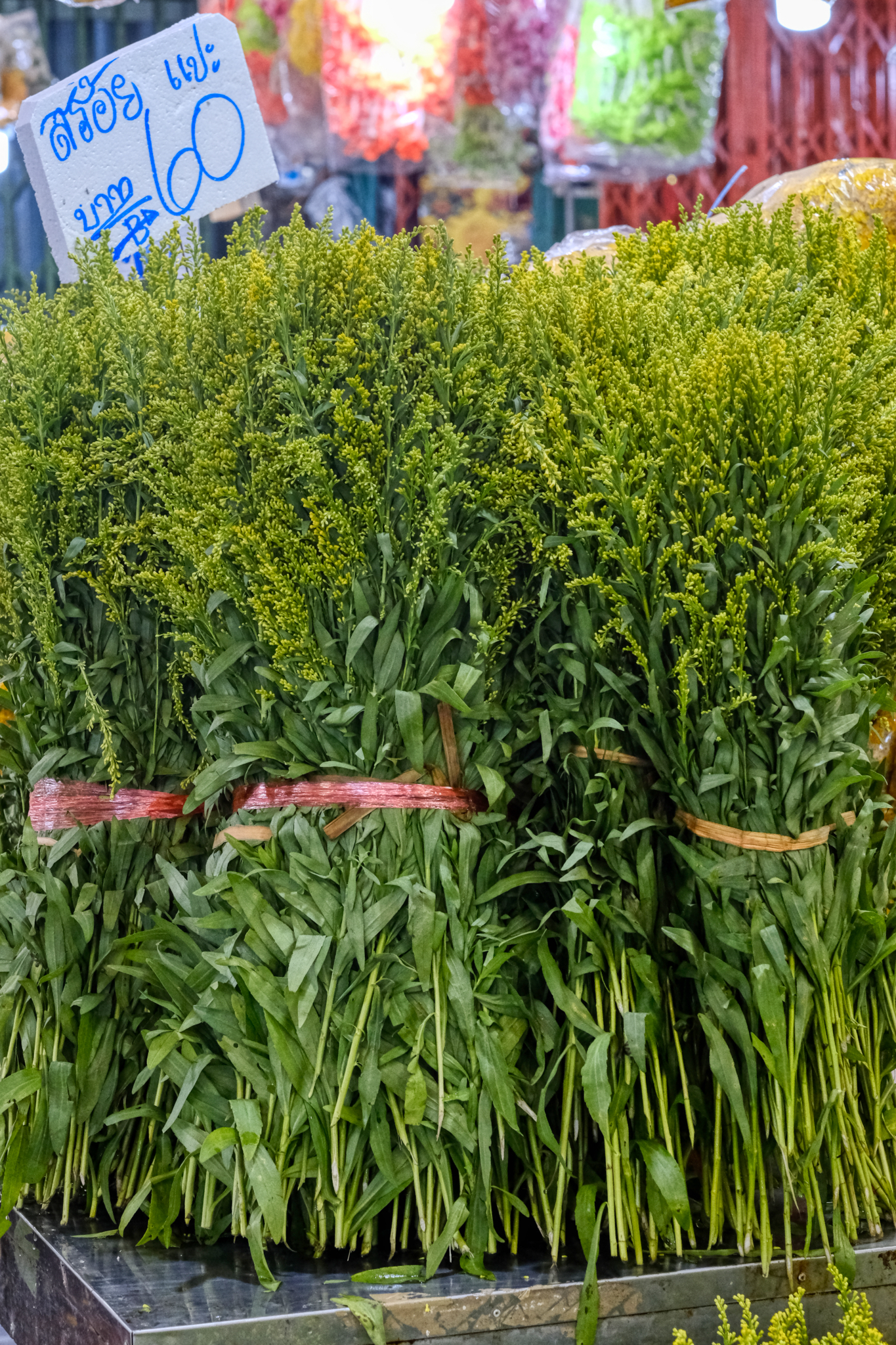 Need some green sprigs with little buds for your arrangement . . . sure, they have them.
Need some green sprigs with little buds for your arrangement . . . sure, they have them.
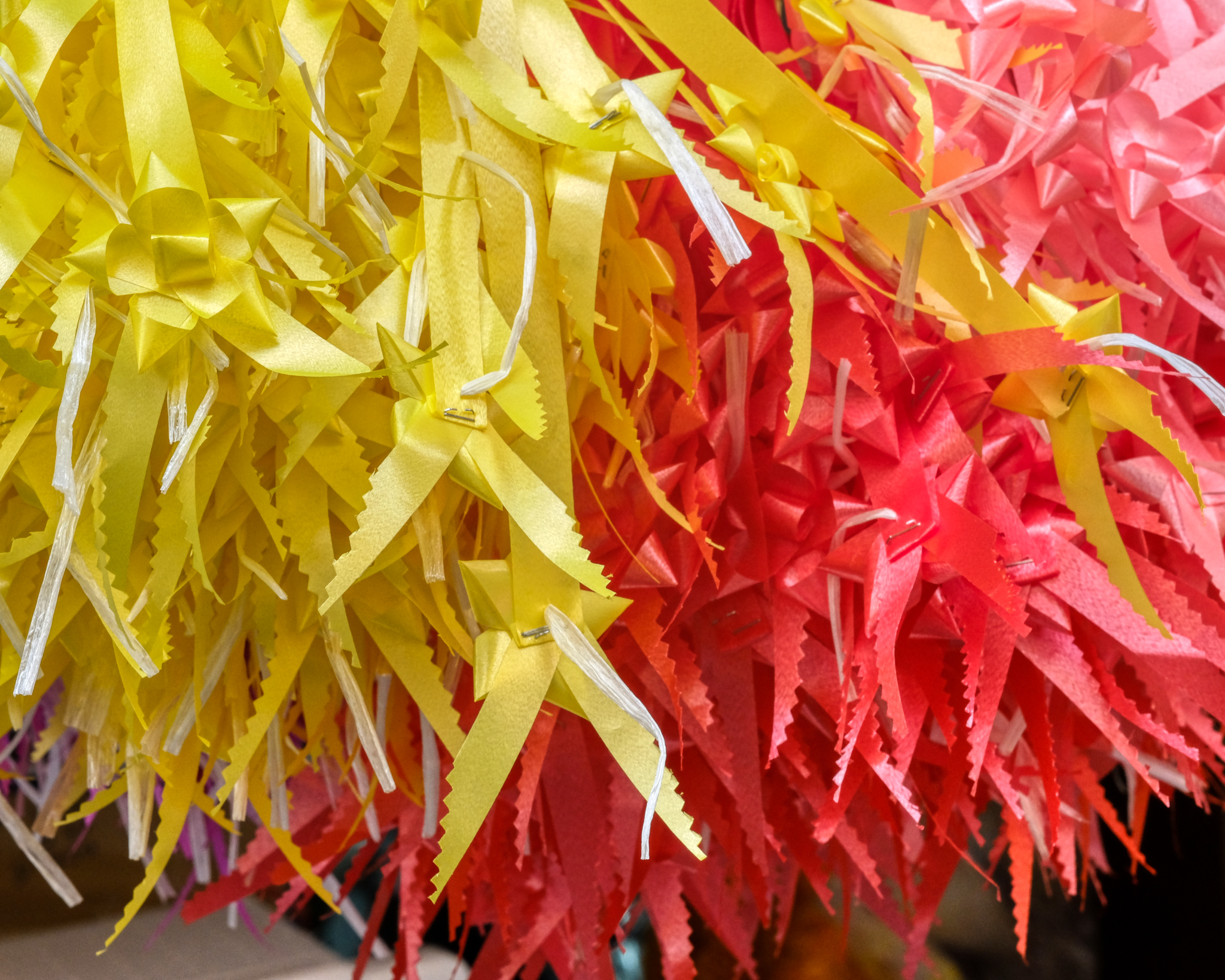 And ribbons and bows . . .
And ribbons and bows . . .
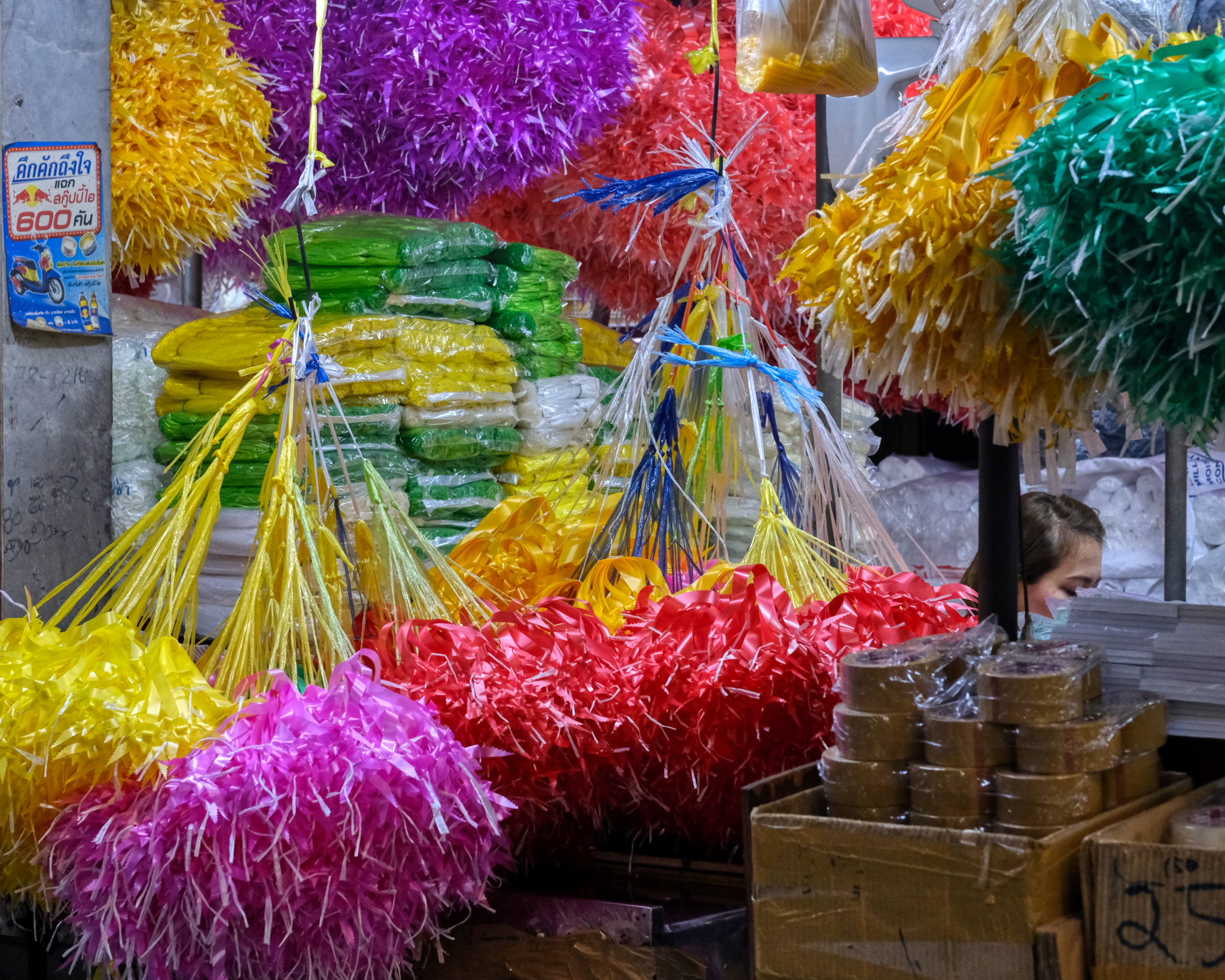 . . . bunches and bunches of ribbons and bows.
. . . bunches and bunches of ribbons and bows.
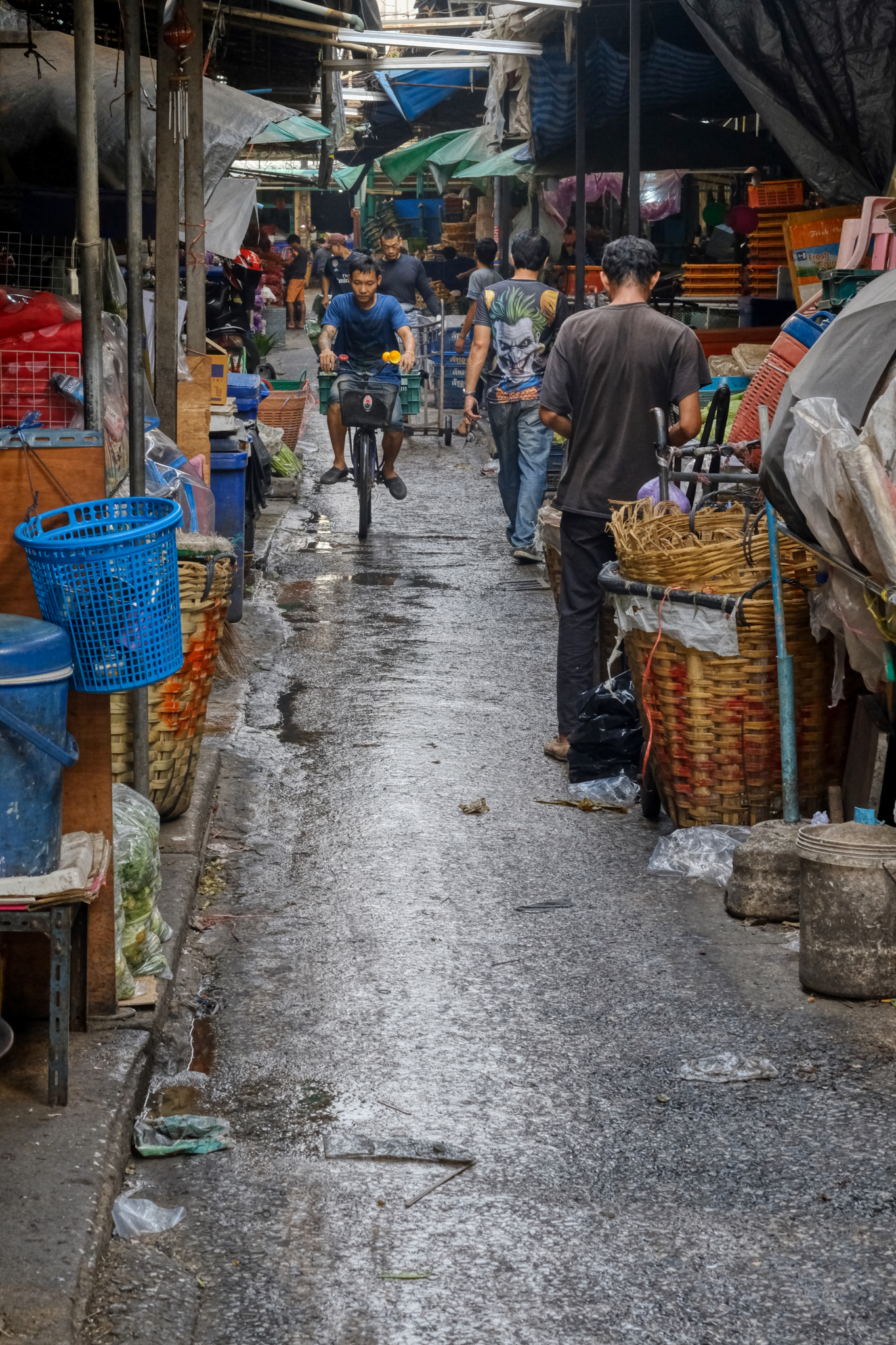 The back side of the flower market blends into a traditional, and common, Bangkok "wet market" -- a fresh fruit and vegetable market.
The back side of the flower market blends into a traditional, and common, Bangkok "wet market" -- a fresh fruit and vegetable market.
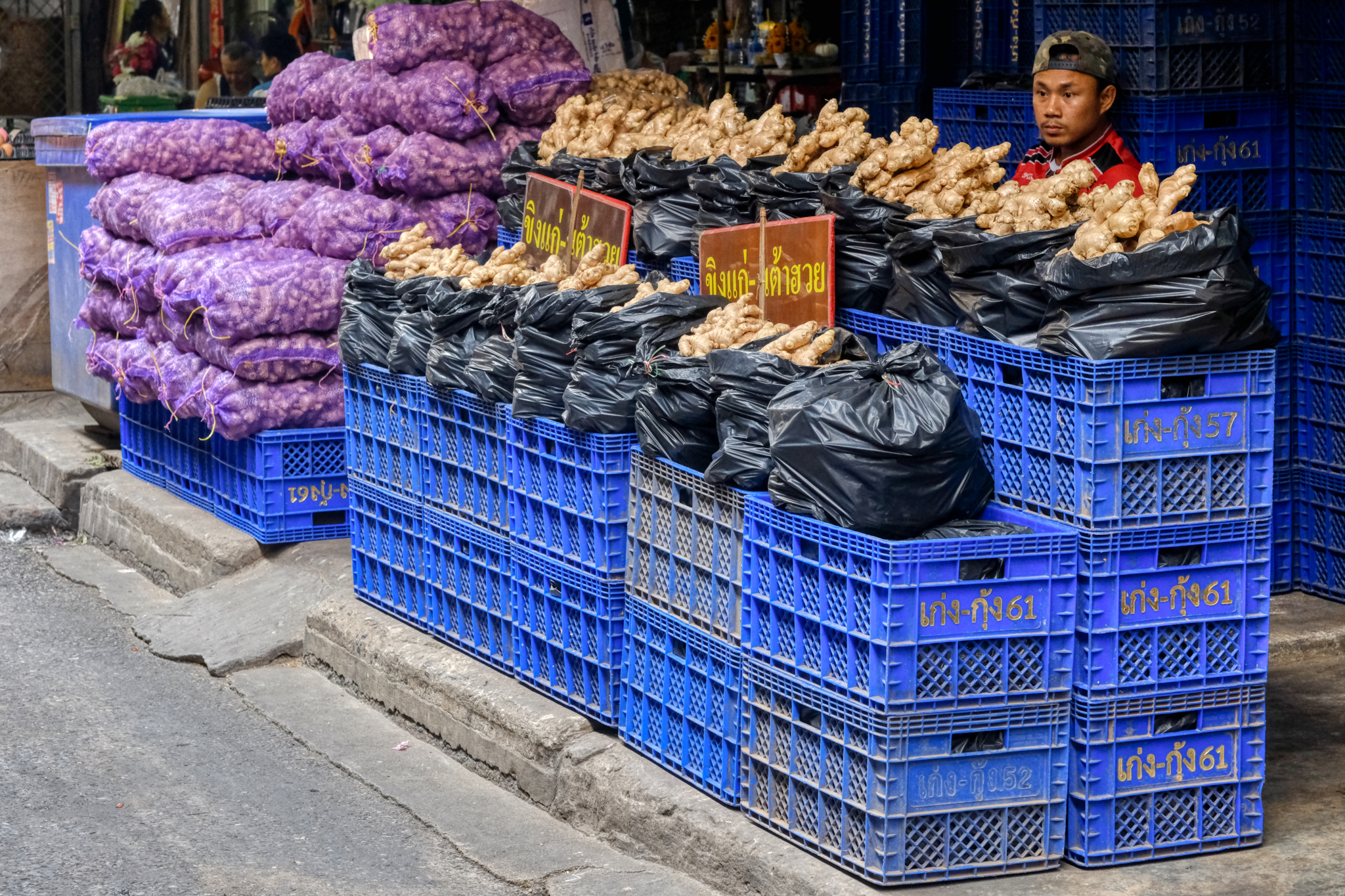 A ginger hawker's display.
A ginger hawker's display.
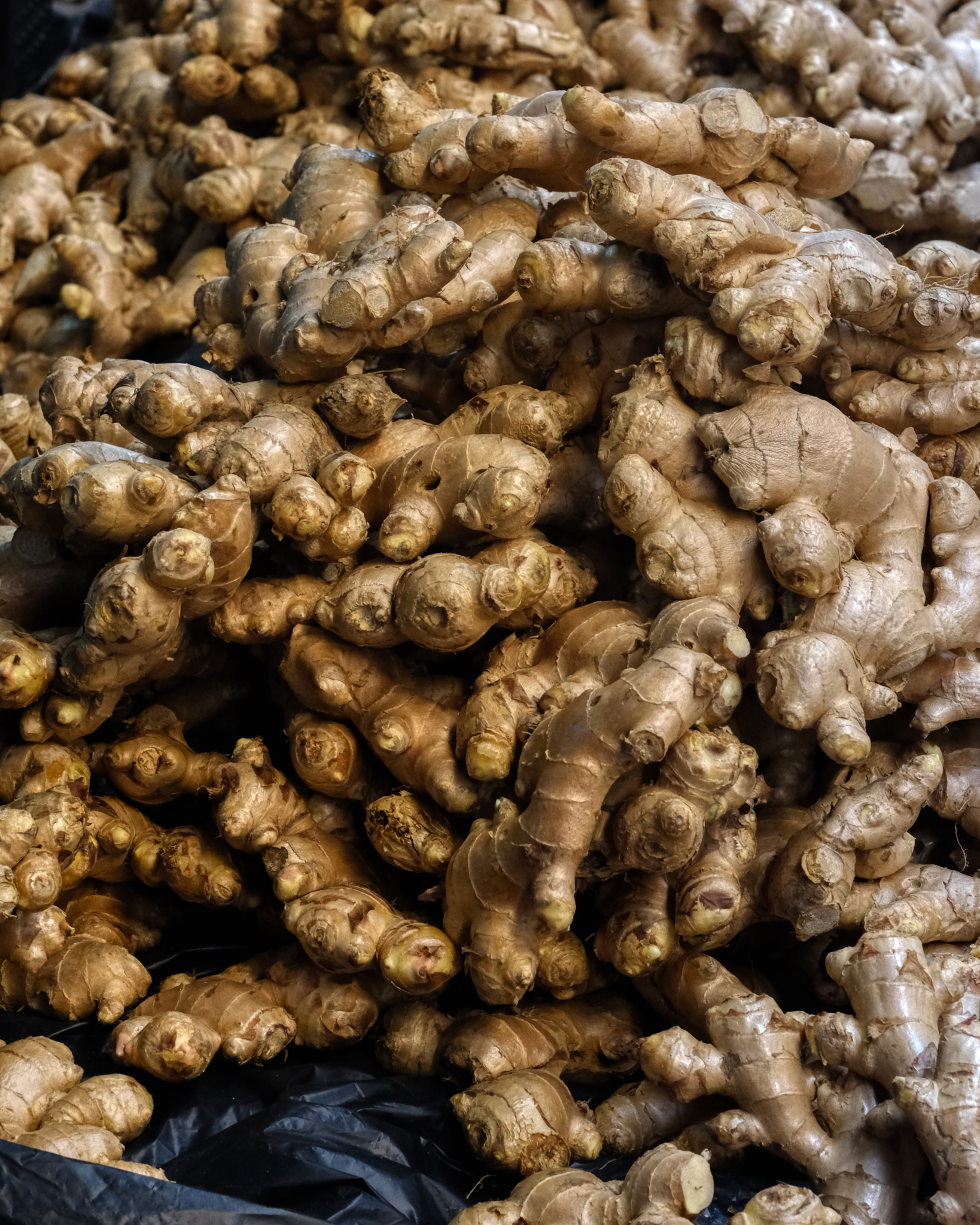 Beautiful ginger. I love ginger . . . and many Thai dishes are made with ginger . . . especially Thai desserts, my favorite.
Beautiful ginger. I love ginger . . . and many Thai dishes are made with ginger . . . especially Thai desserts, my favorite.
 Purple net sacks full of potatoes.
Purple net sacks full of potatoes.
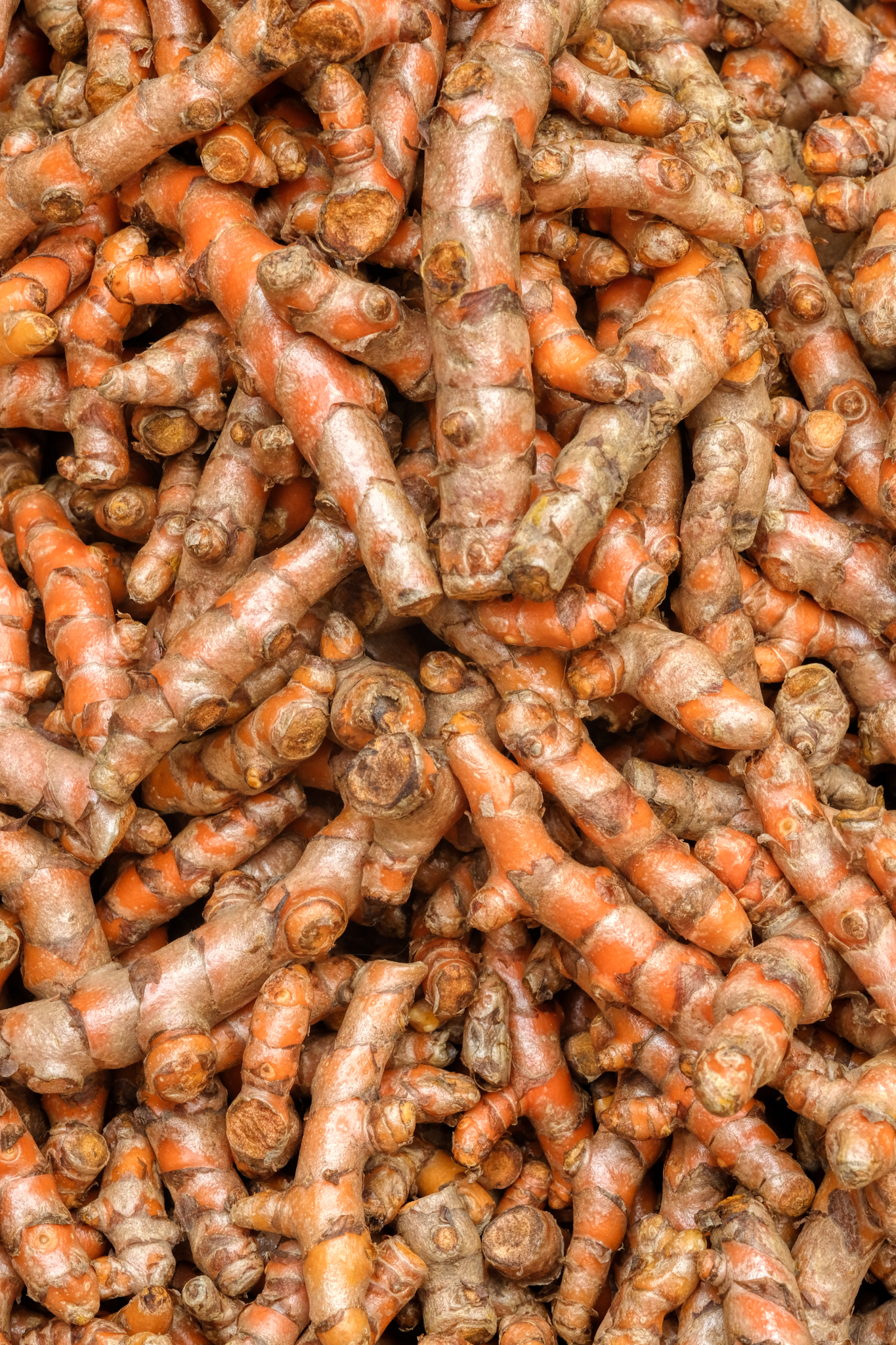 A stack of spice root.
A stack of spice root.
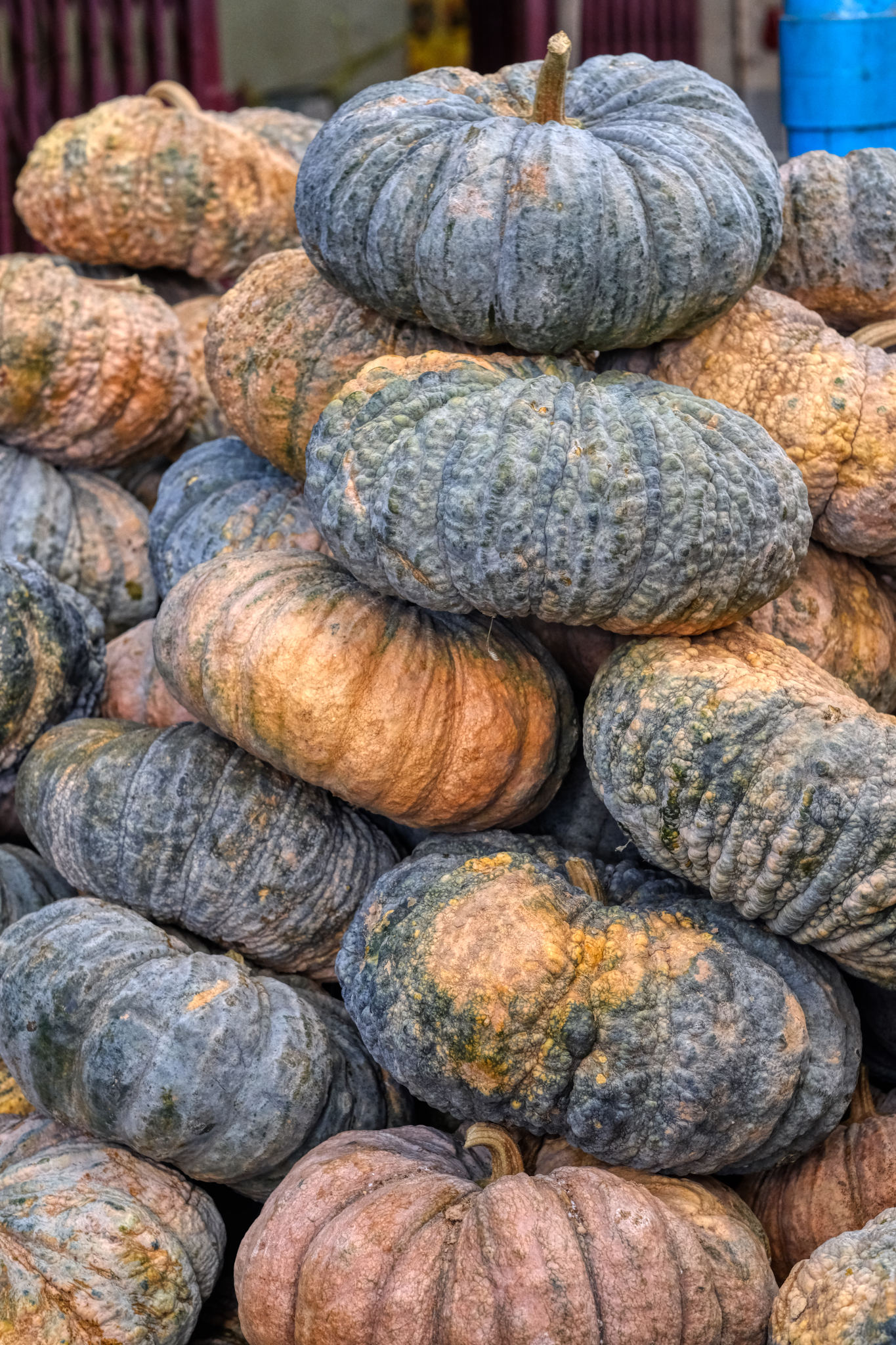 A stack of Thai squash ("fucktong" in Thai).
A stack of Thai squash ("fucktong" in Thai).
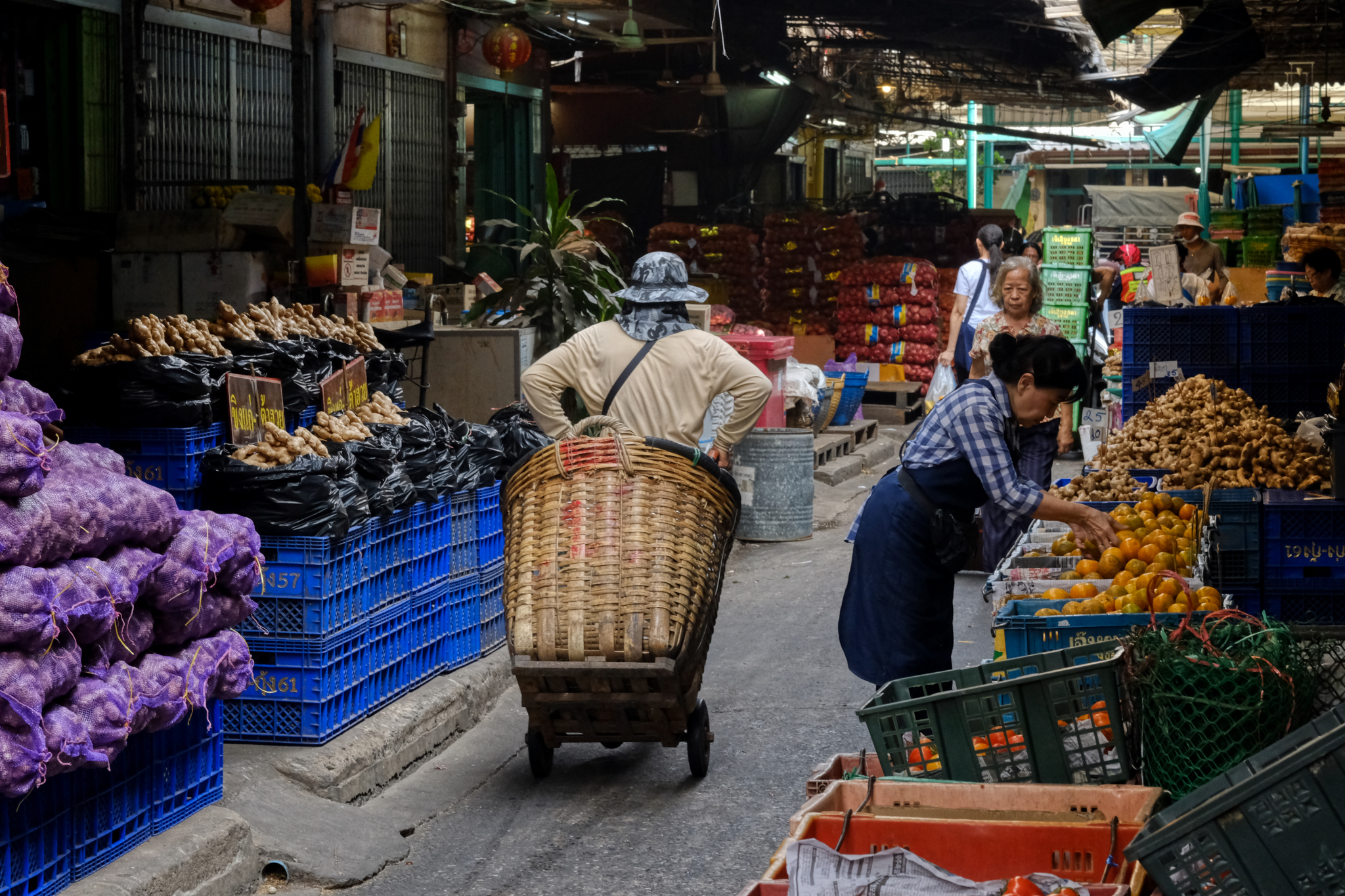 A lot of activity in the vegetable wholesale market.
A lot of activity in the vegetable wholesale market.
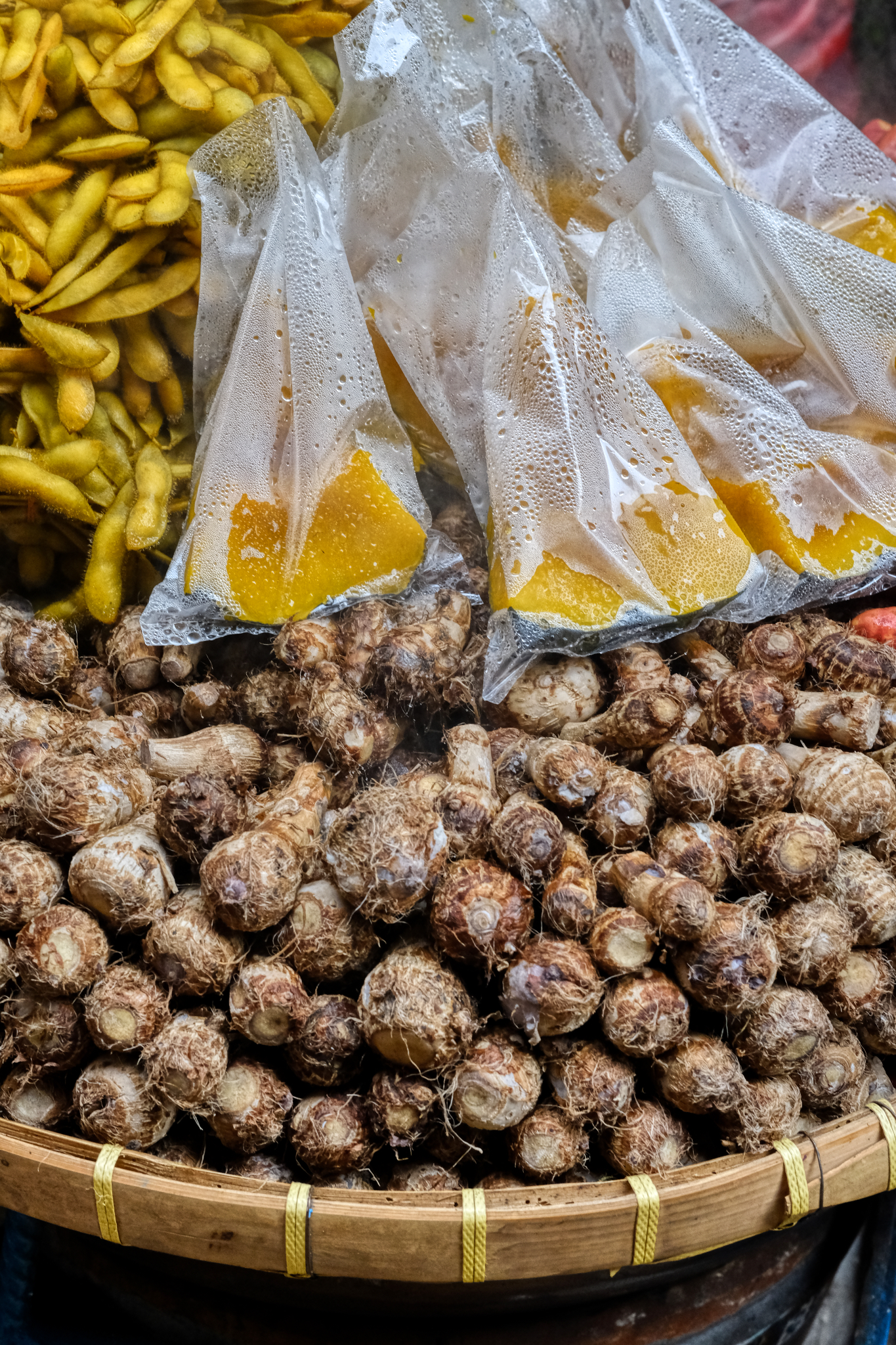 Unique ingredients are what make Thai food so tasty.
Unique ingredients are what make Thai food so tasty.
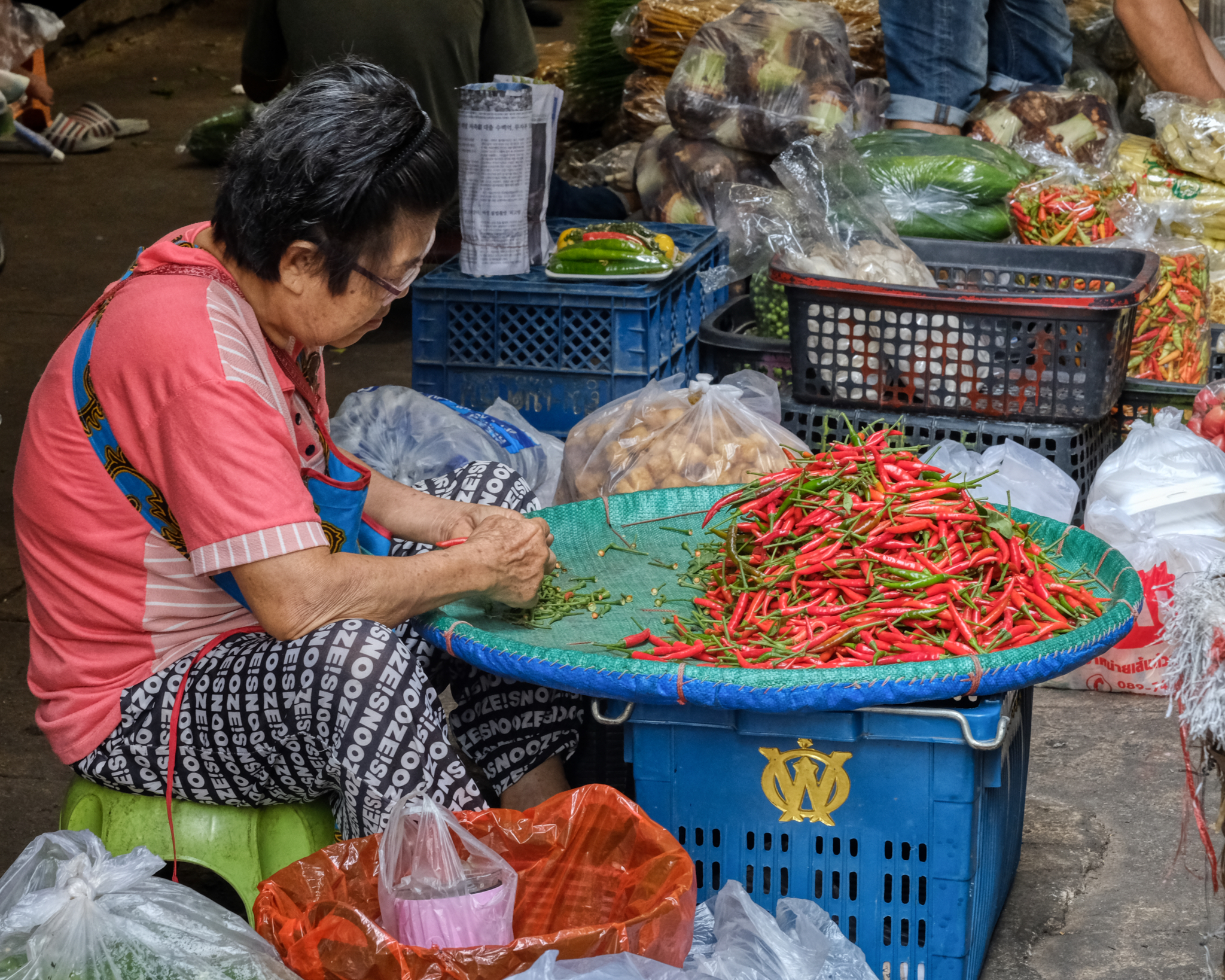 A market chili sorter . . . she did not smell like flowers!!!
A market chili sorter . . . she did not smell like flowers!!!
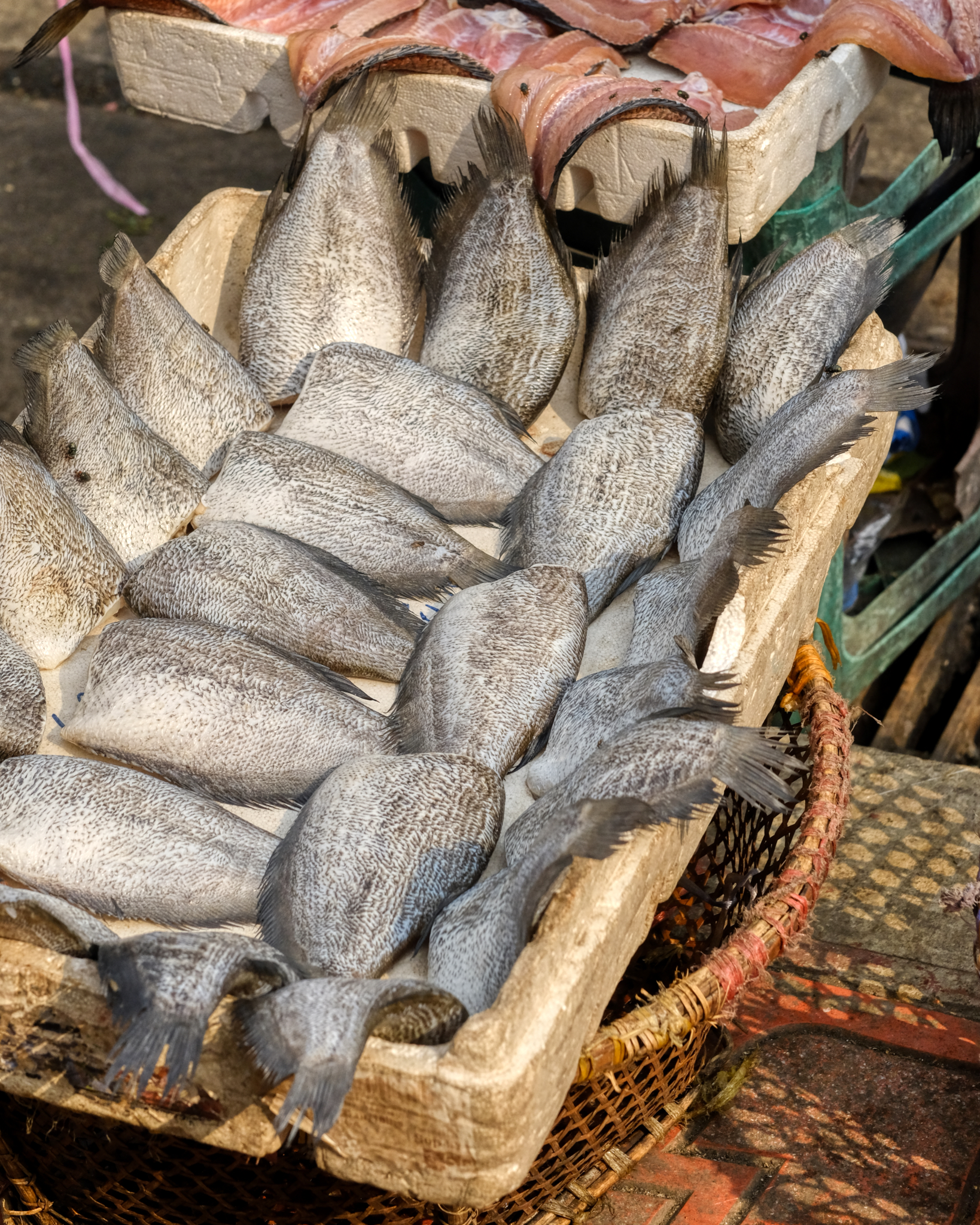 A small sale of fish . . . no doubt intended for the market workers to take home for dinner.
A small sale of fish . . . no doubt intended for the market workers to take home for dinner.
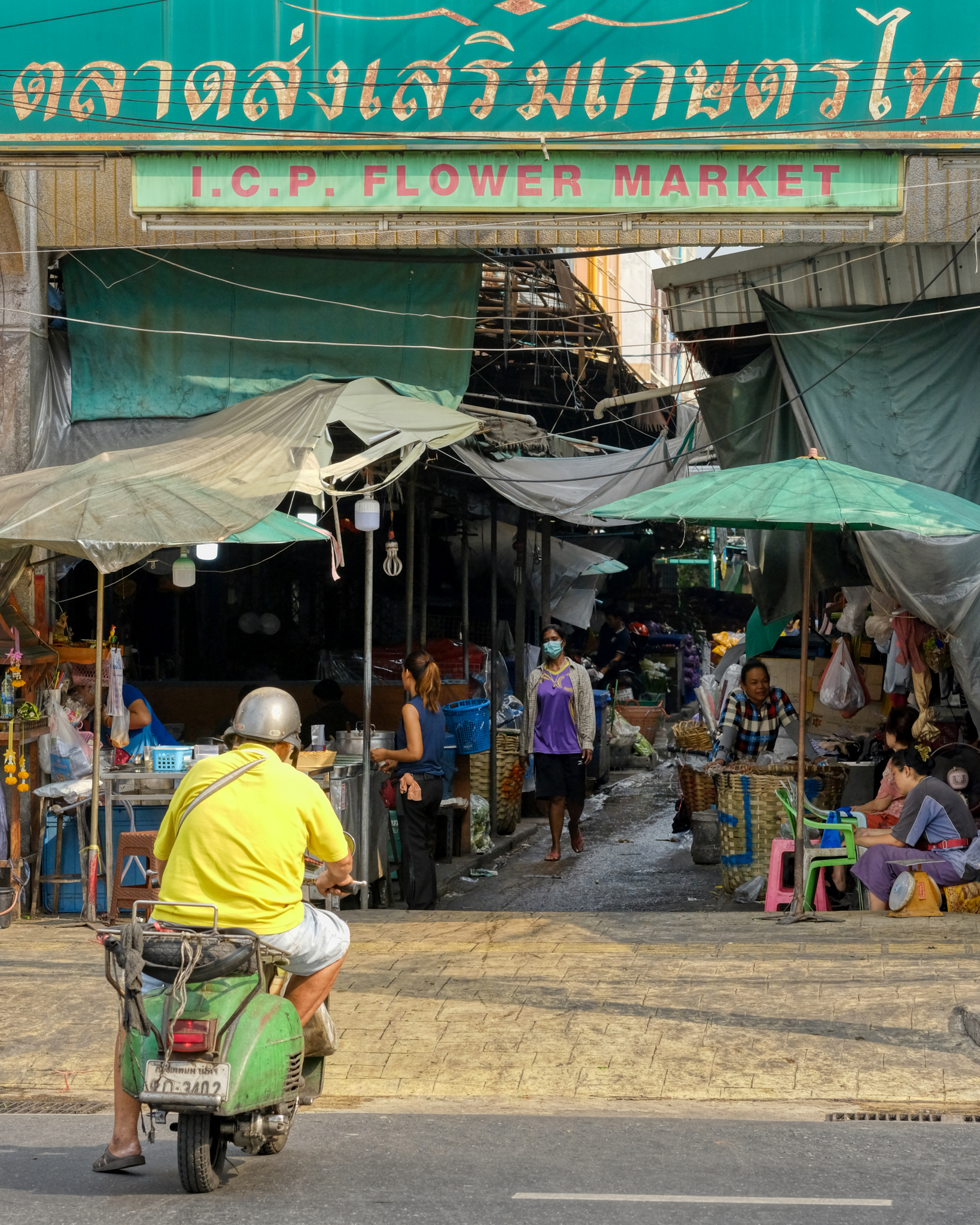 After three hours (!!) we finally stepped outside the markets.
After three hours (!!) we finally stepped outside the markets.
 Loading up the produce . . . outside the market.
Loading up the produce . . . outside the market.
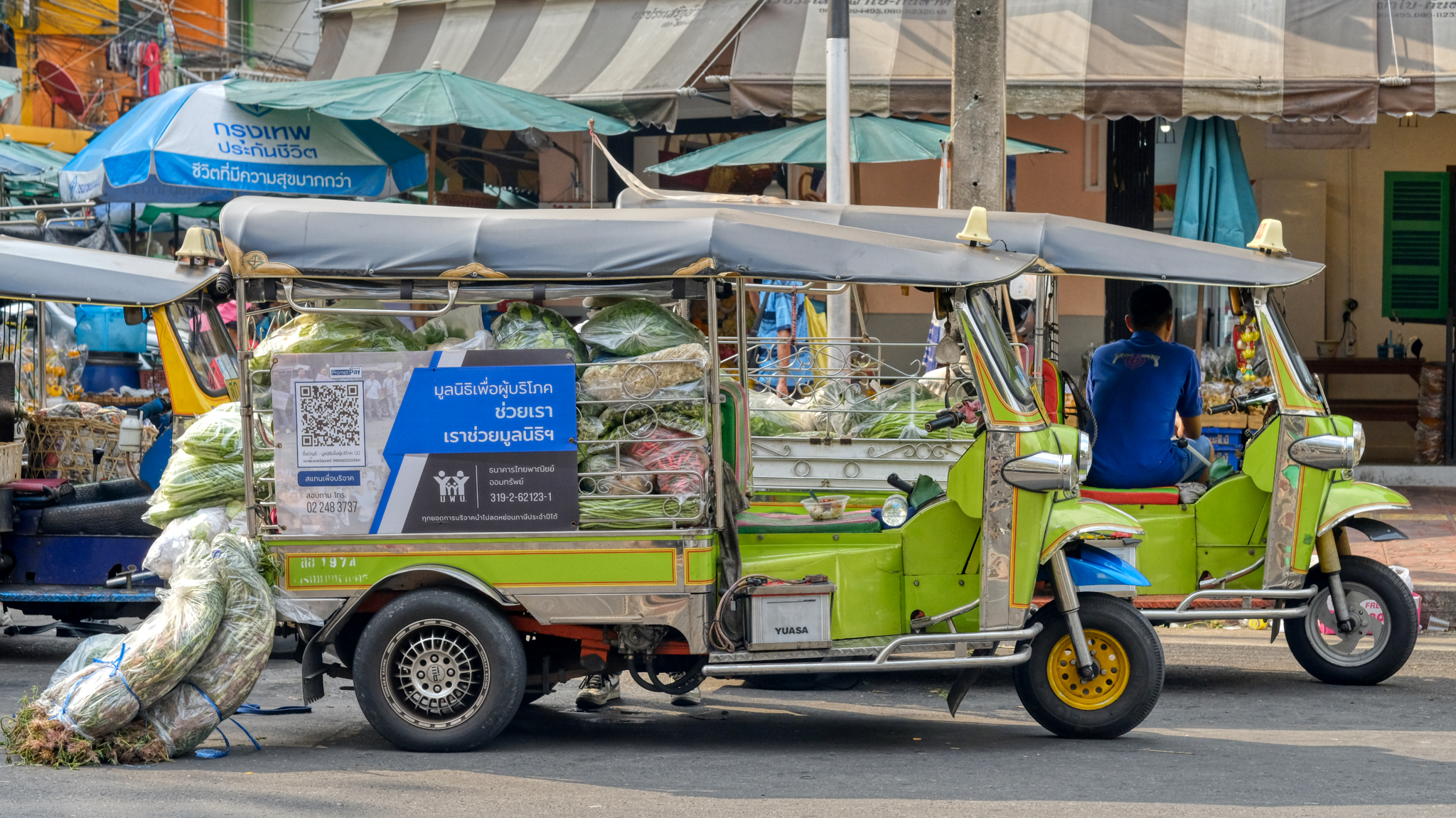 Produce all loaded in the tuk-tuk bound for a restaurent or small market somewhere in the city.
Produce all loaded in the tuk-tuk bound for a restaurent or small market somewhere in the city.
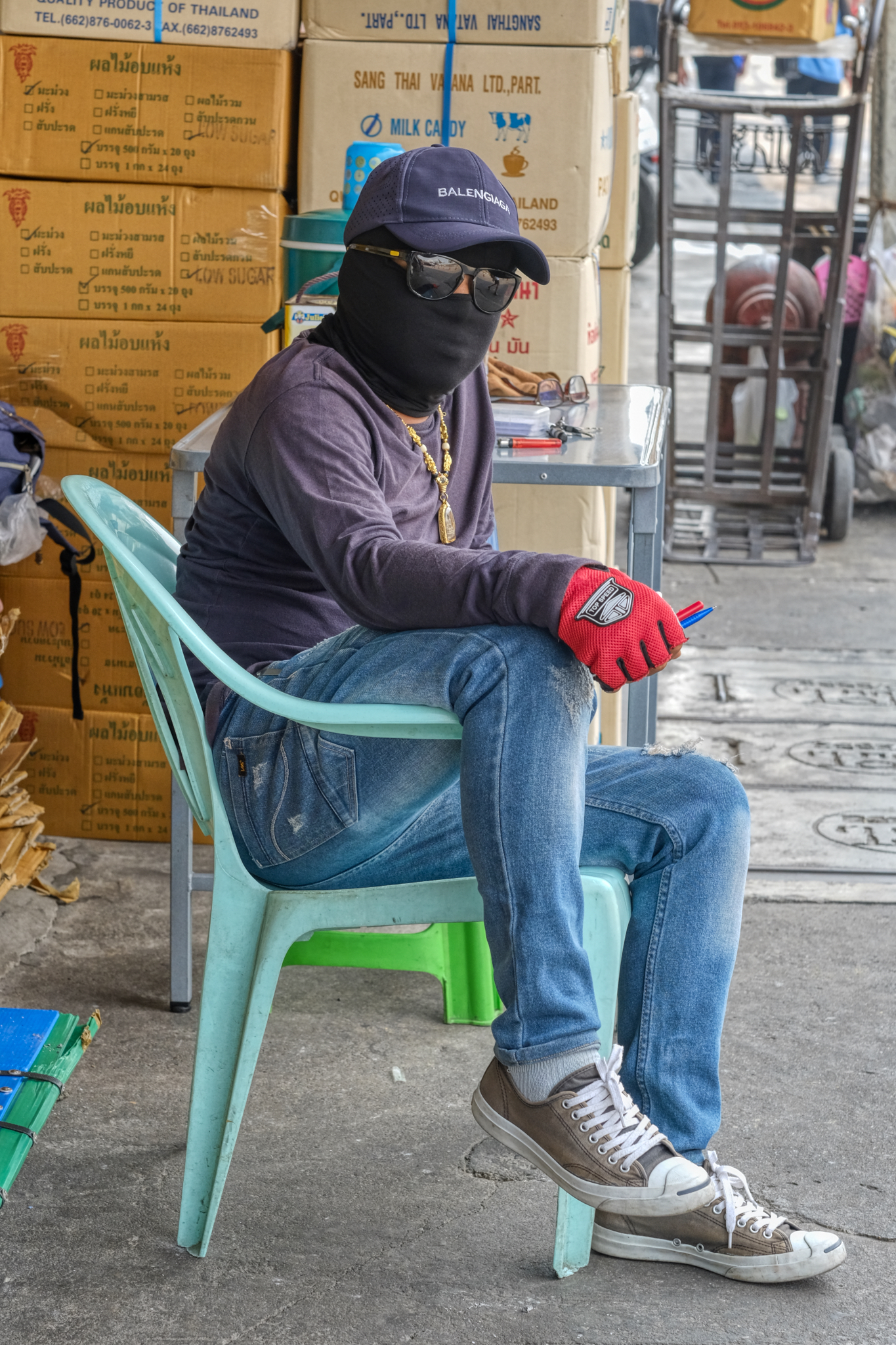 Who was that masked man? A flower market worker taking a break.
Who was that masked man? A flower market worker taking a break.
-------------------------------------------------
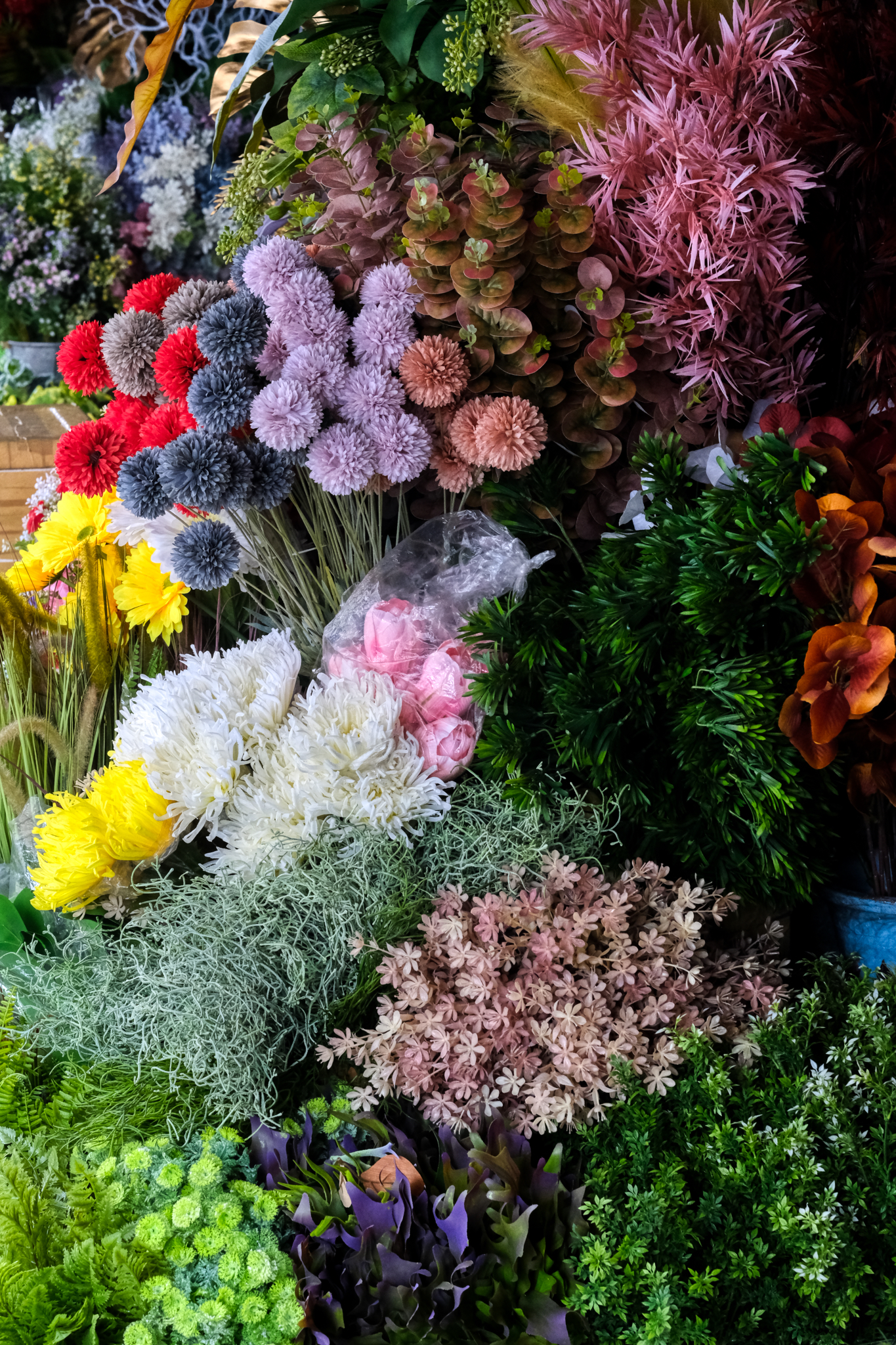 We walked a few blocks from the flower market to find a very good cup of coffee . . . and stumbled upon this shop selling "fake" plastic flowers: incredibly realistic plastic flowers. I guess some people get tired of having to buy fresh flowers over and over . . .
We walked a few blocks from the flower market to find a very good cup of coffee . . . and stumbled upon this shop selling "fake" plastic flowers: incredibly realistic plastic flowers. I guess some people get tired of having to buy fresh flowers over and over . . .